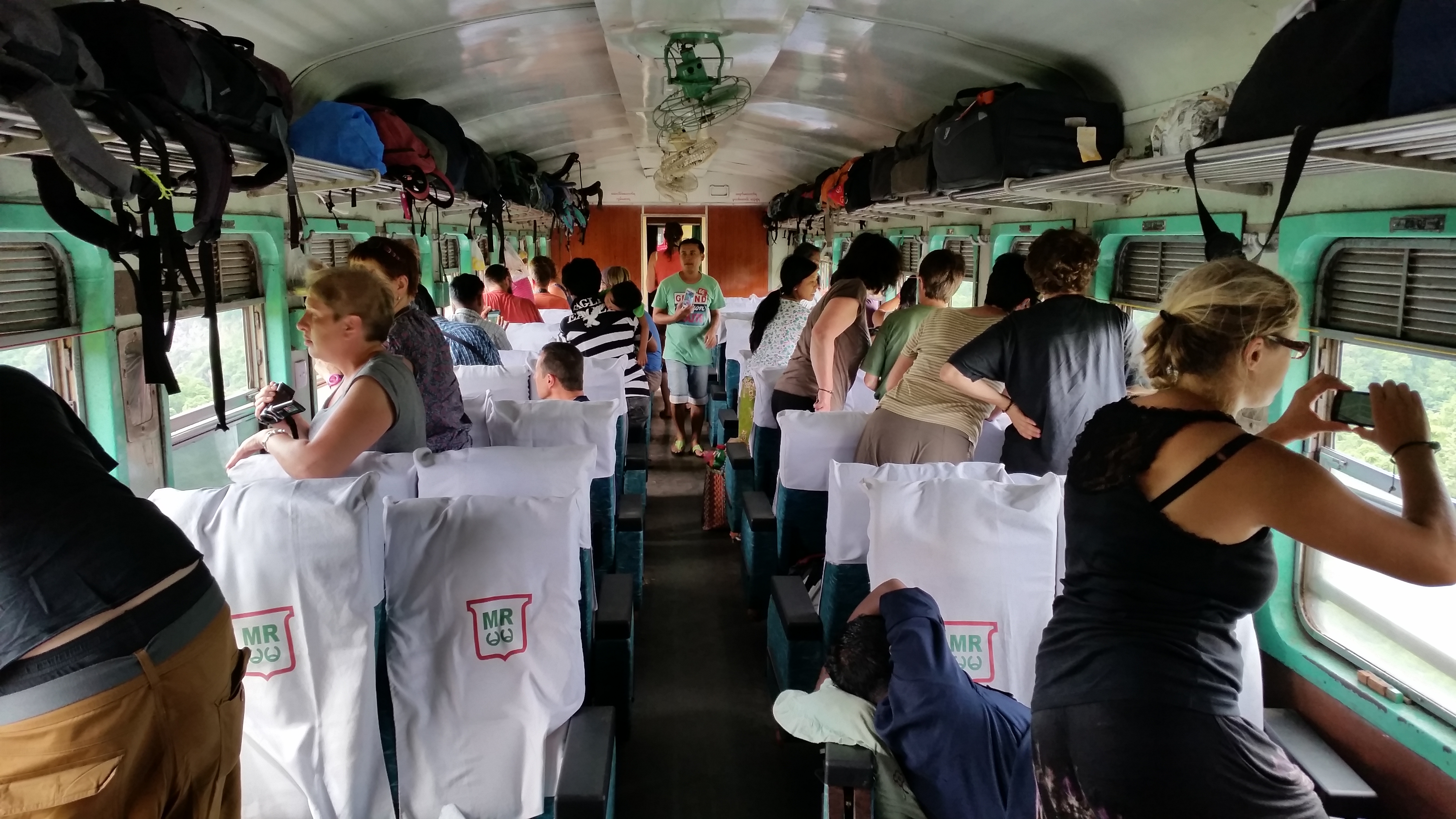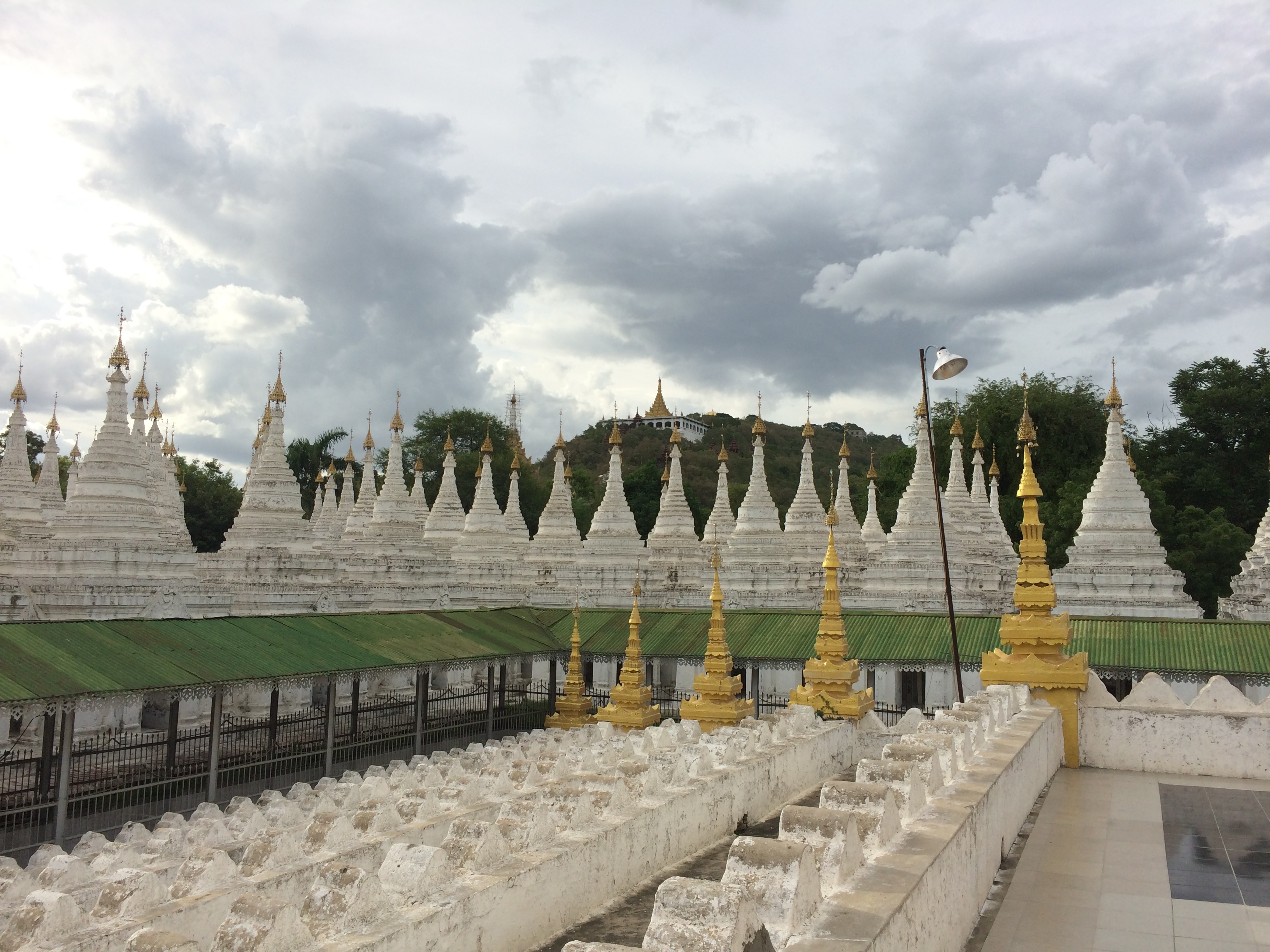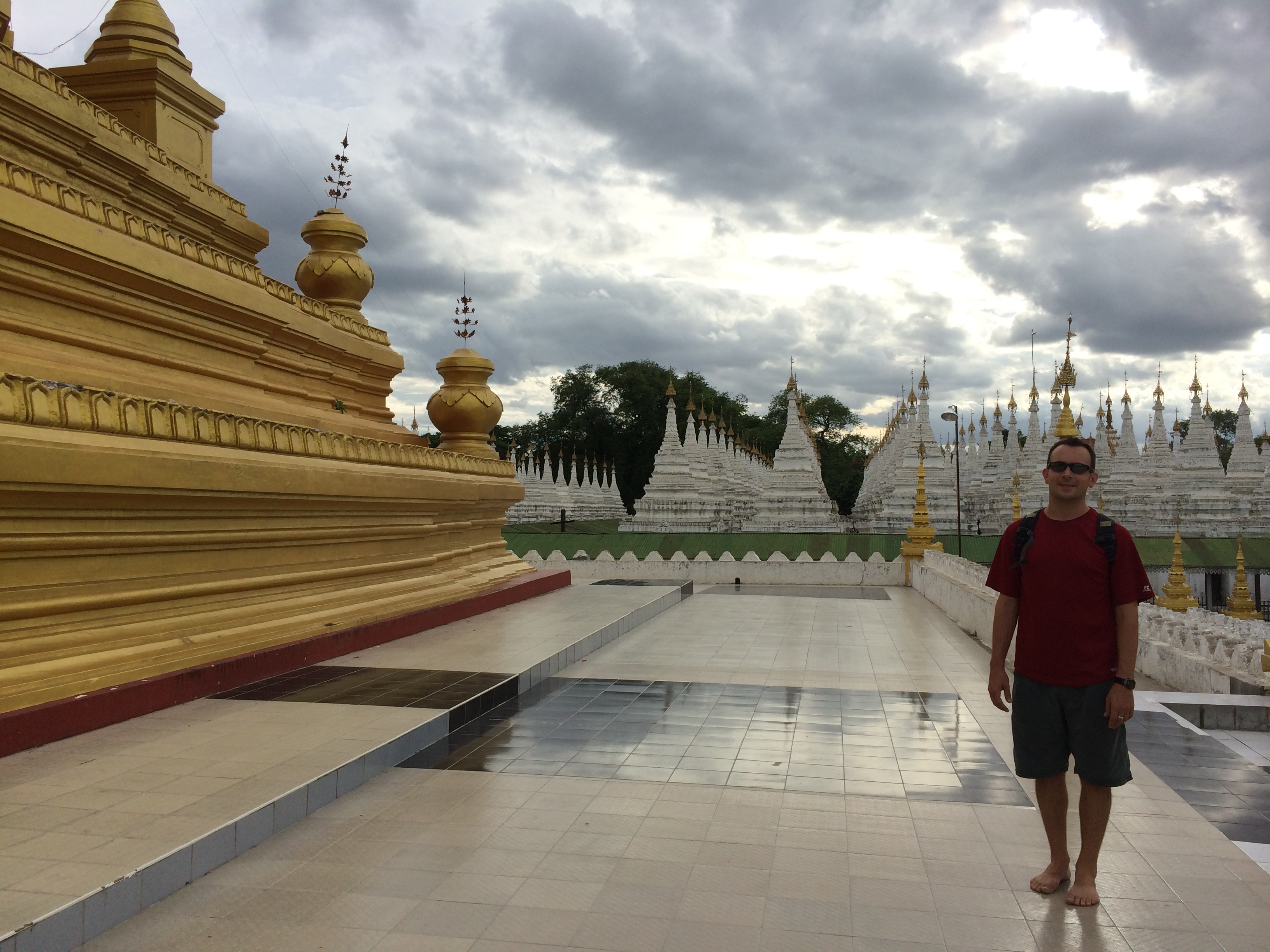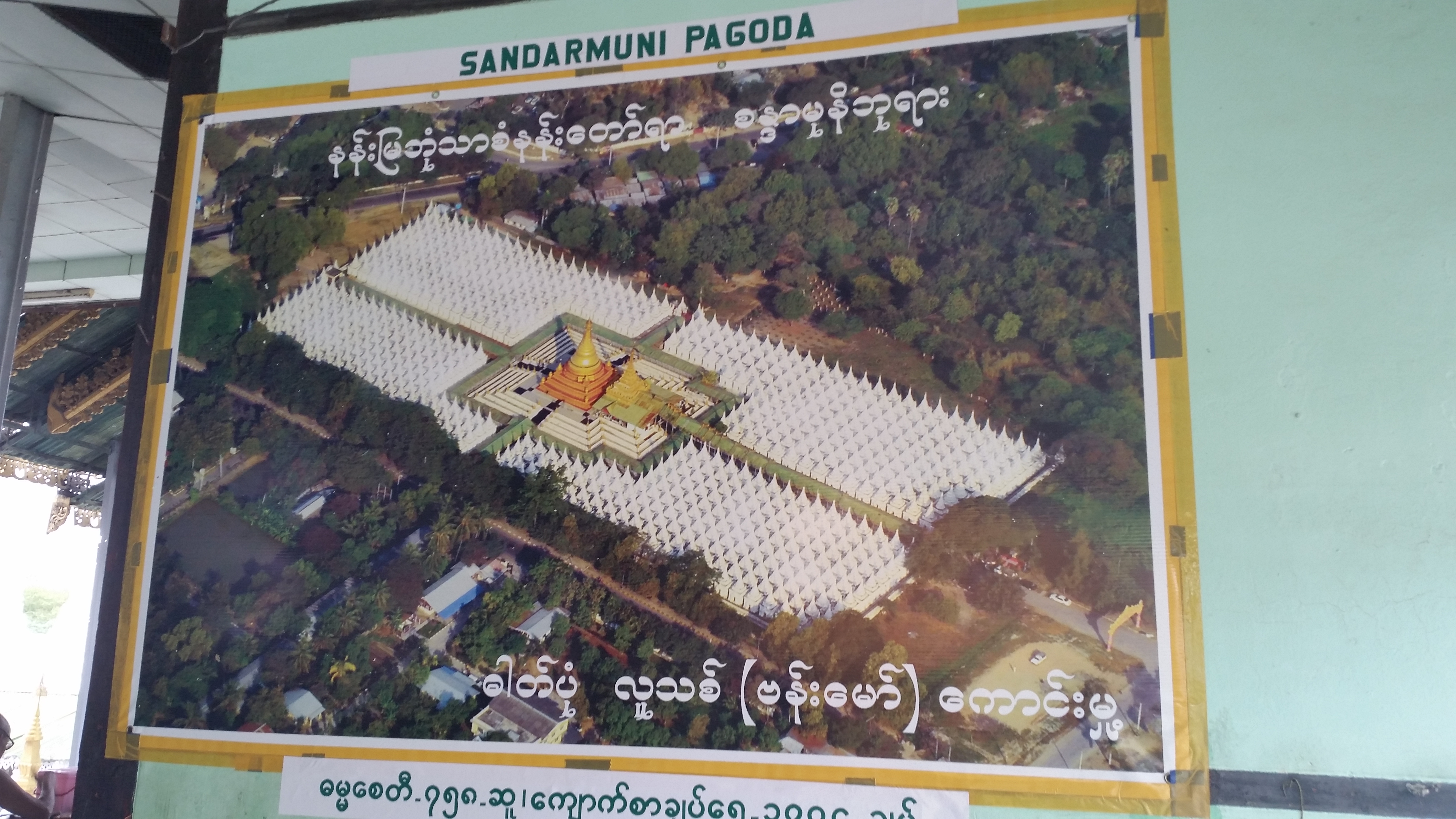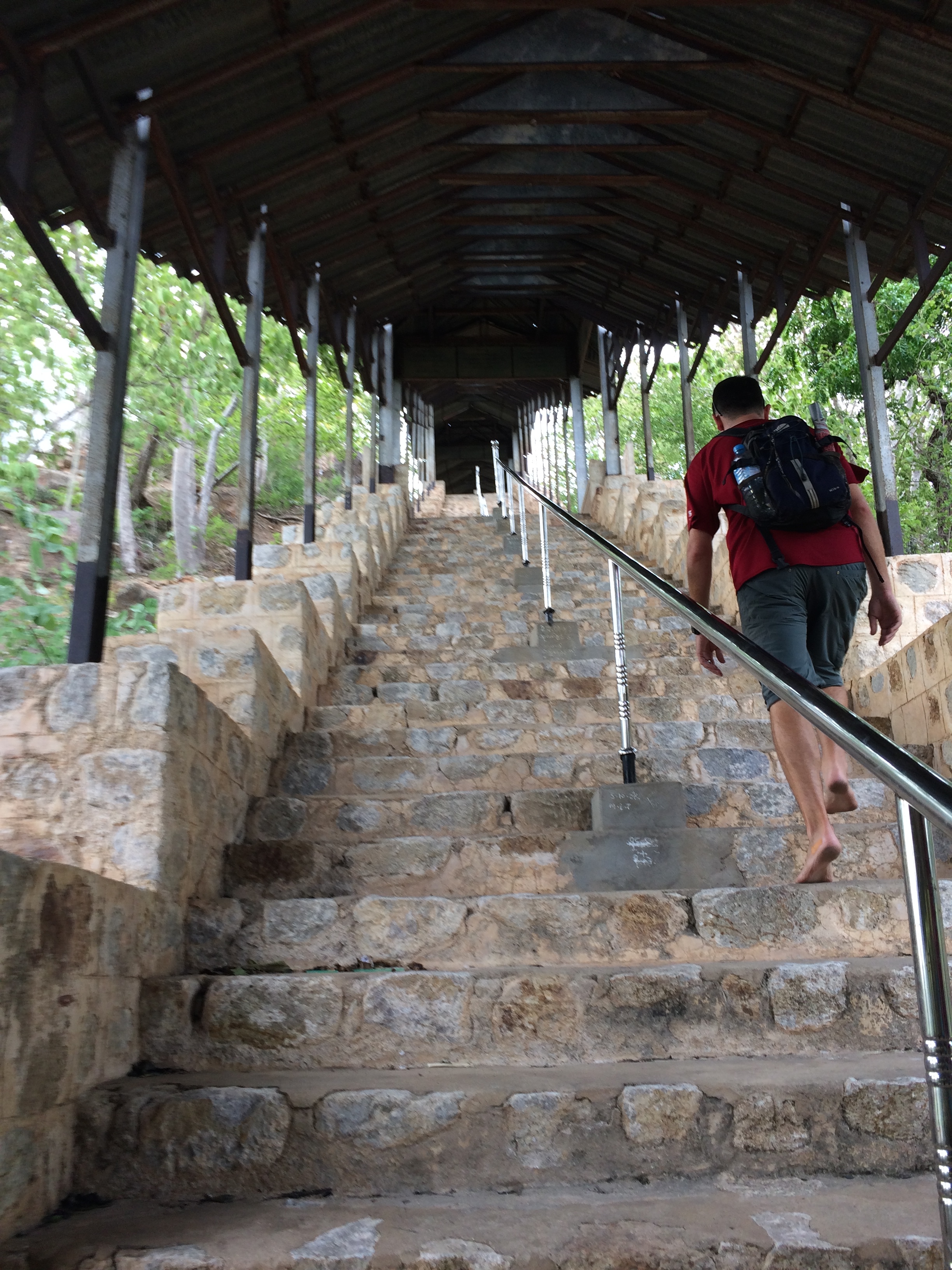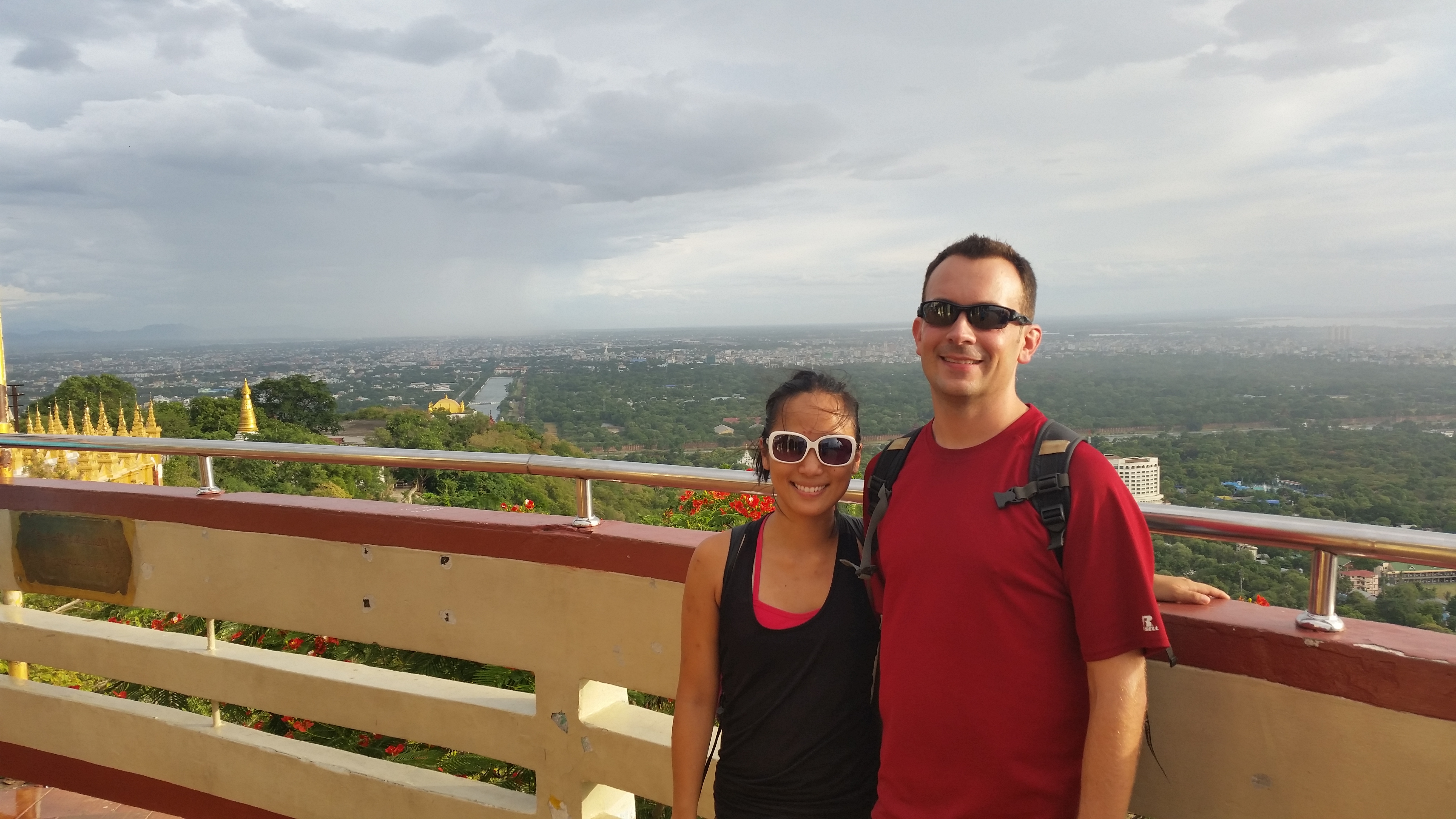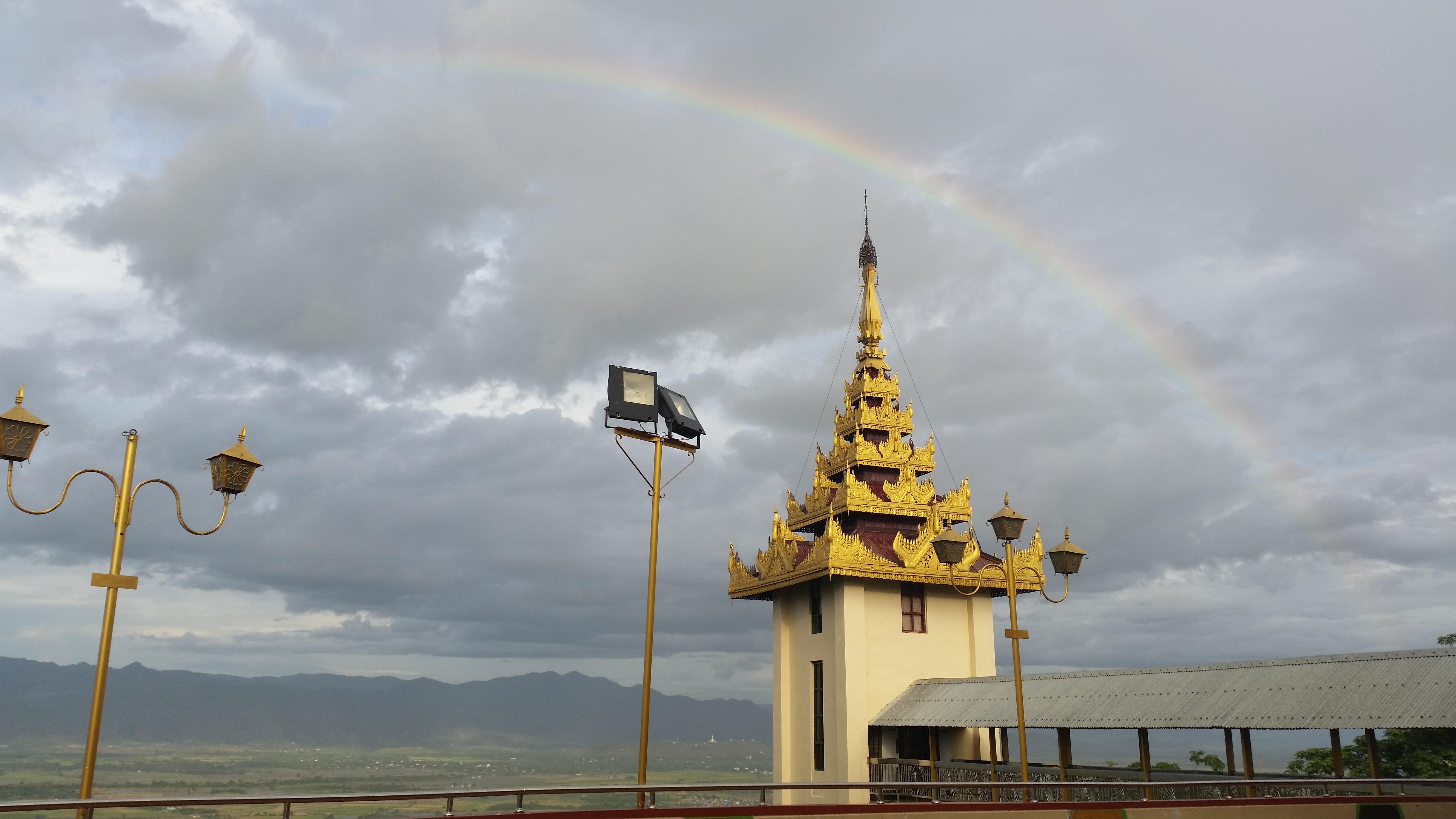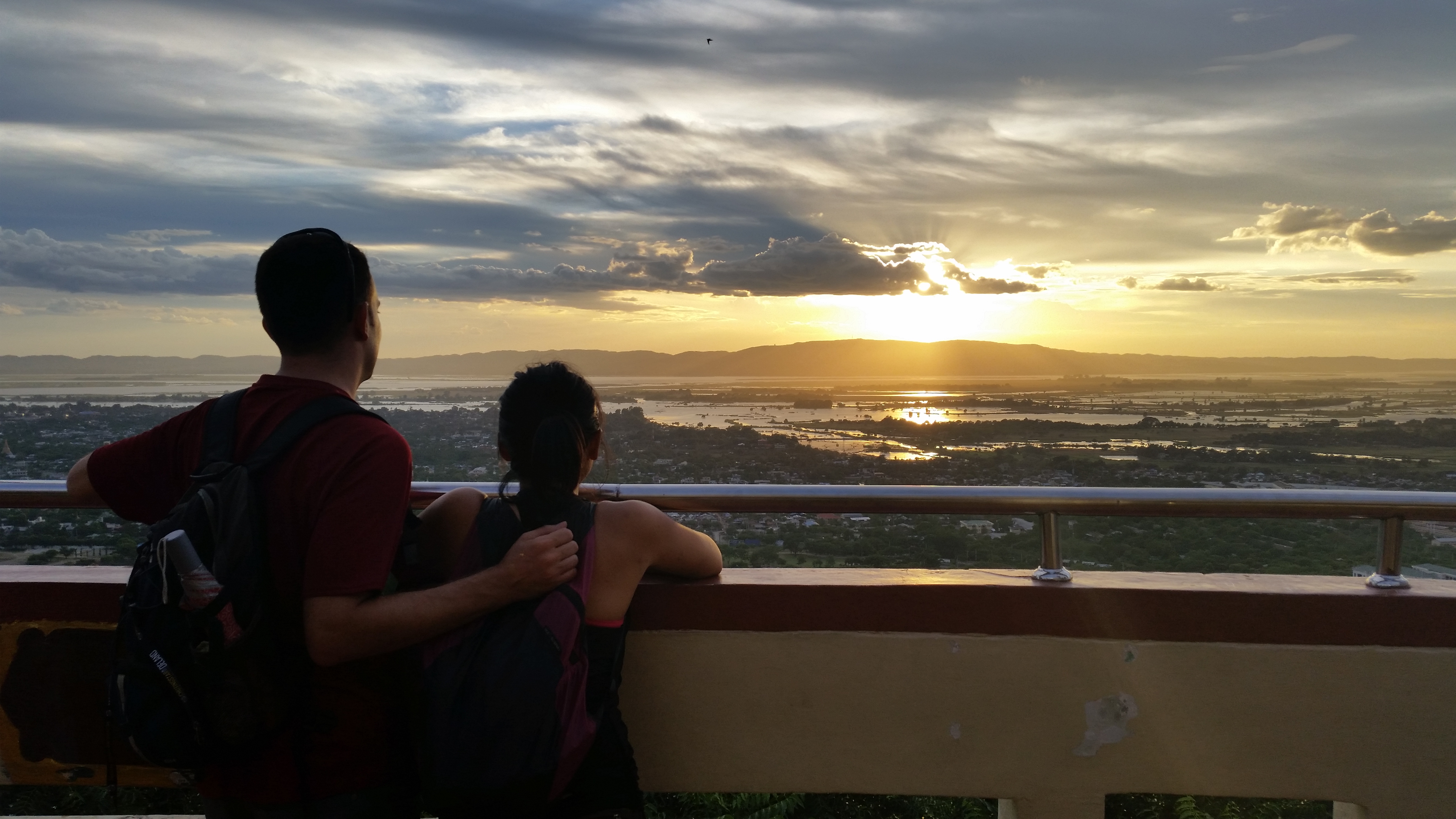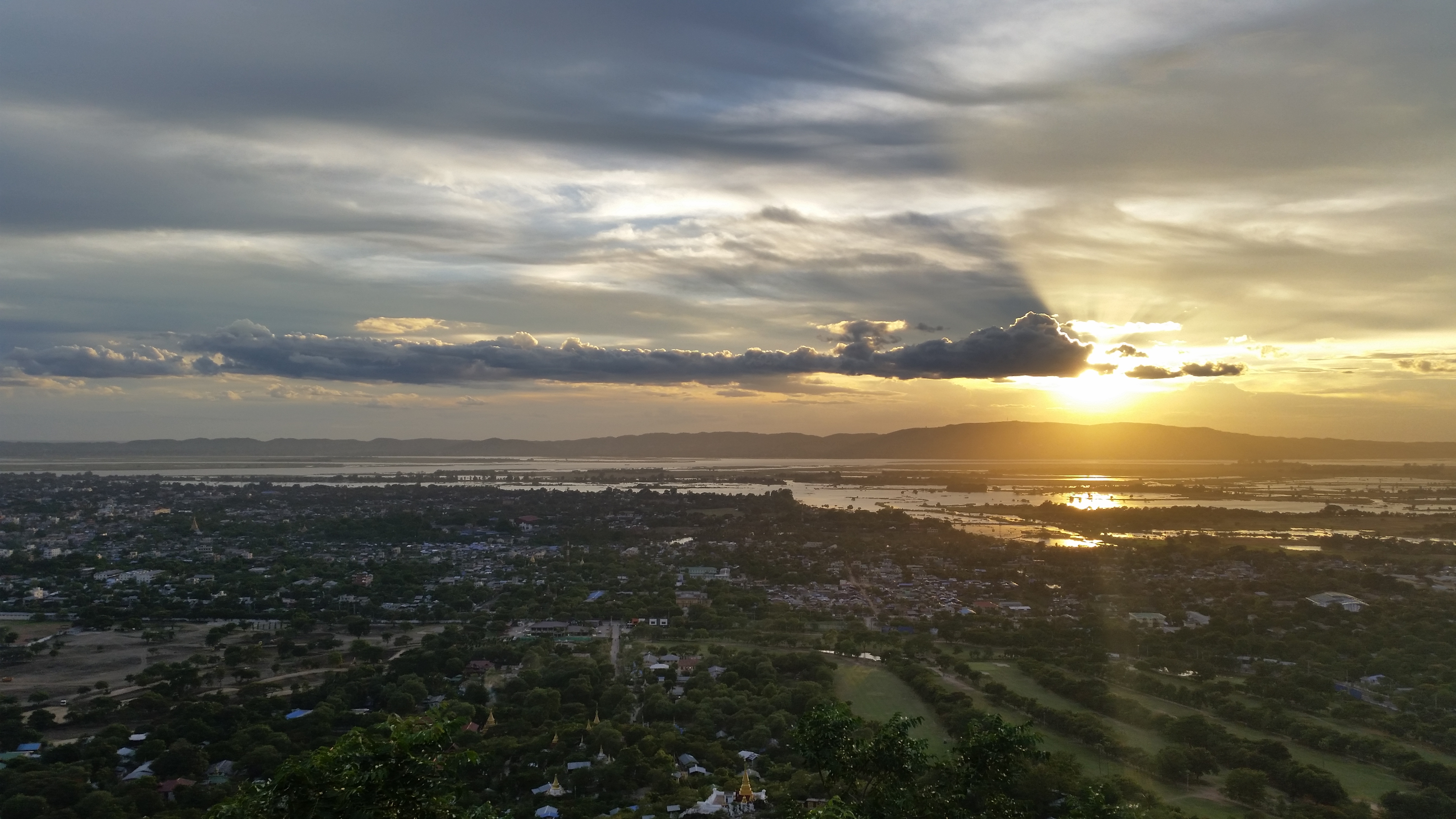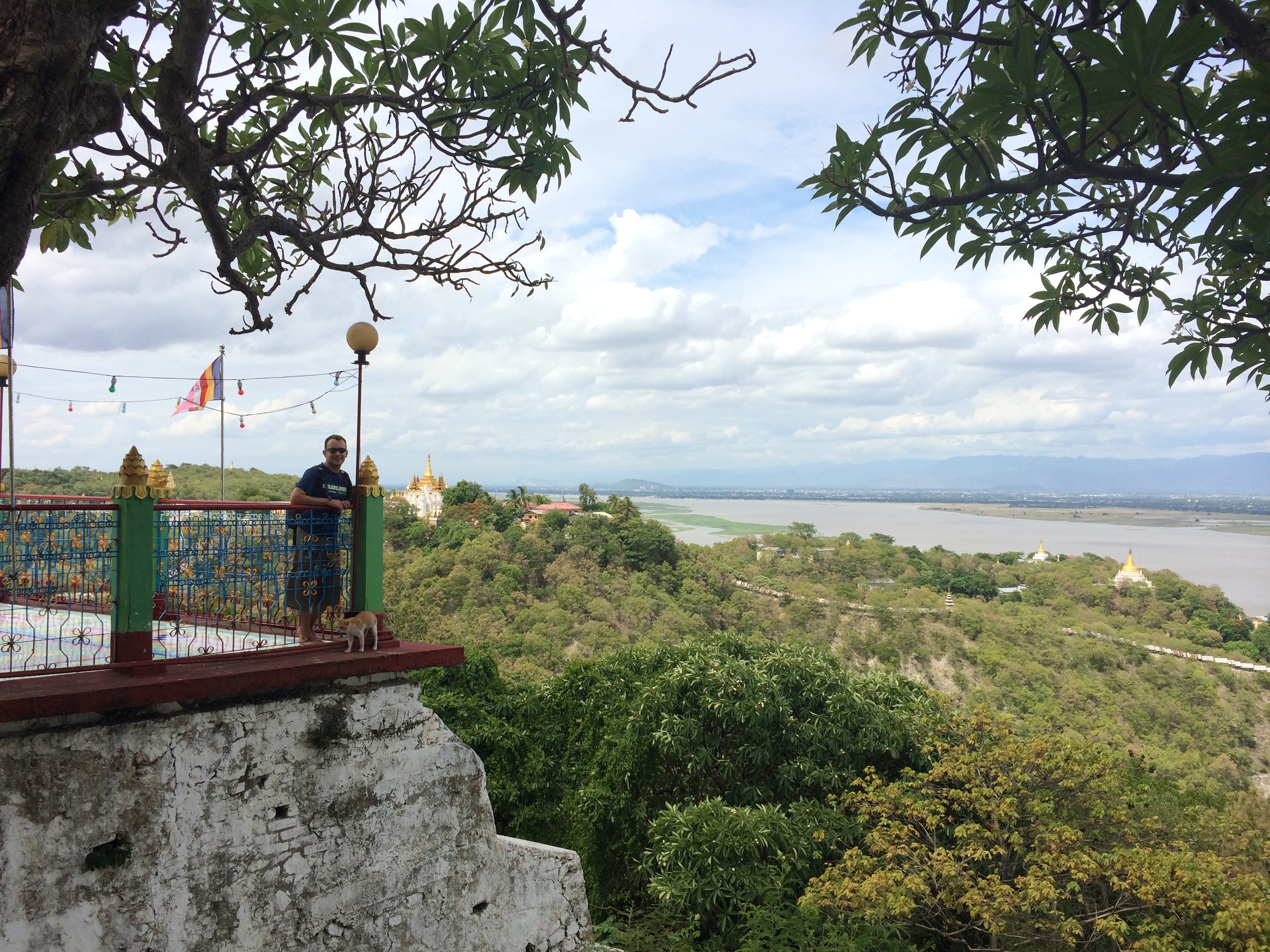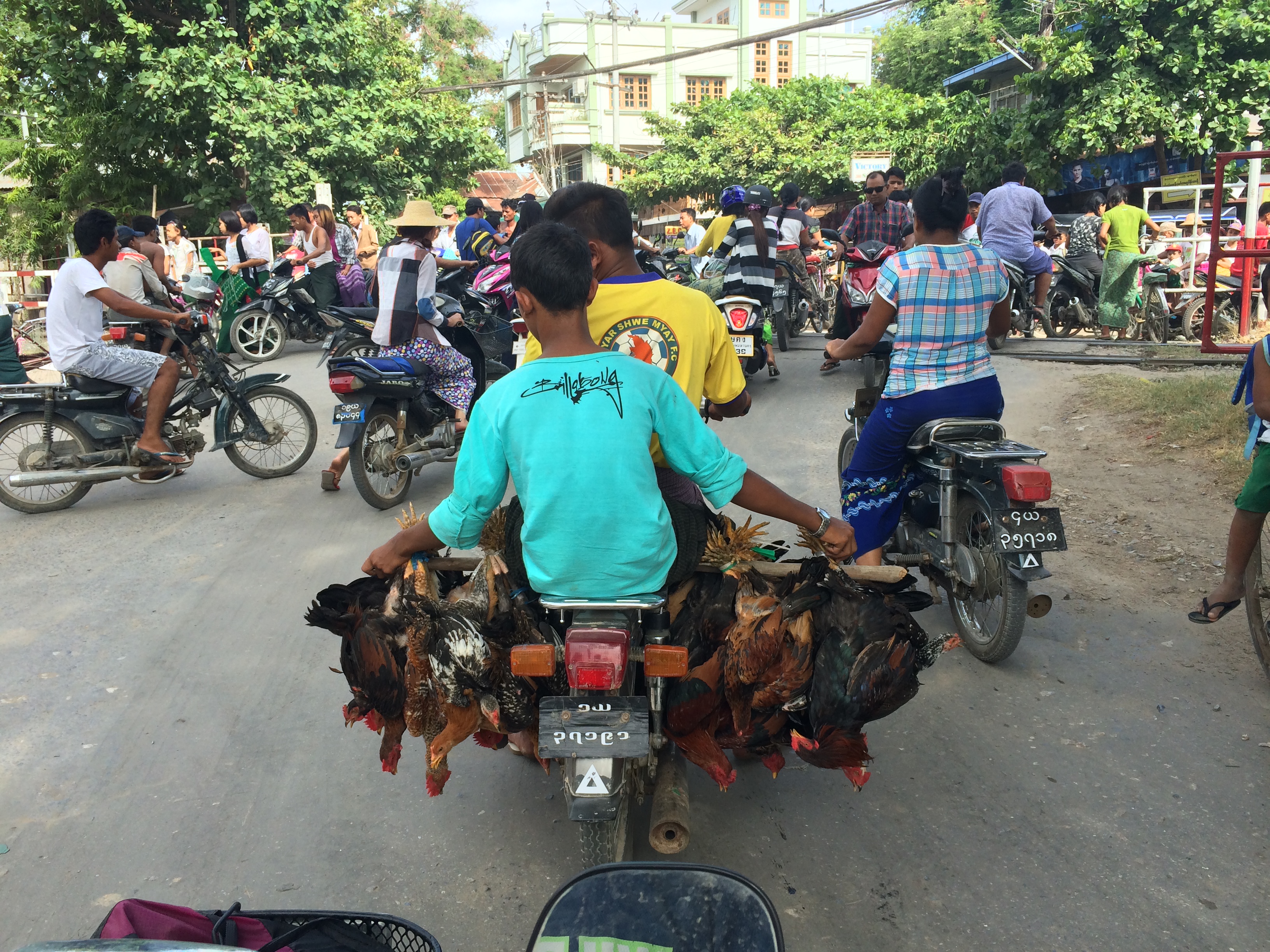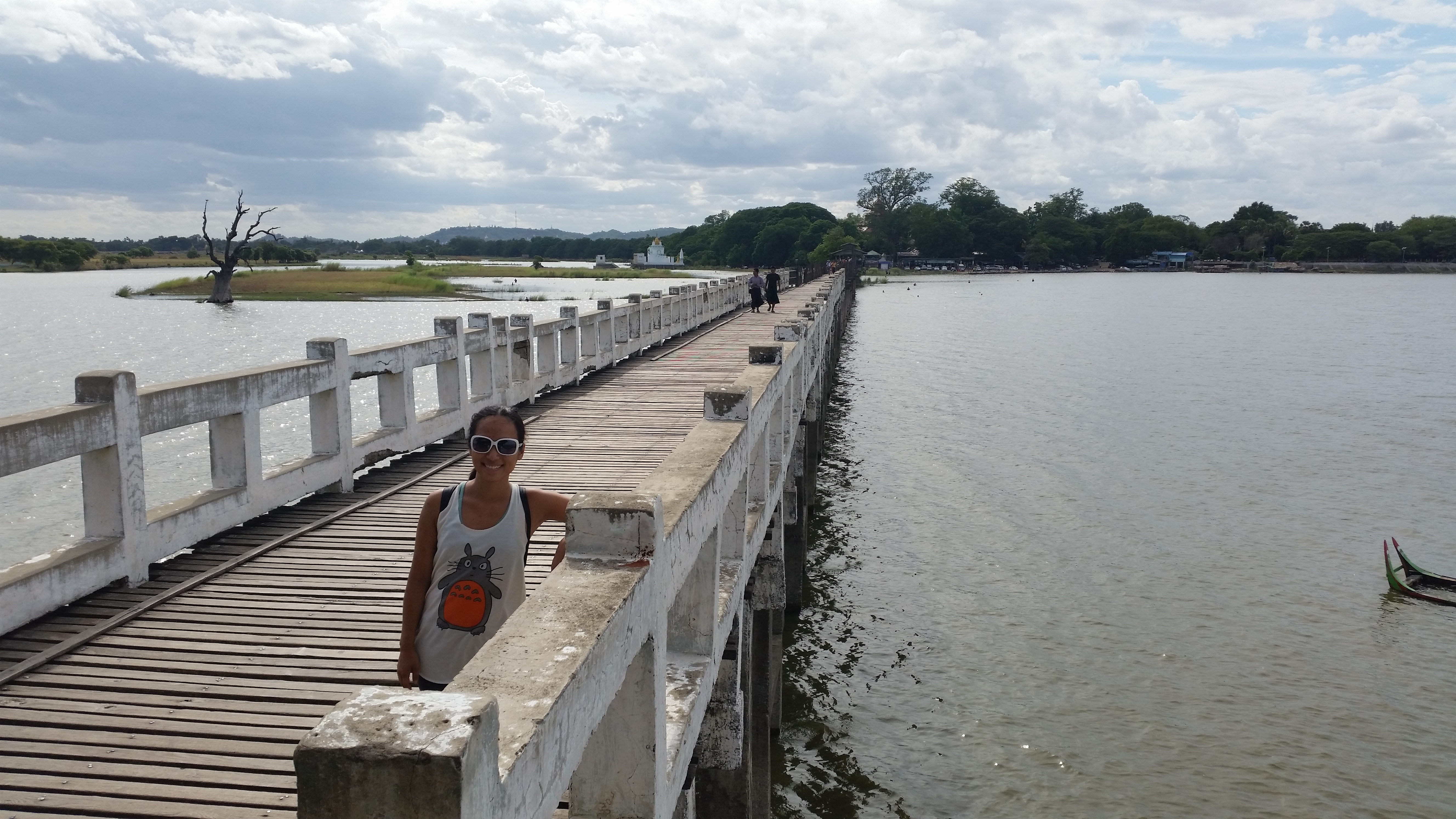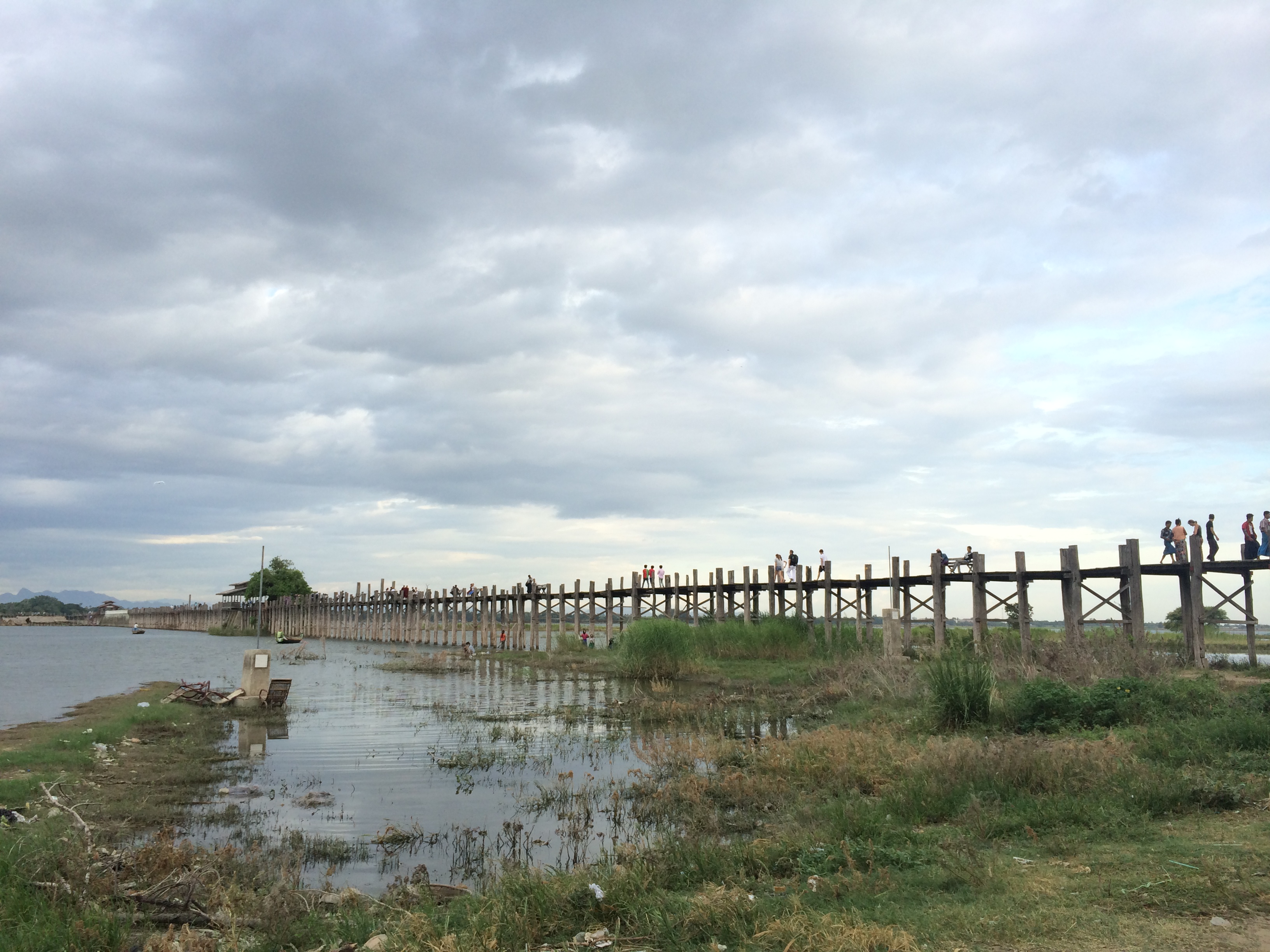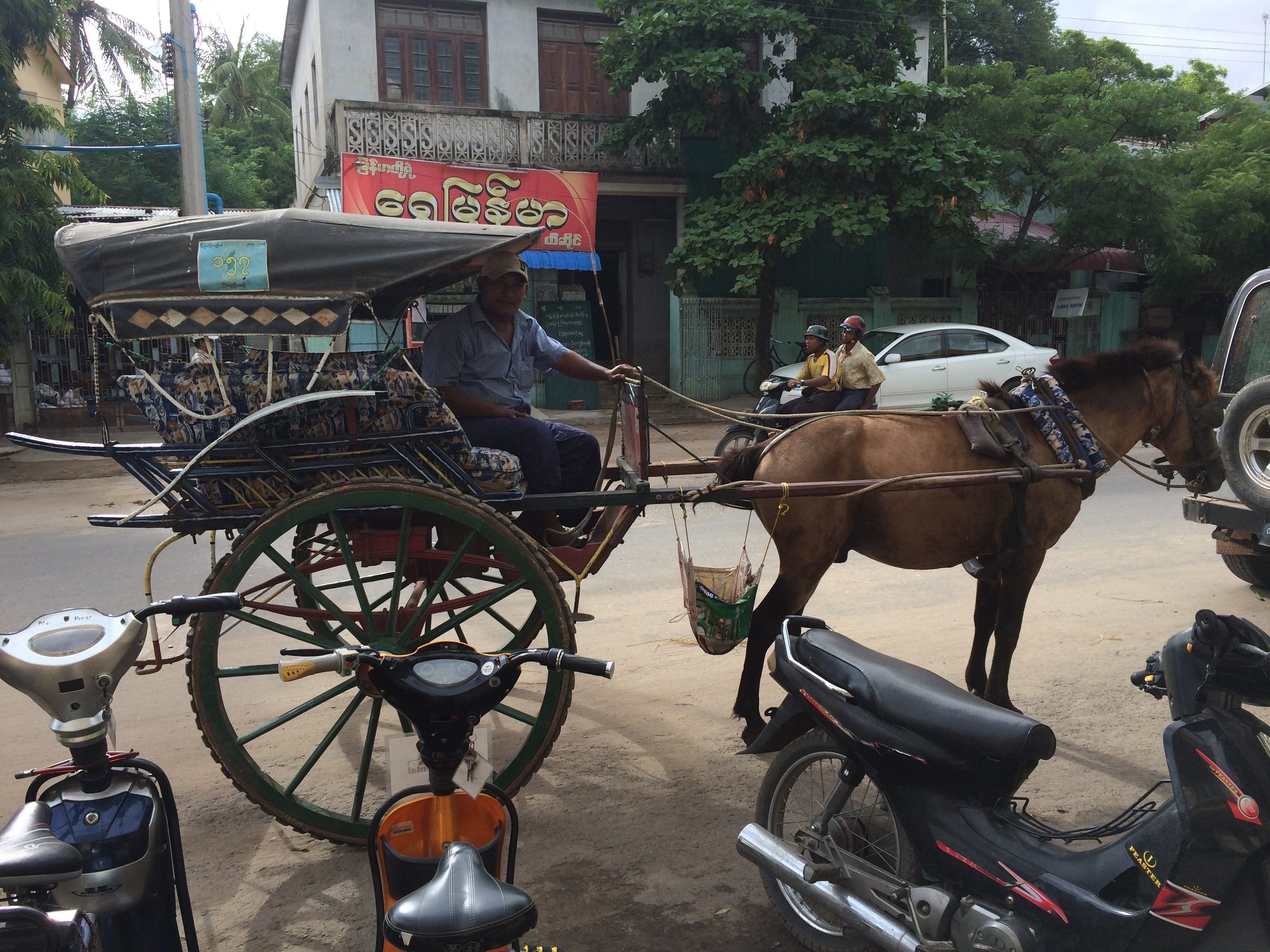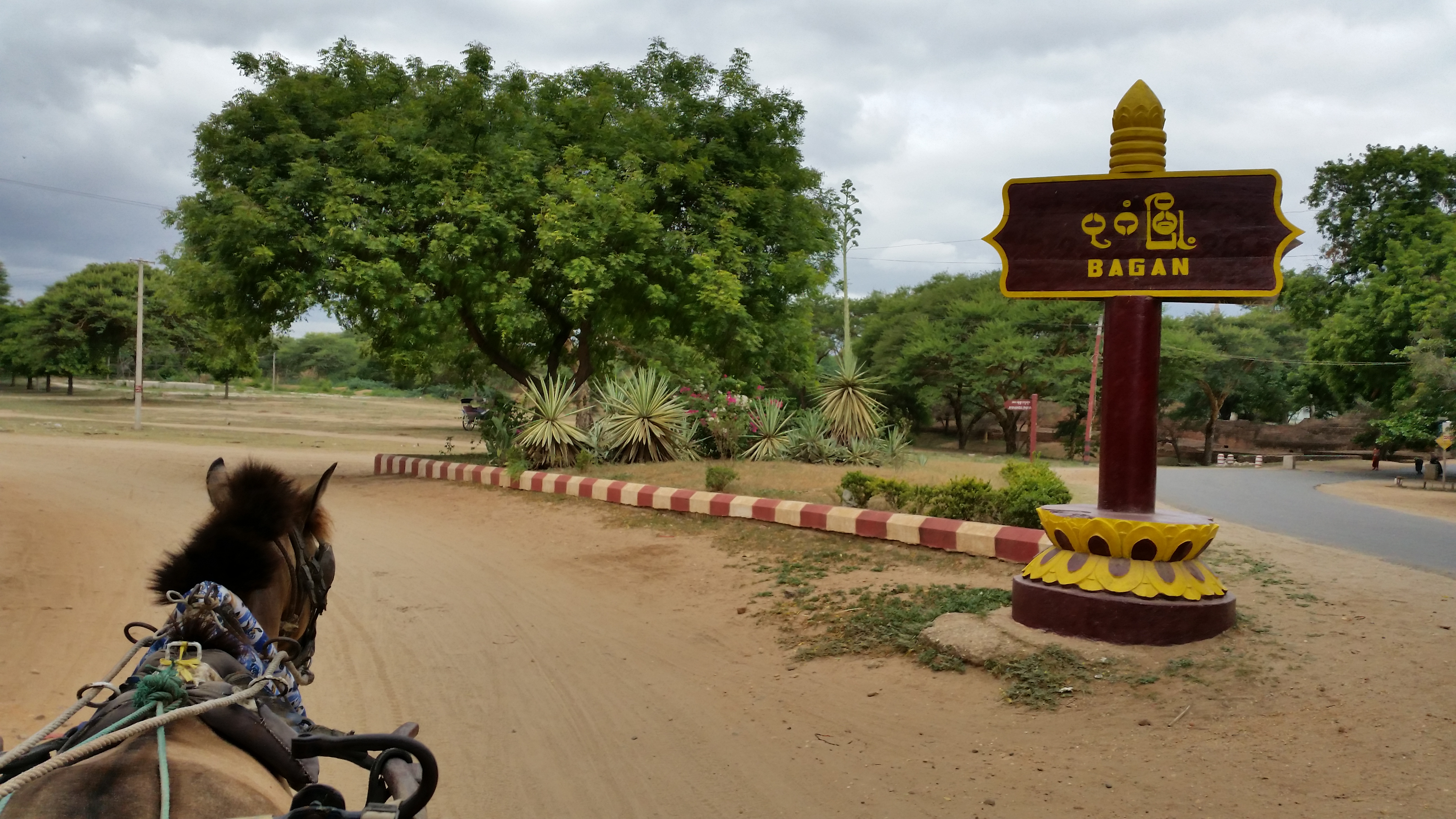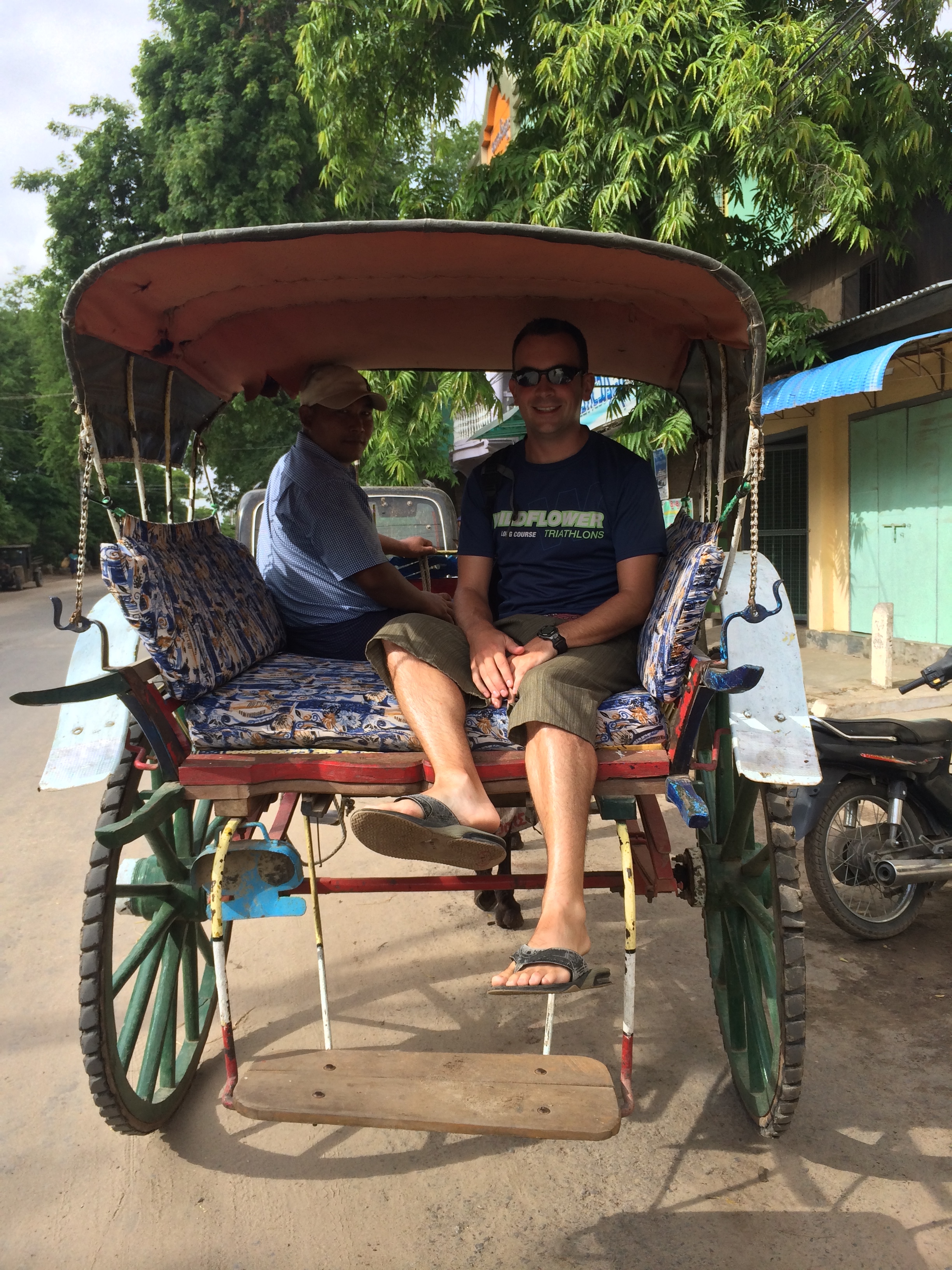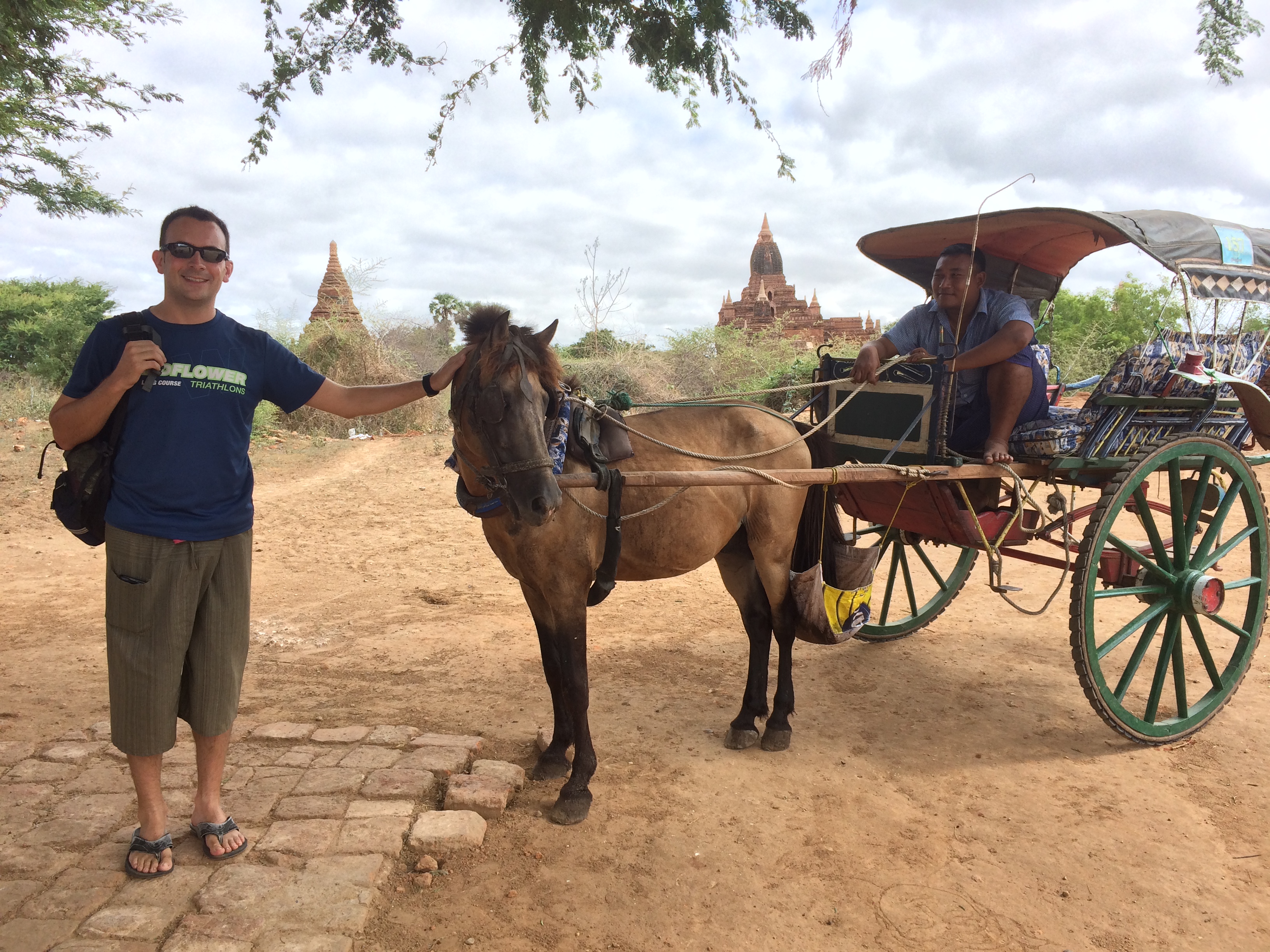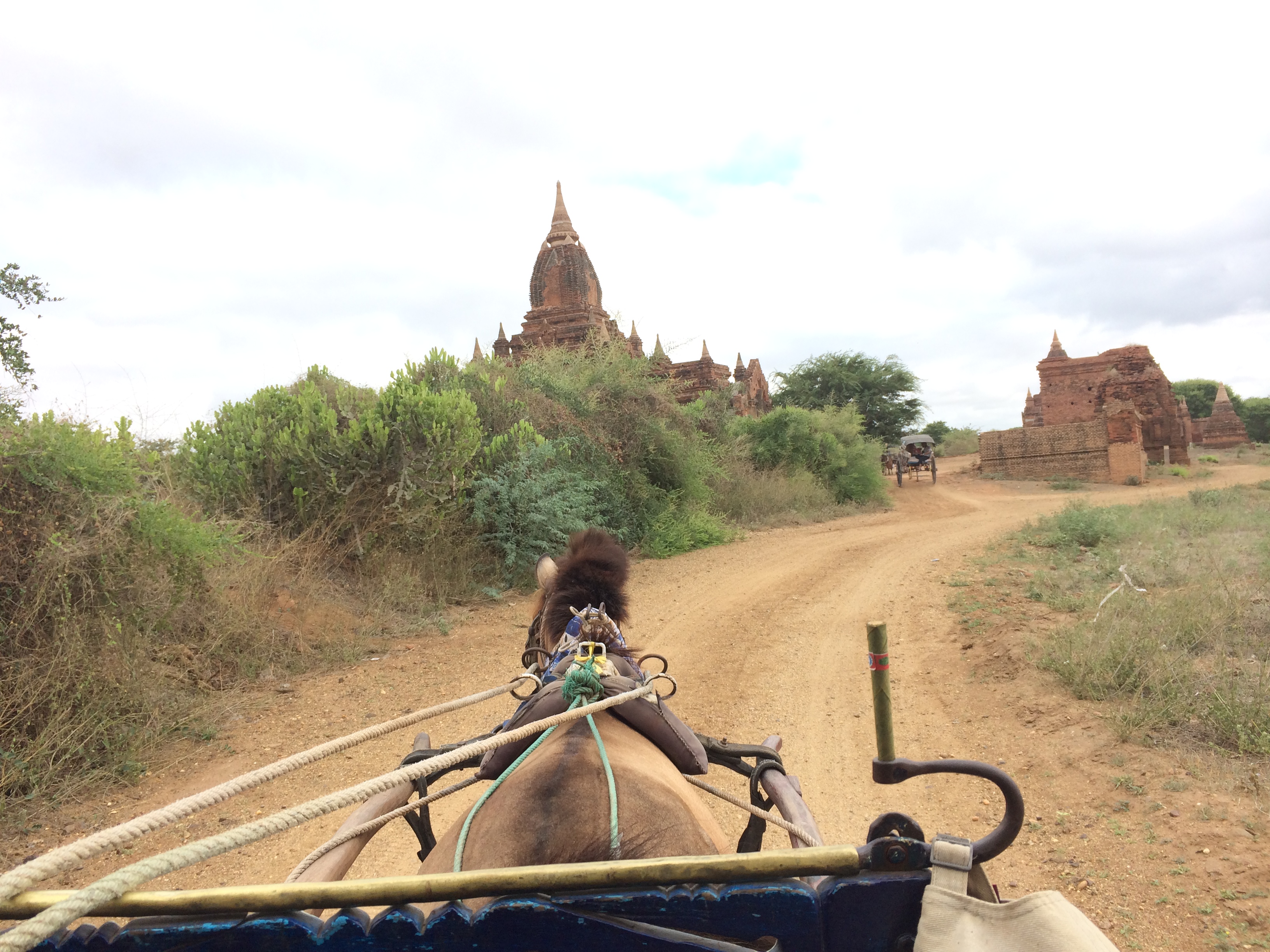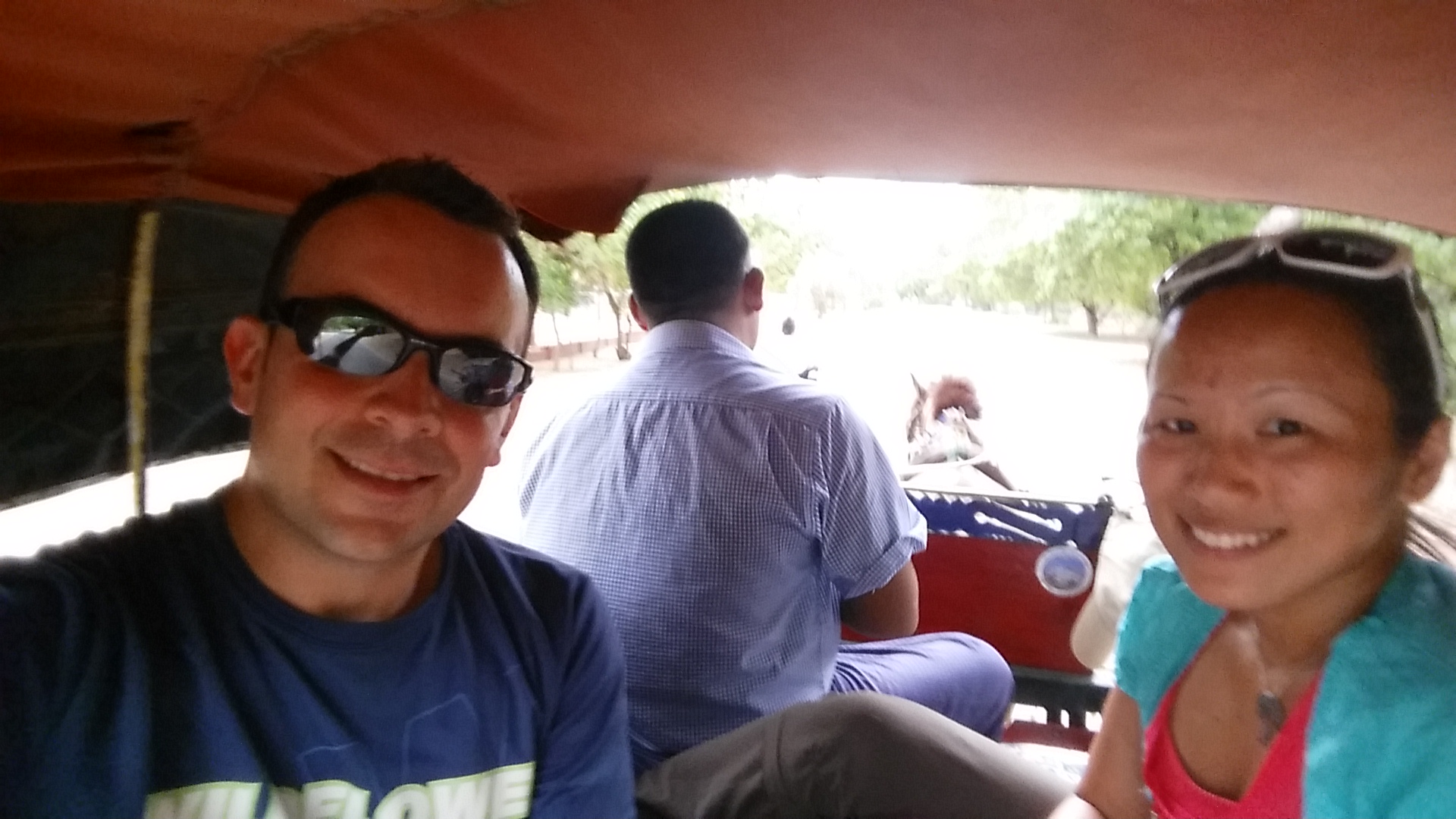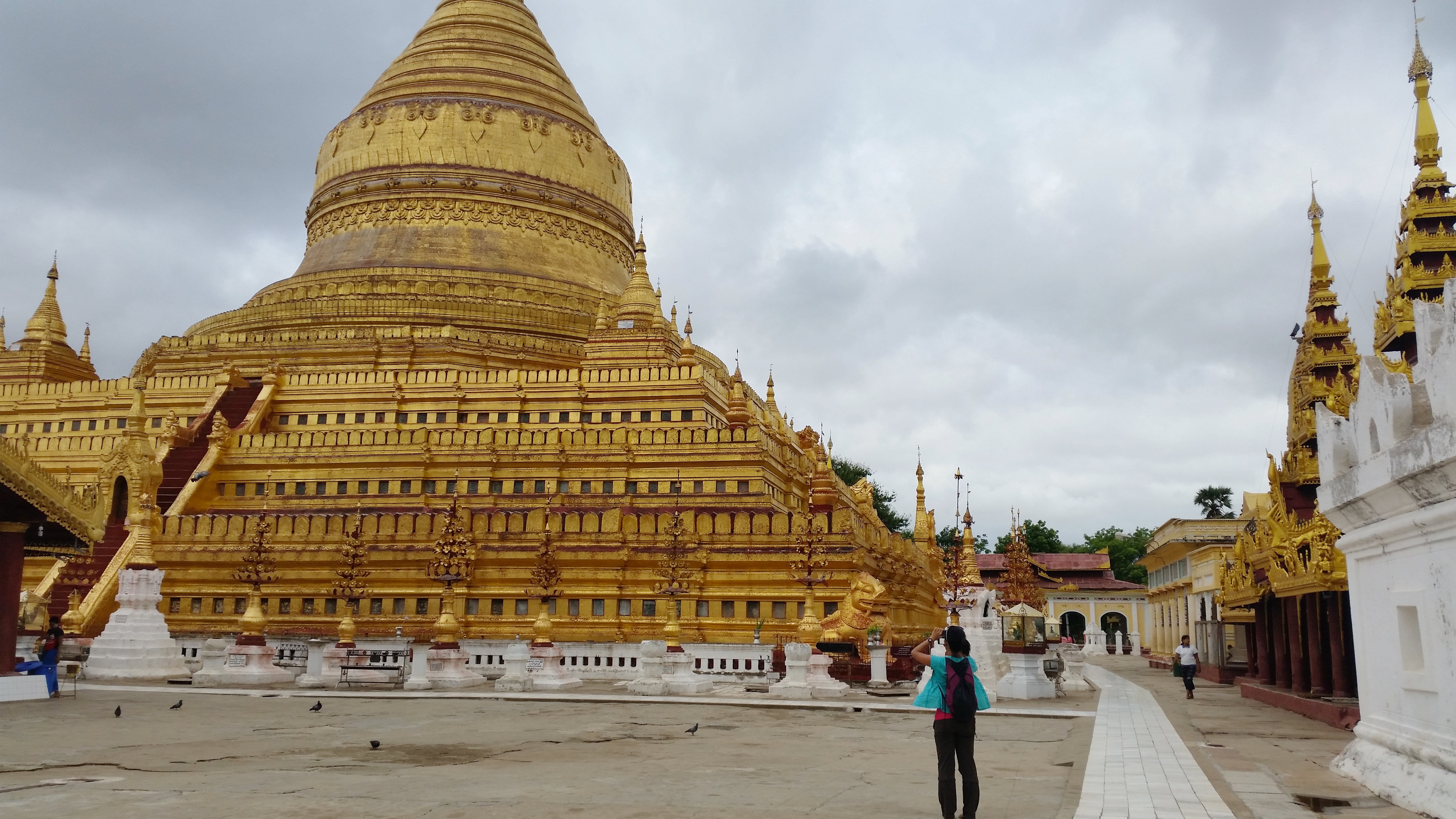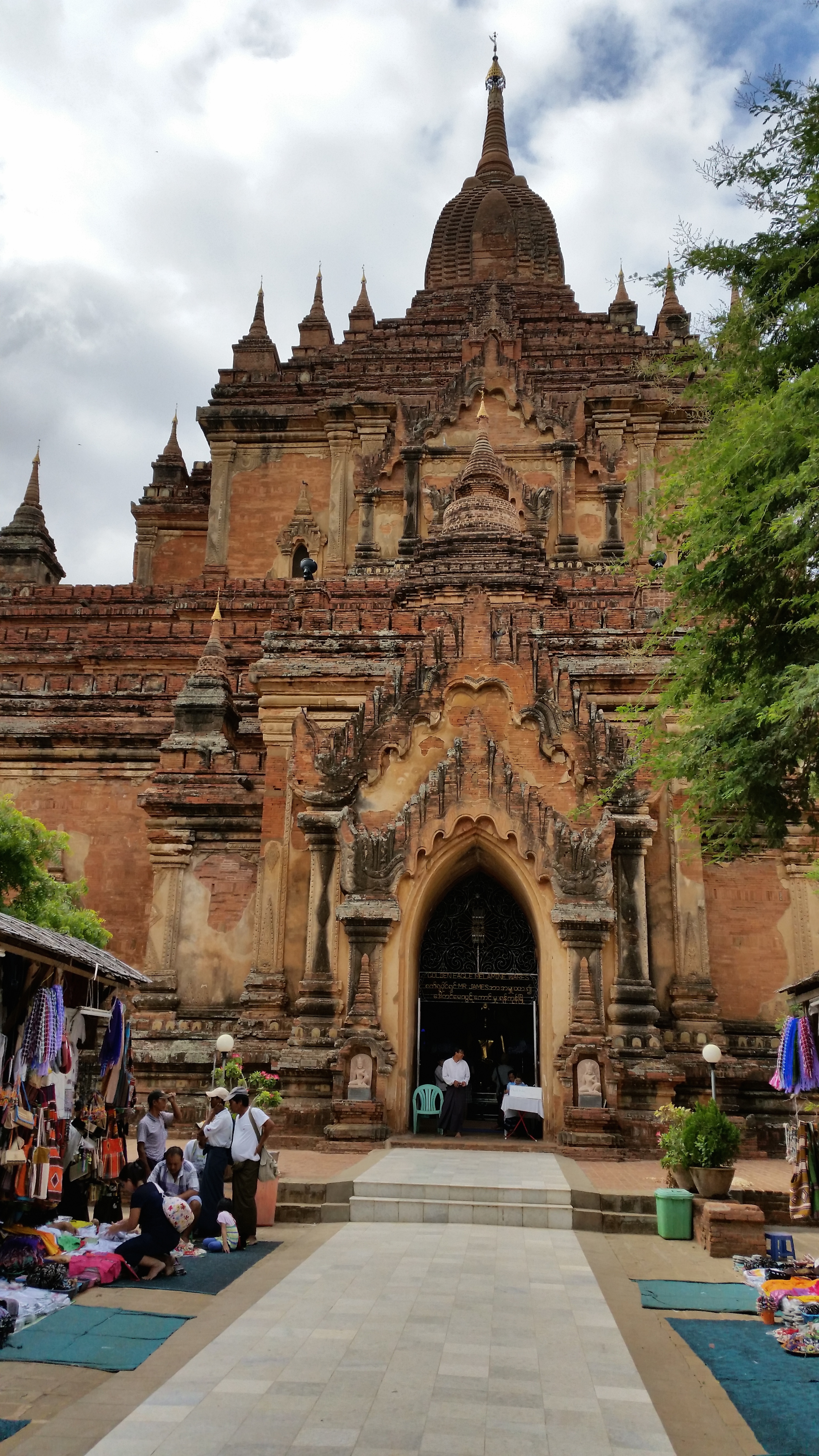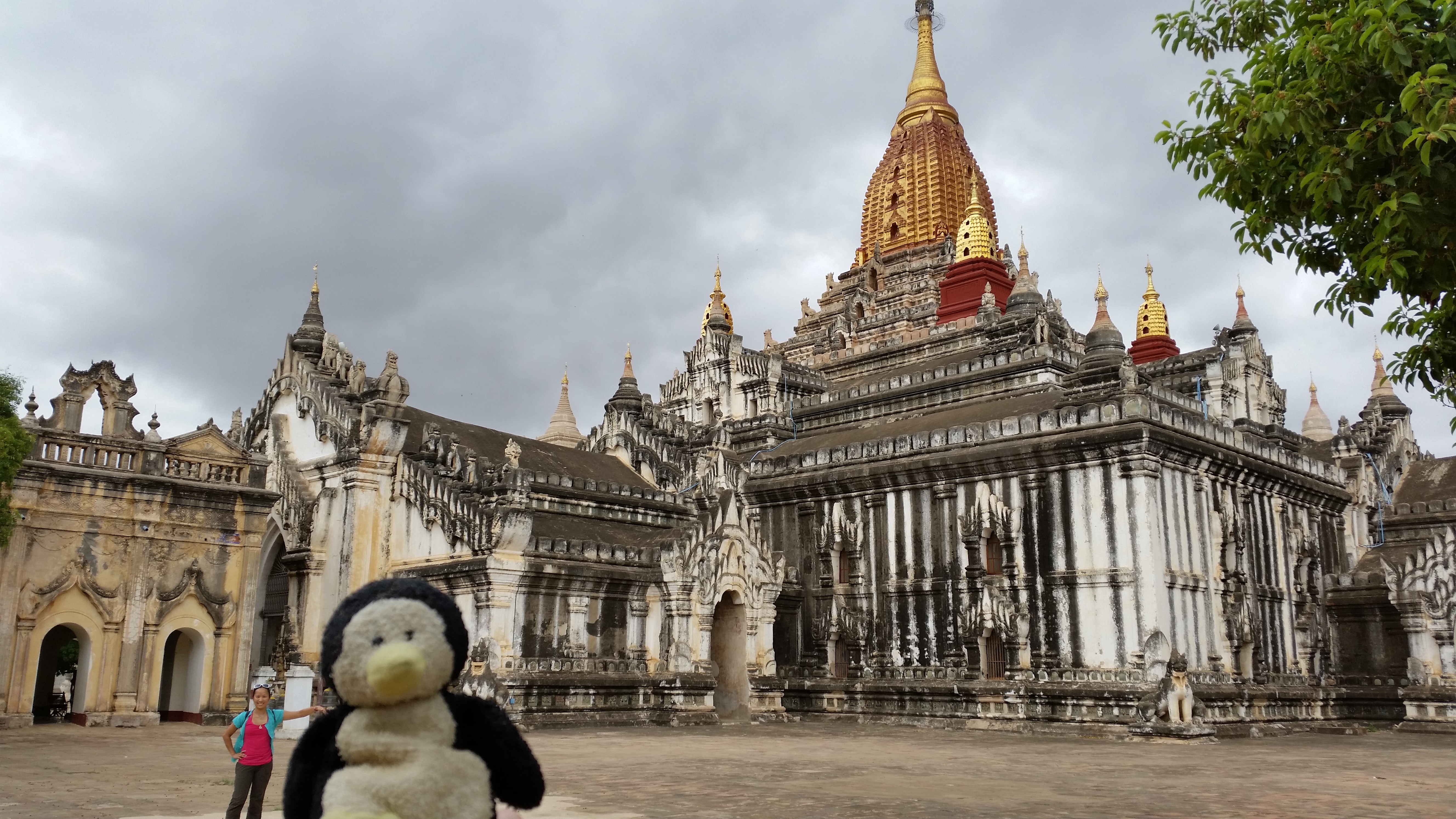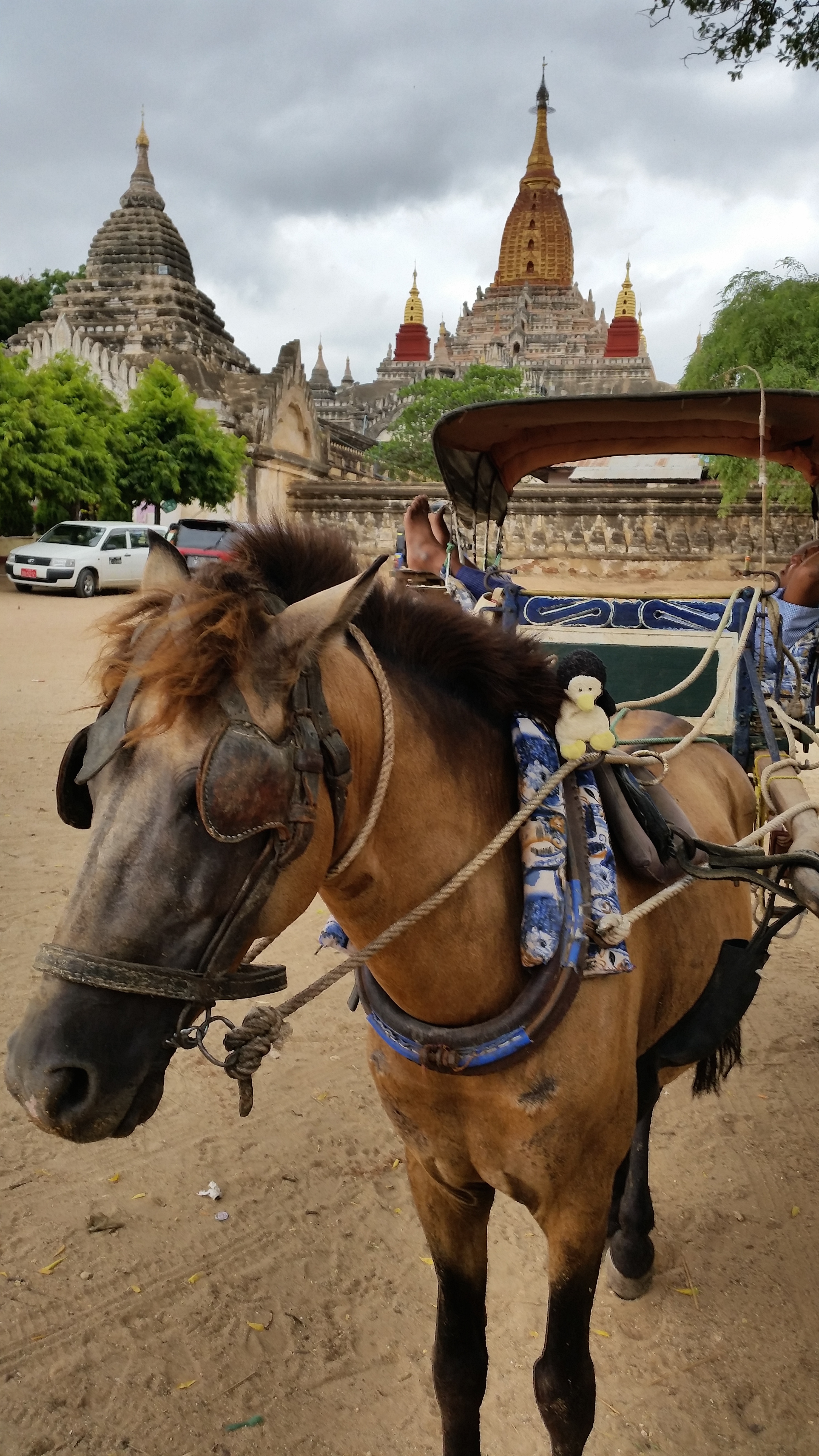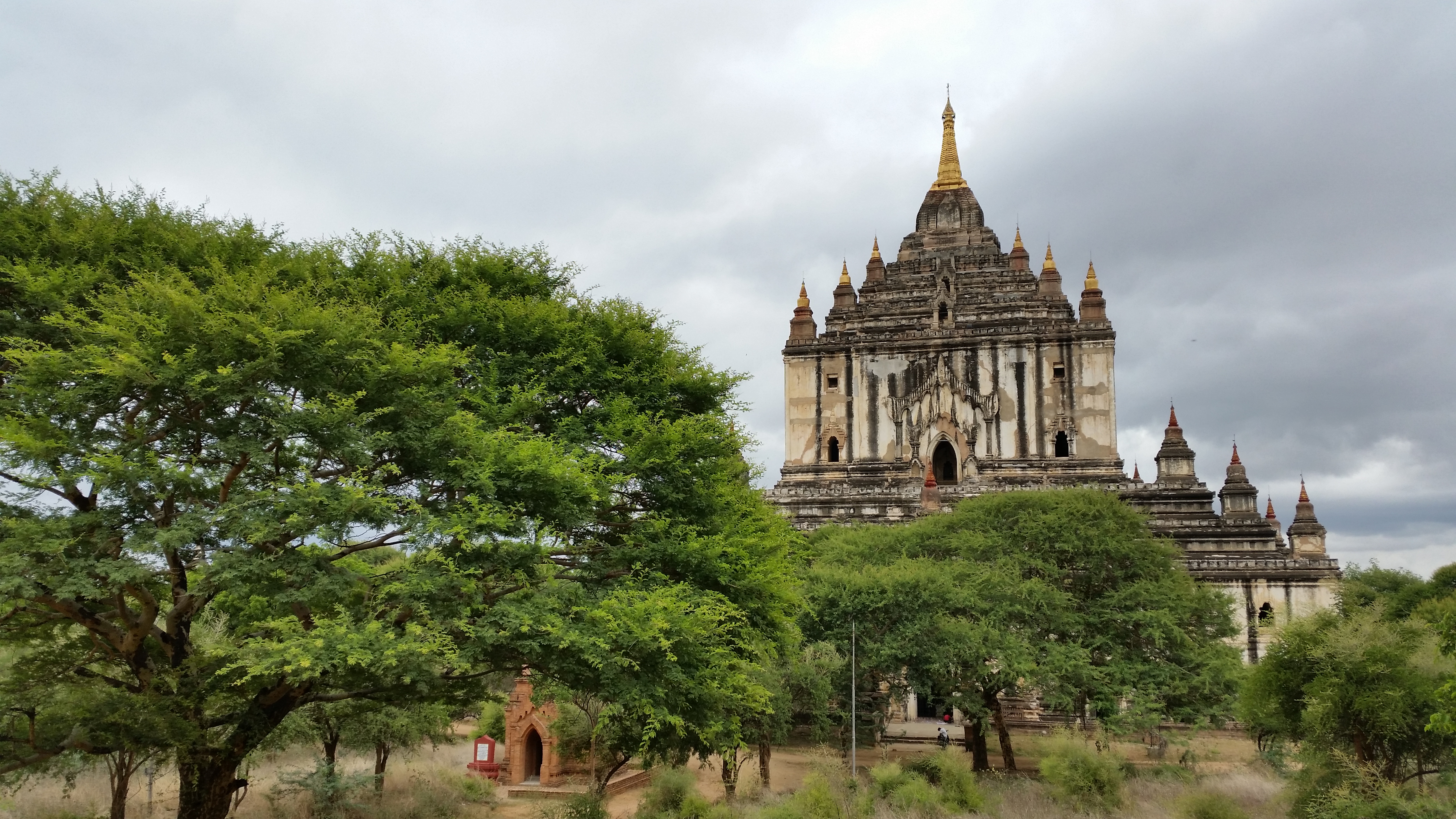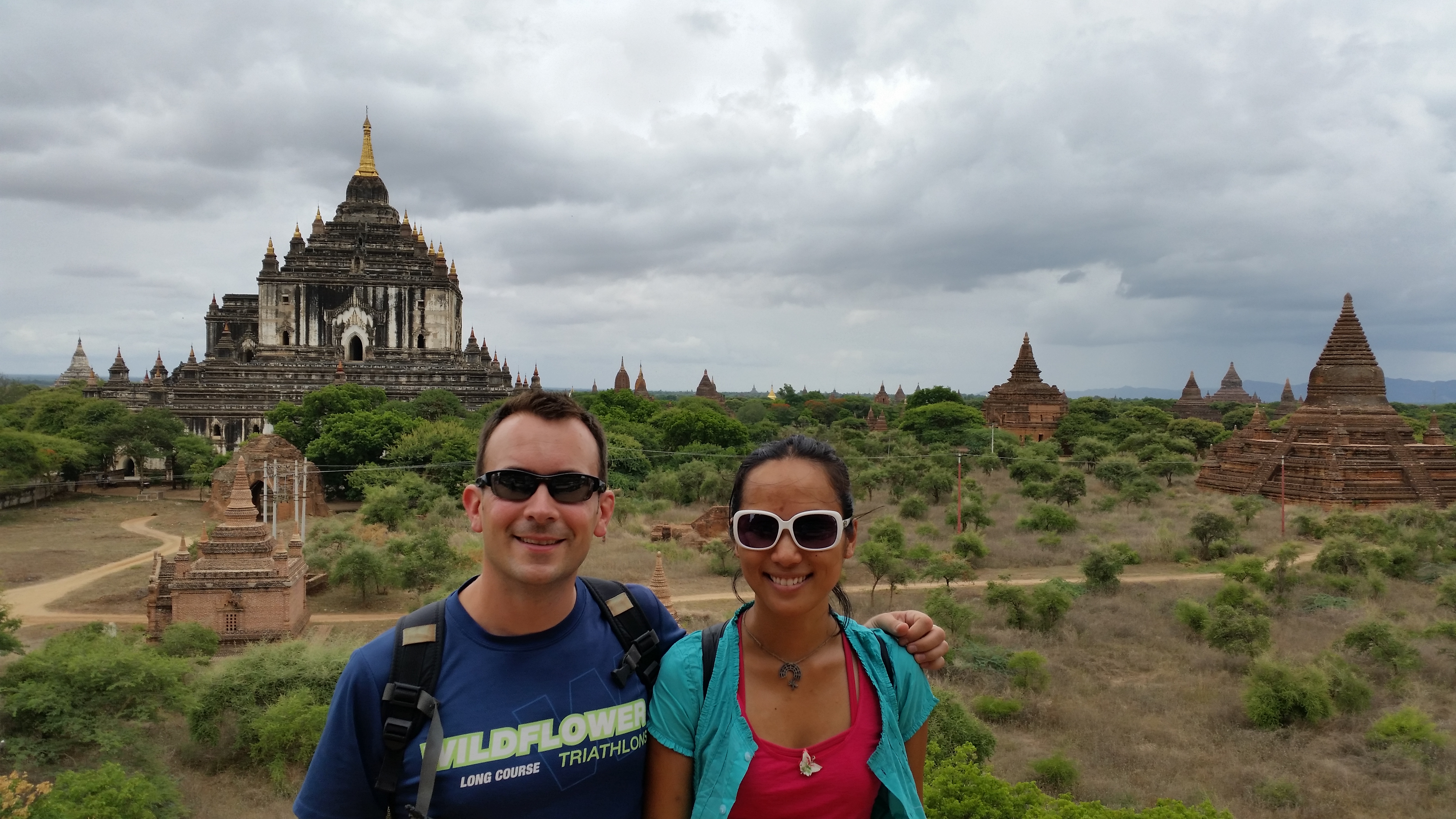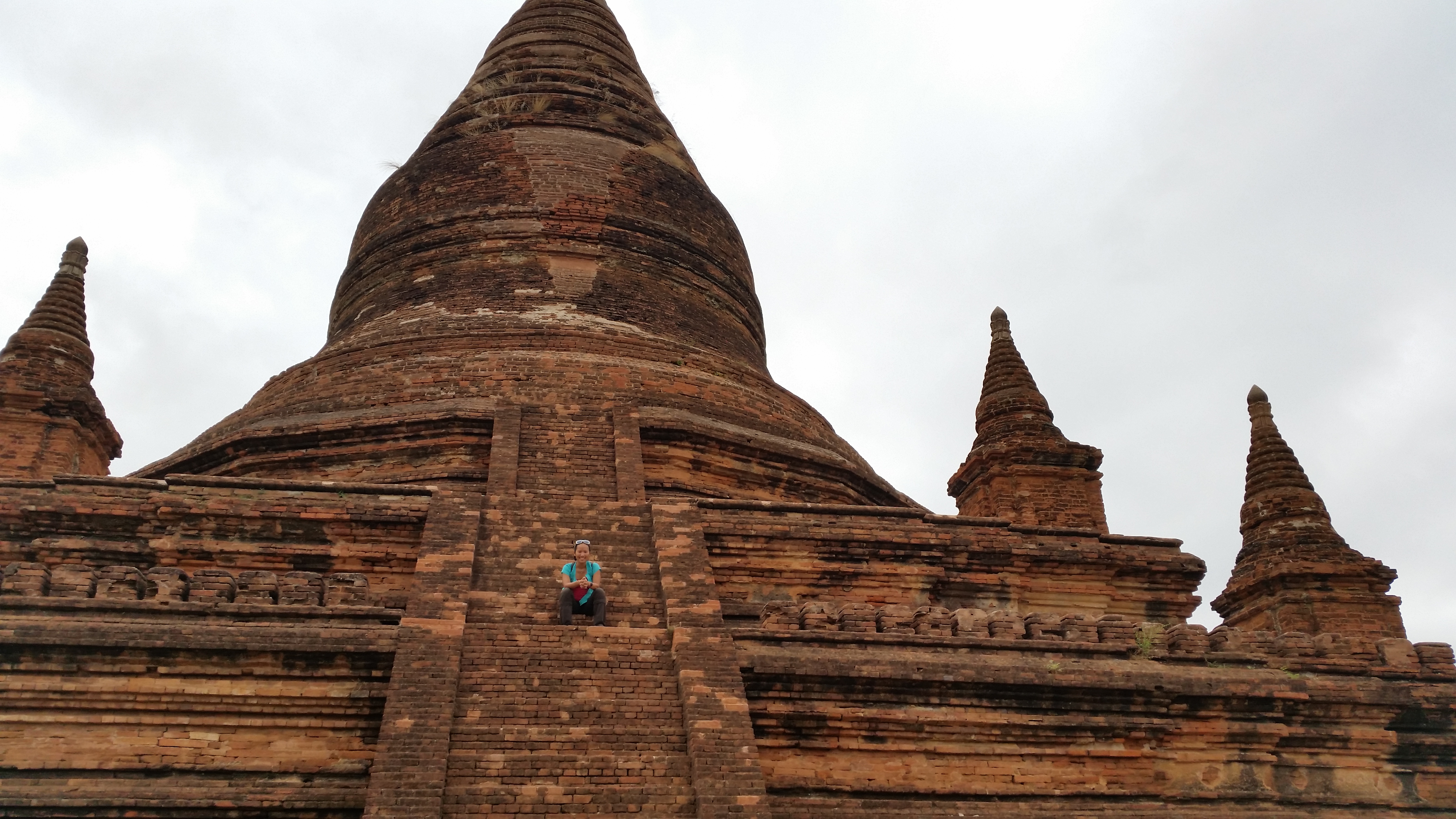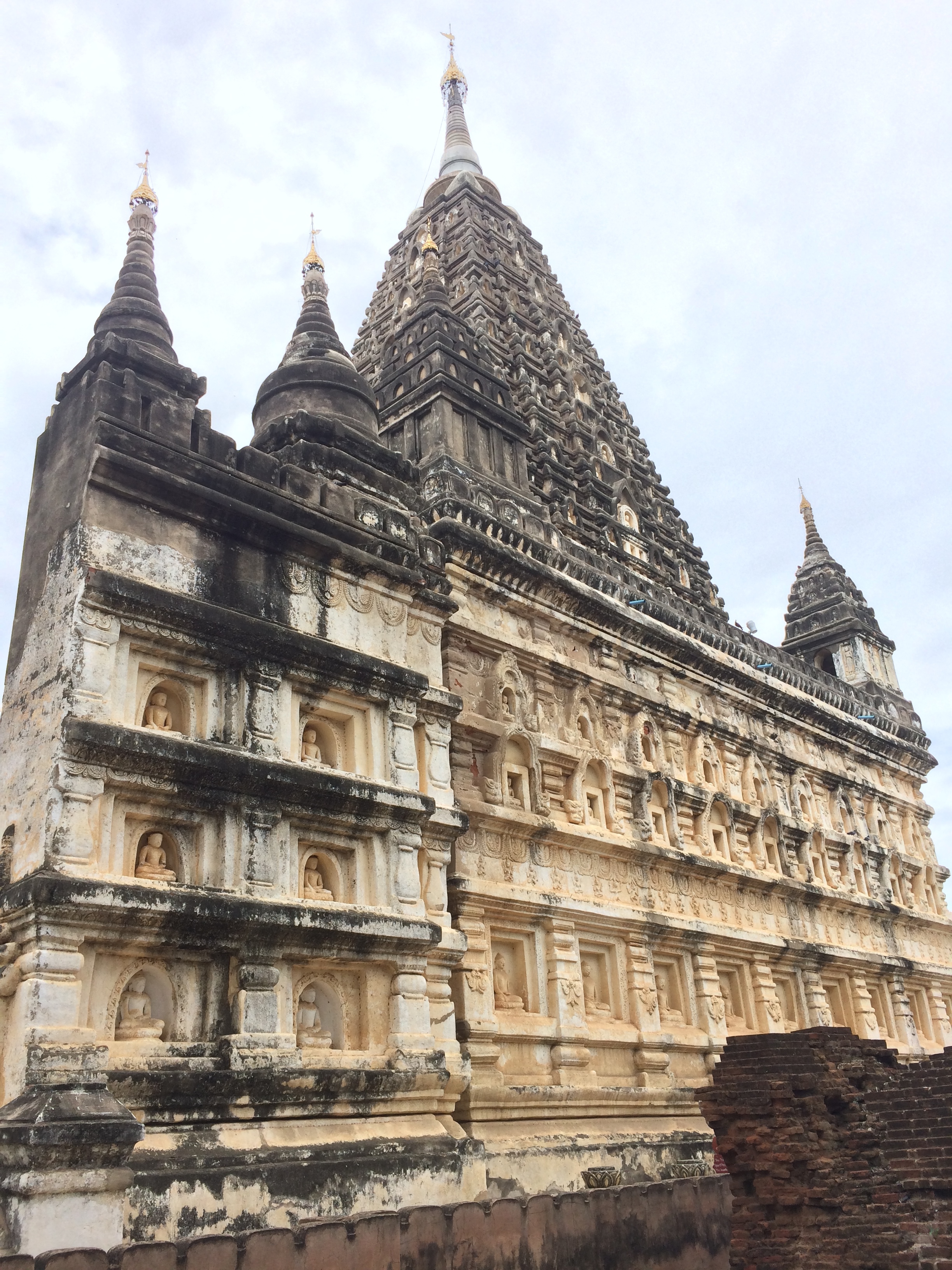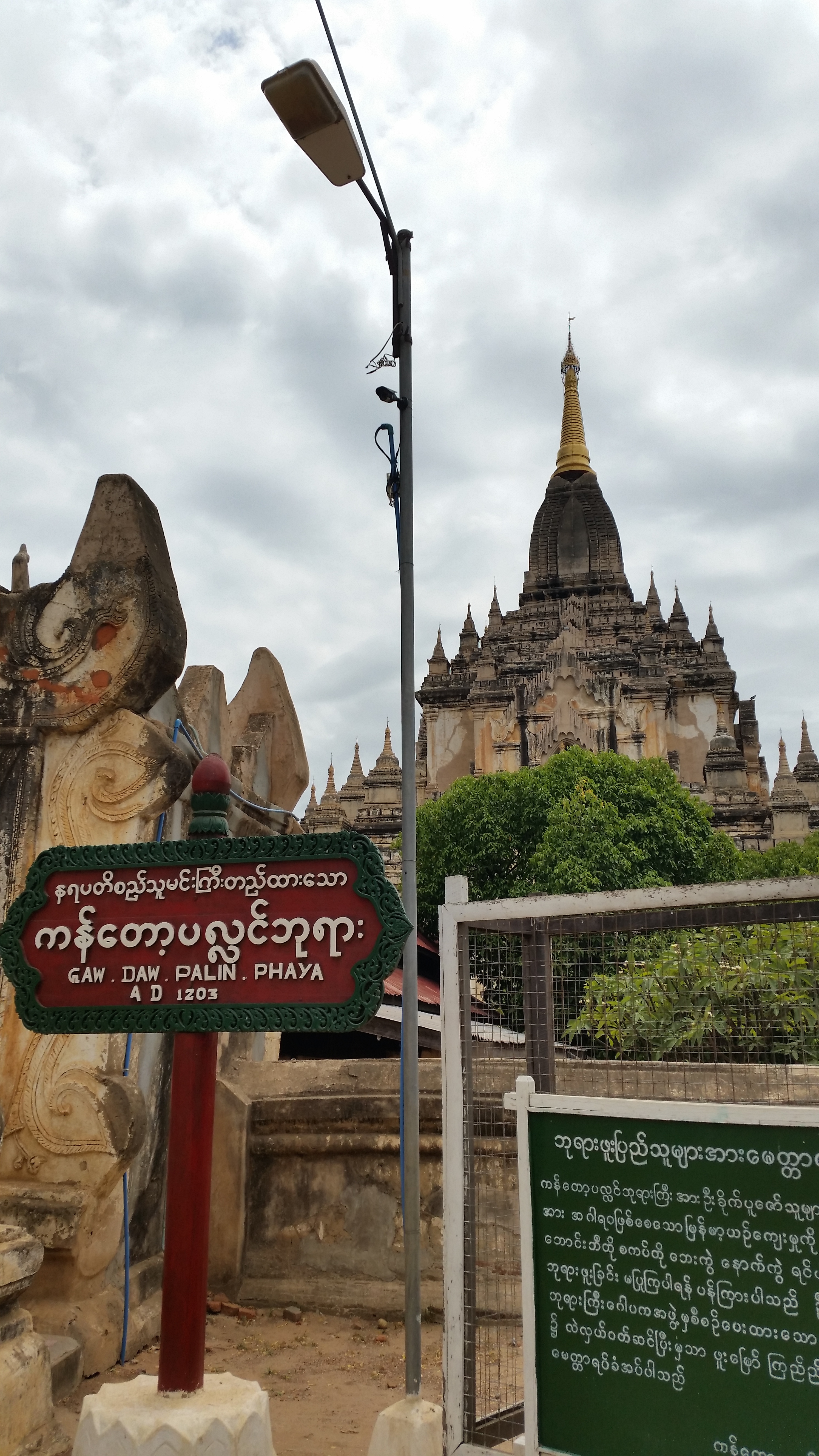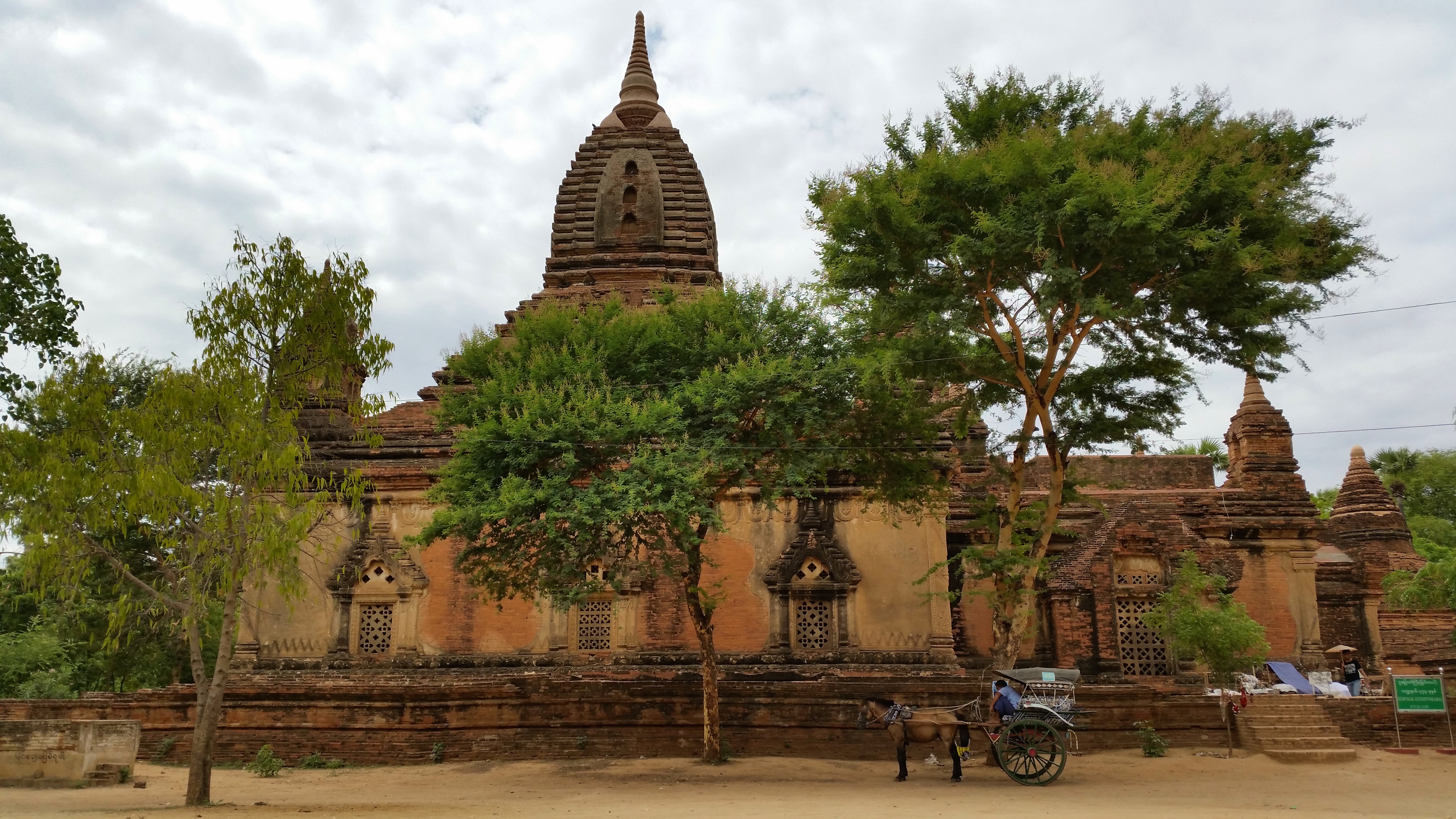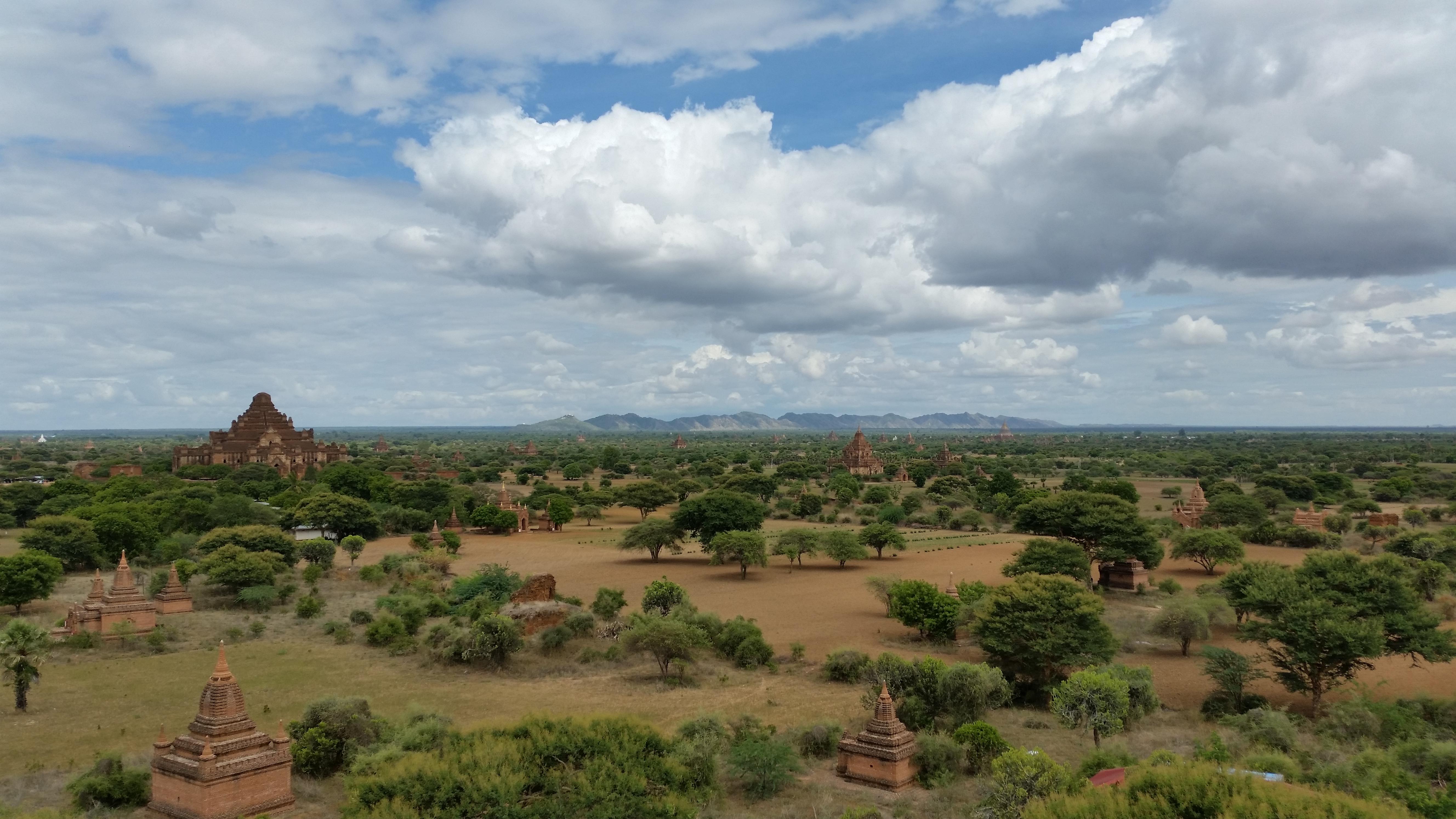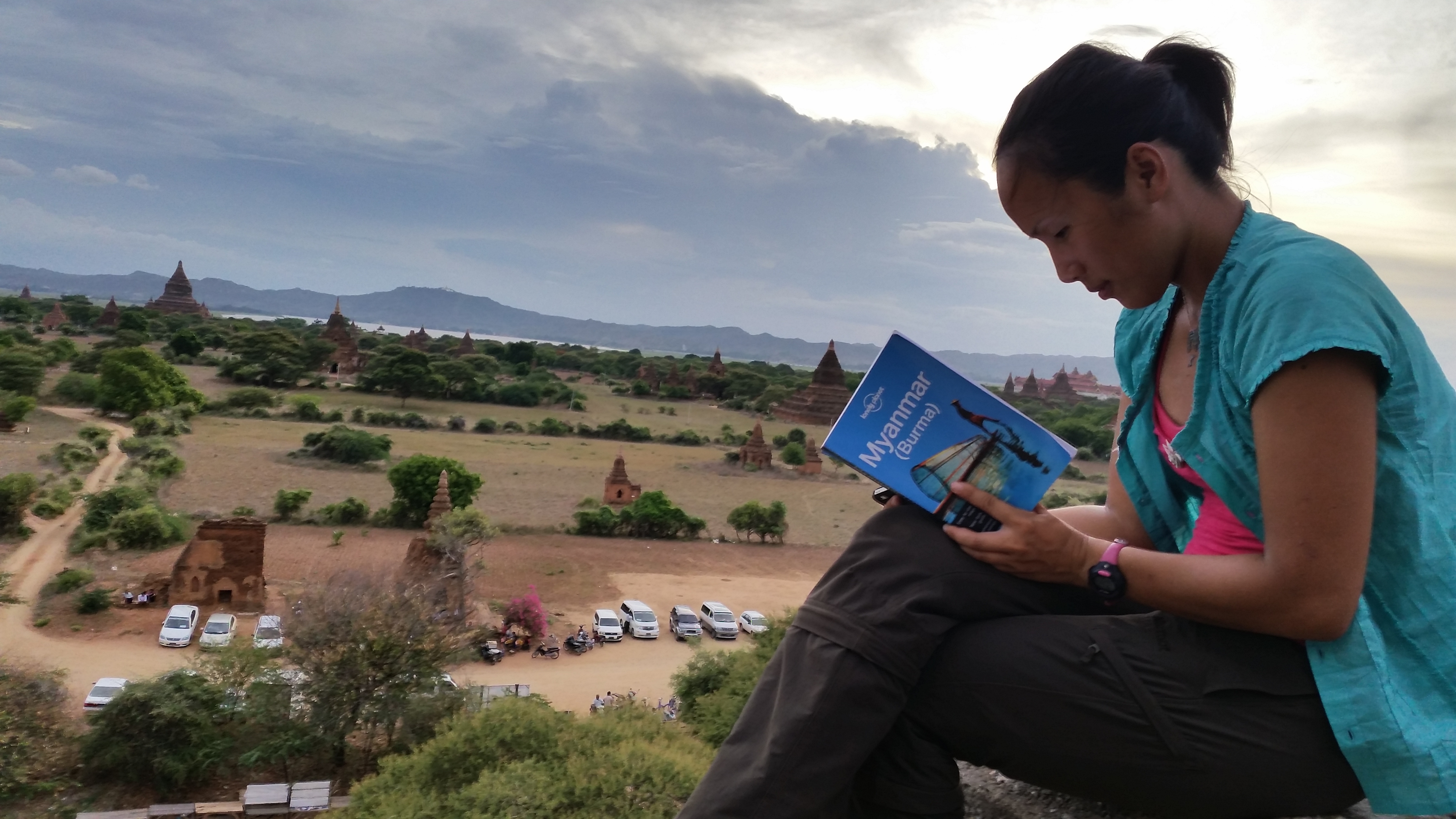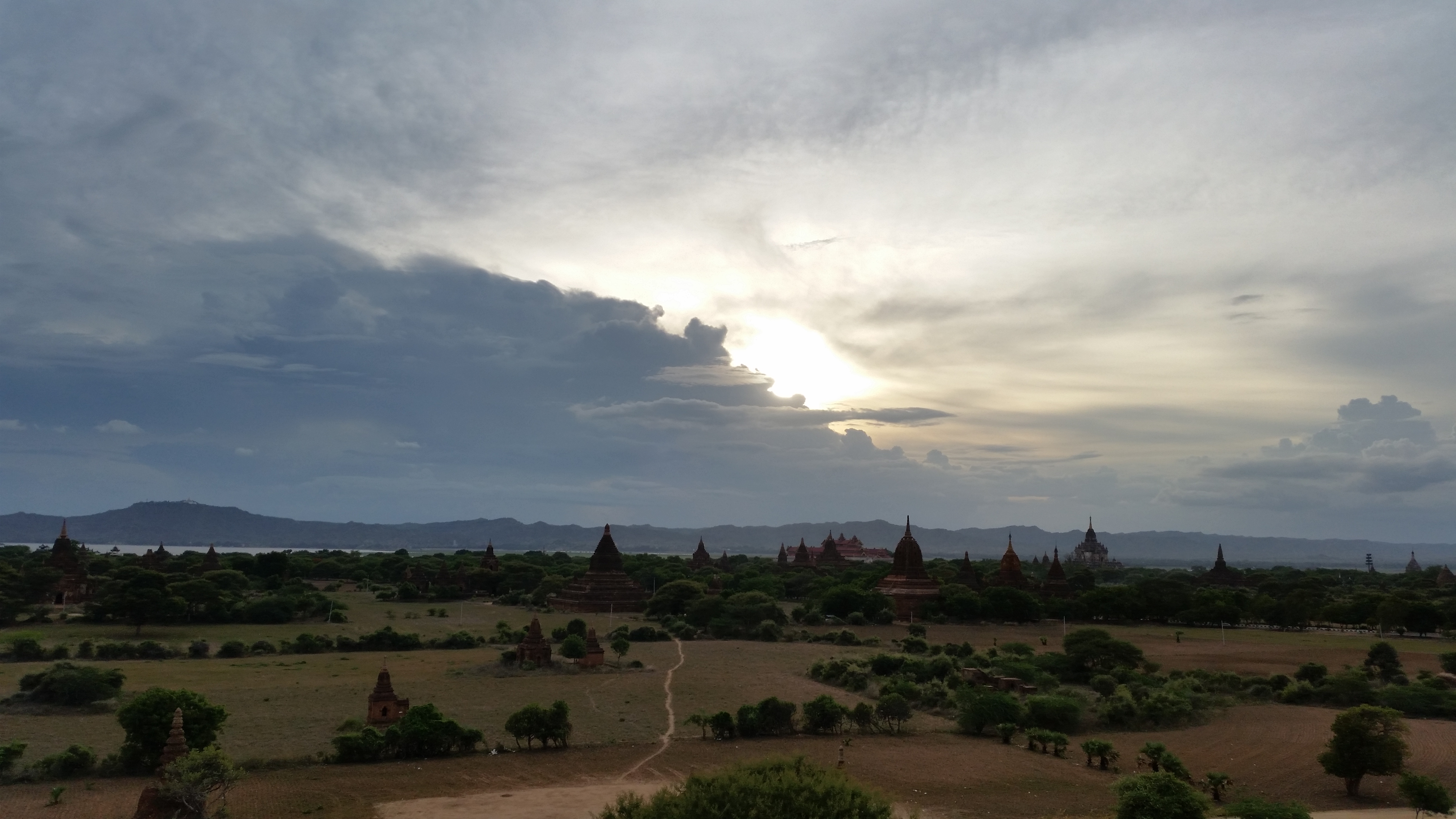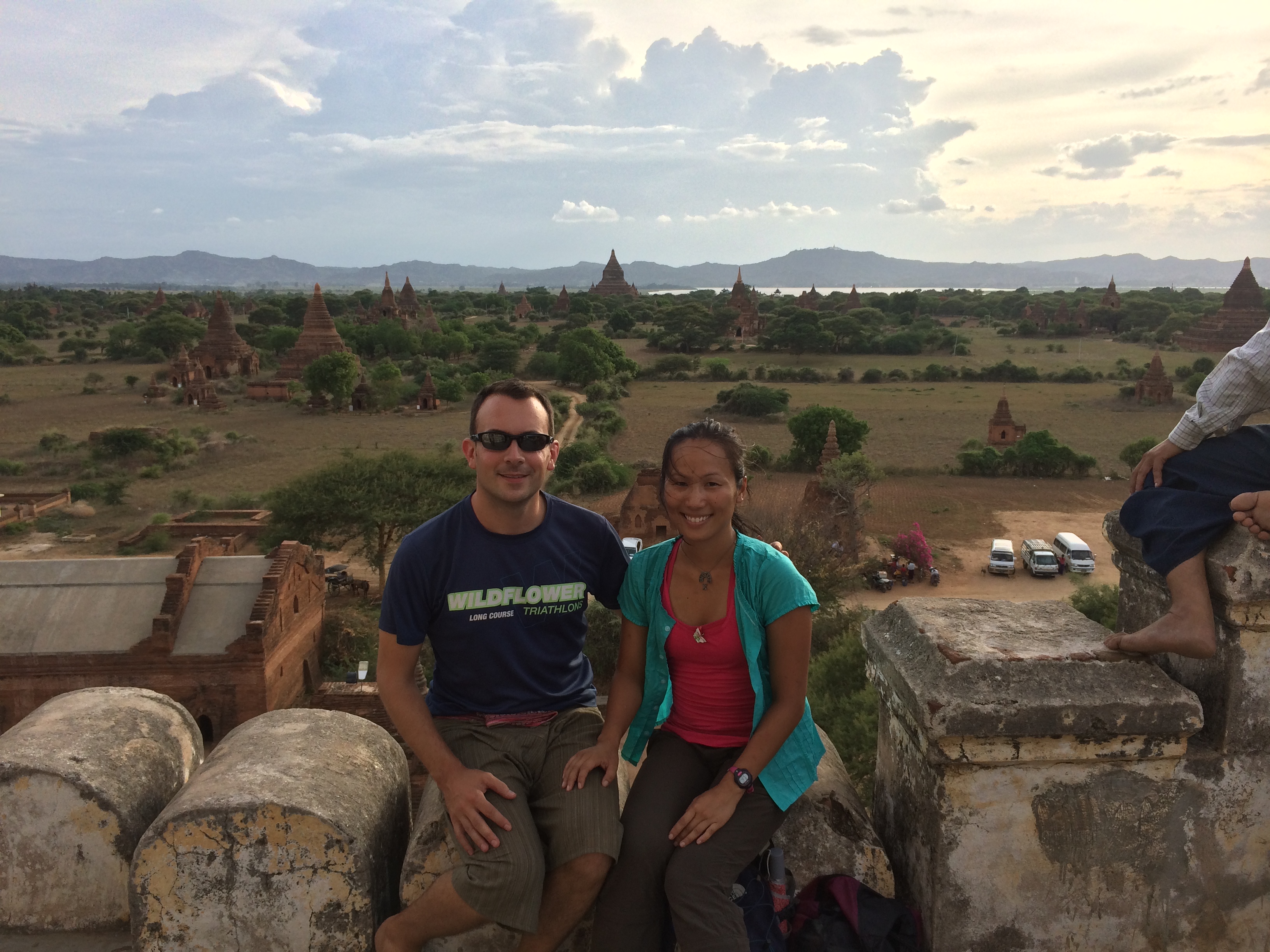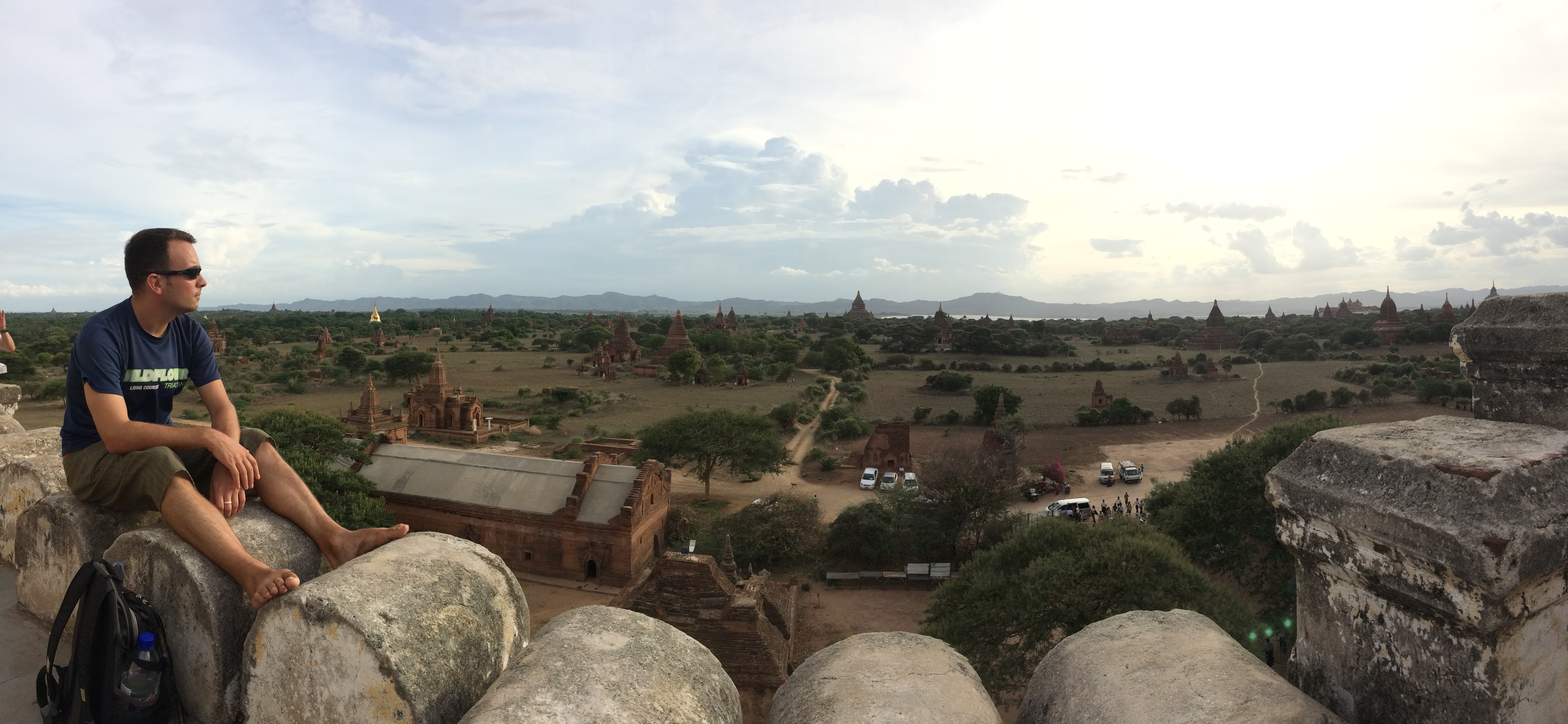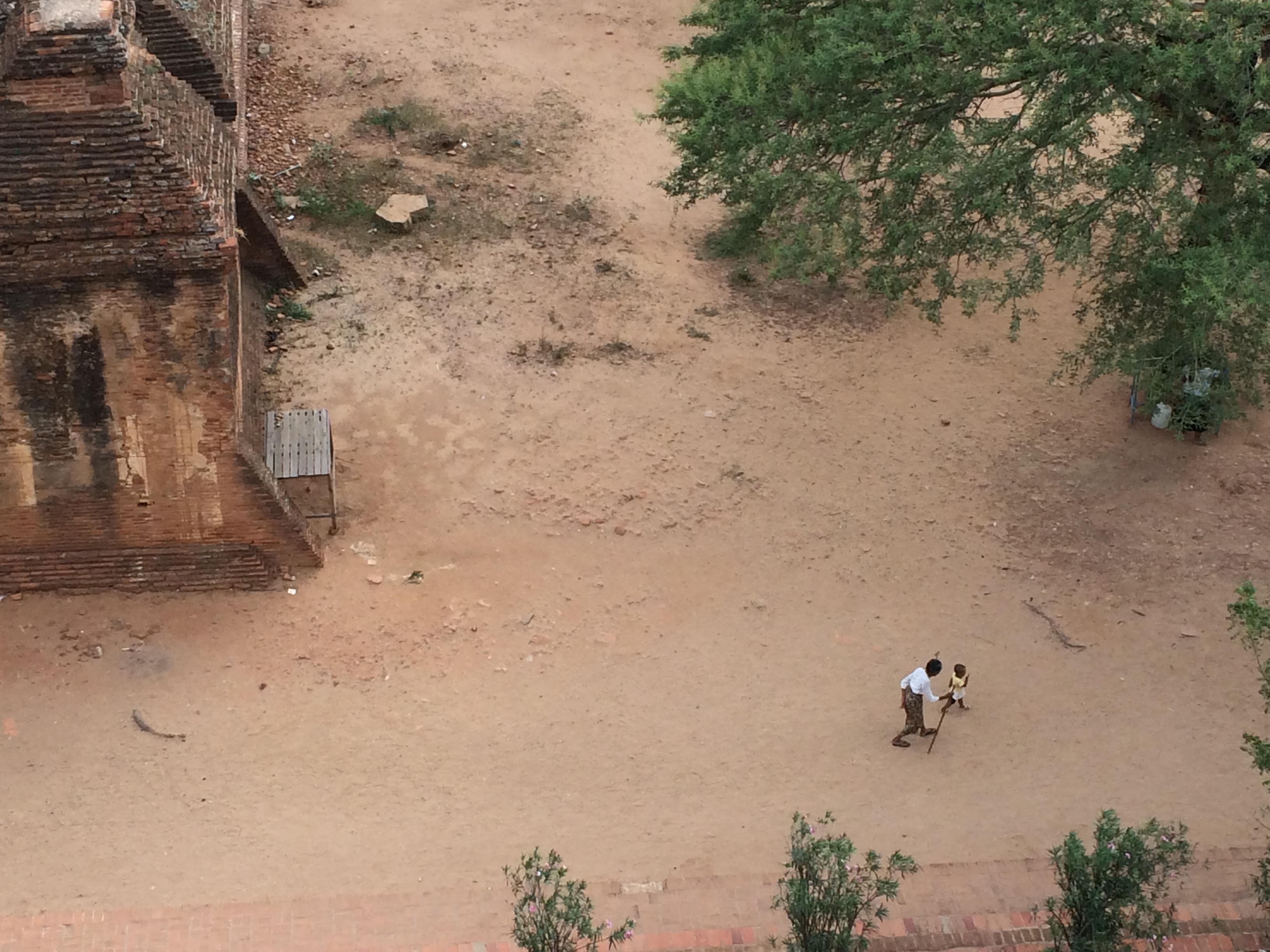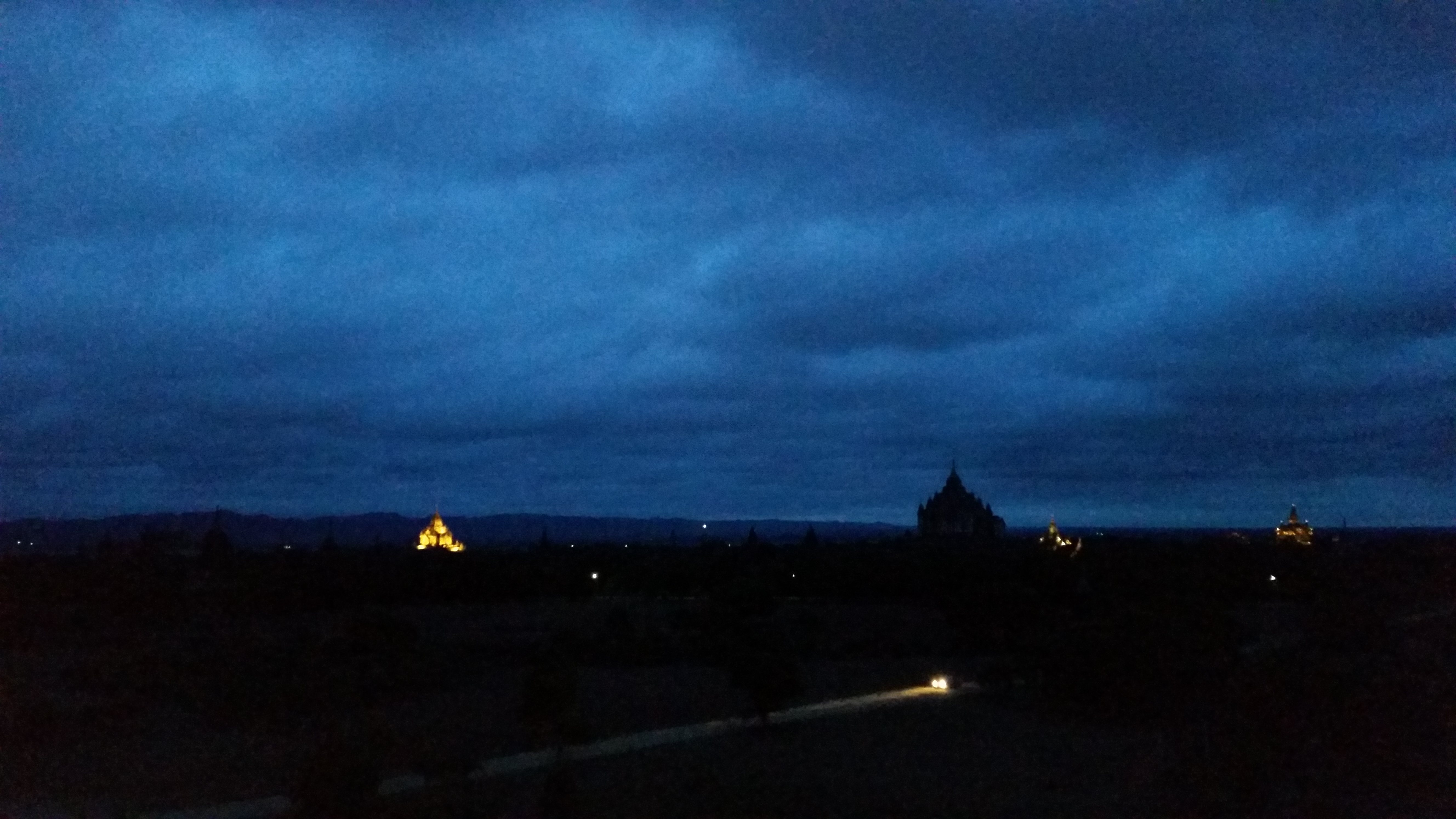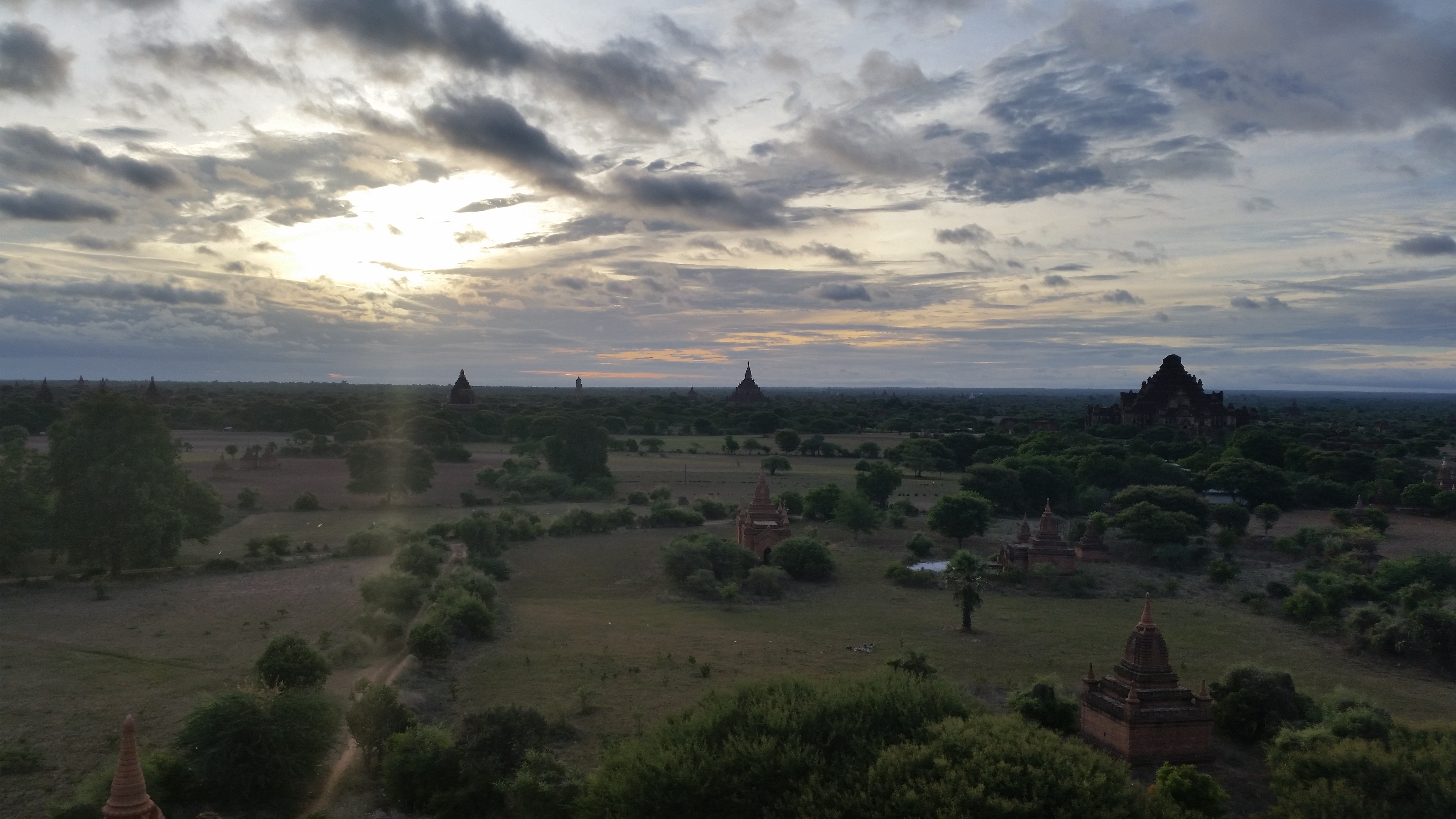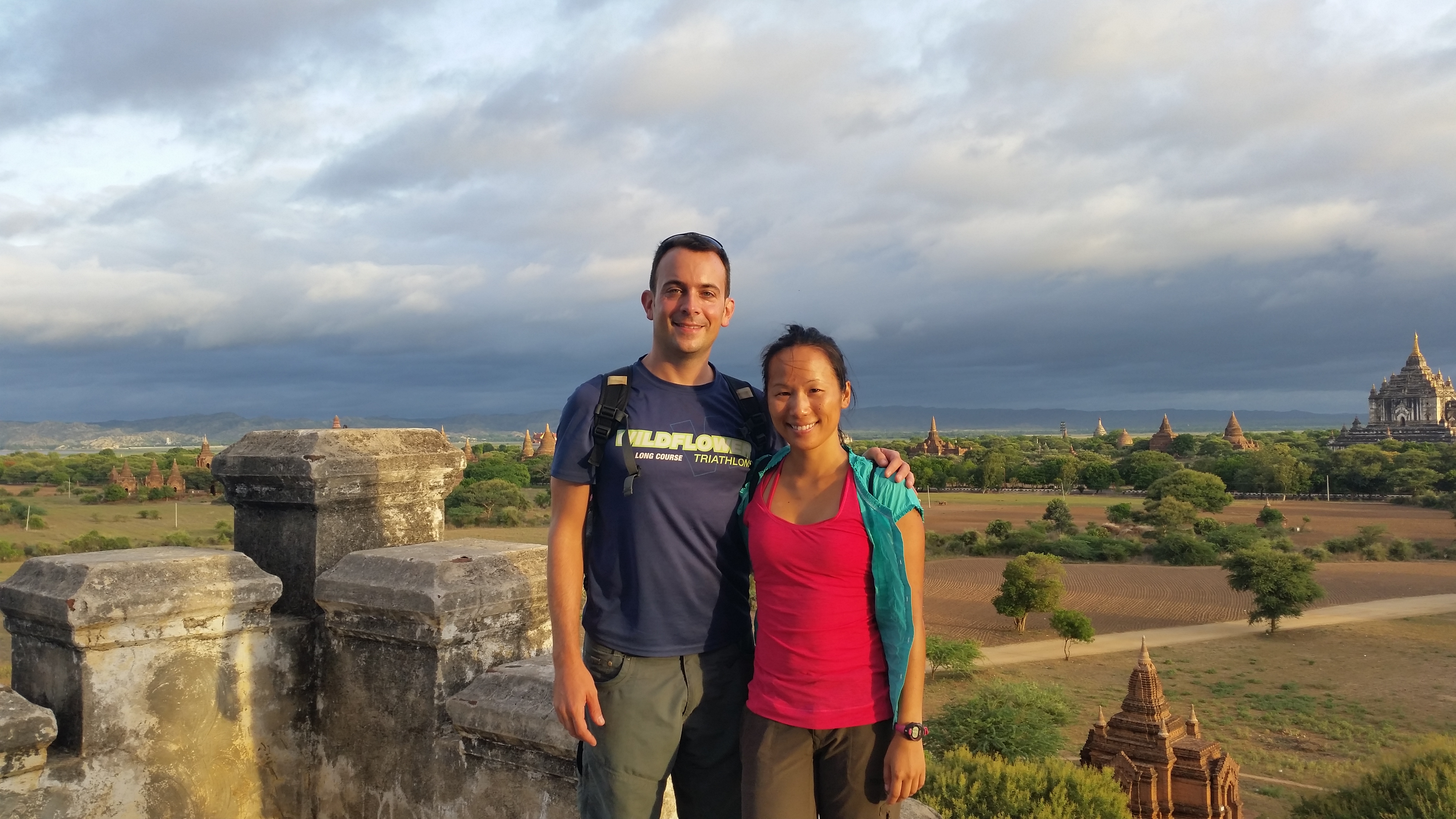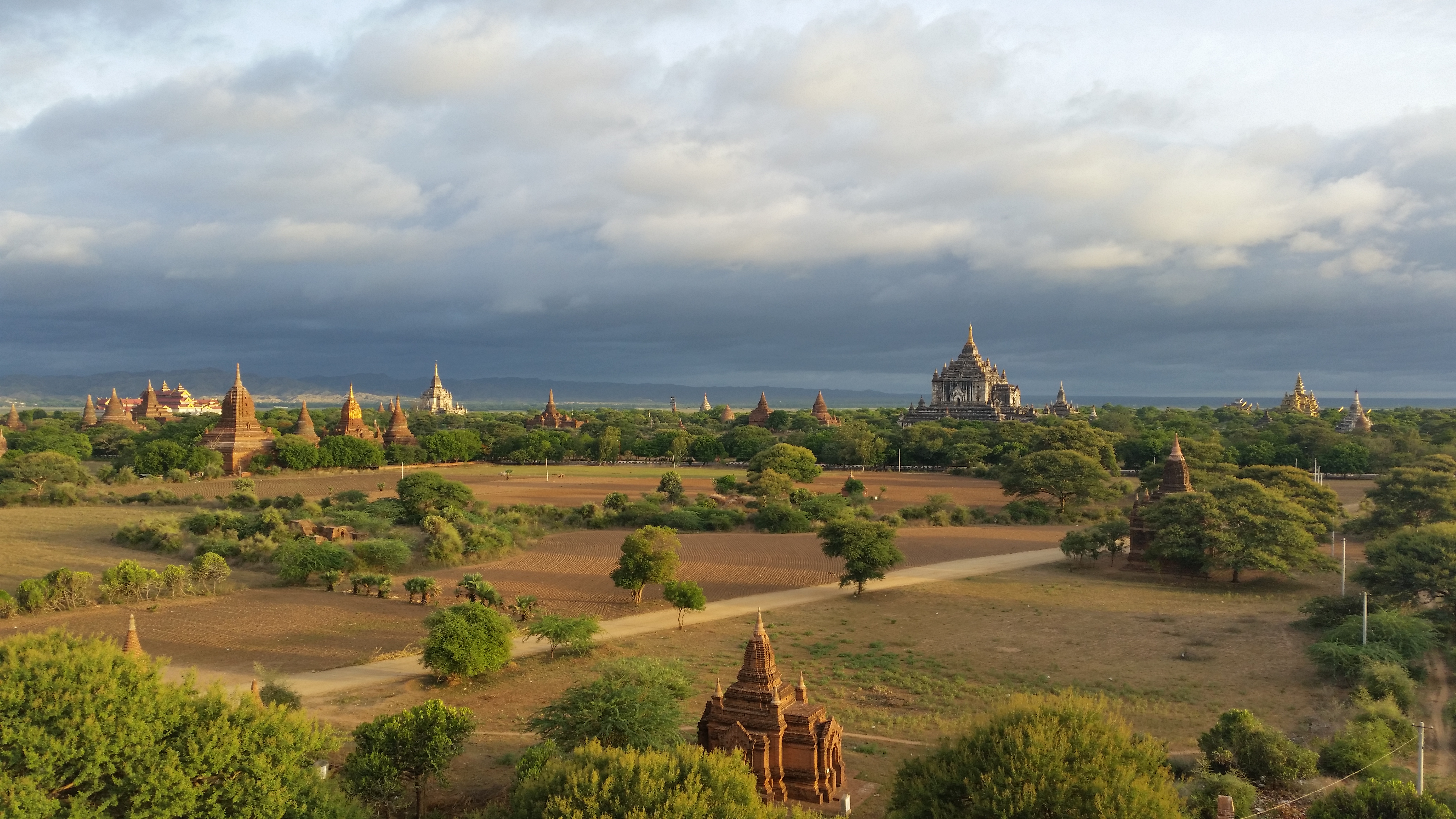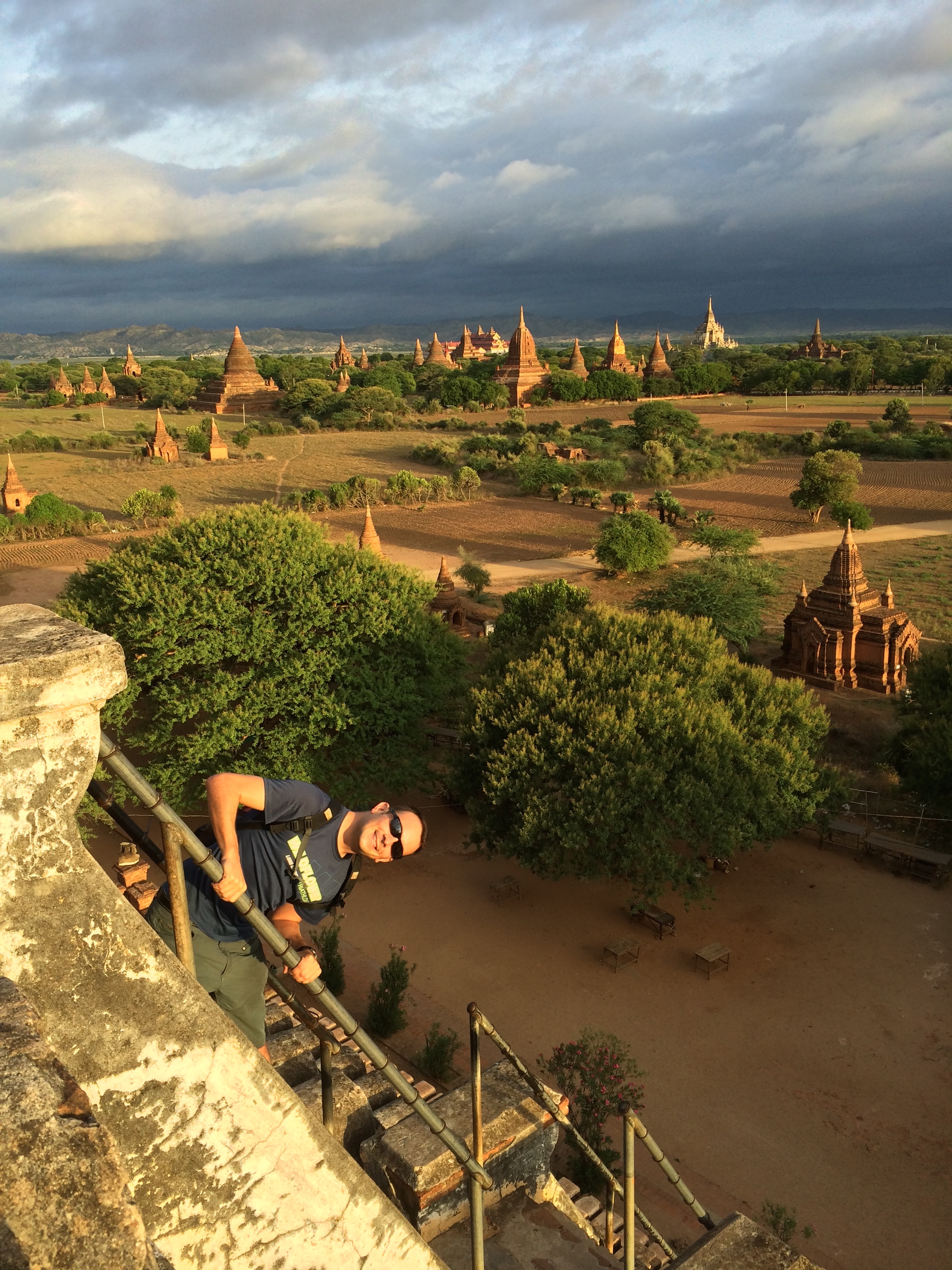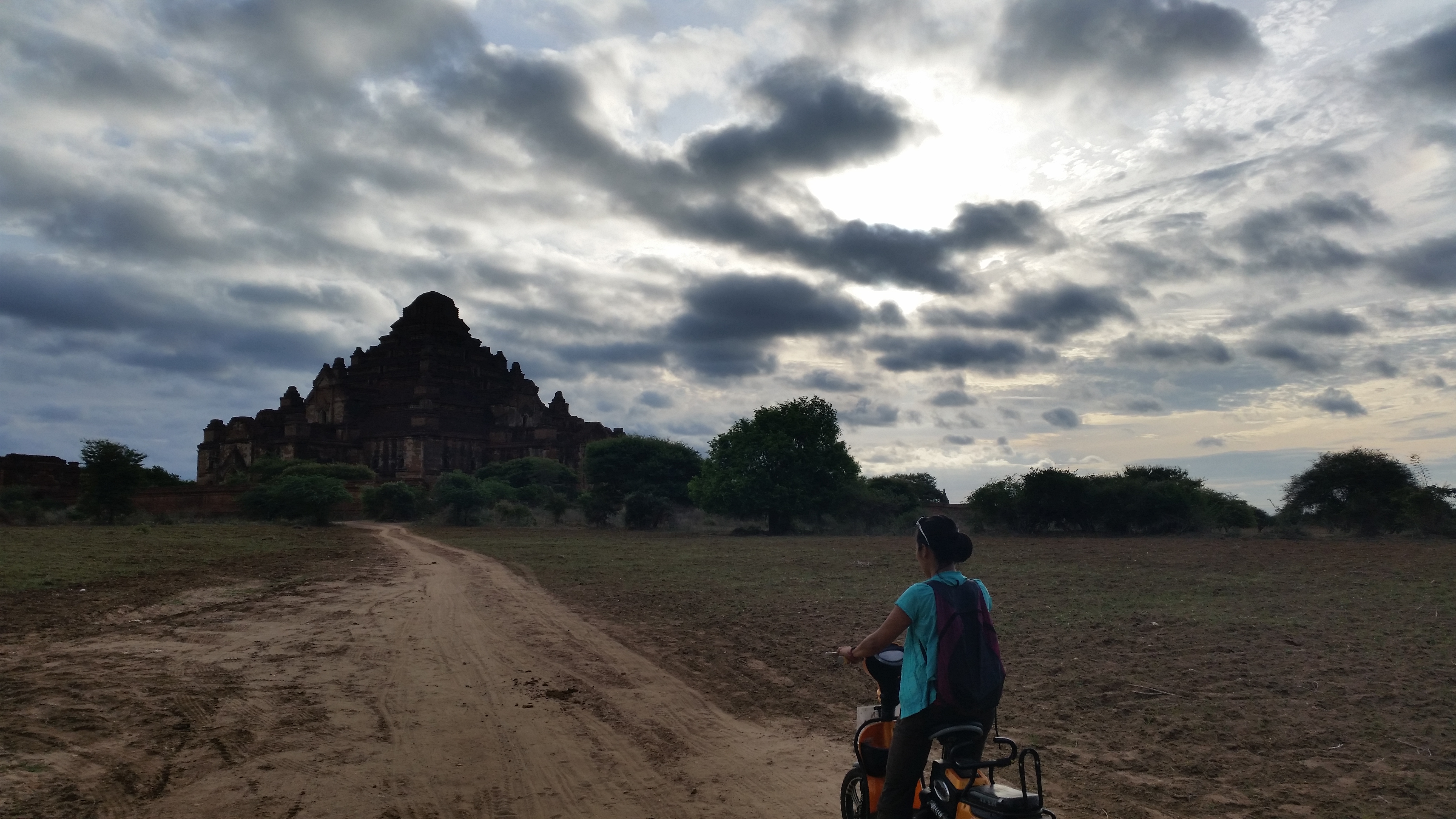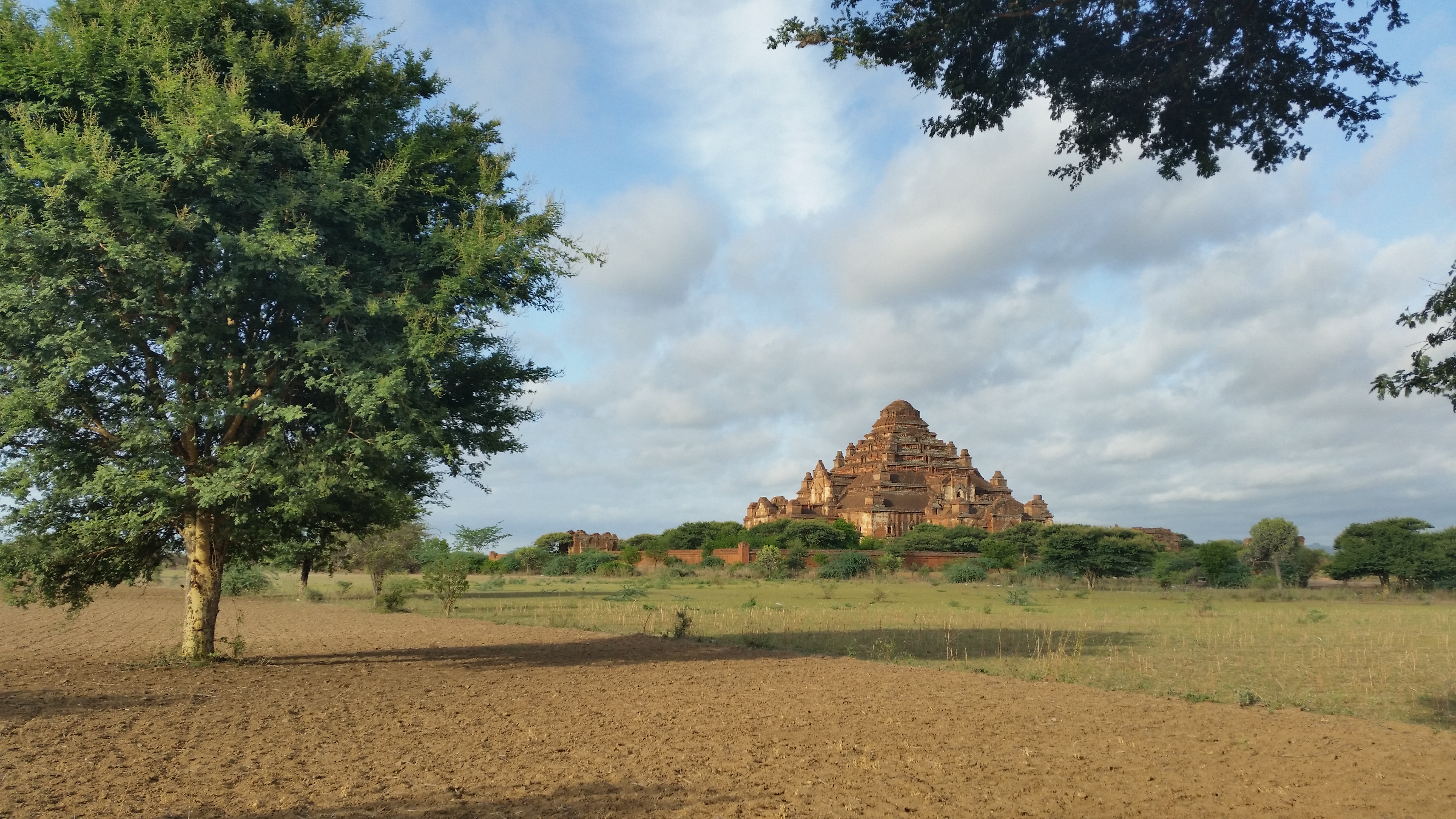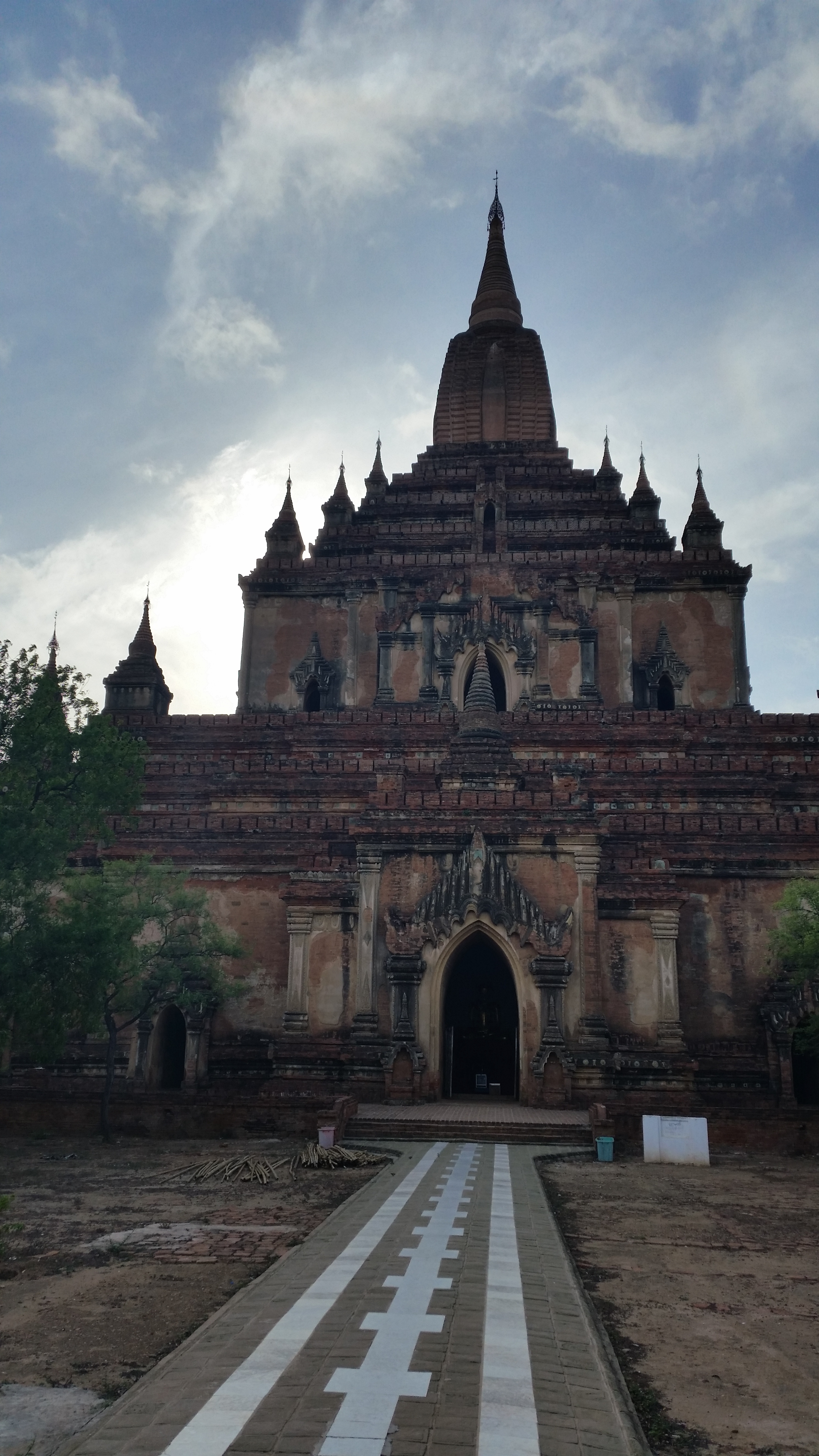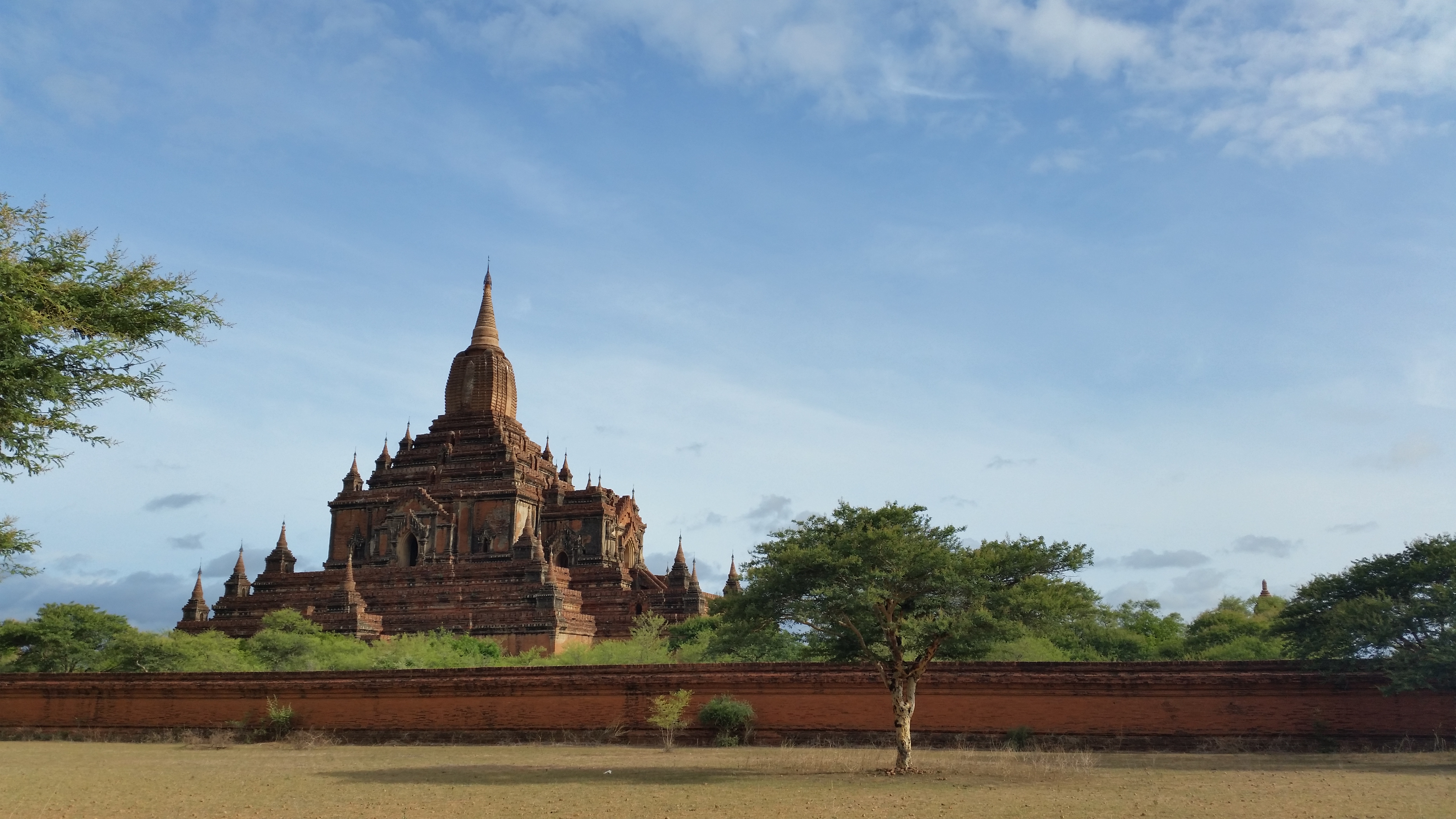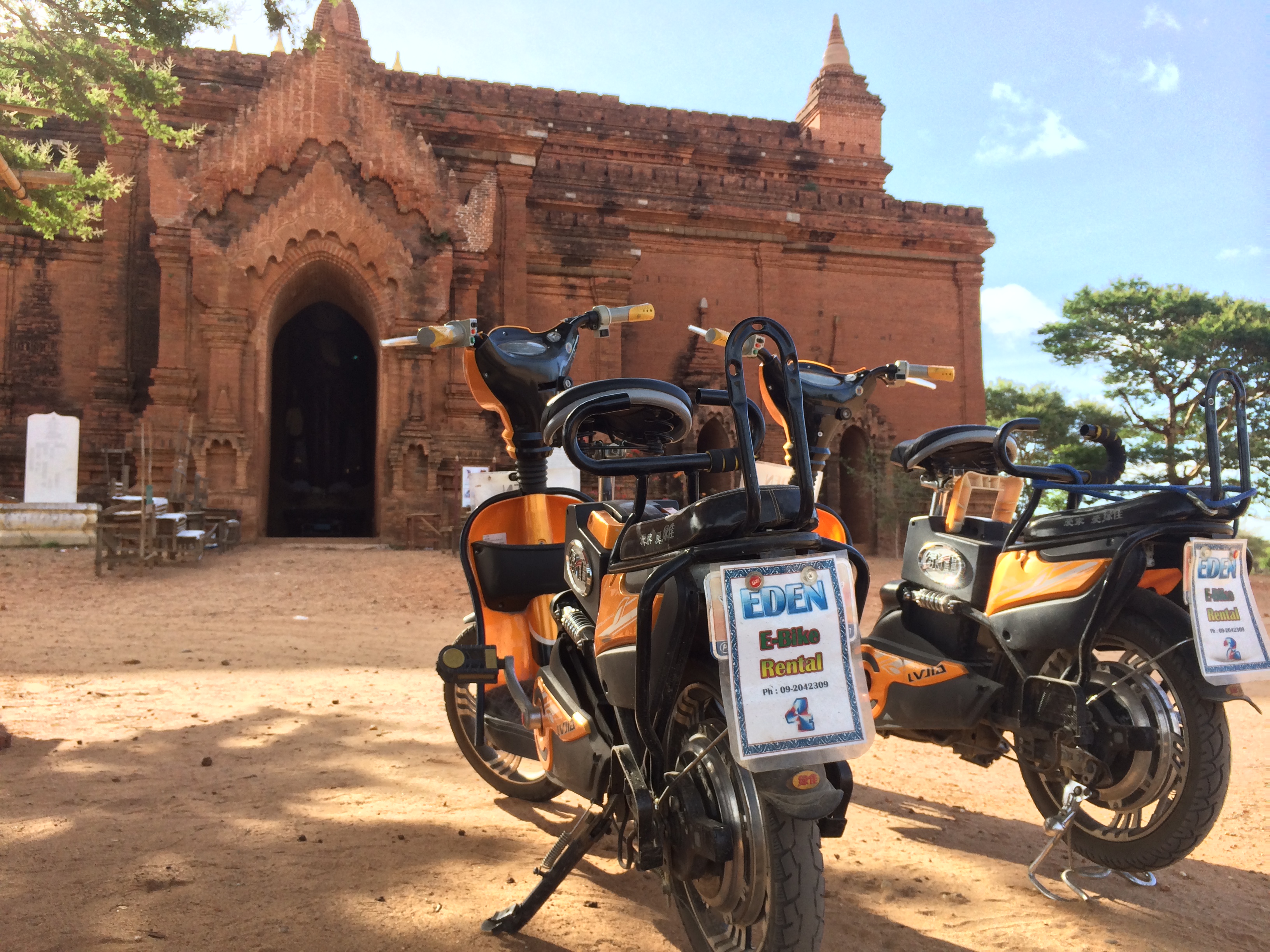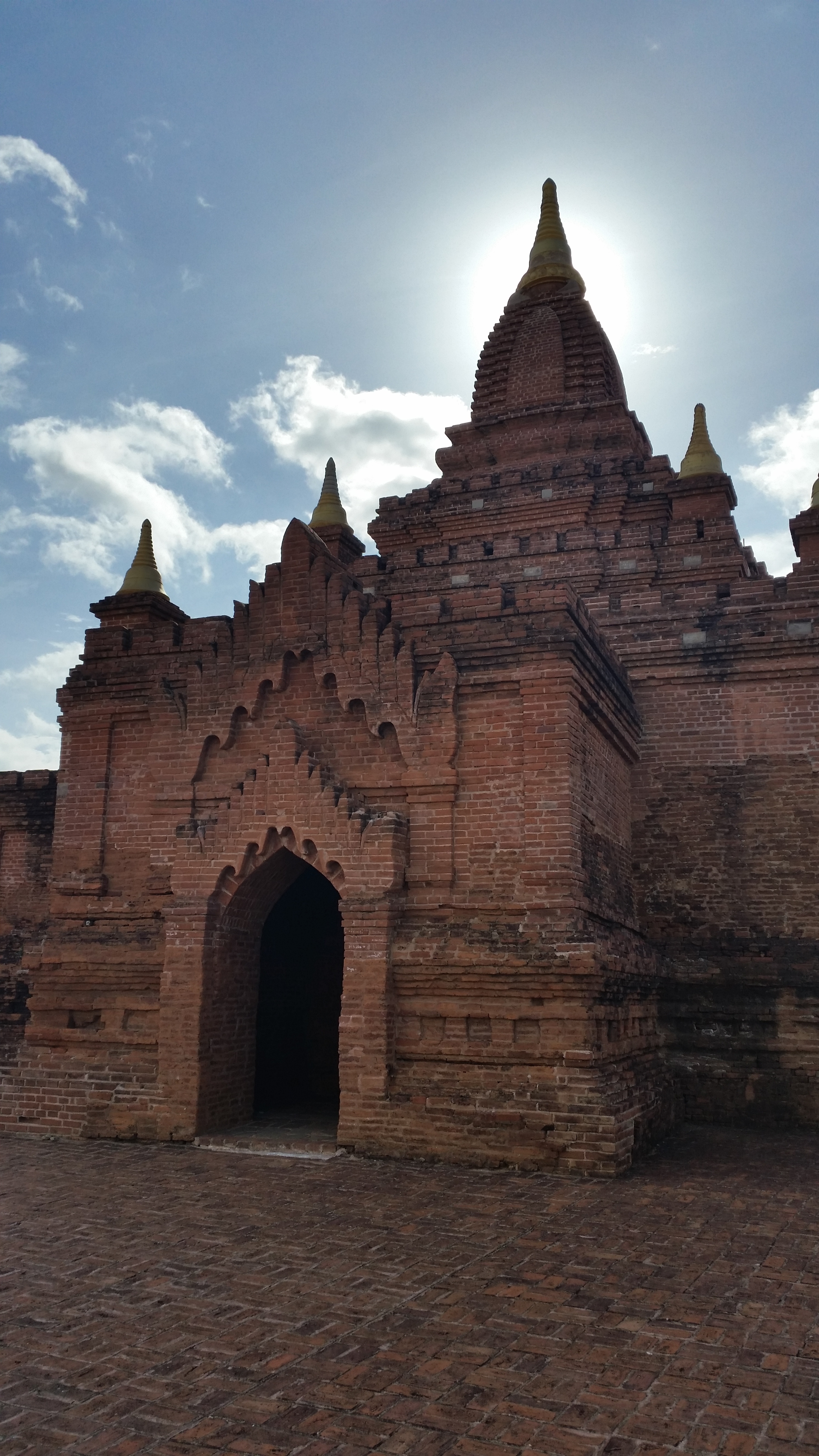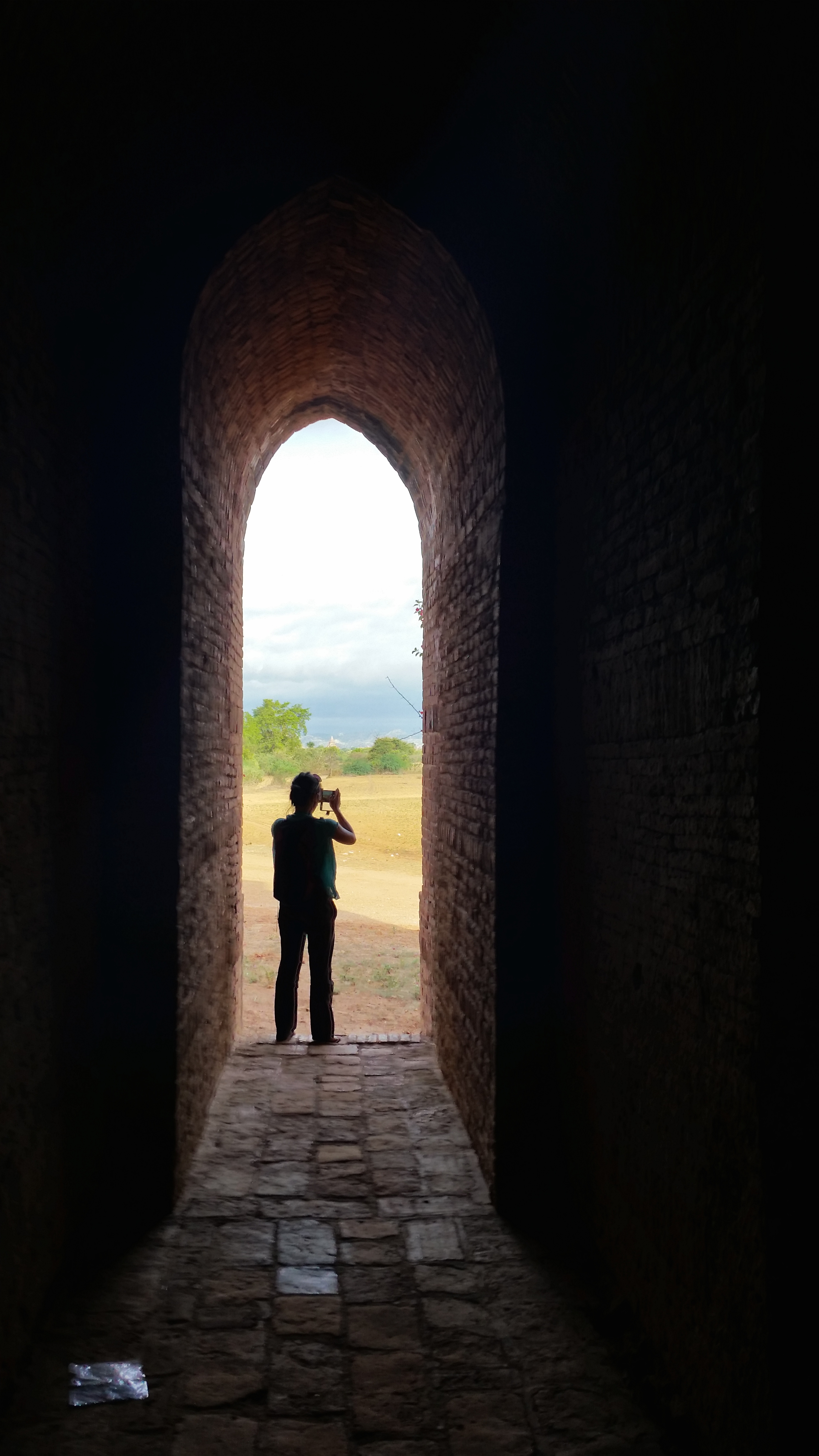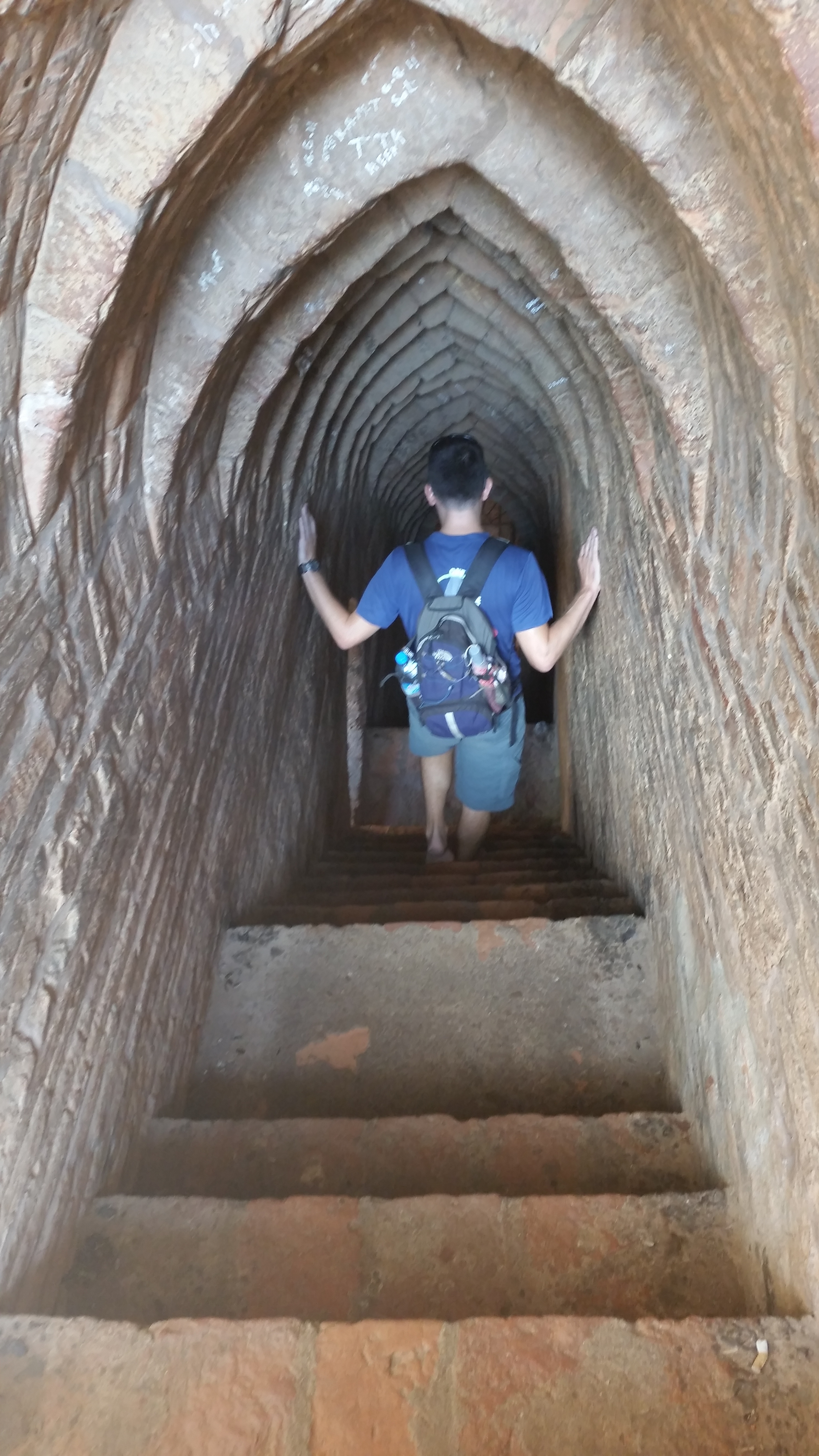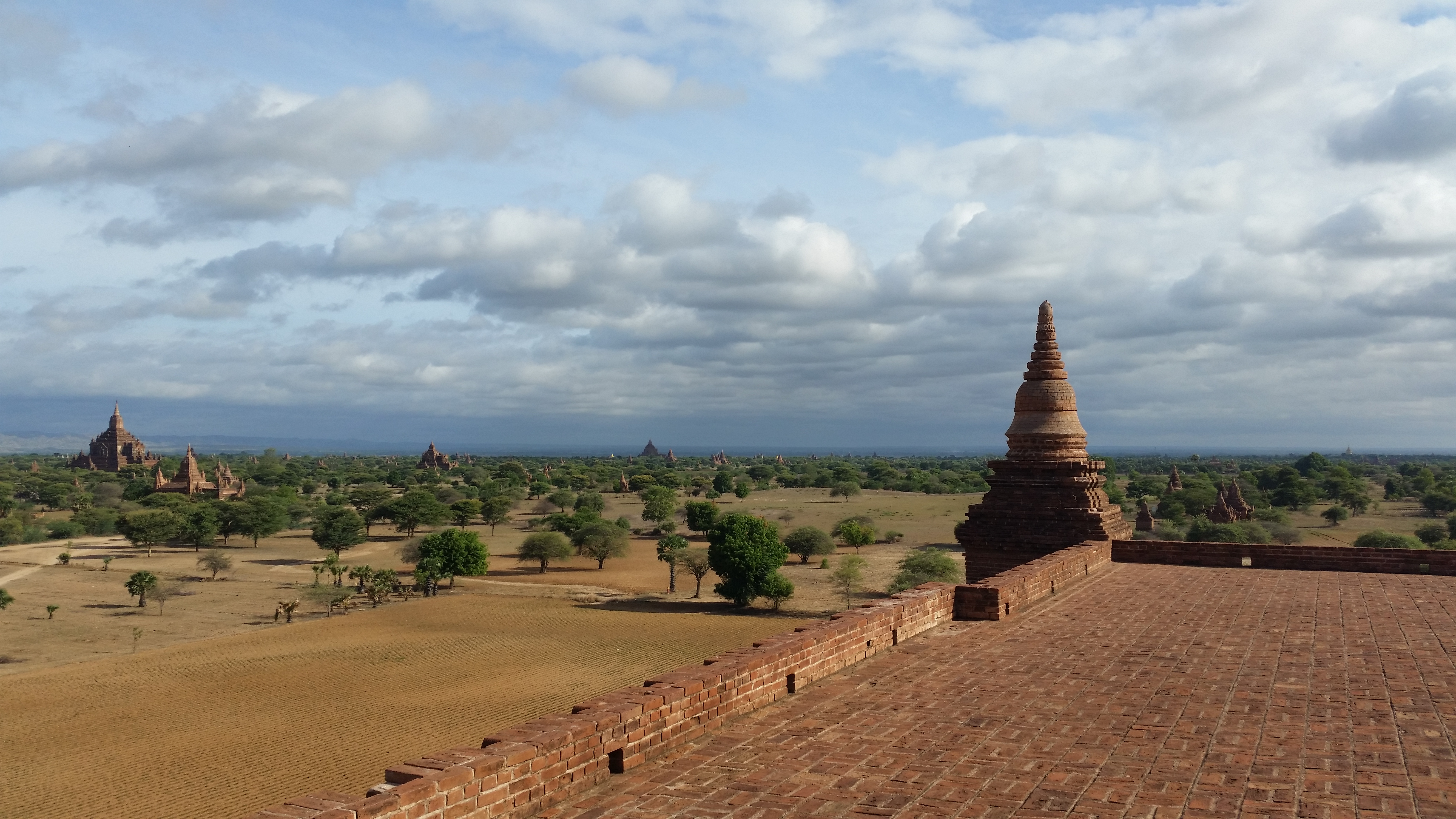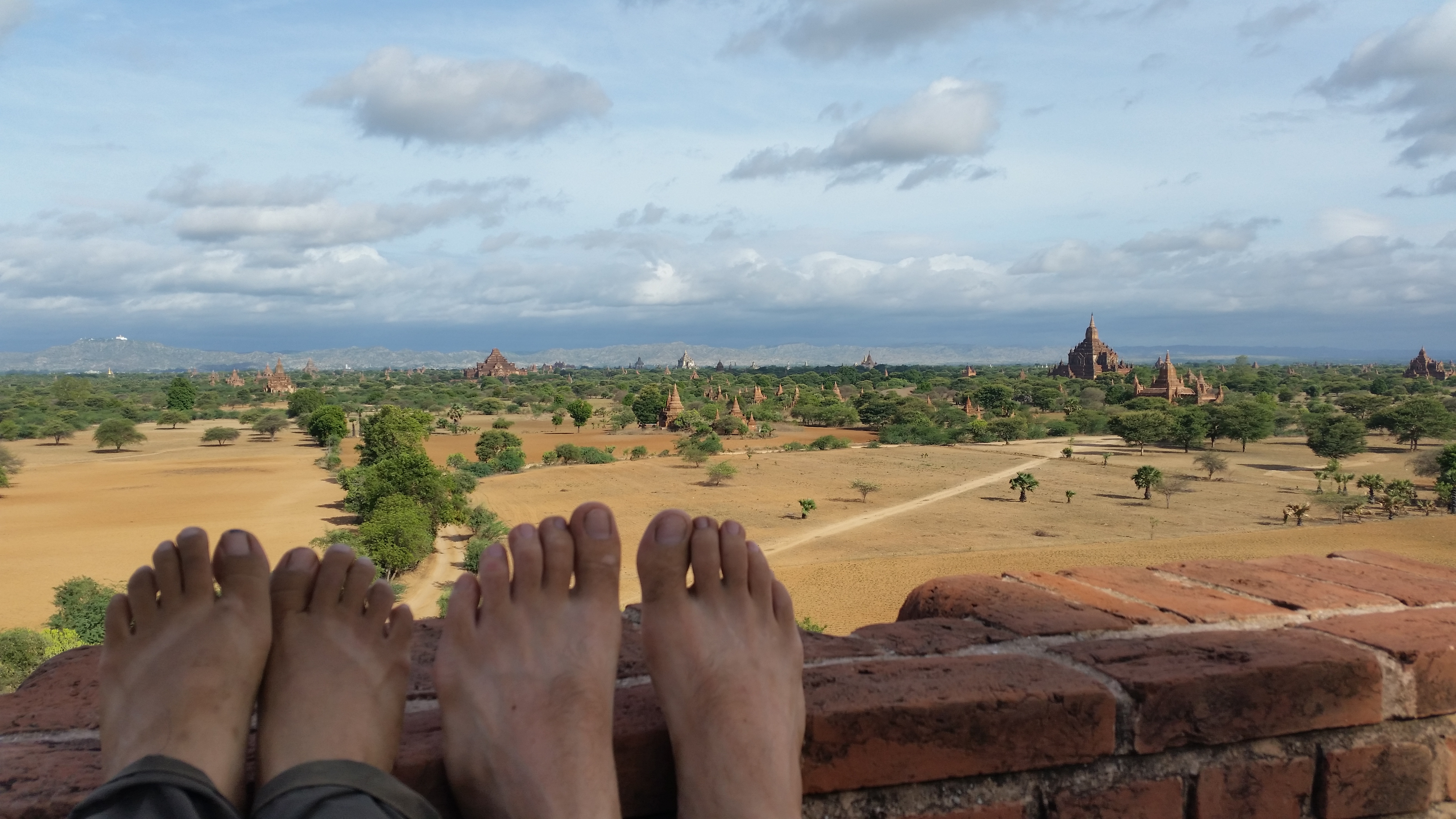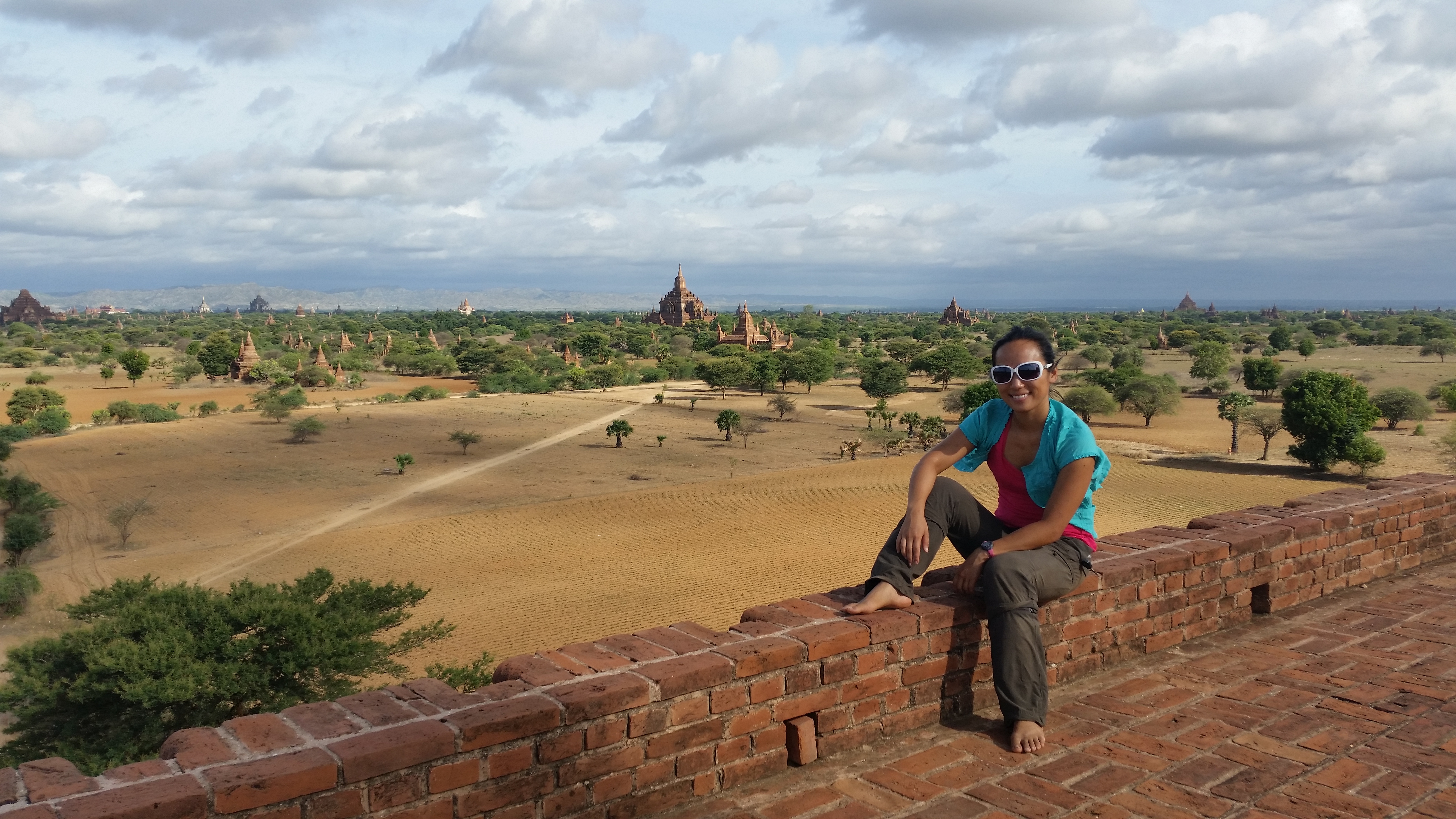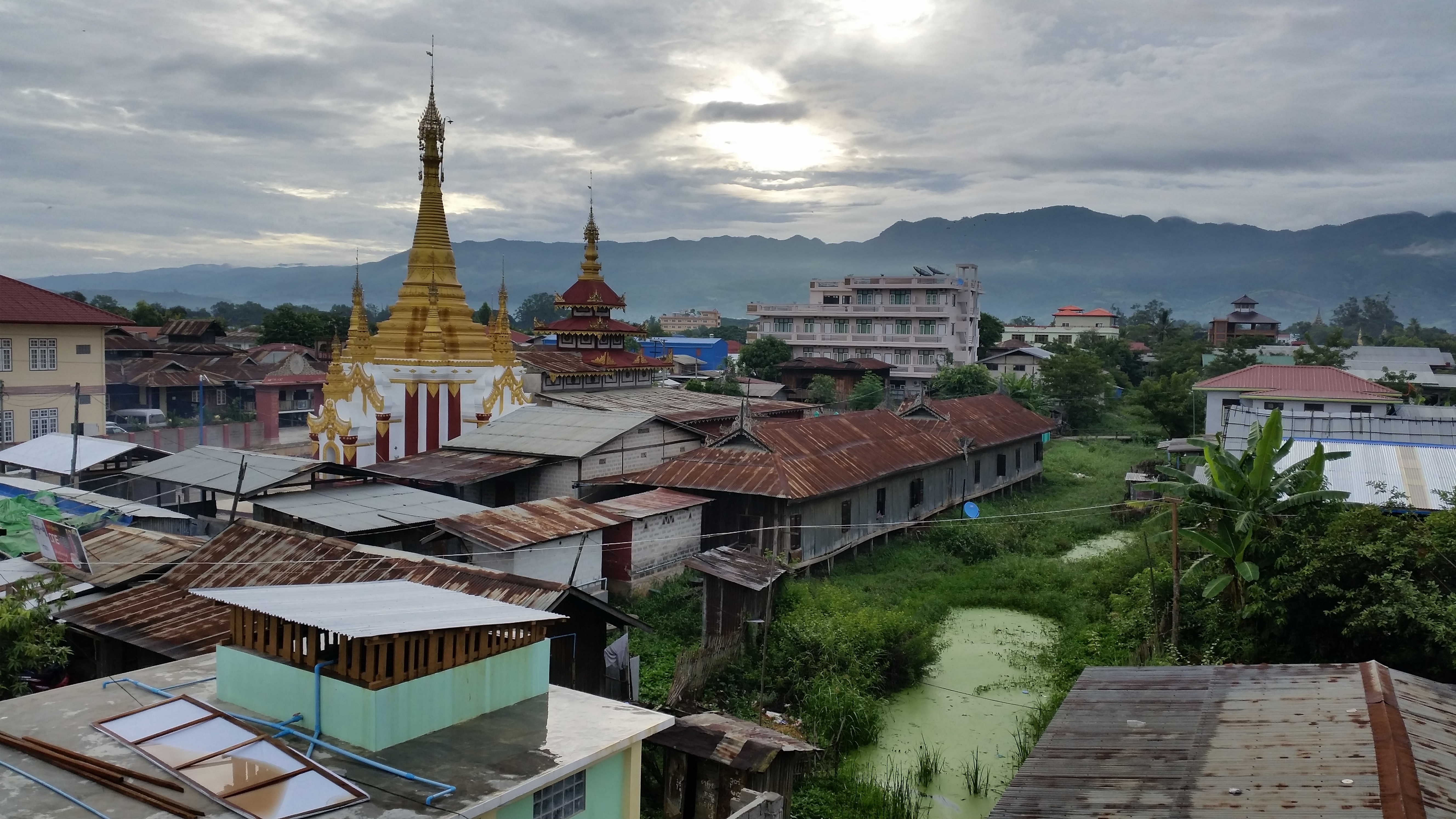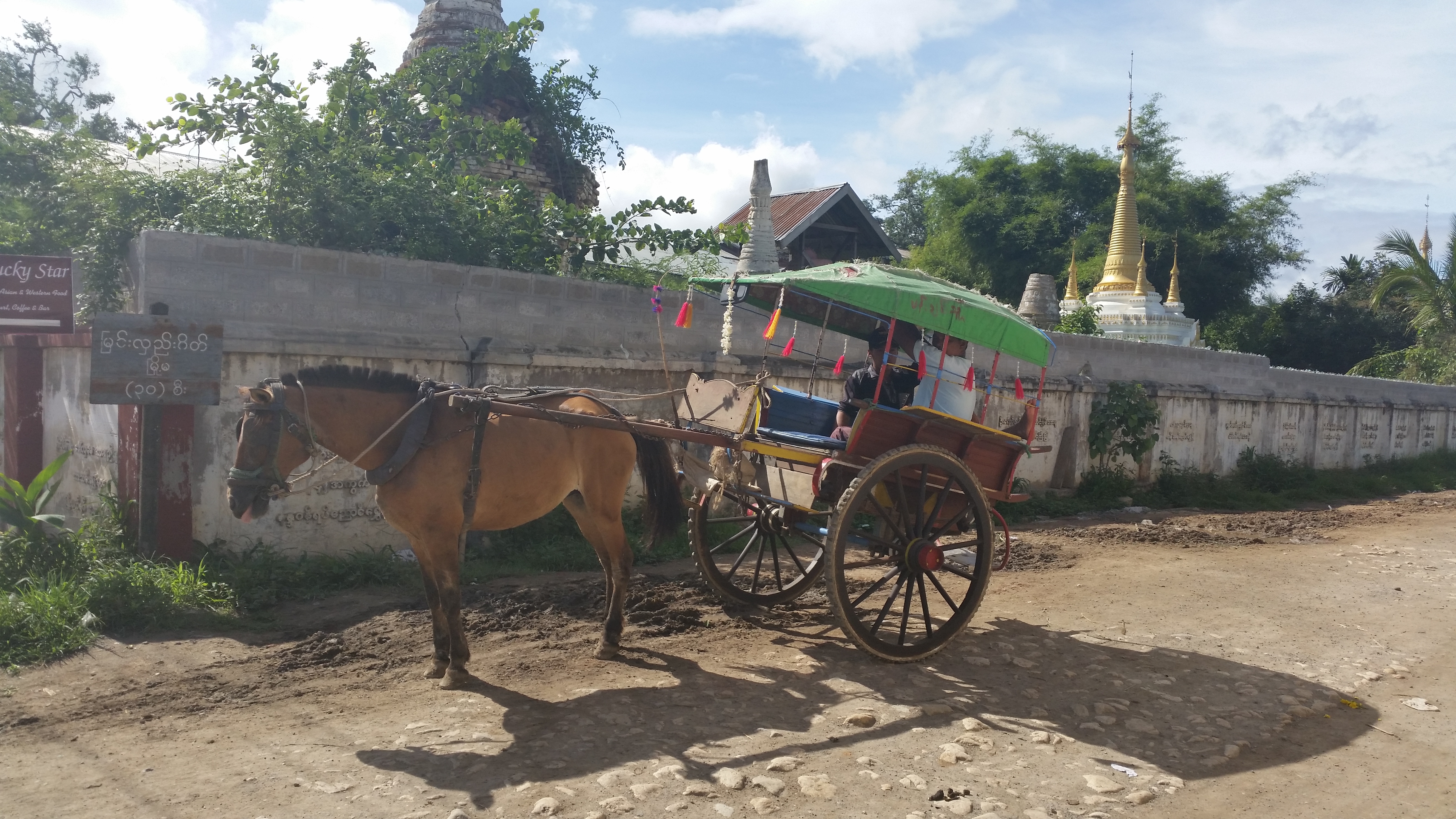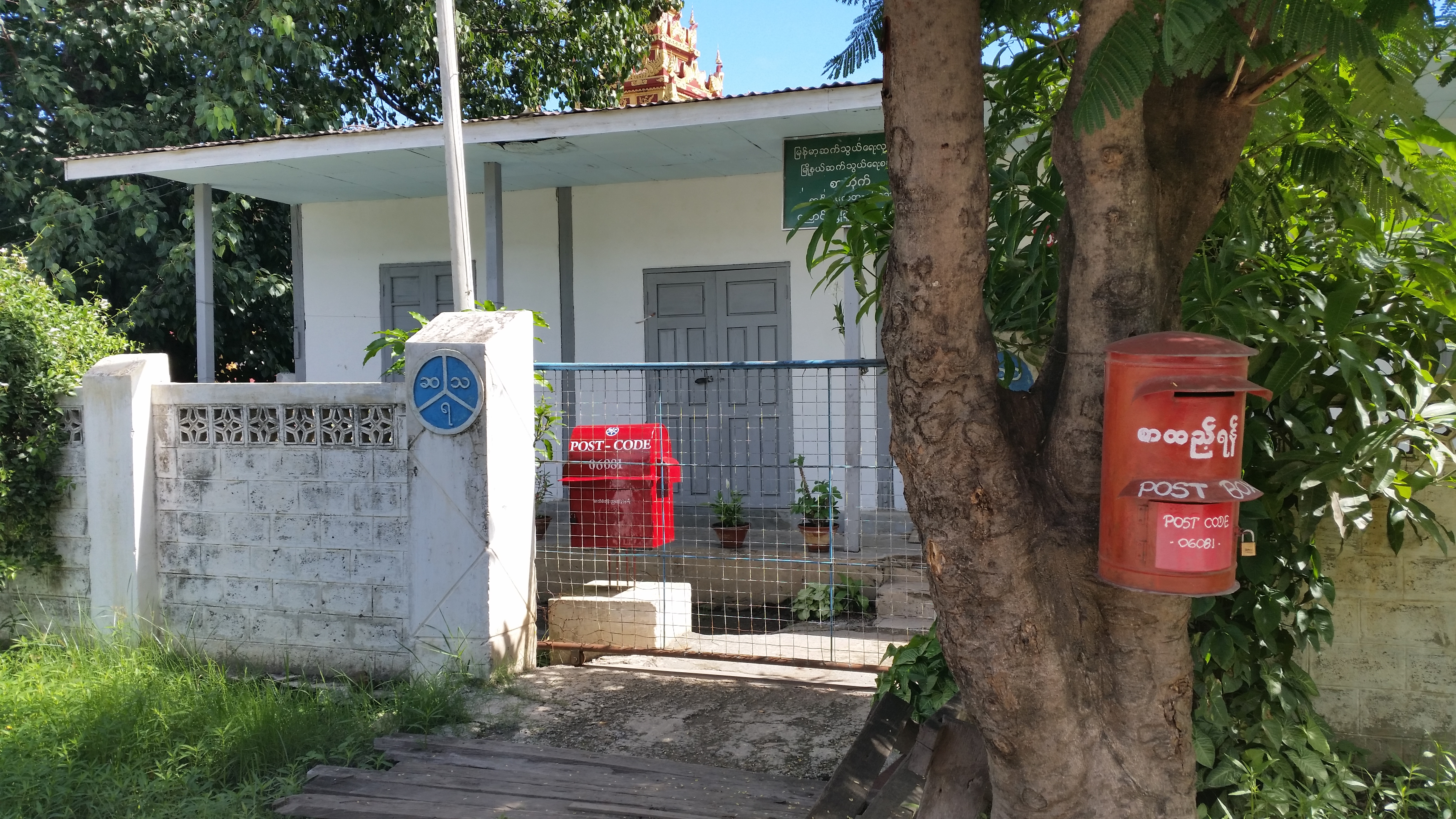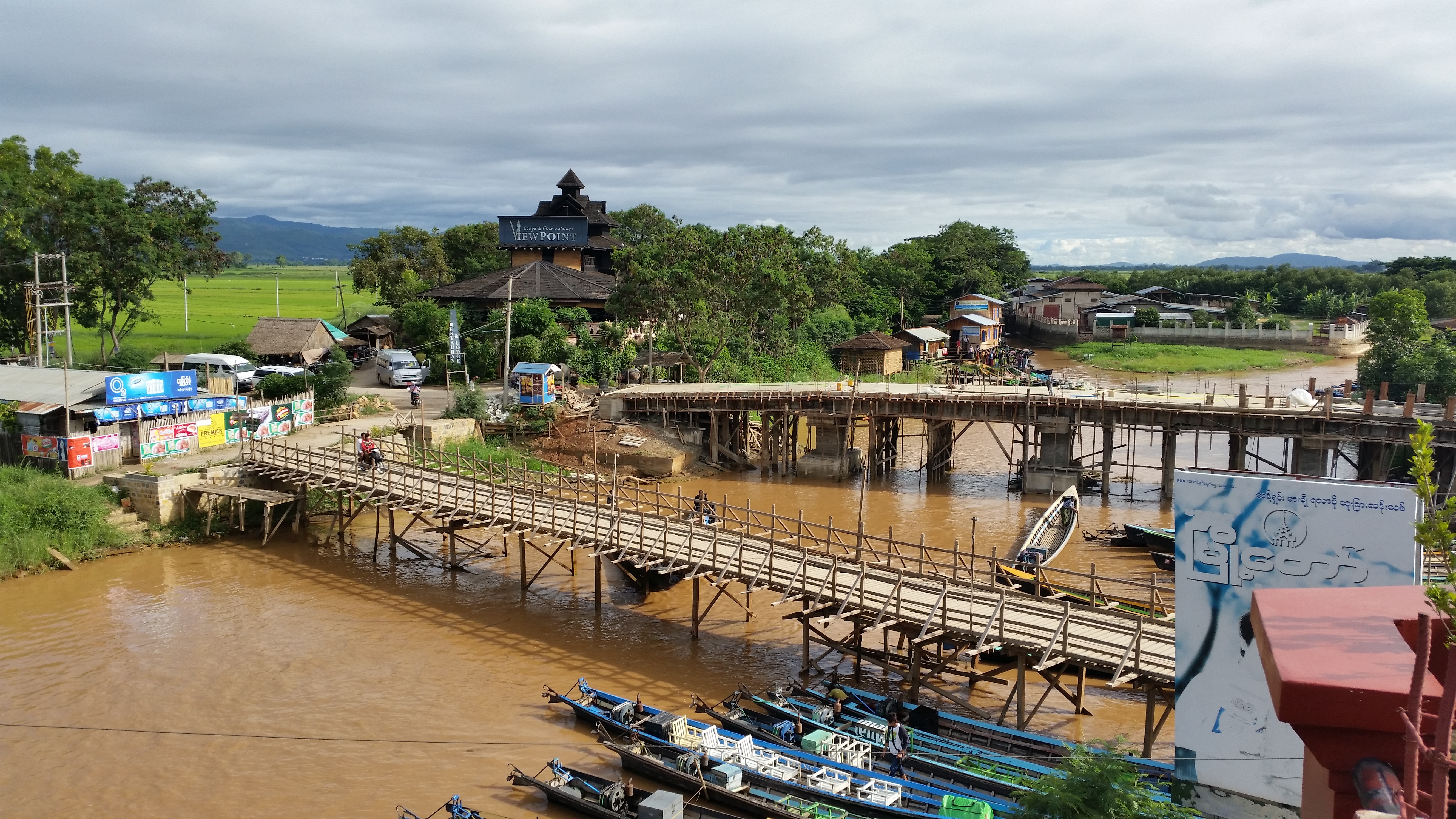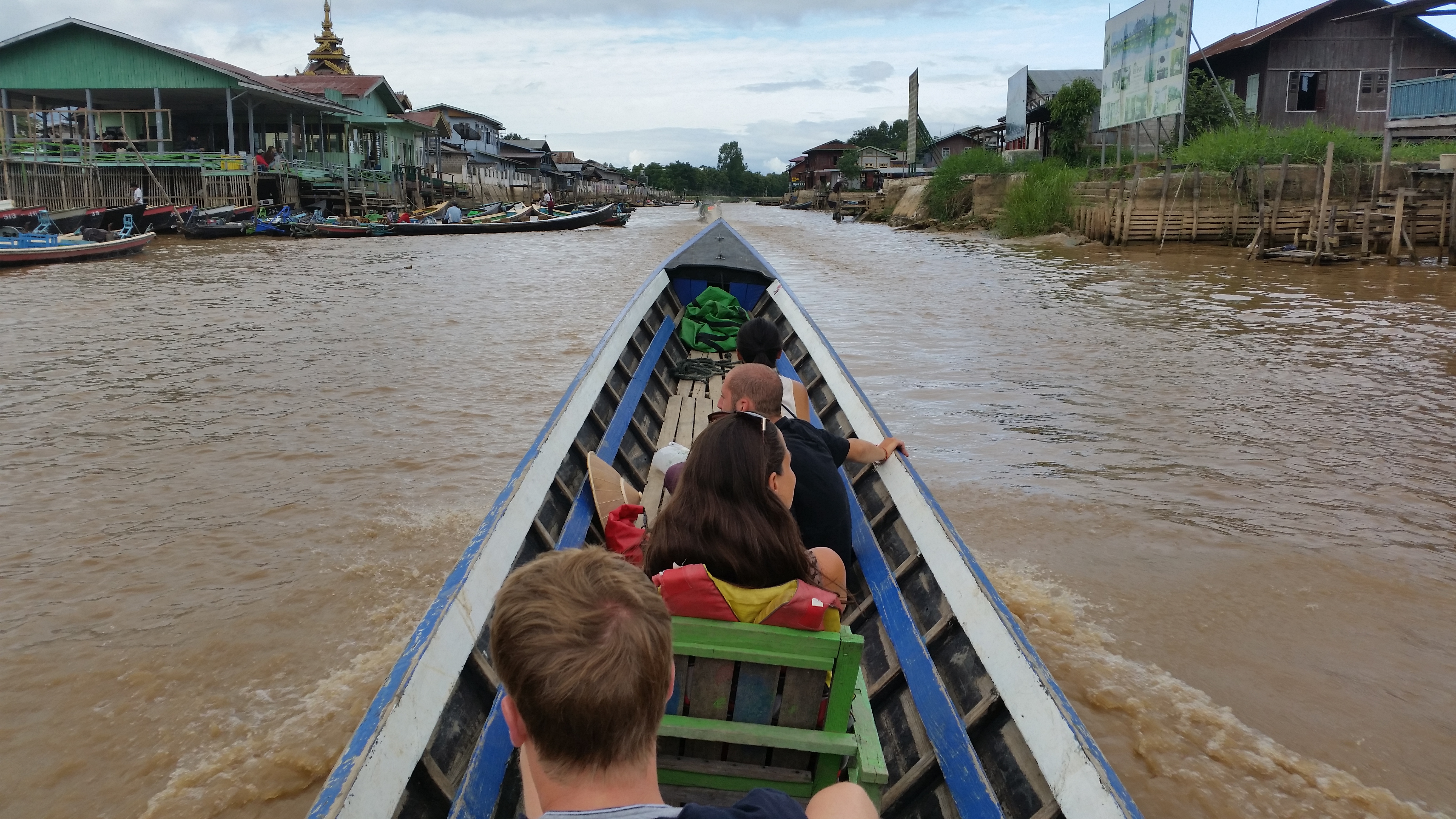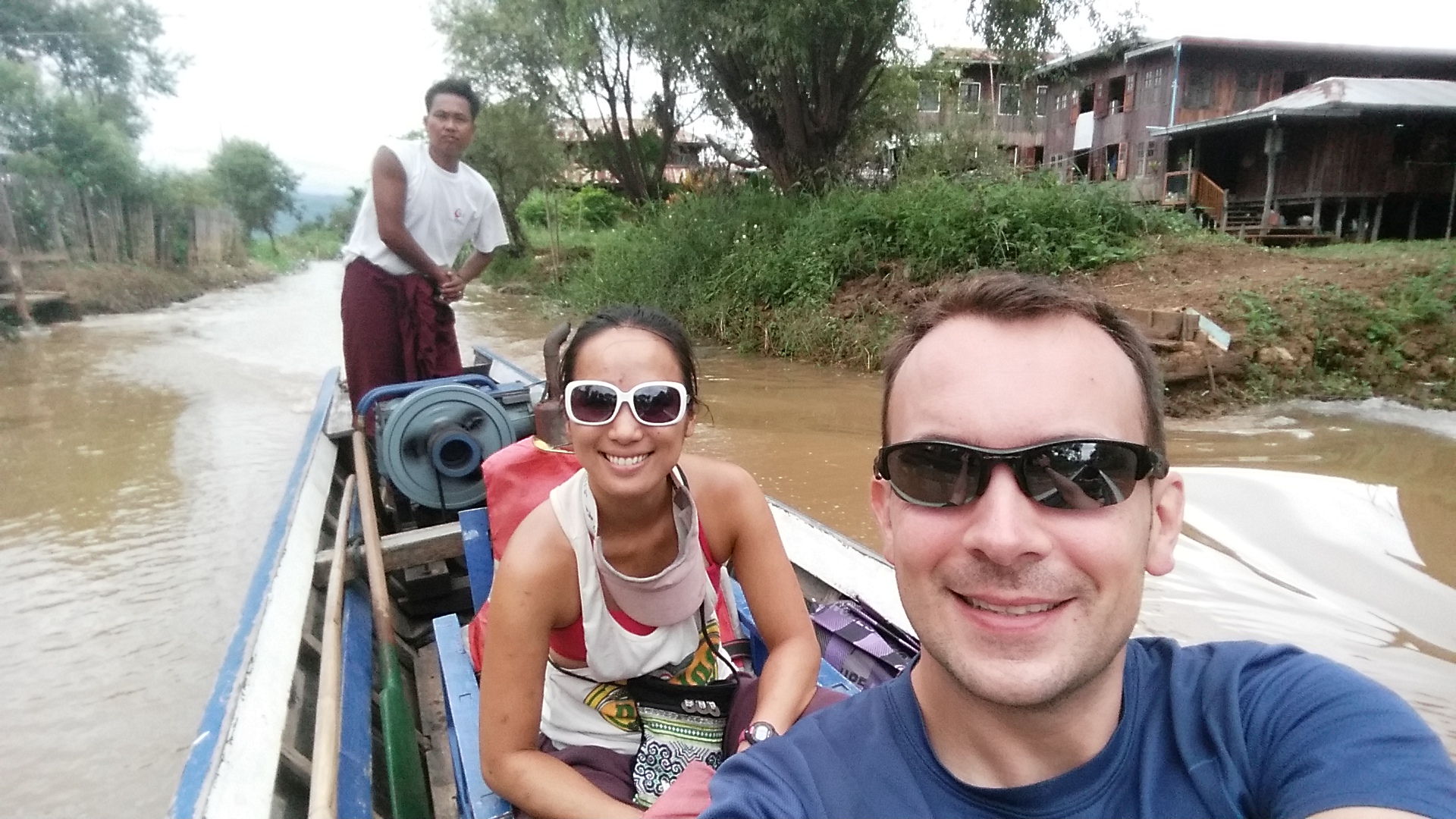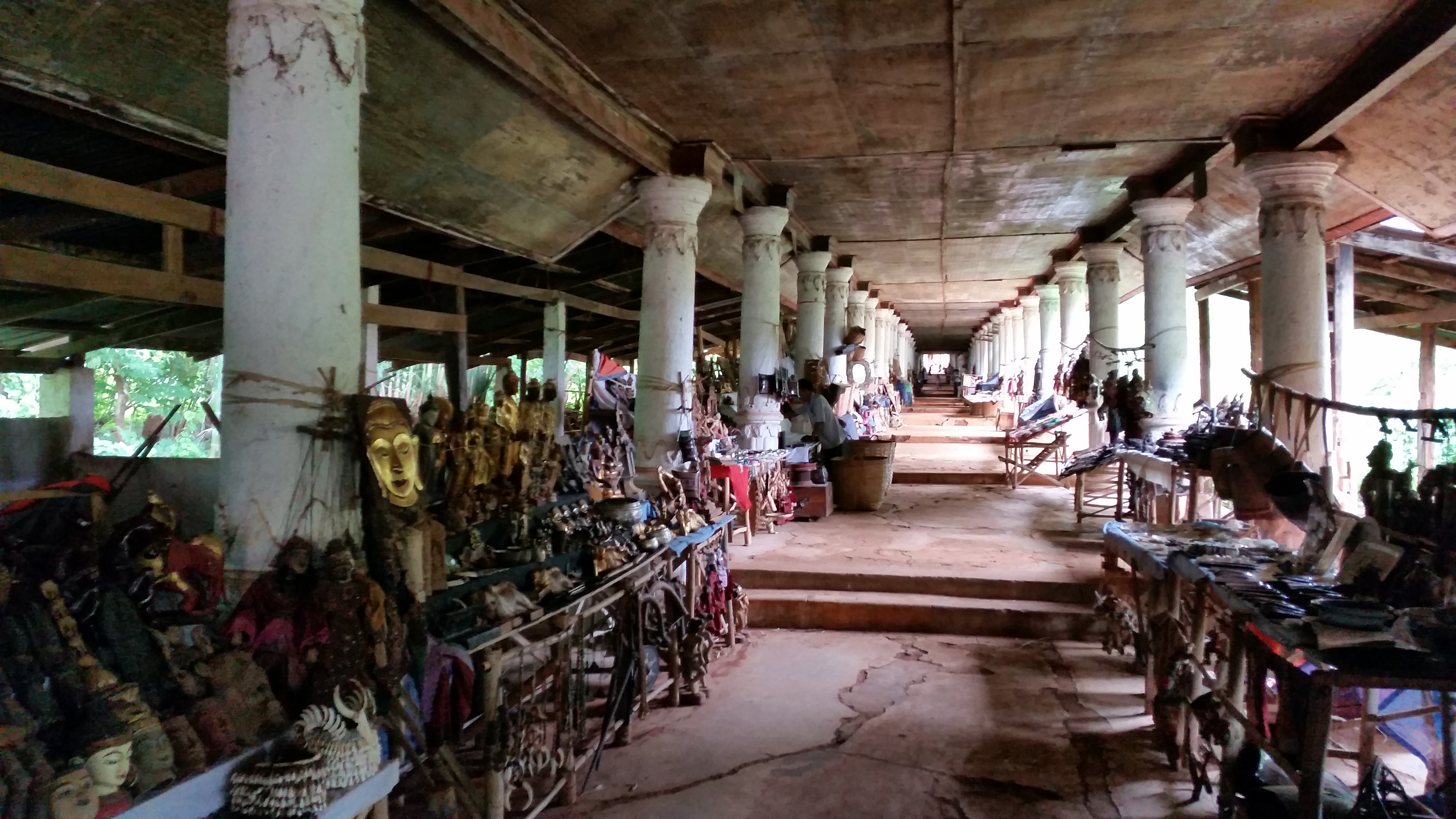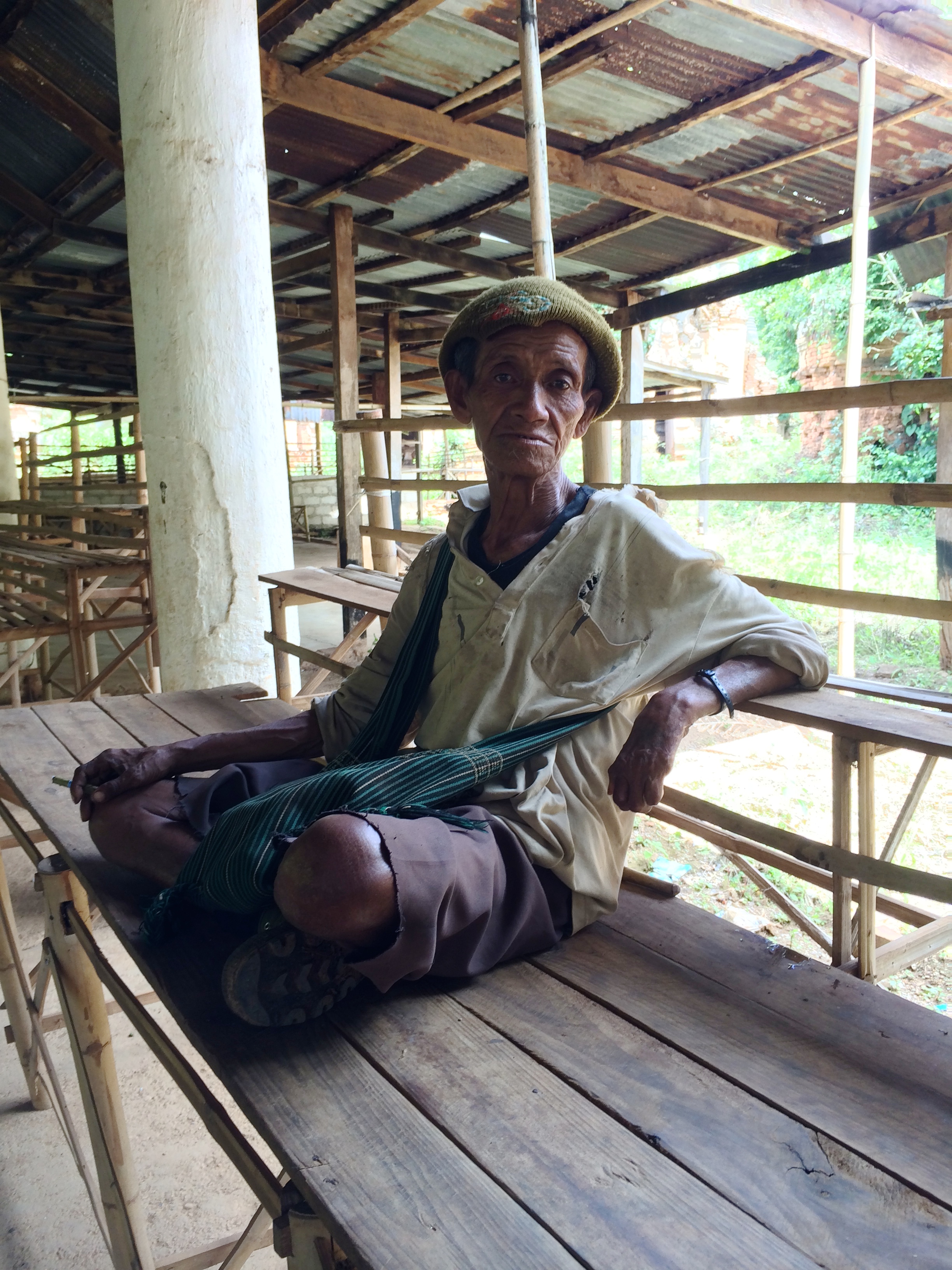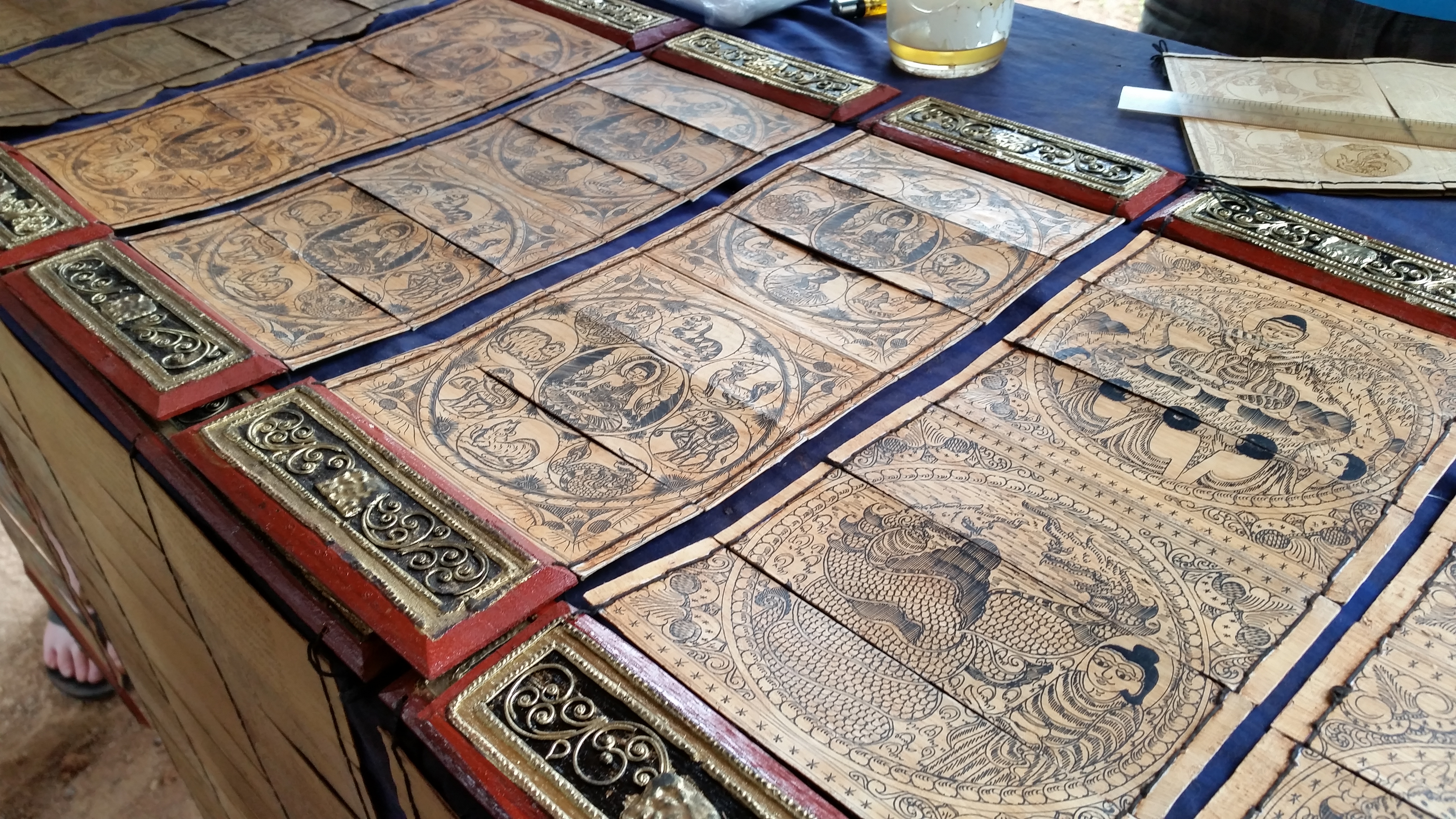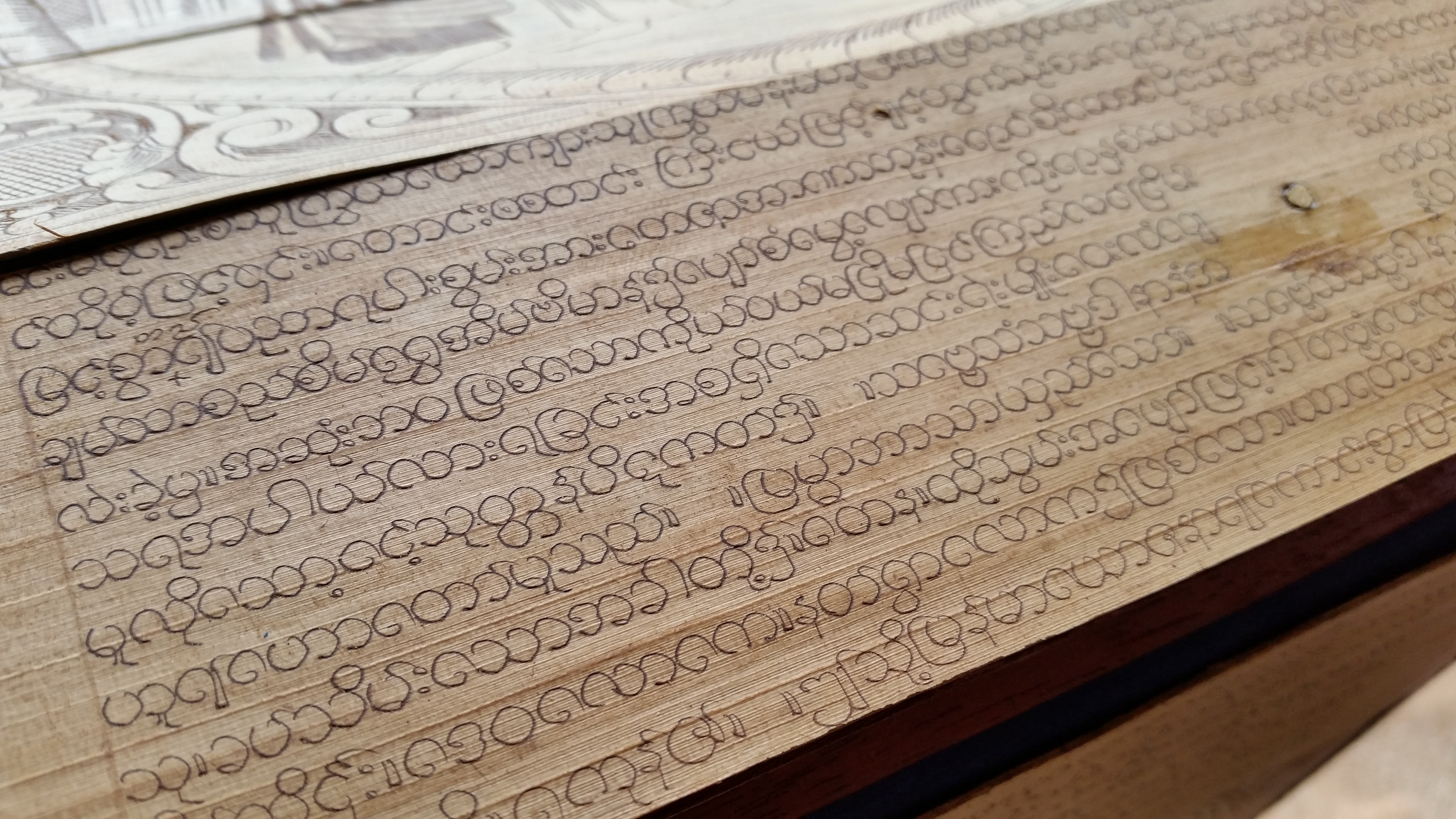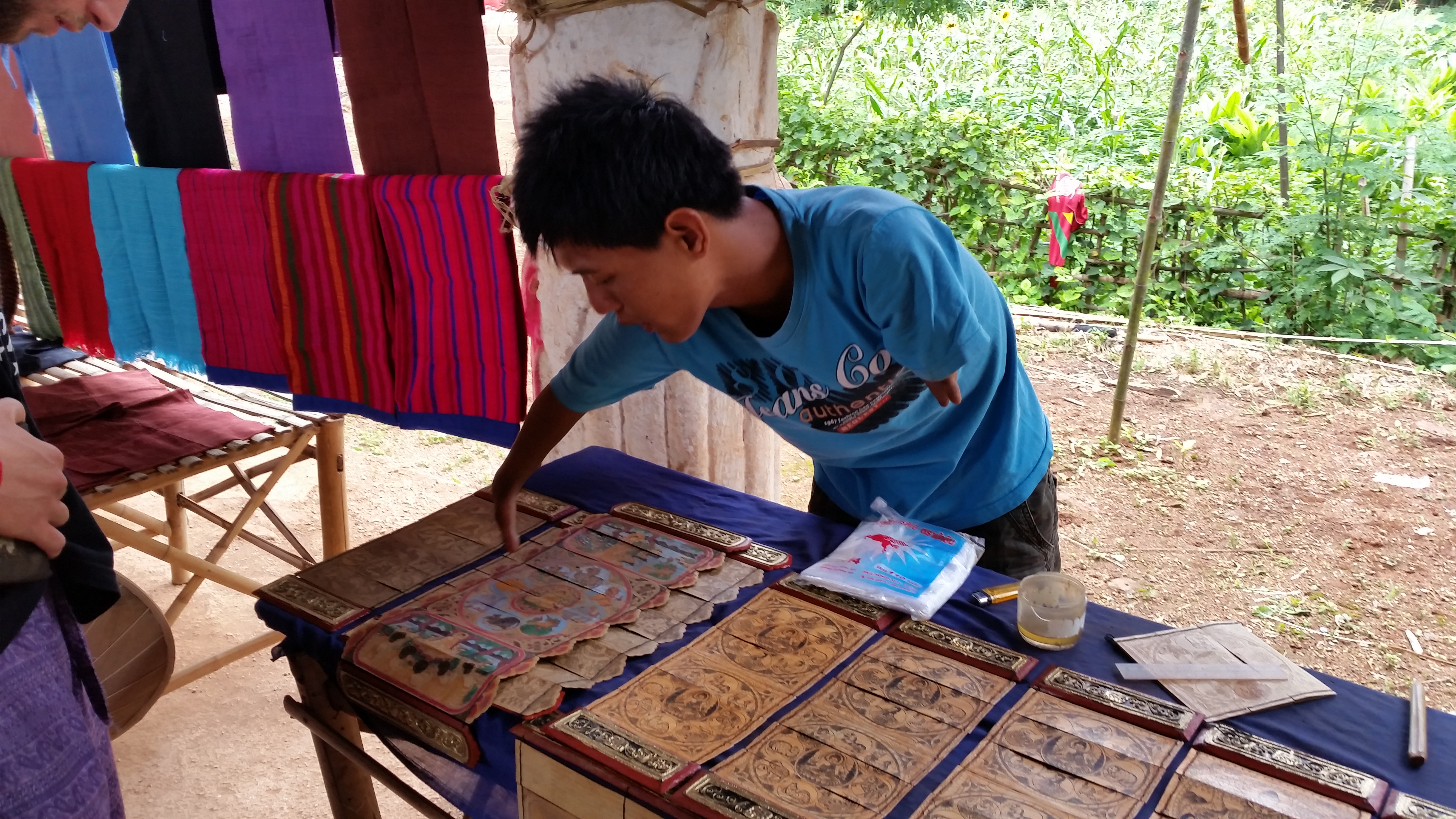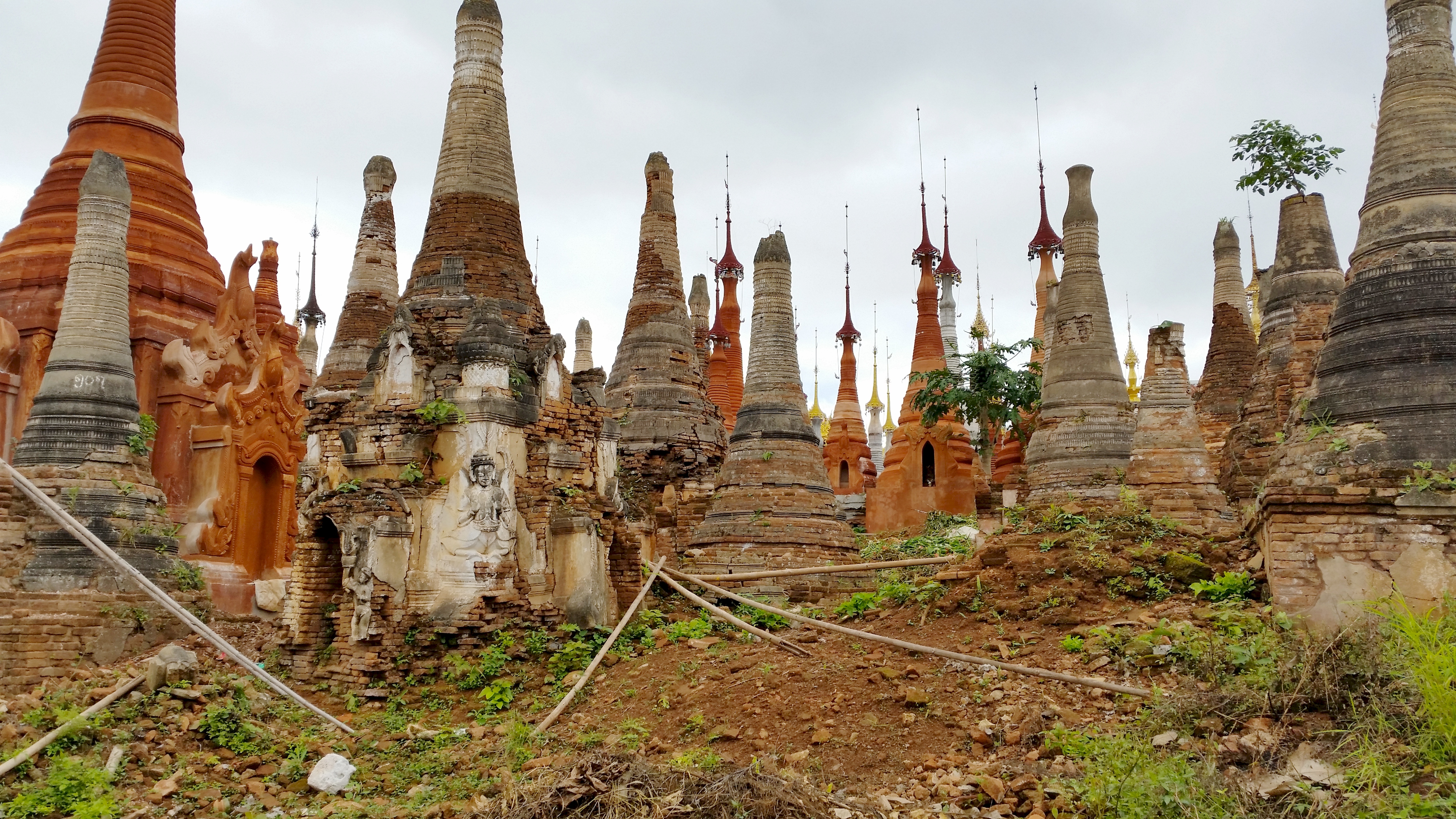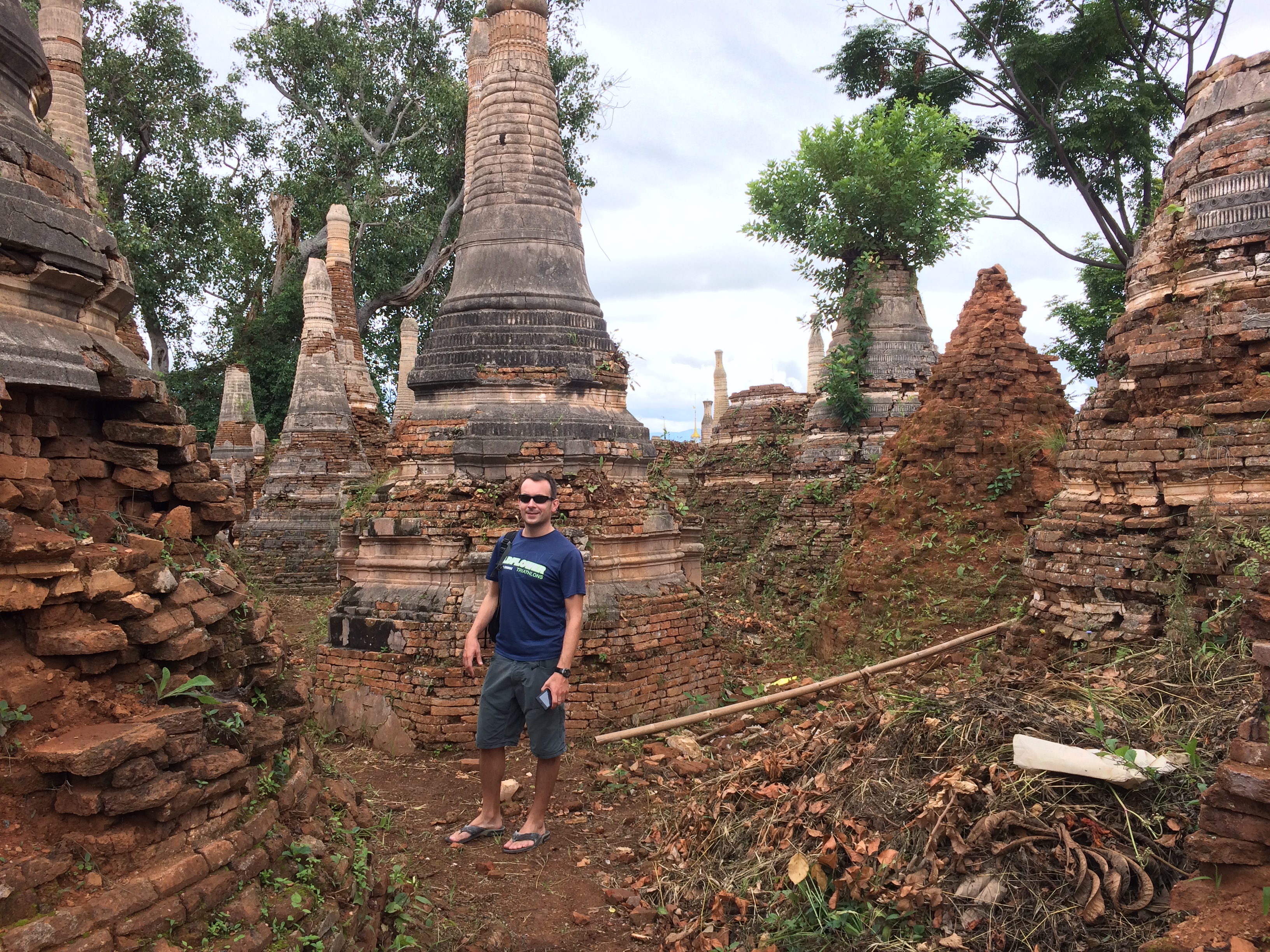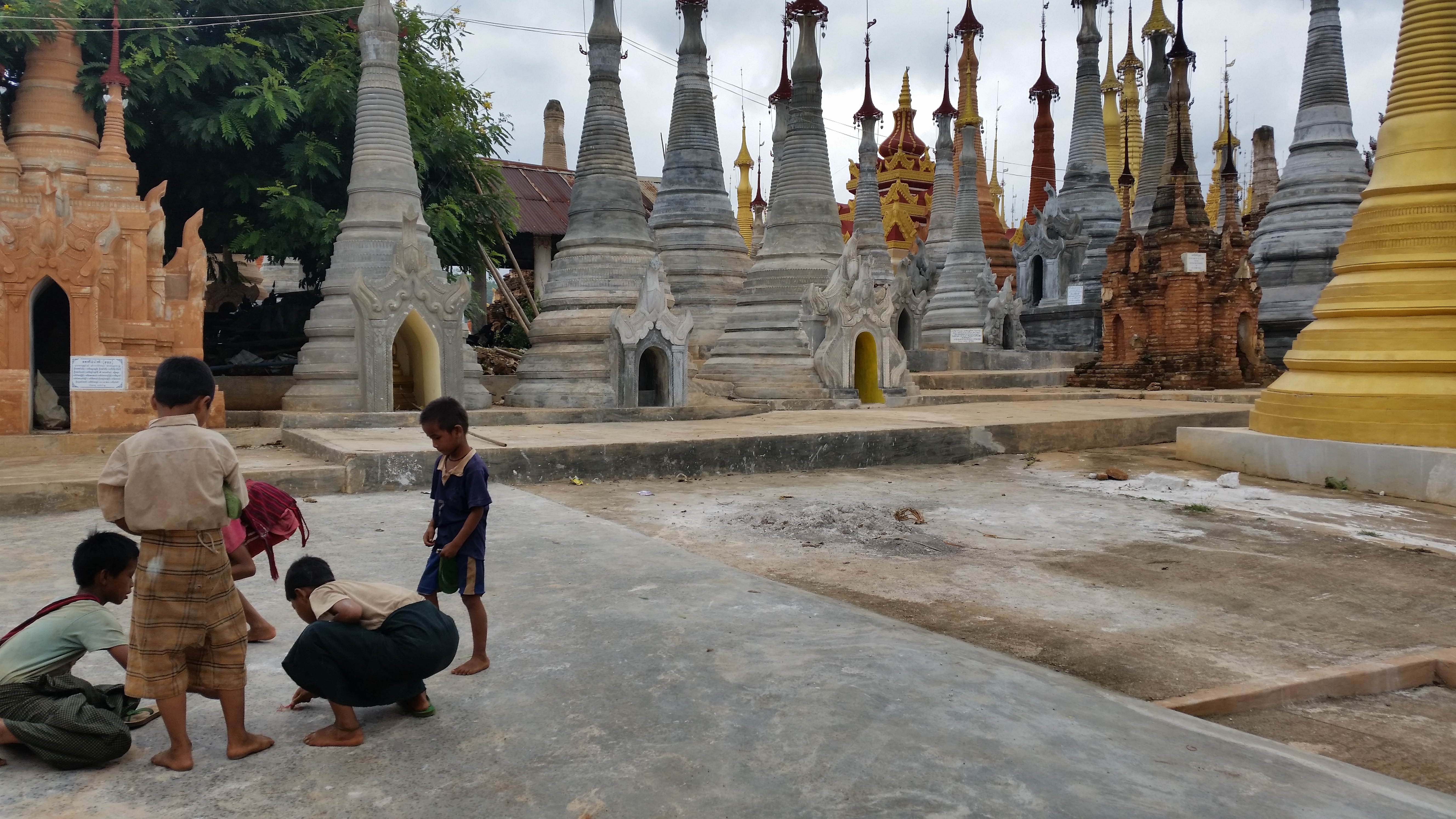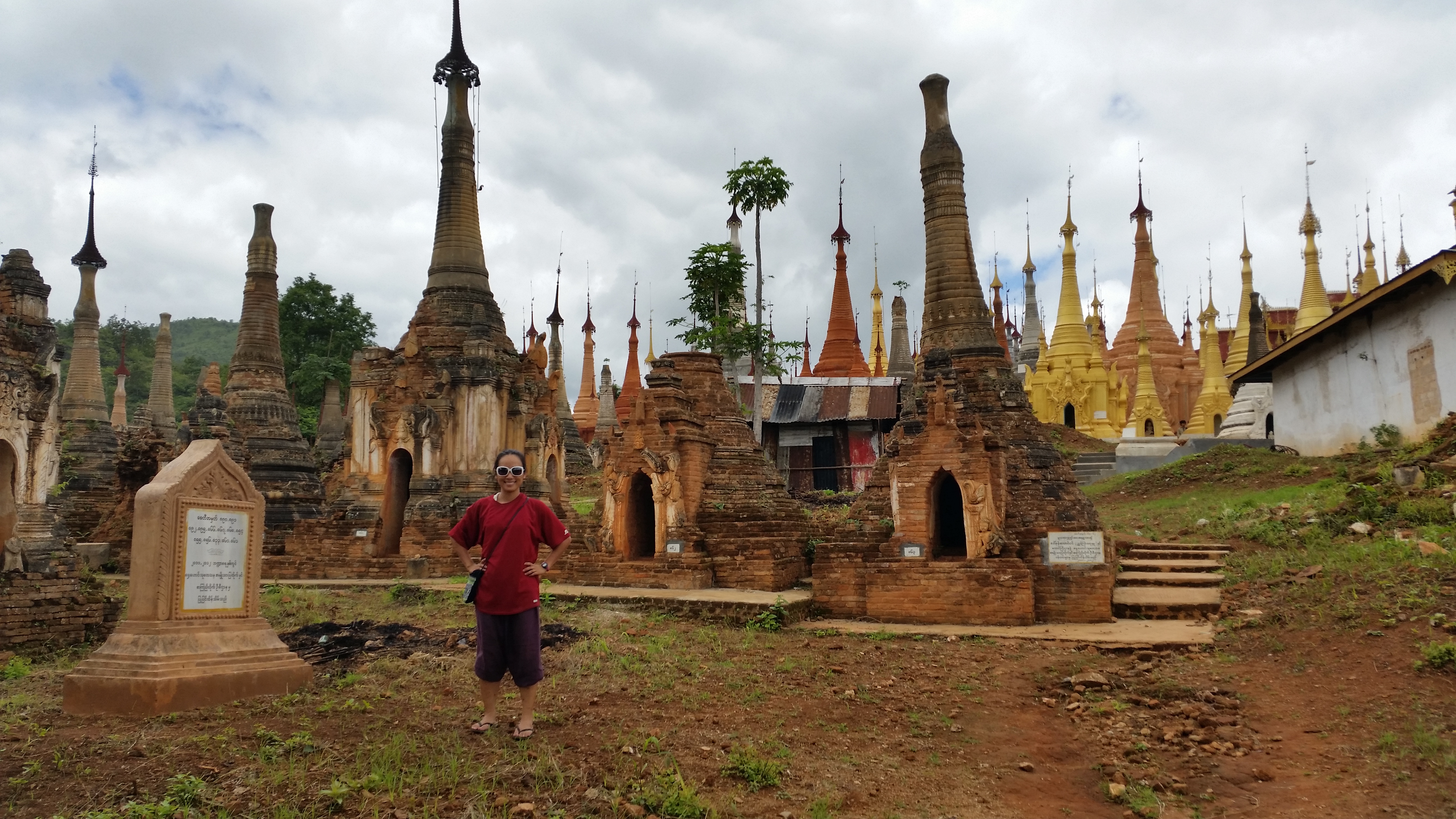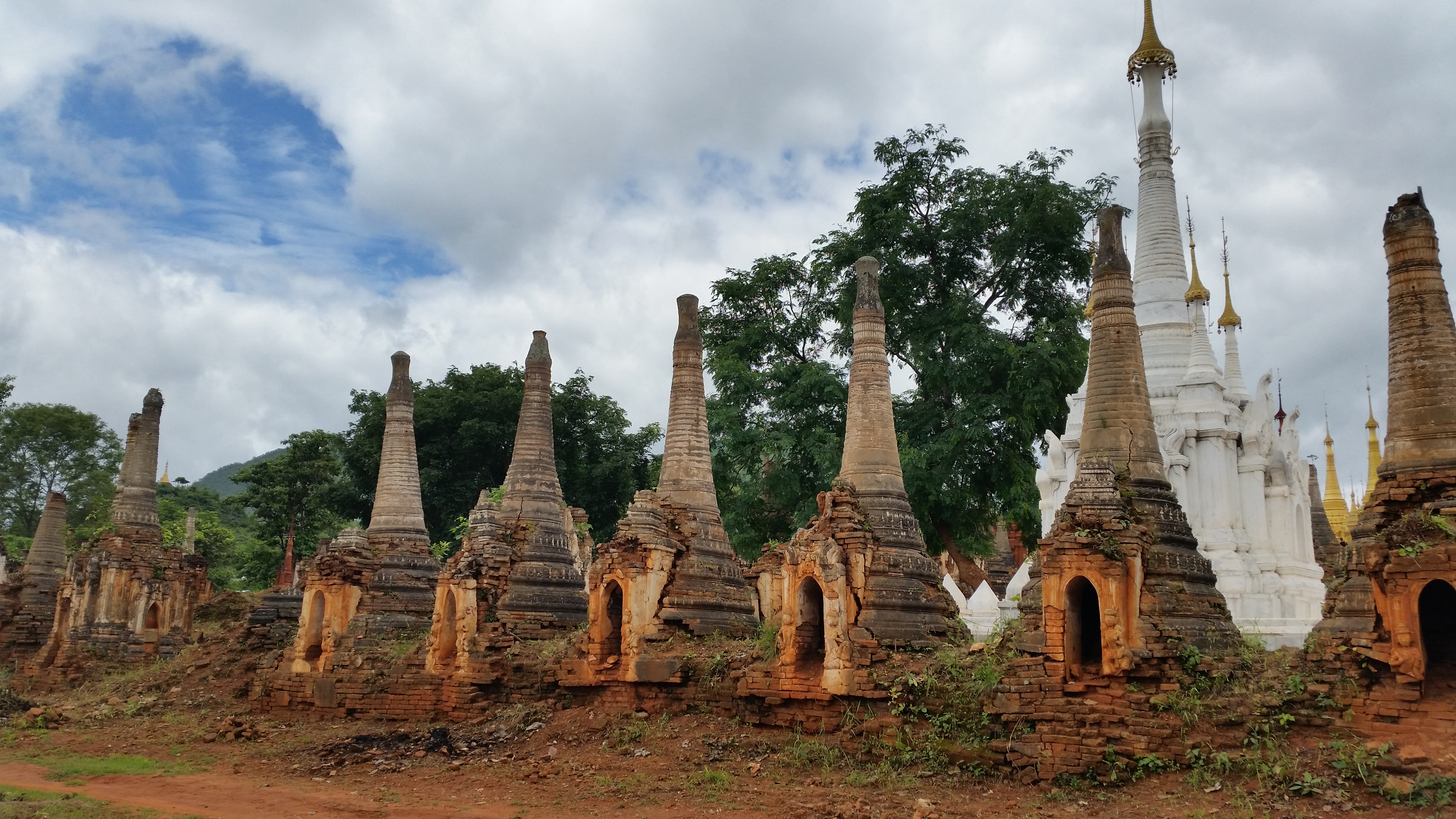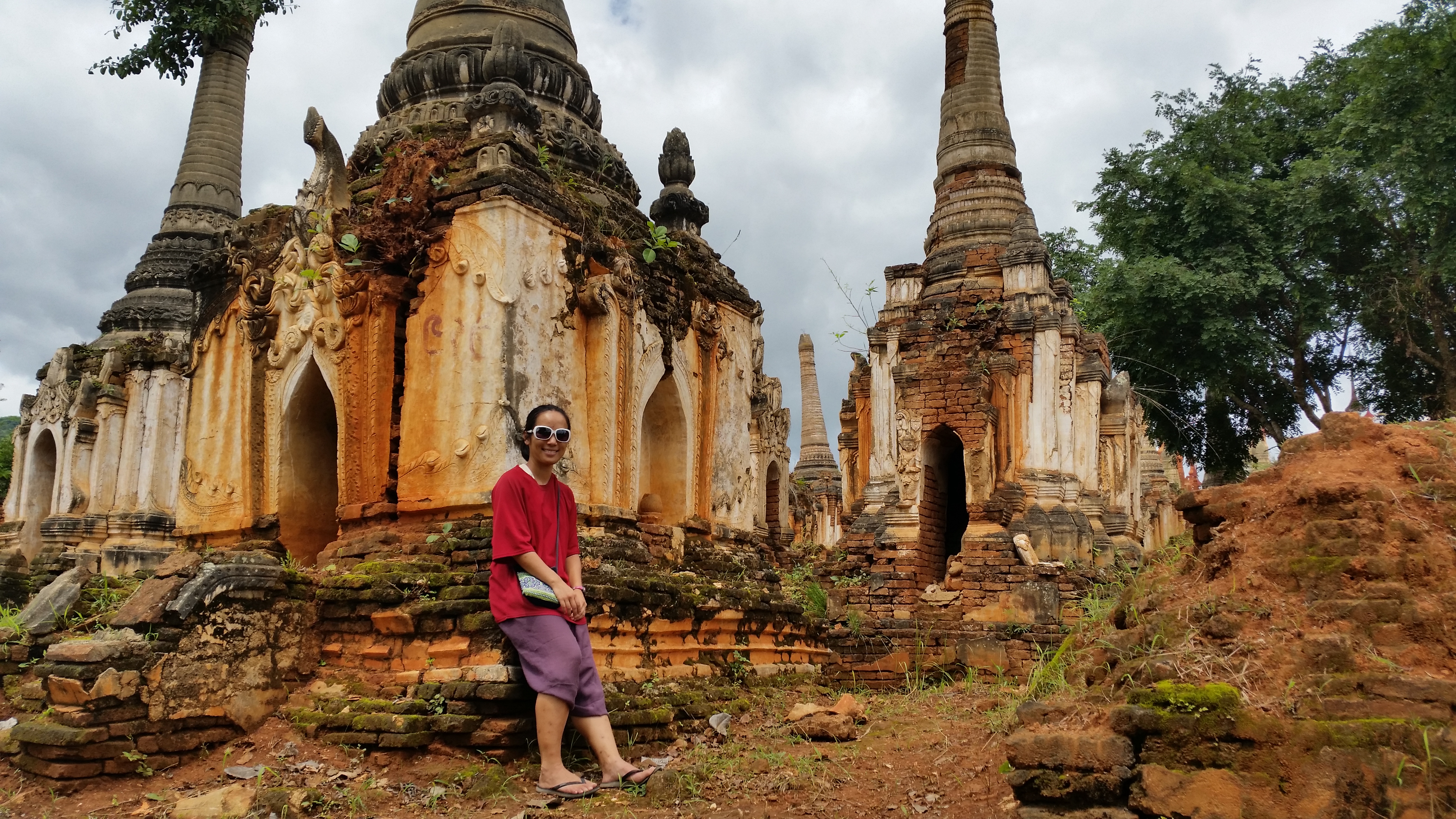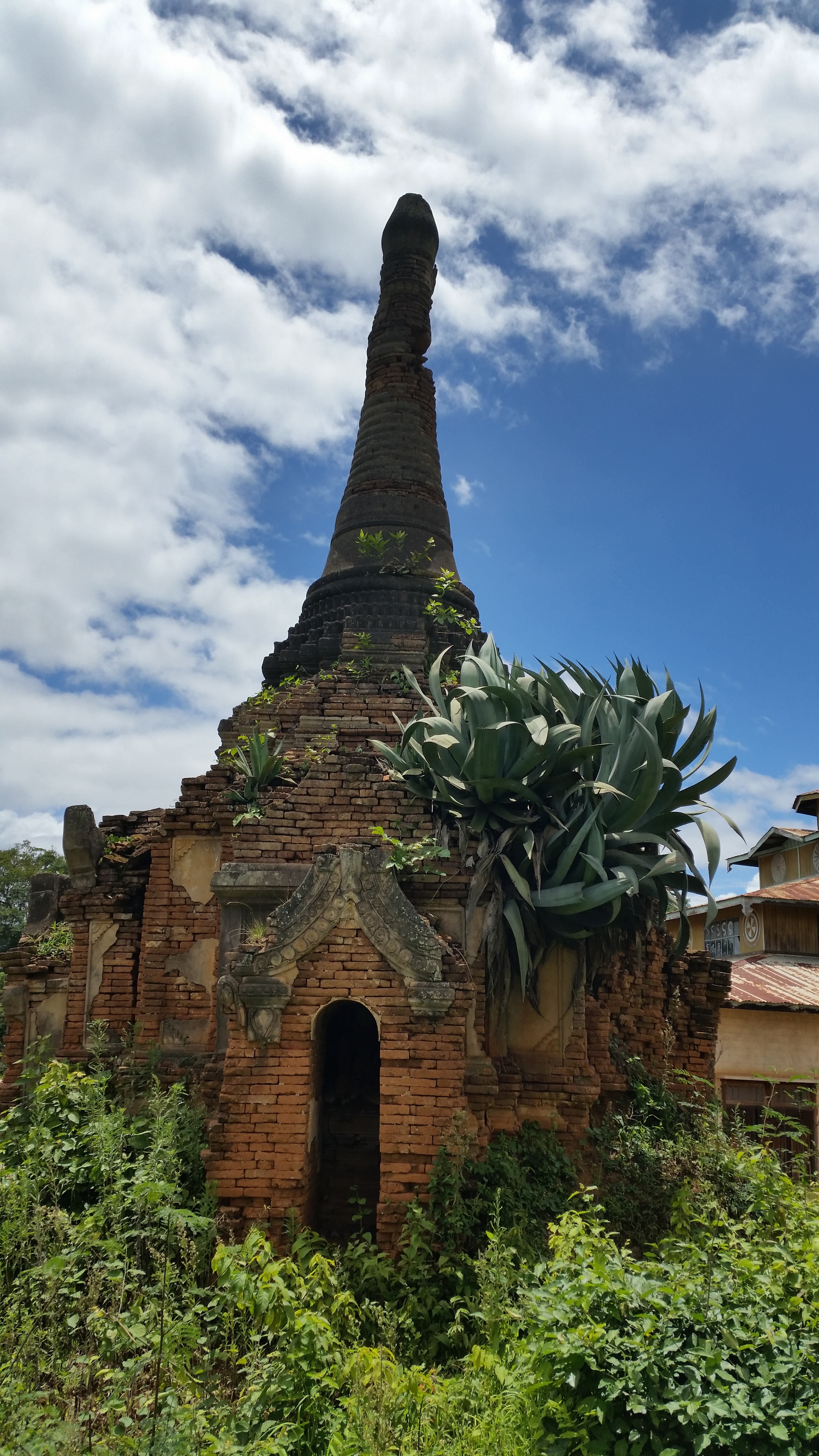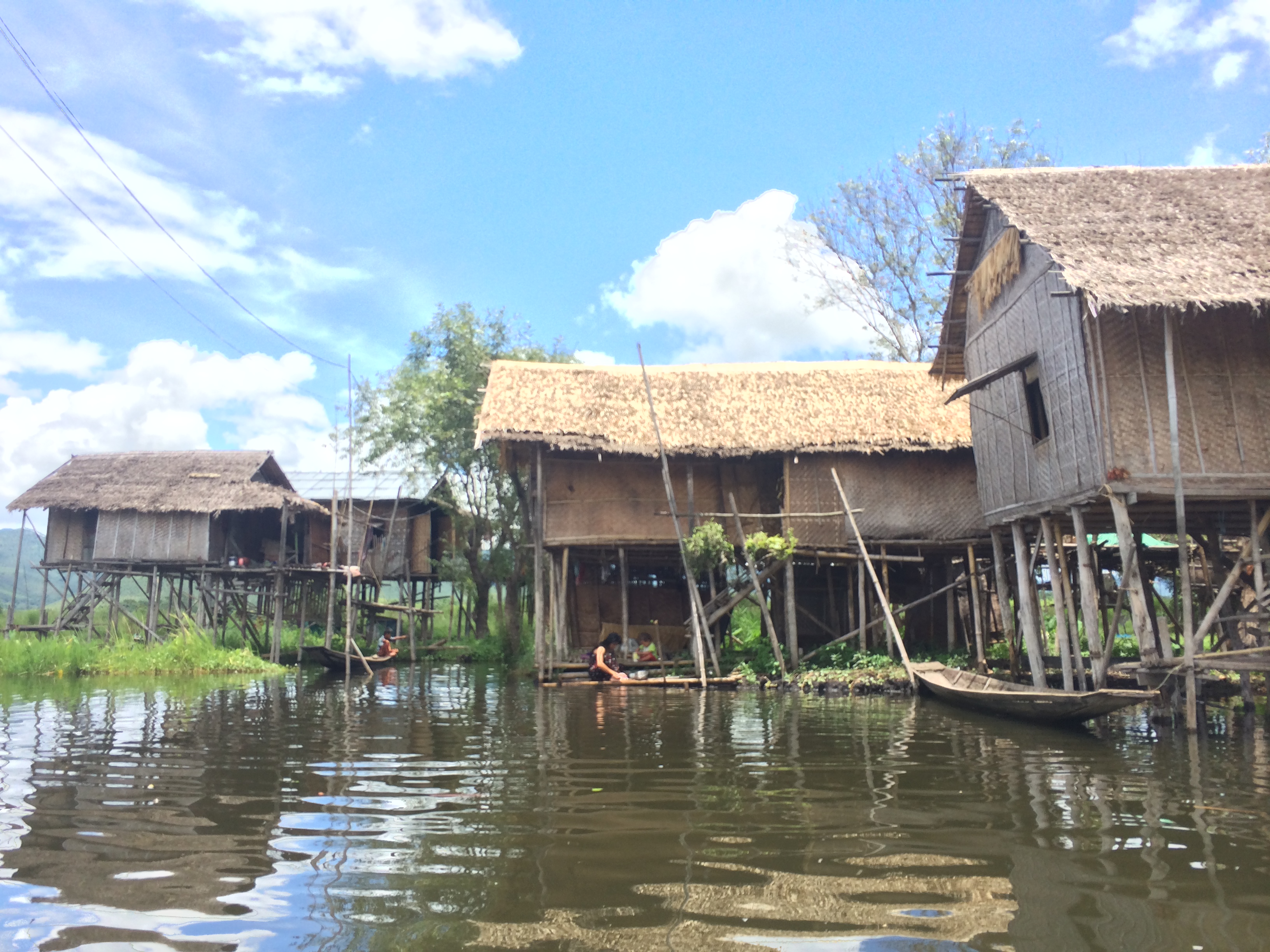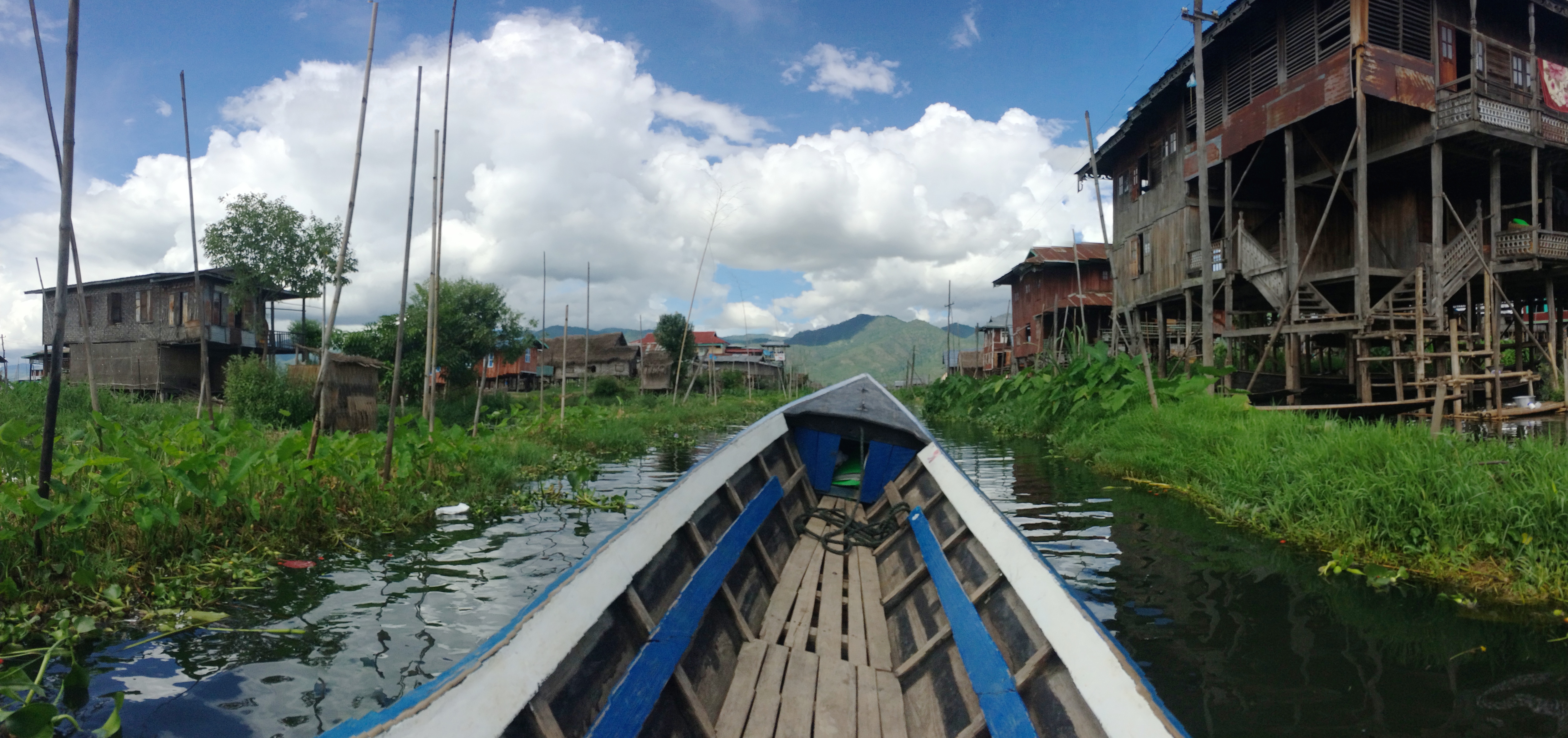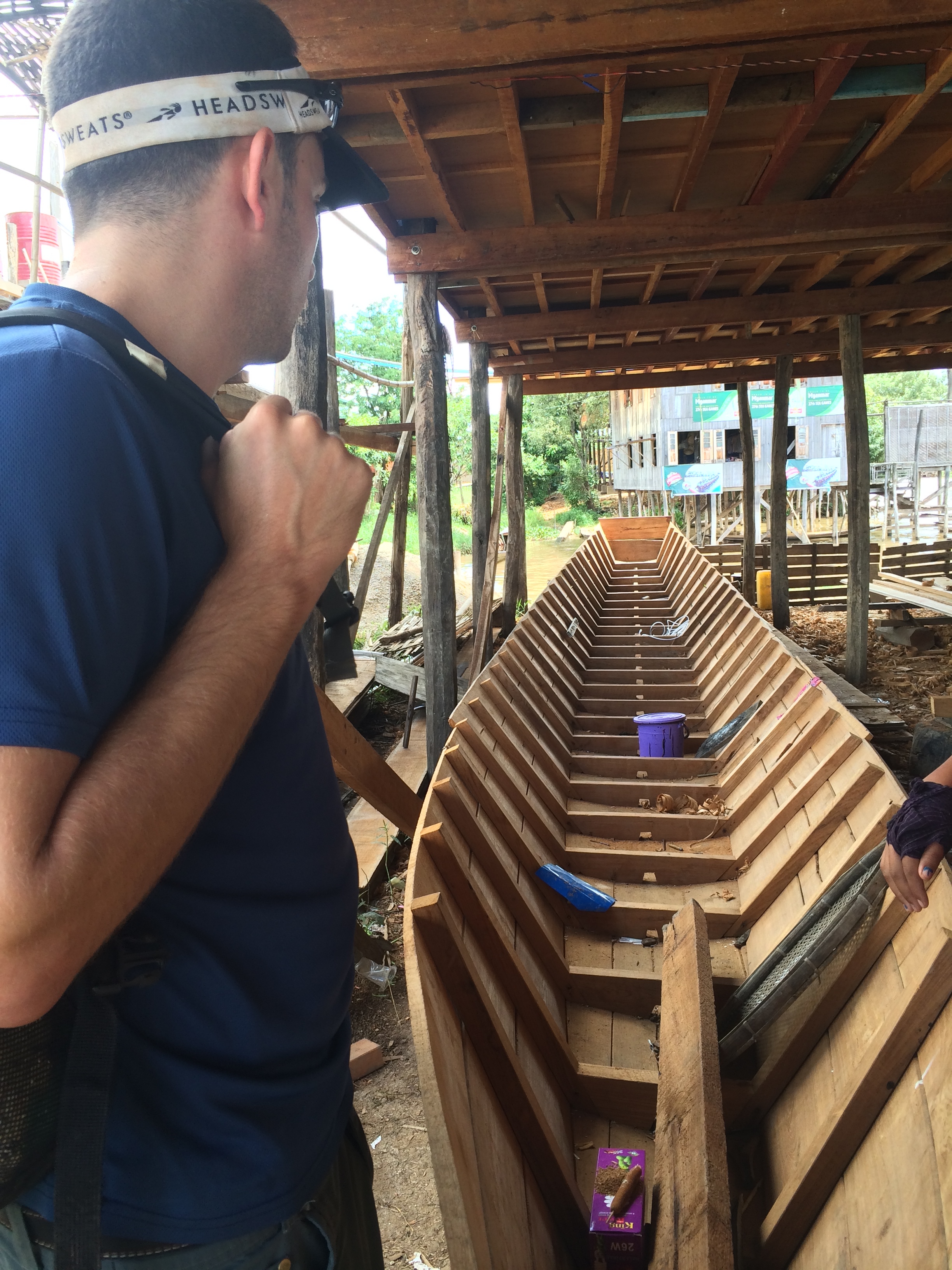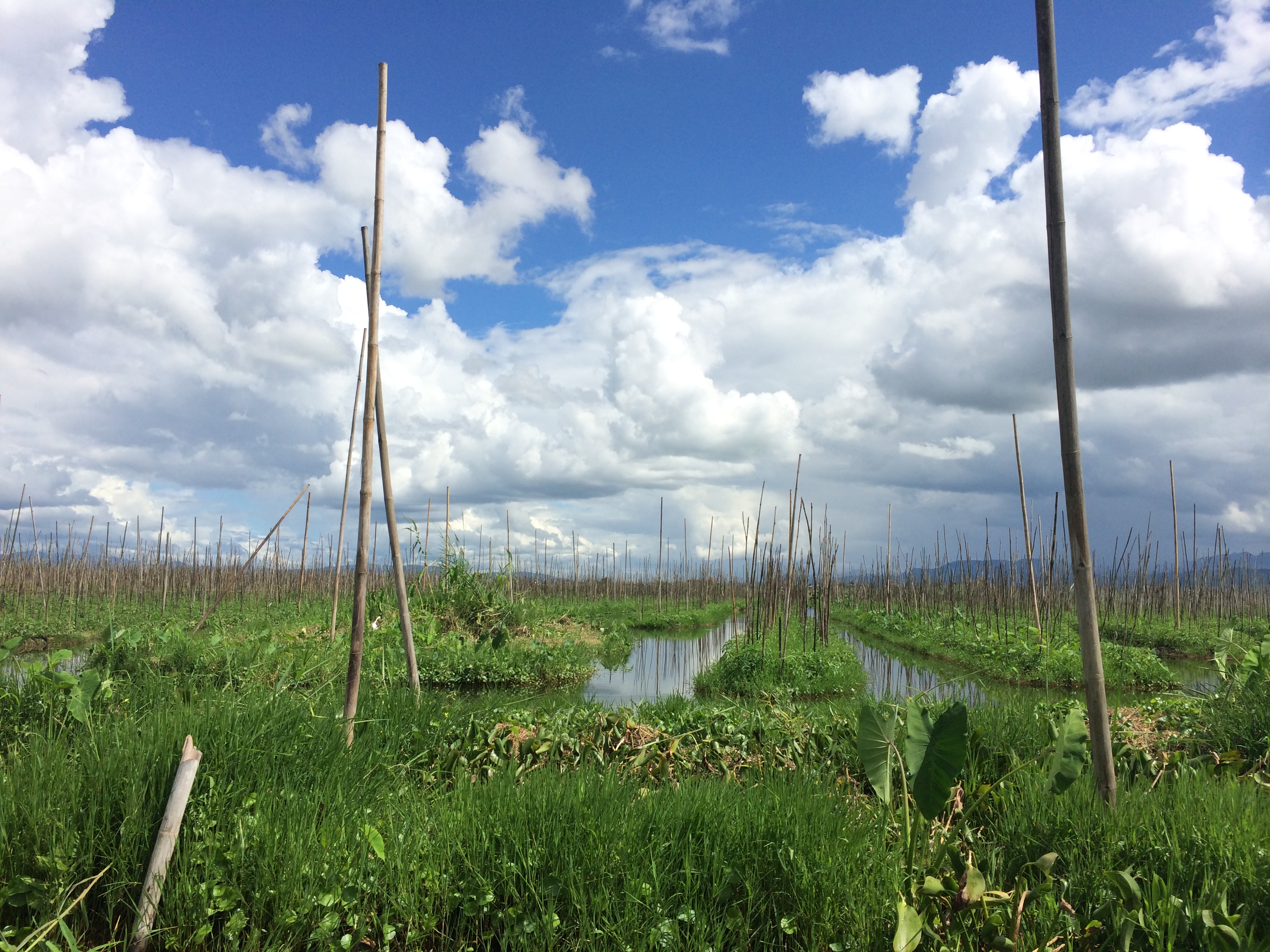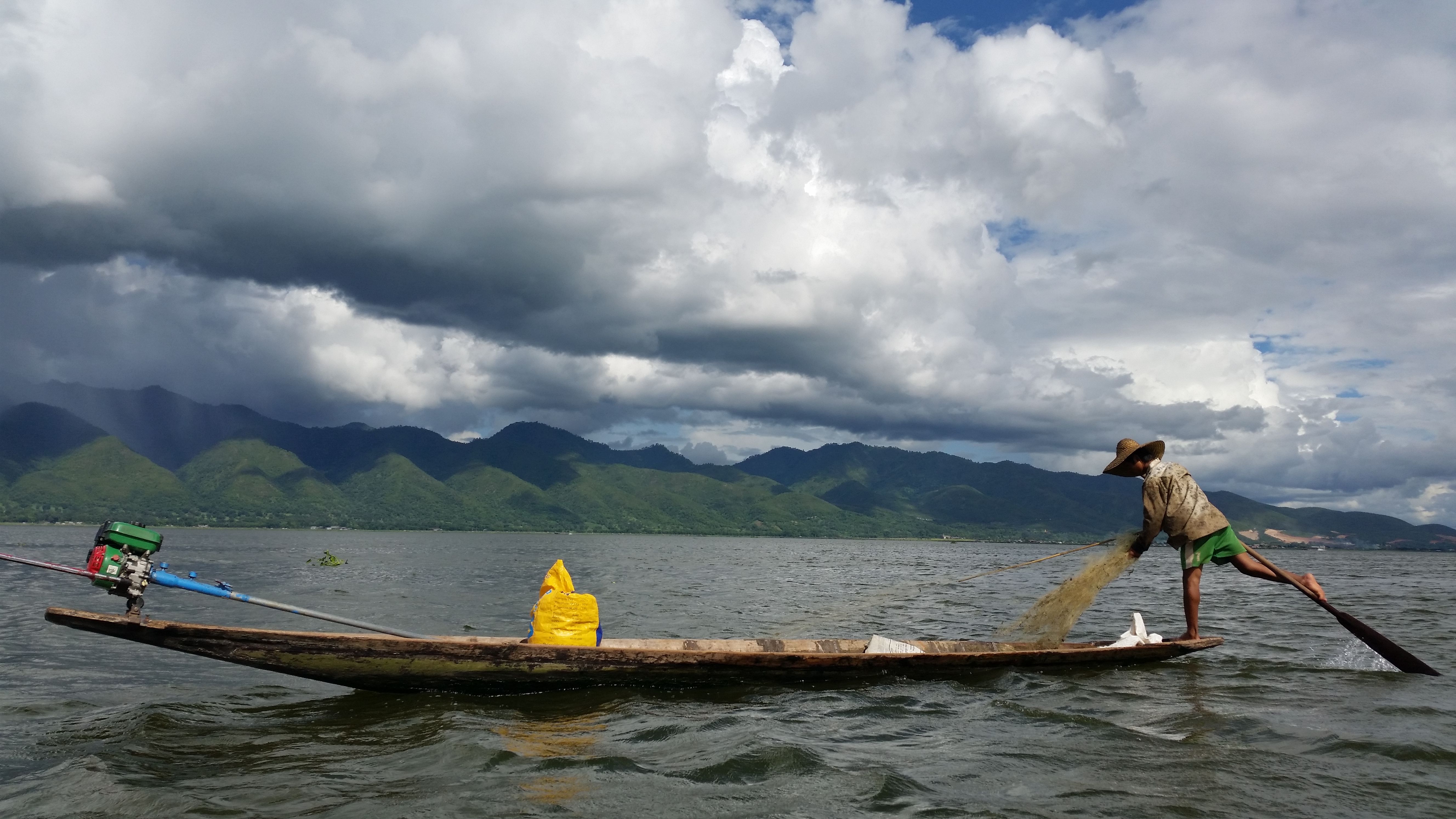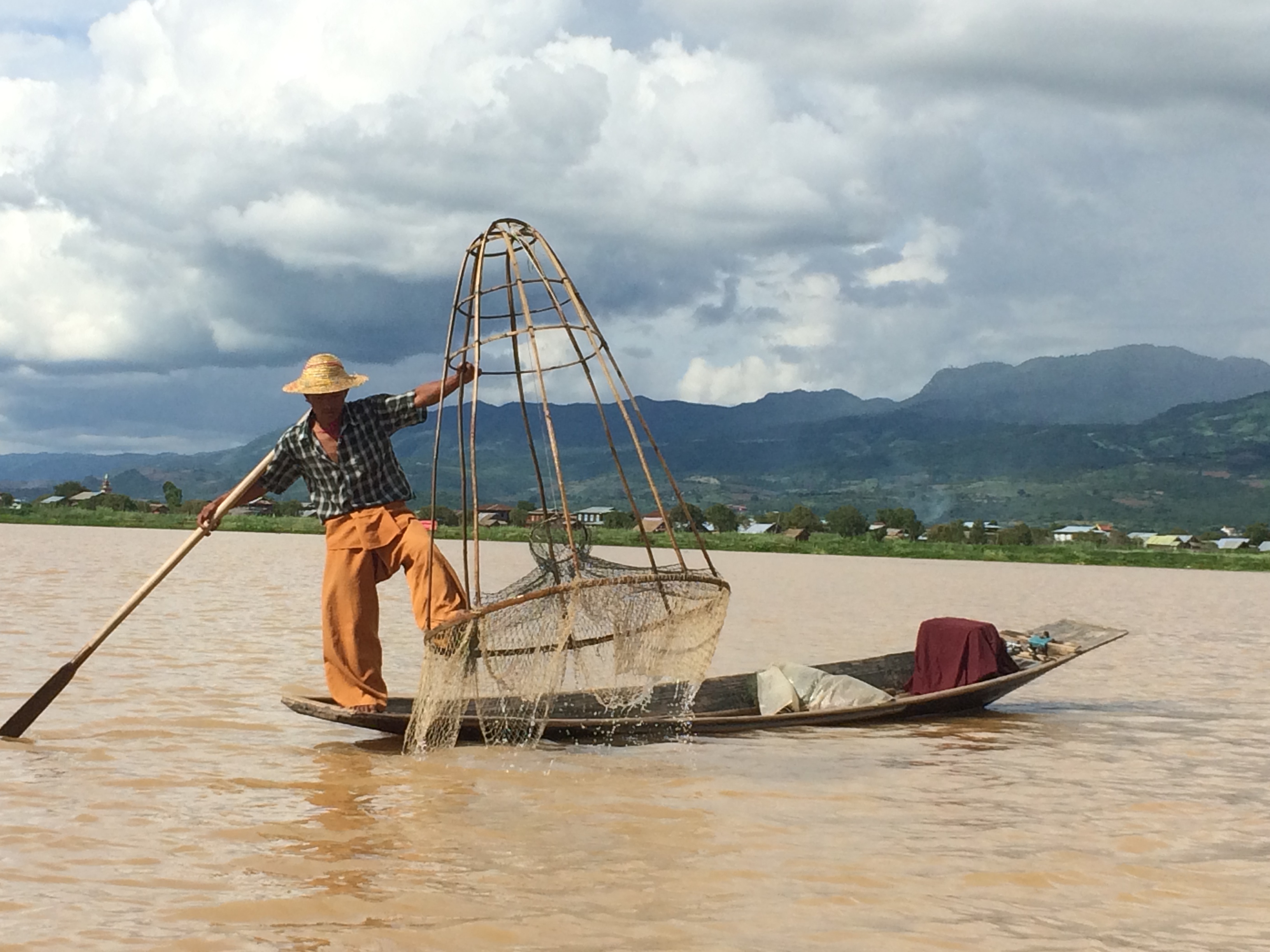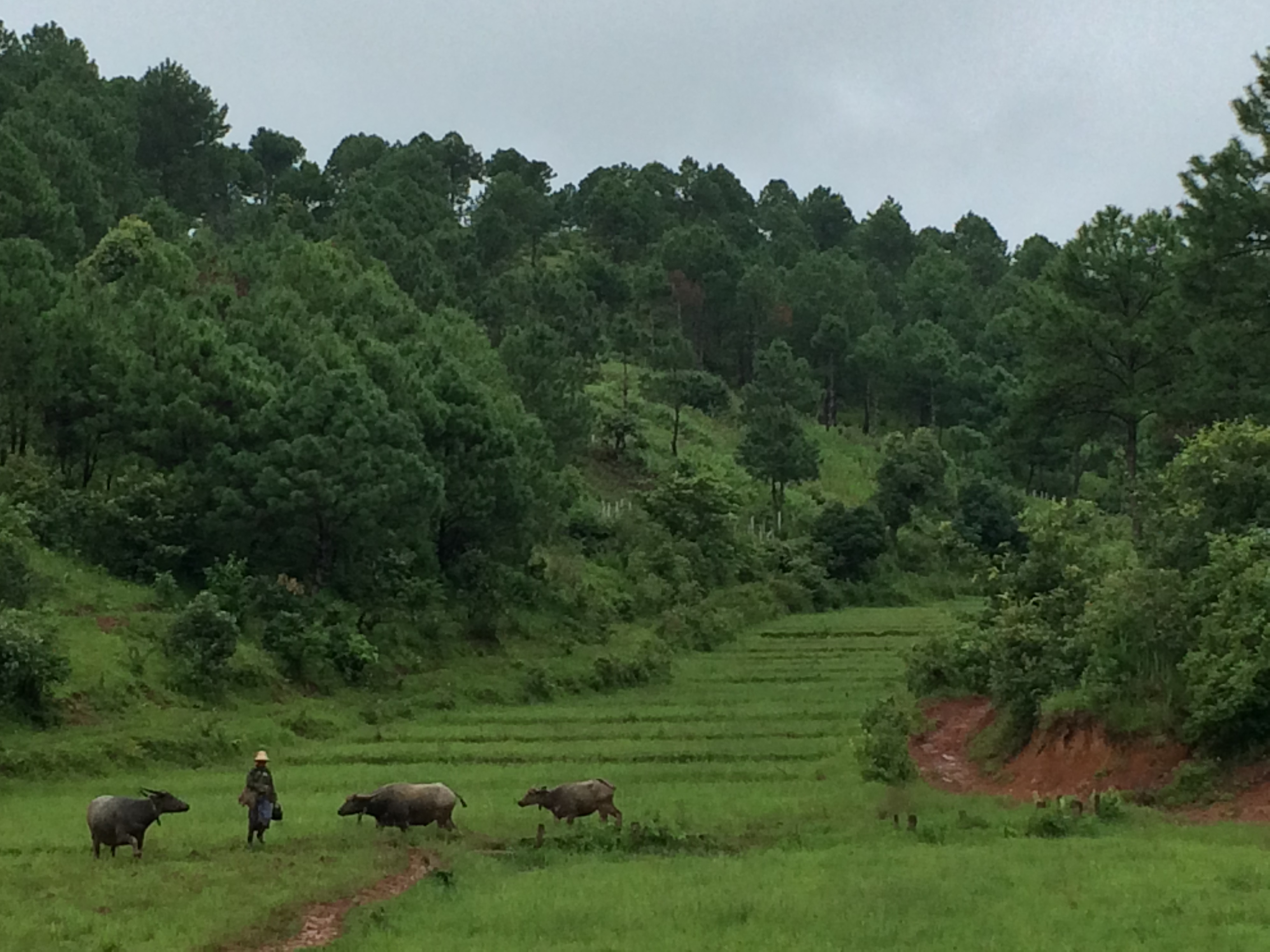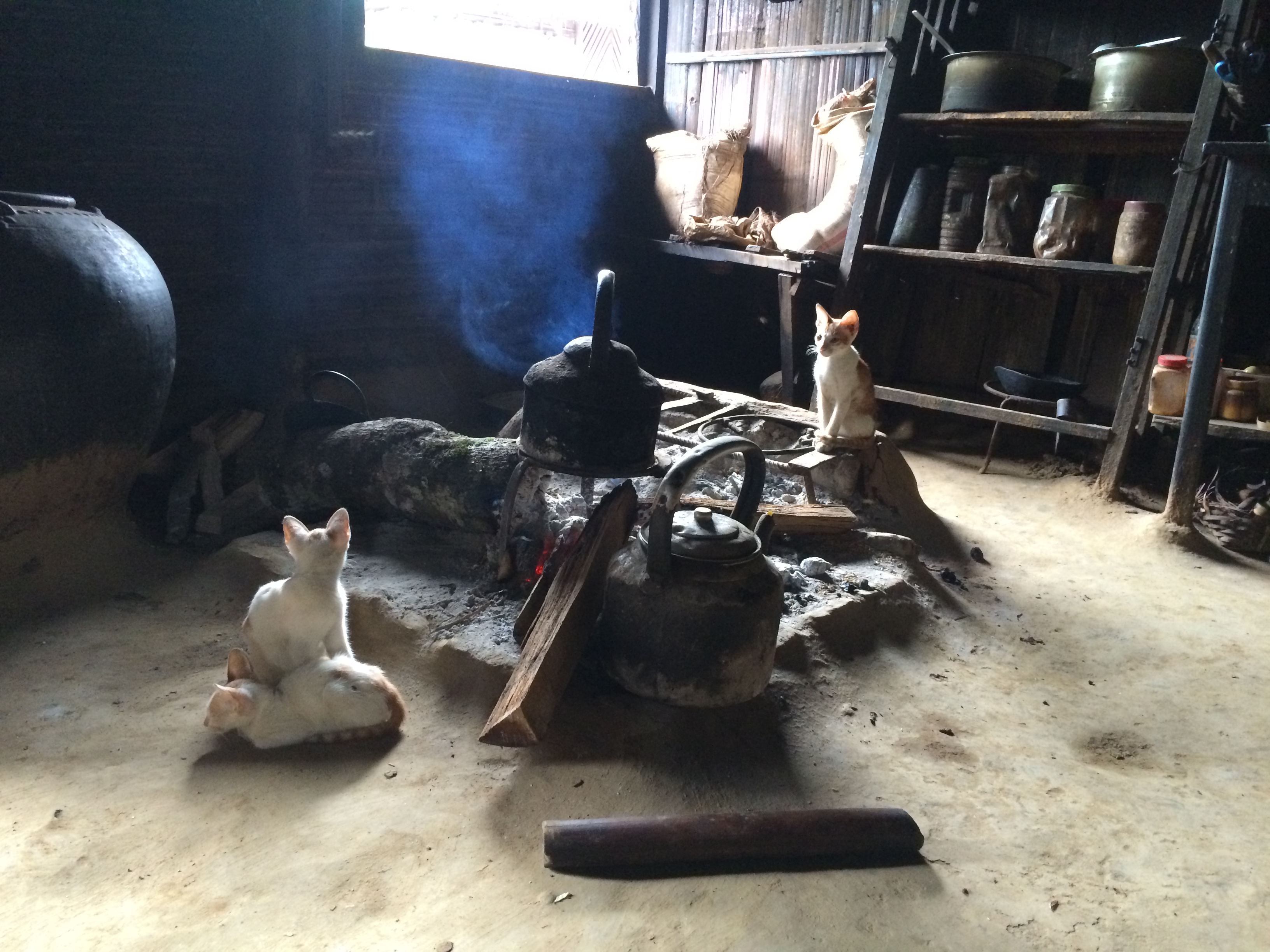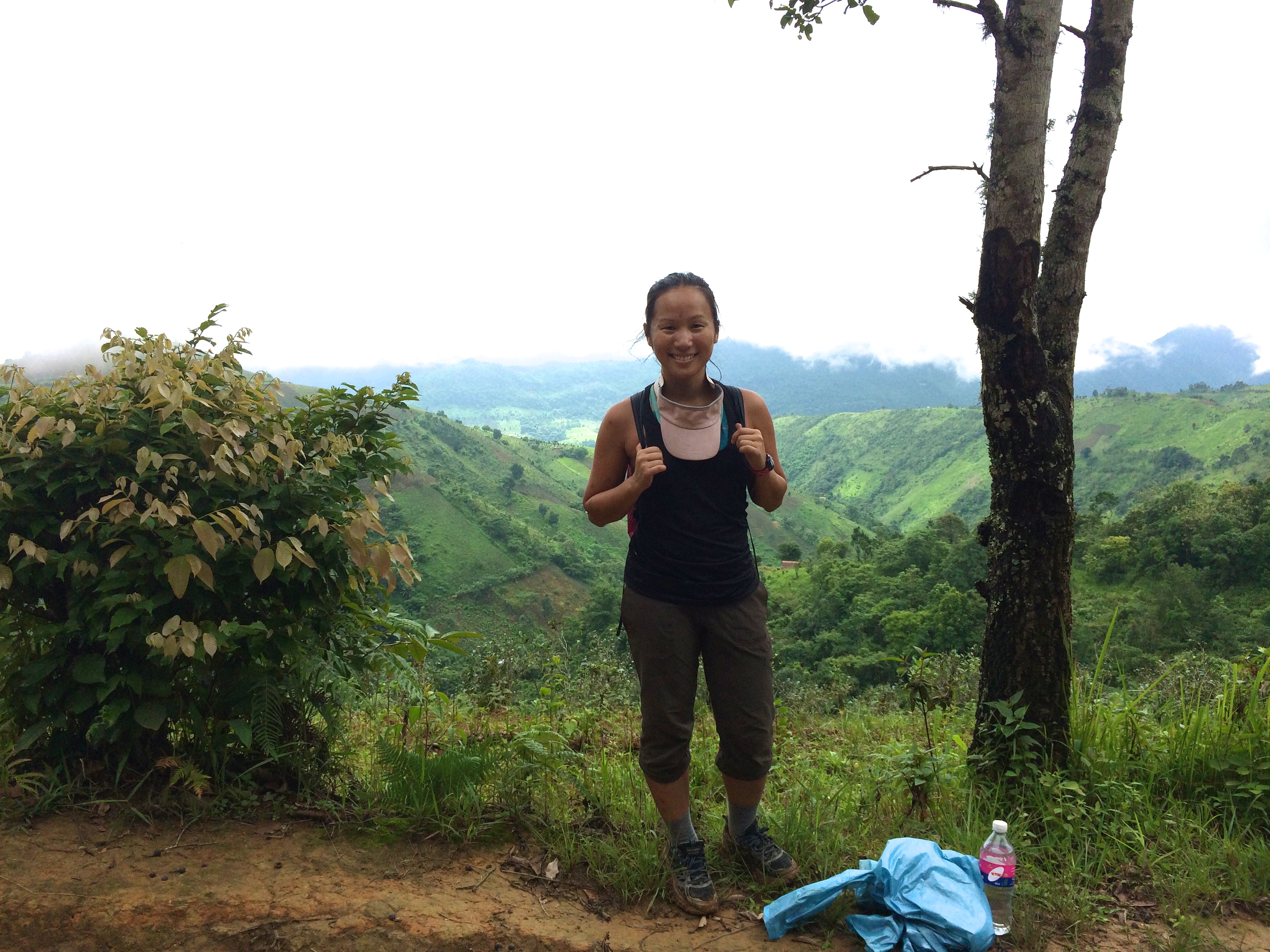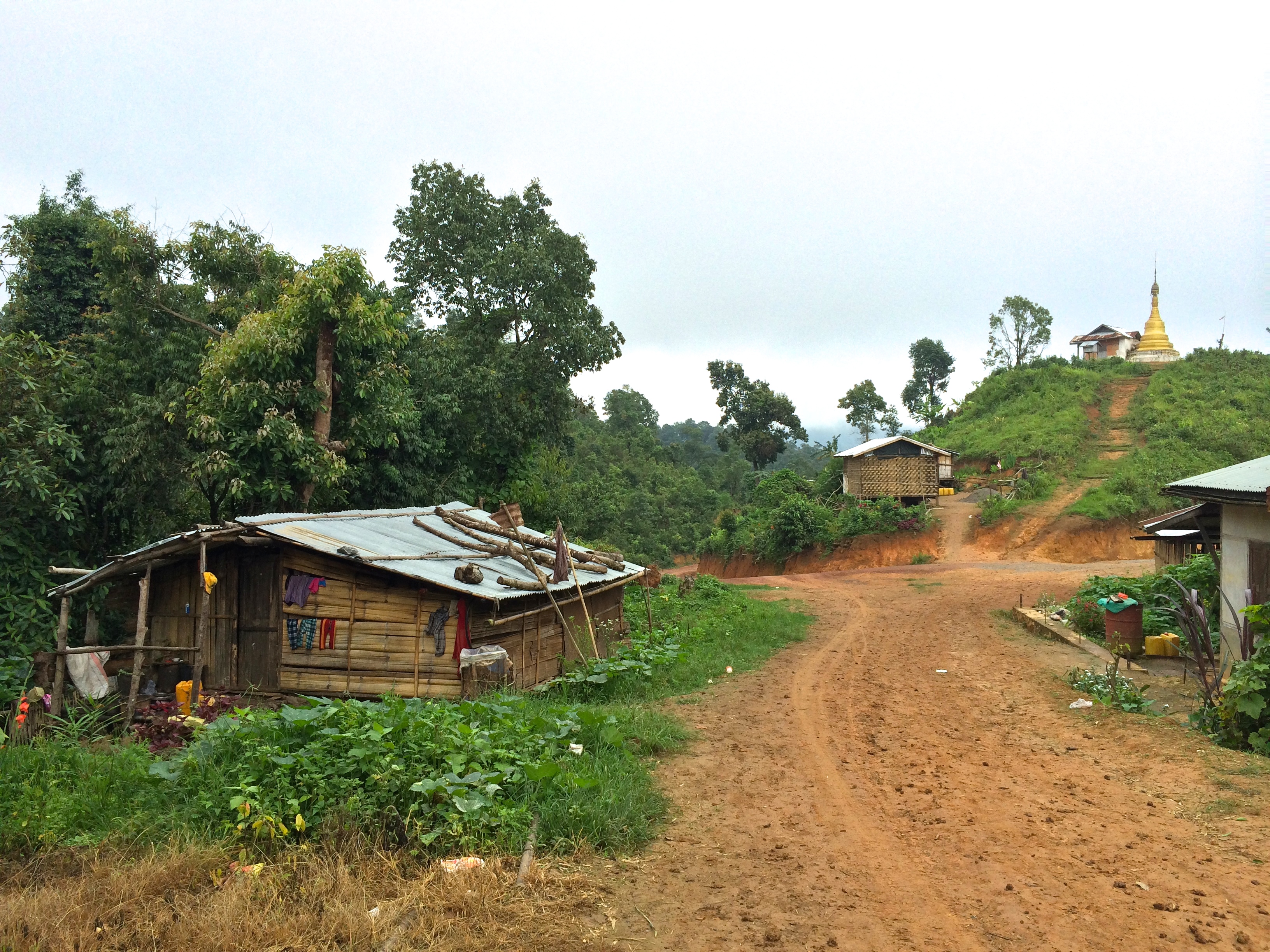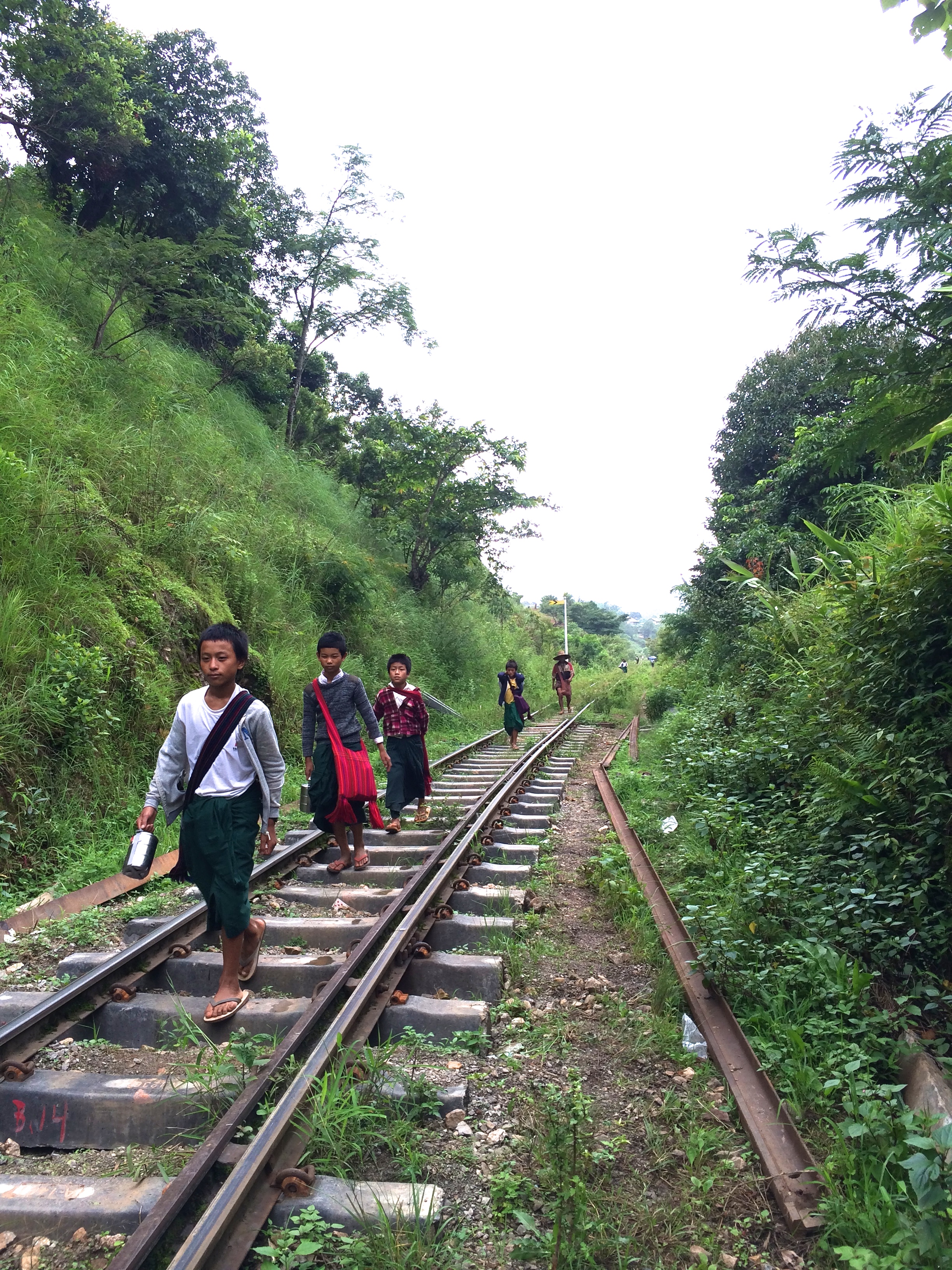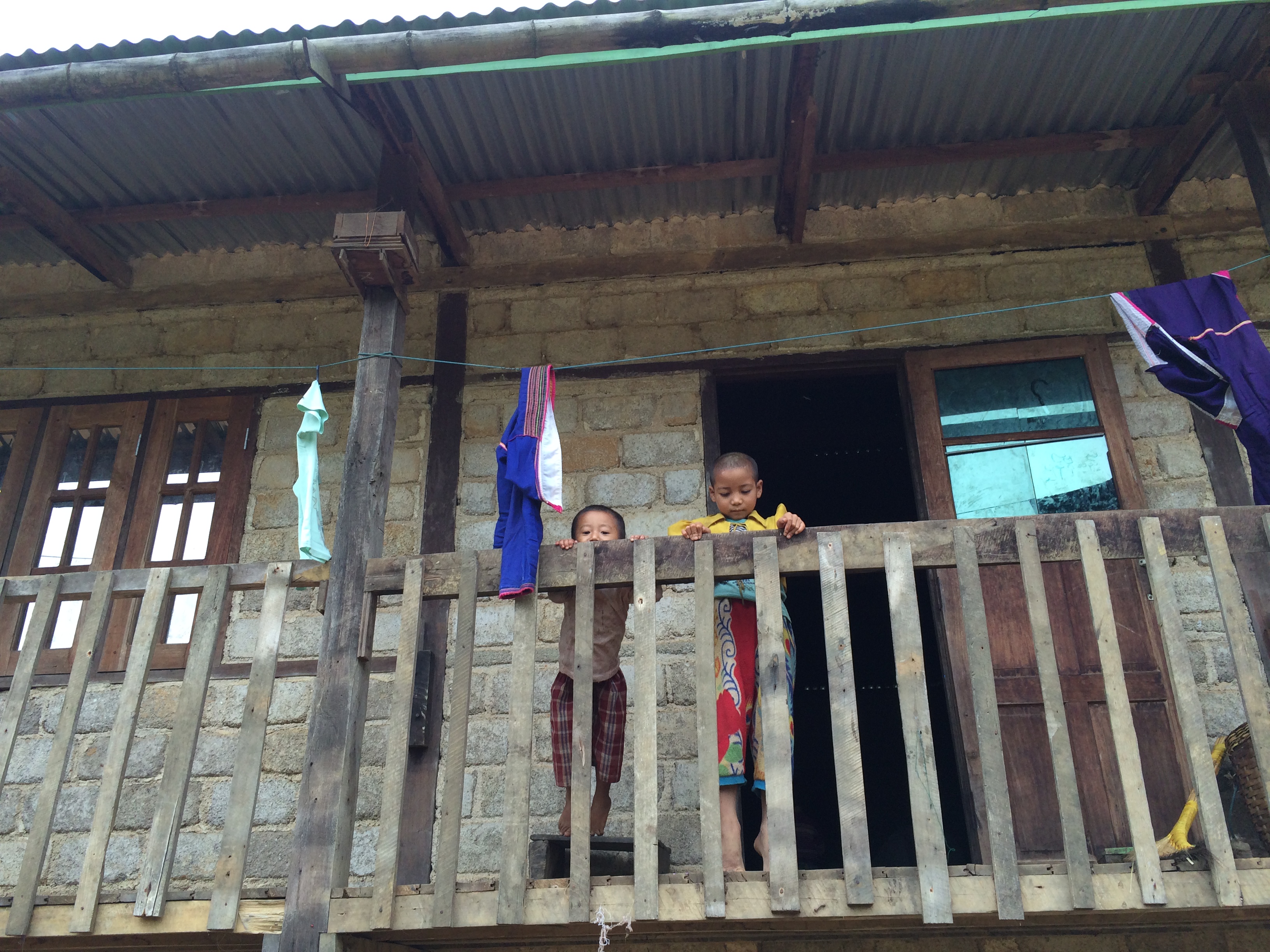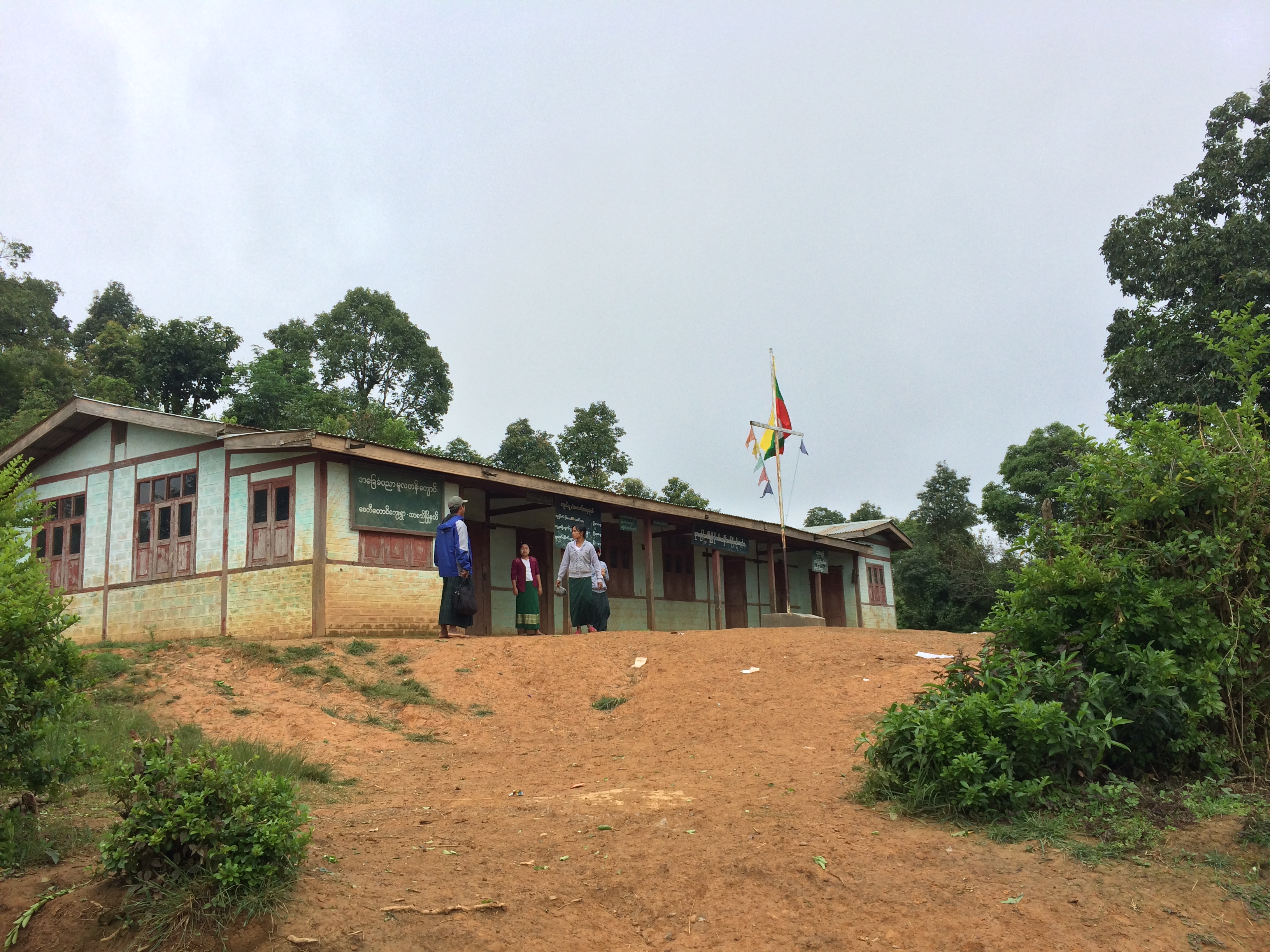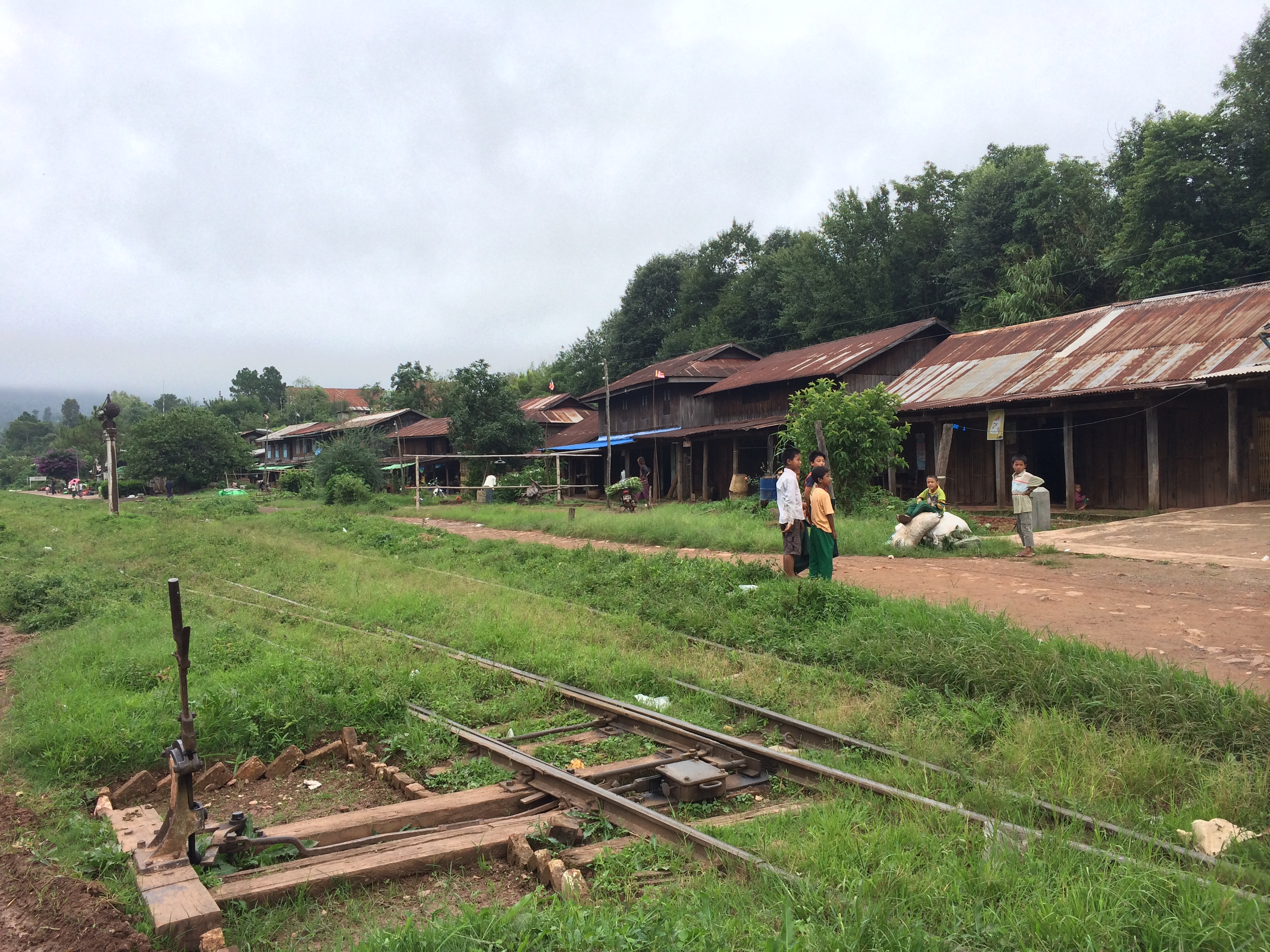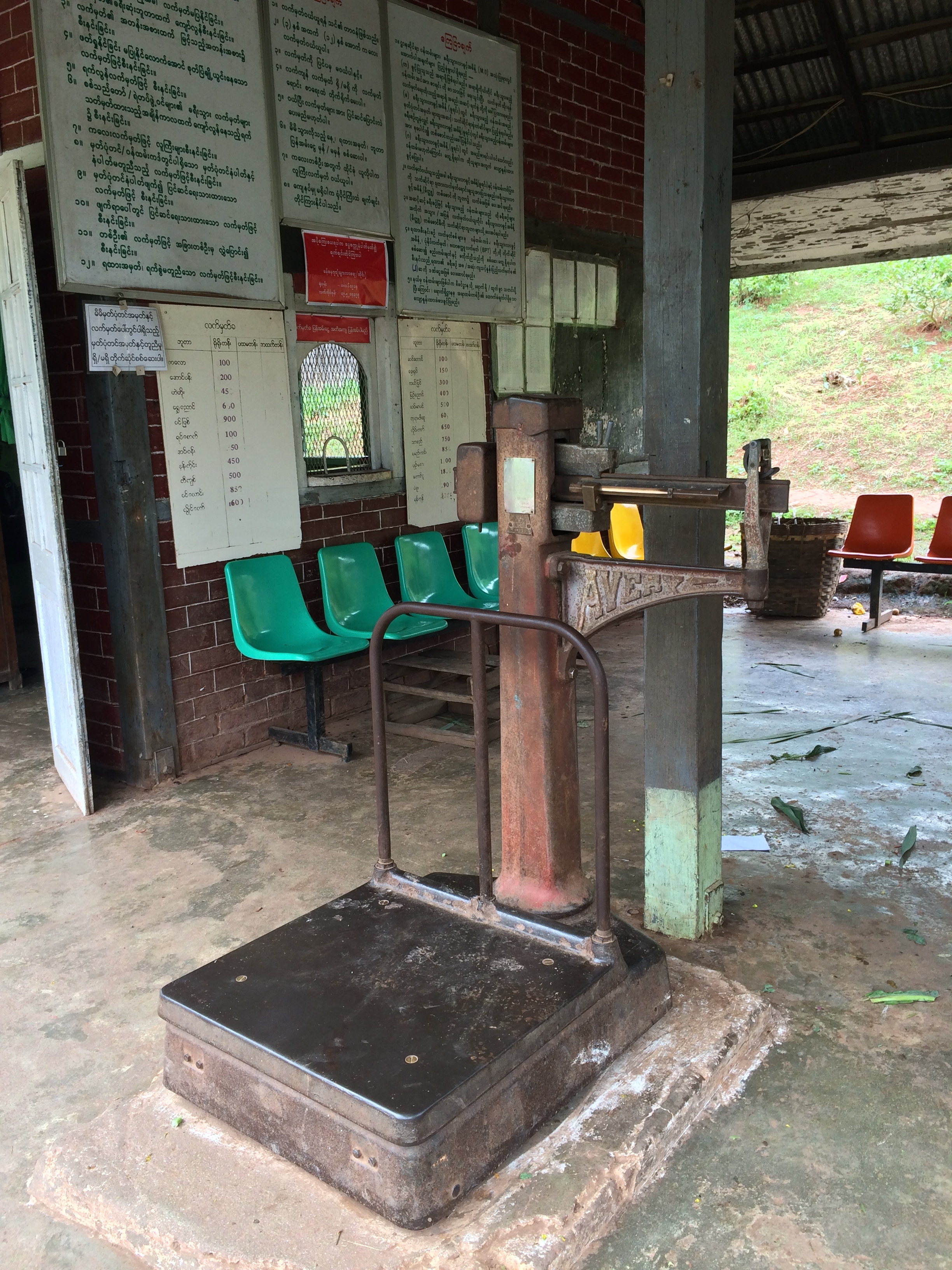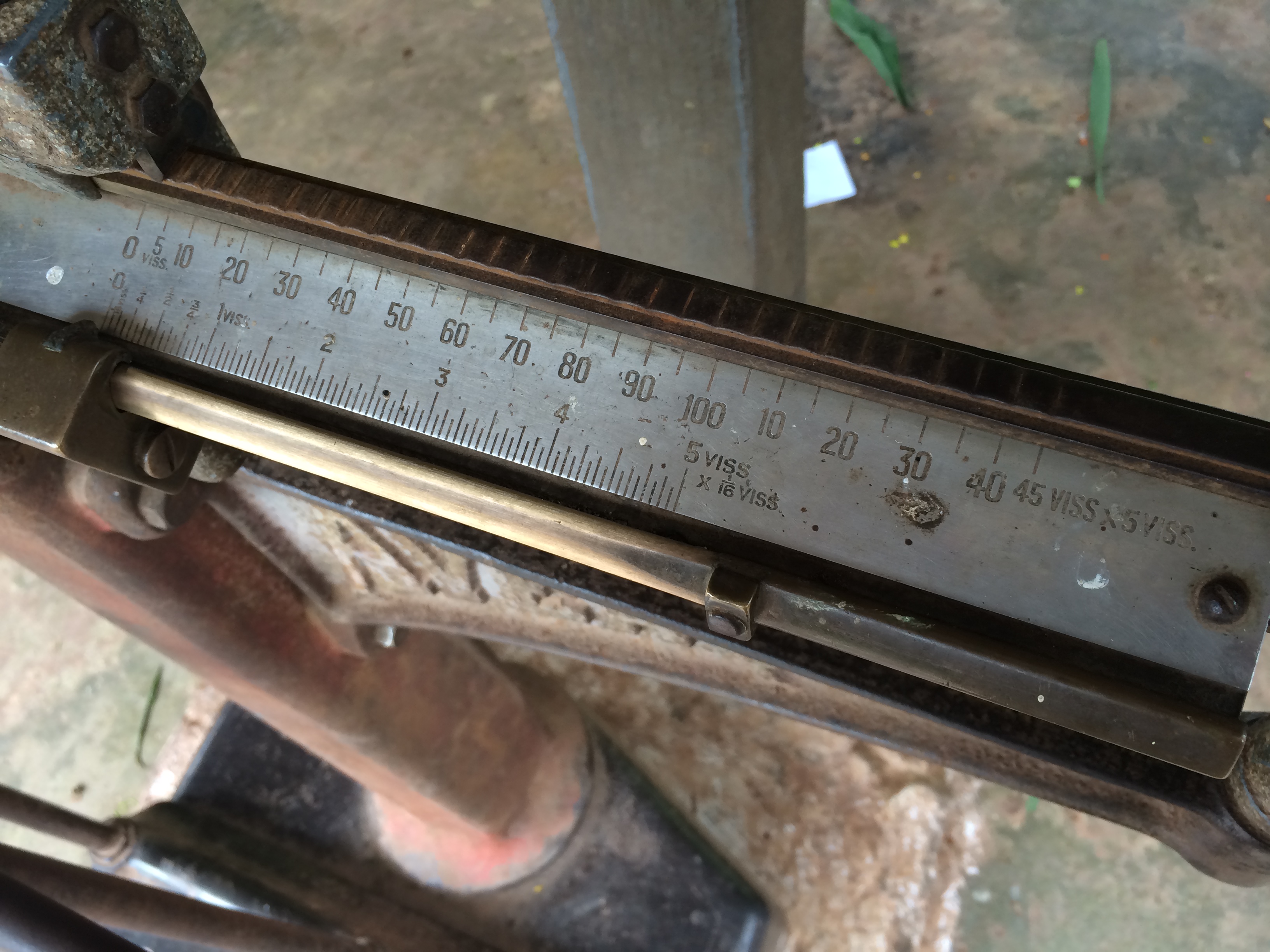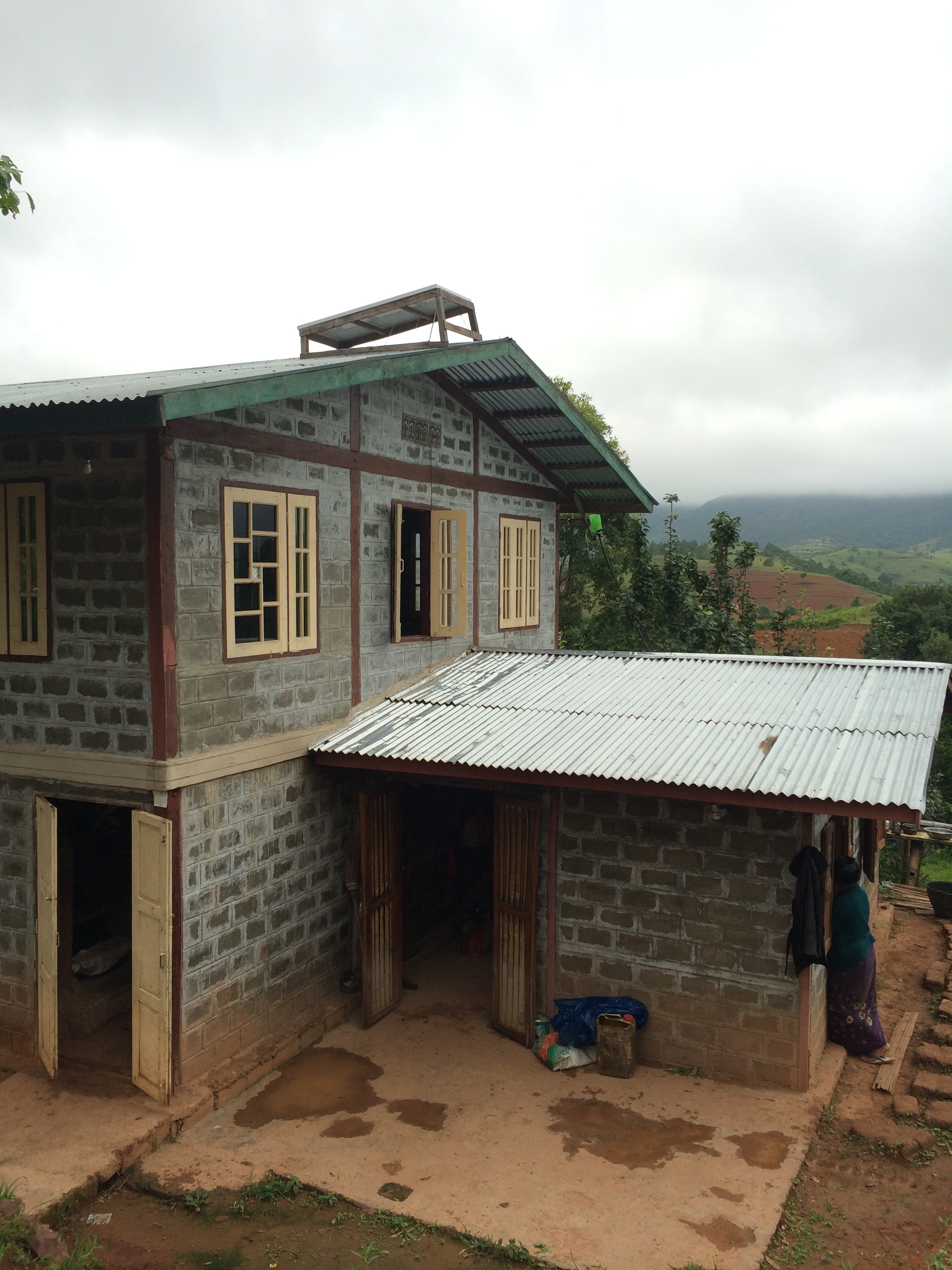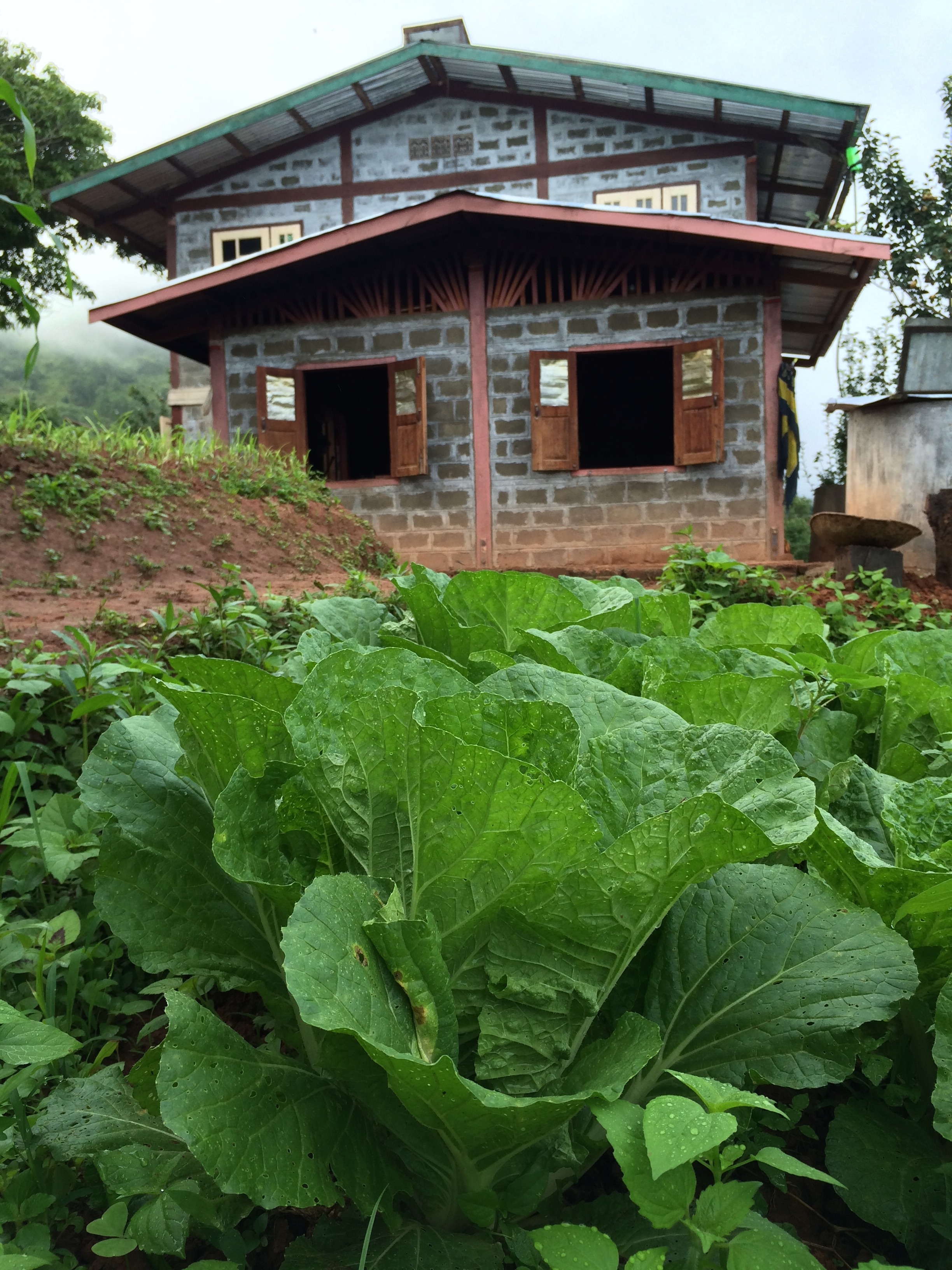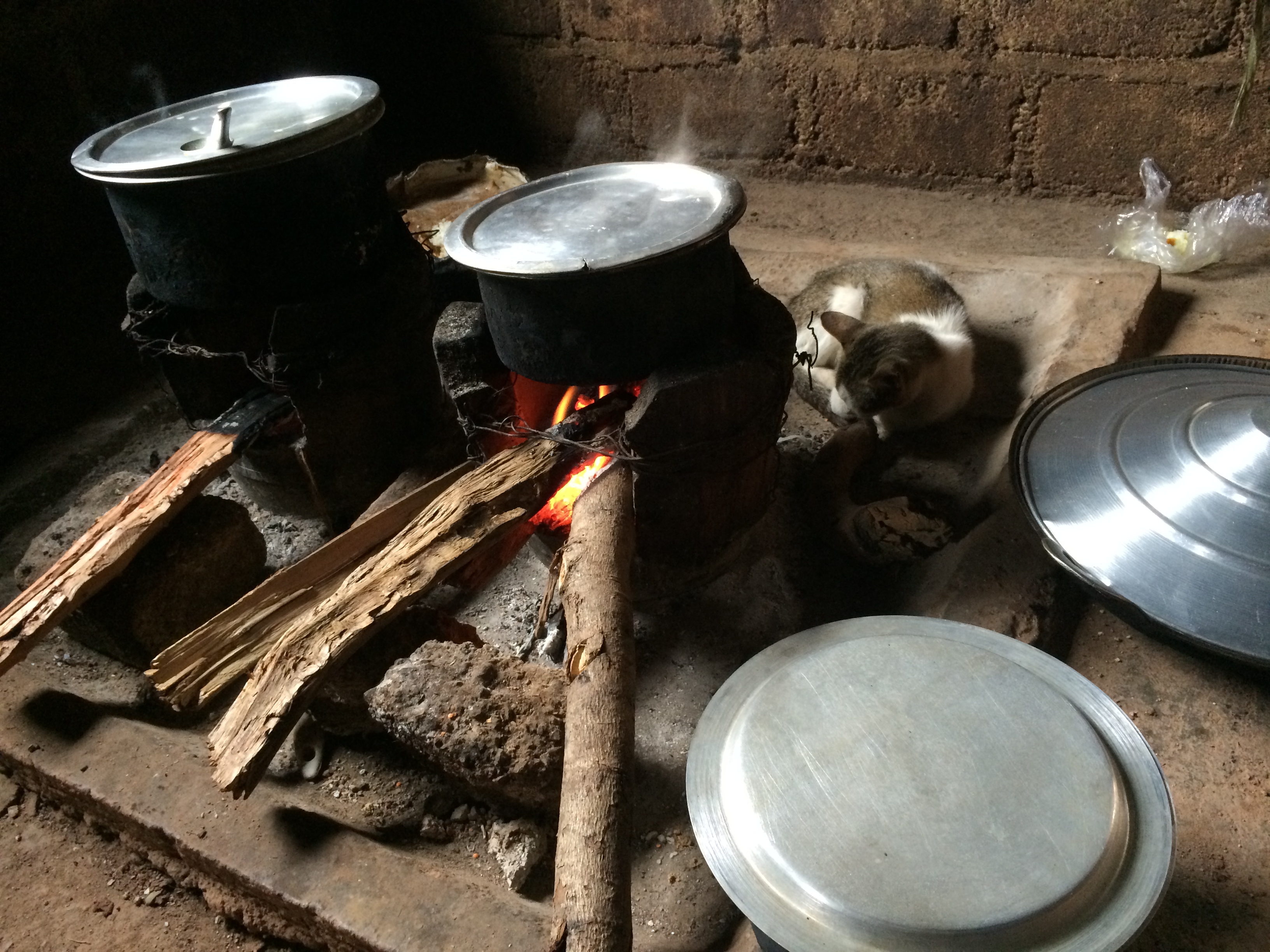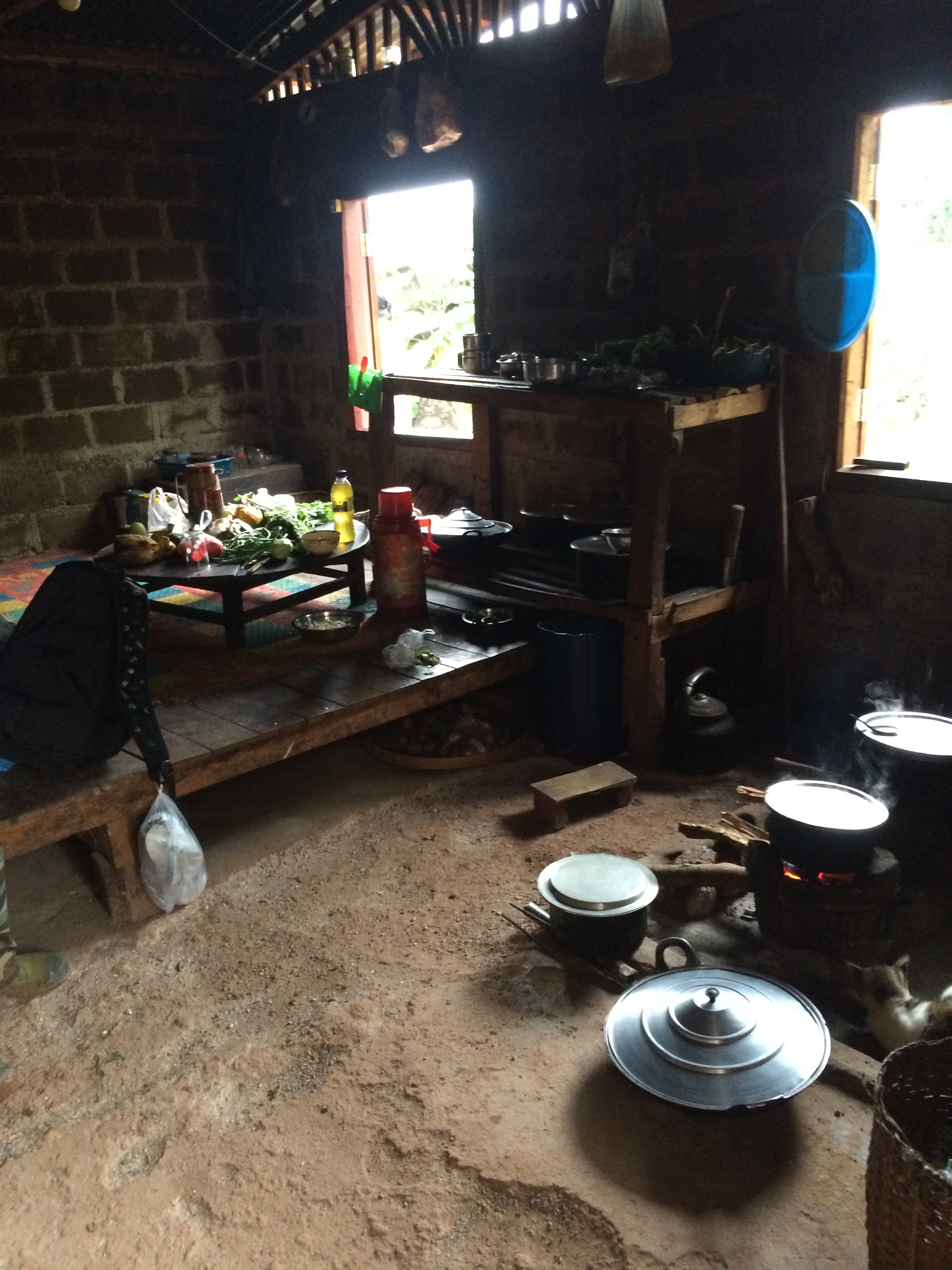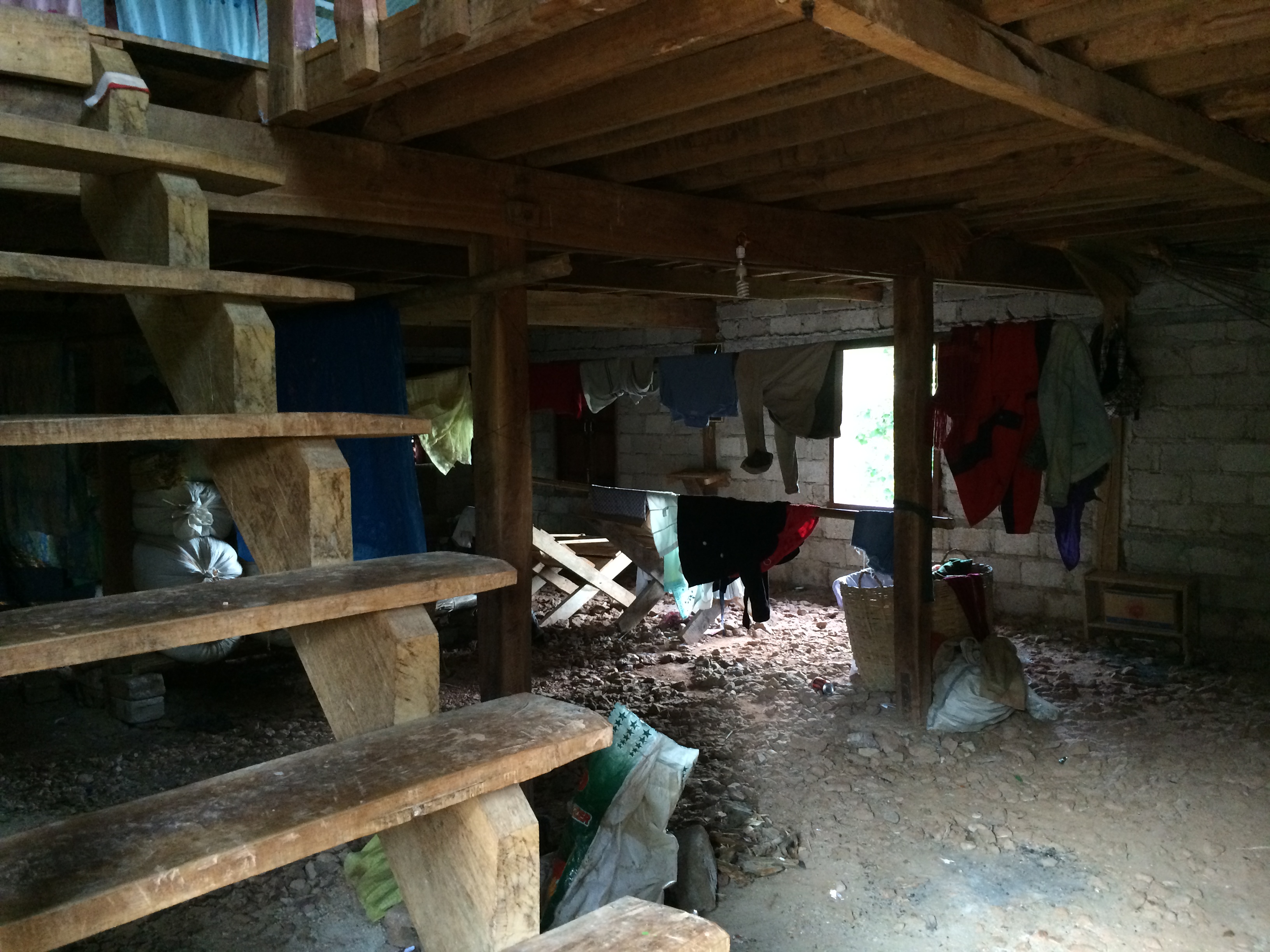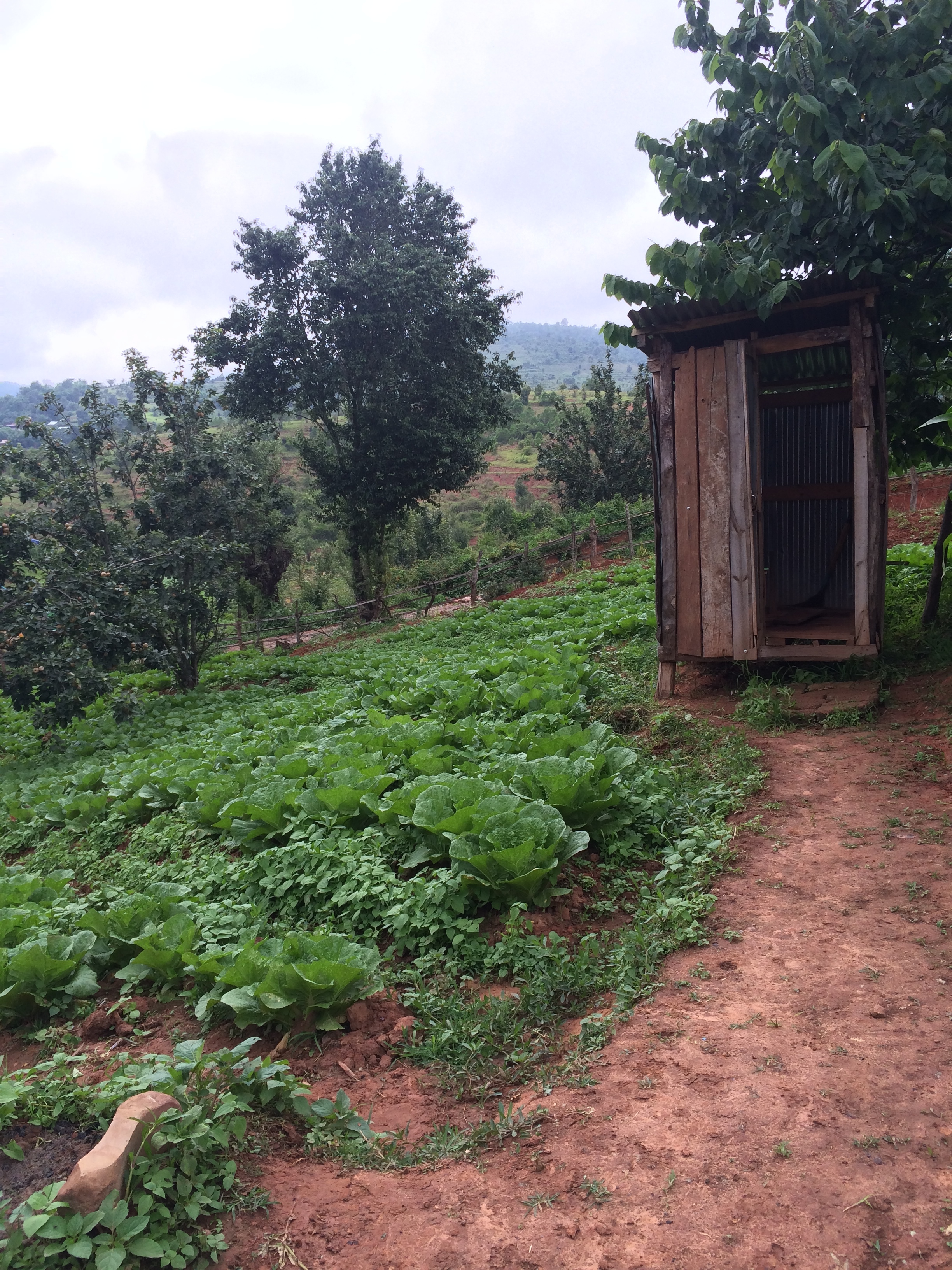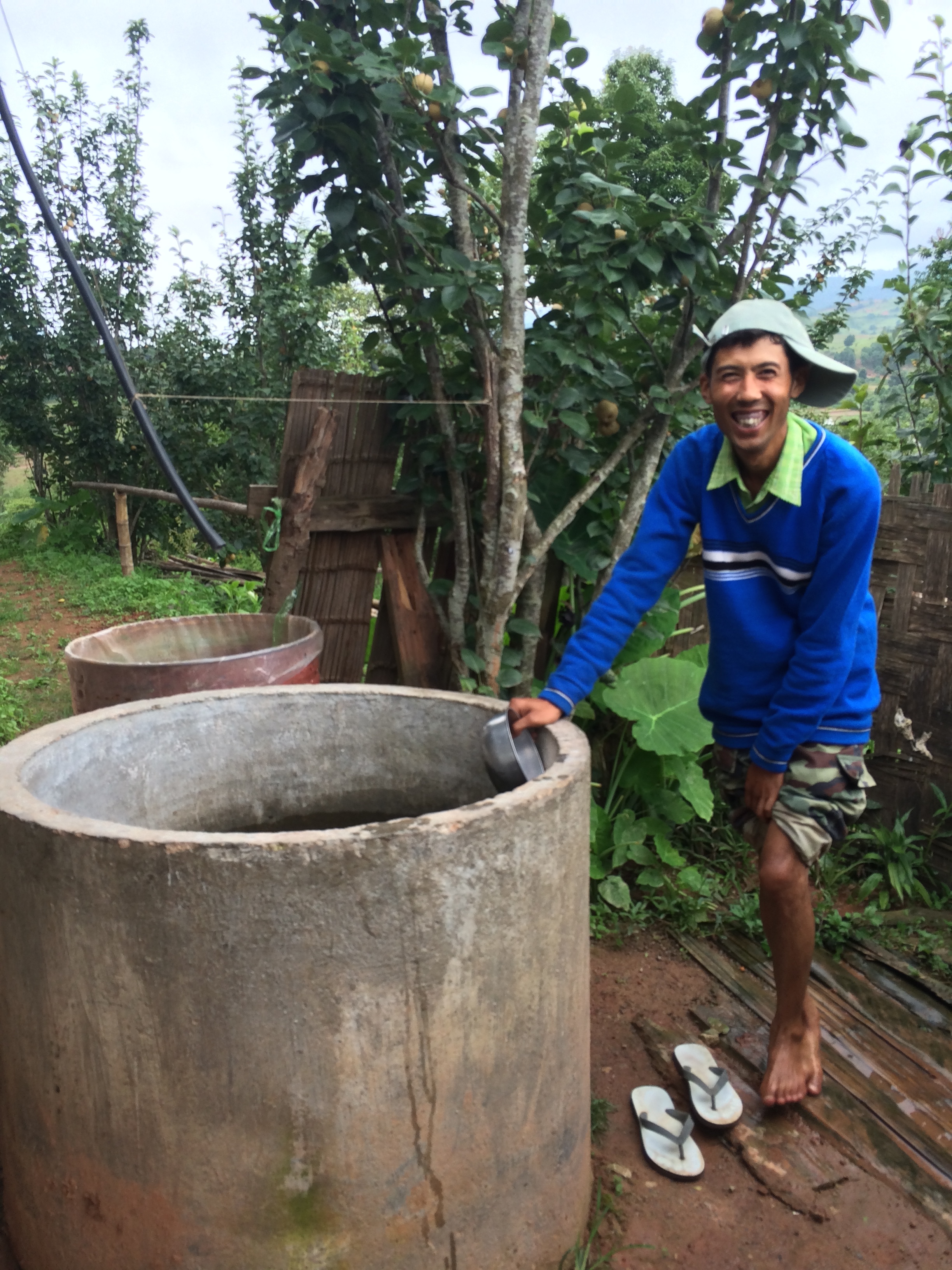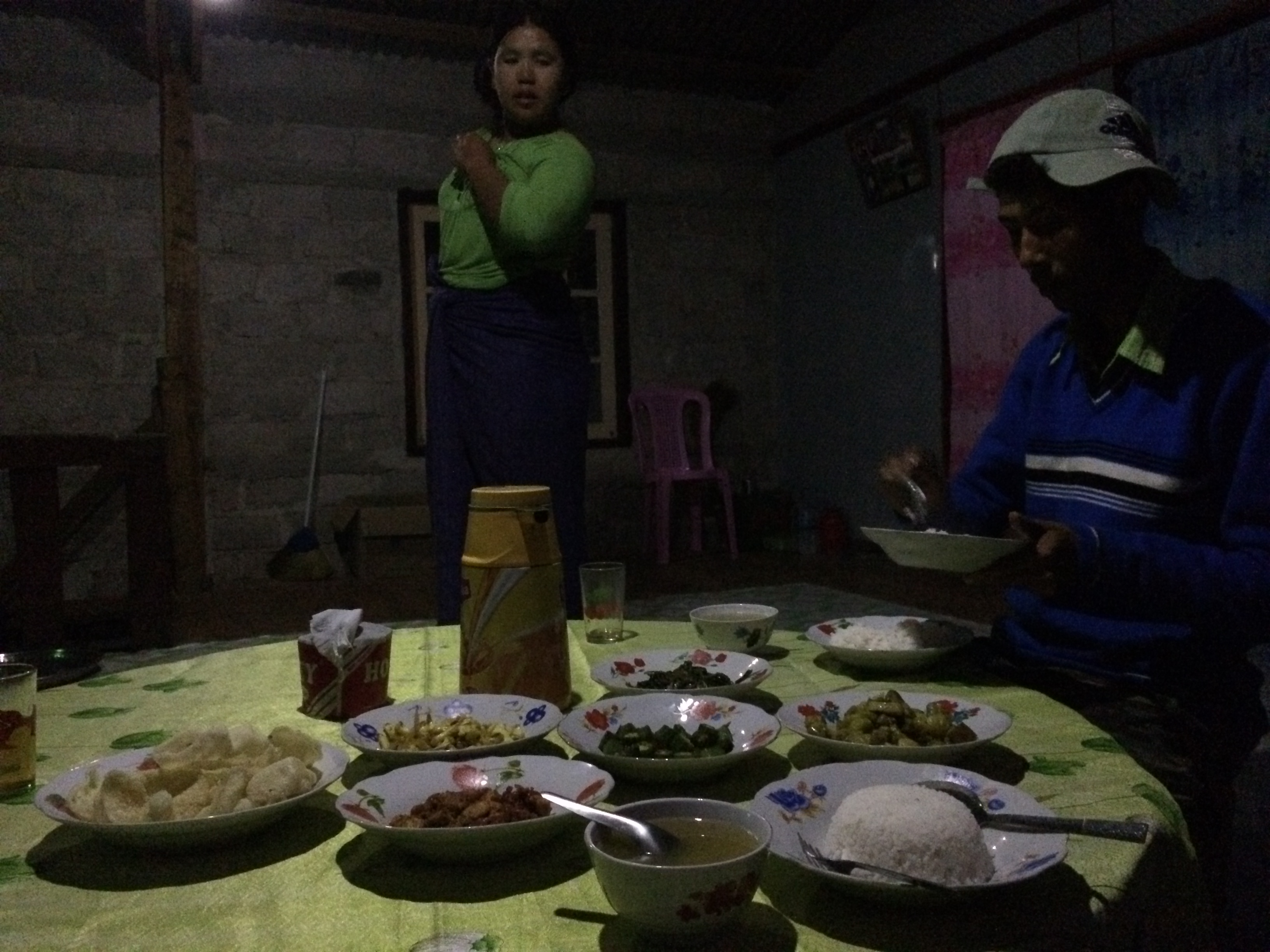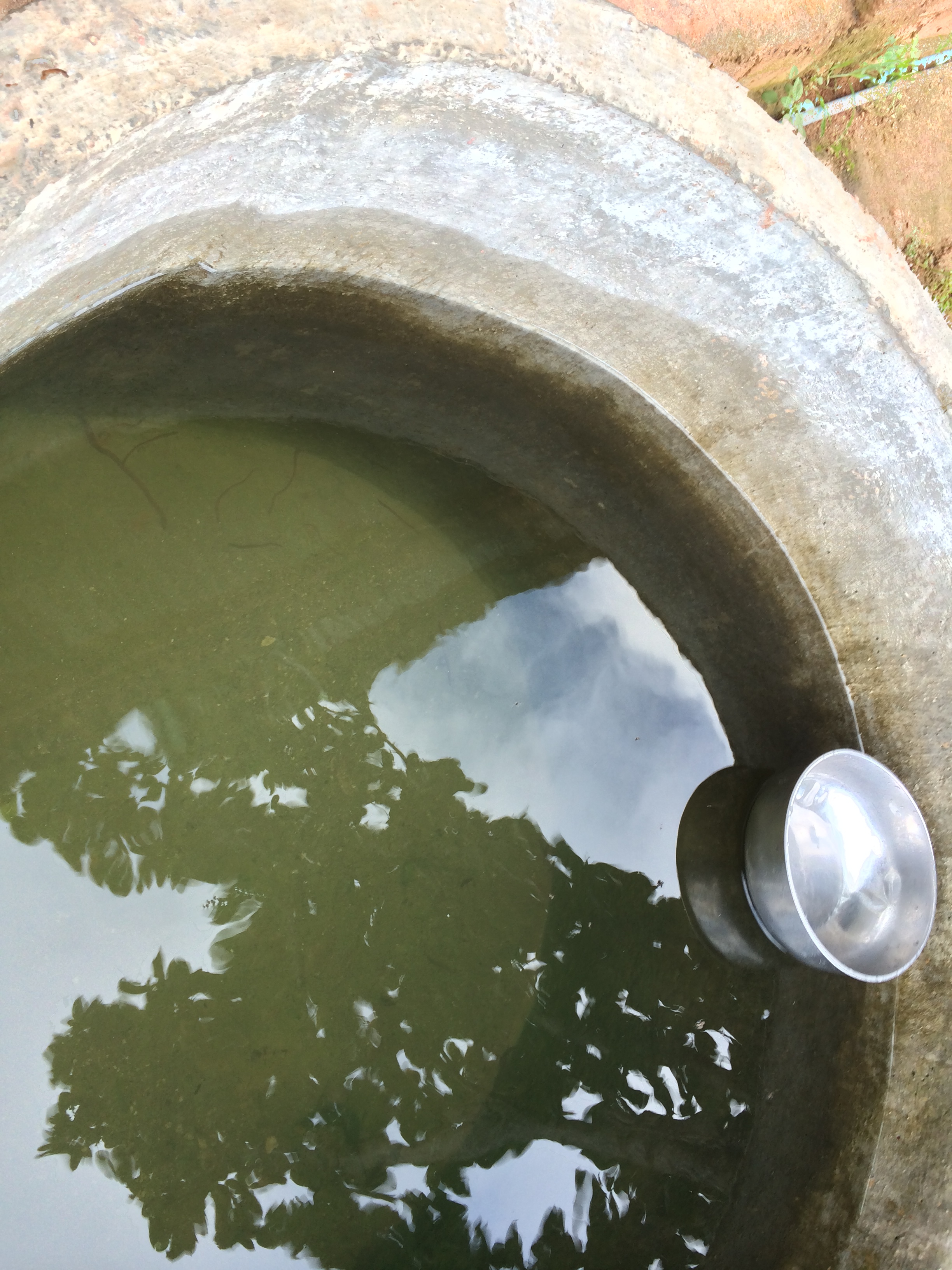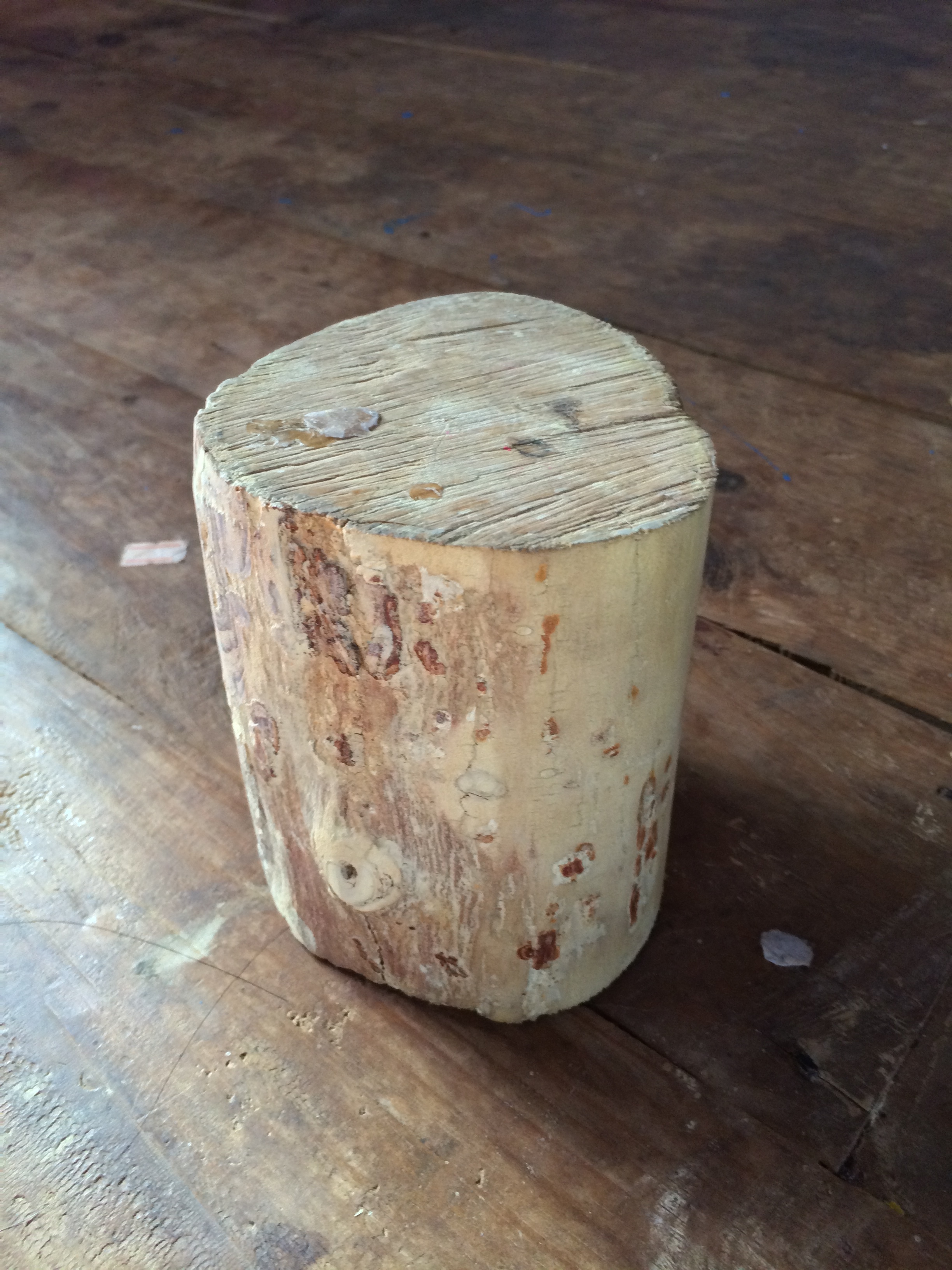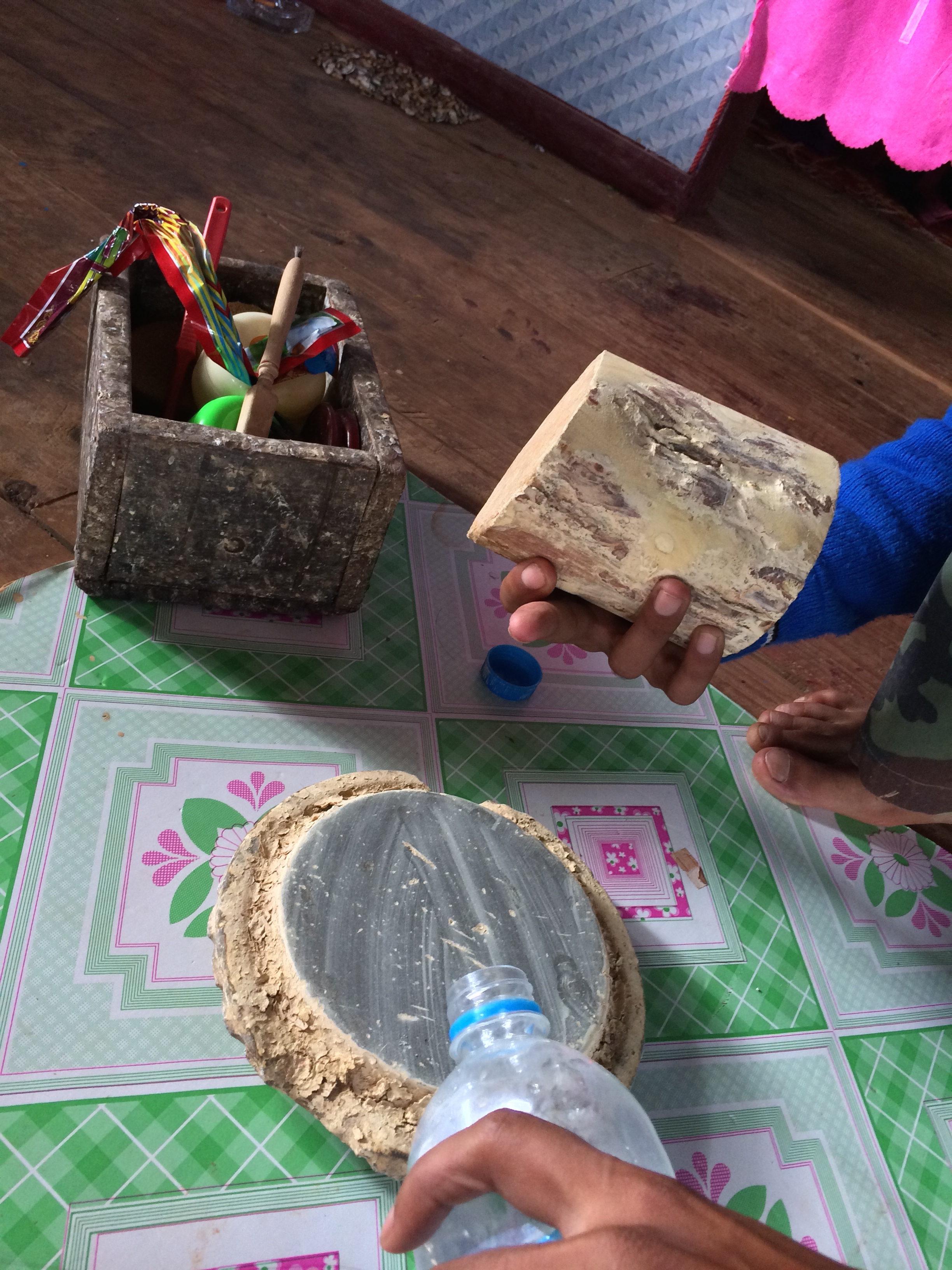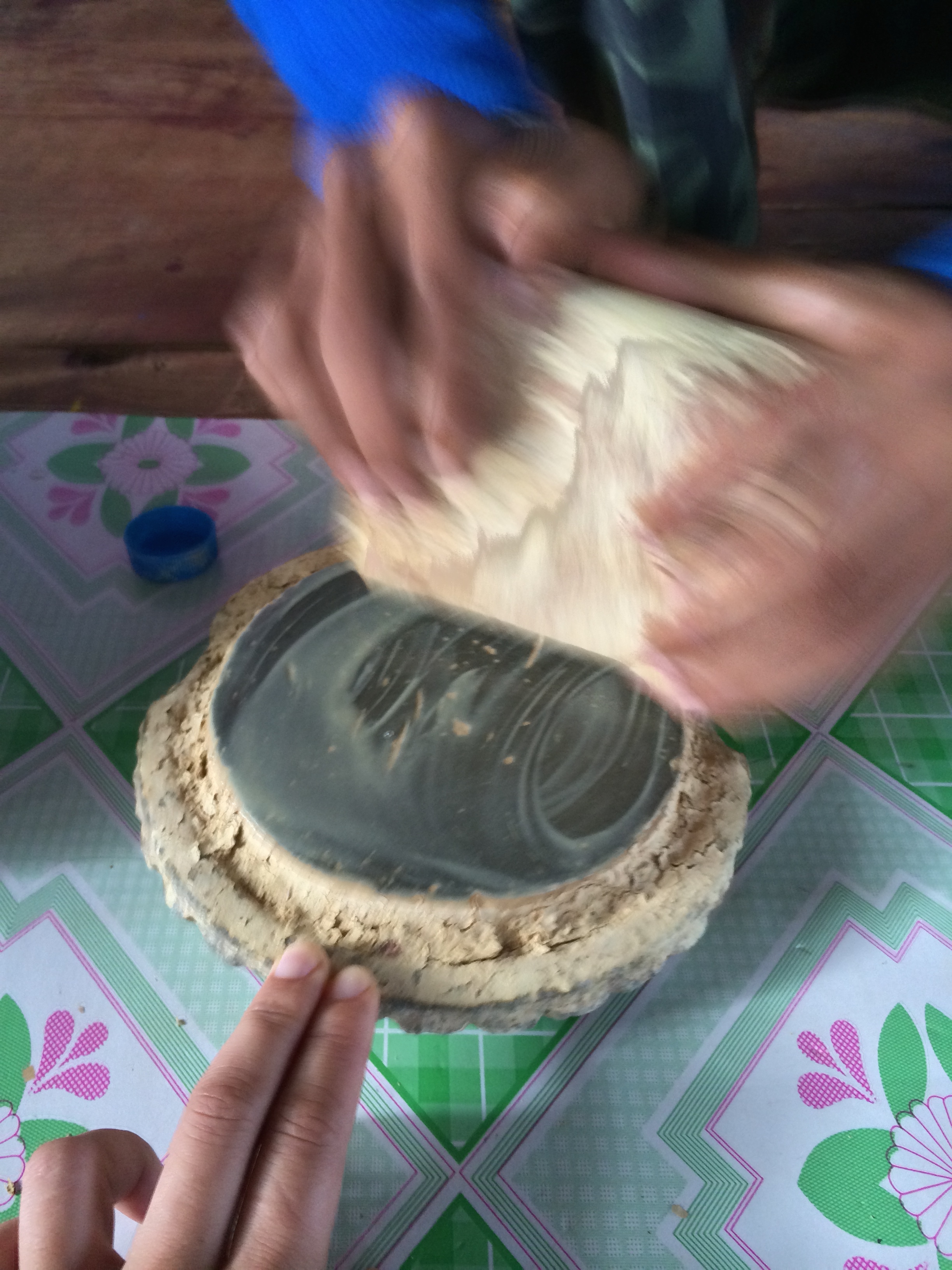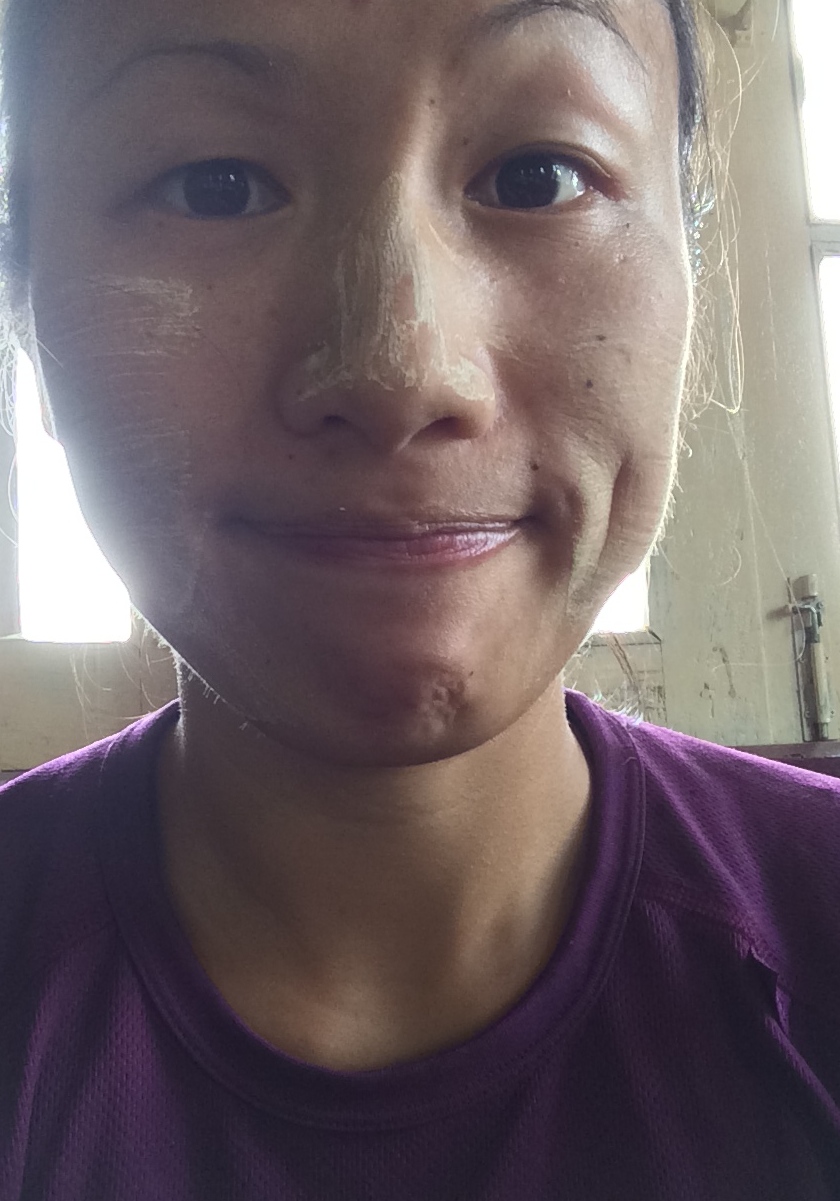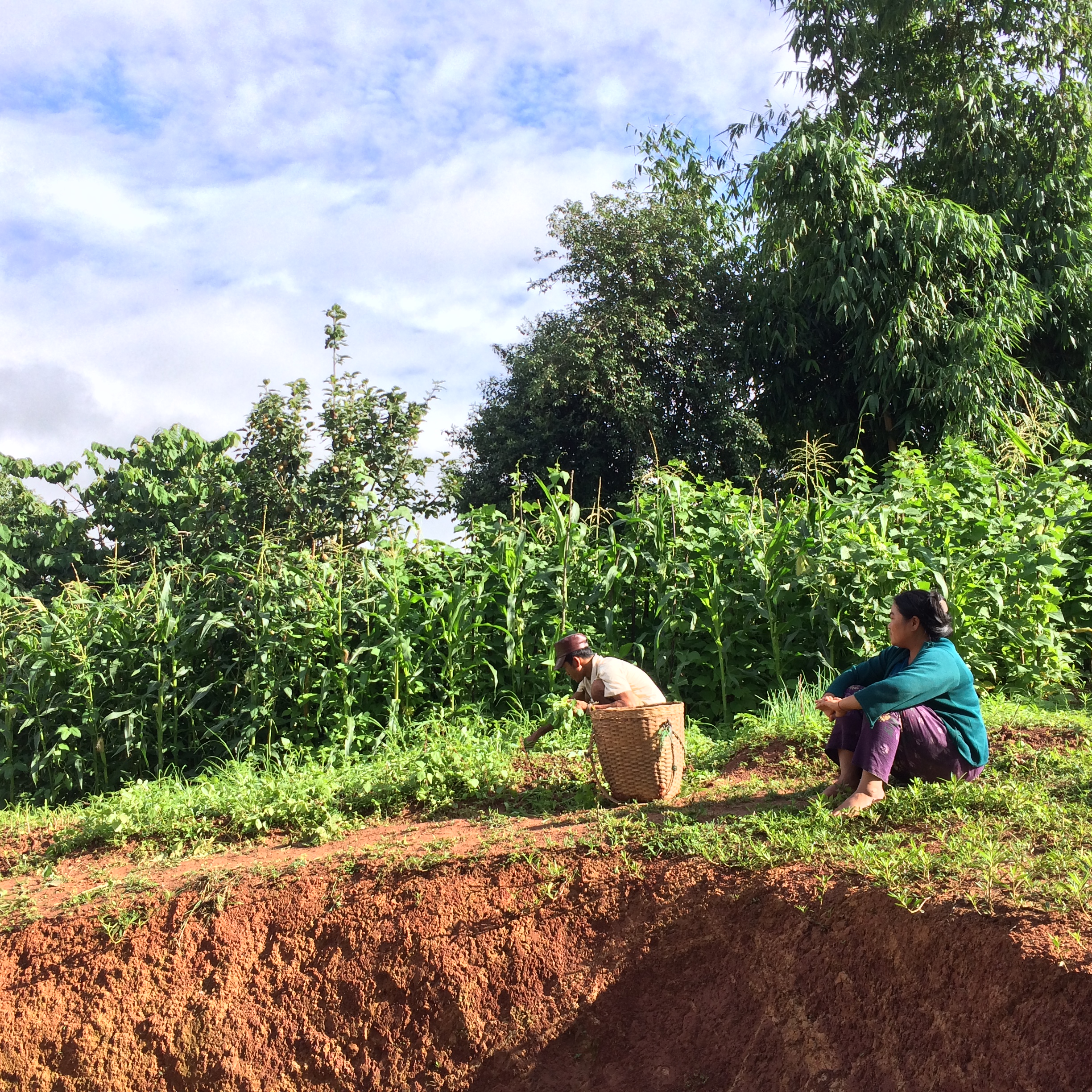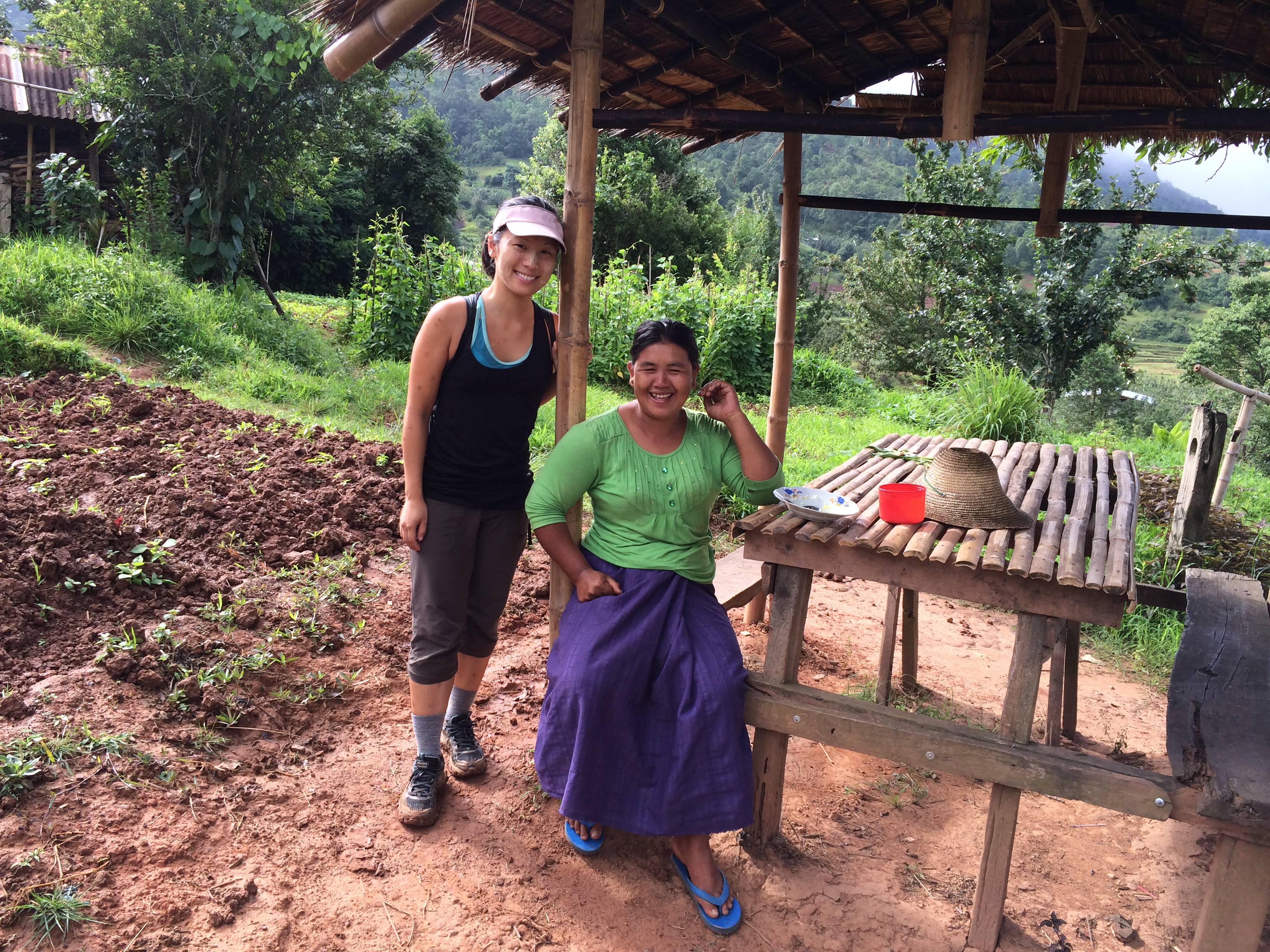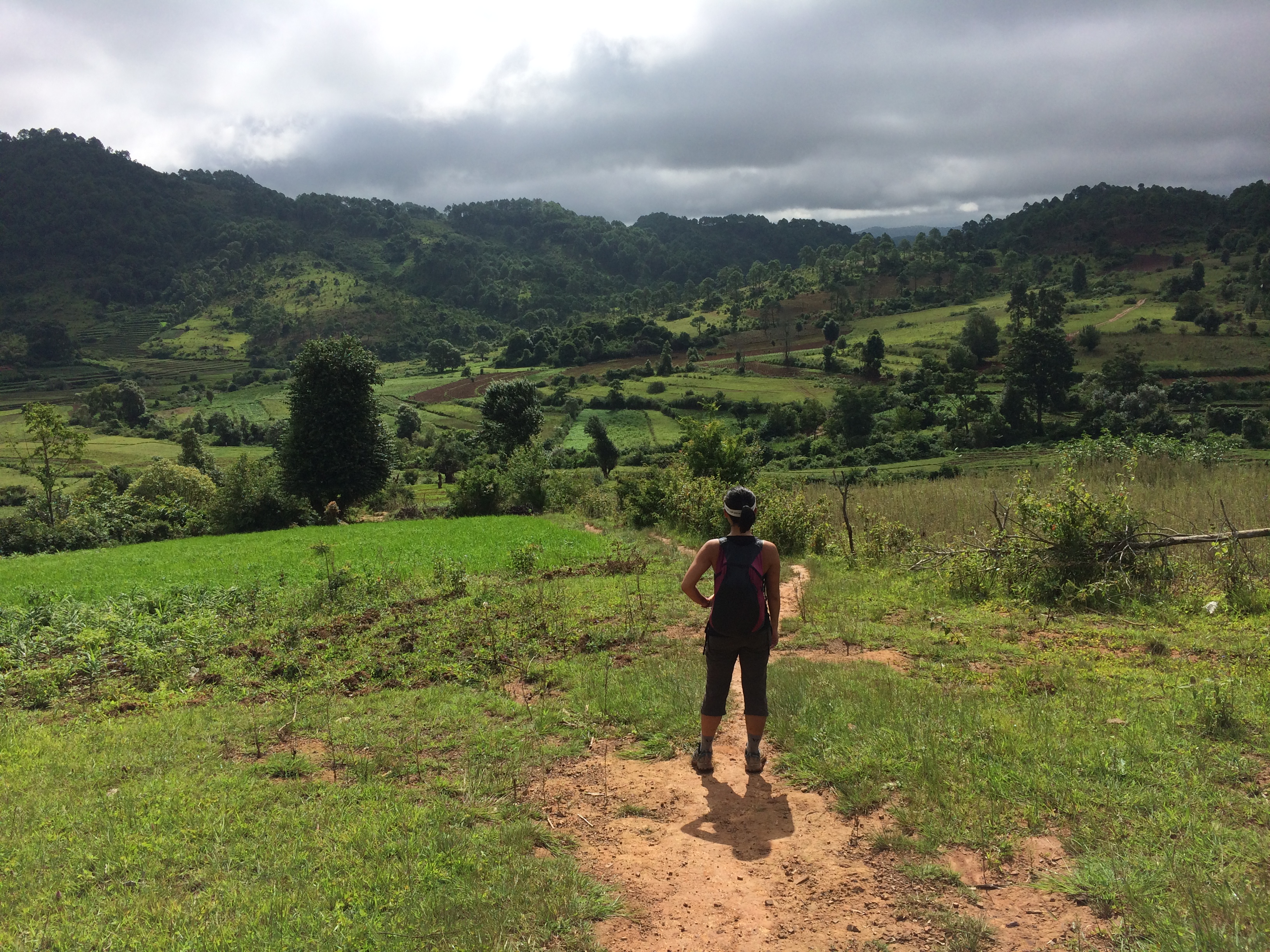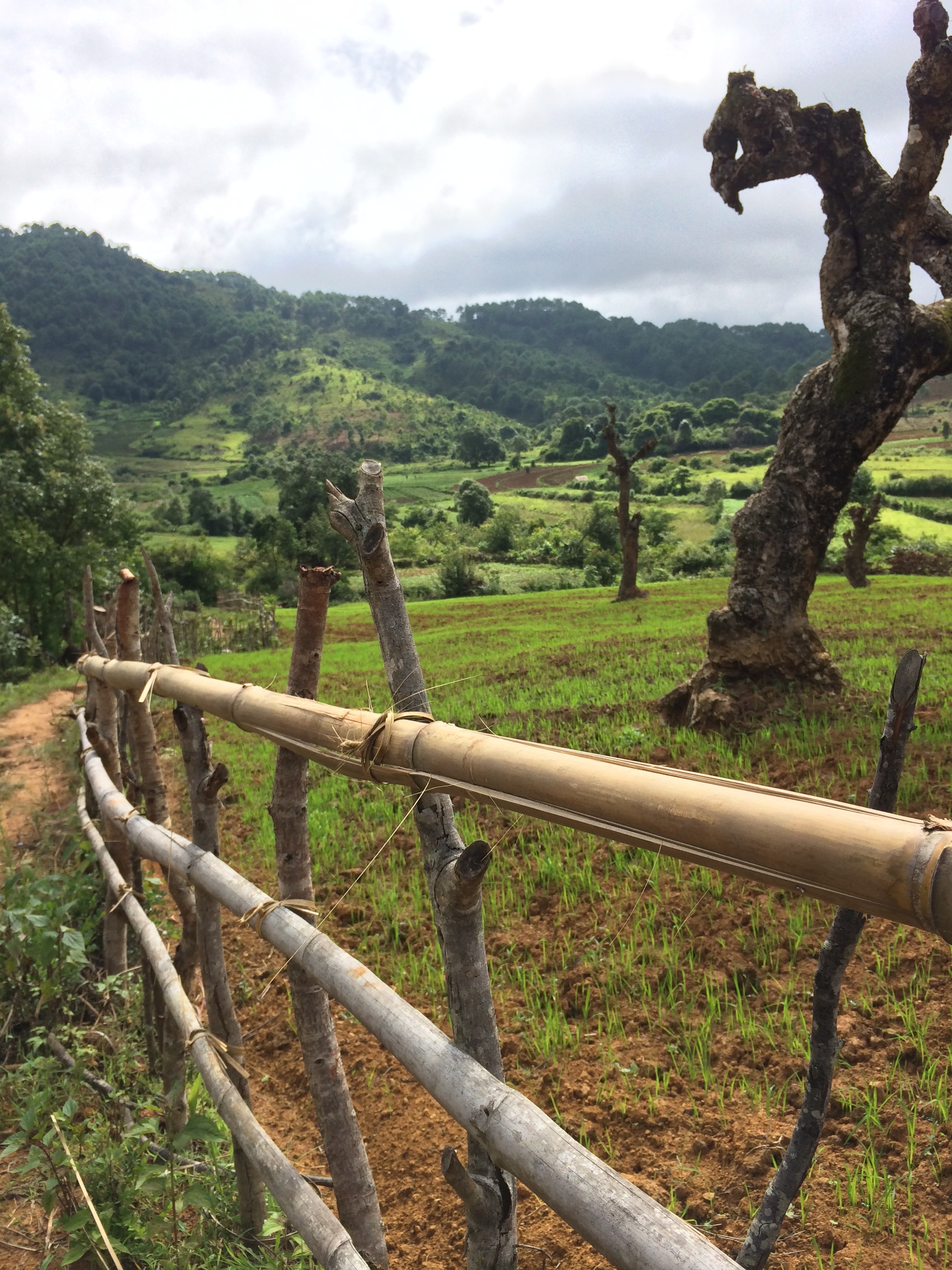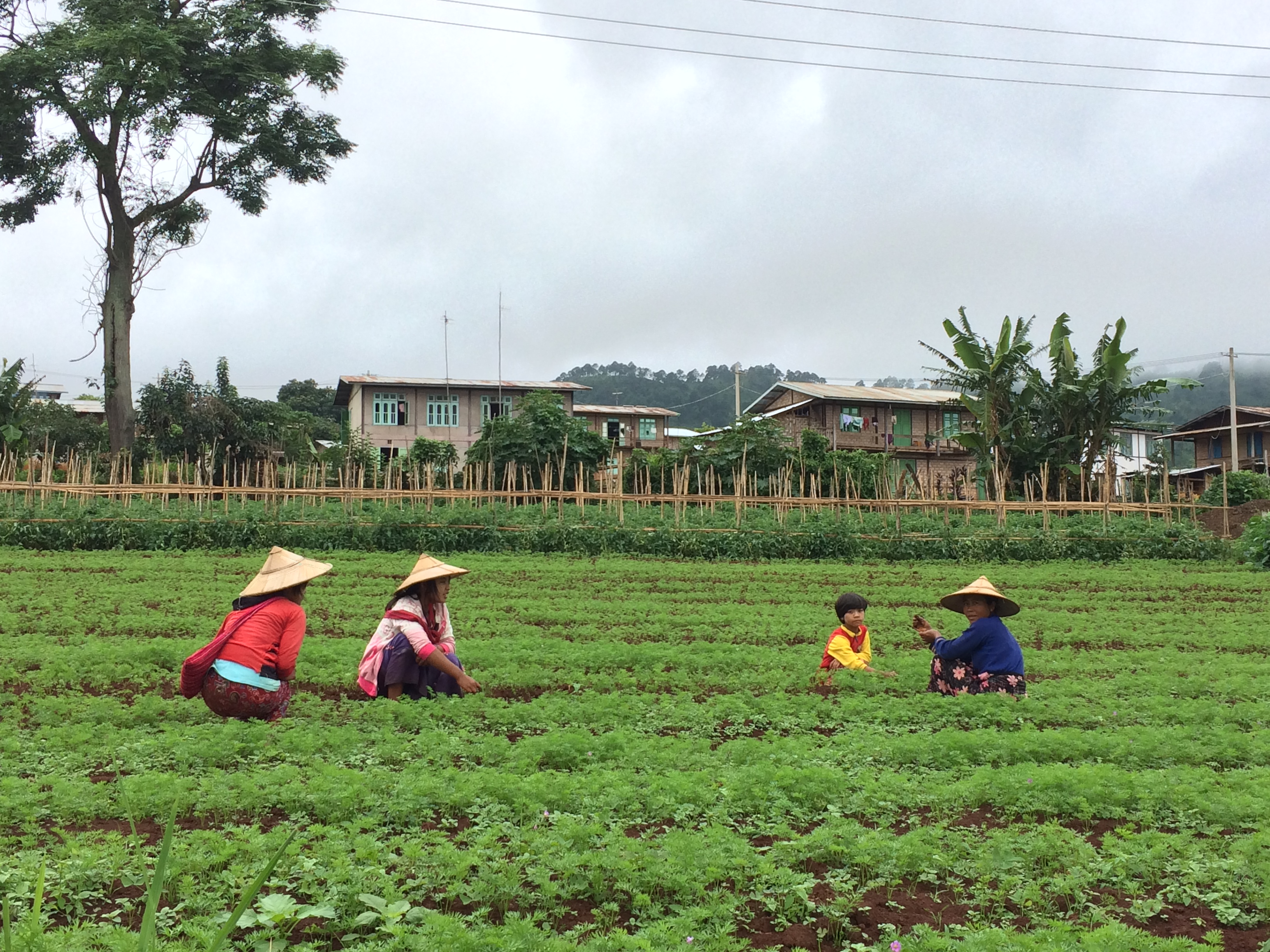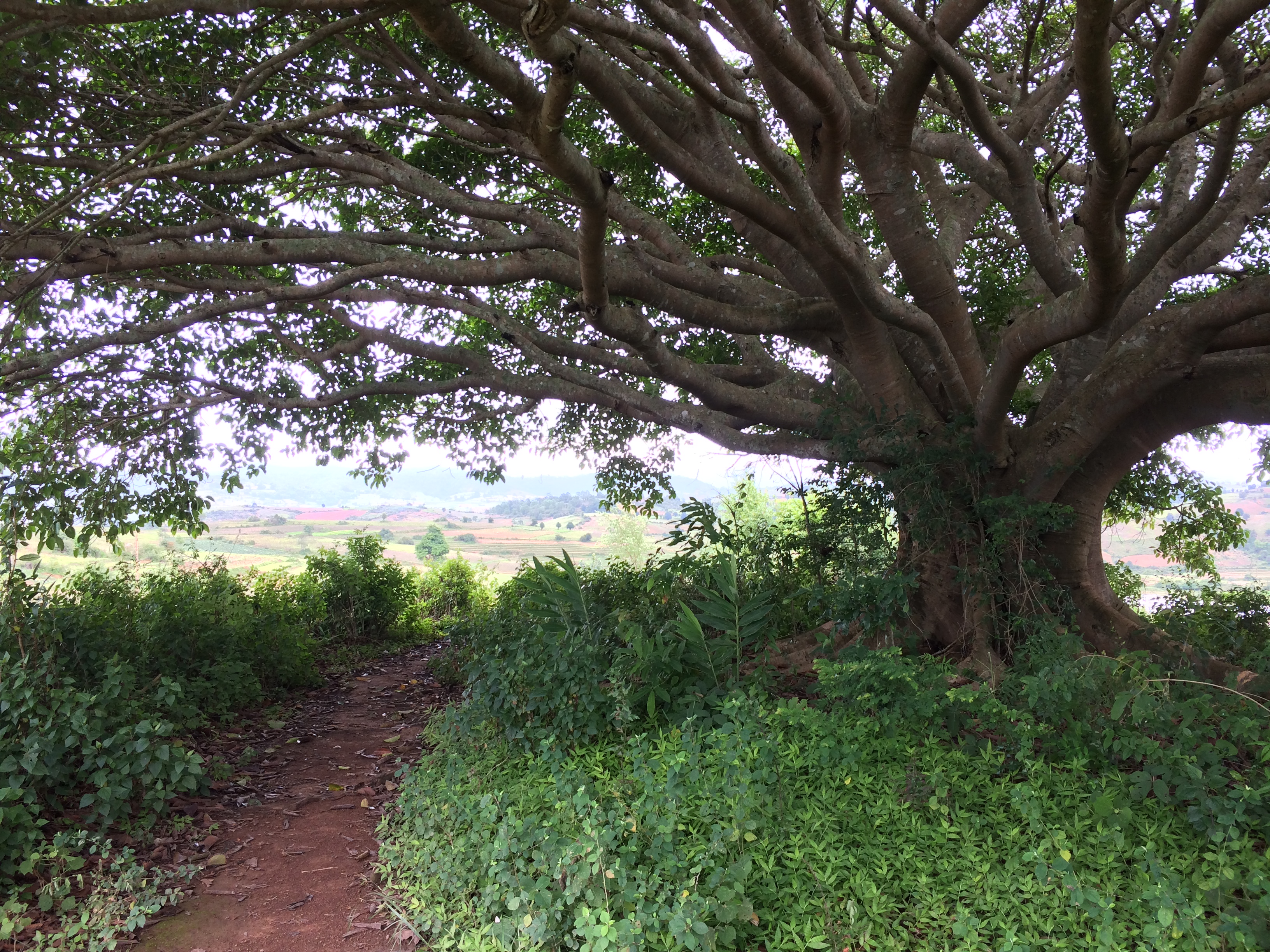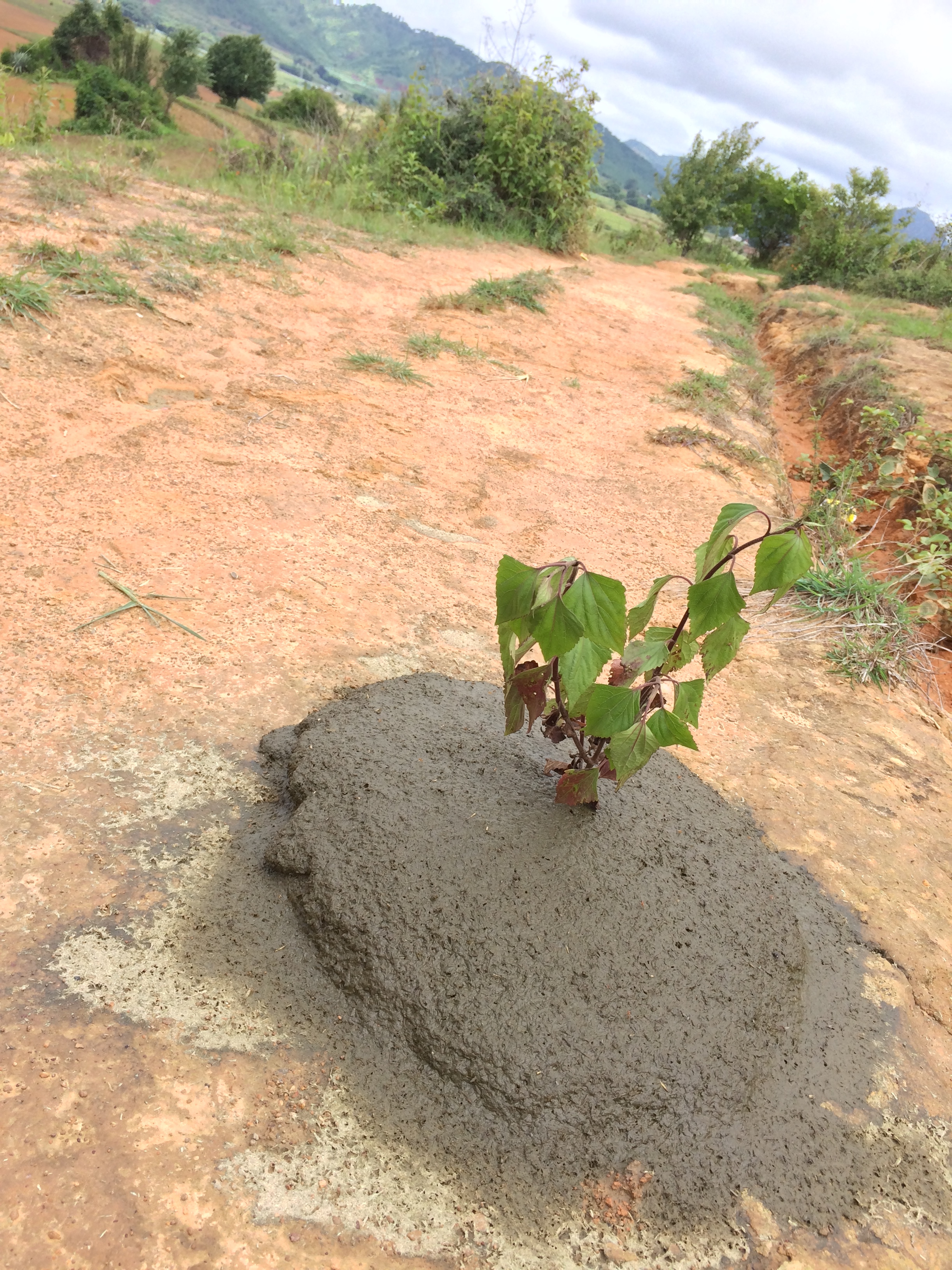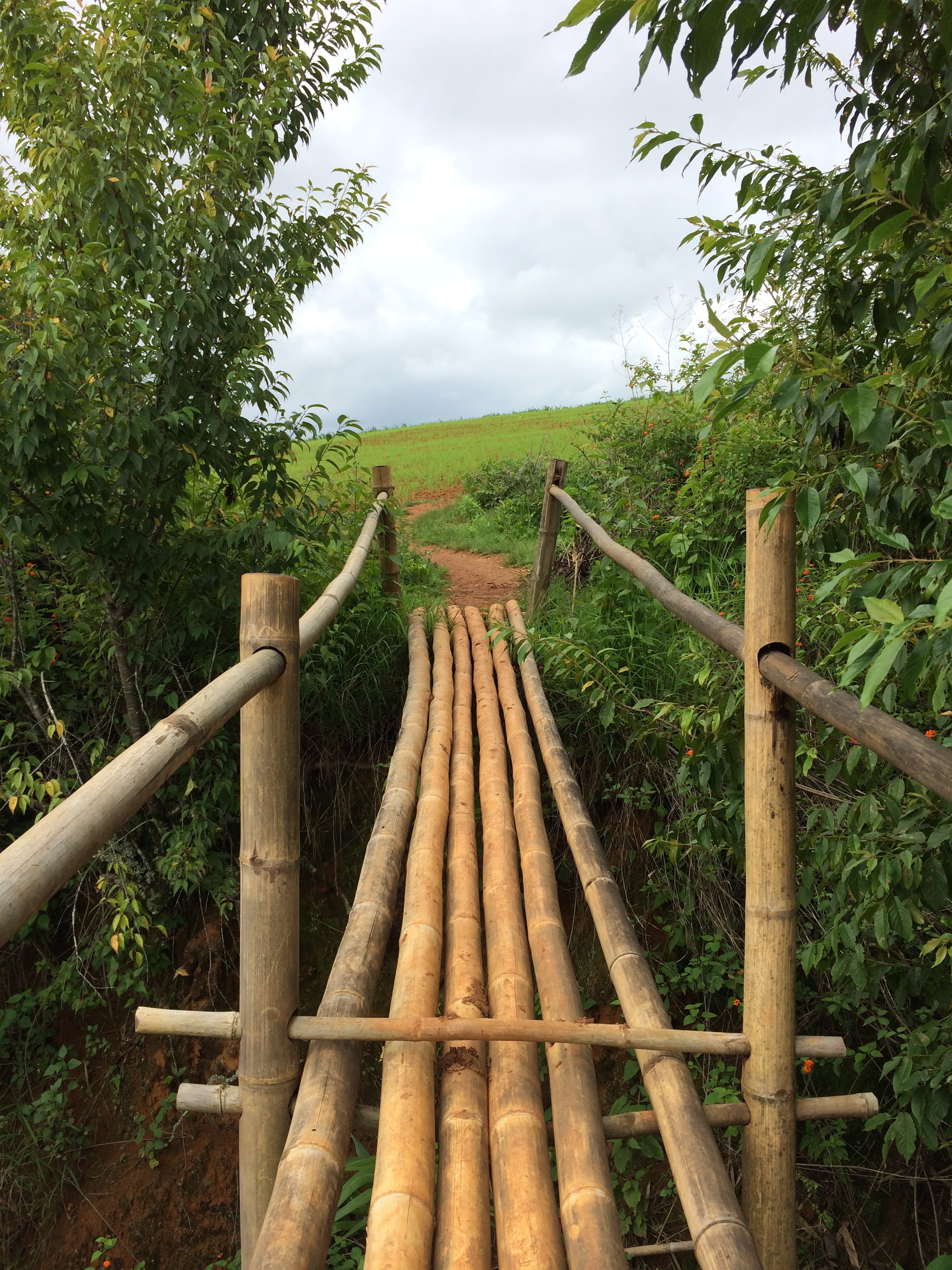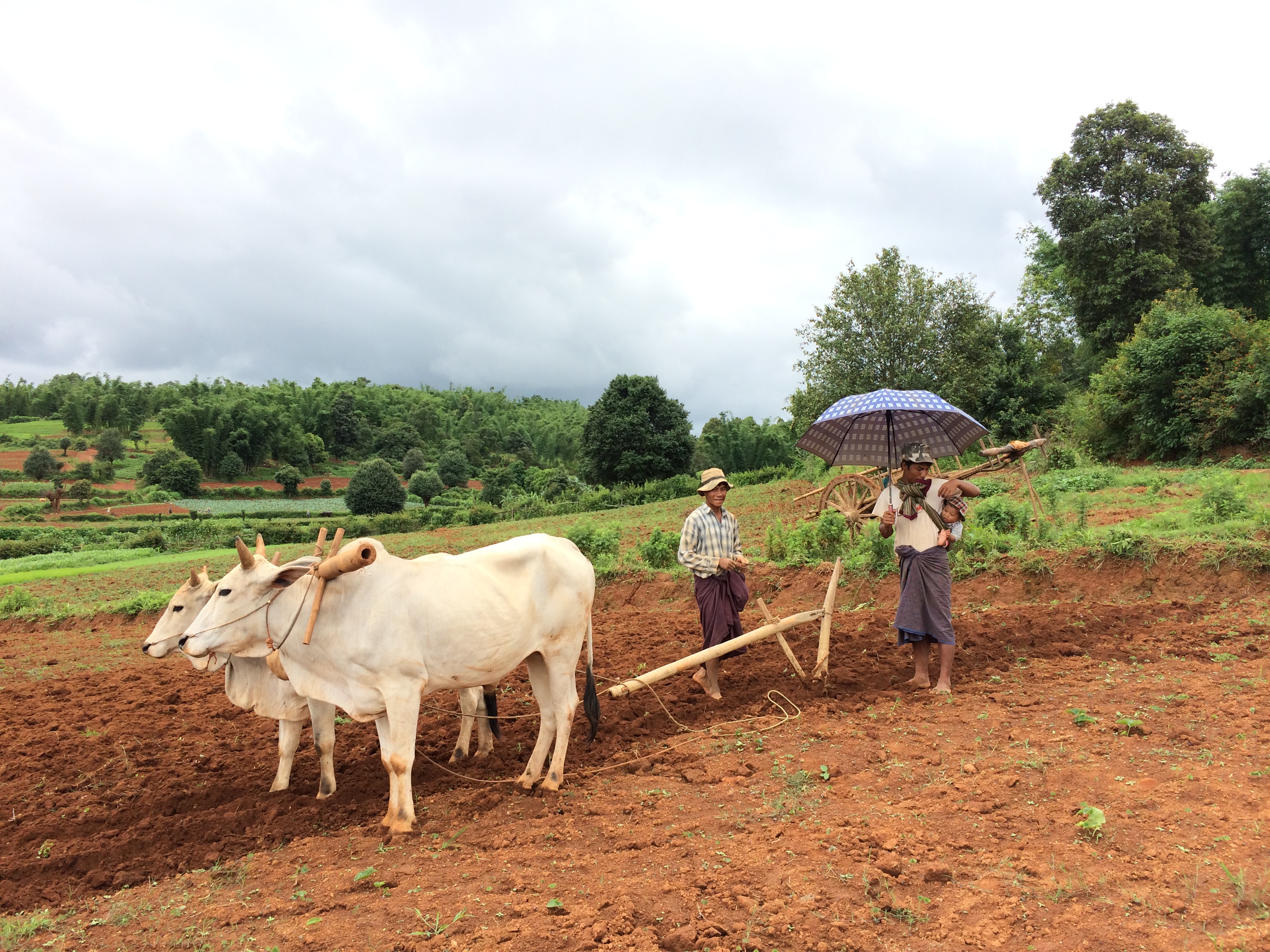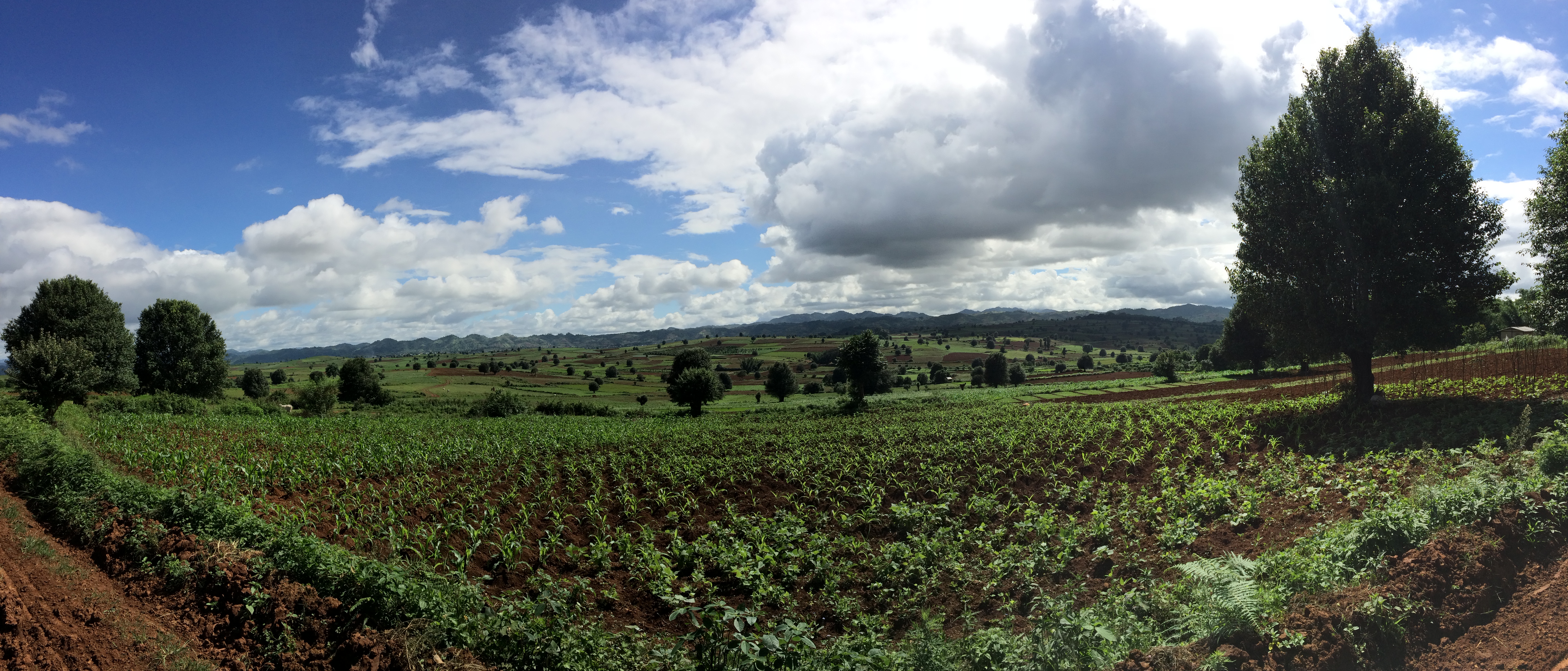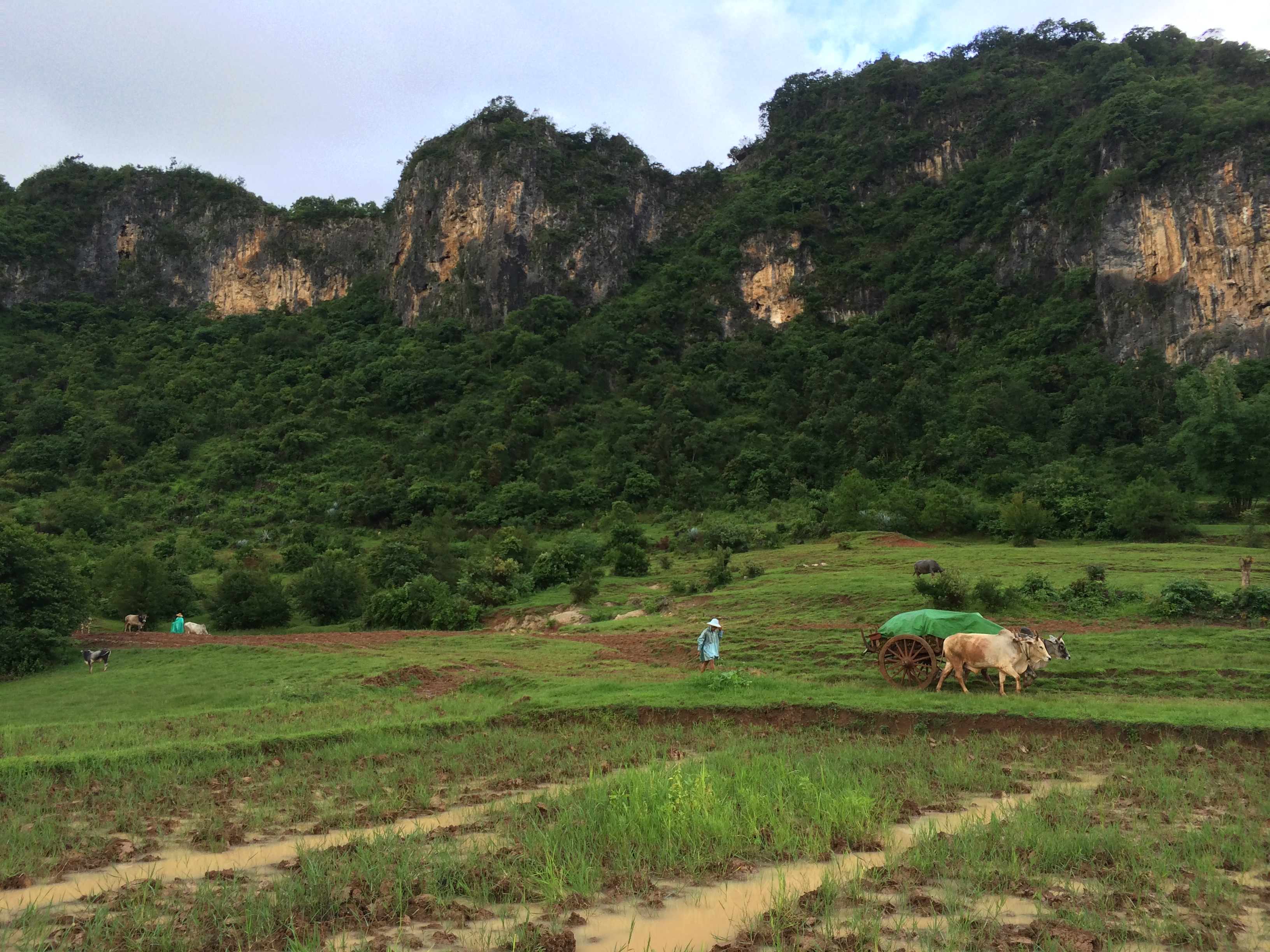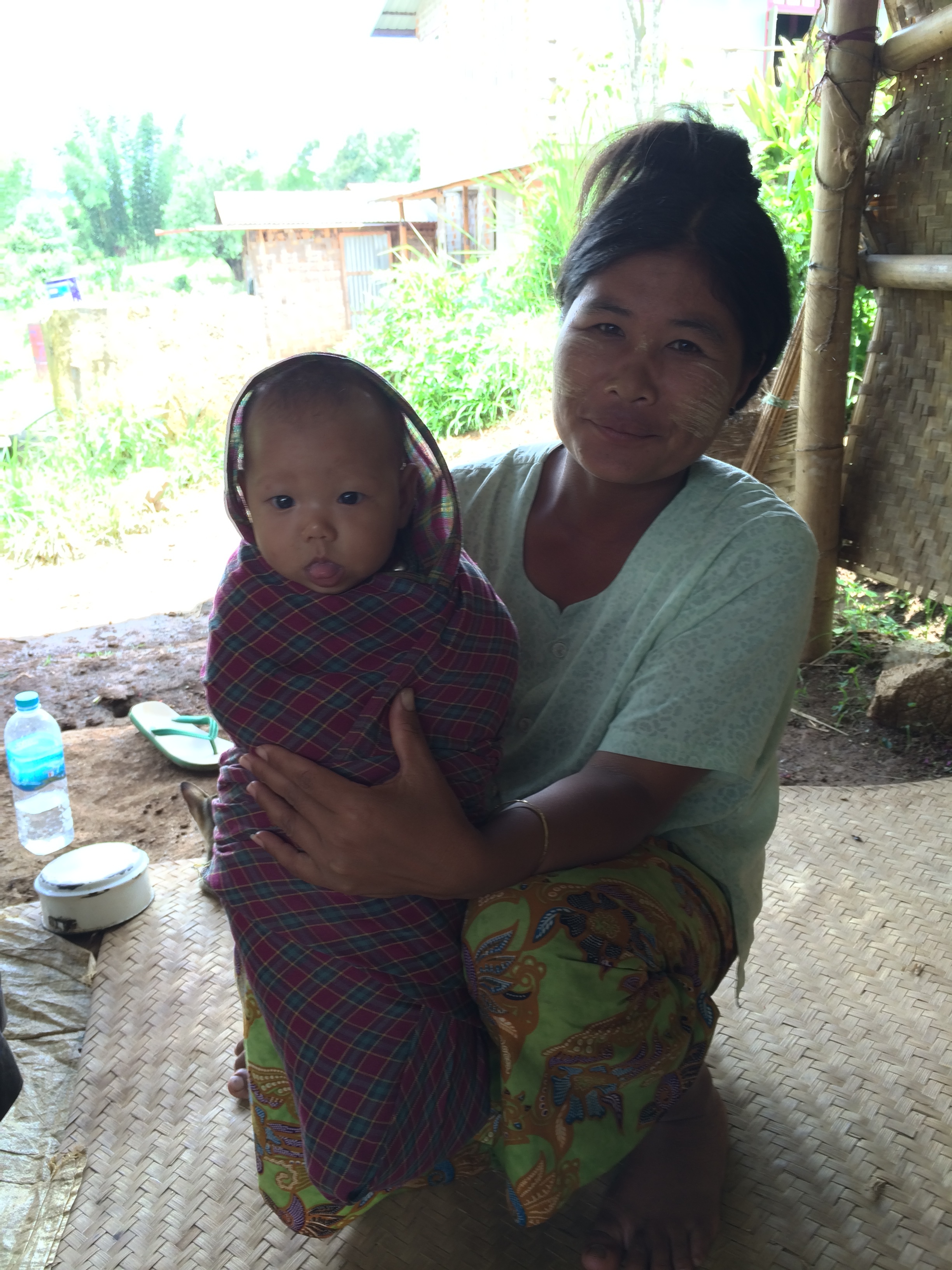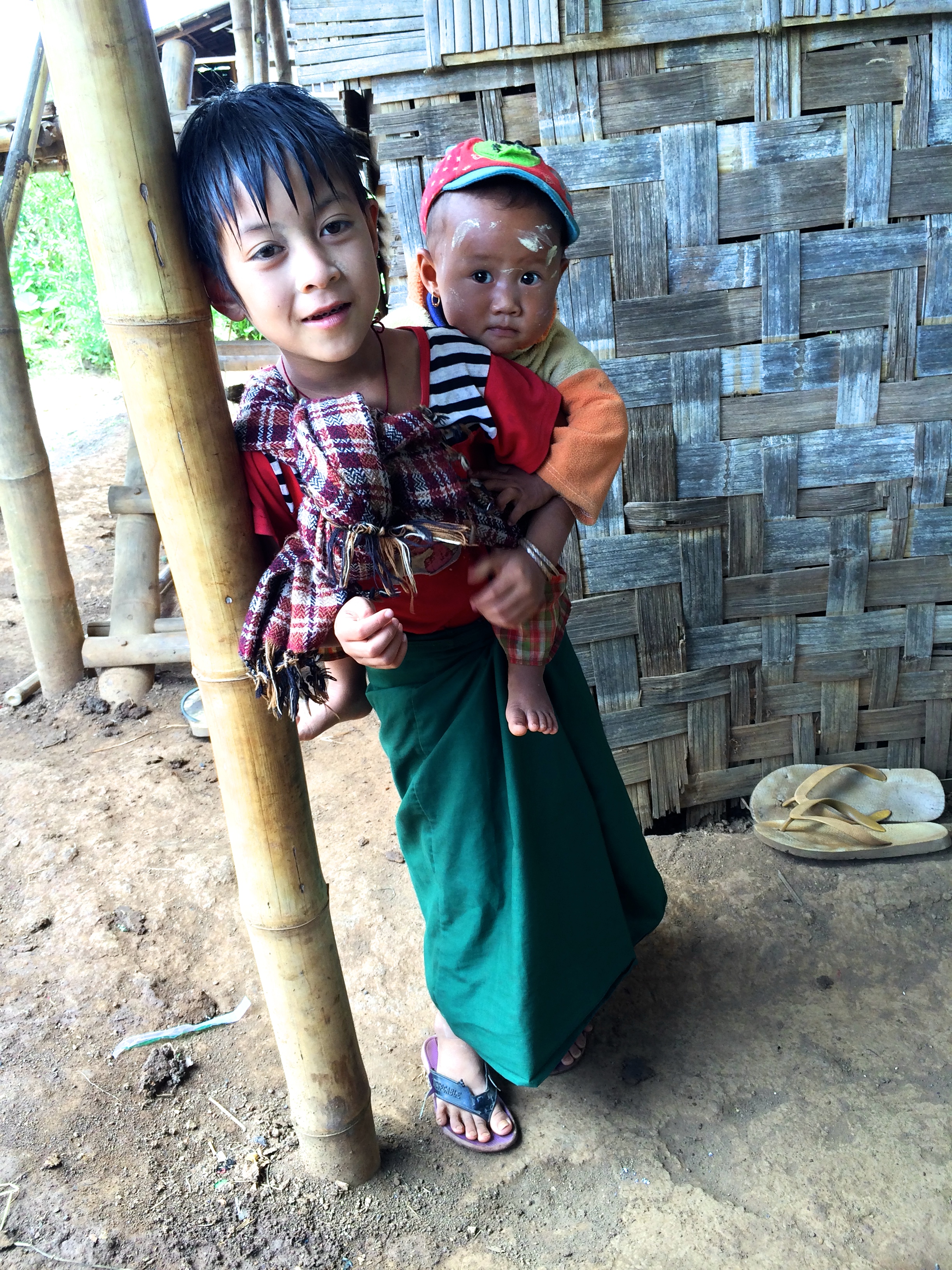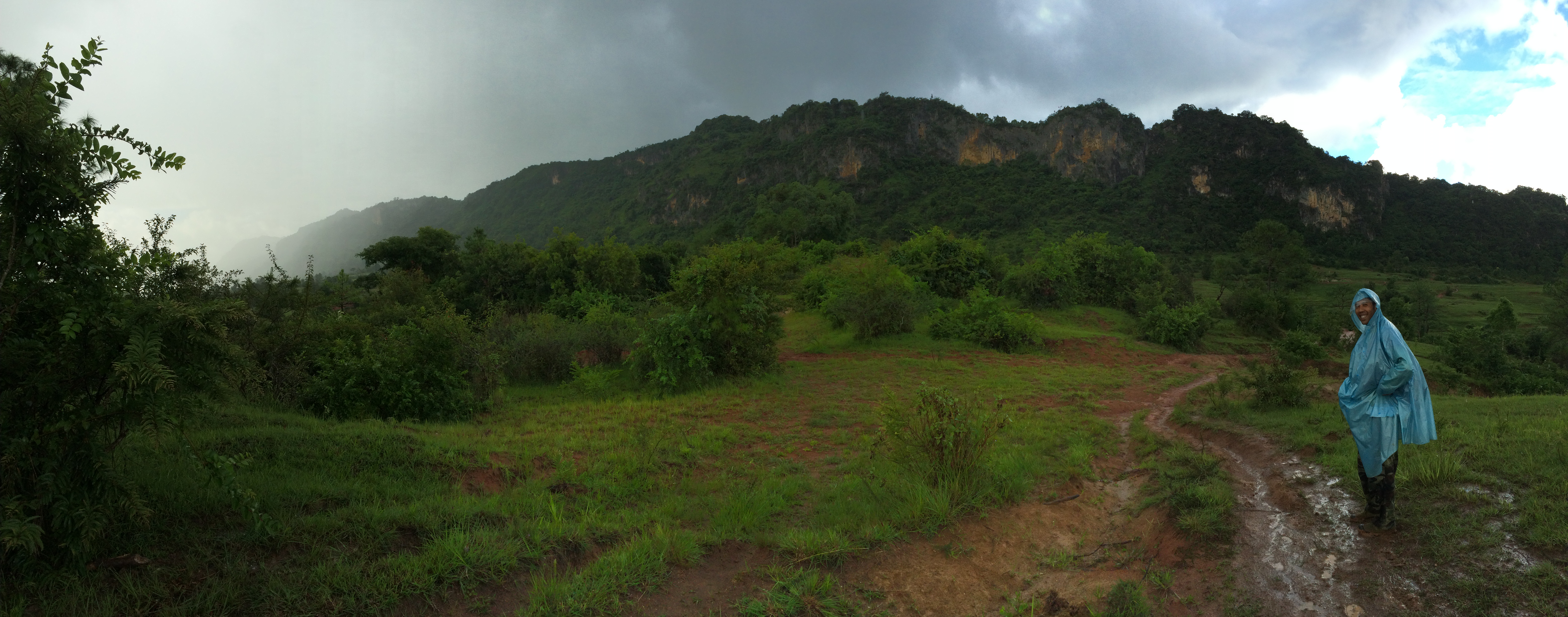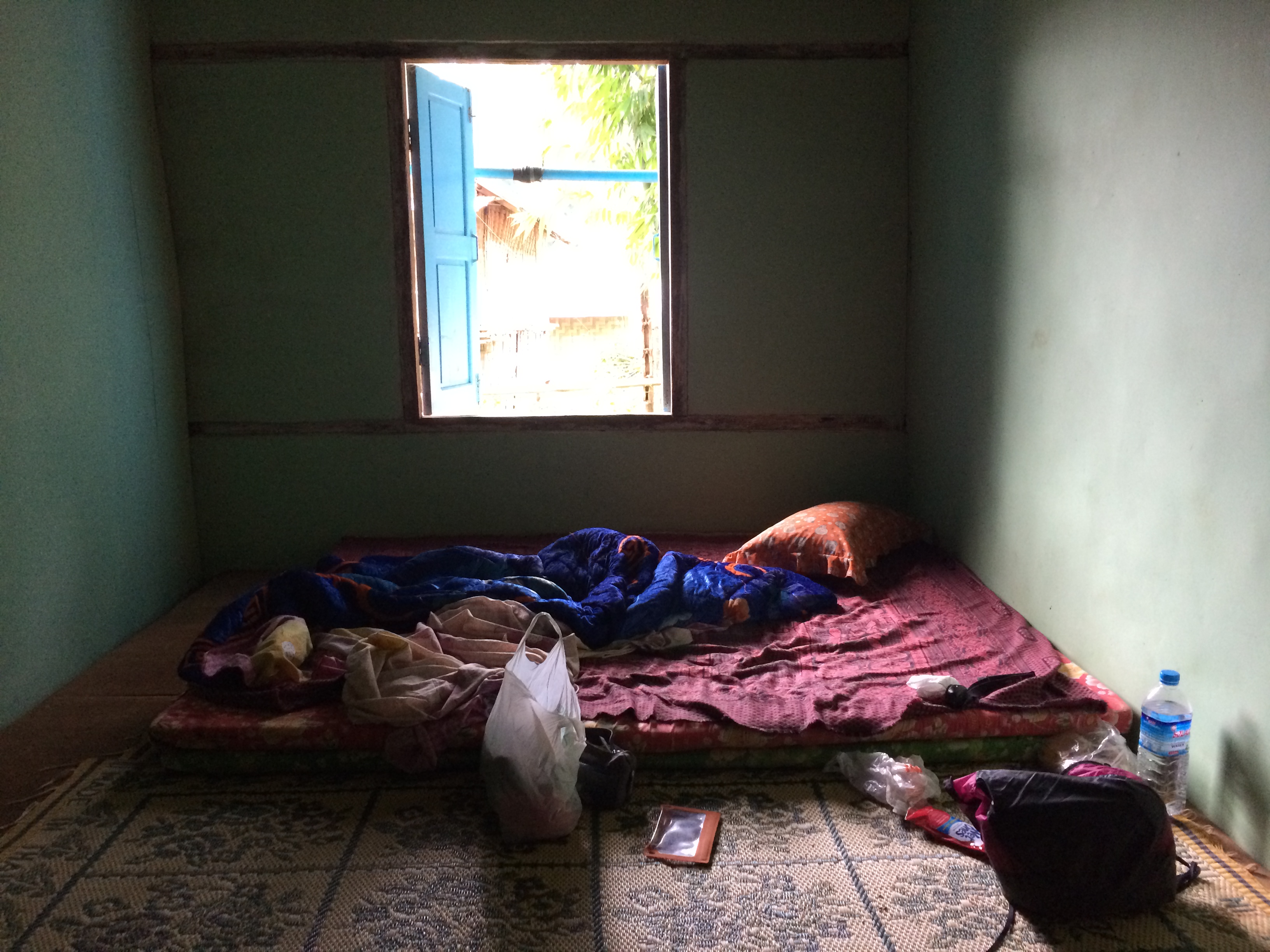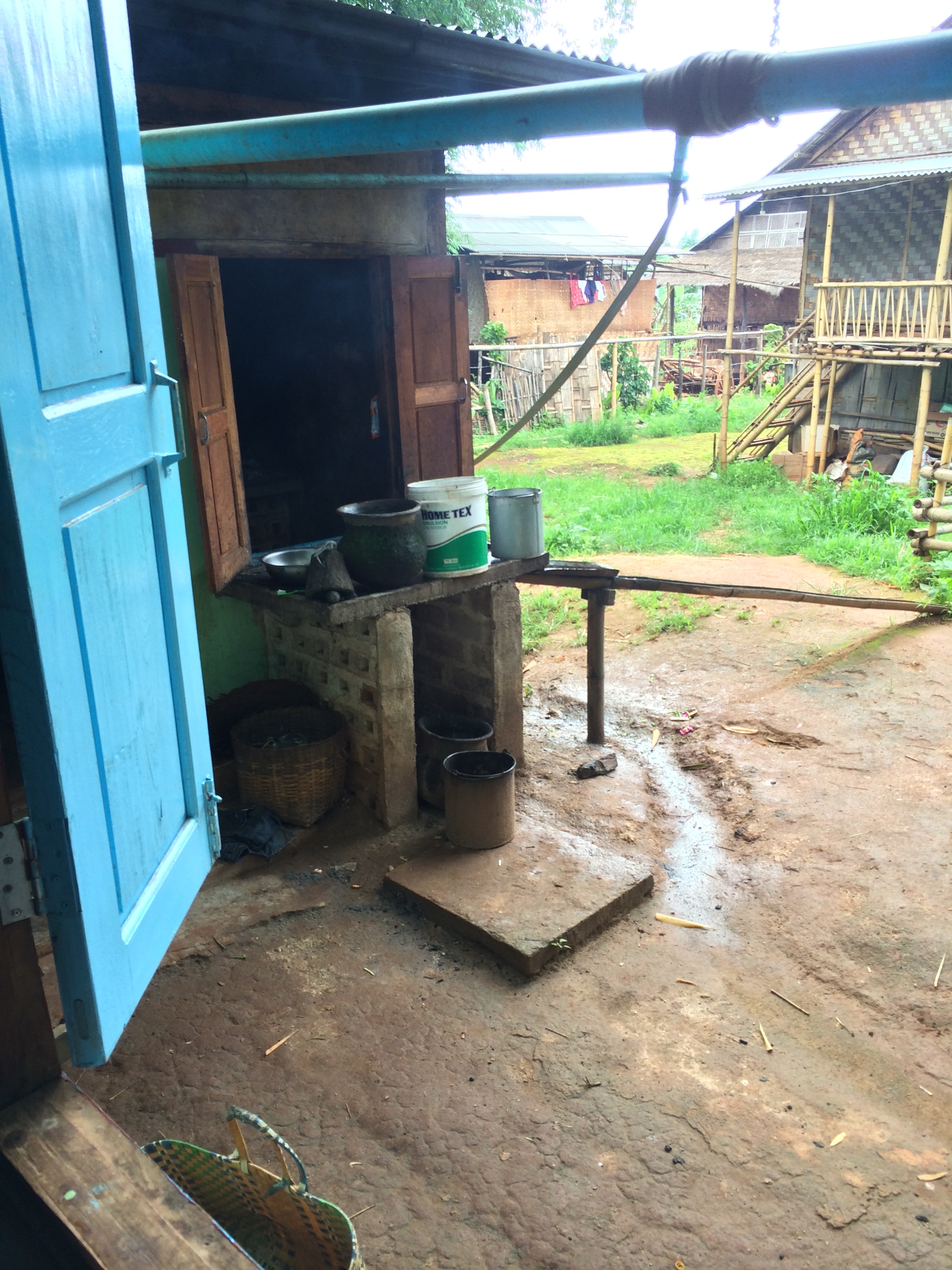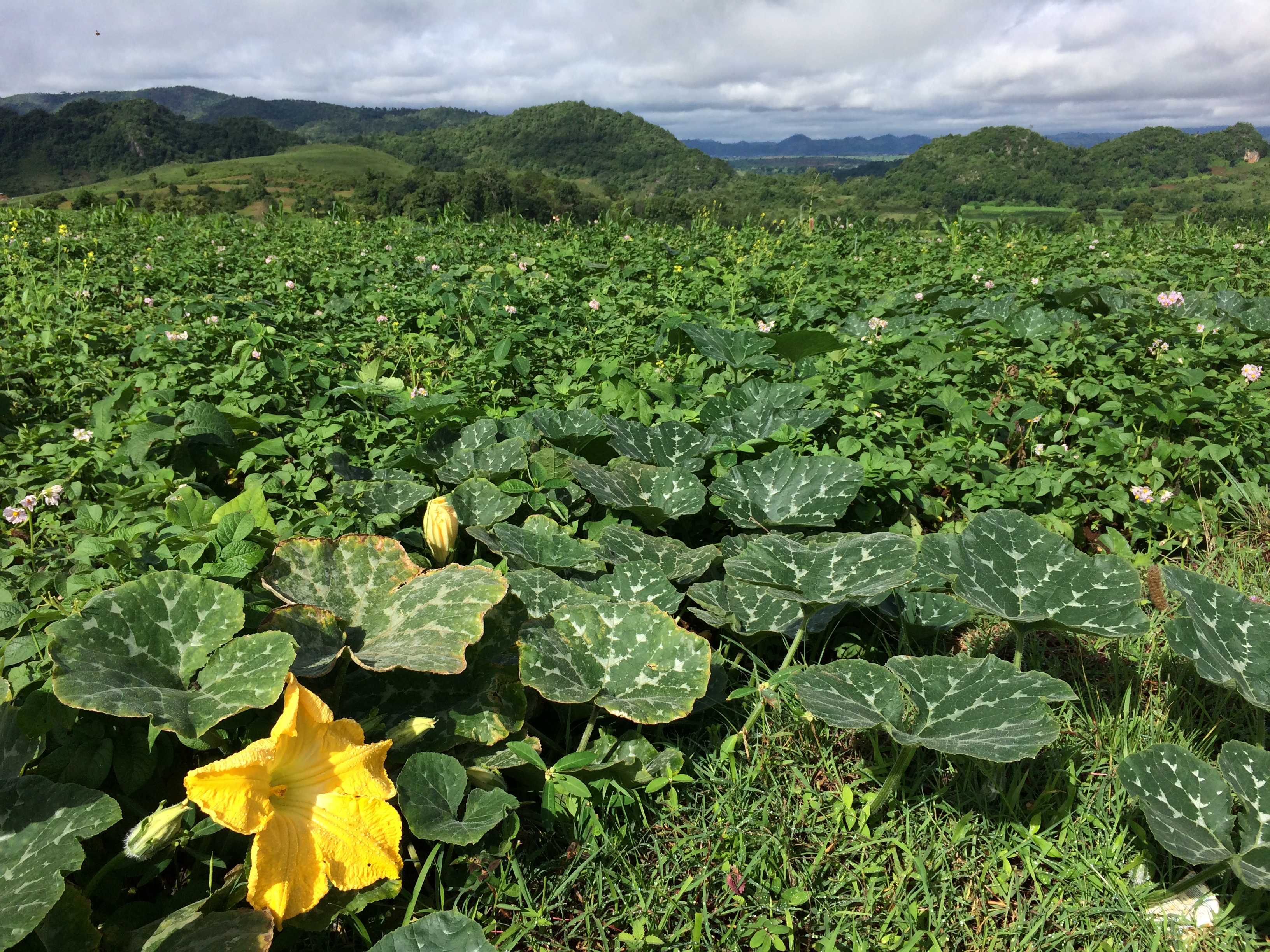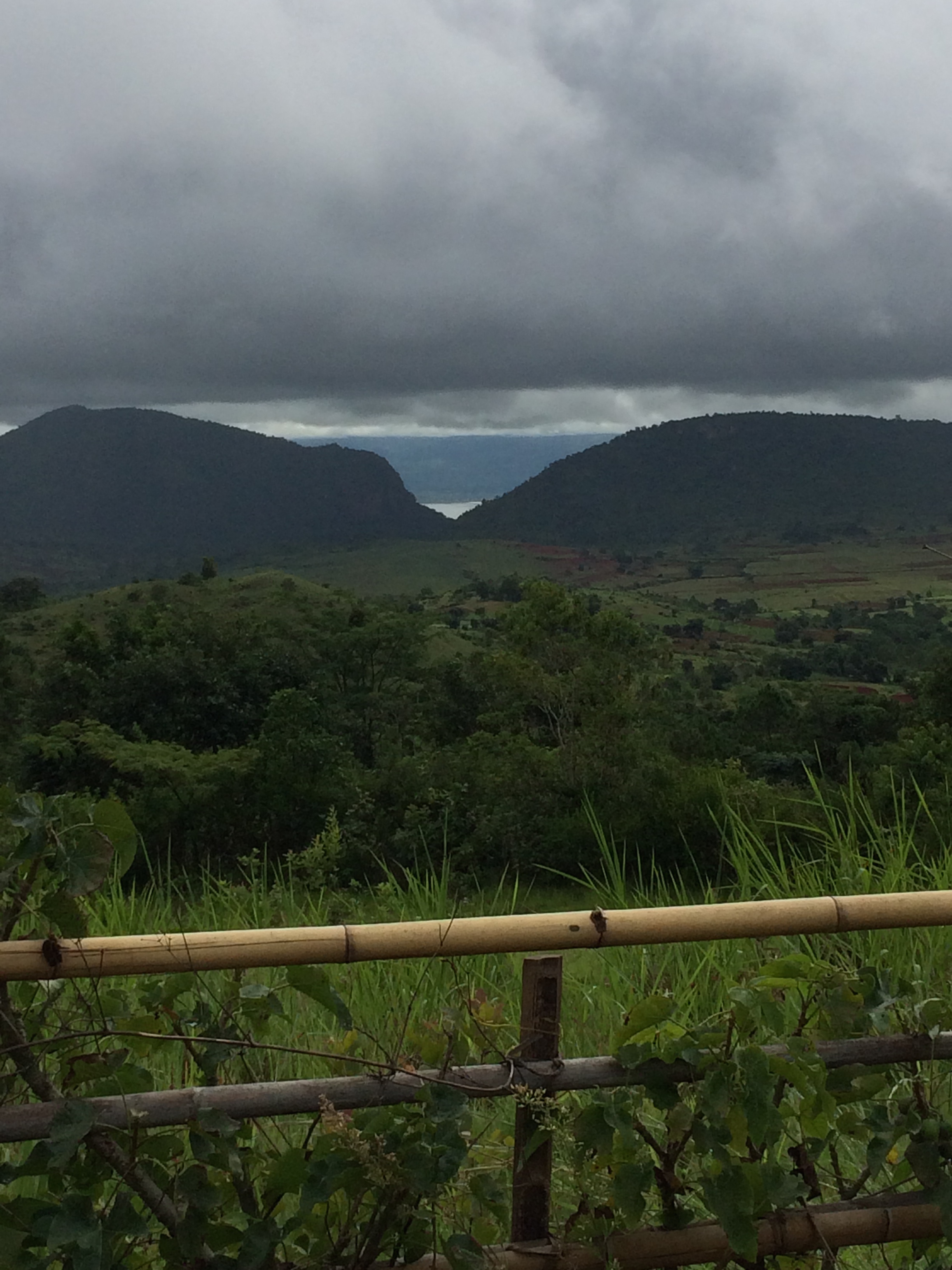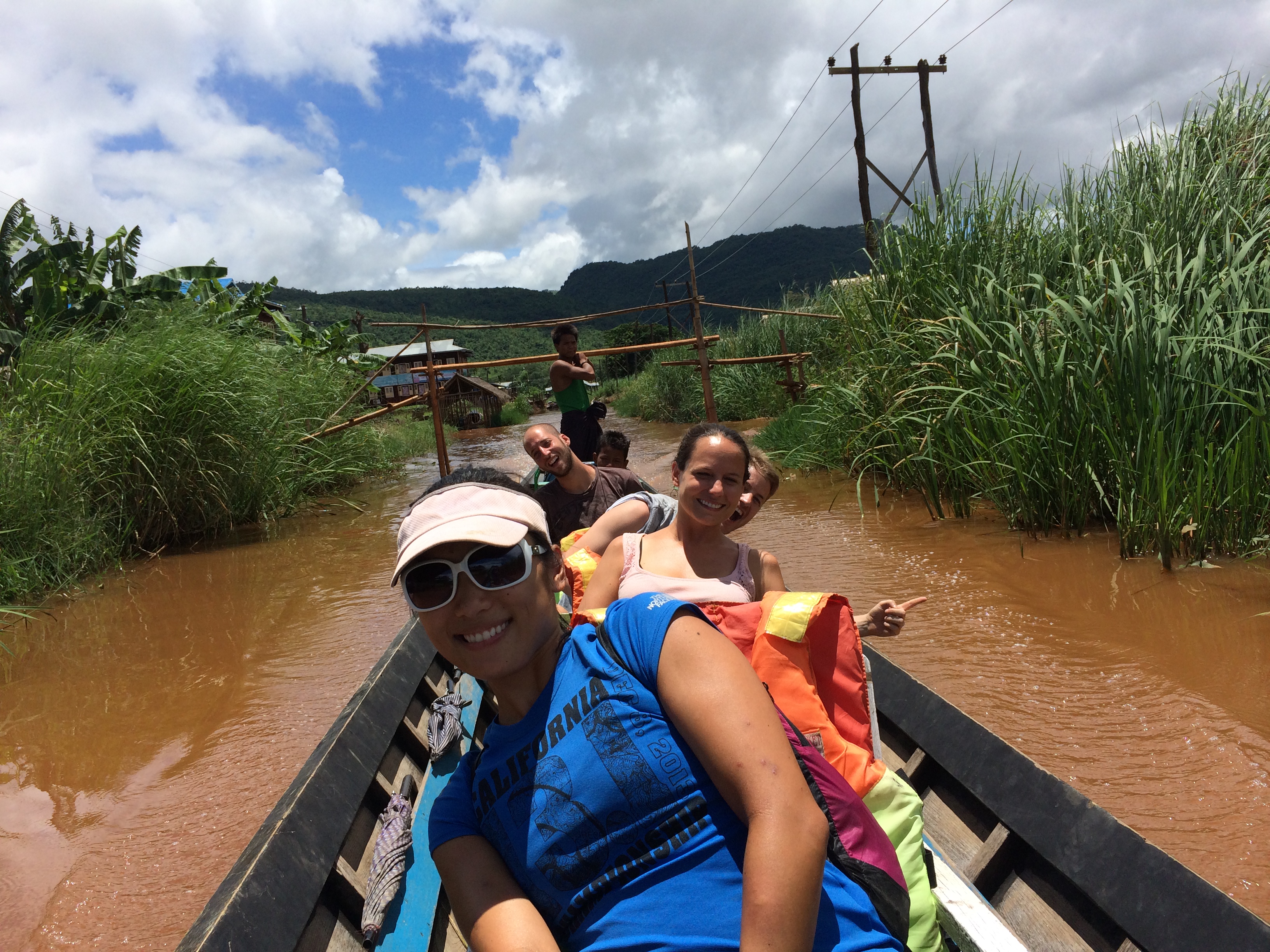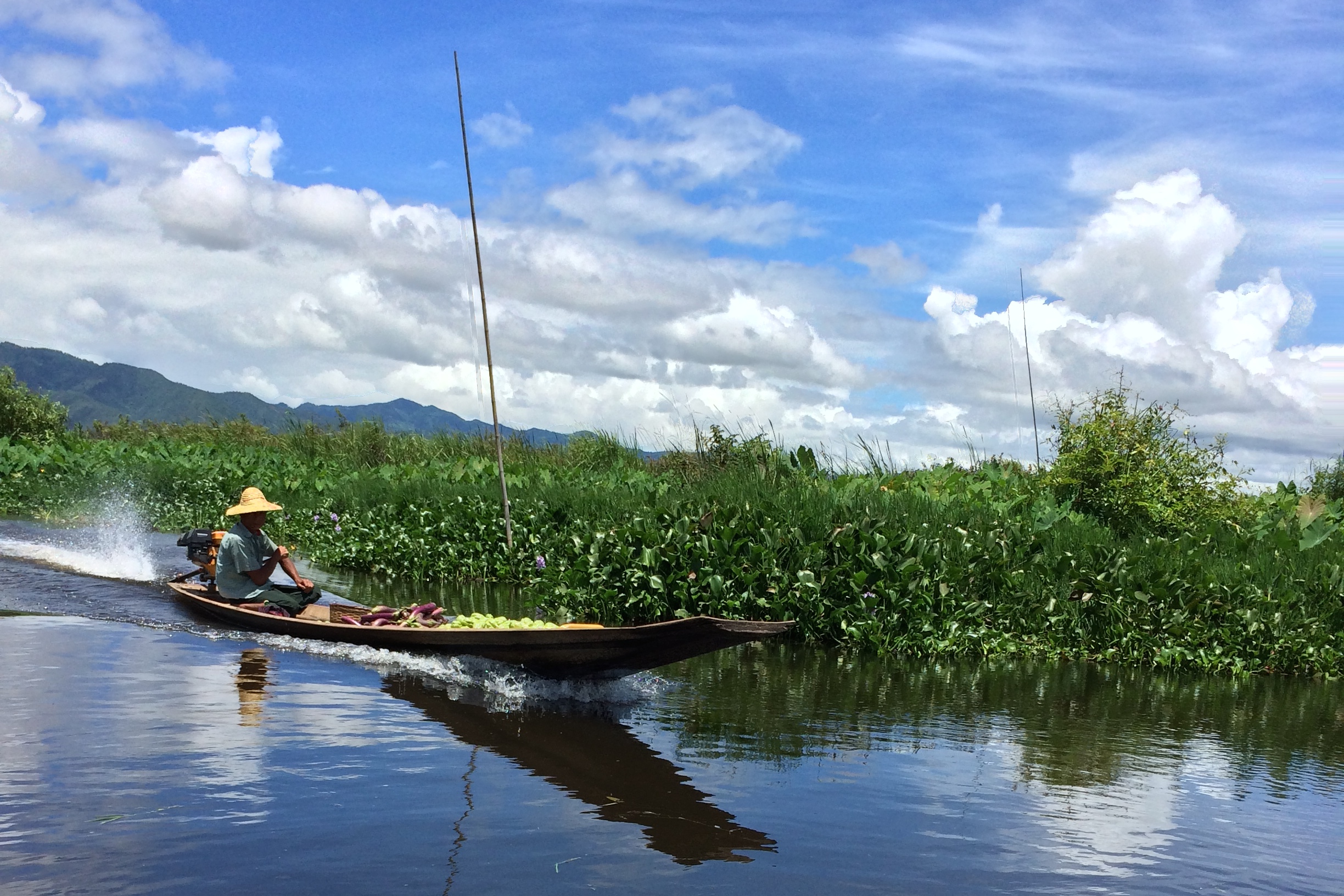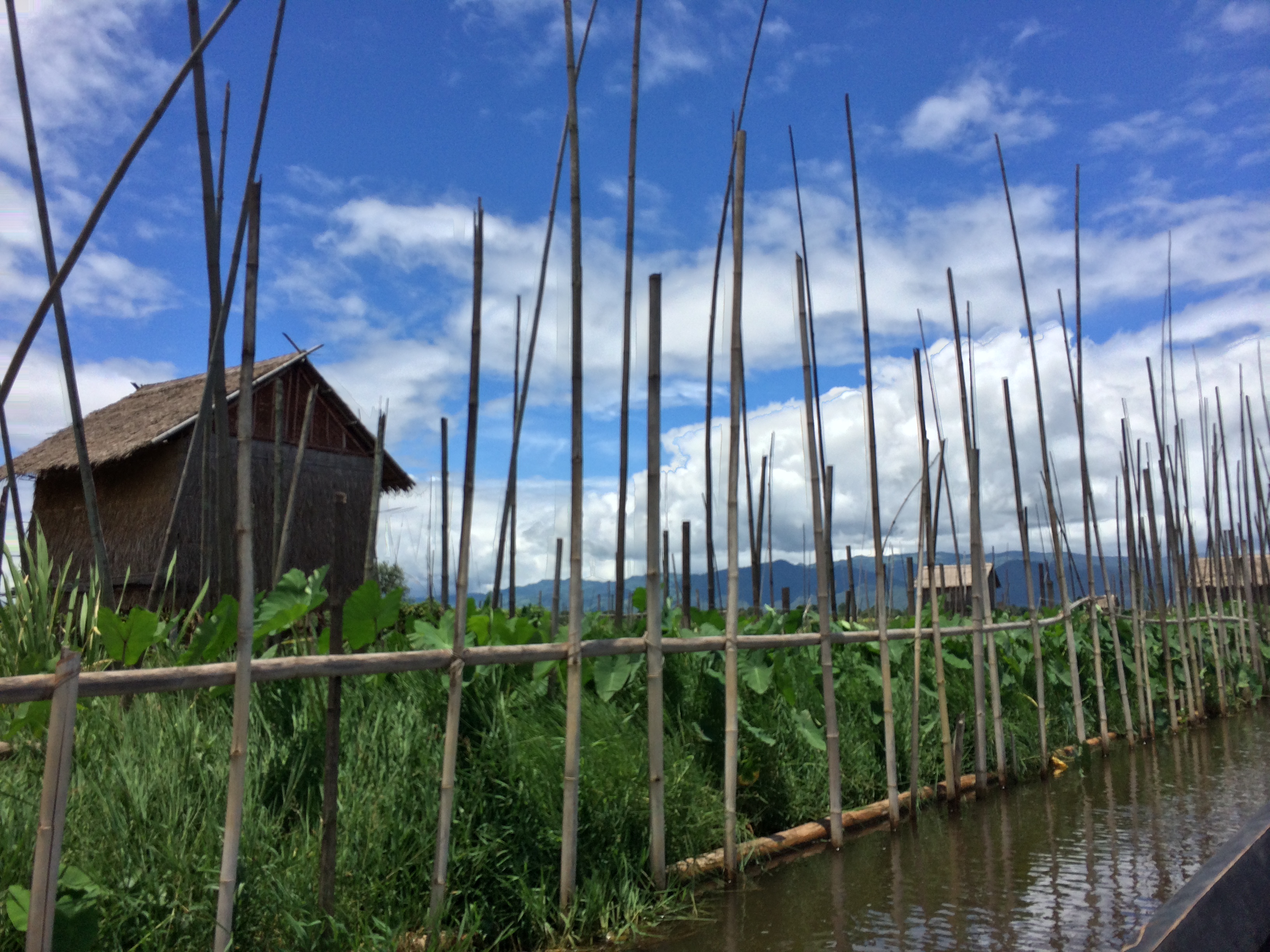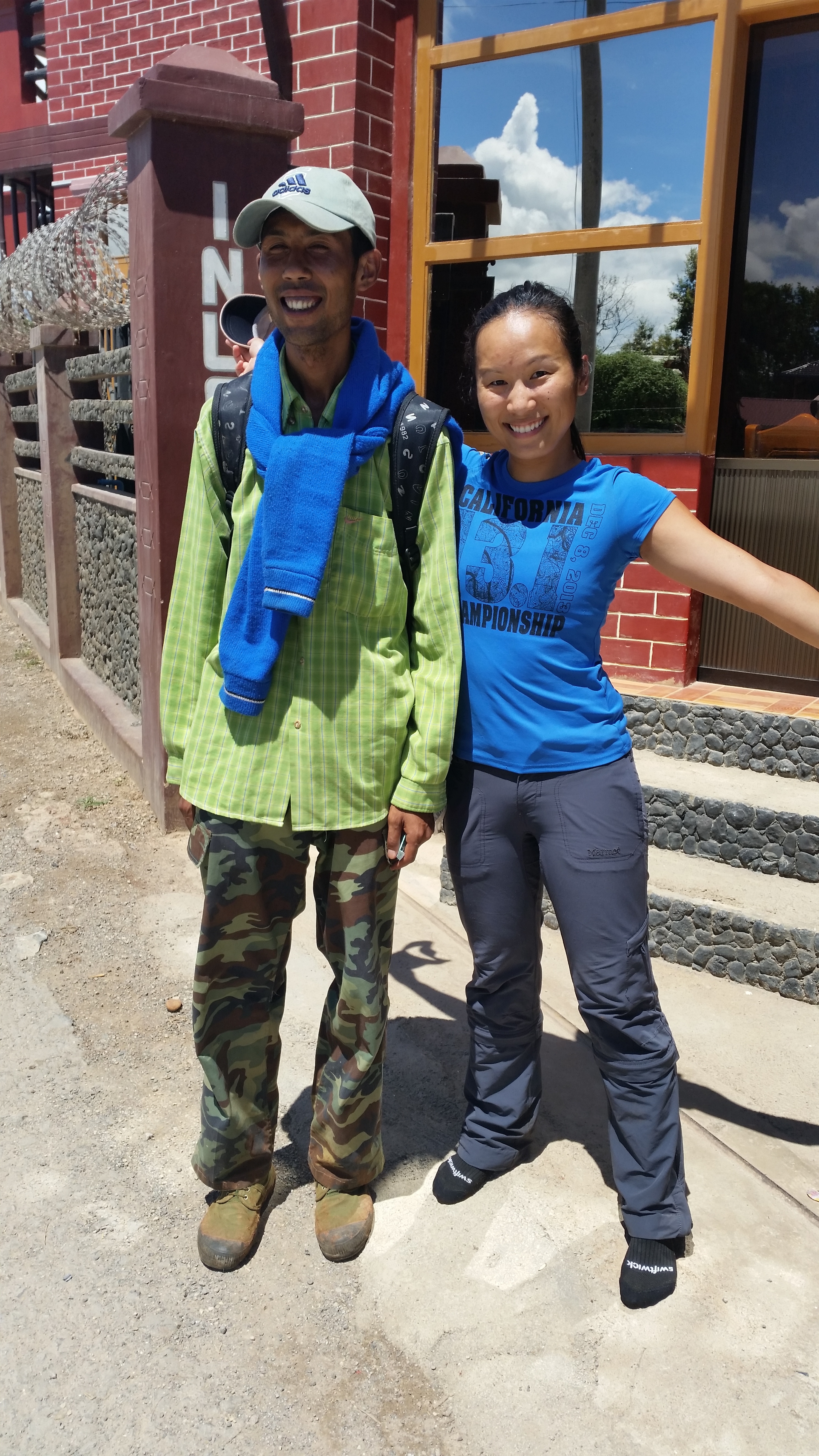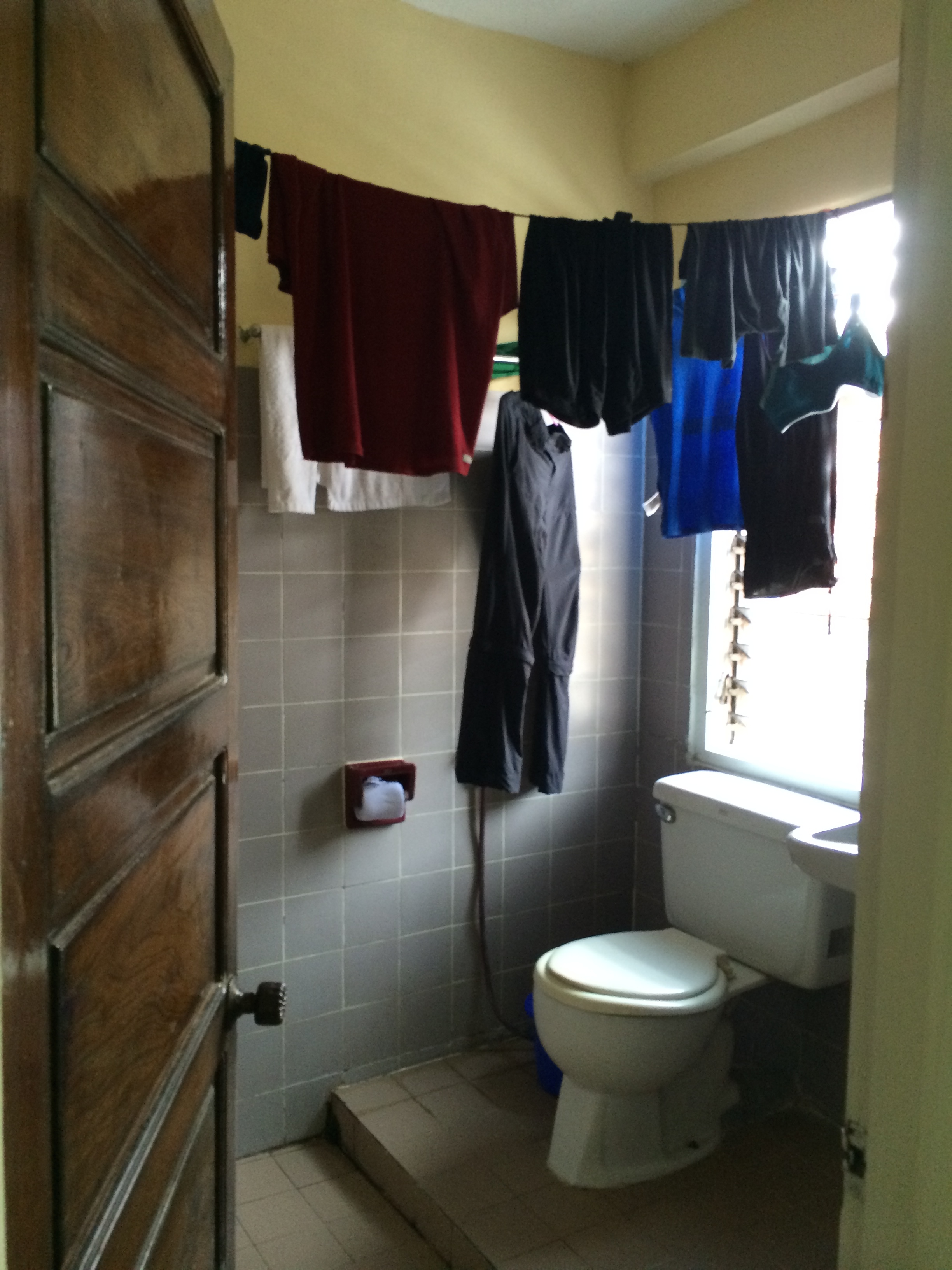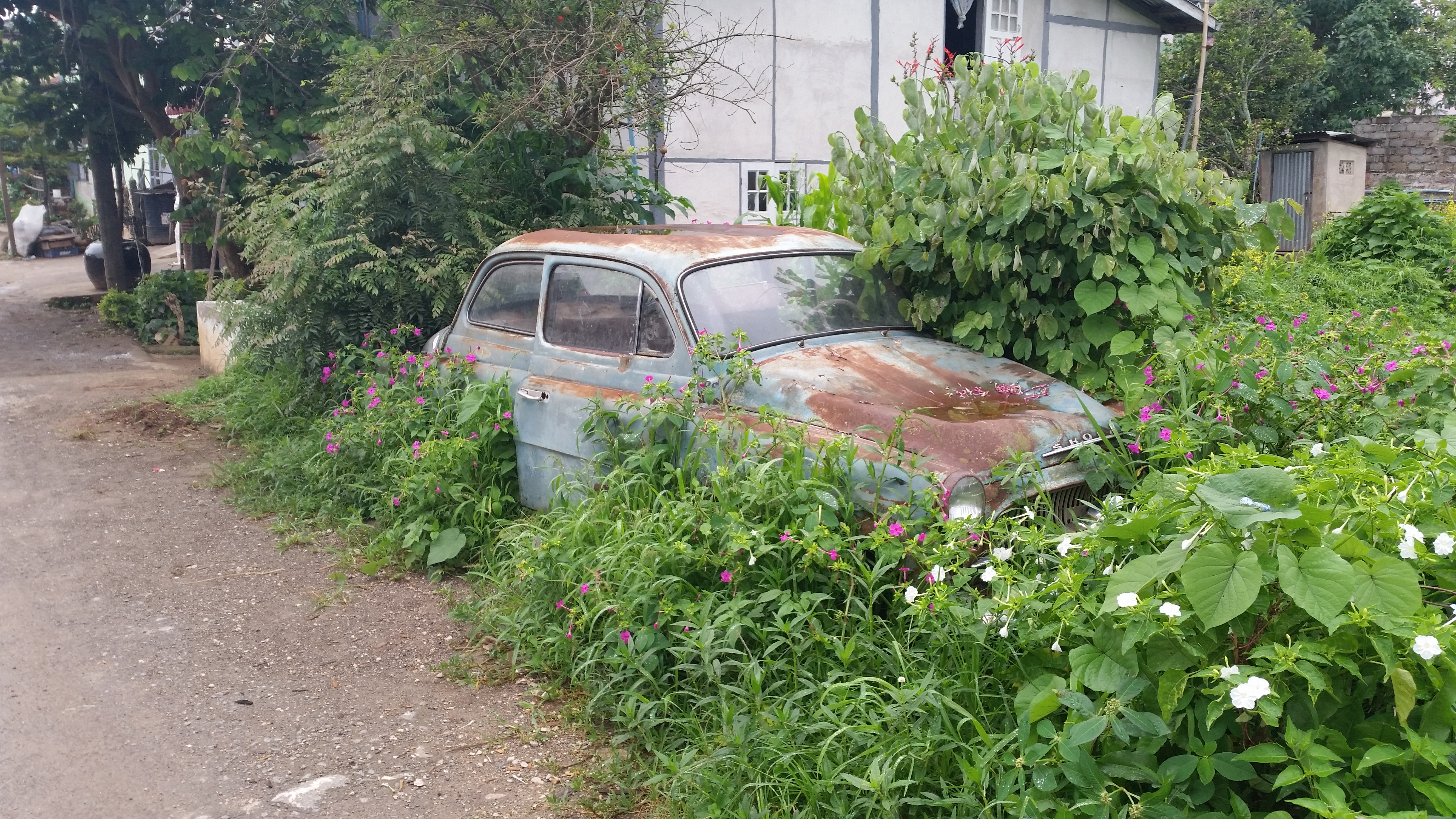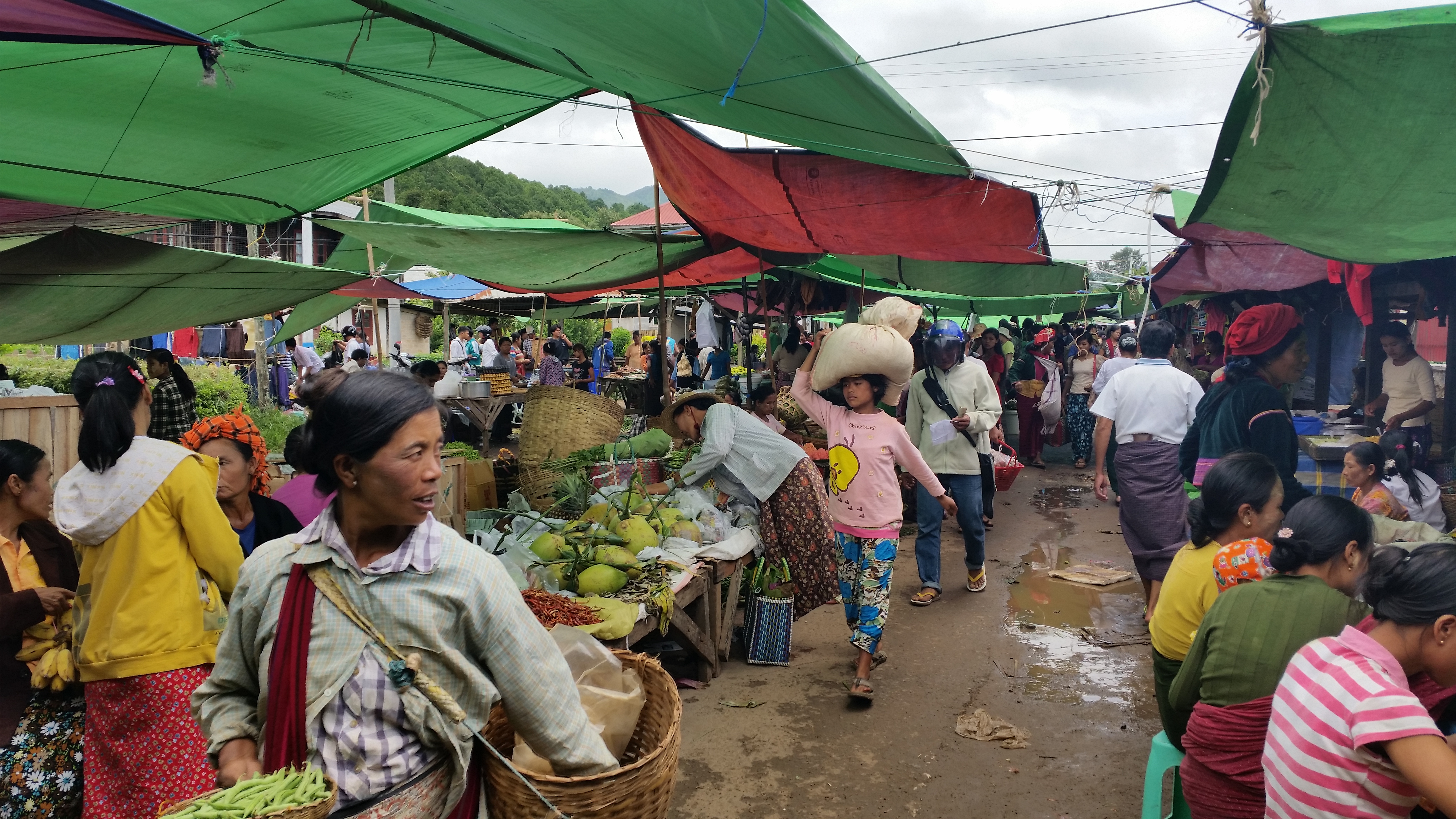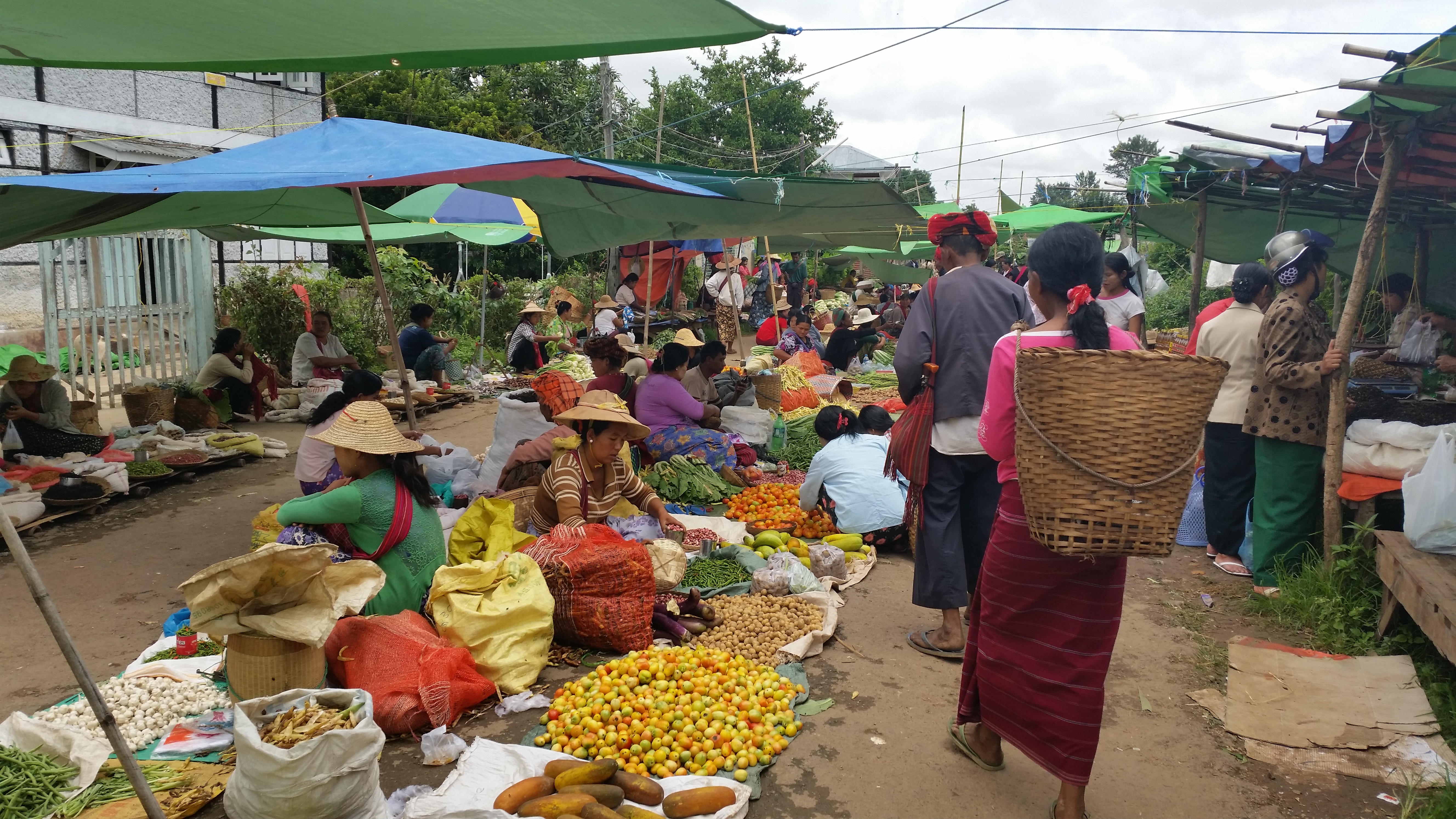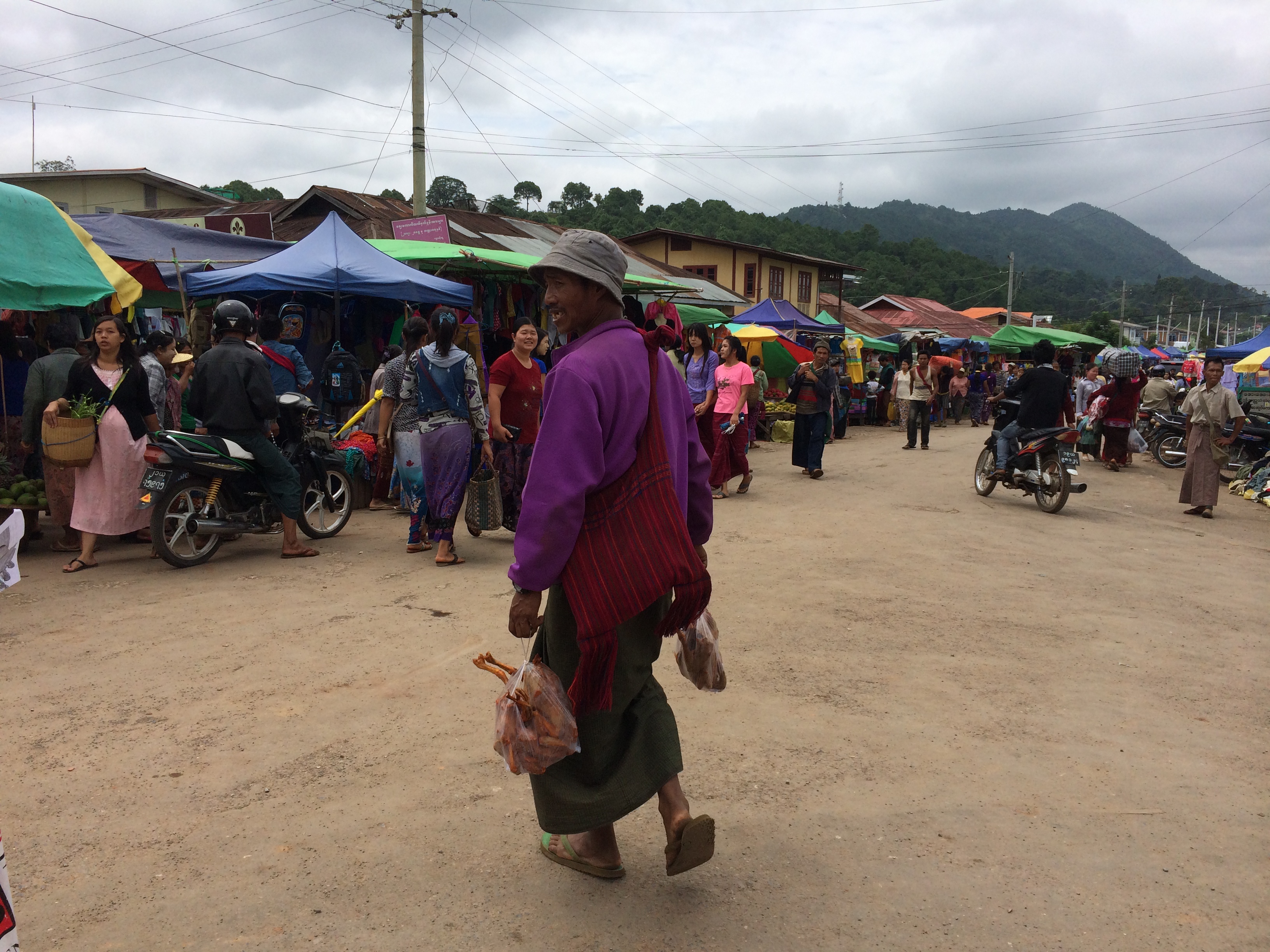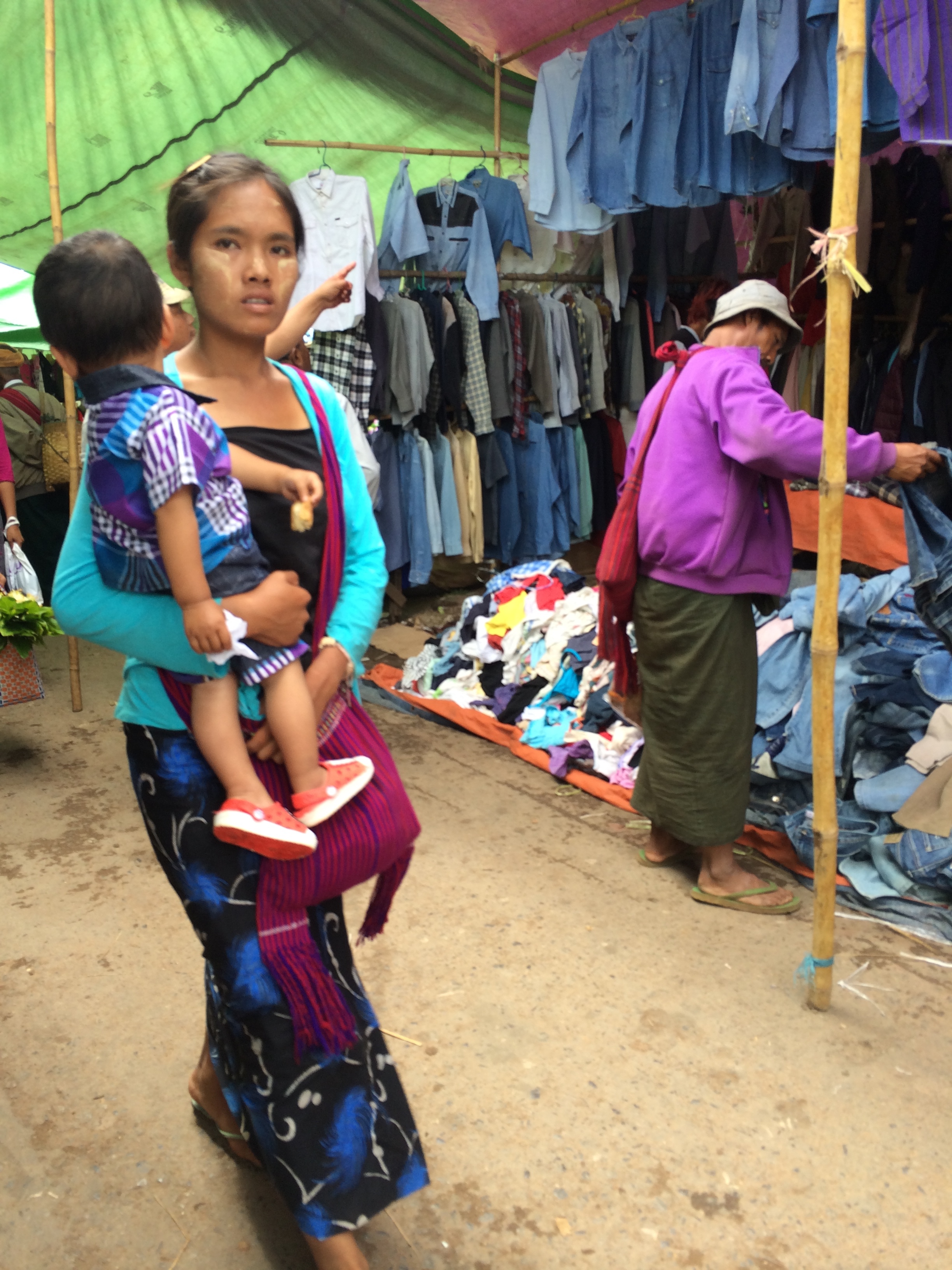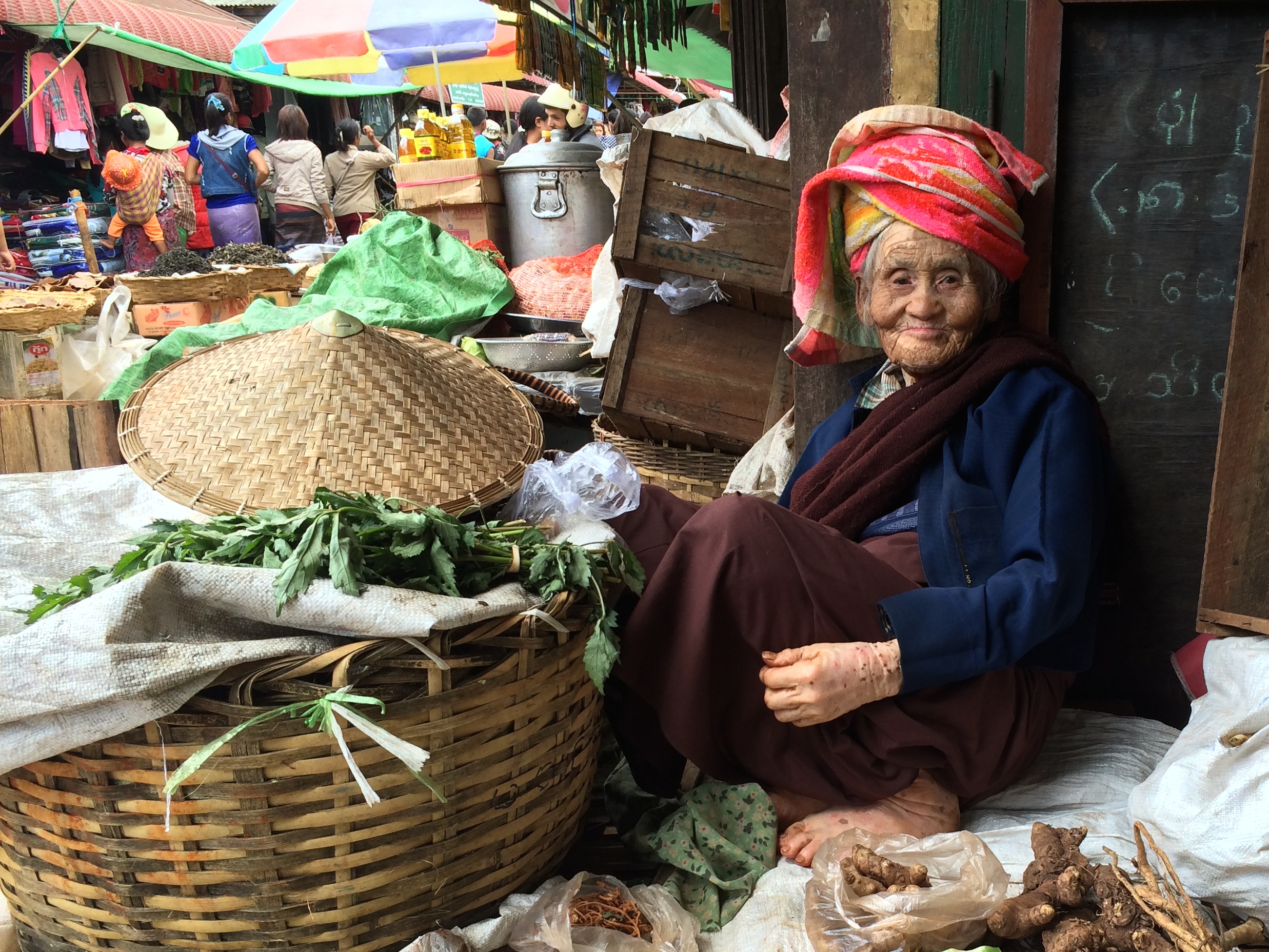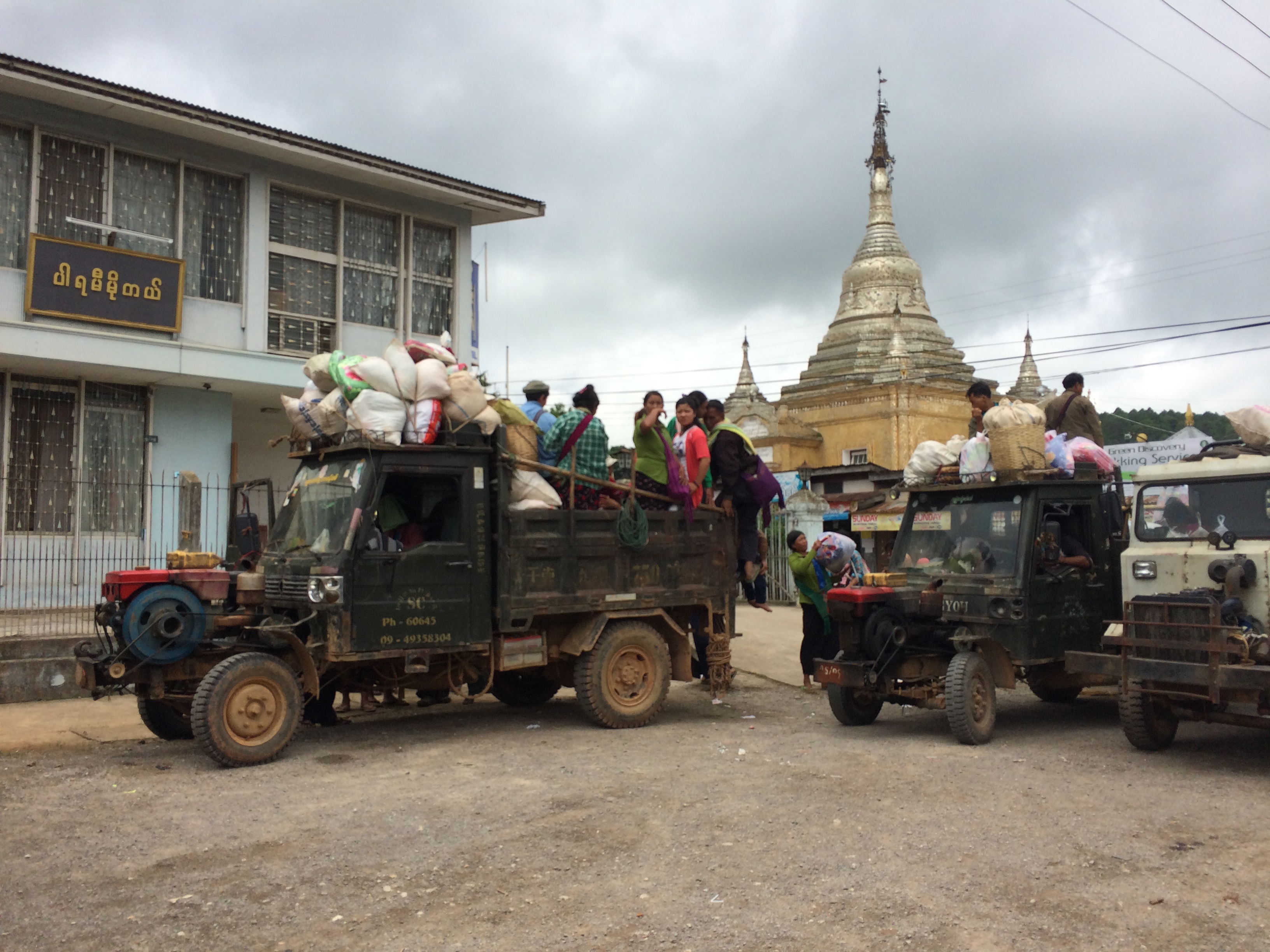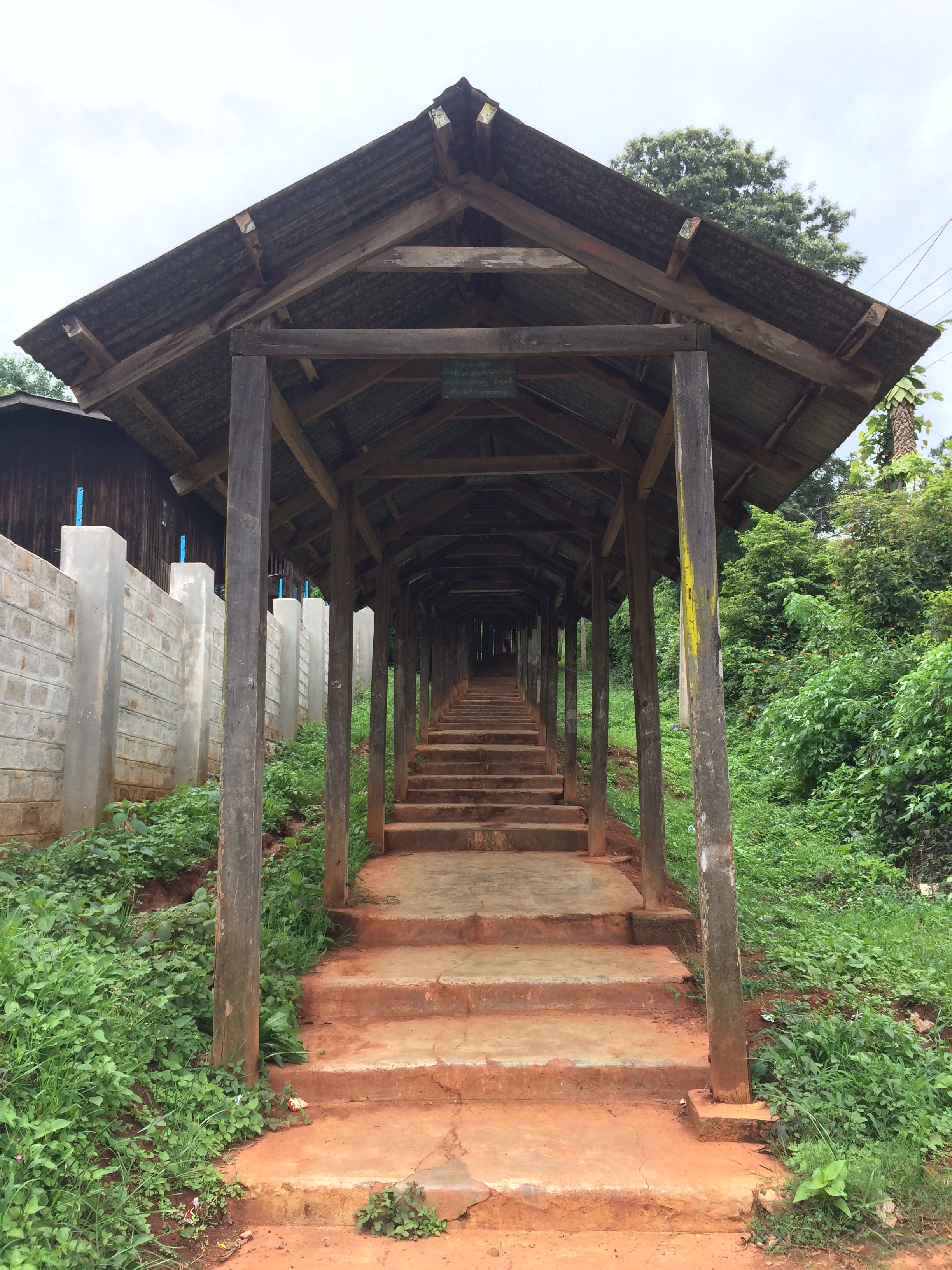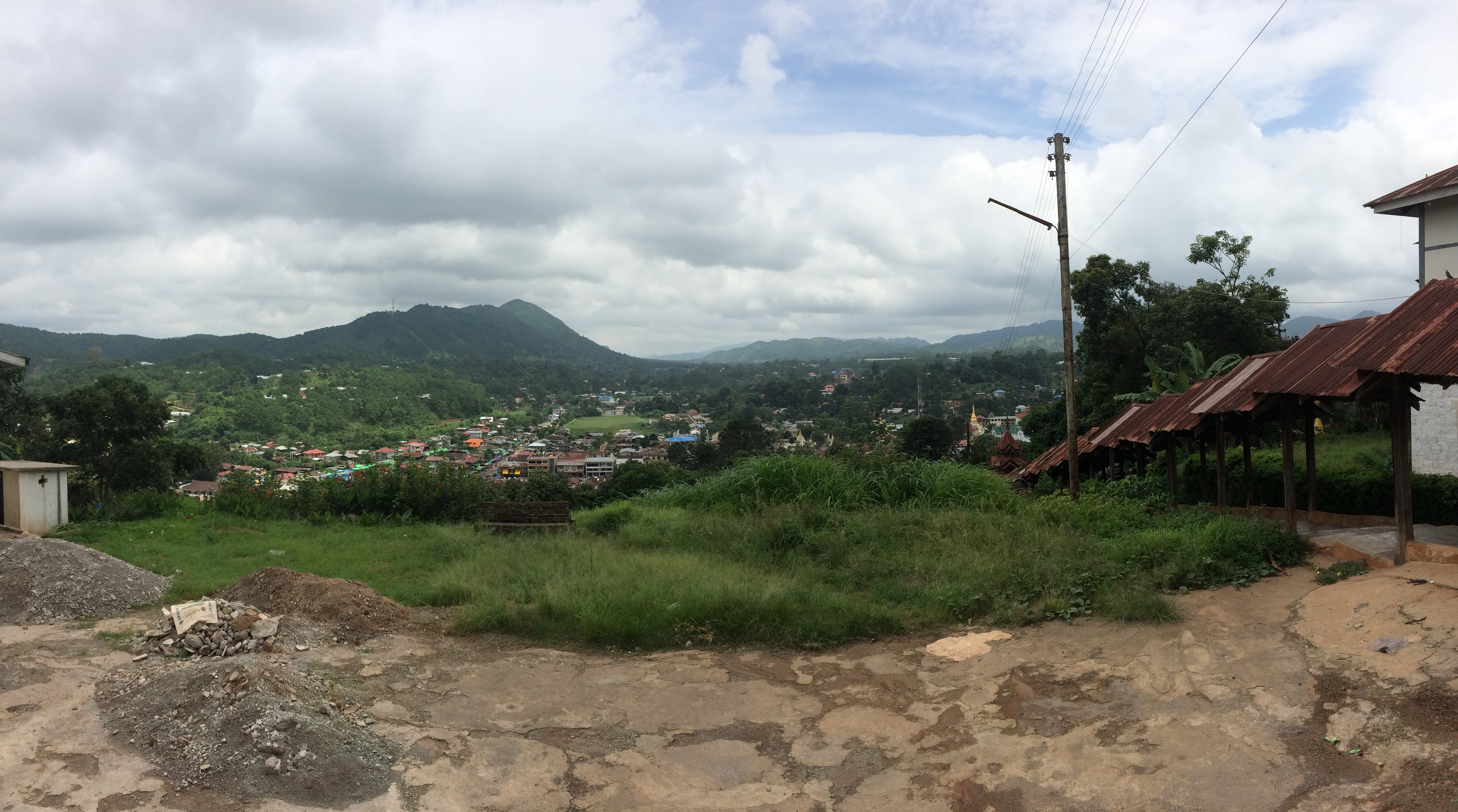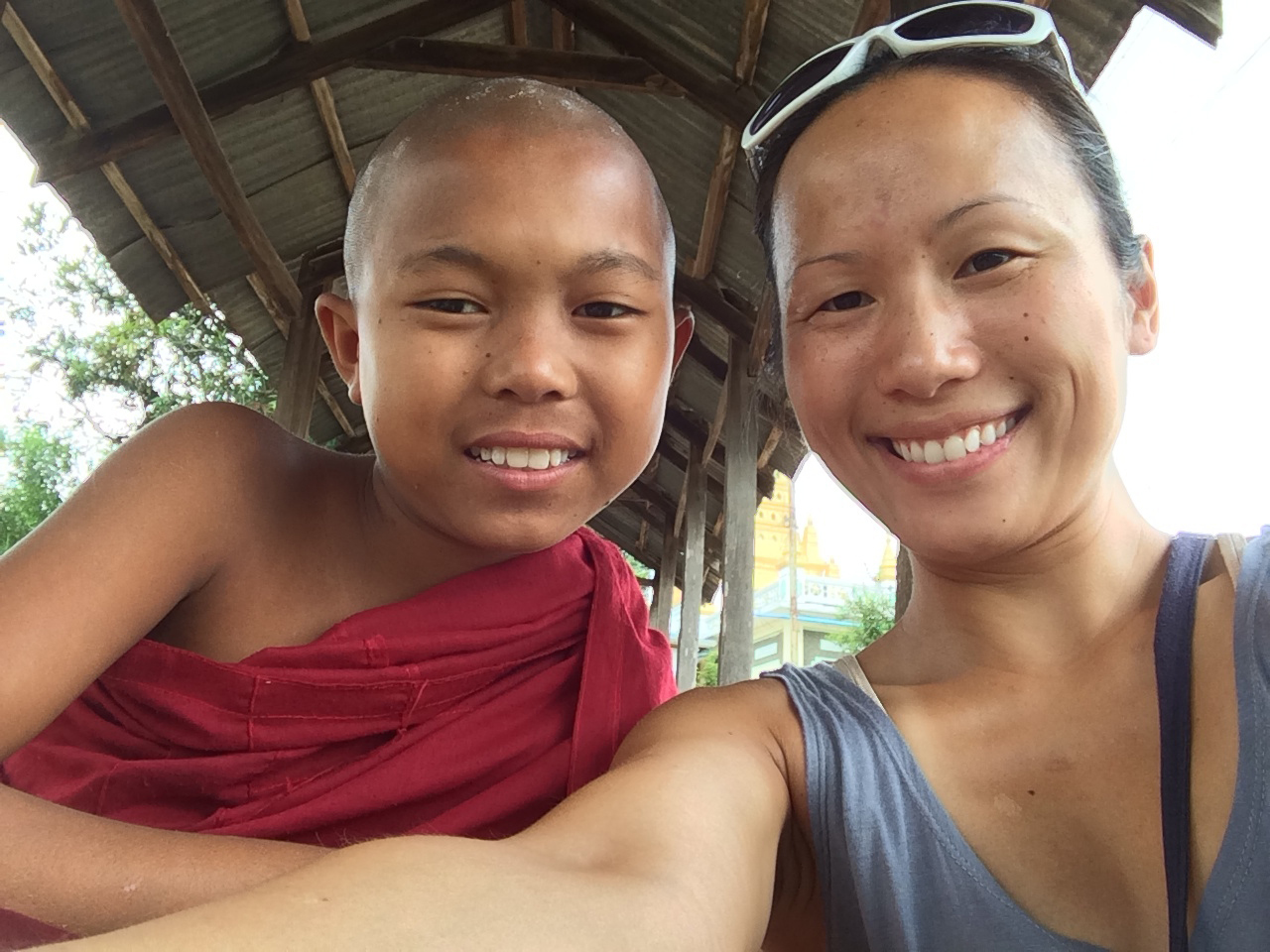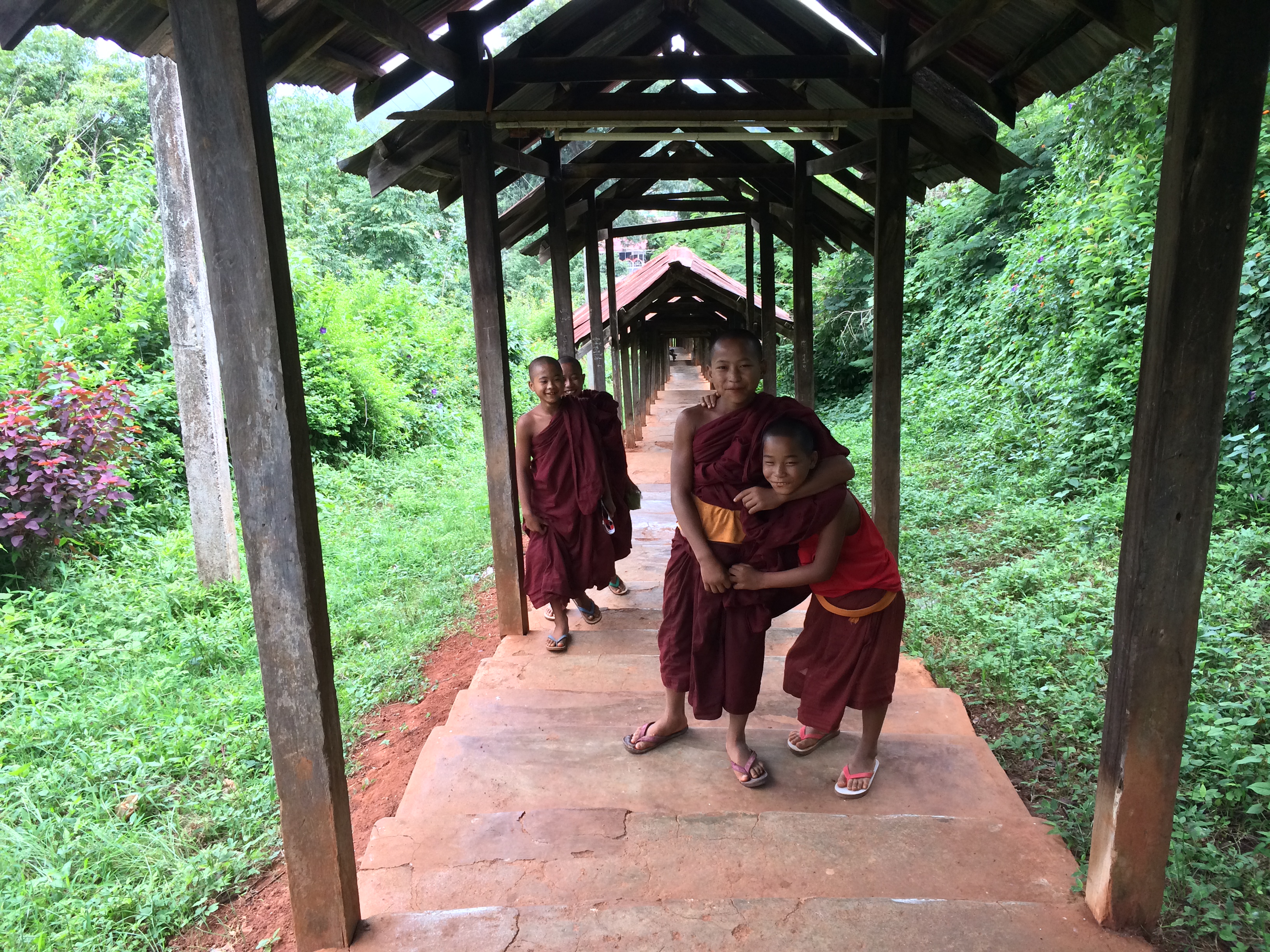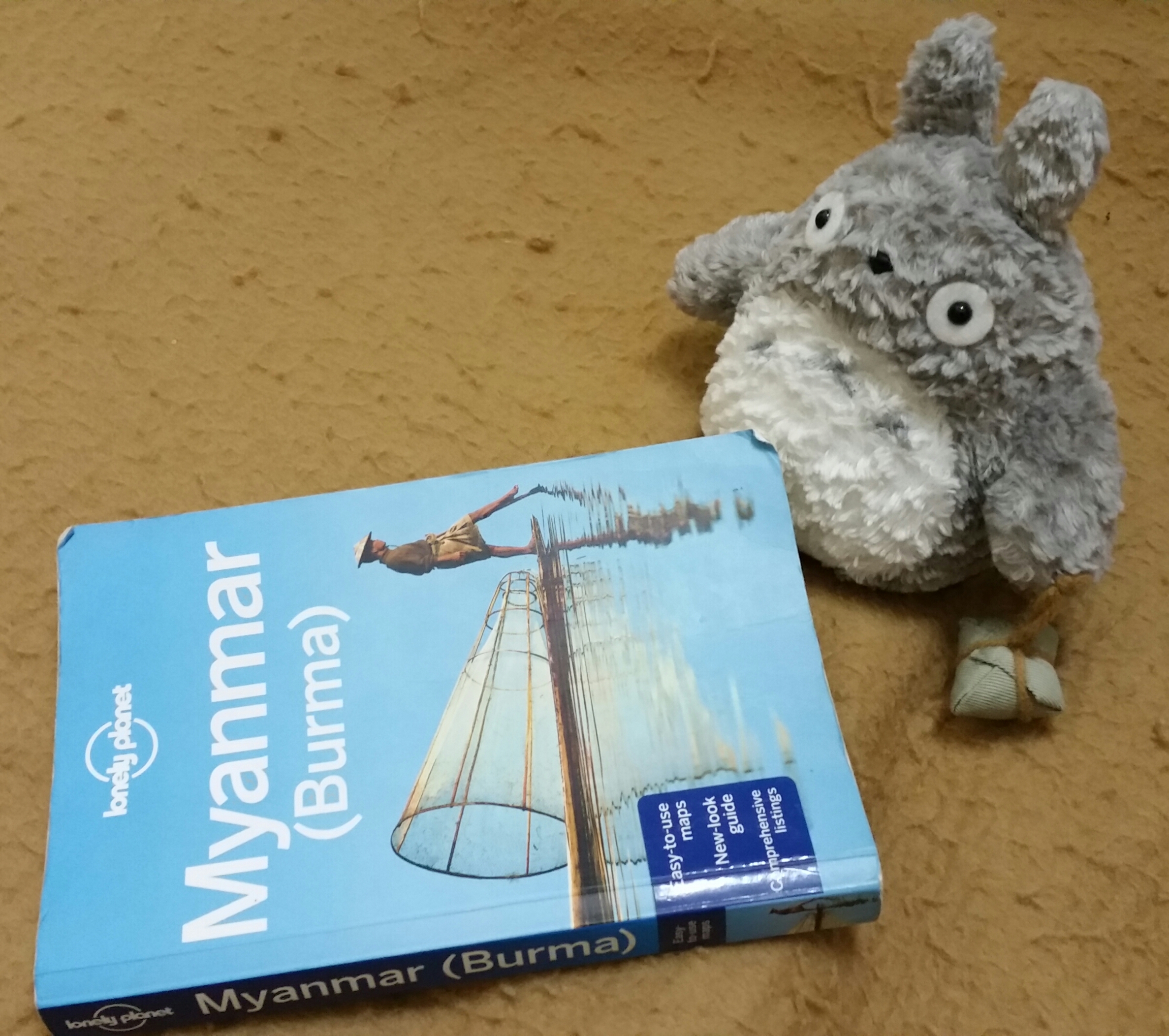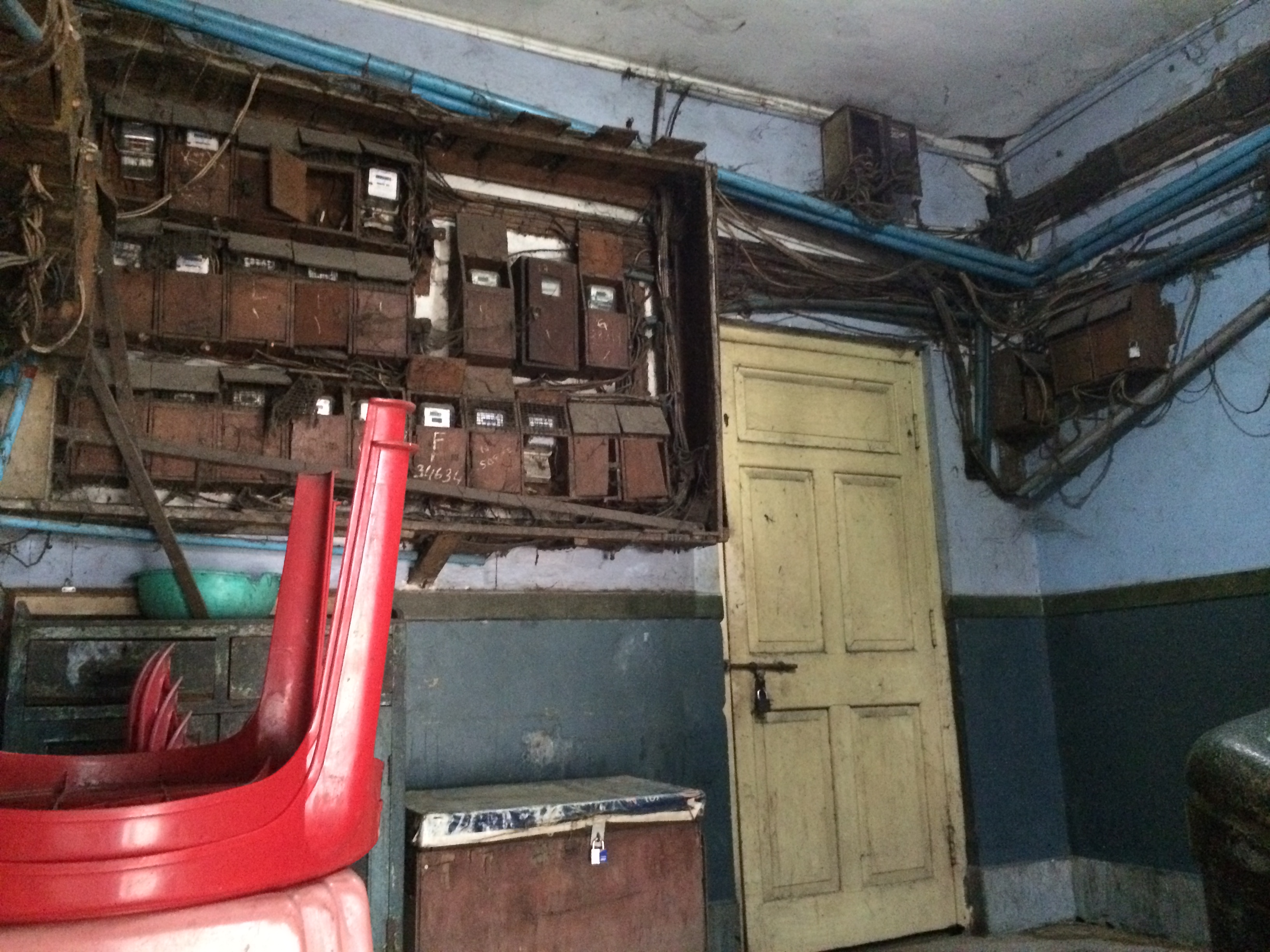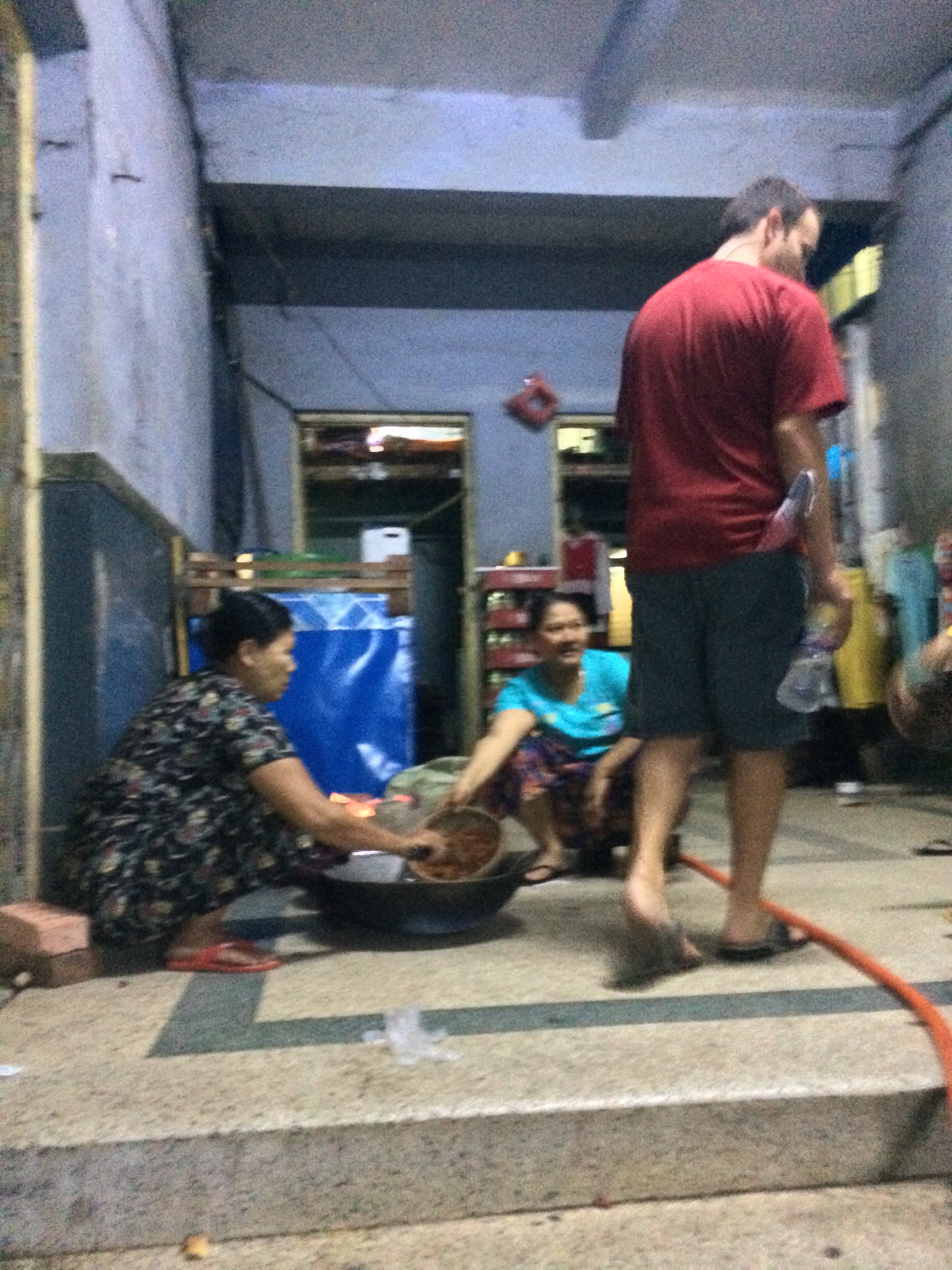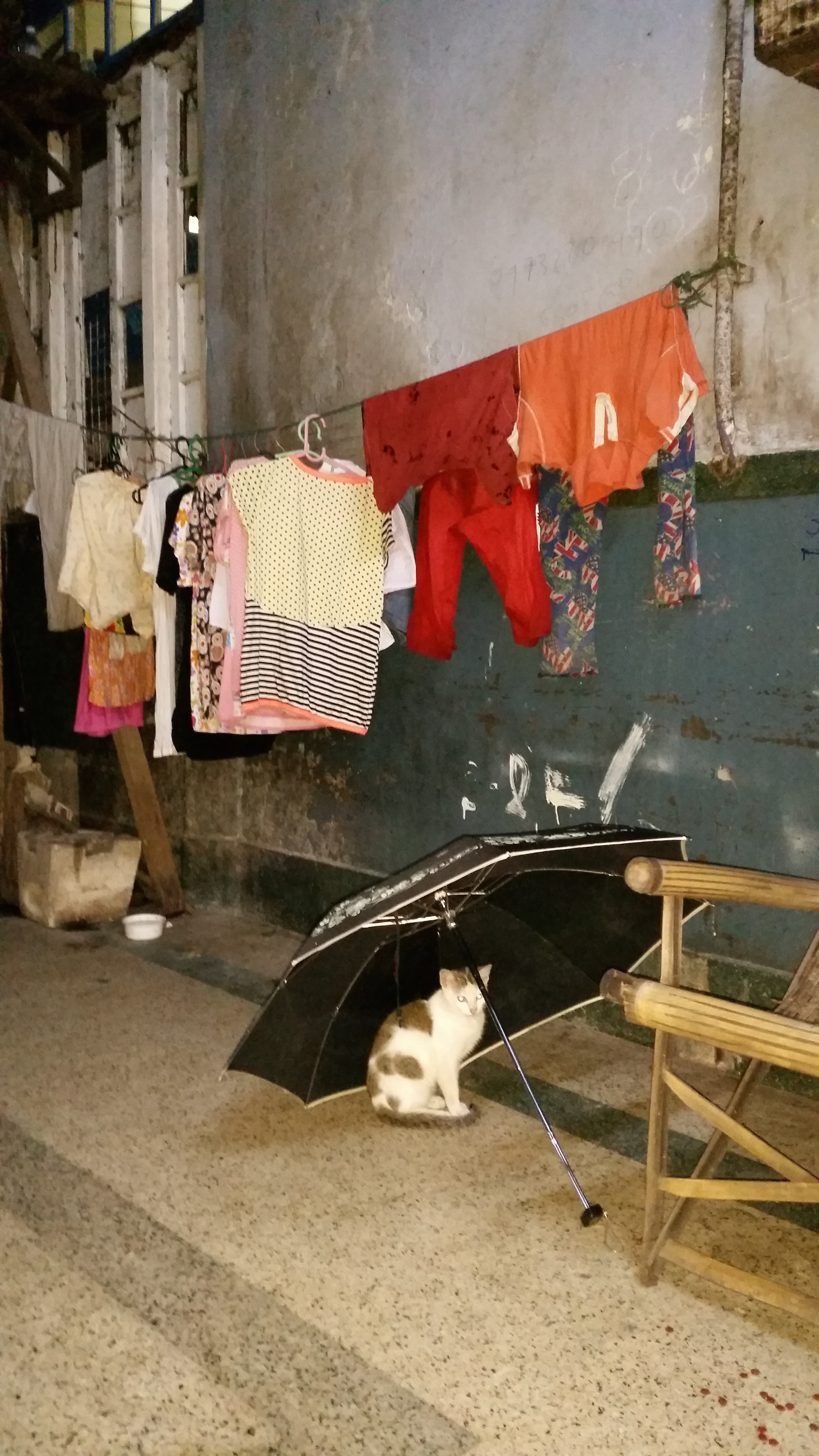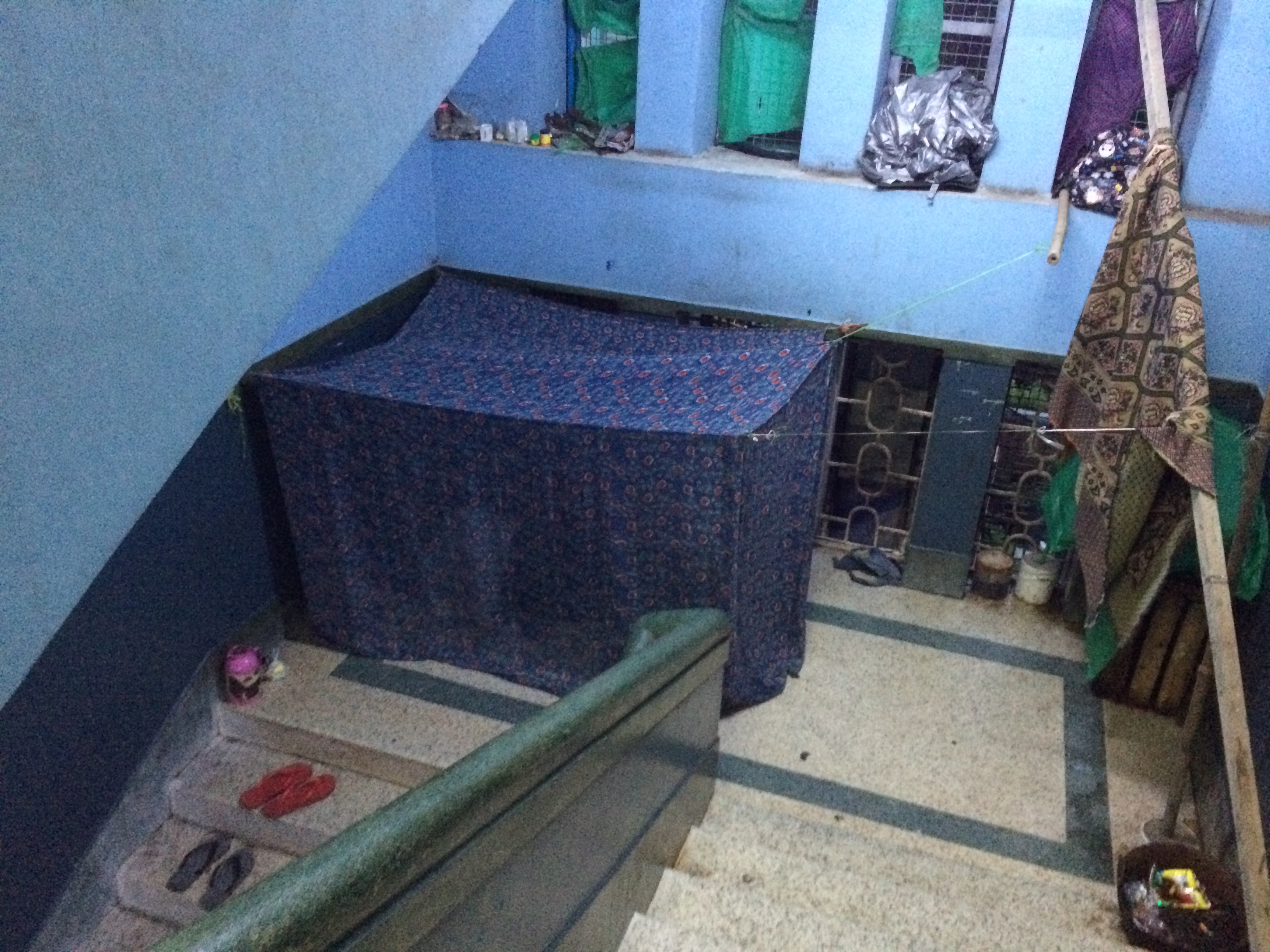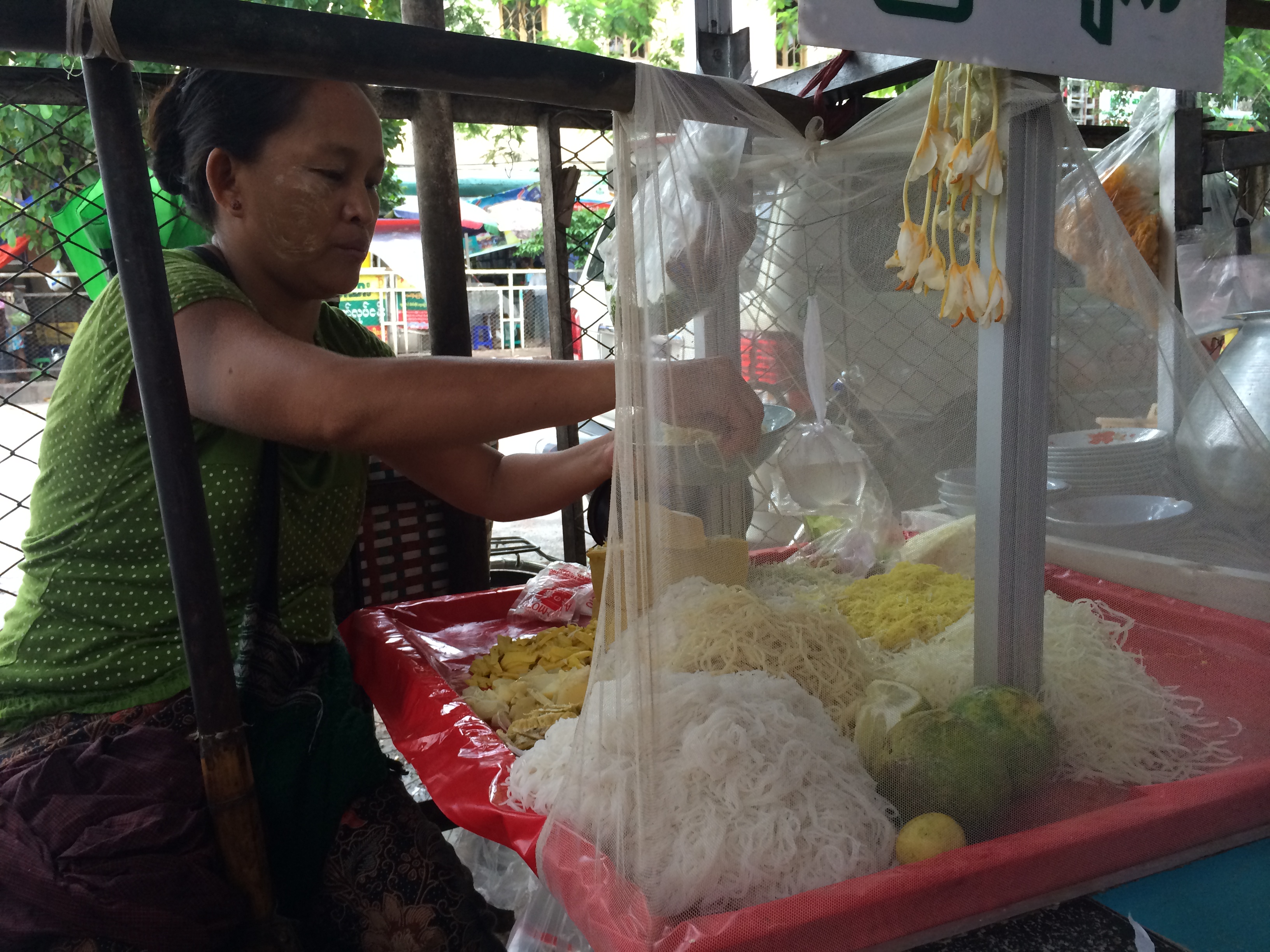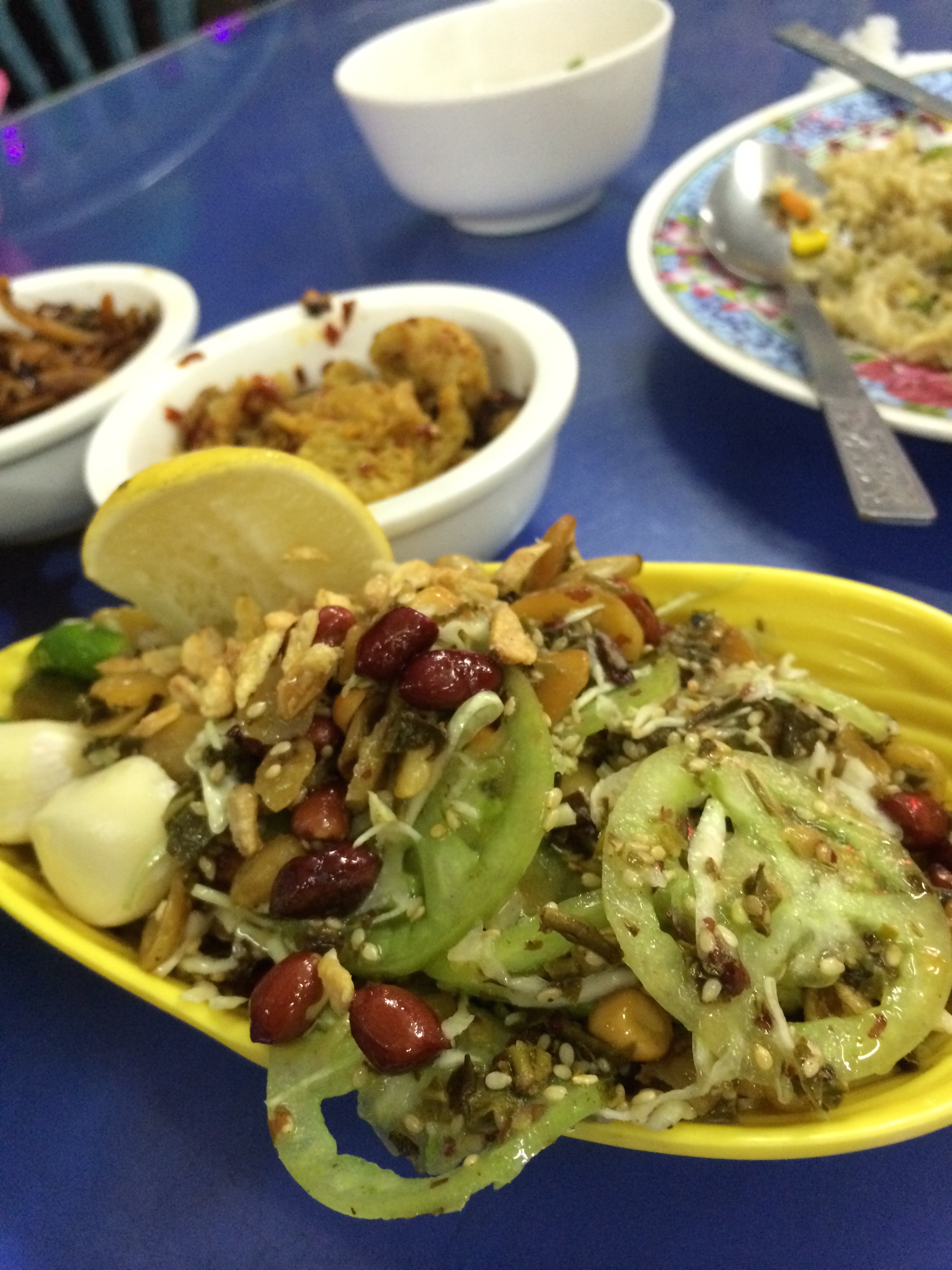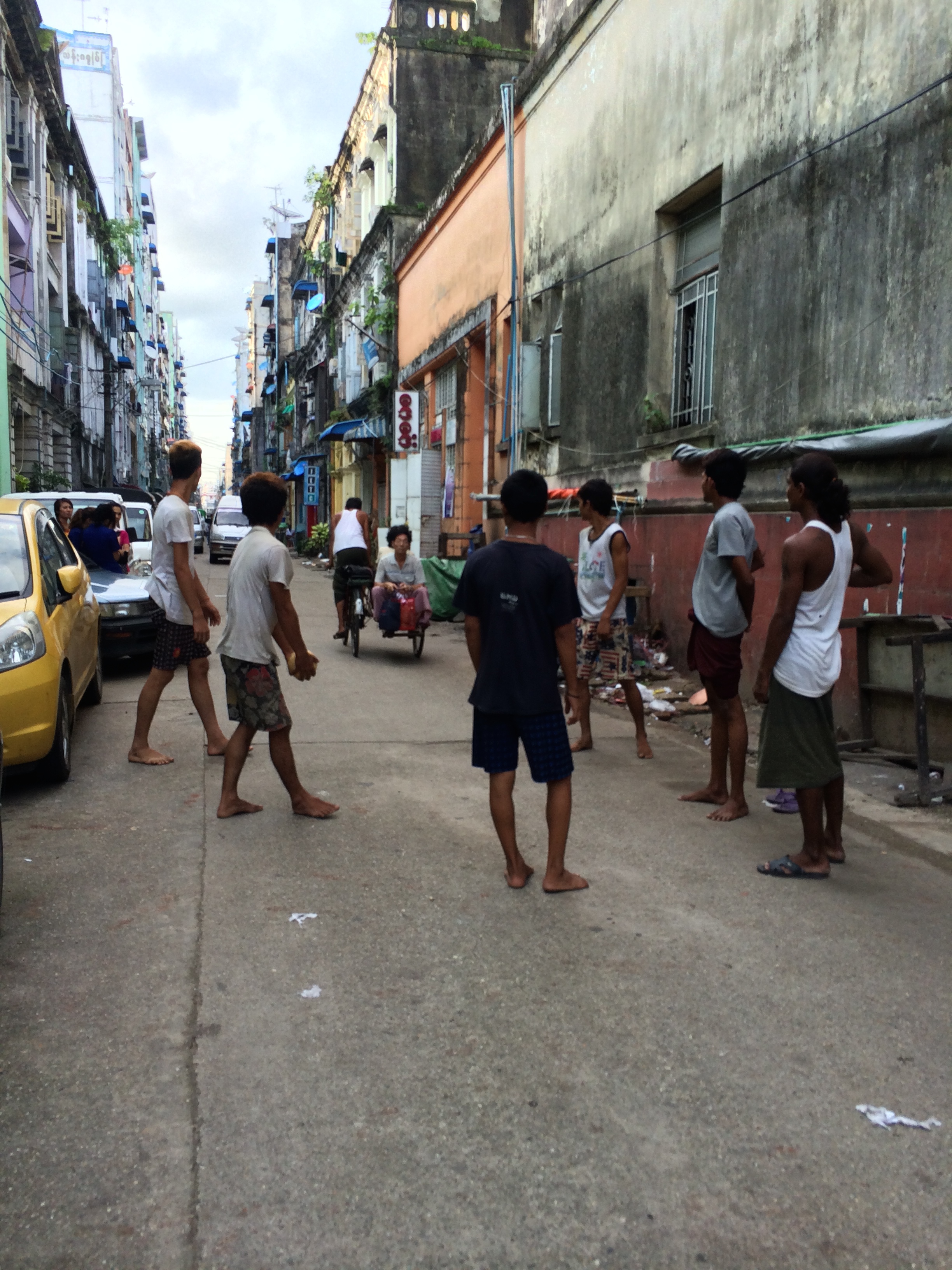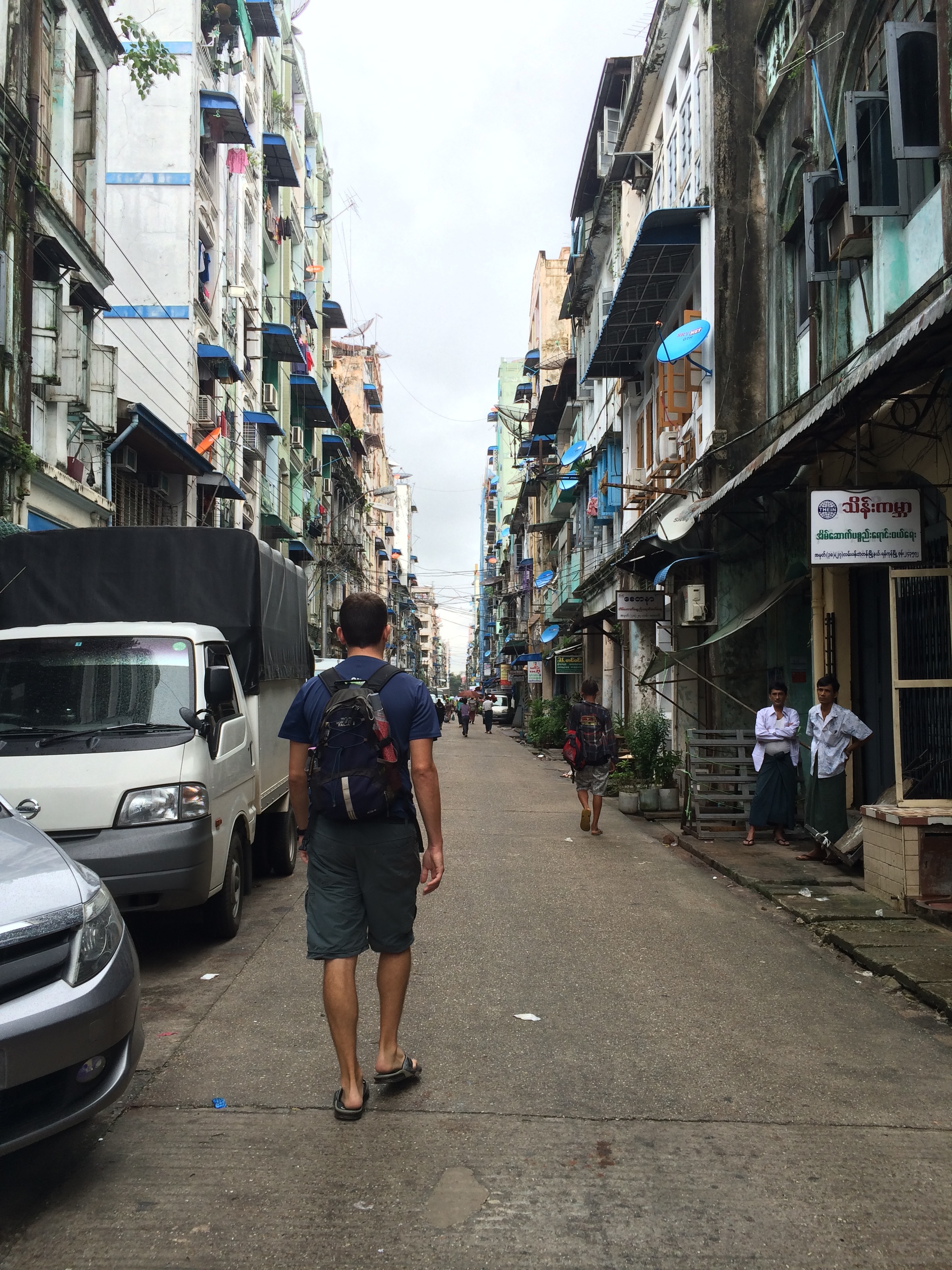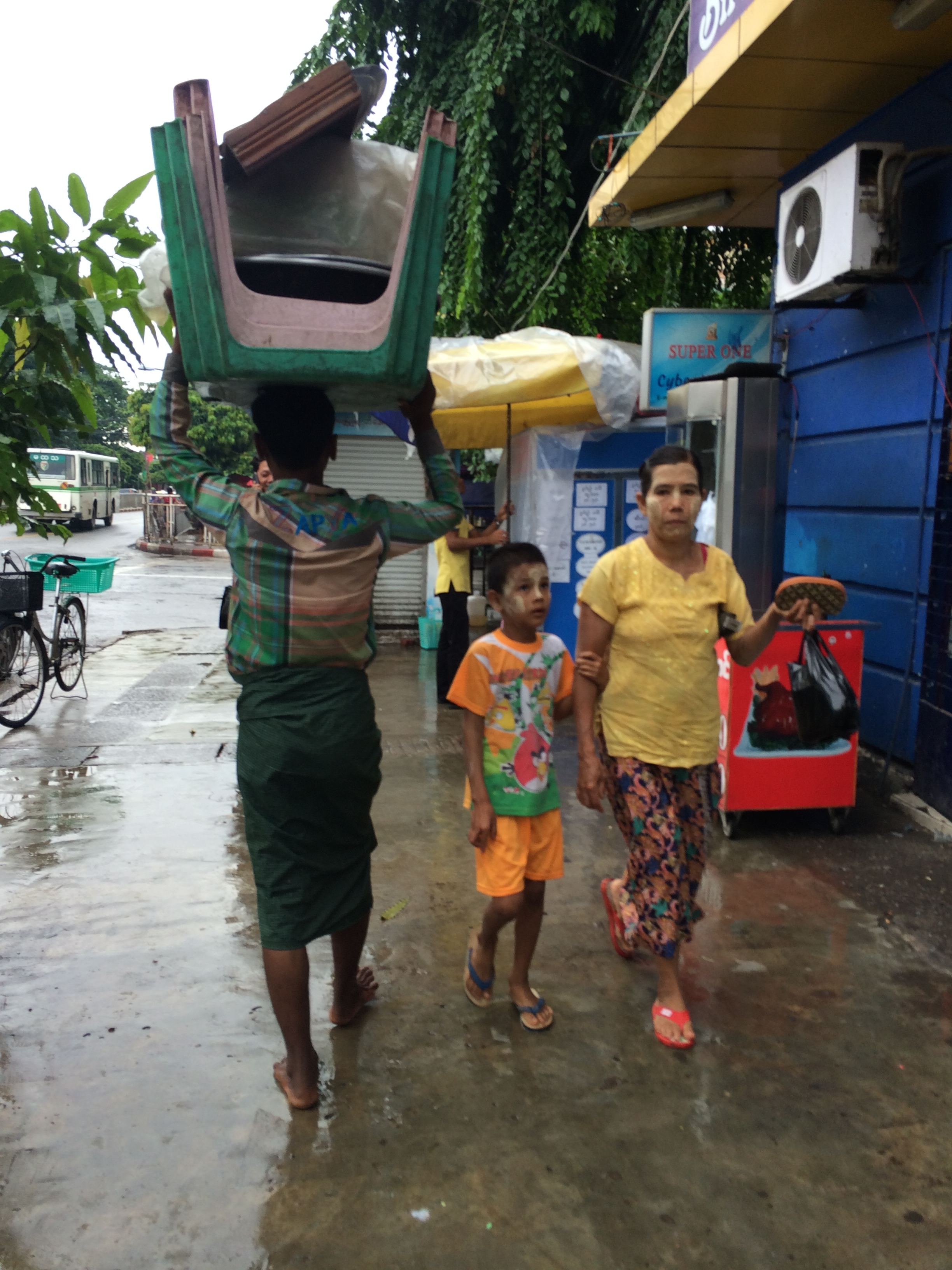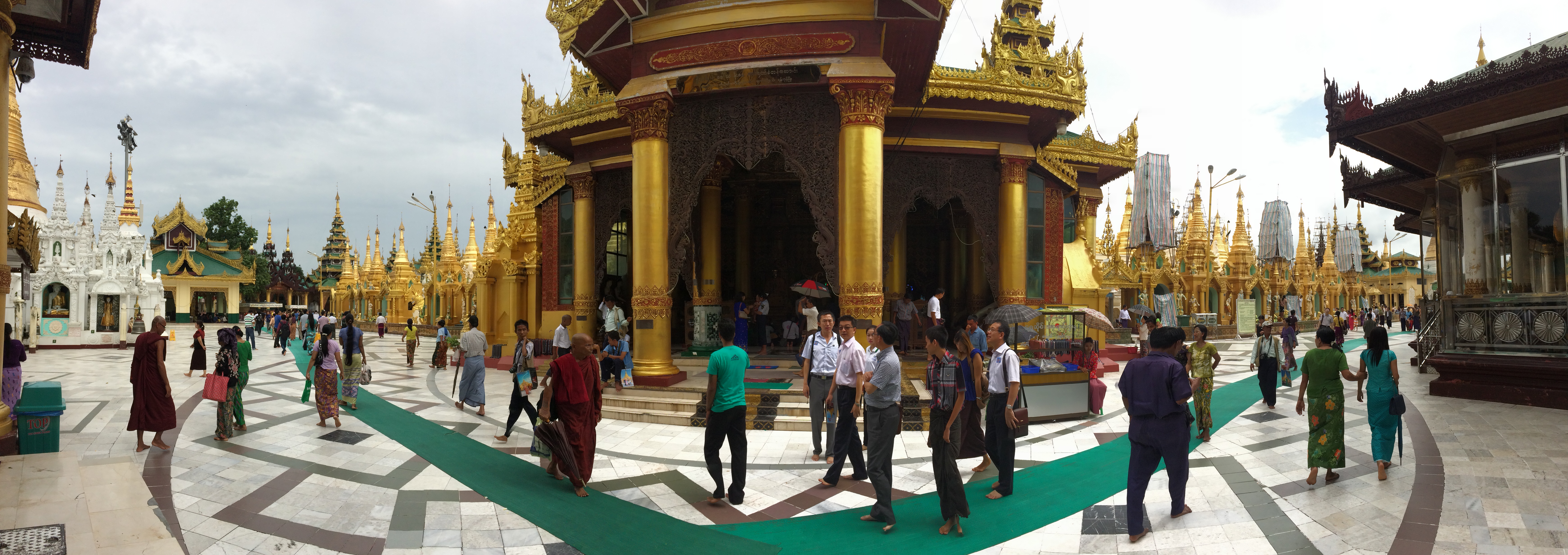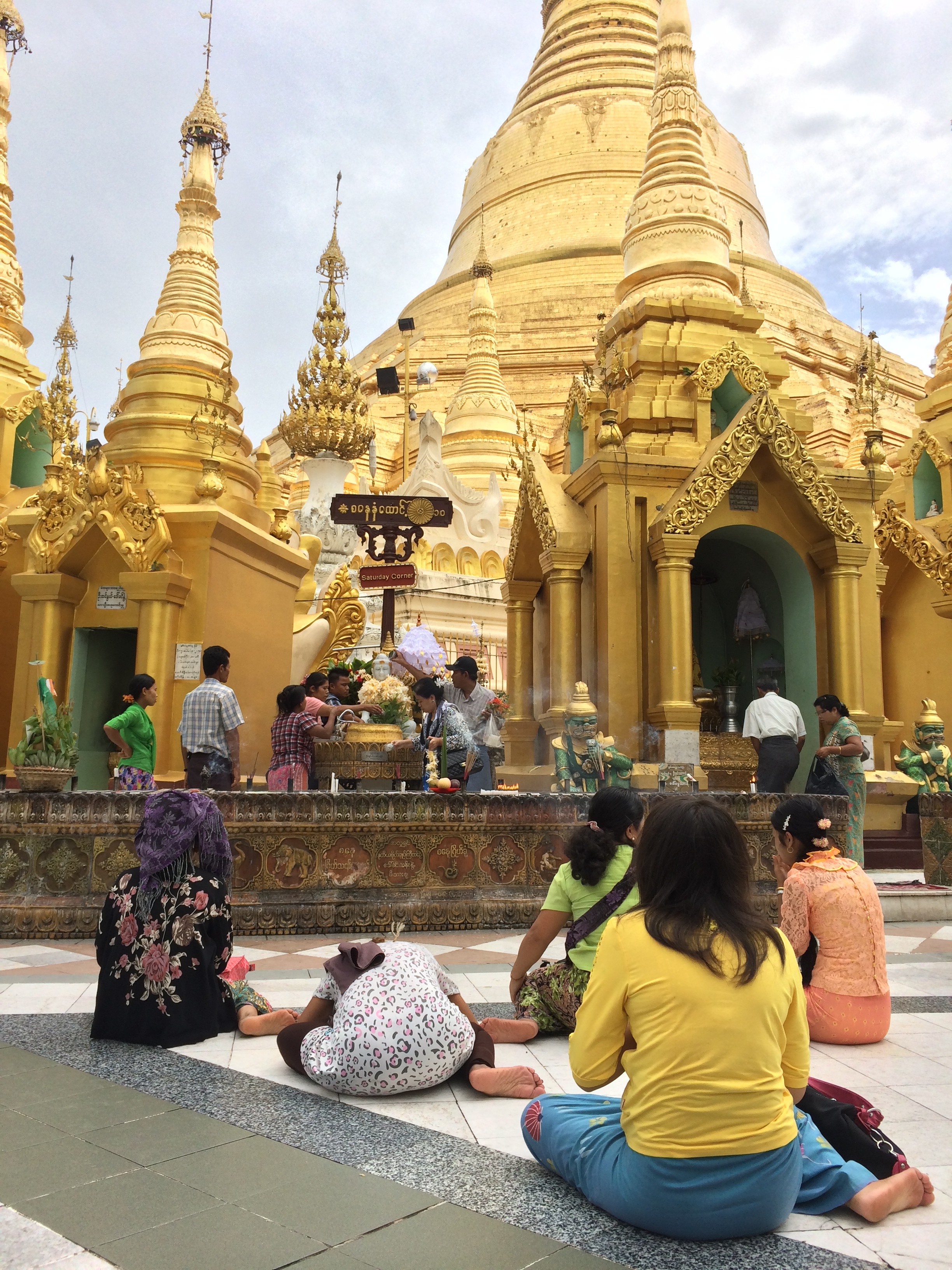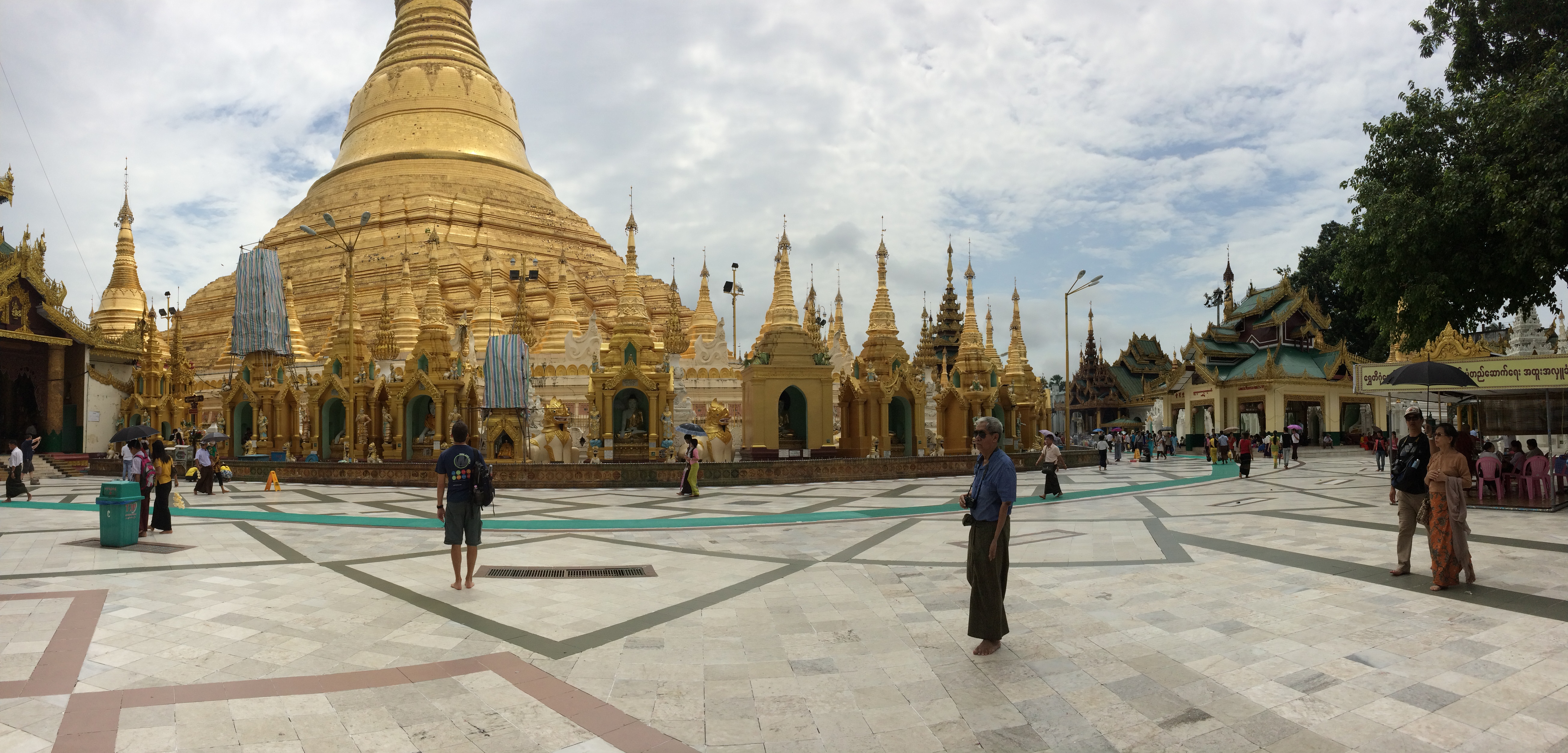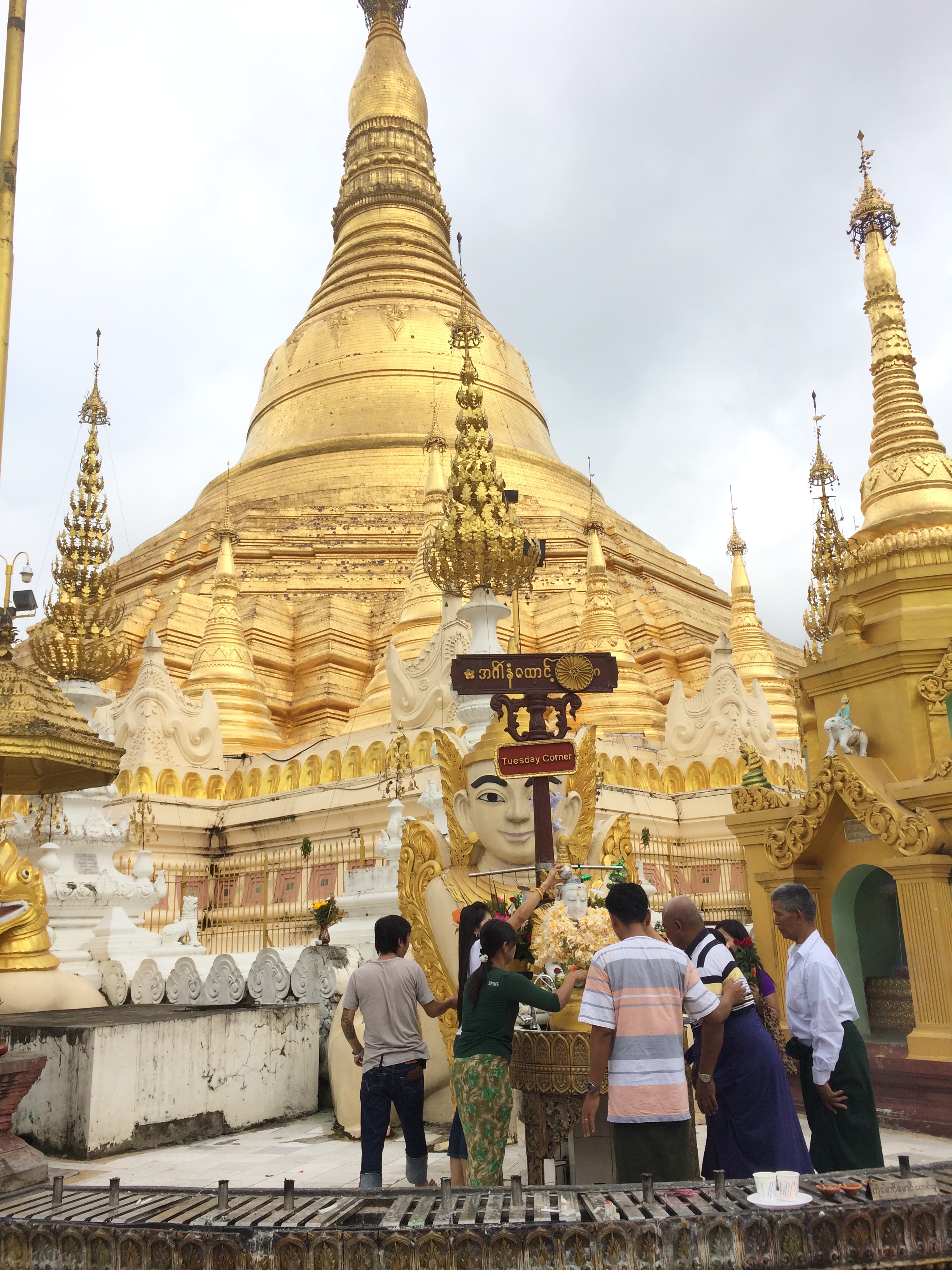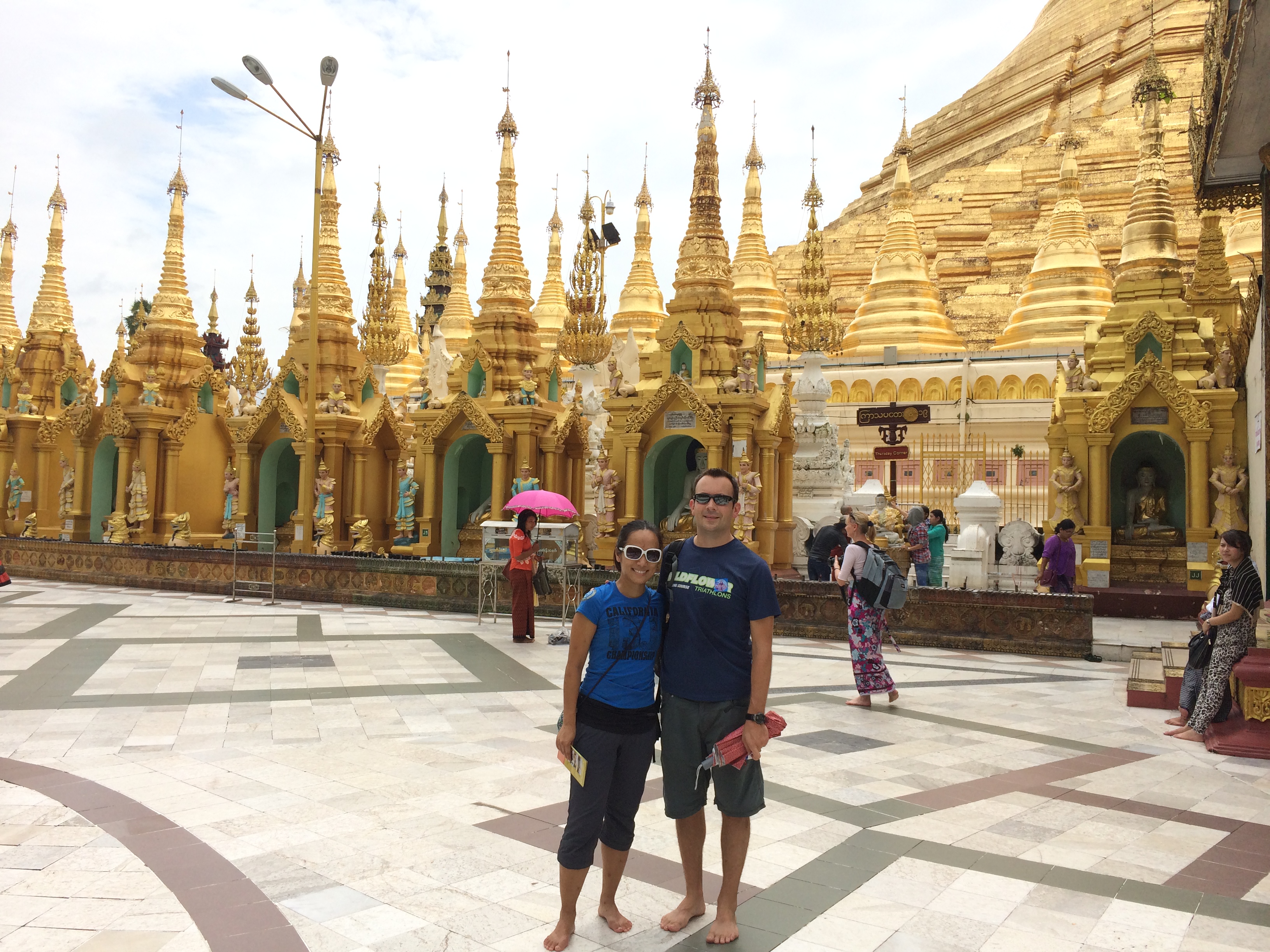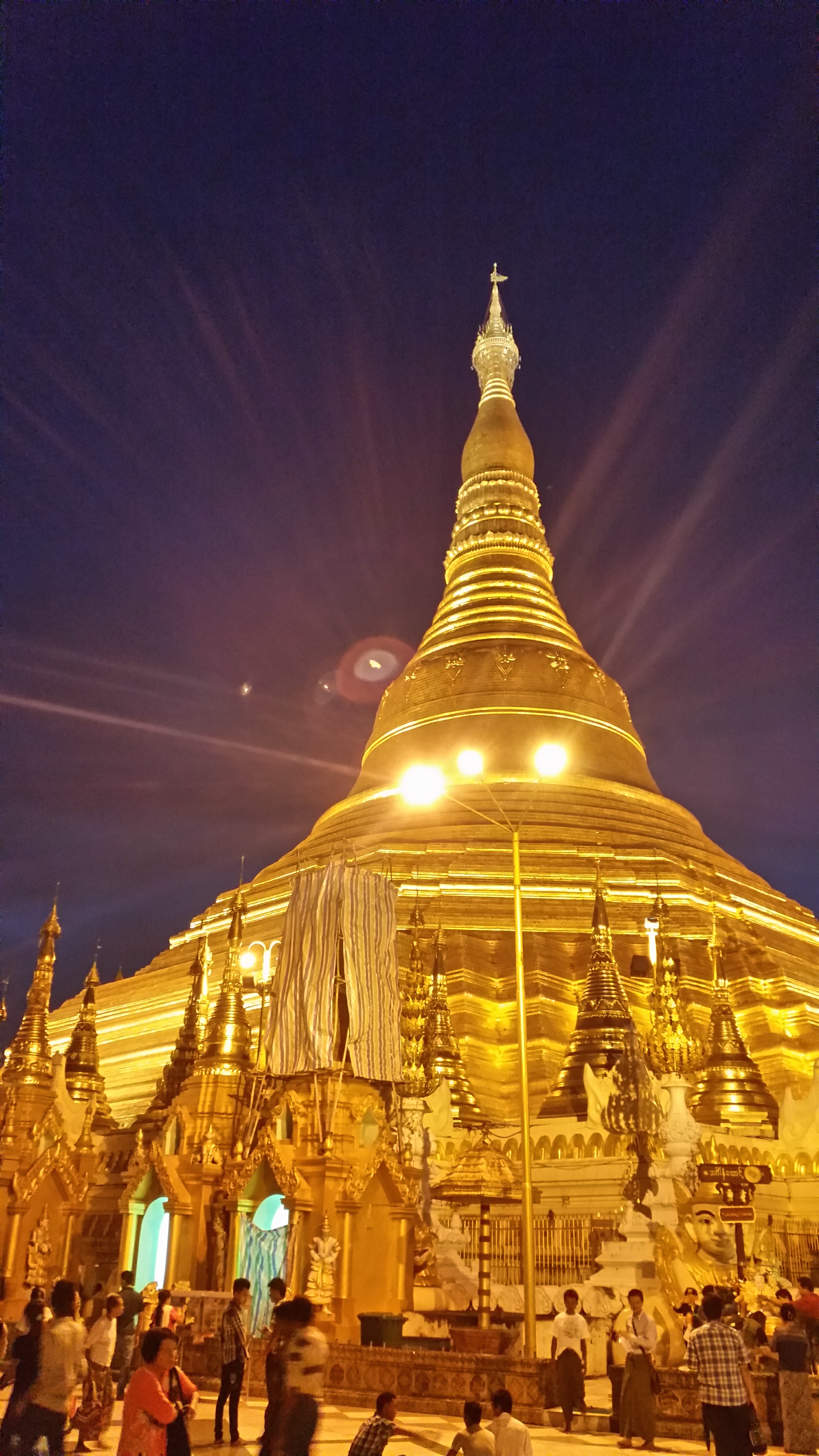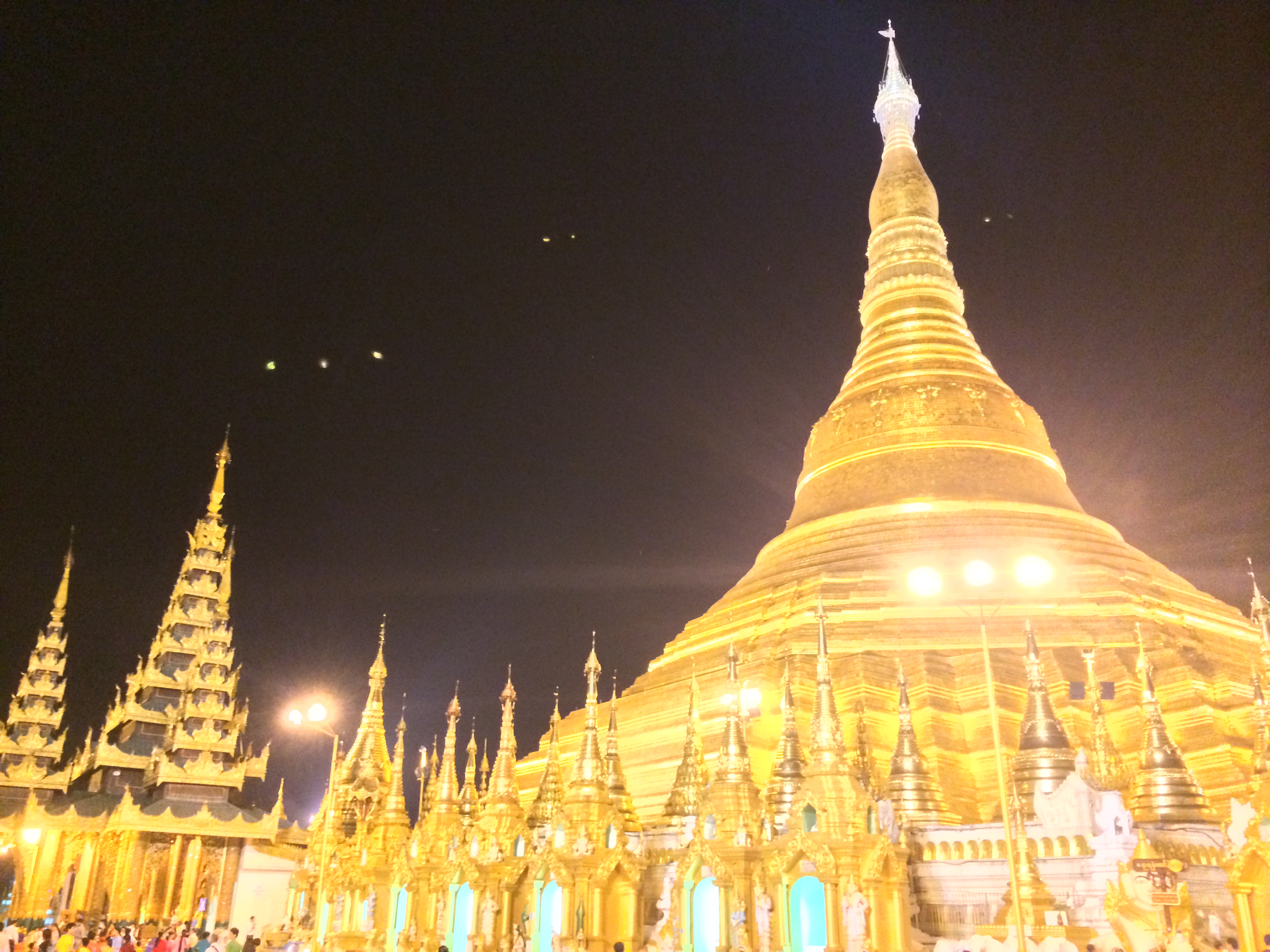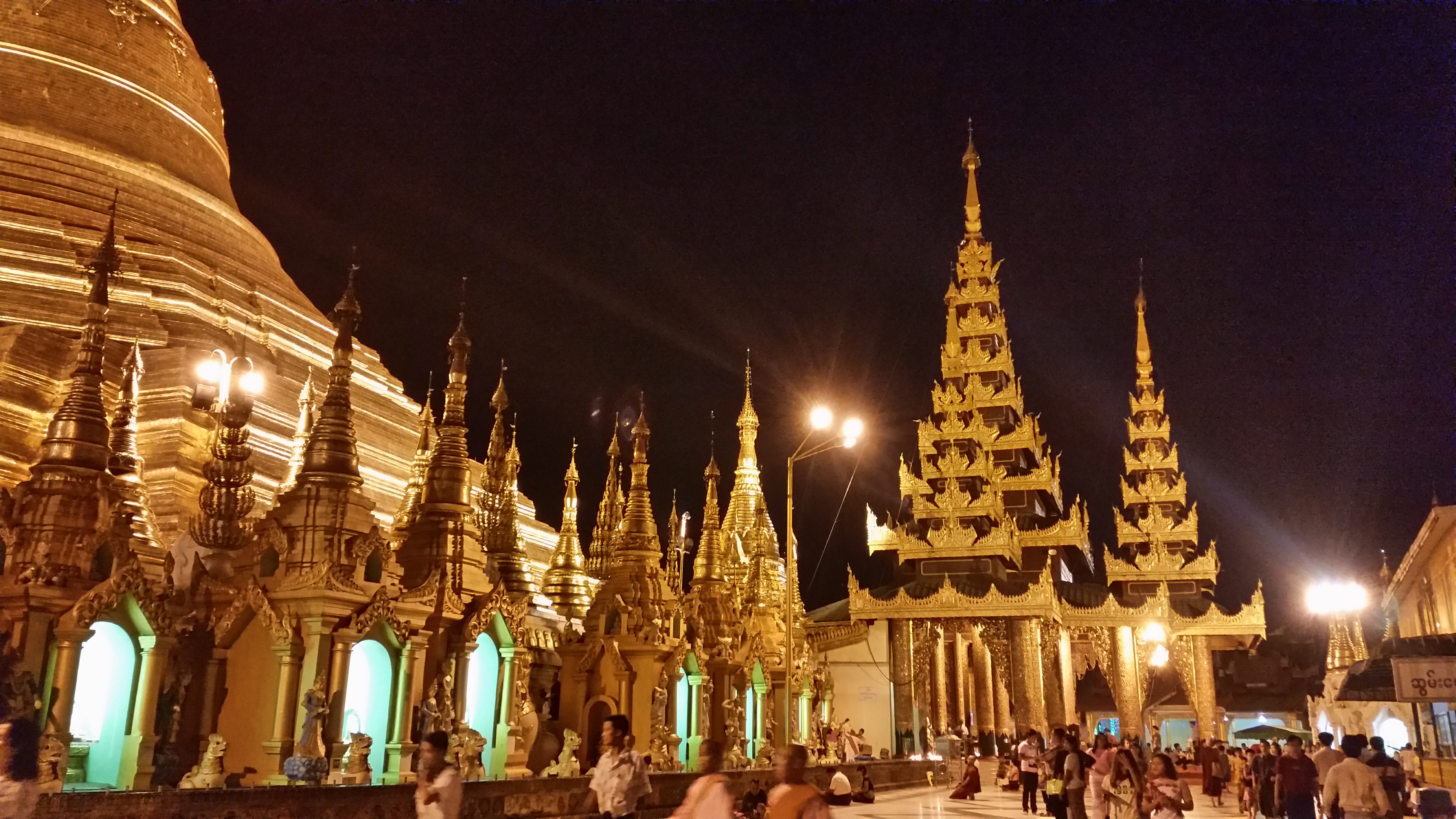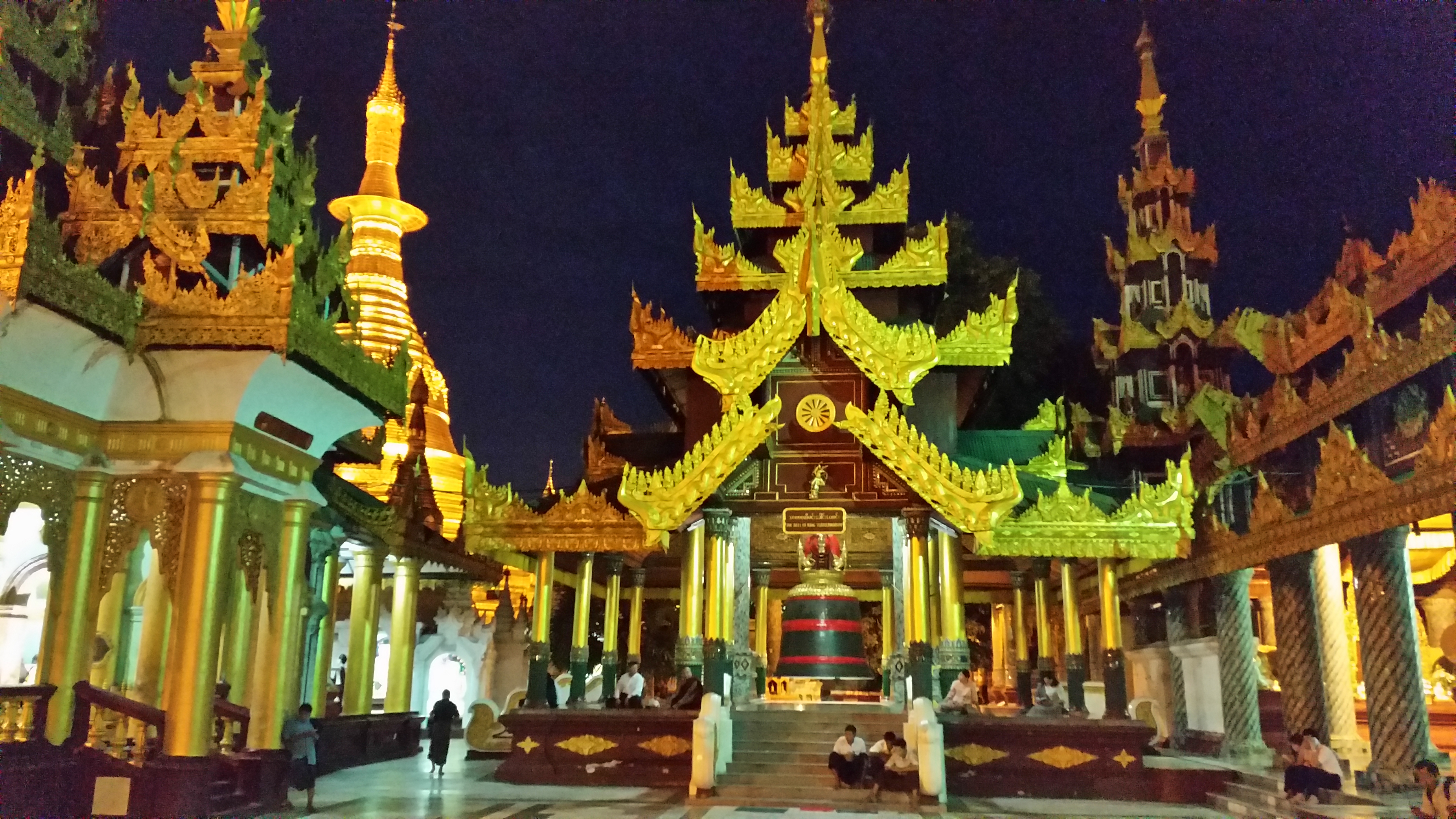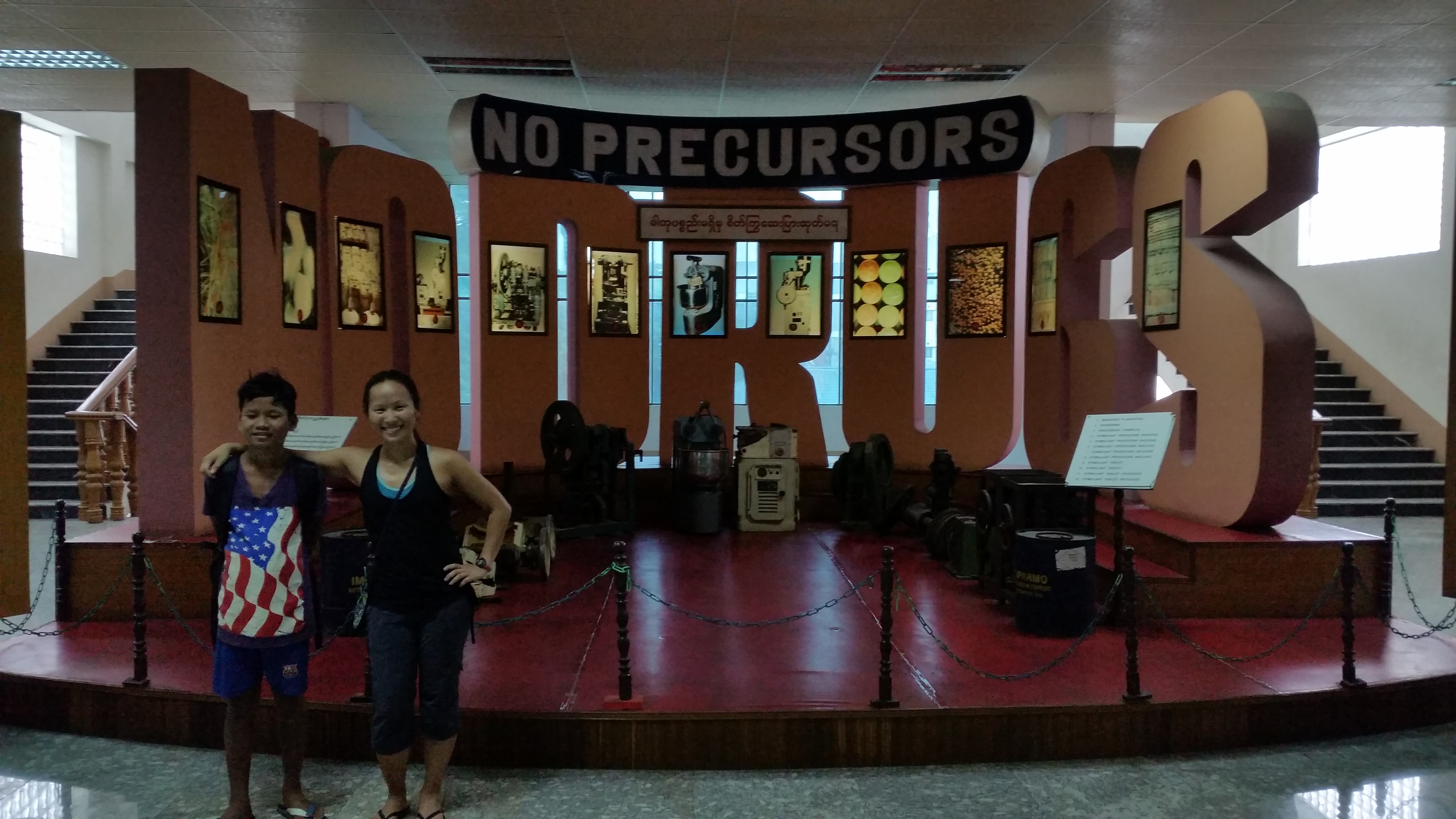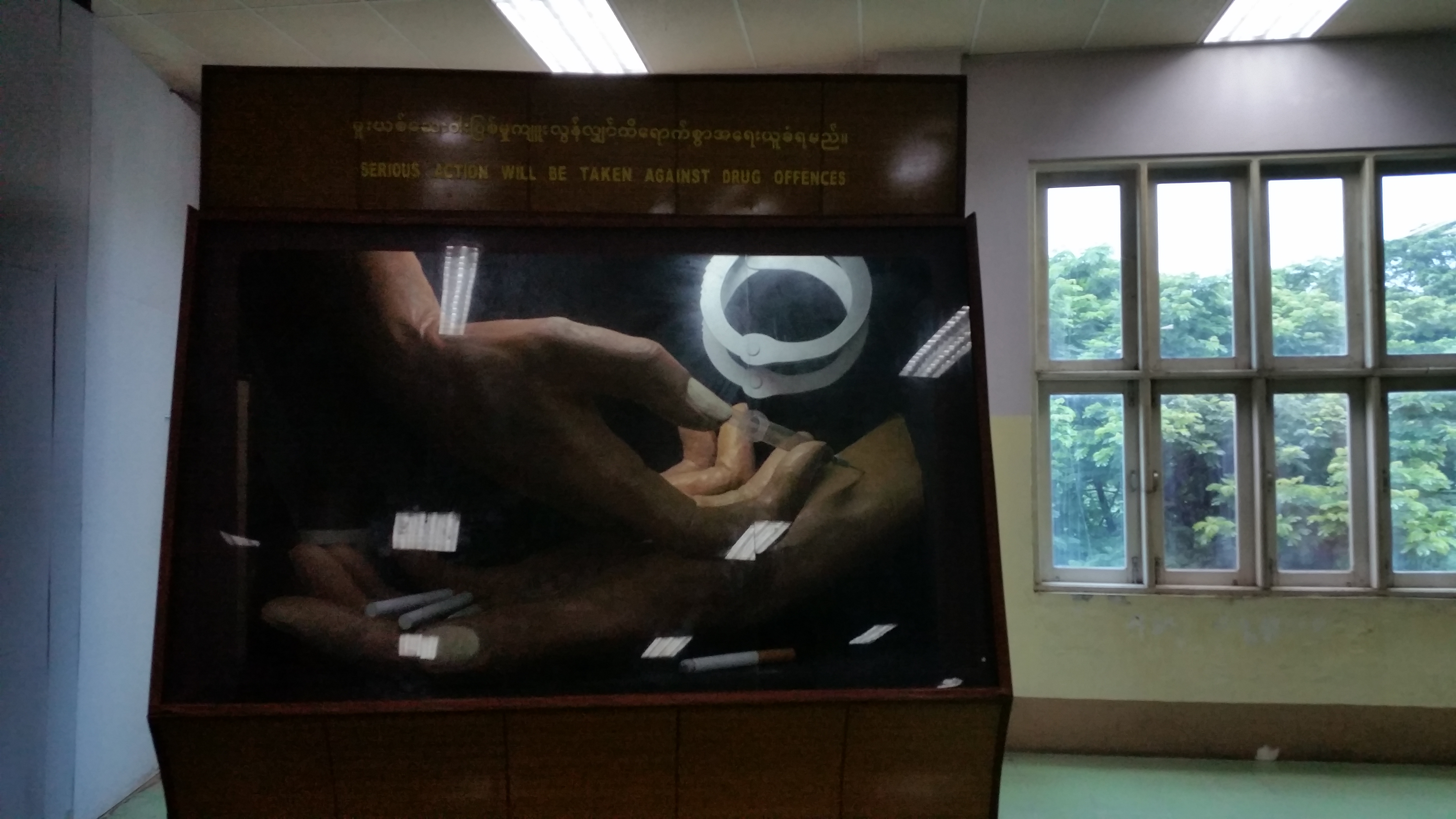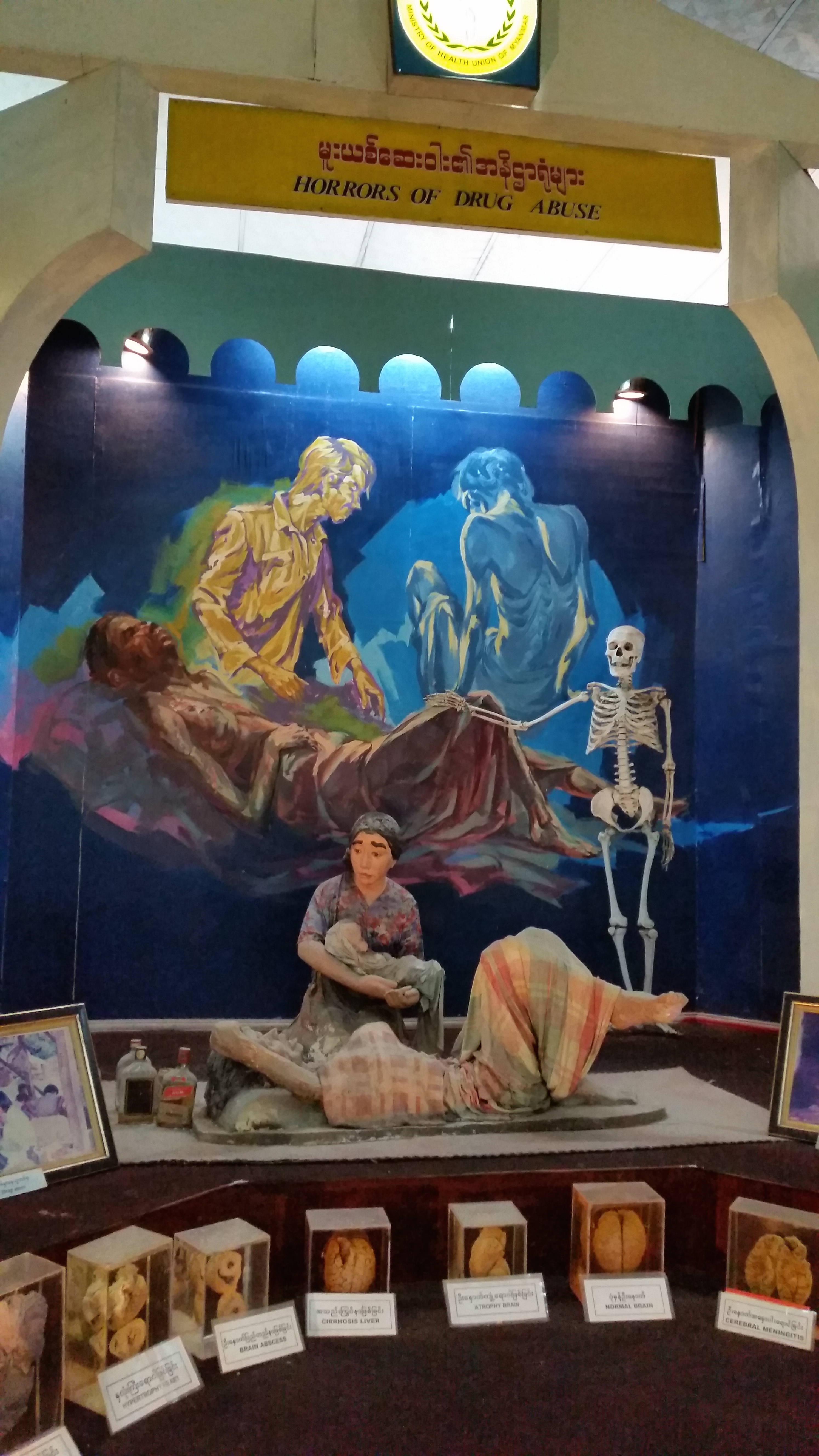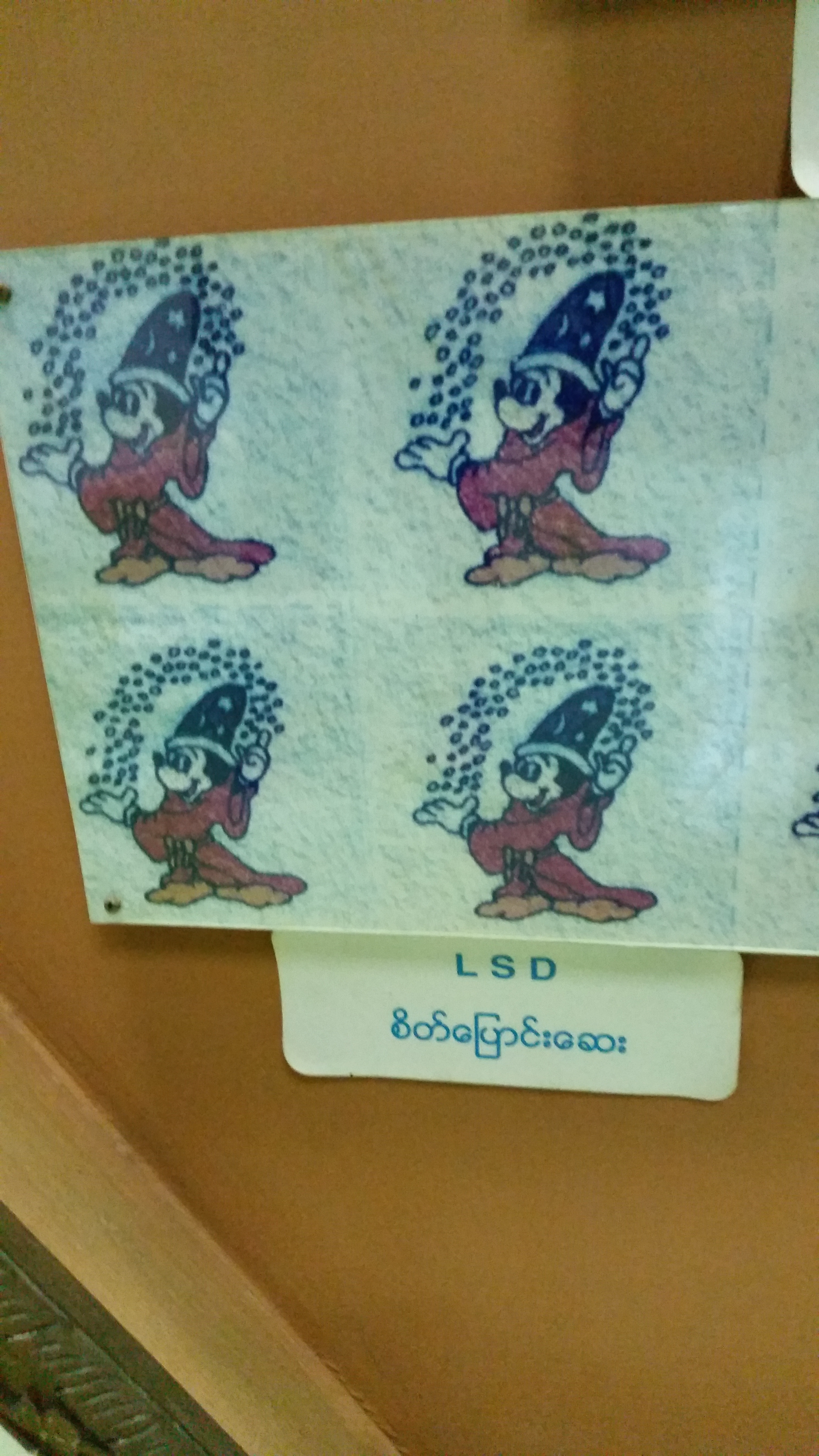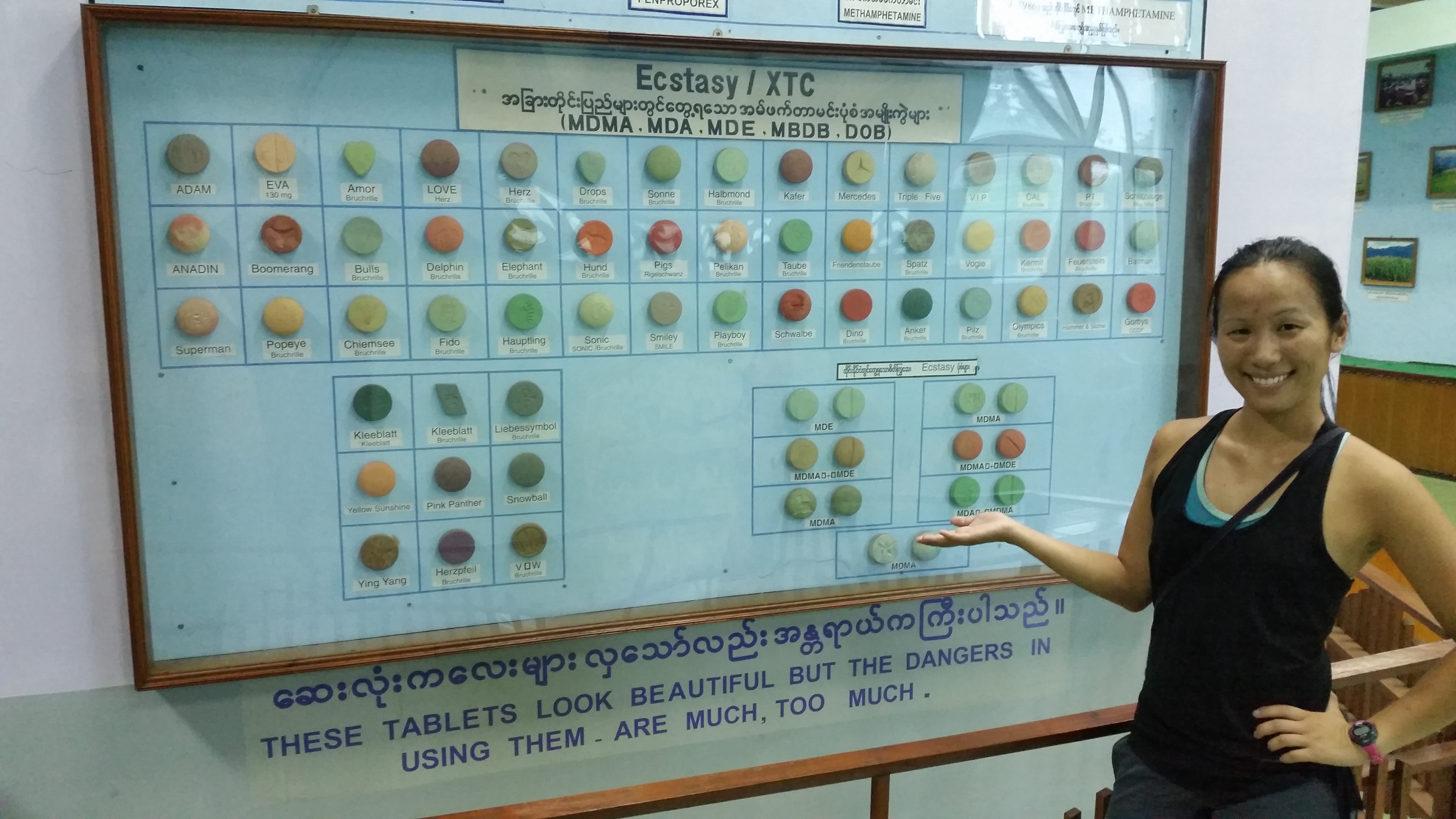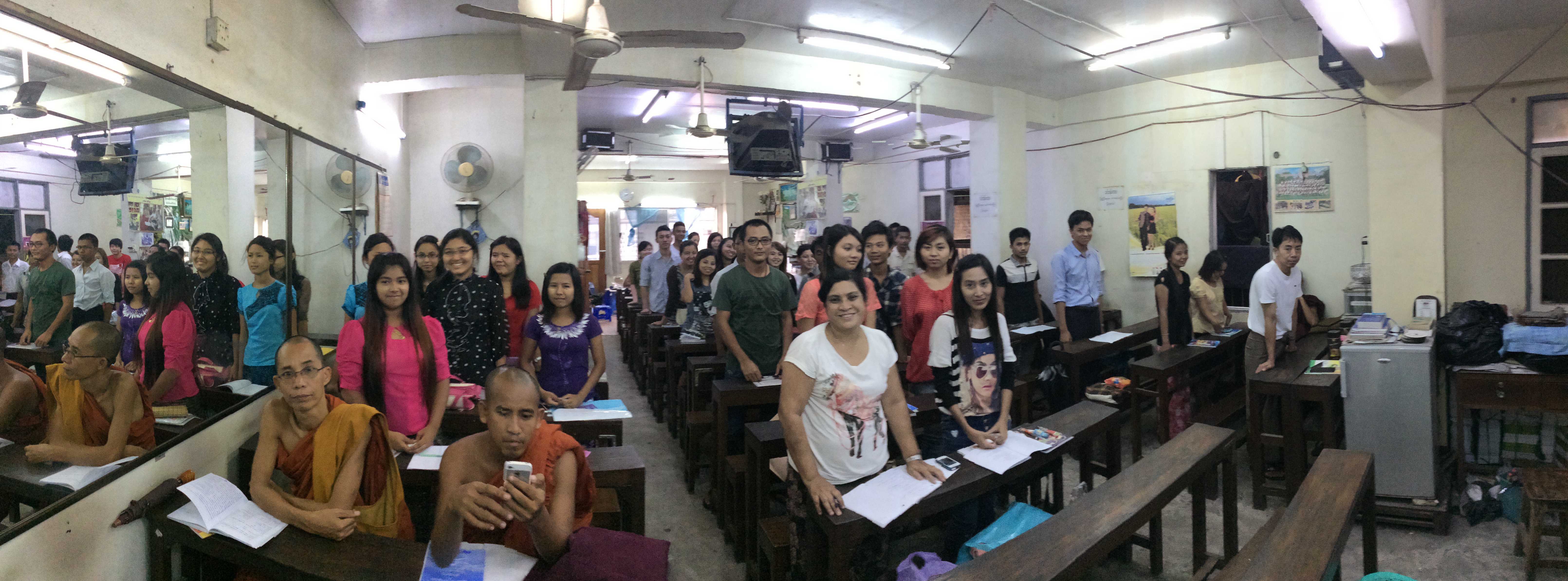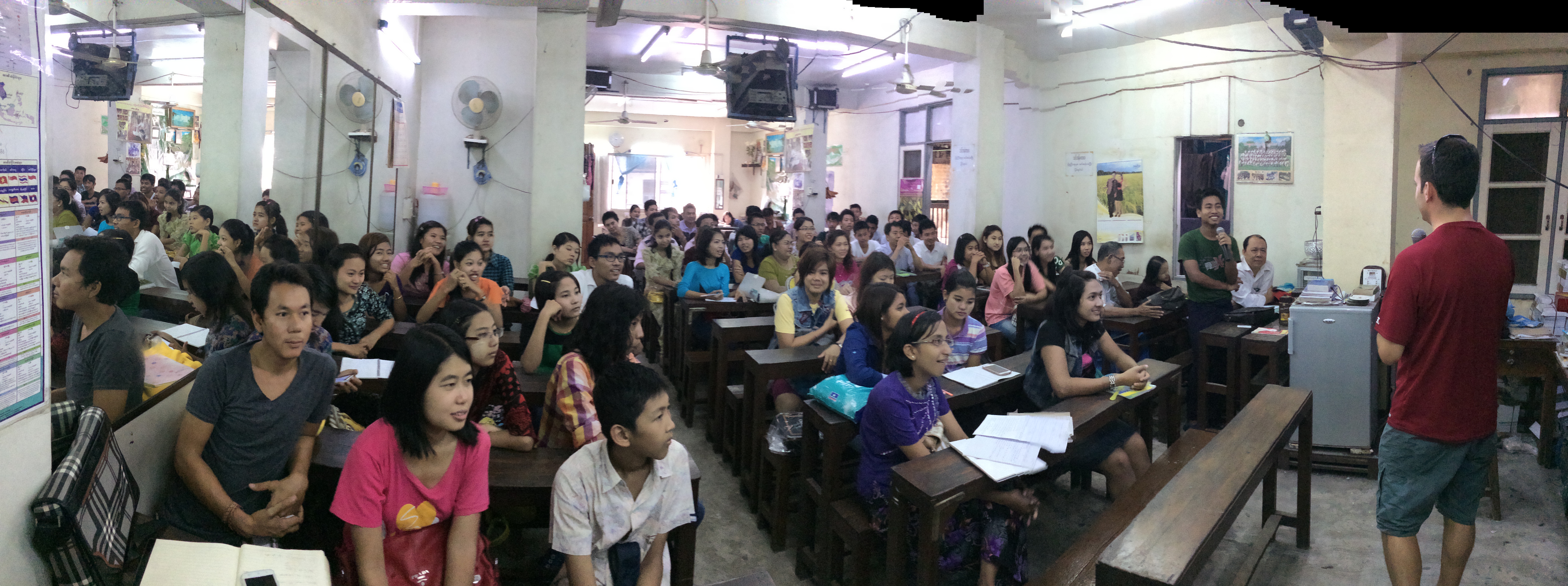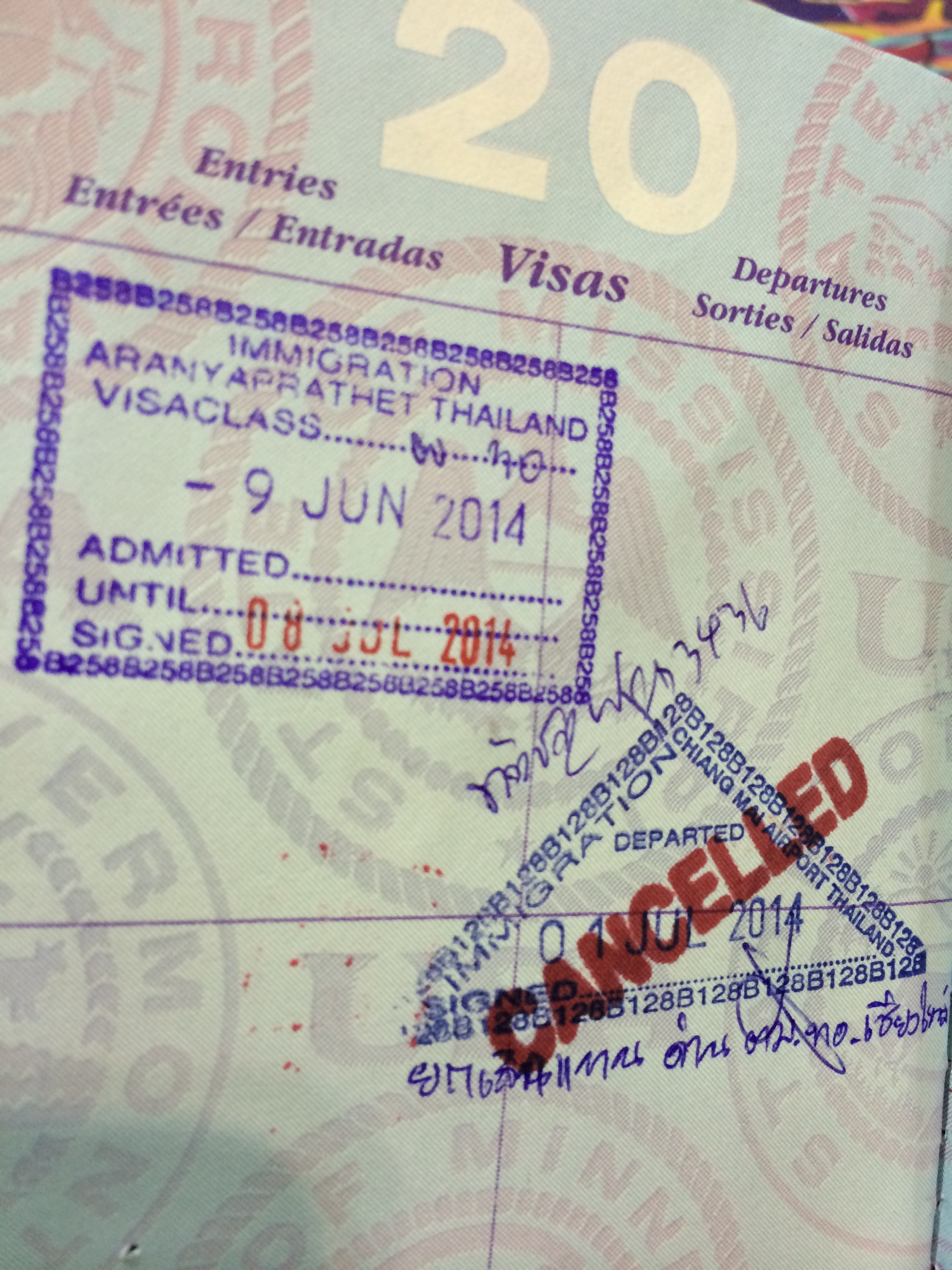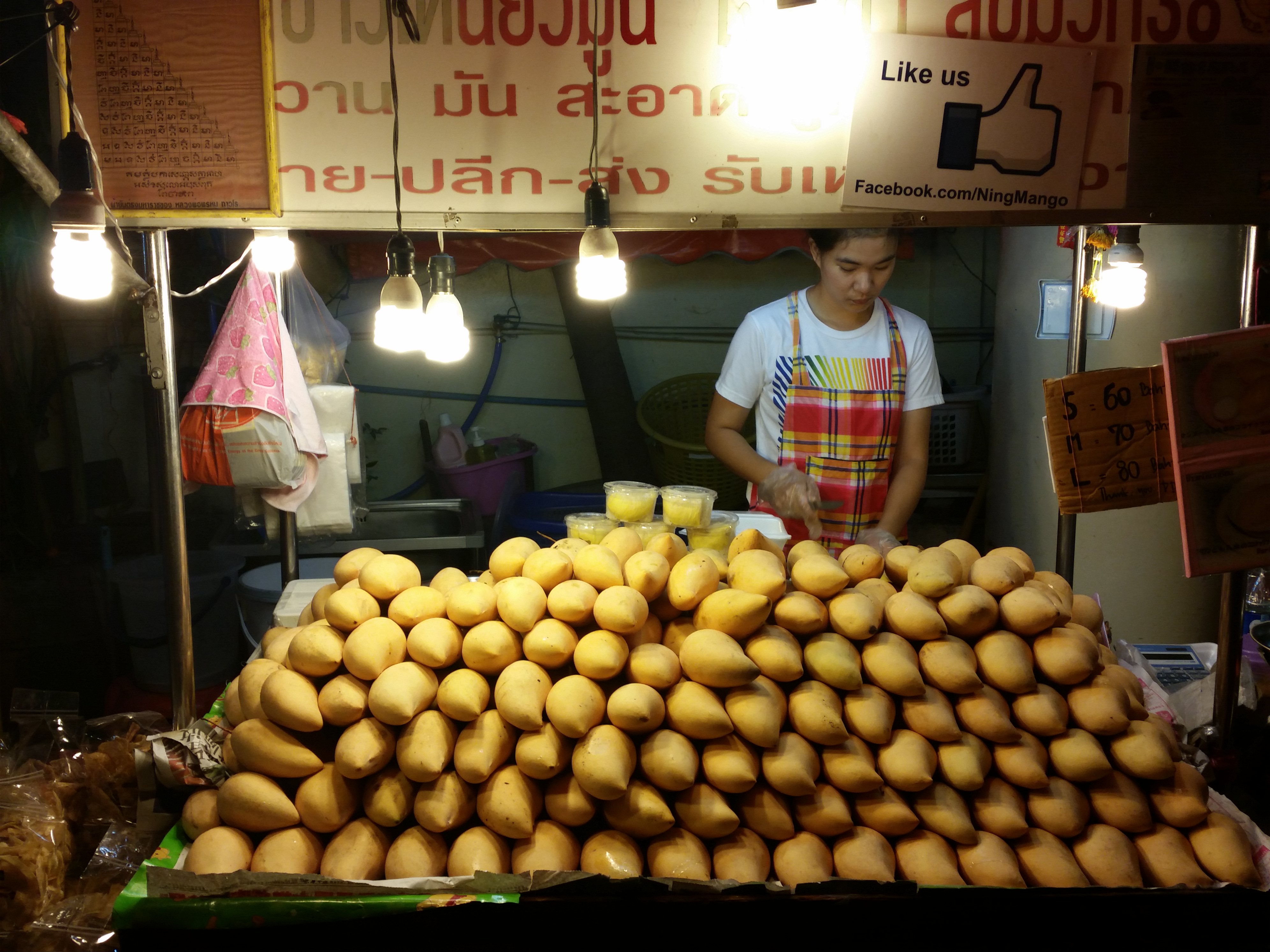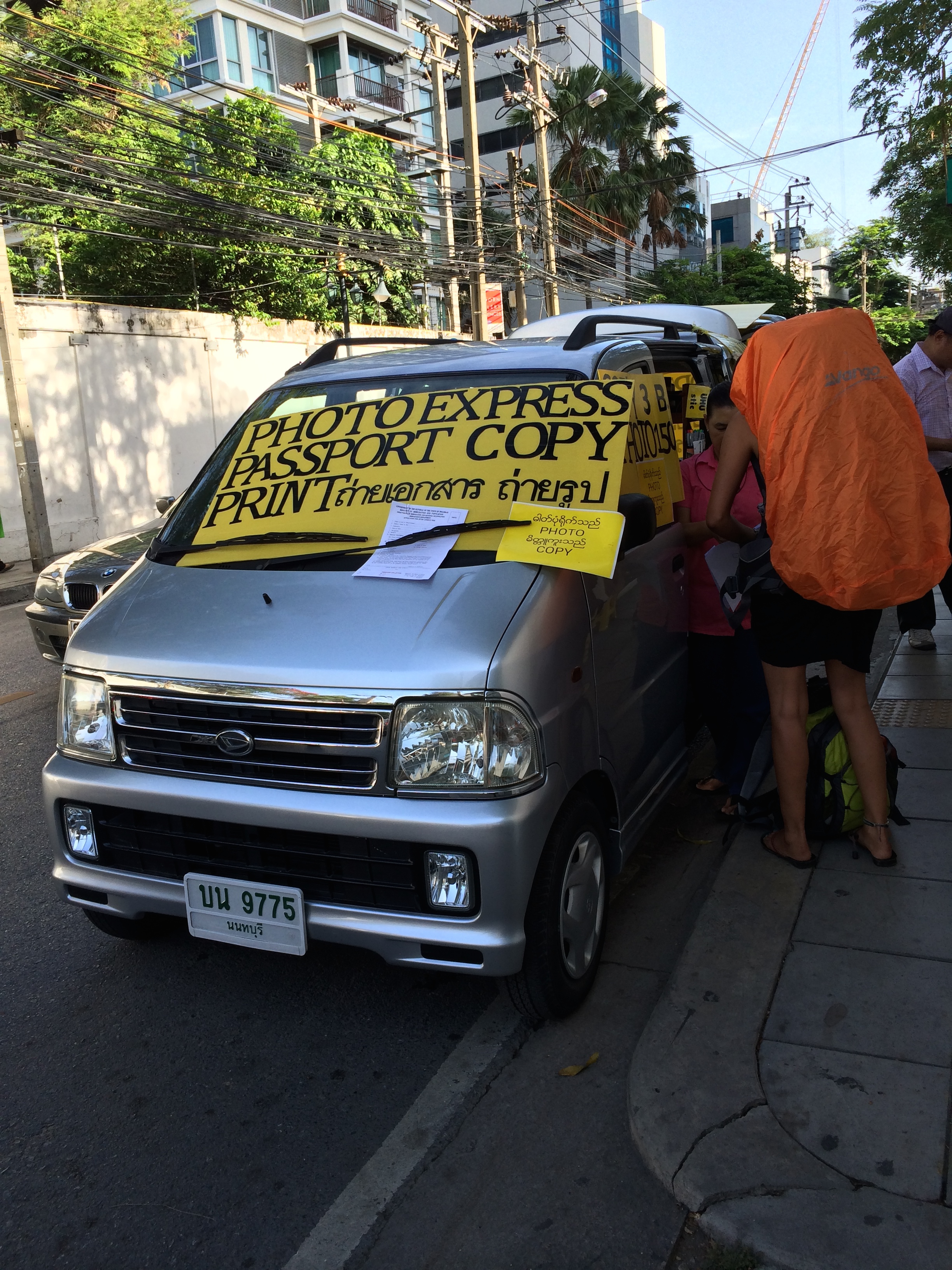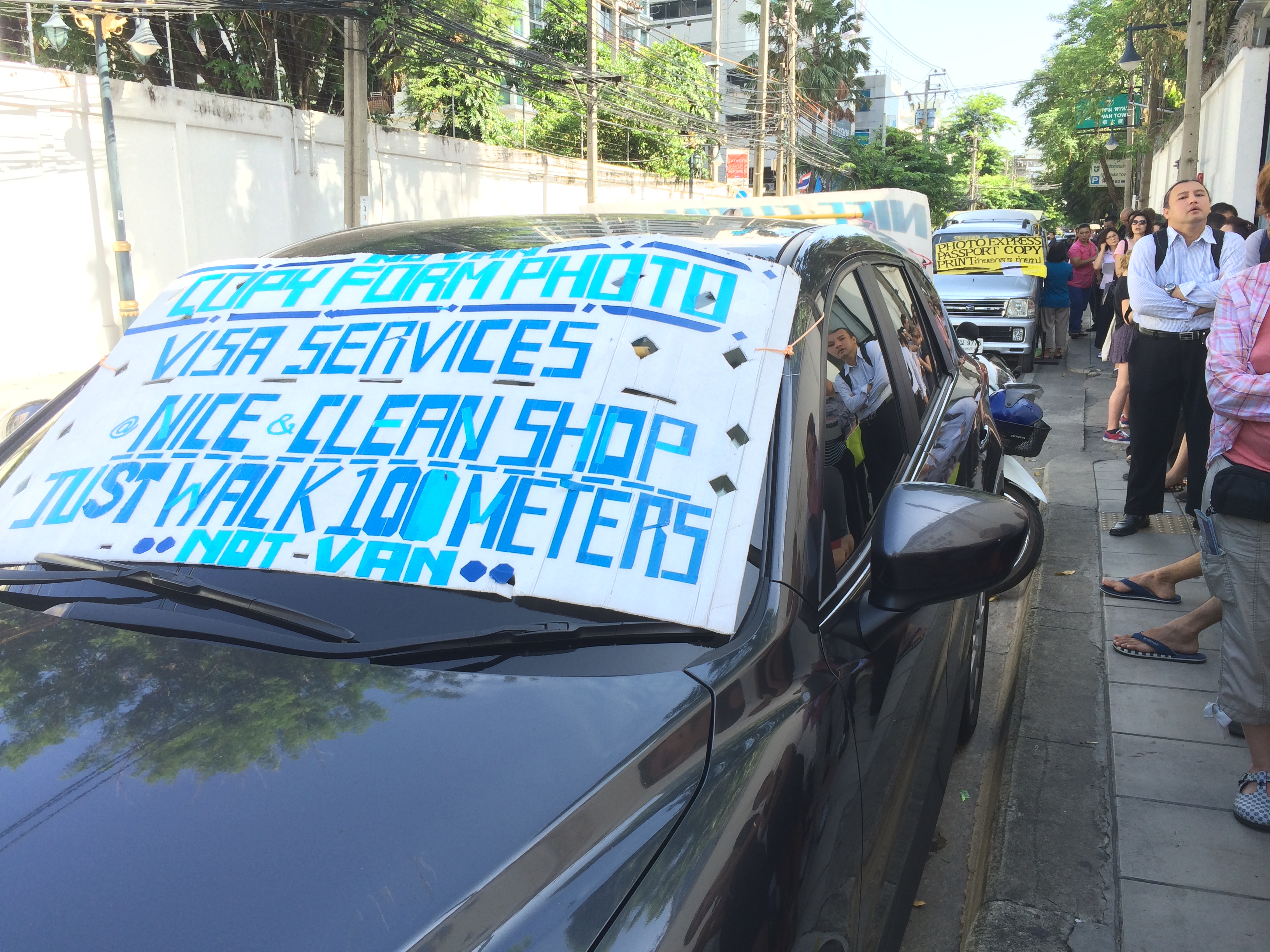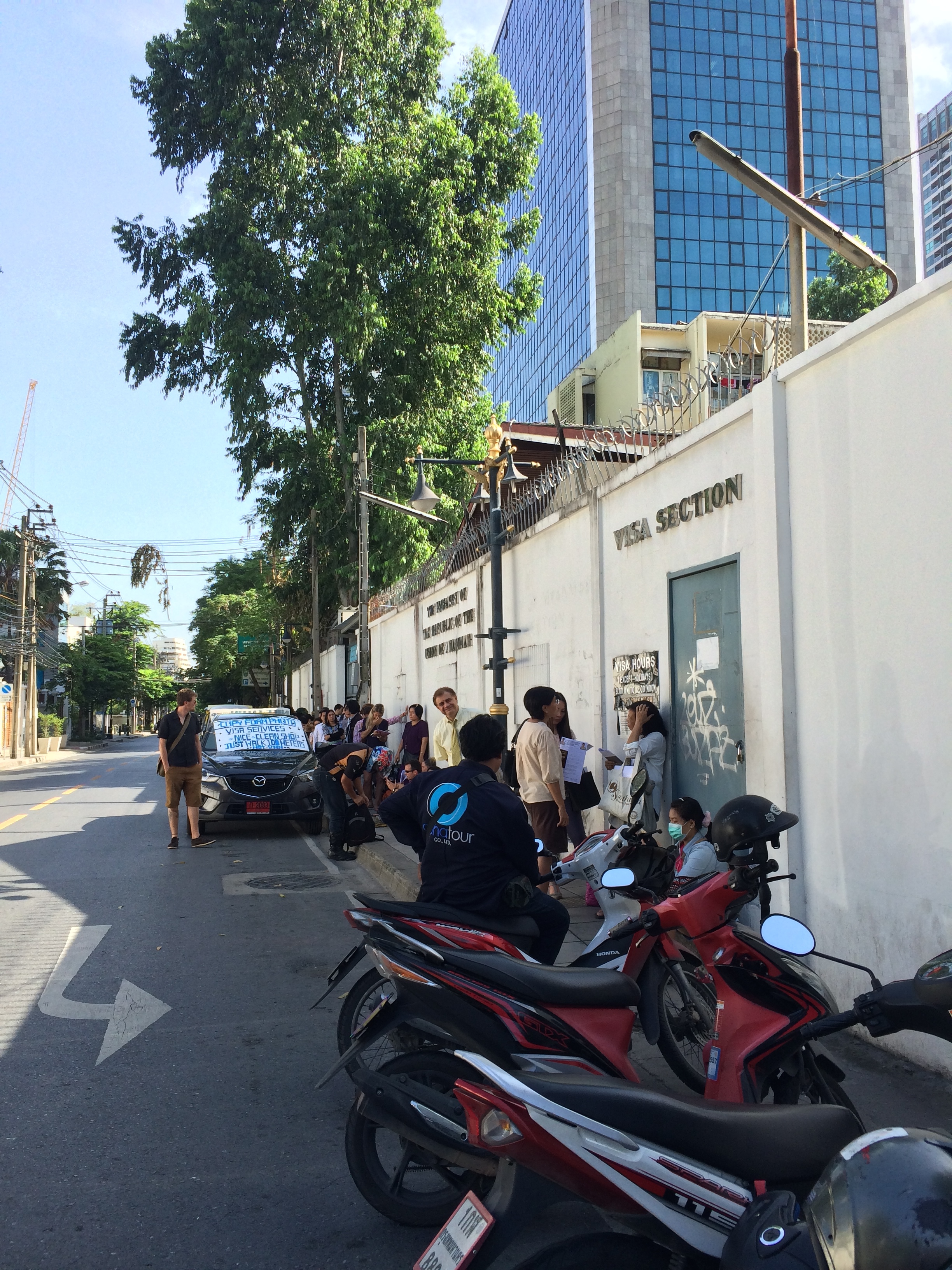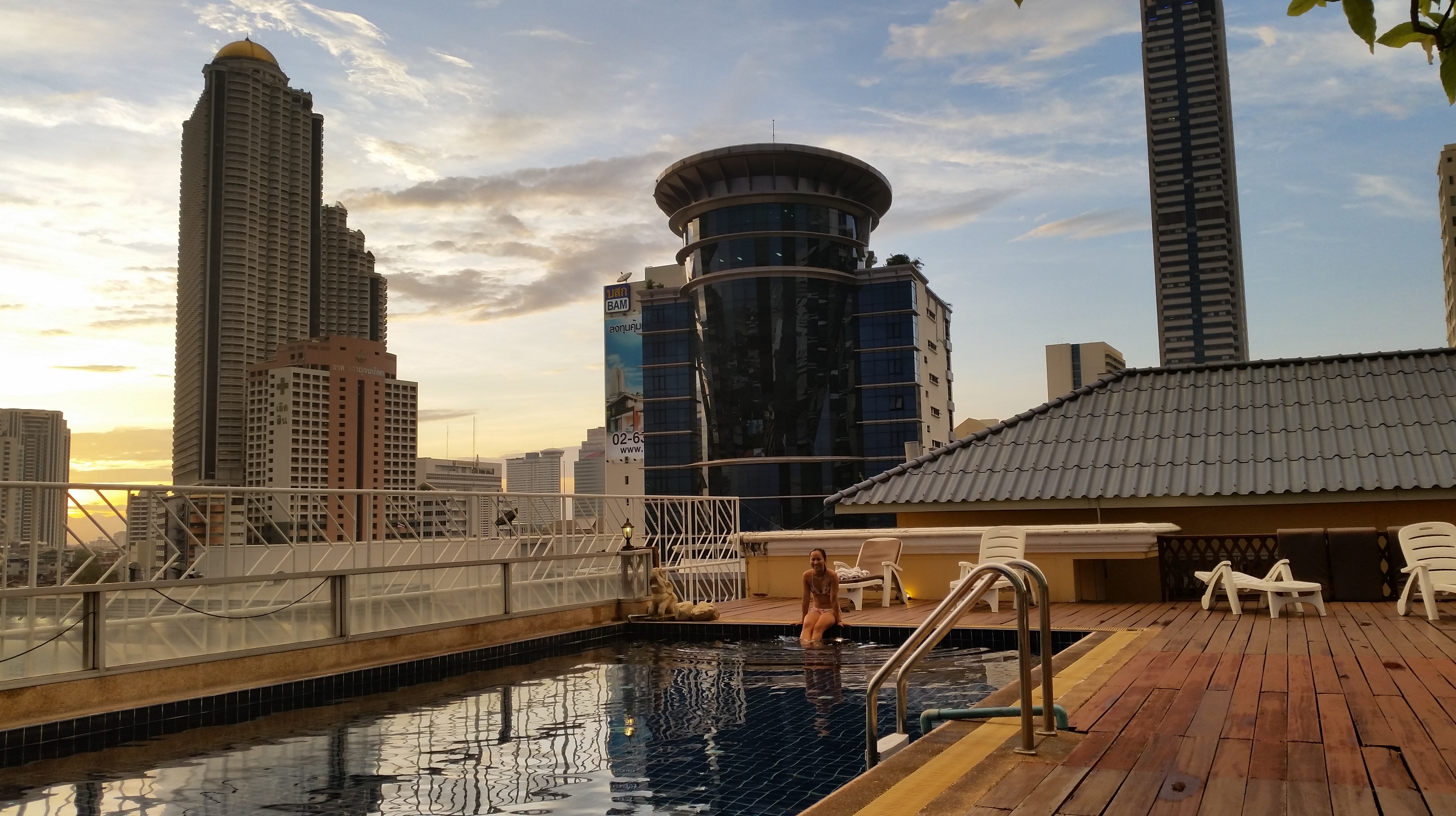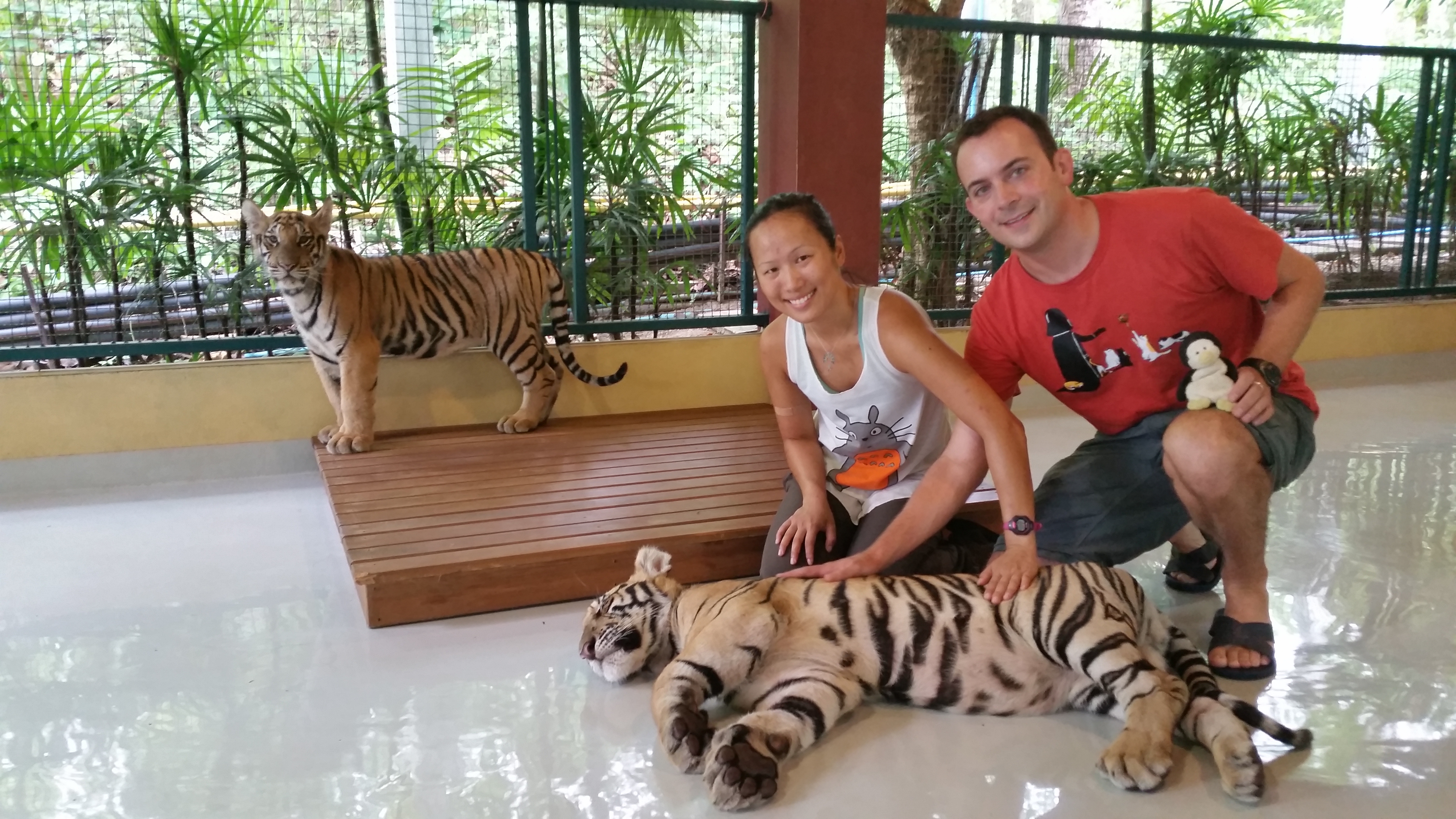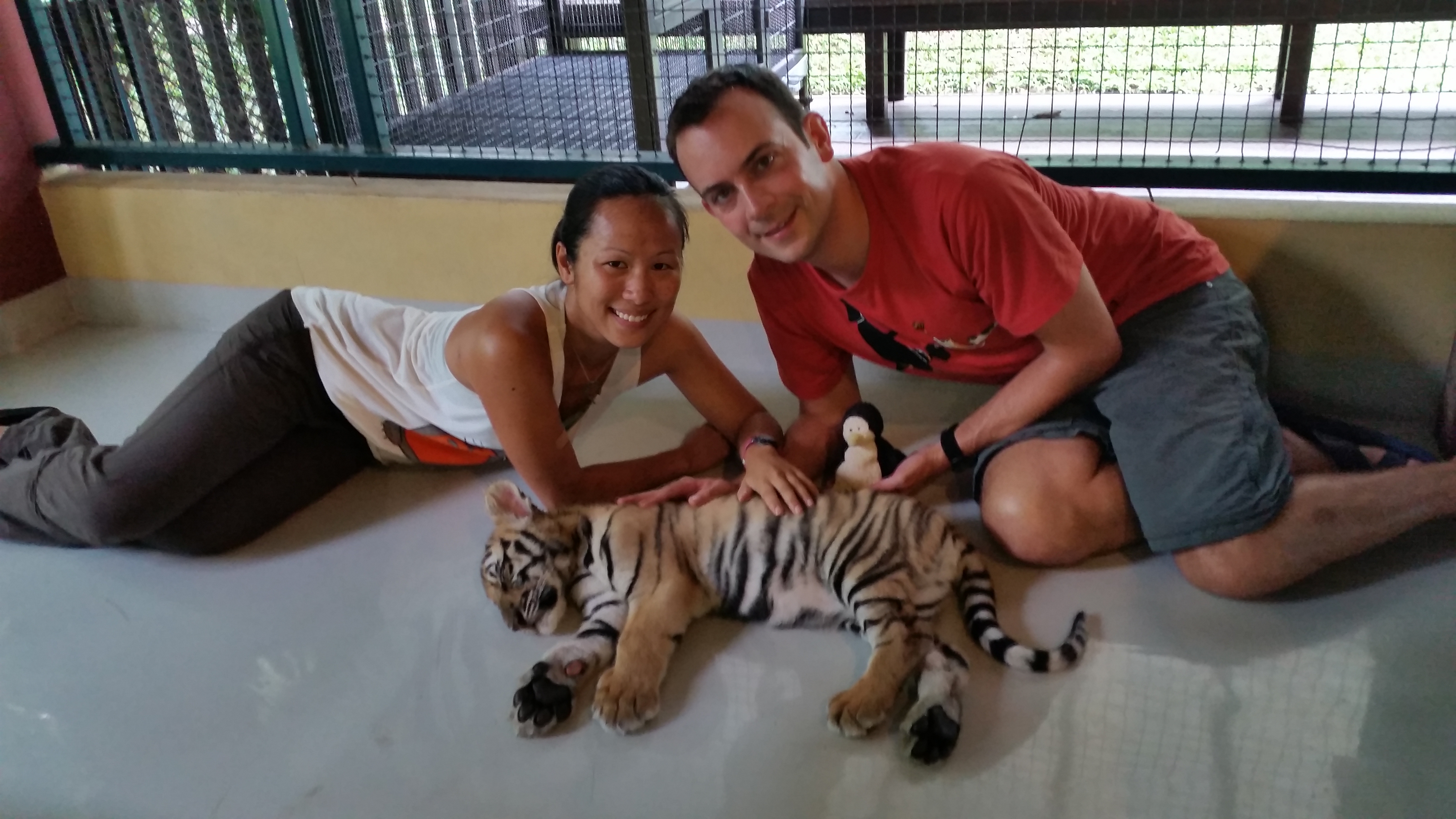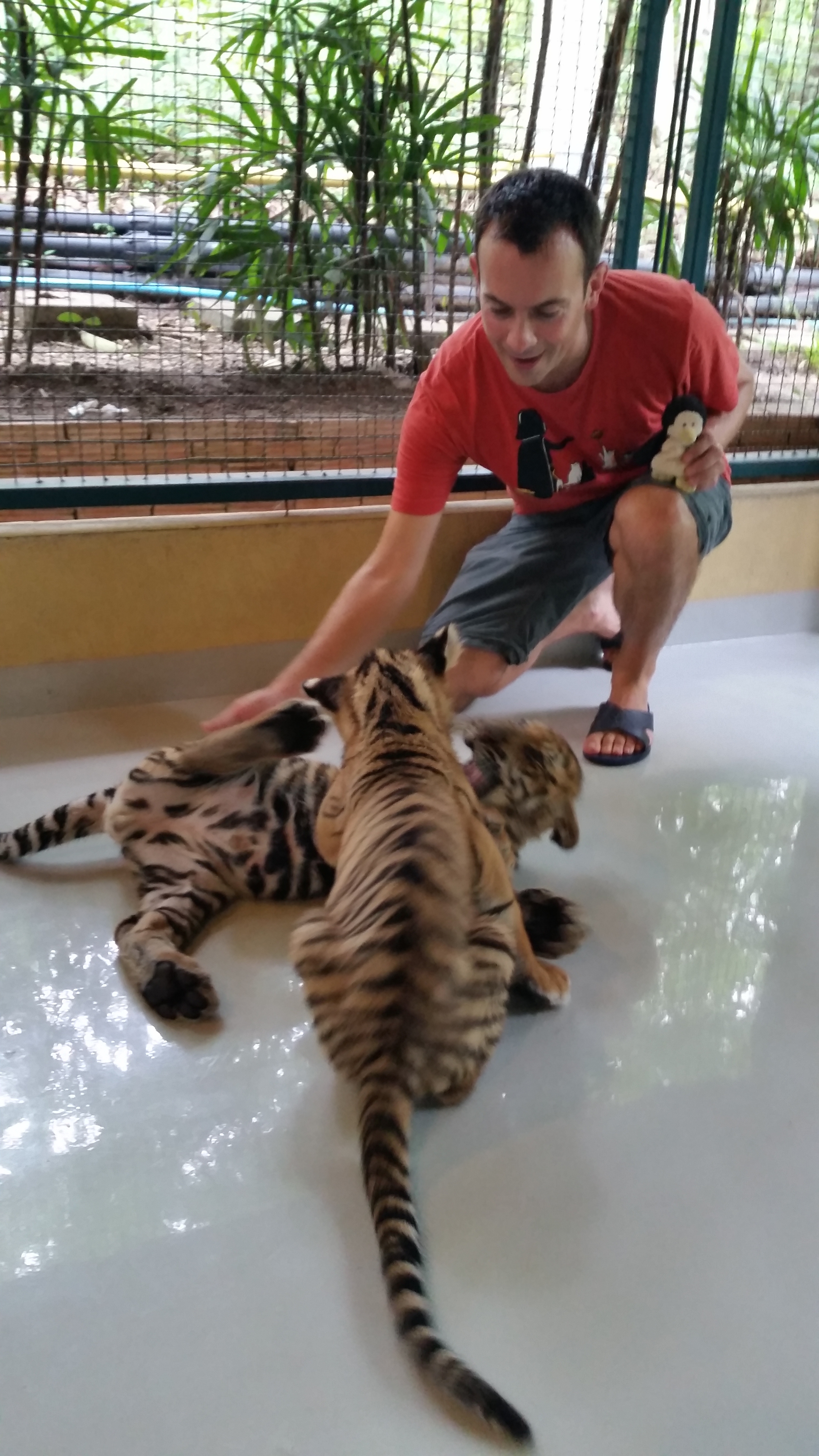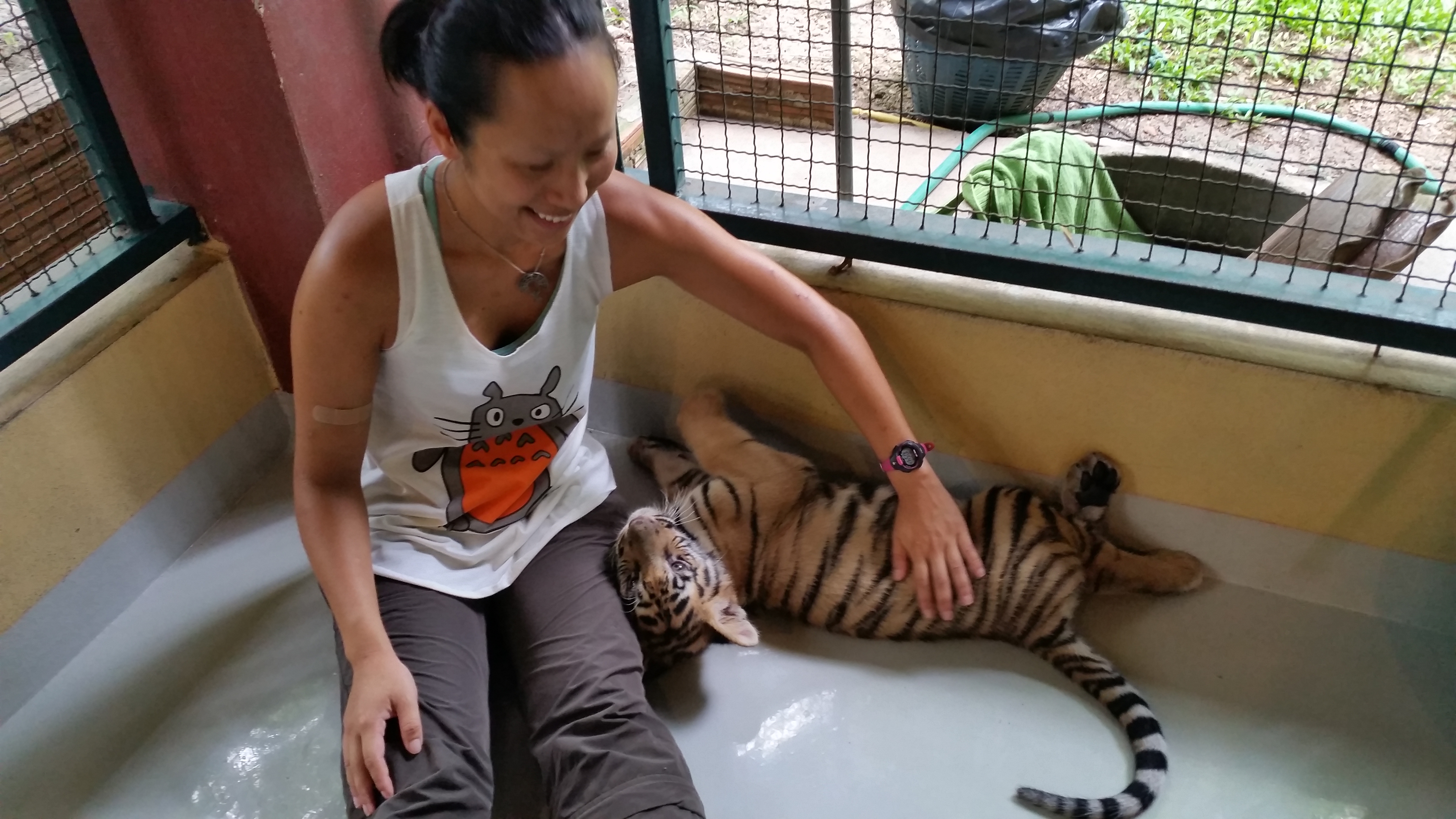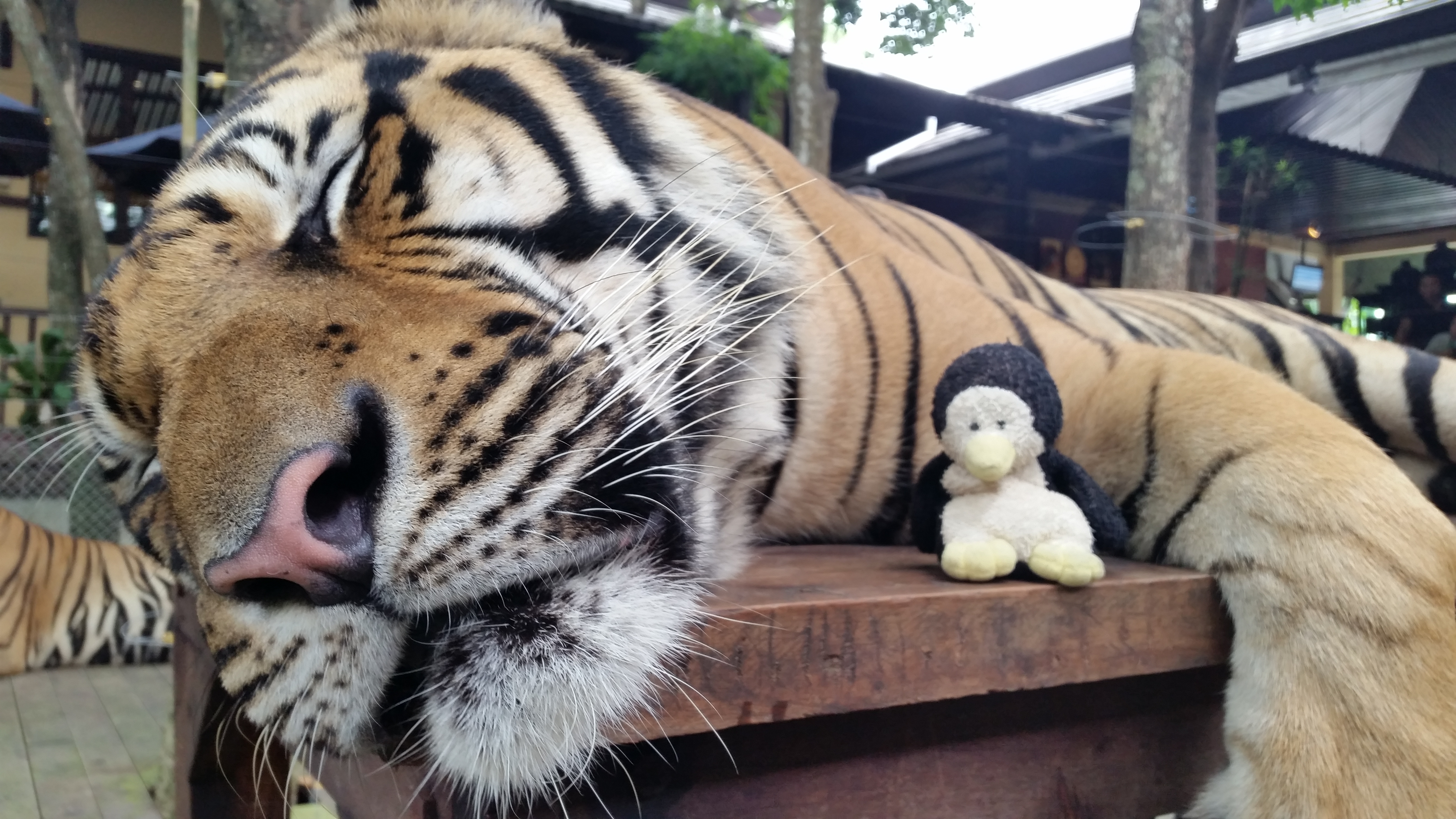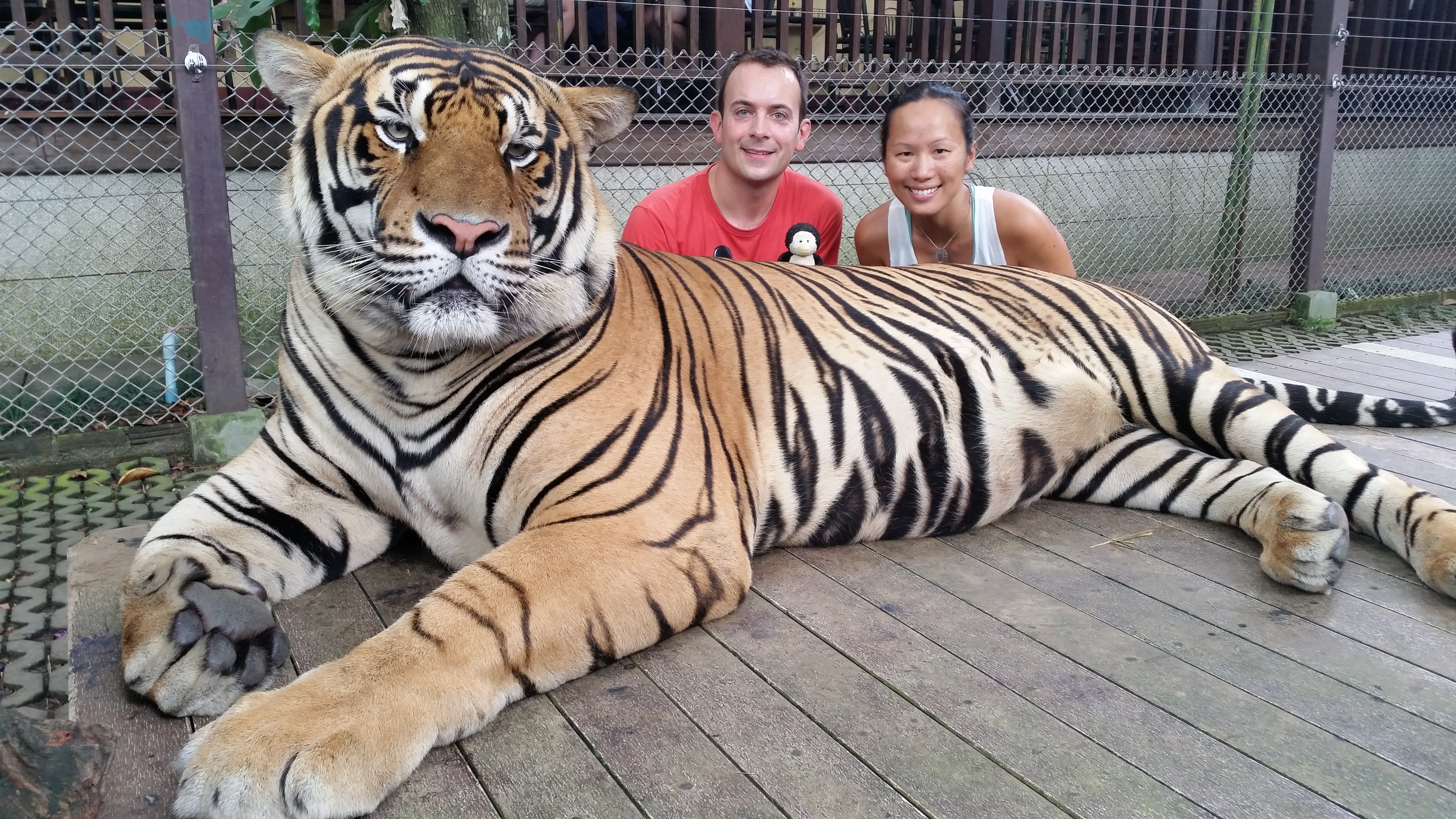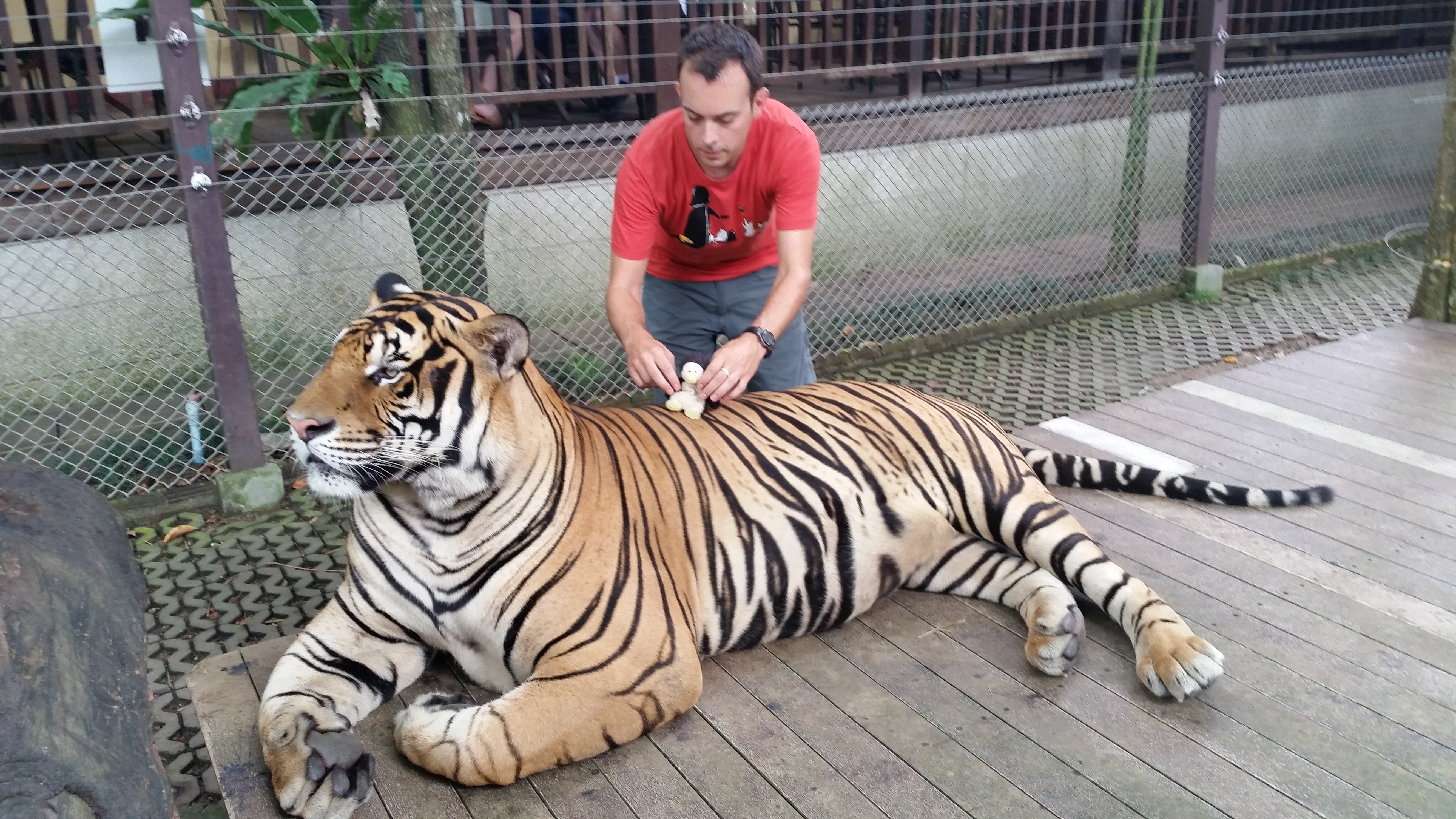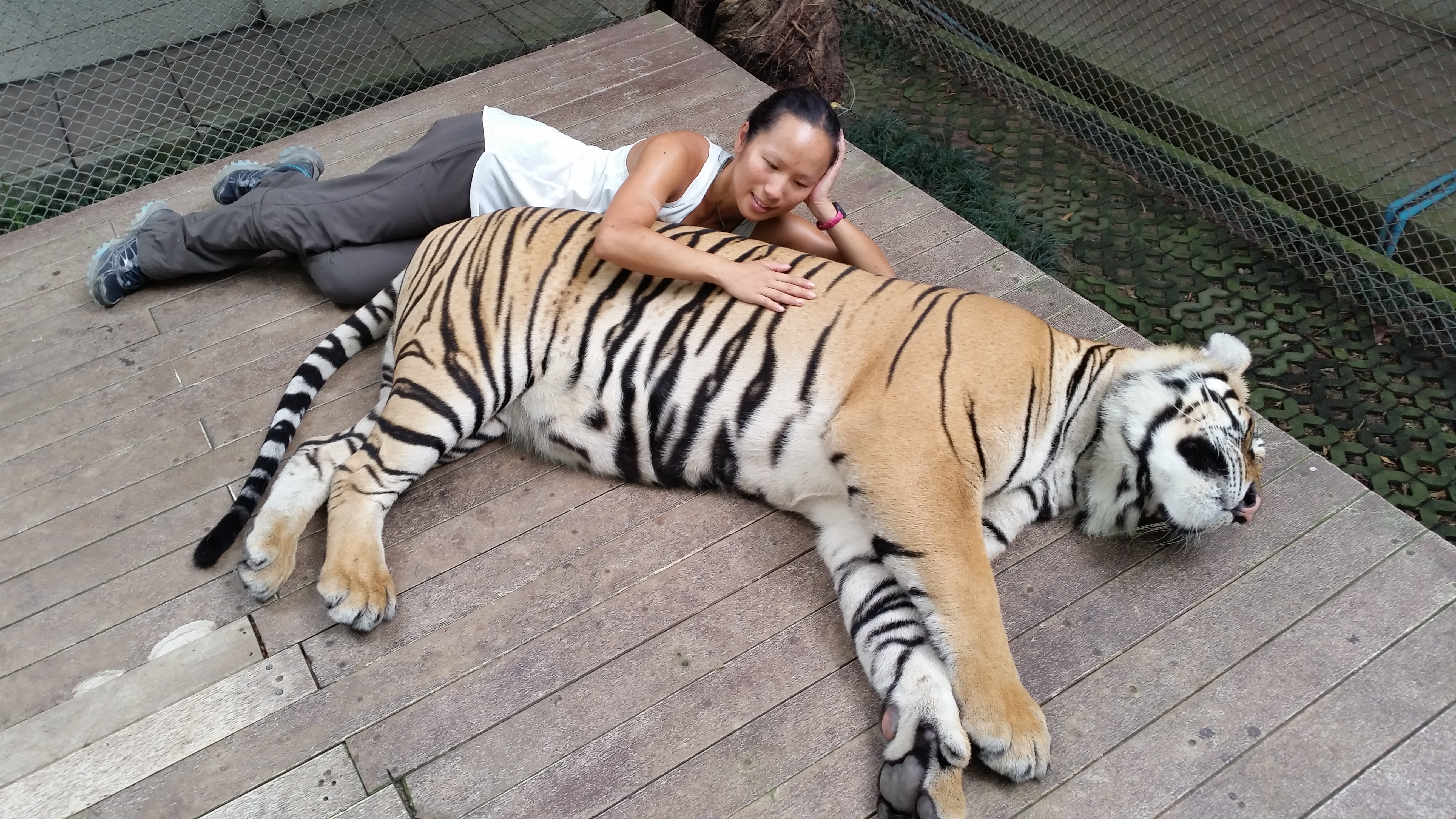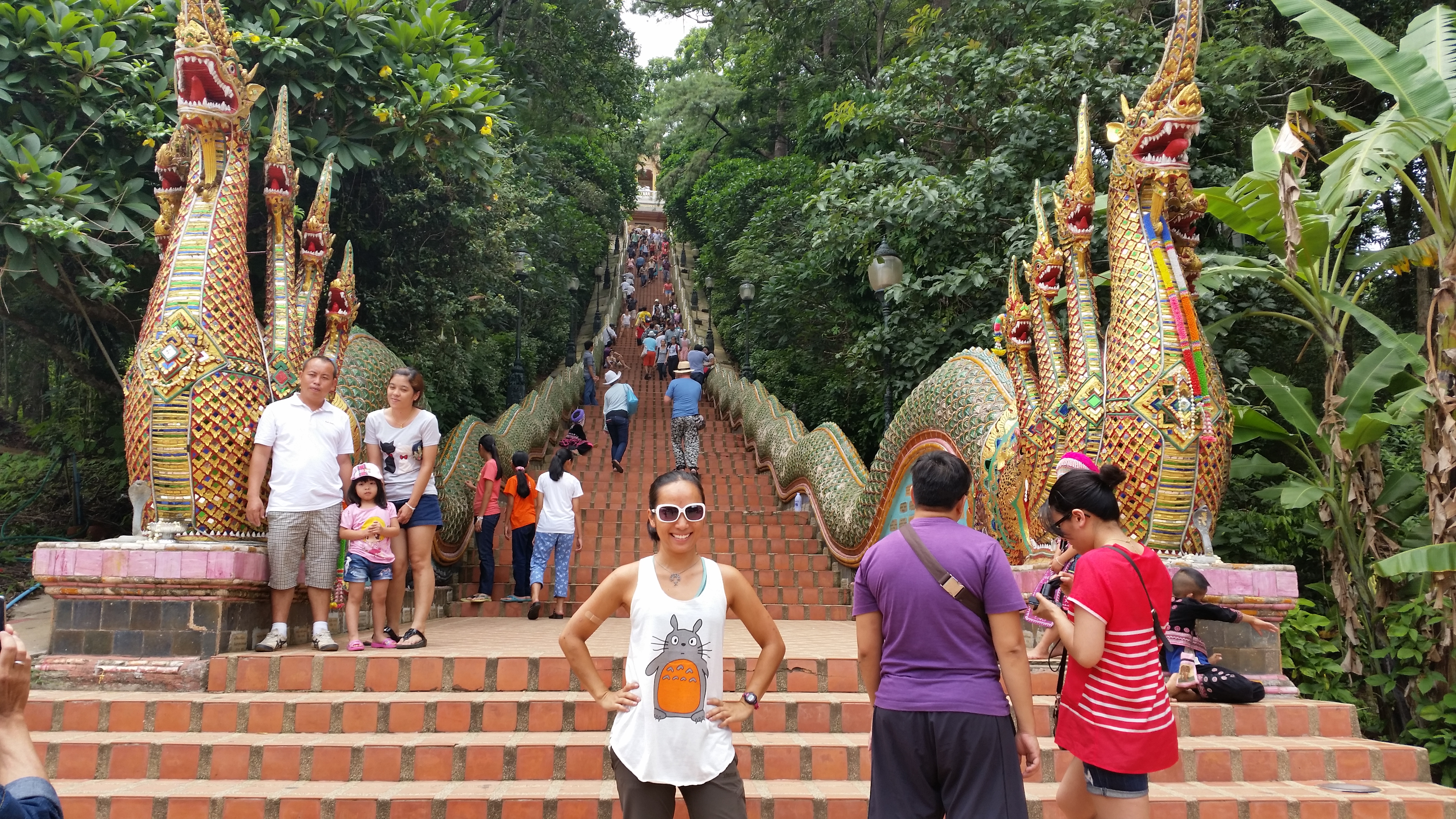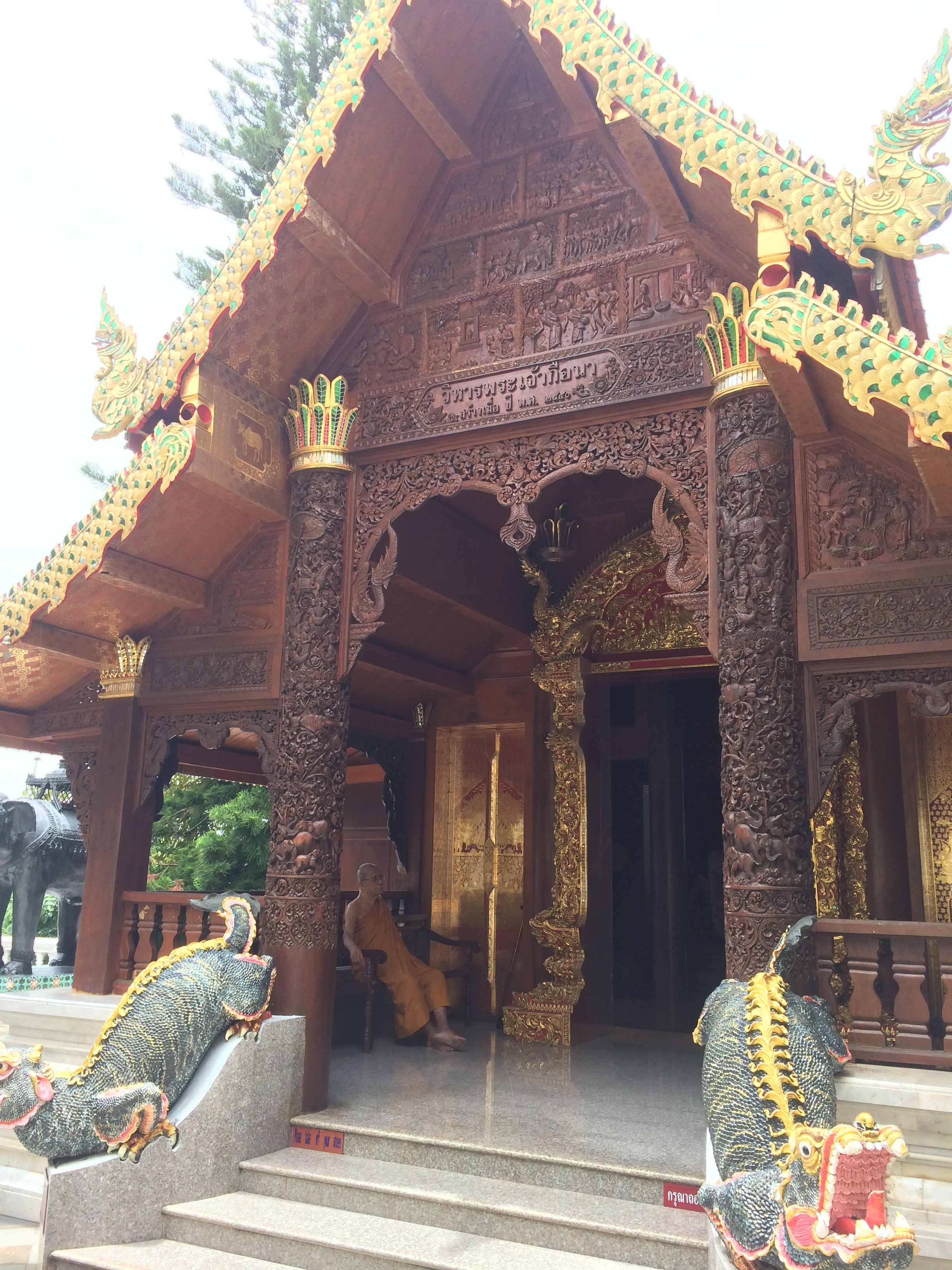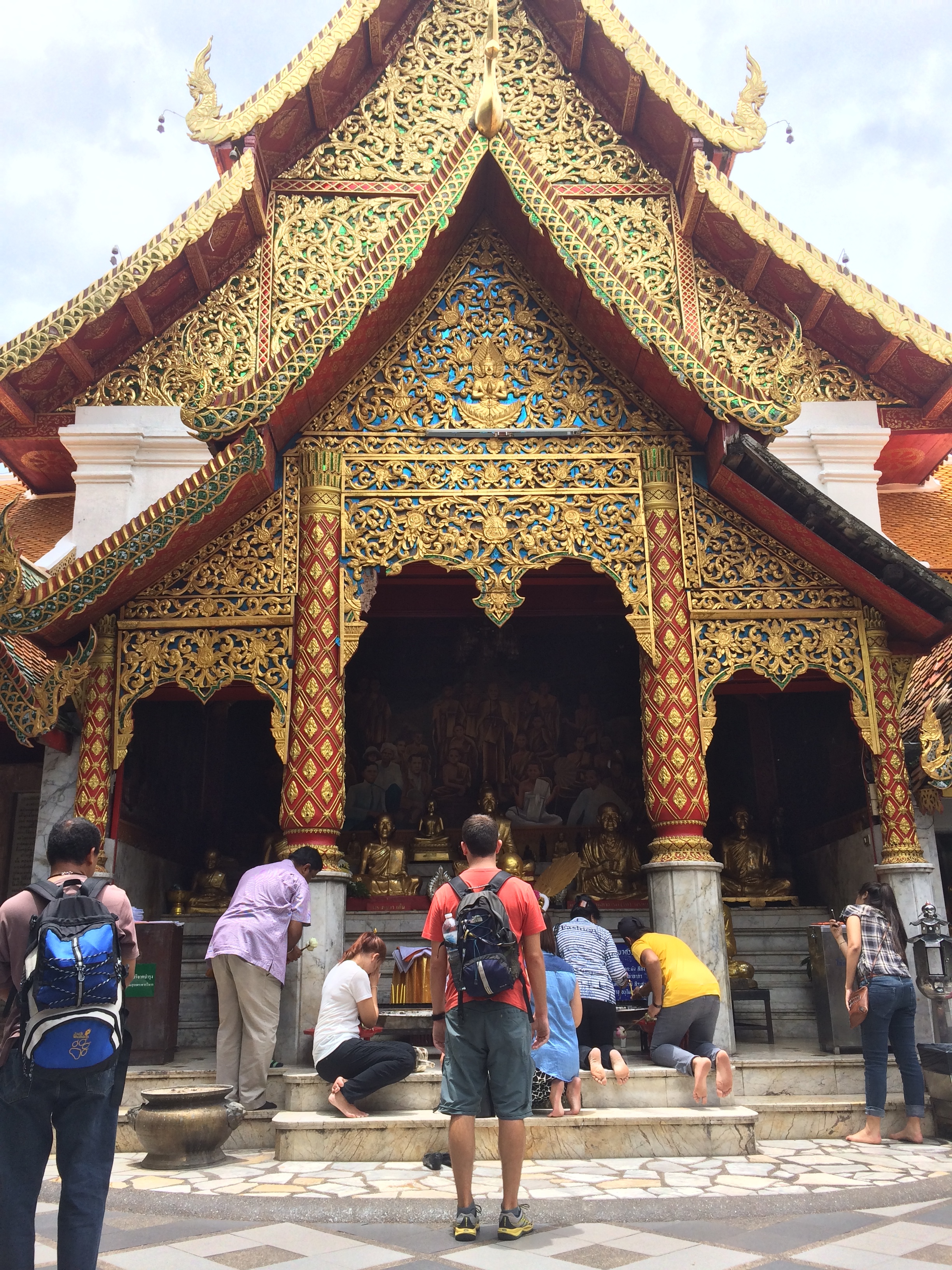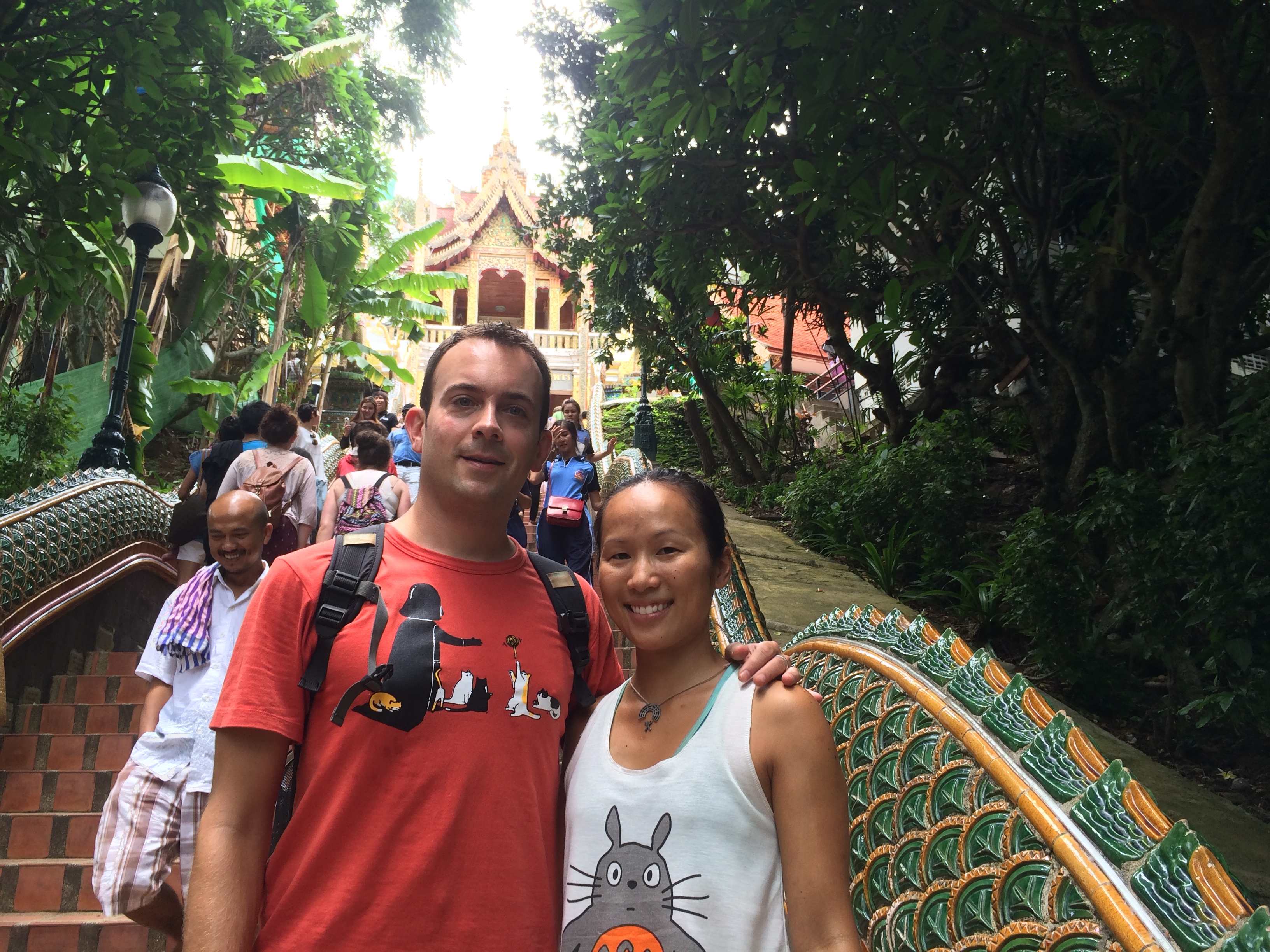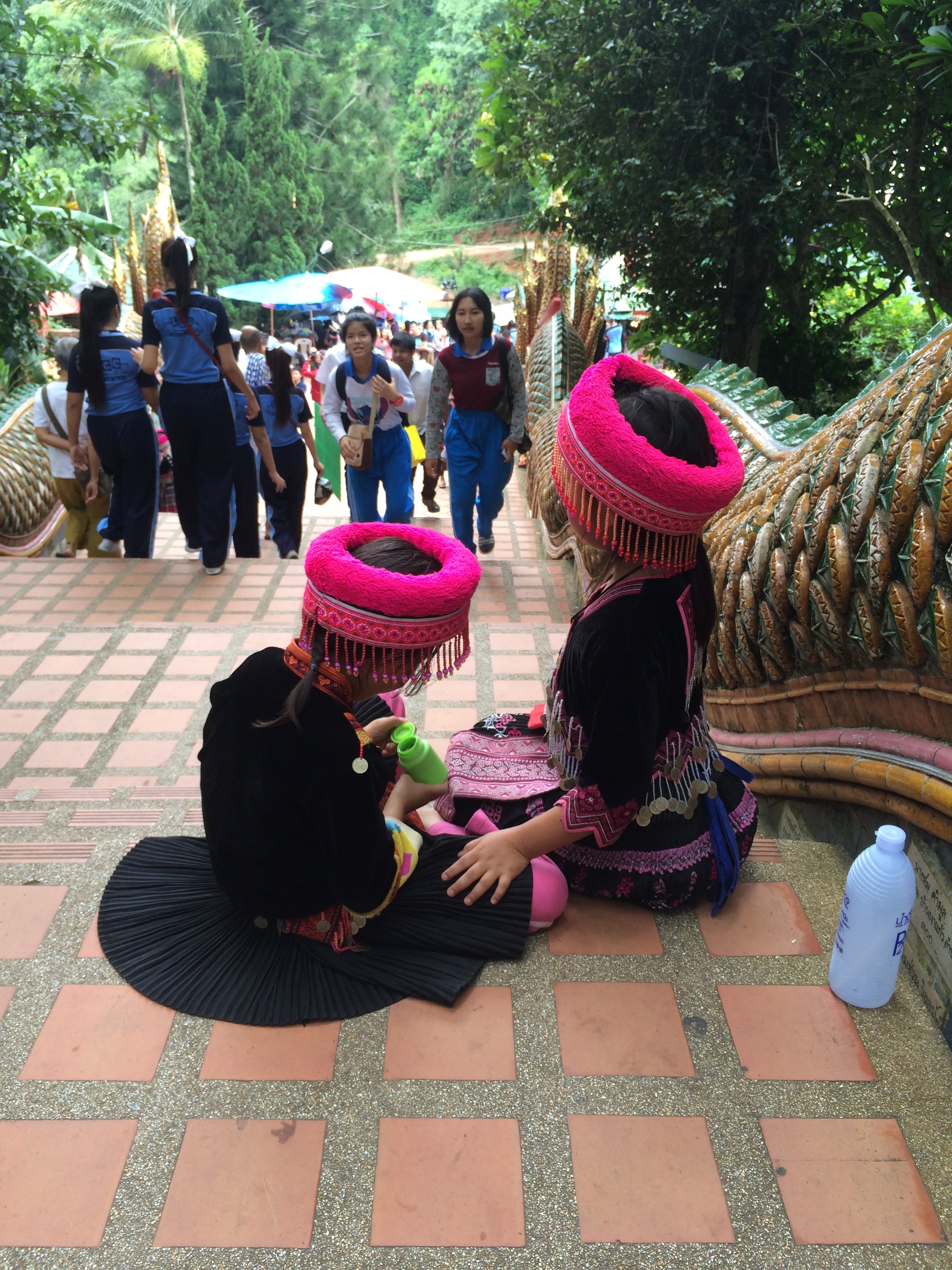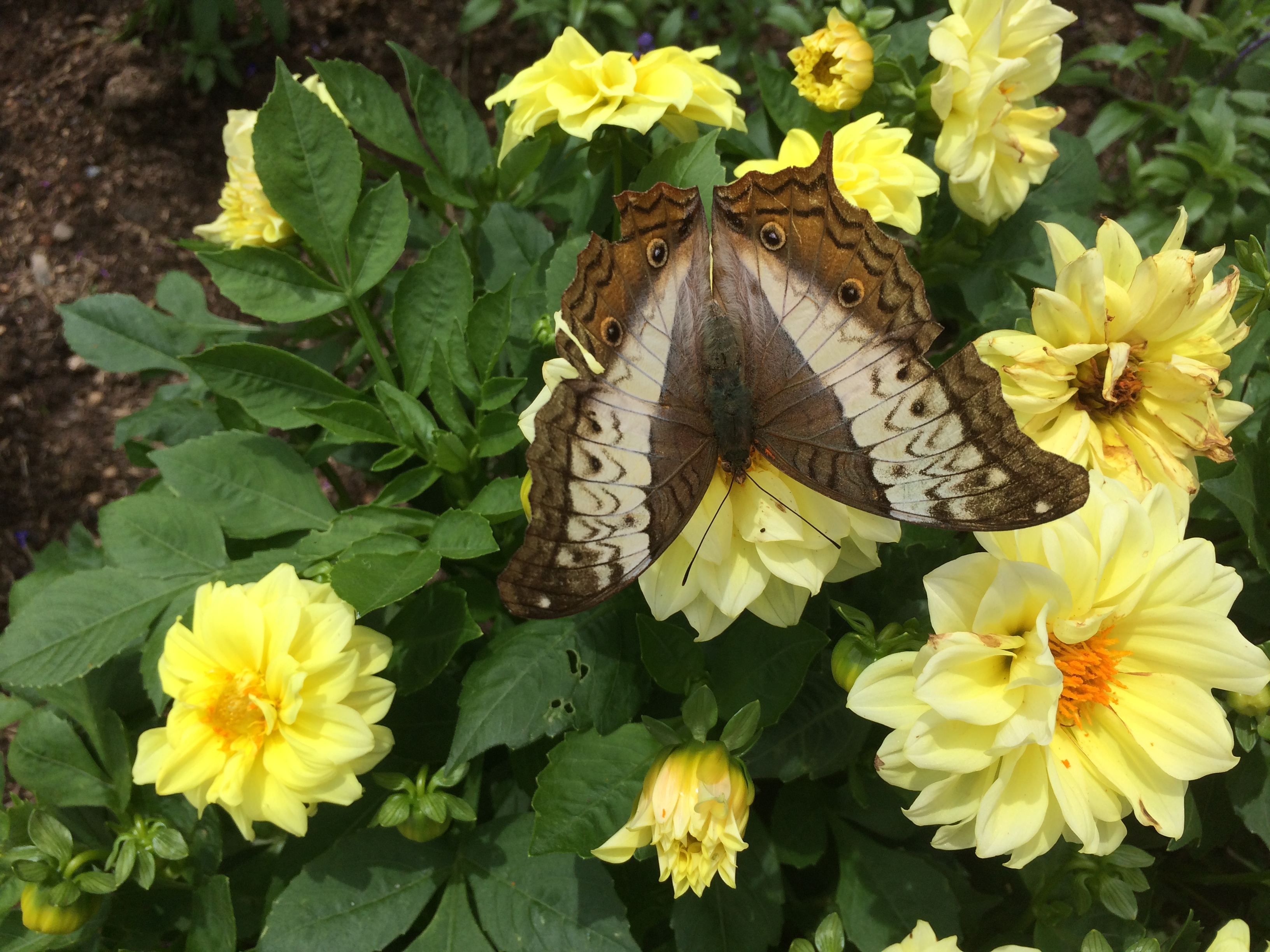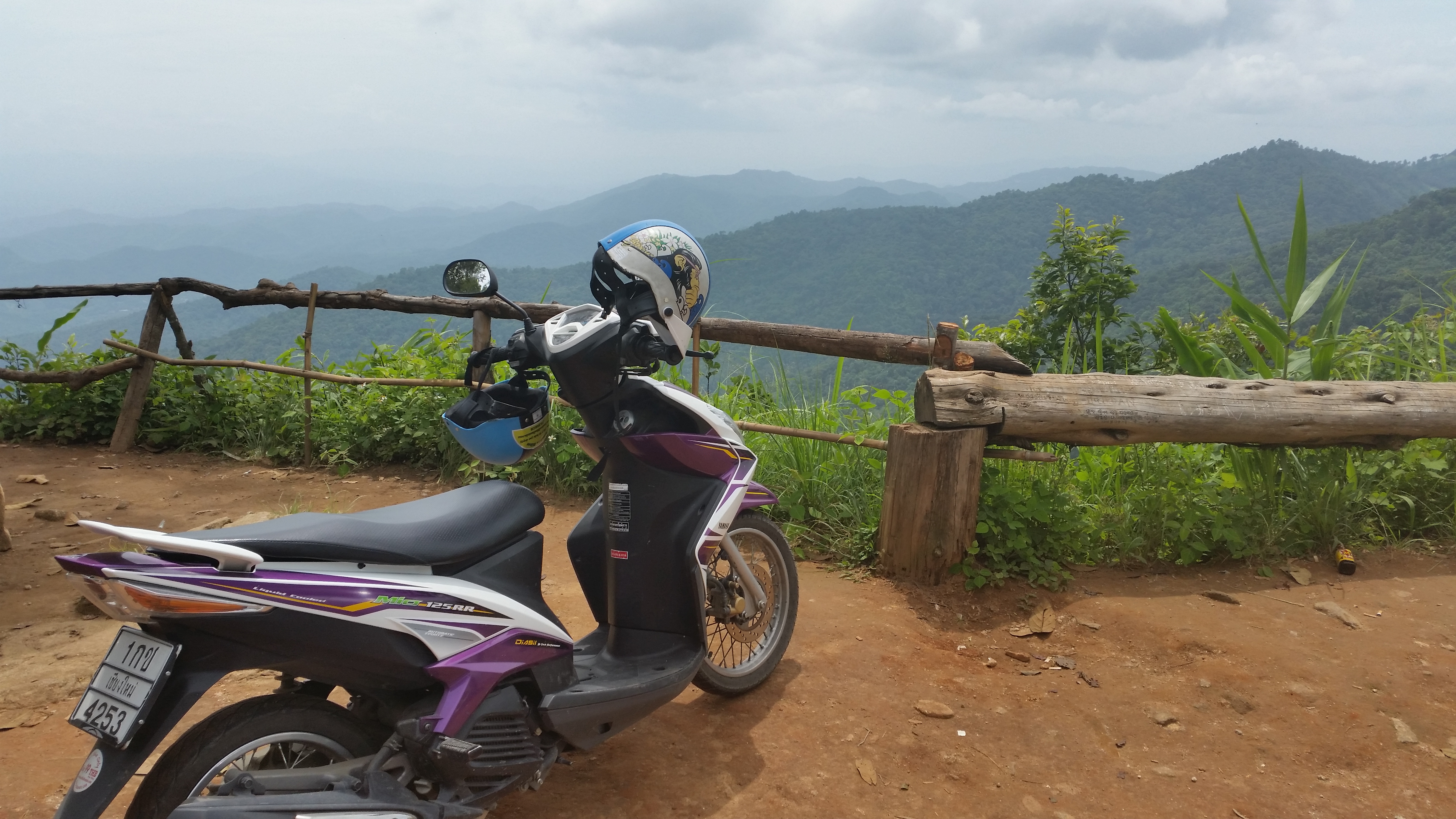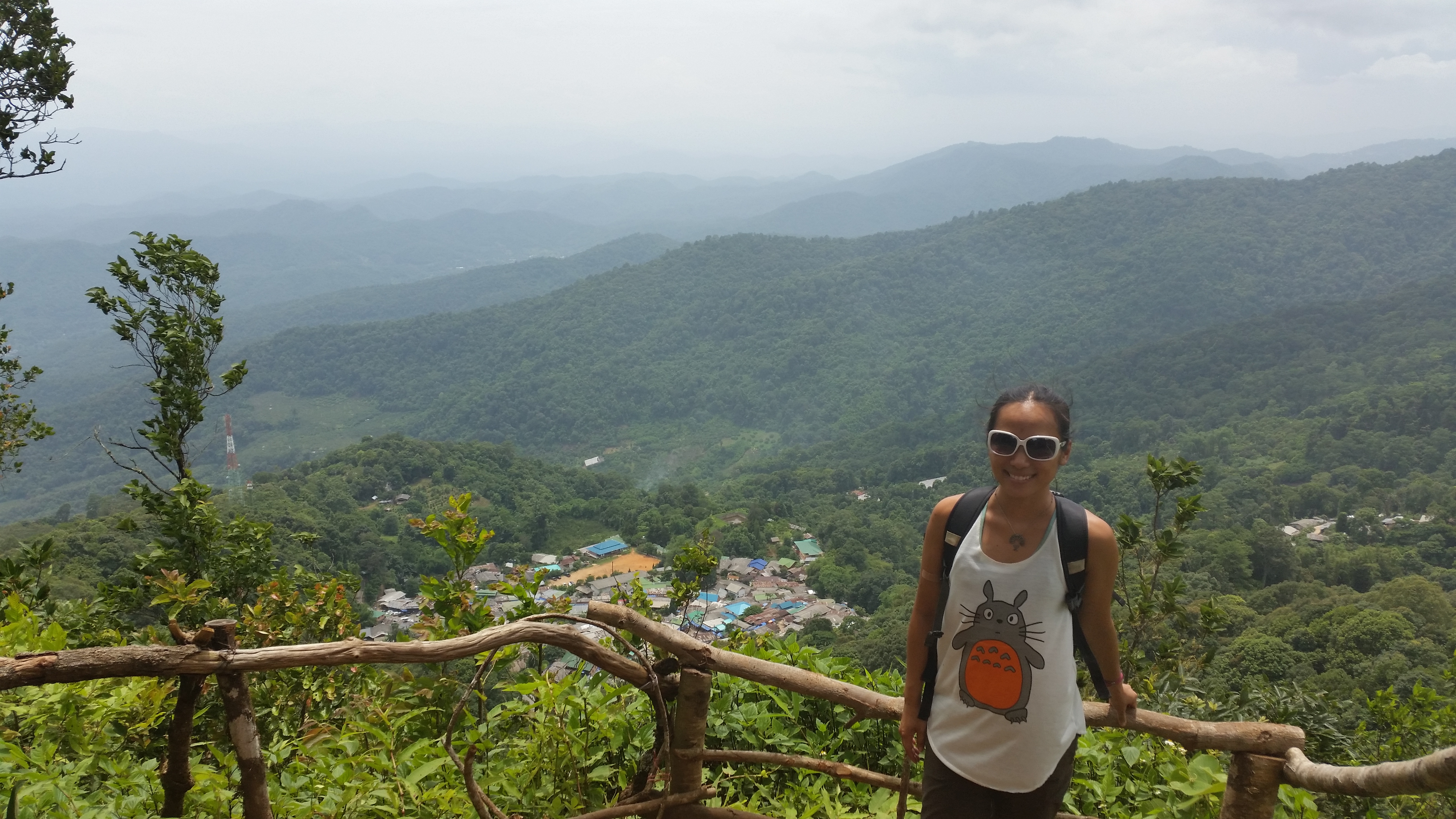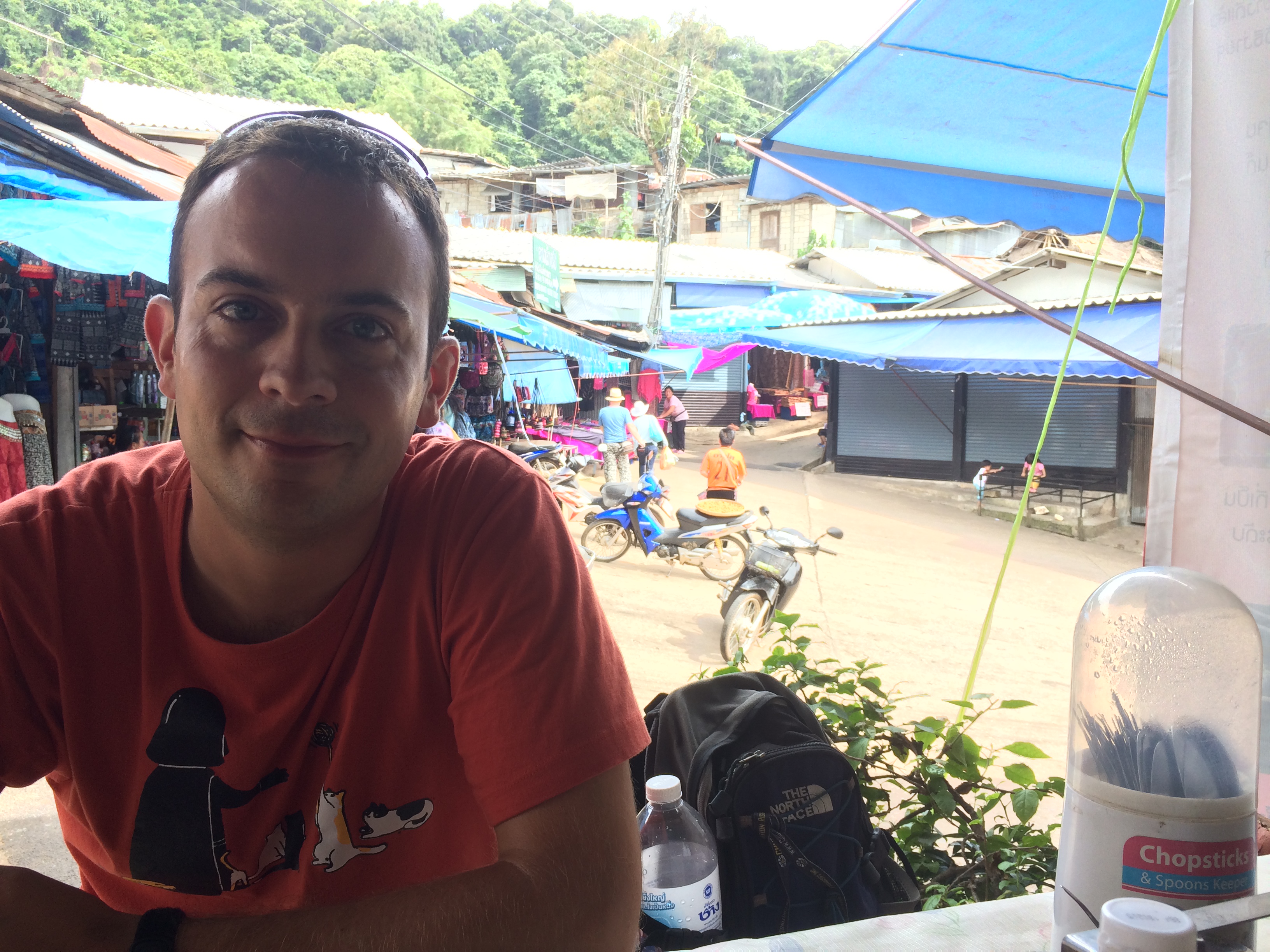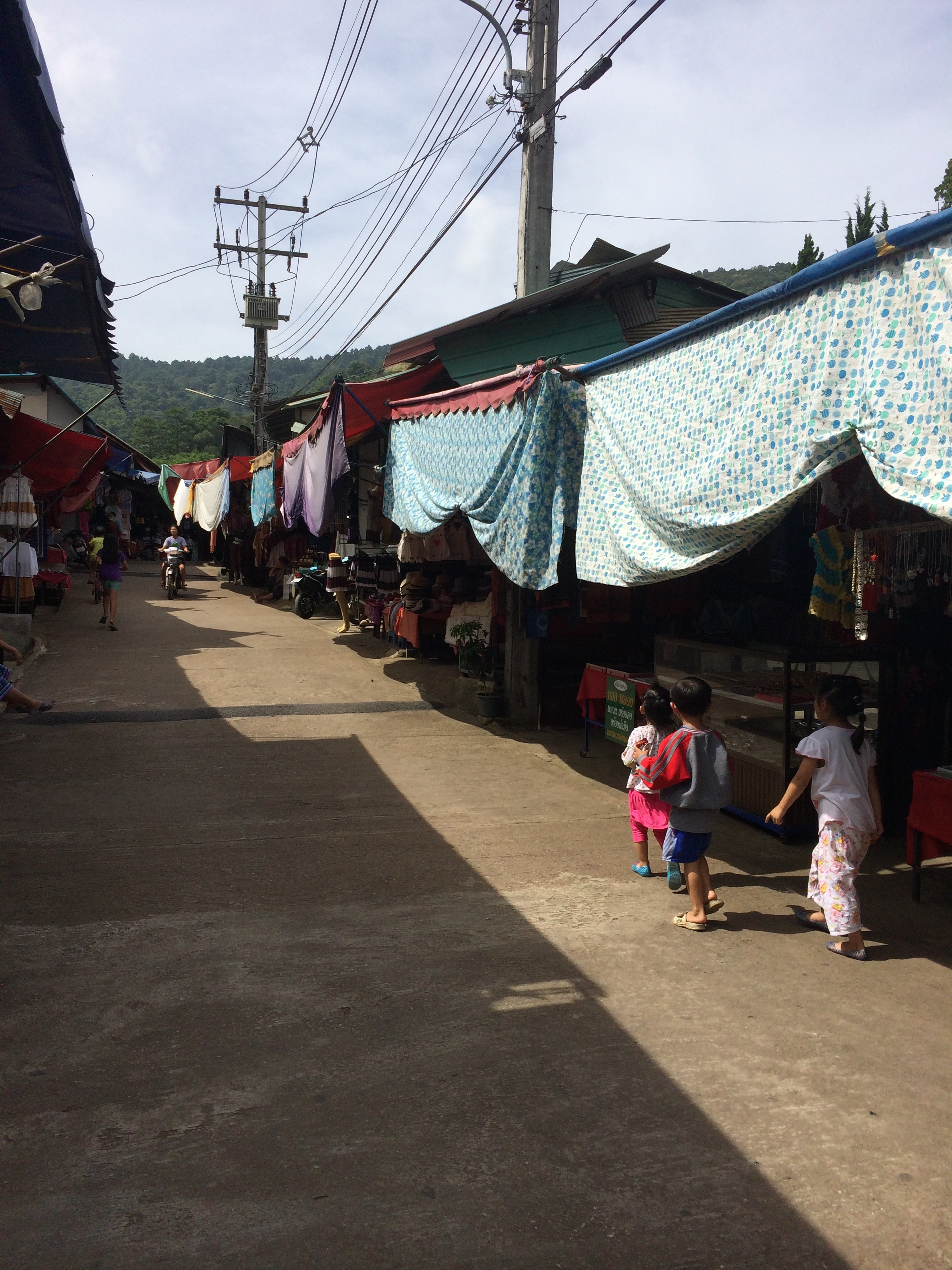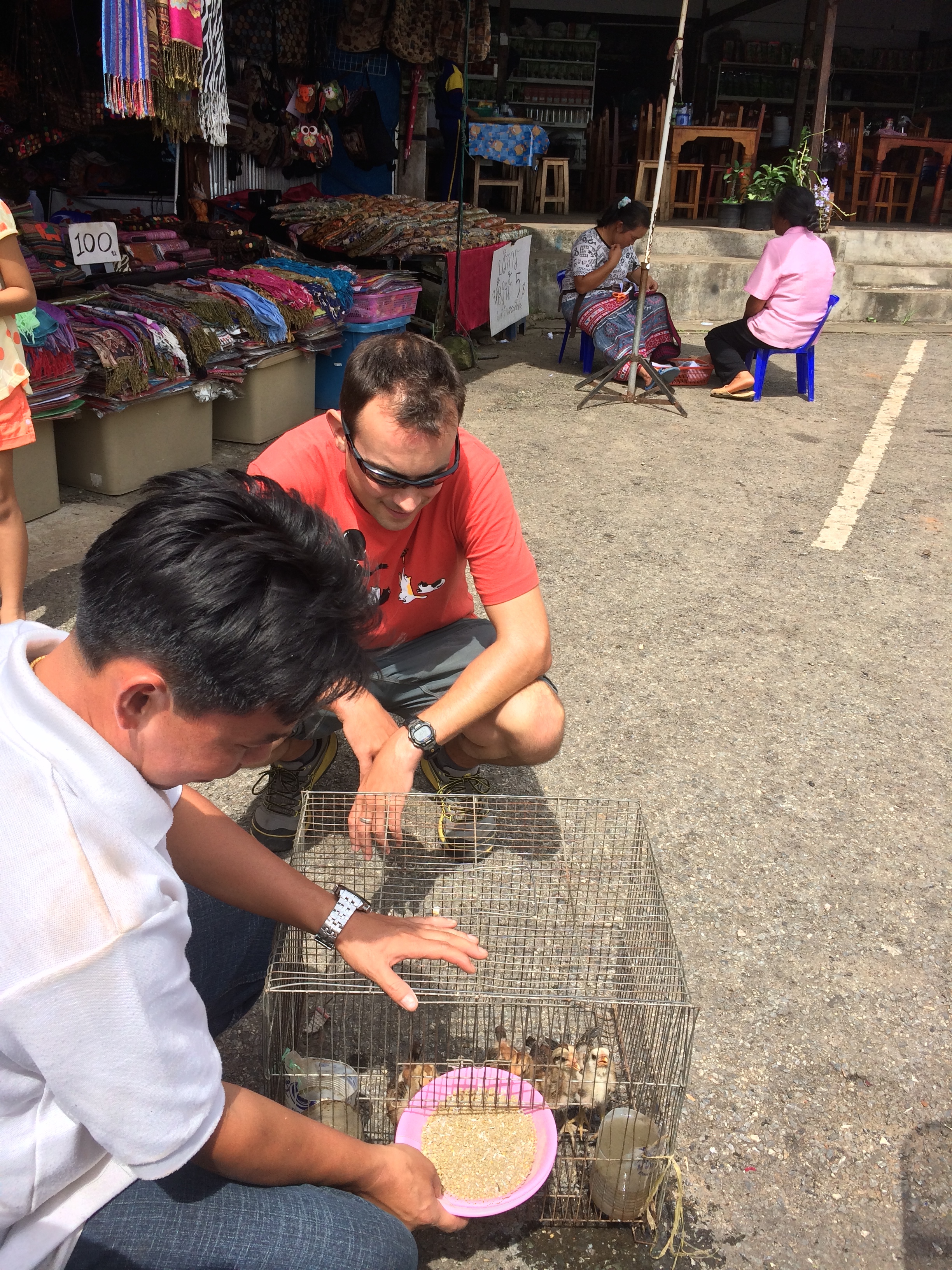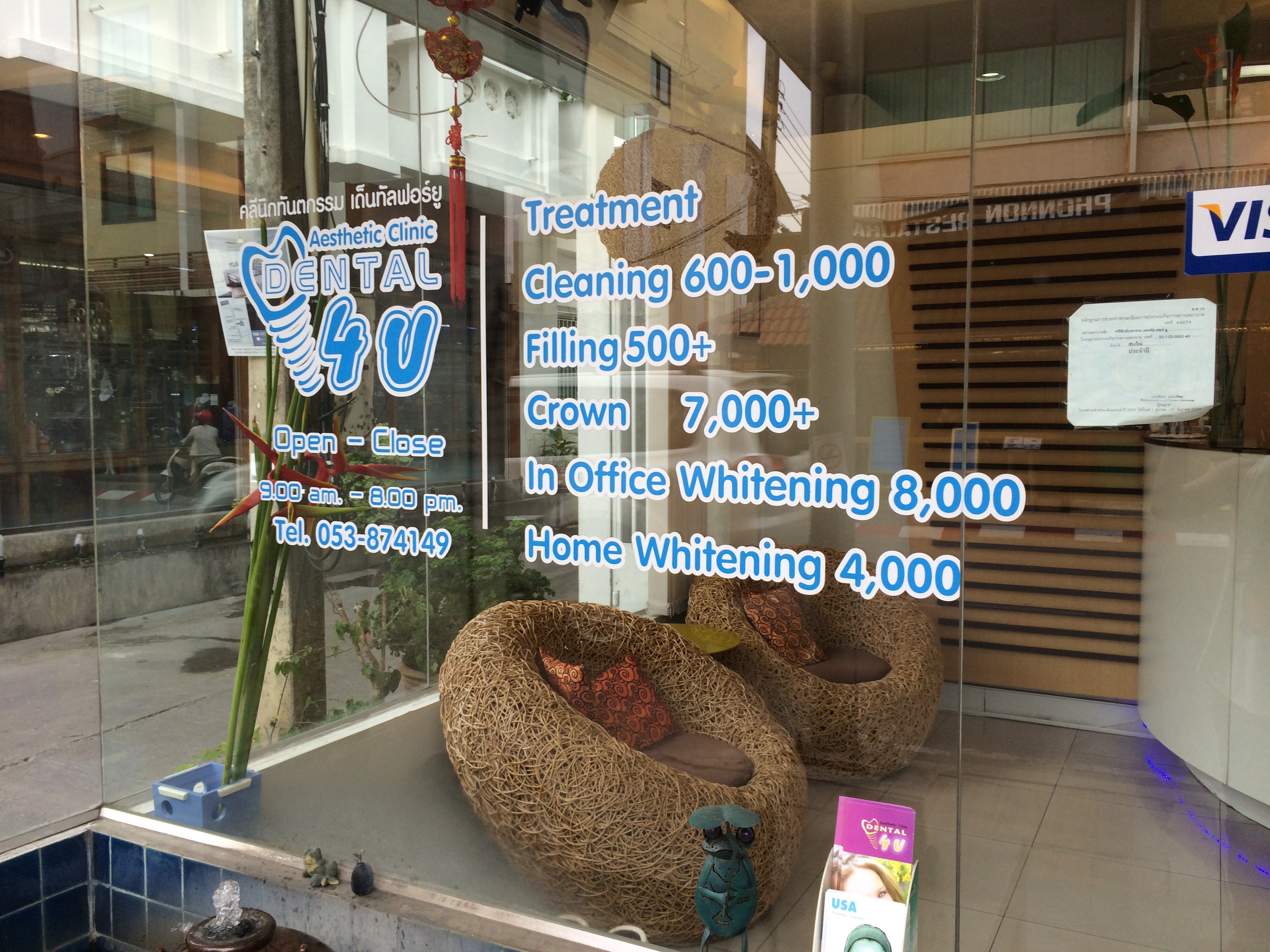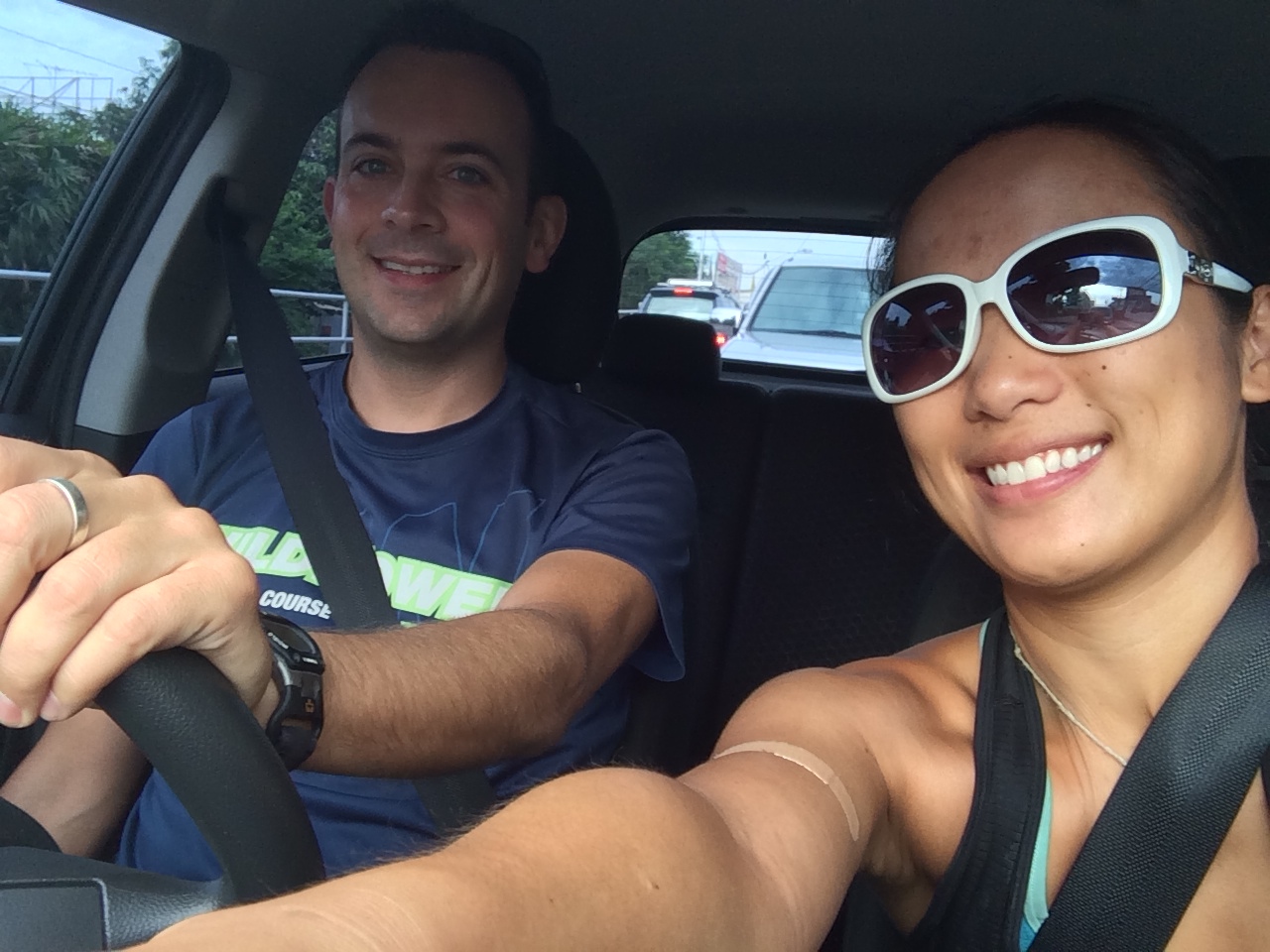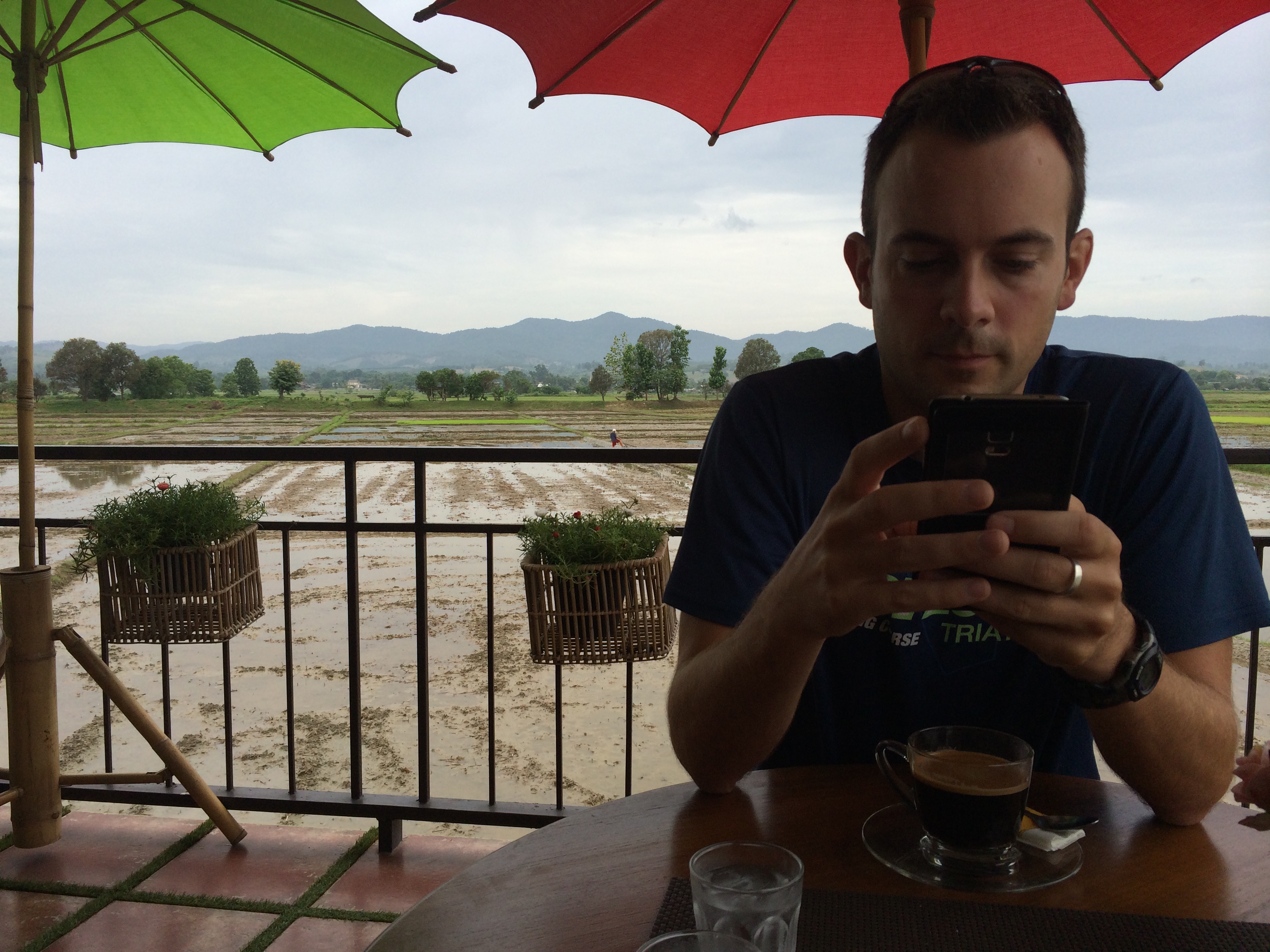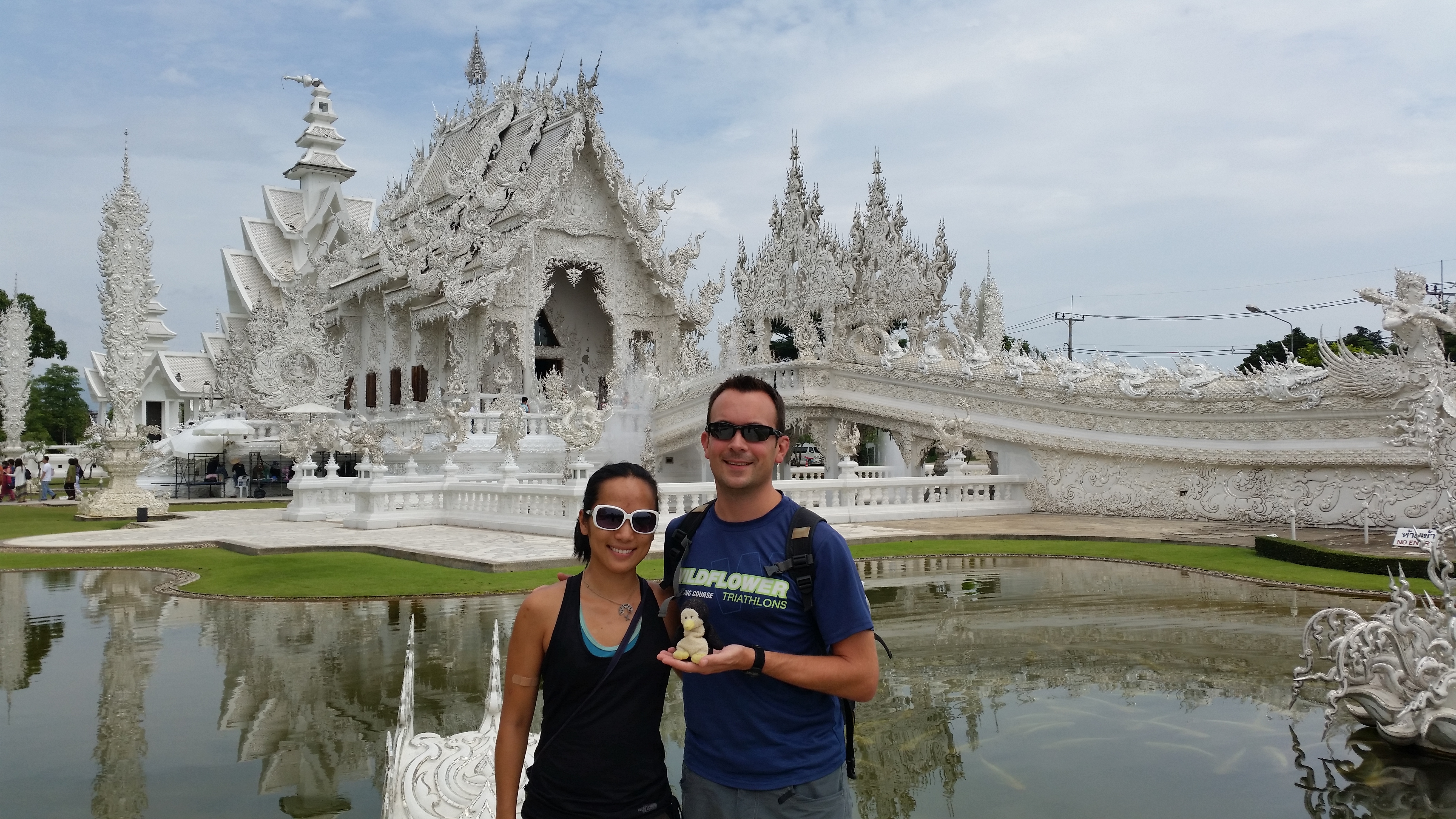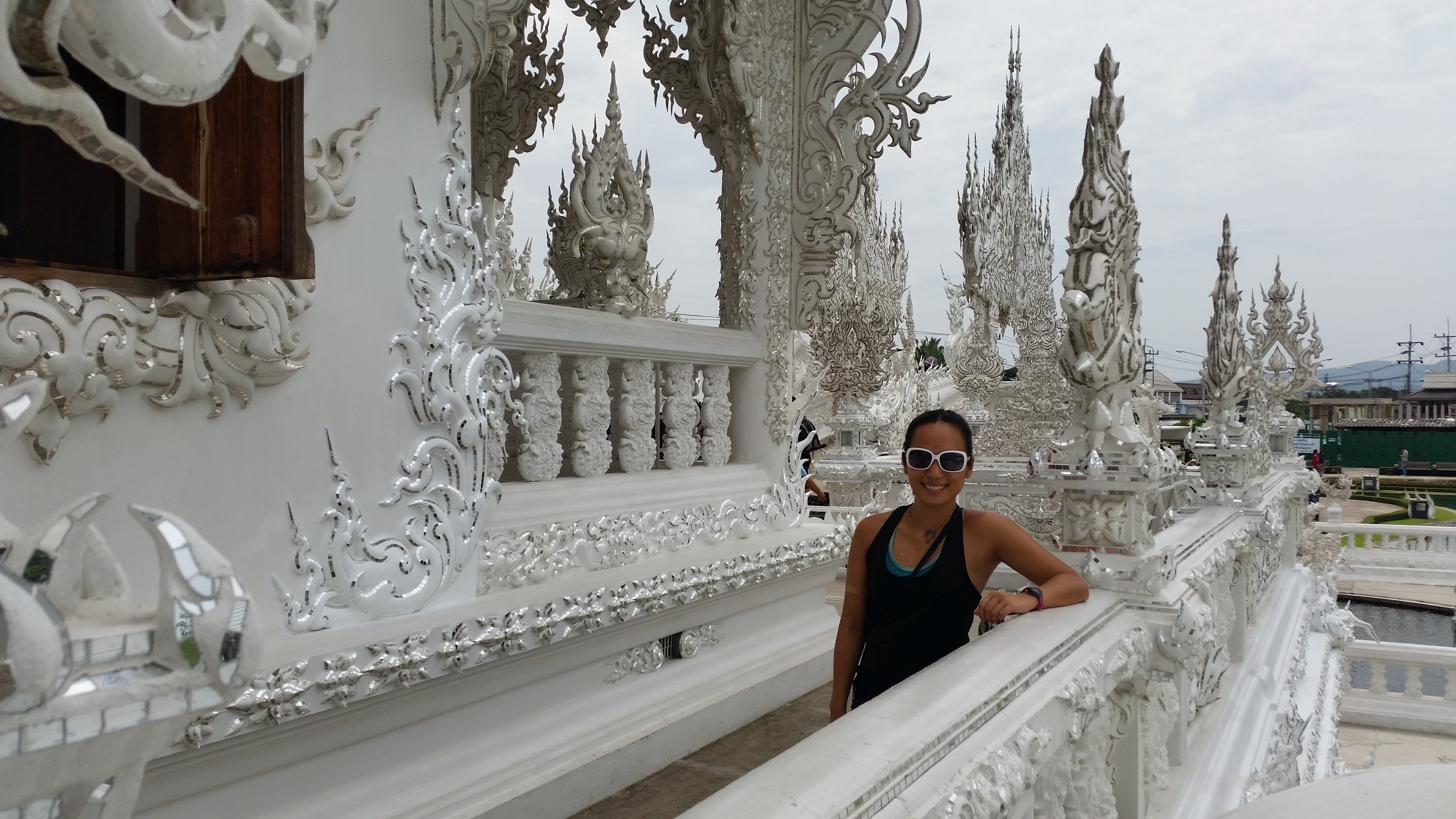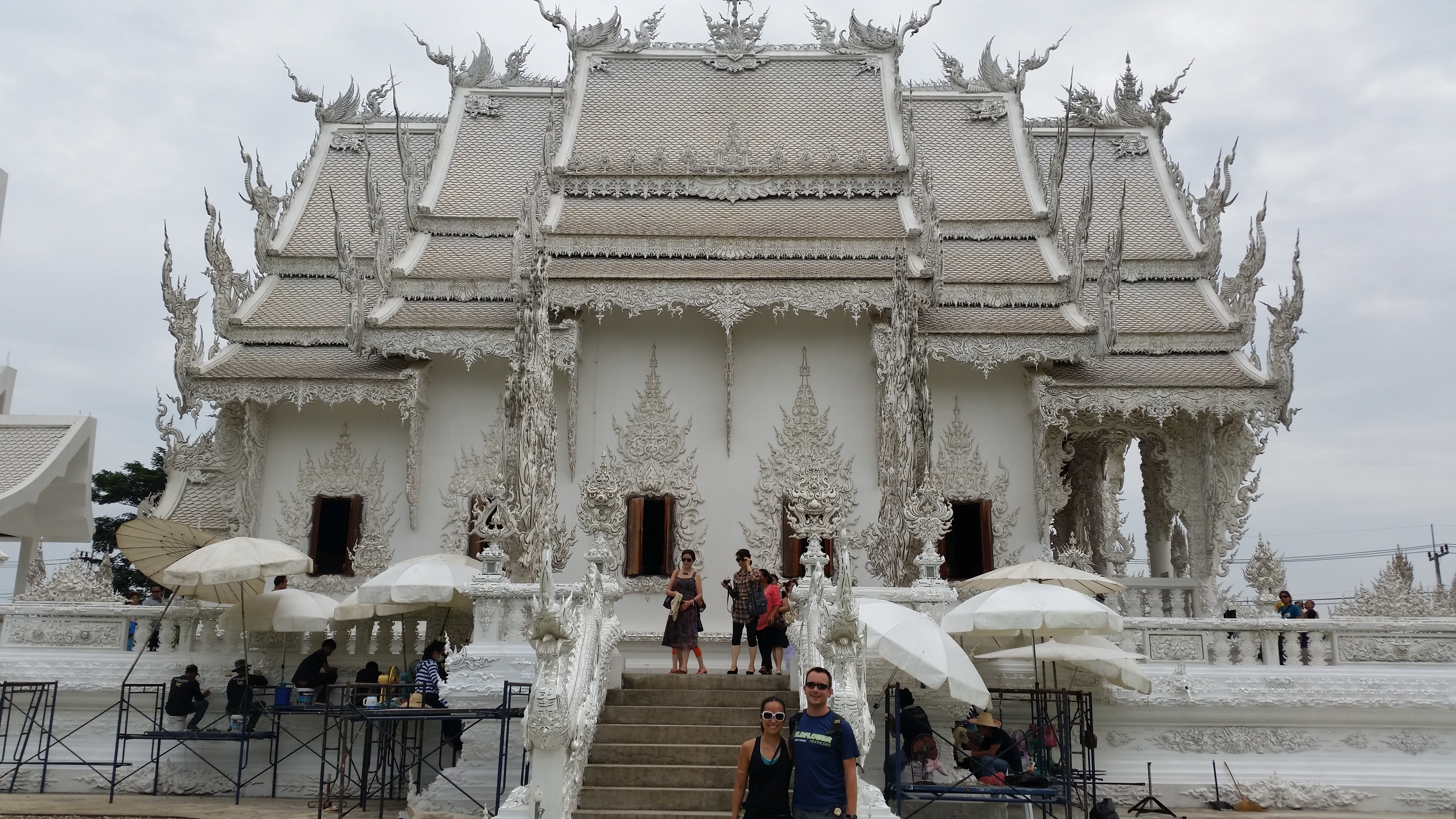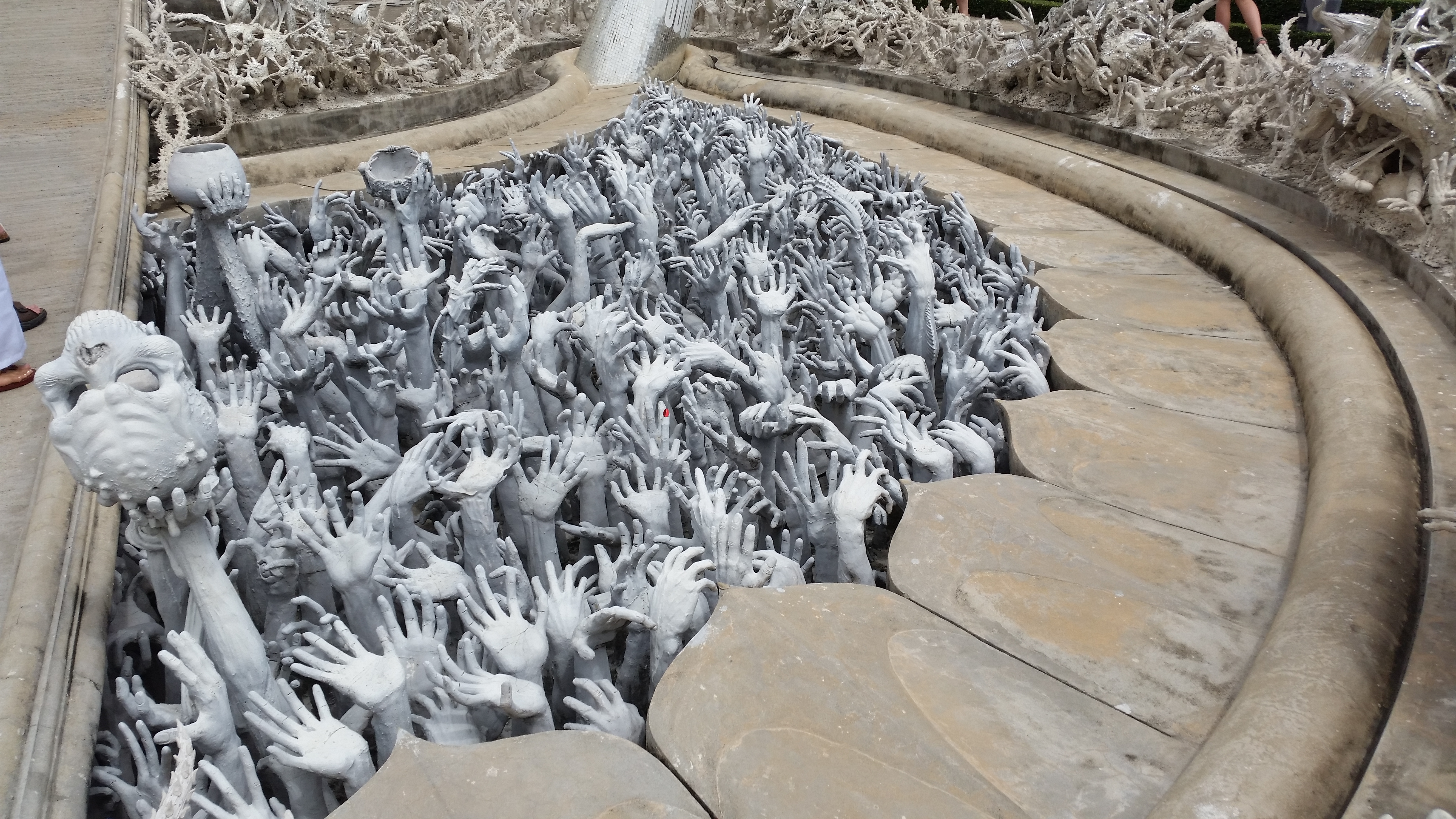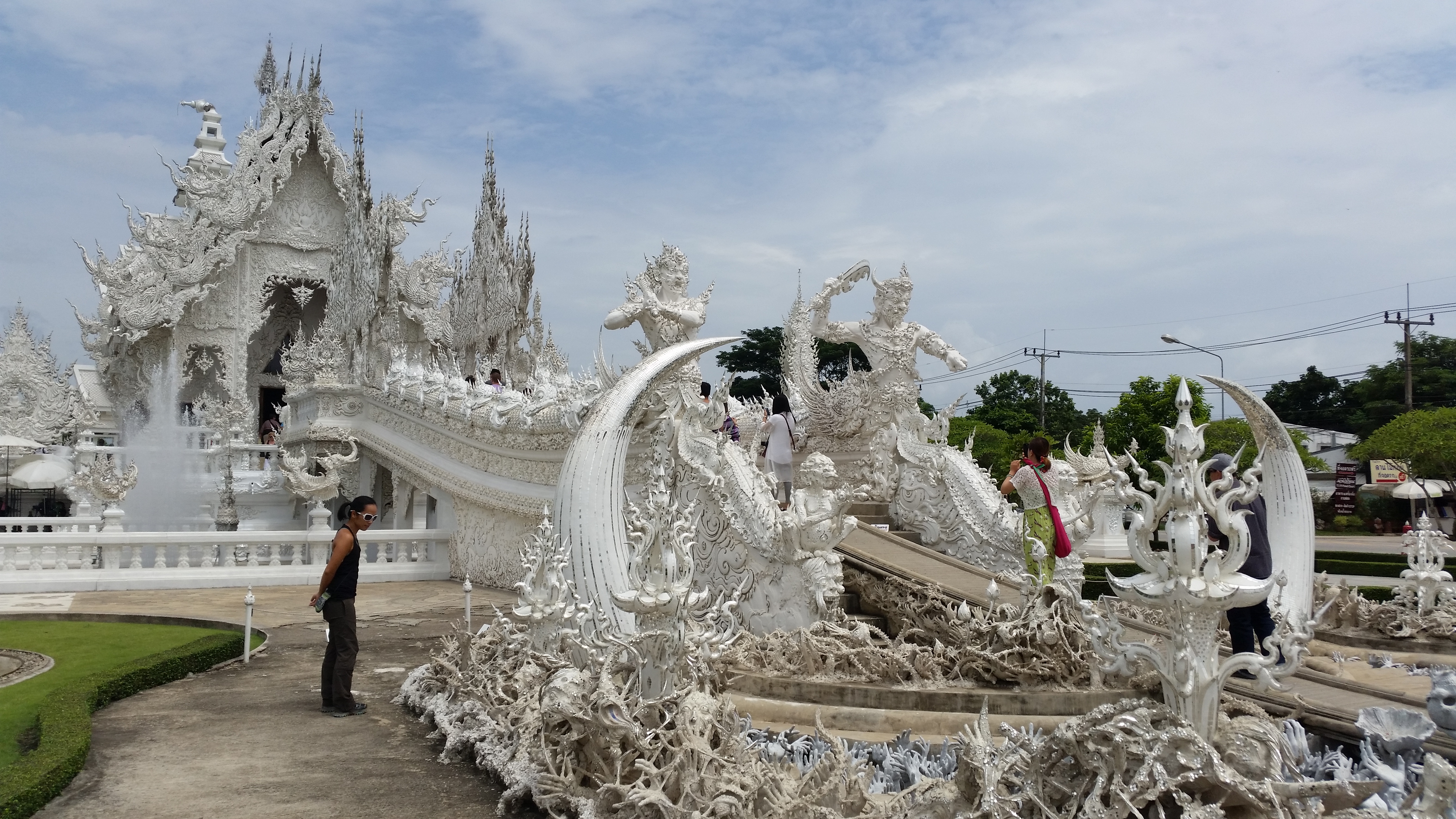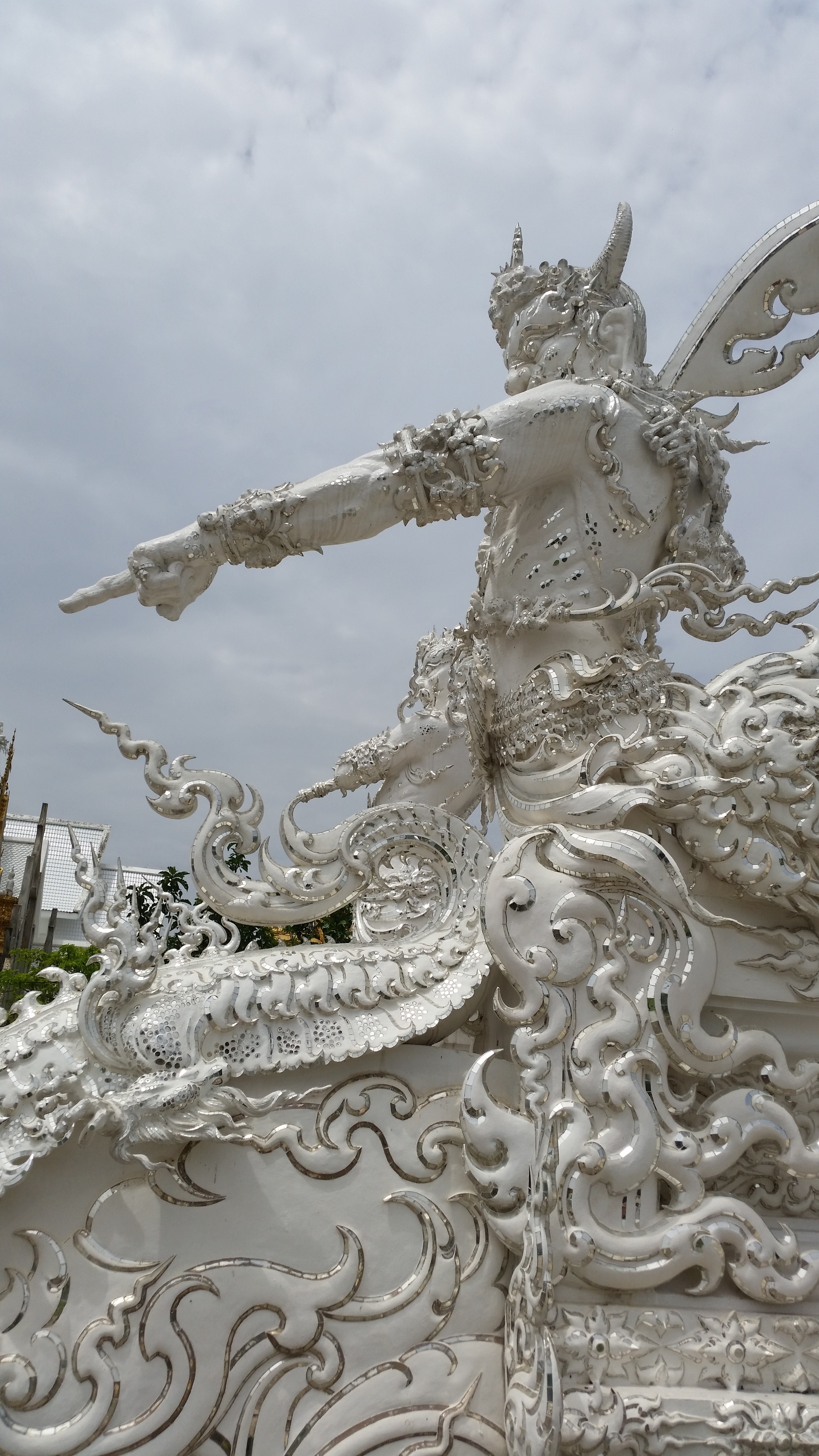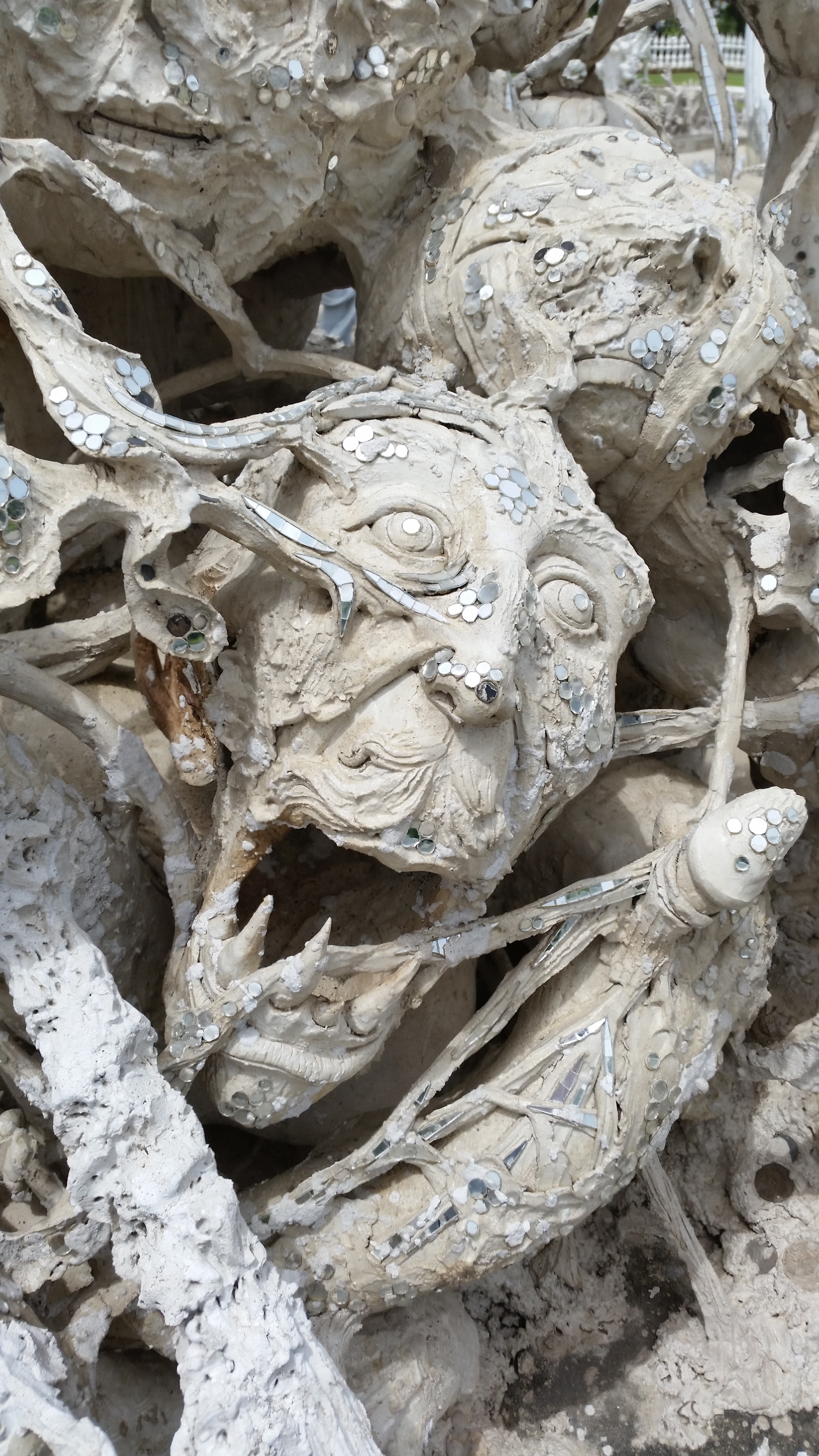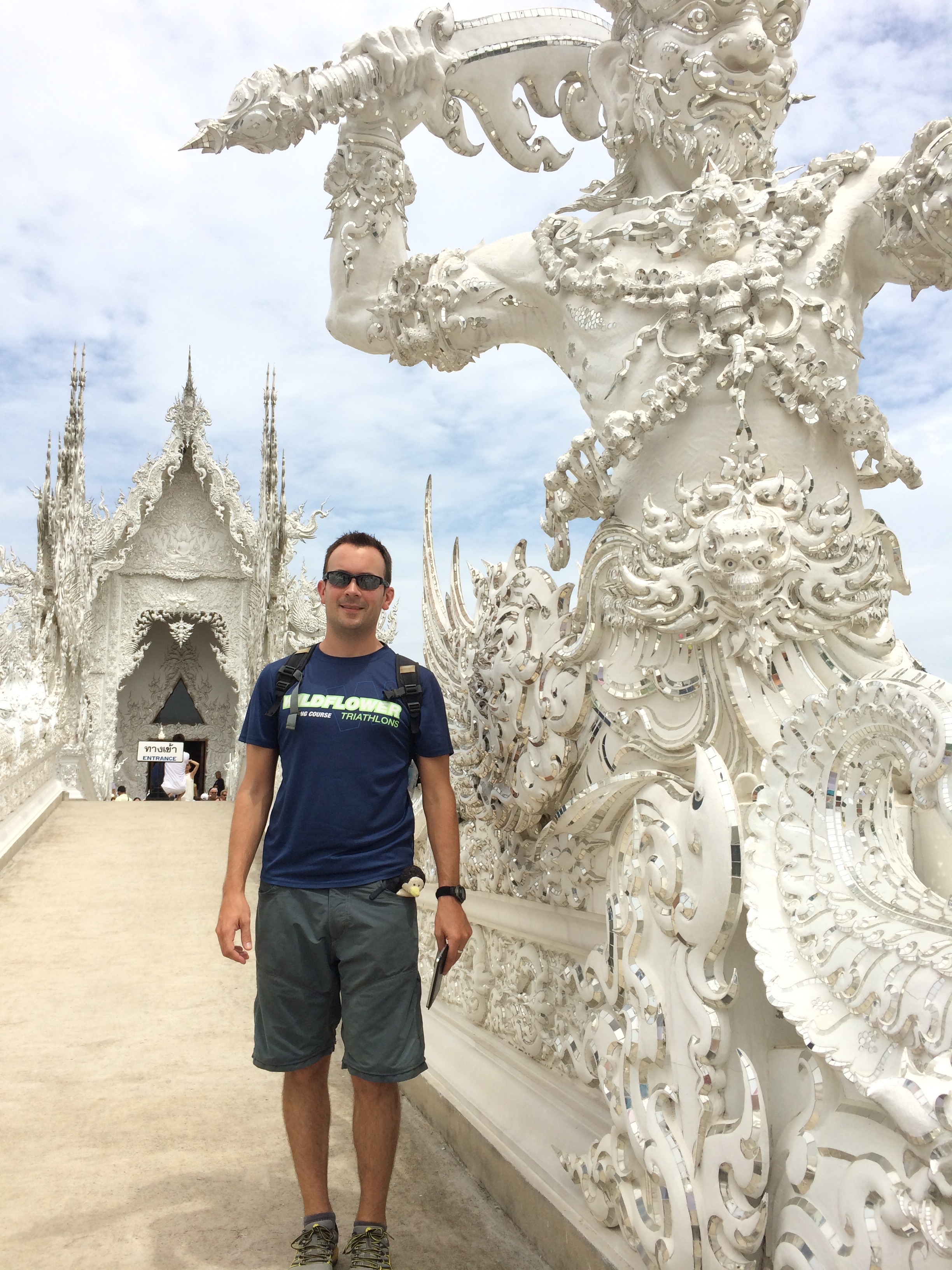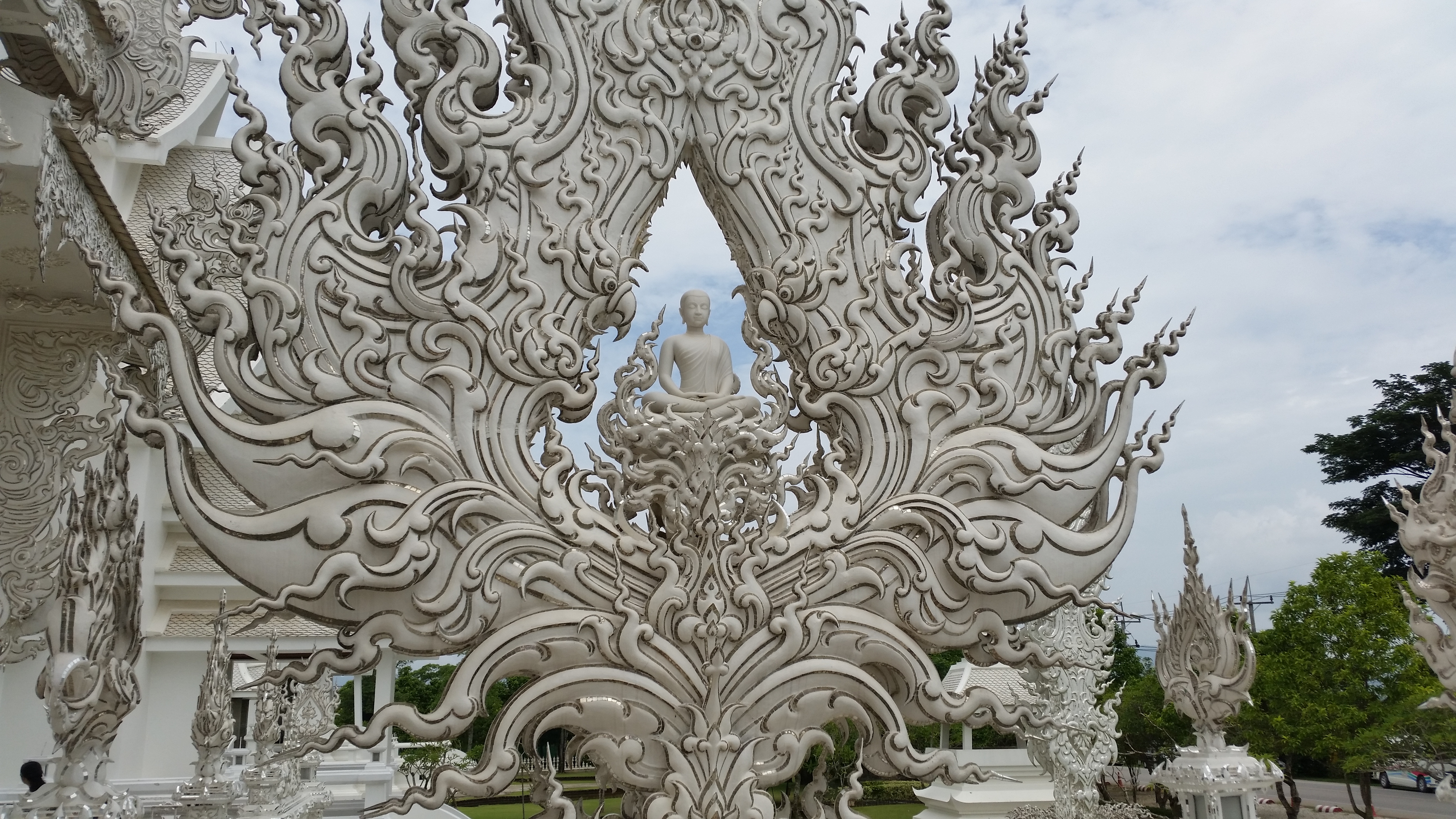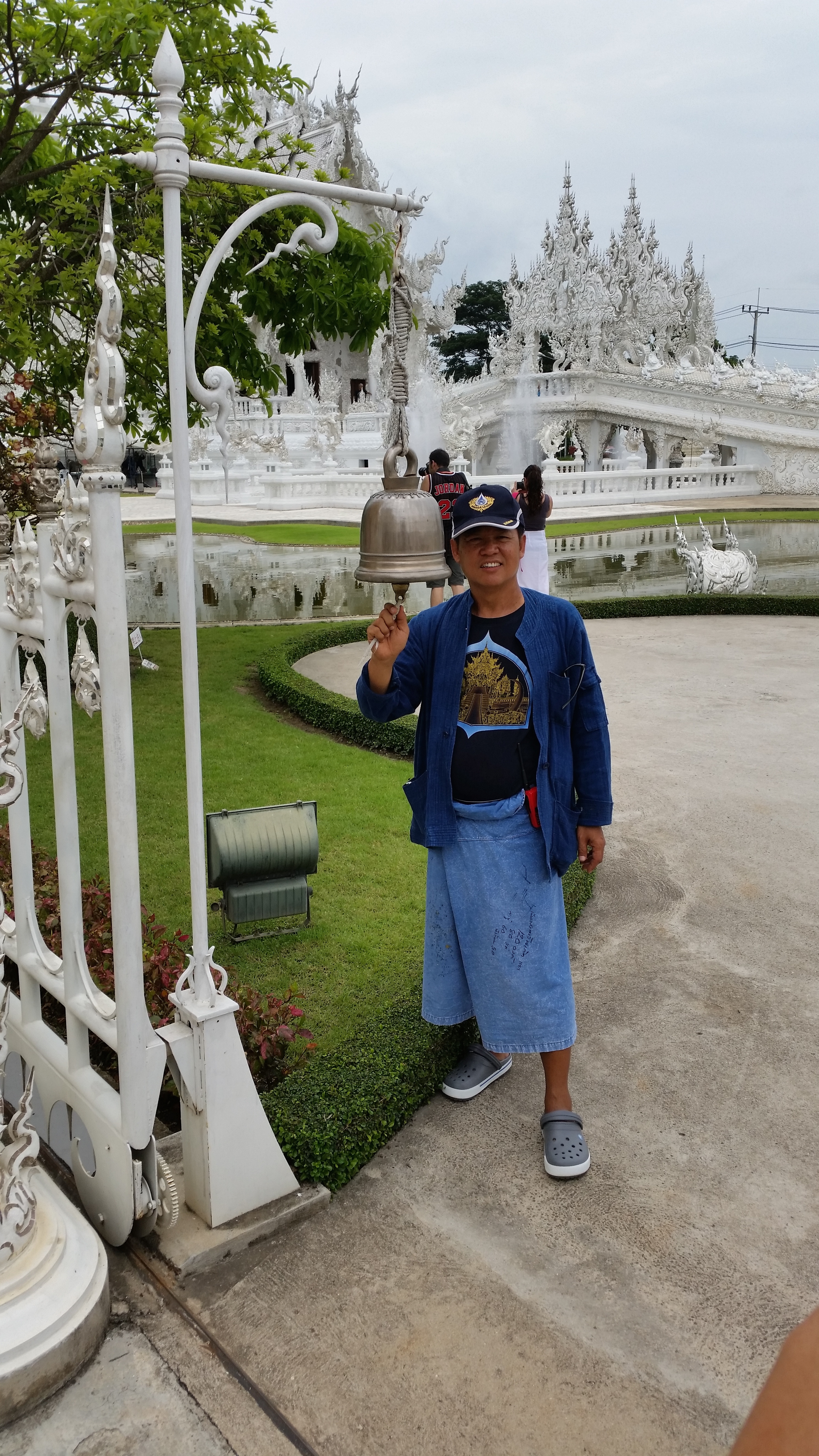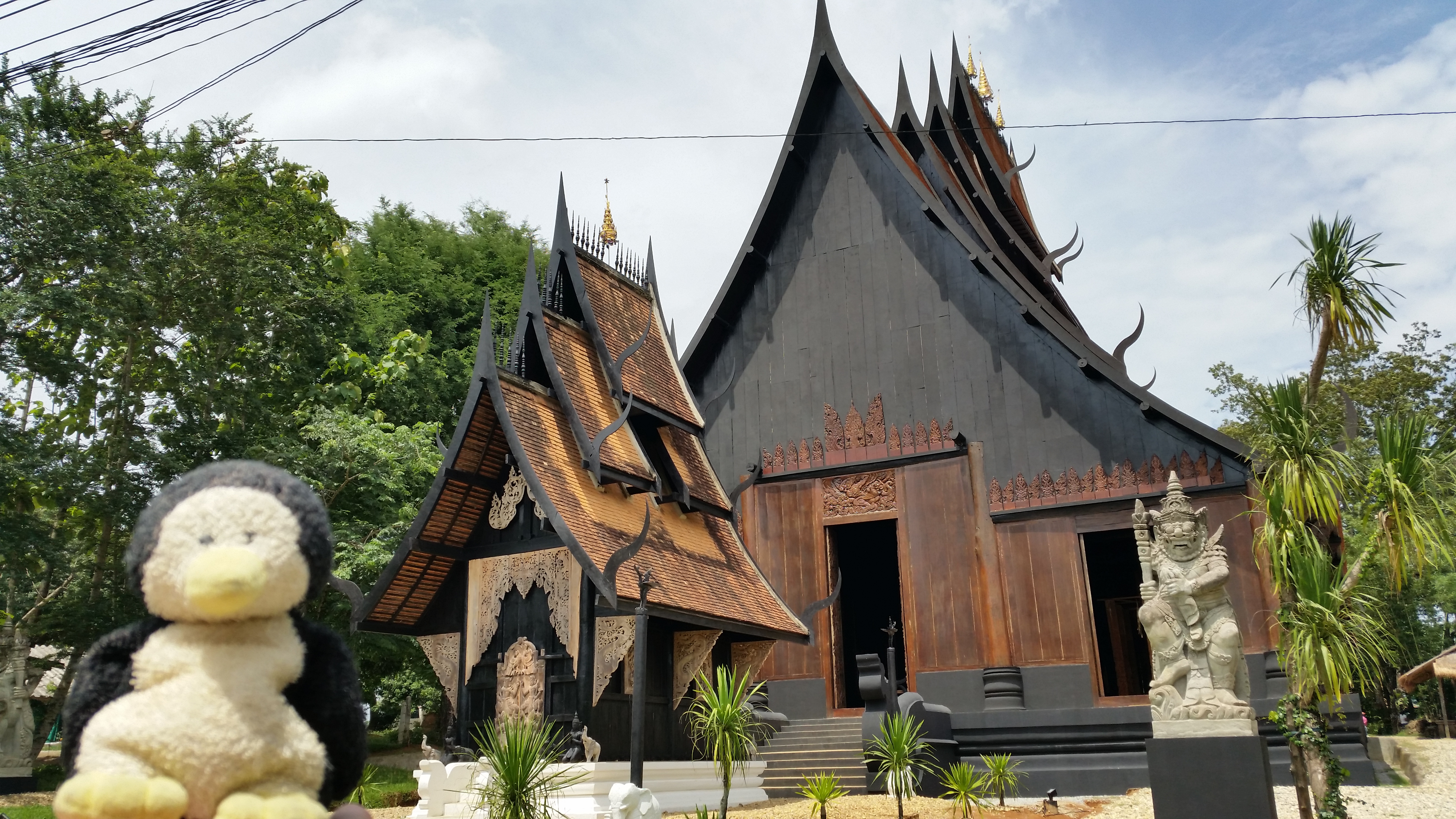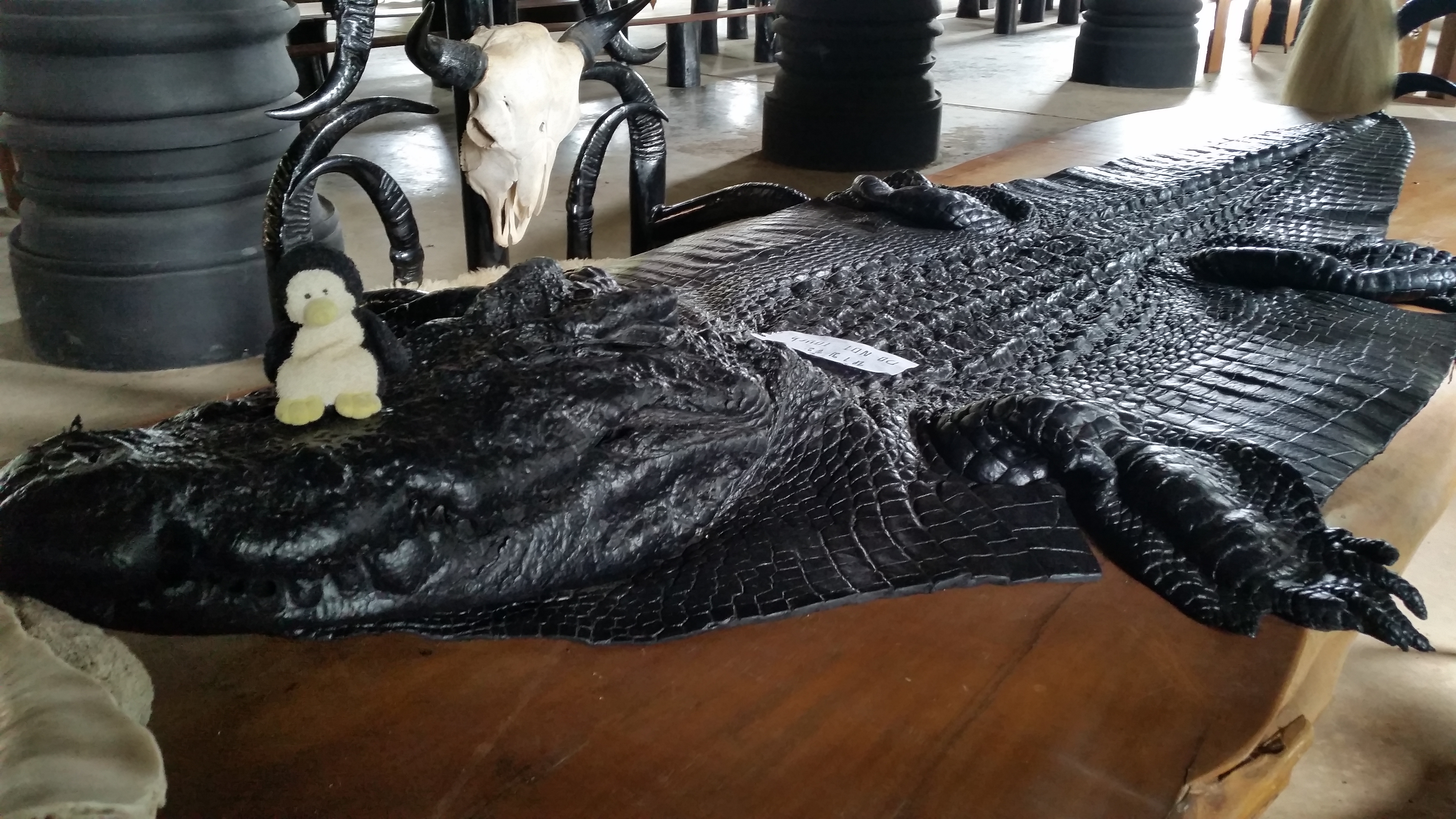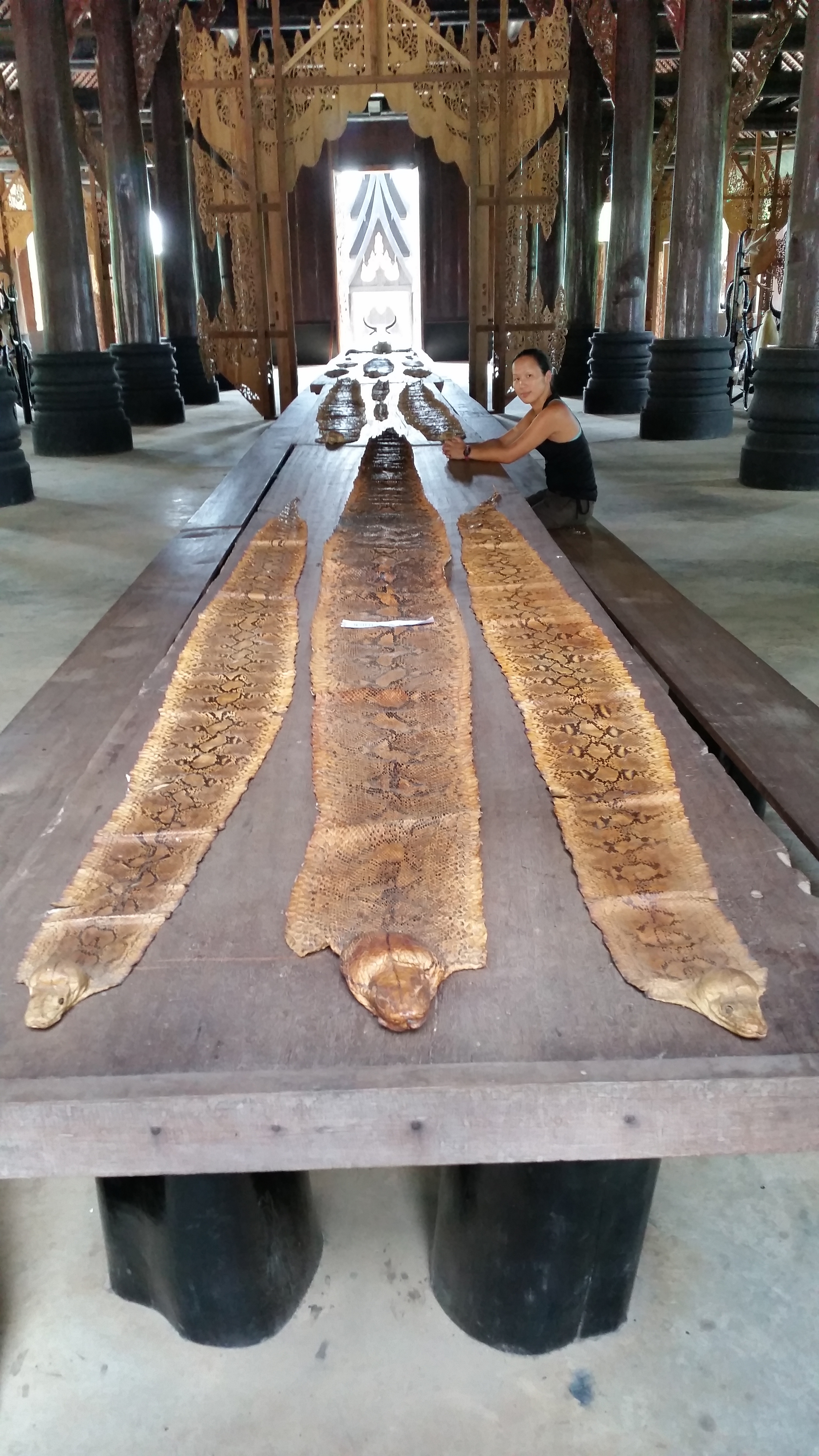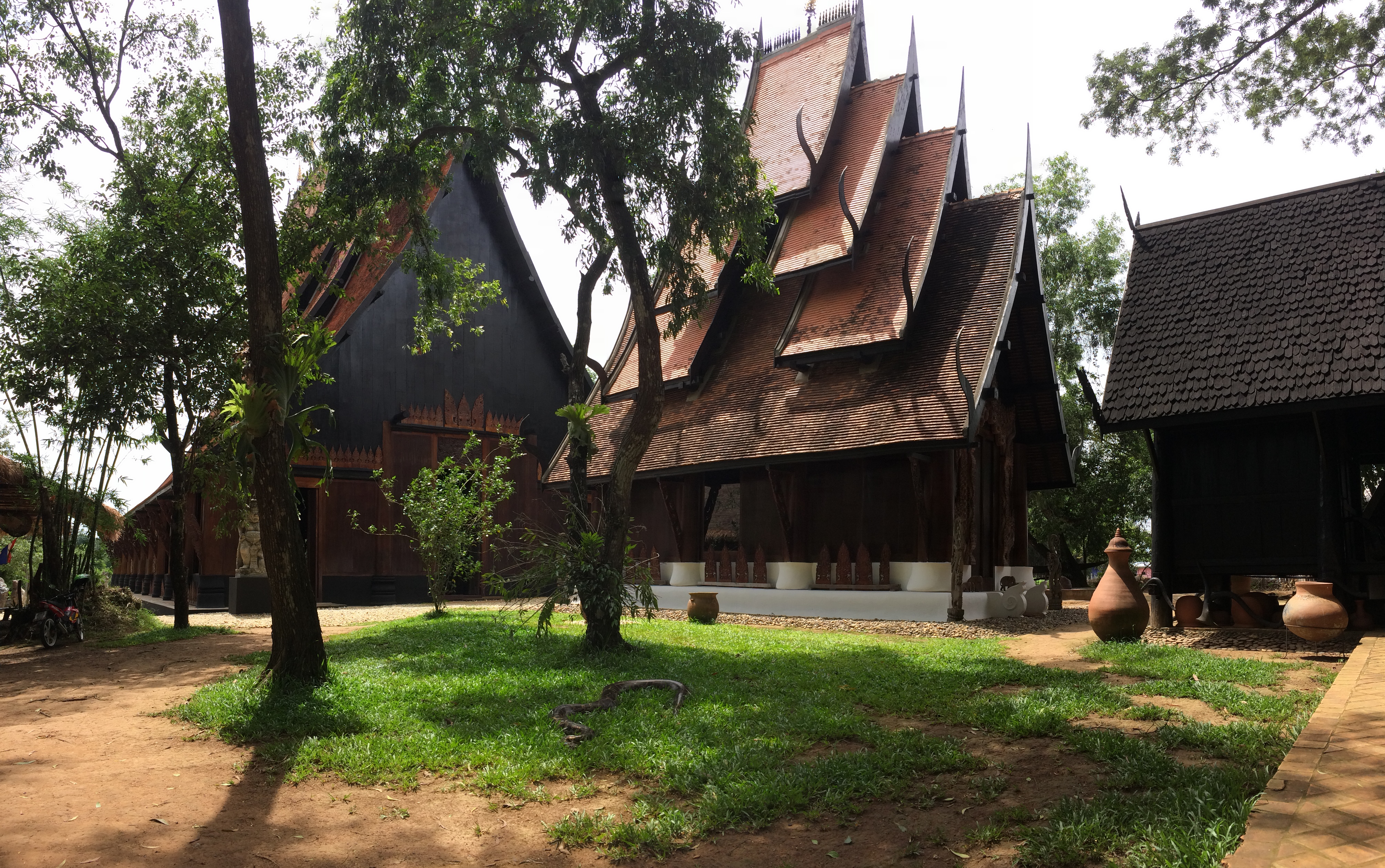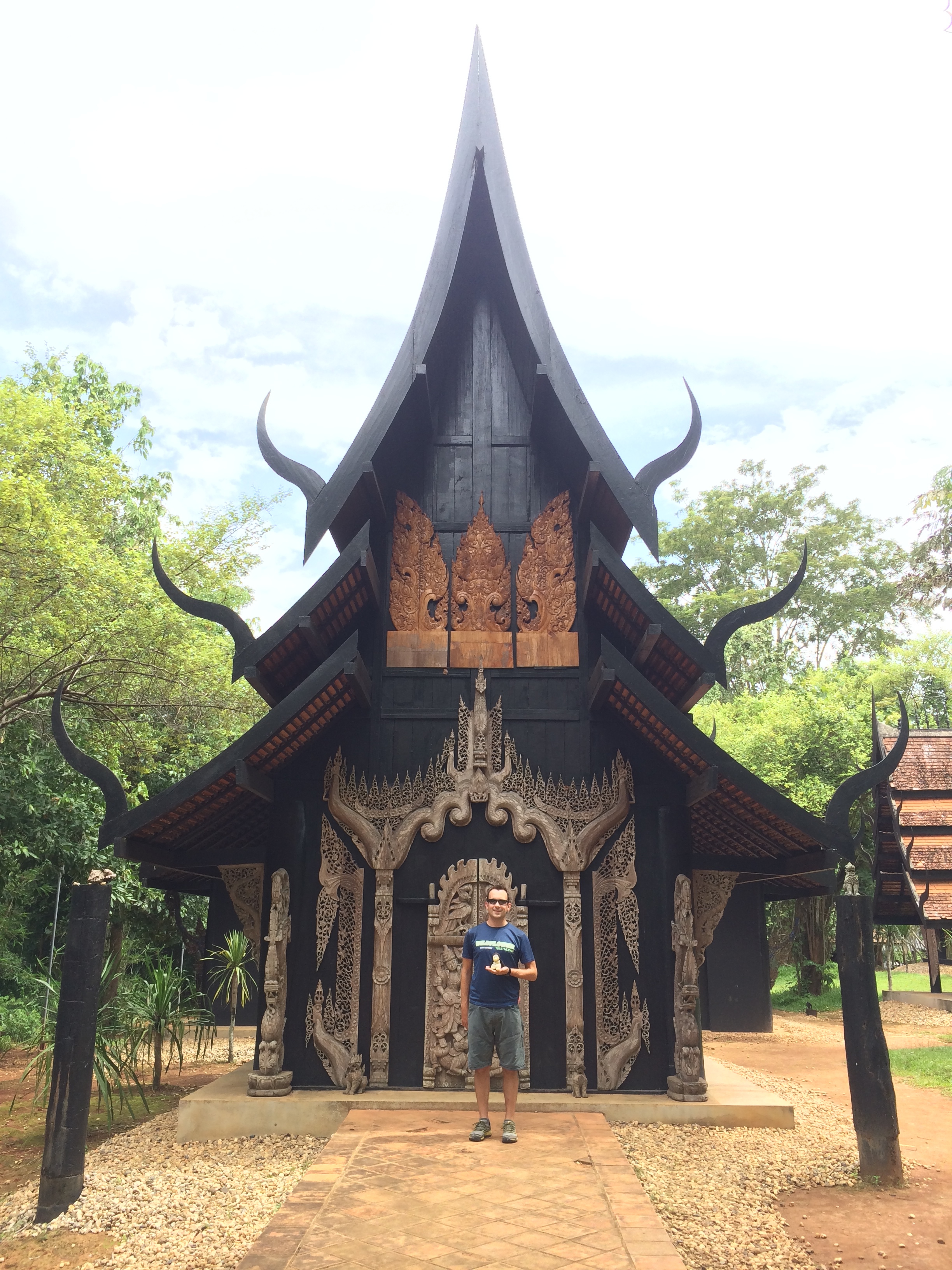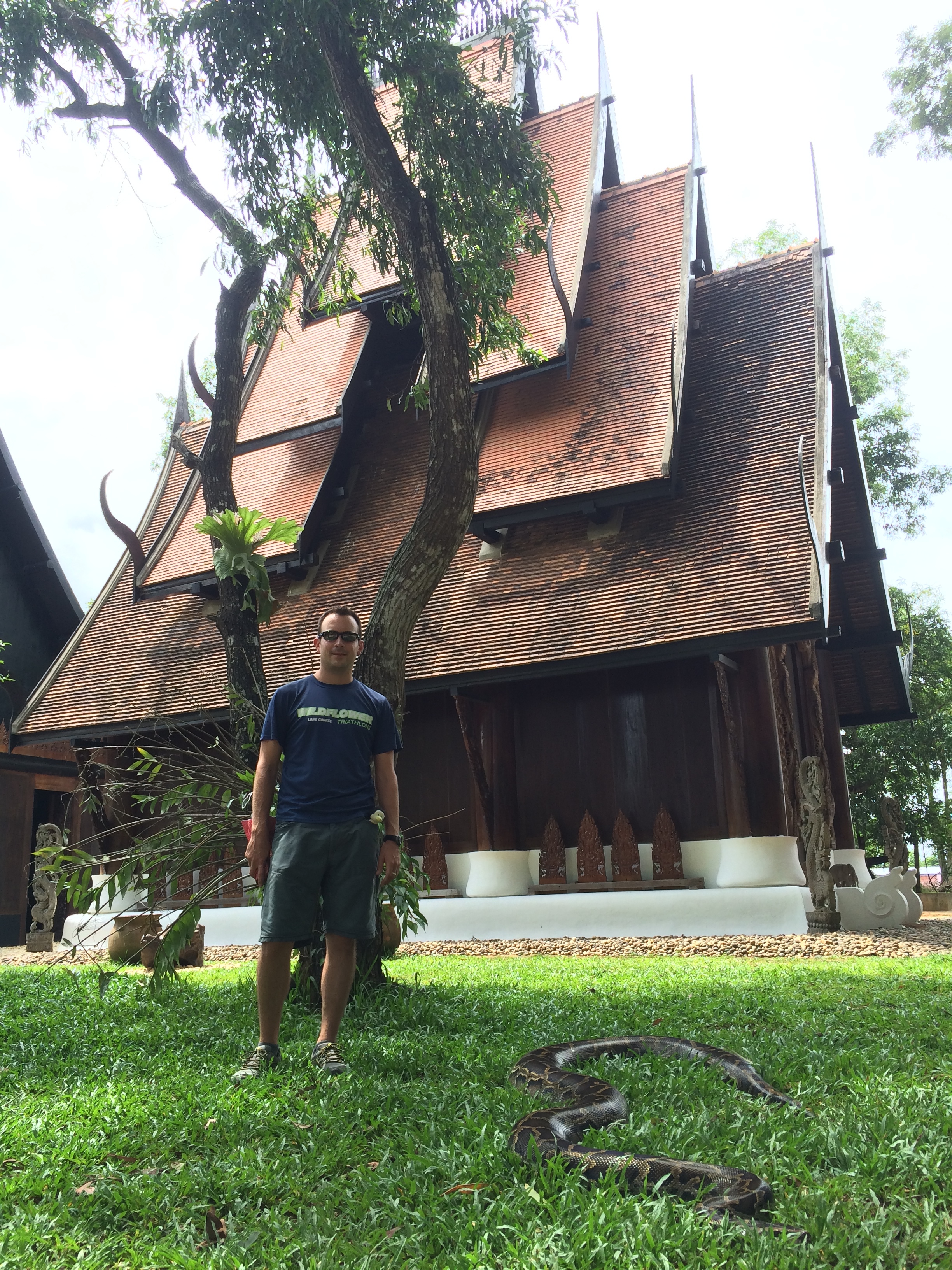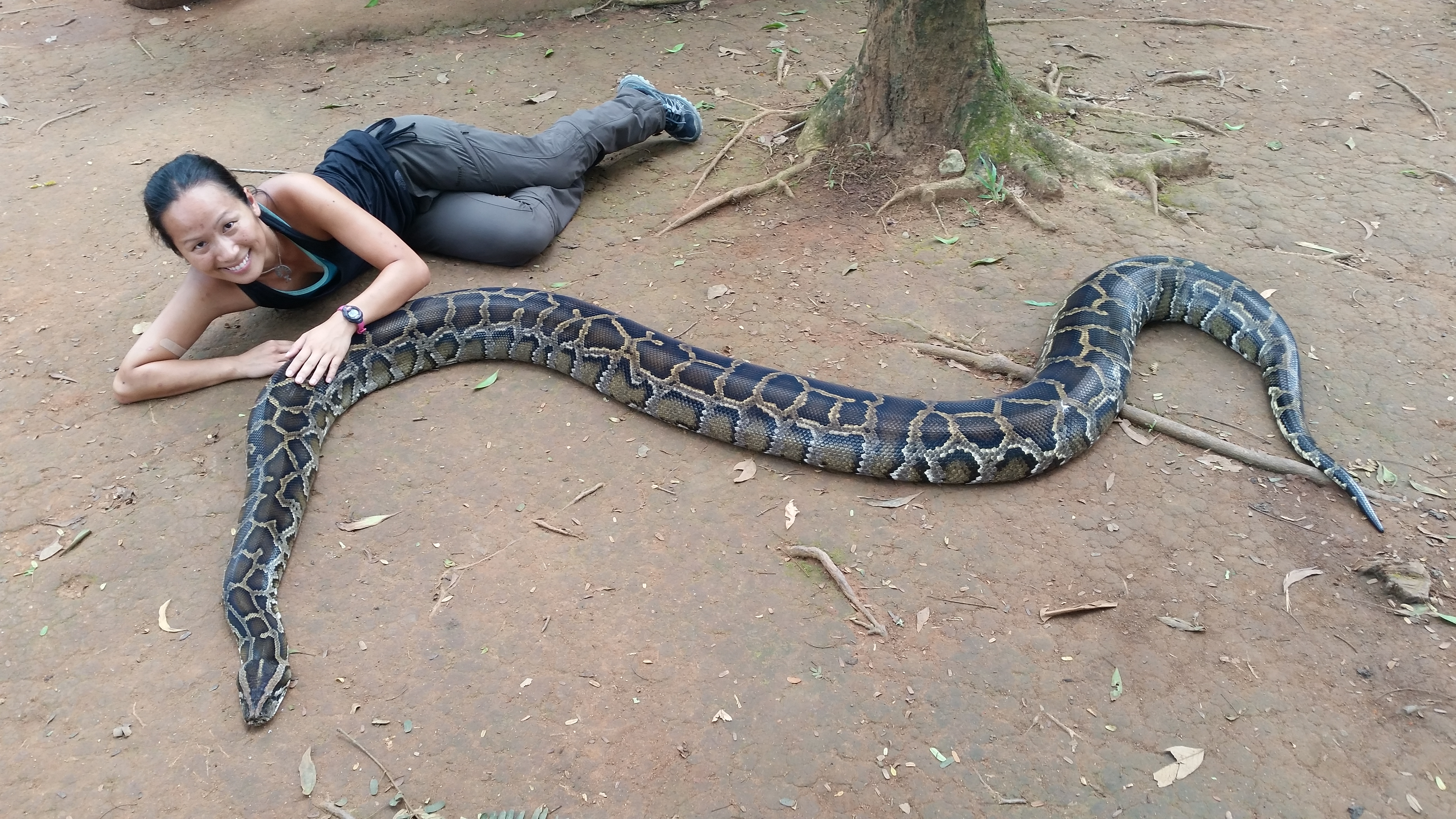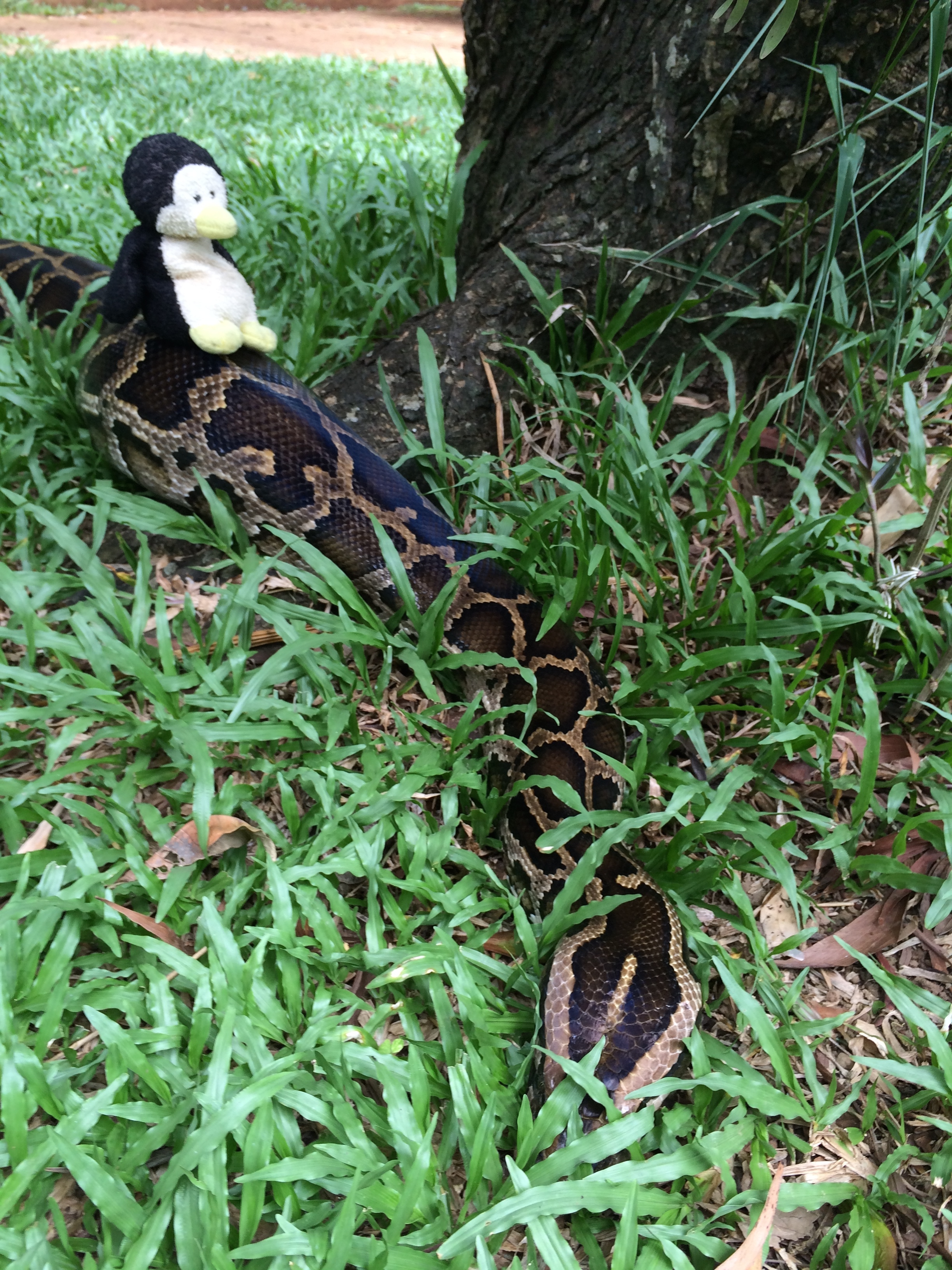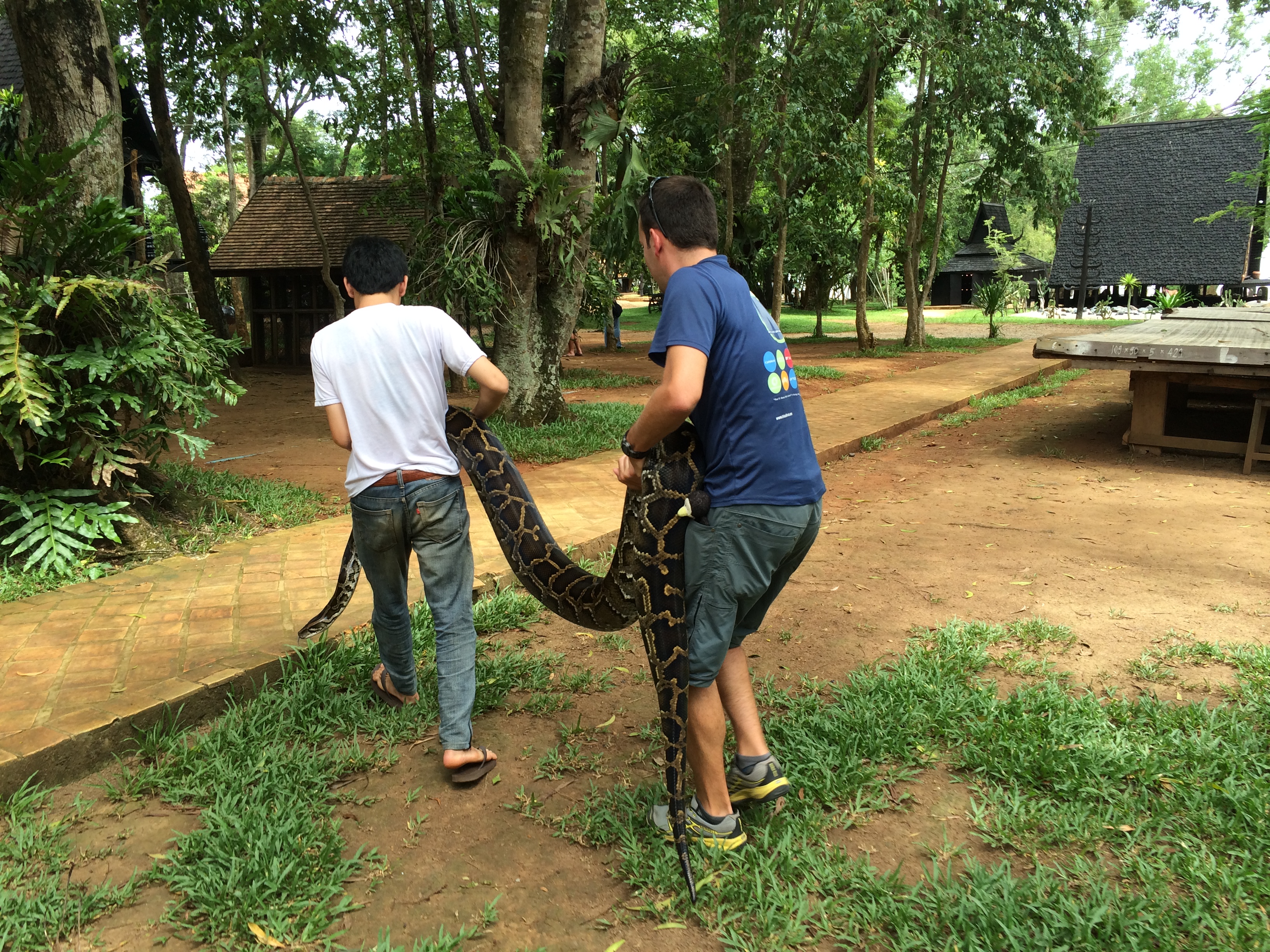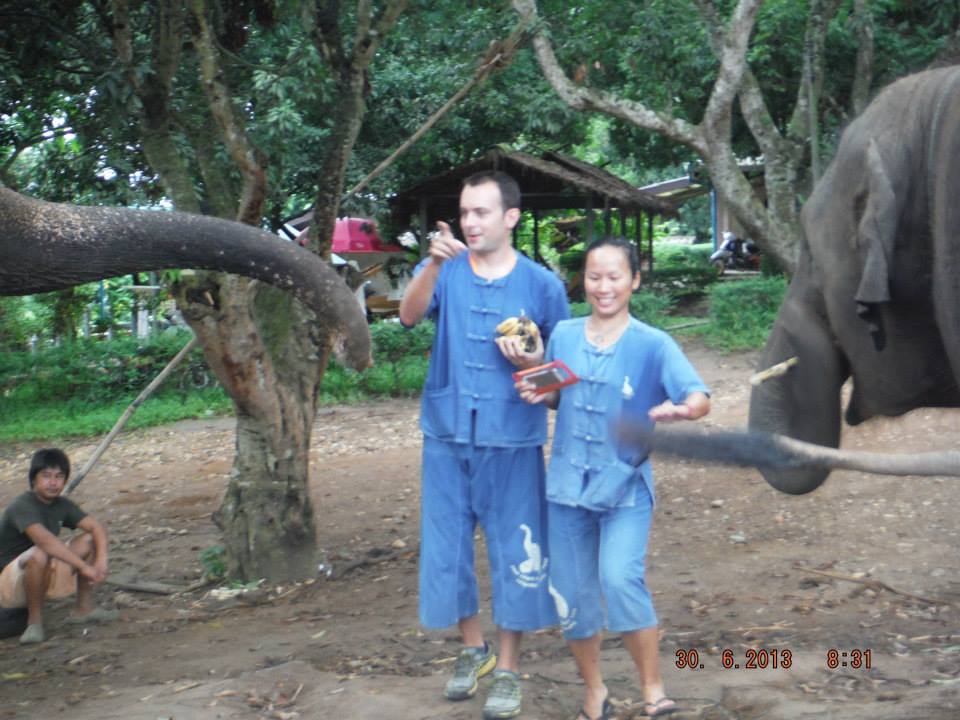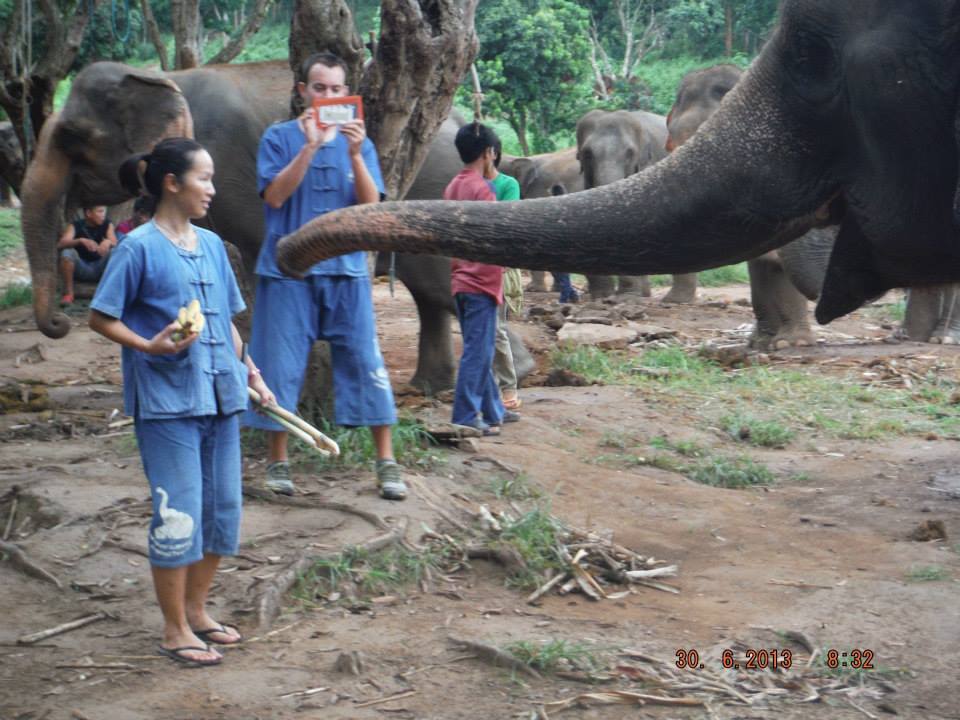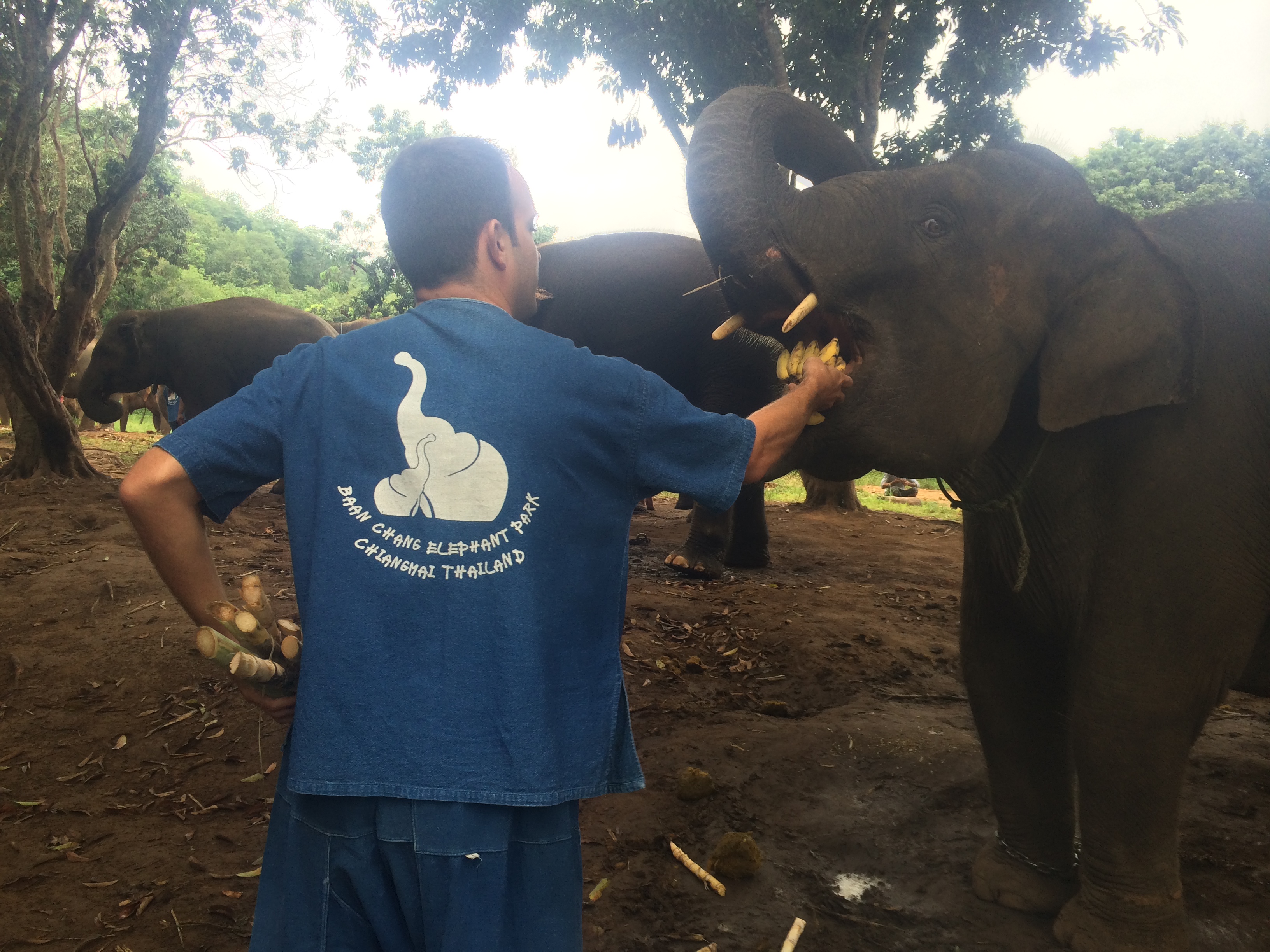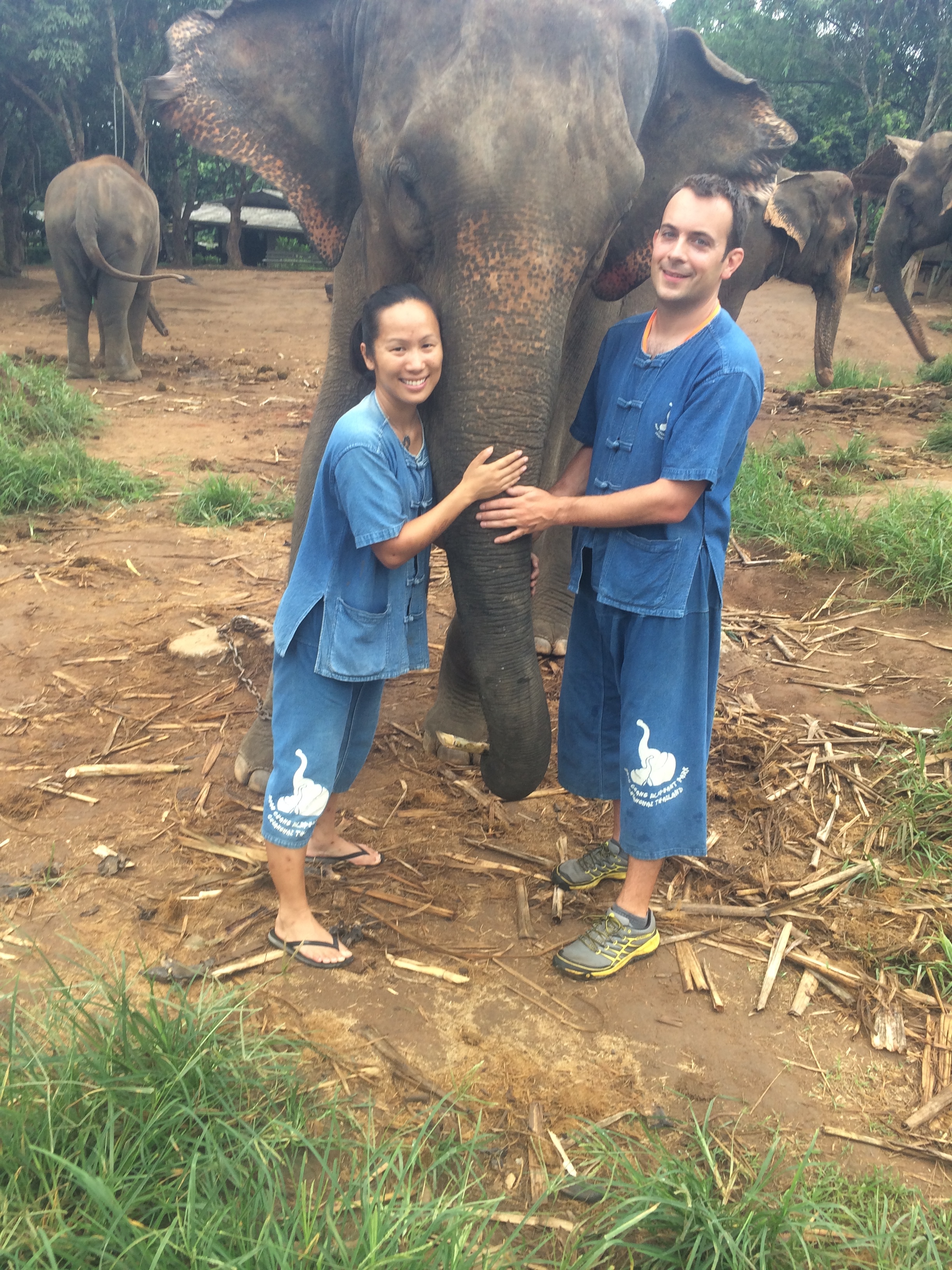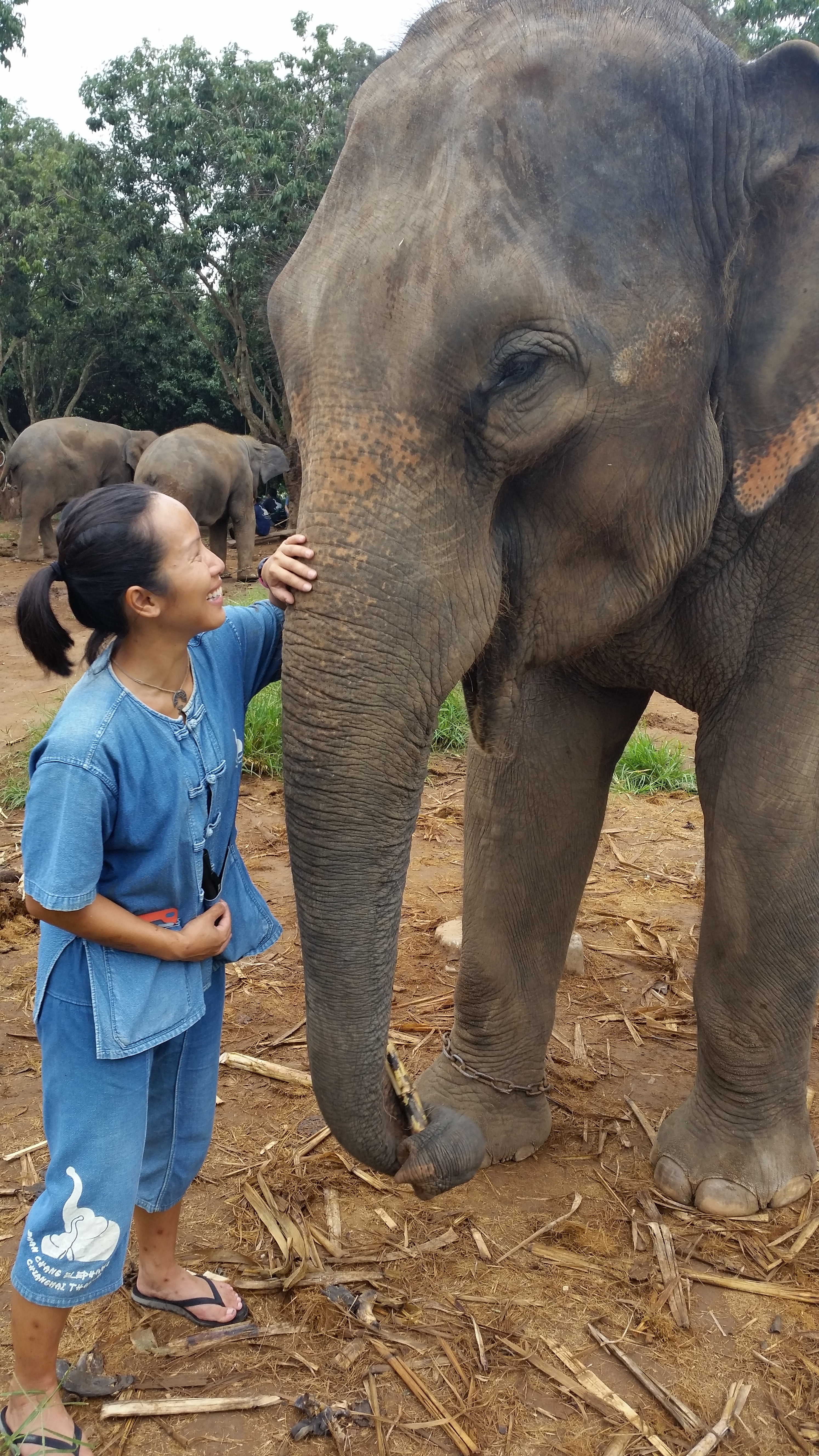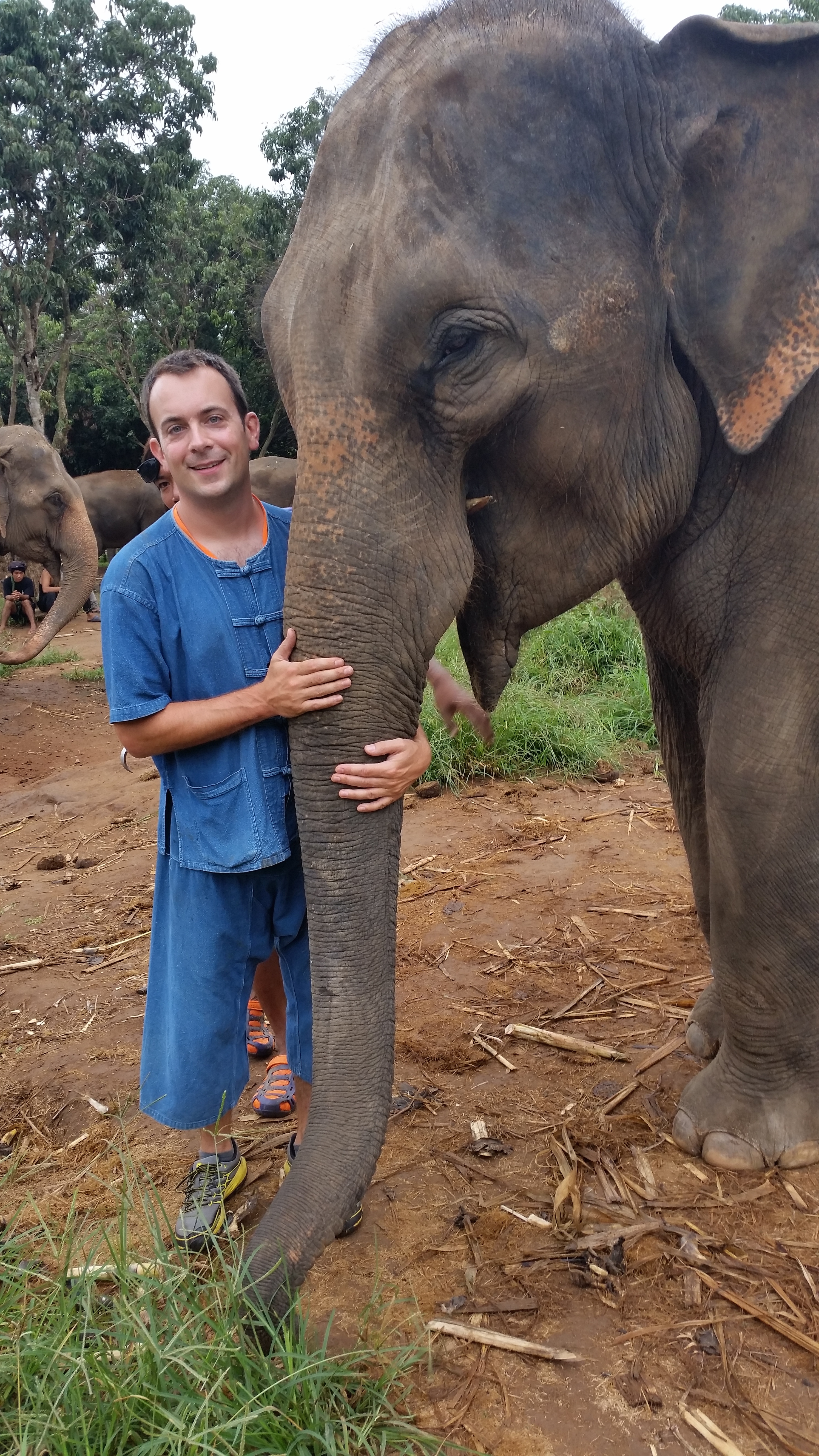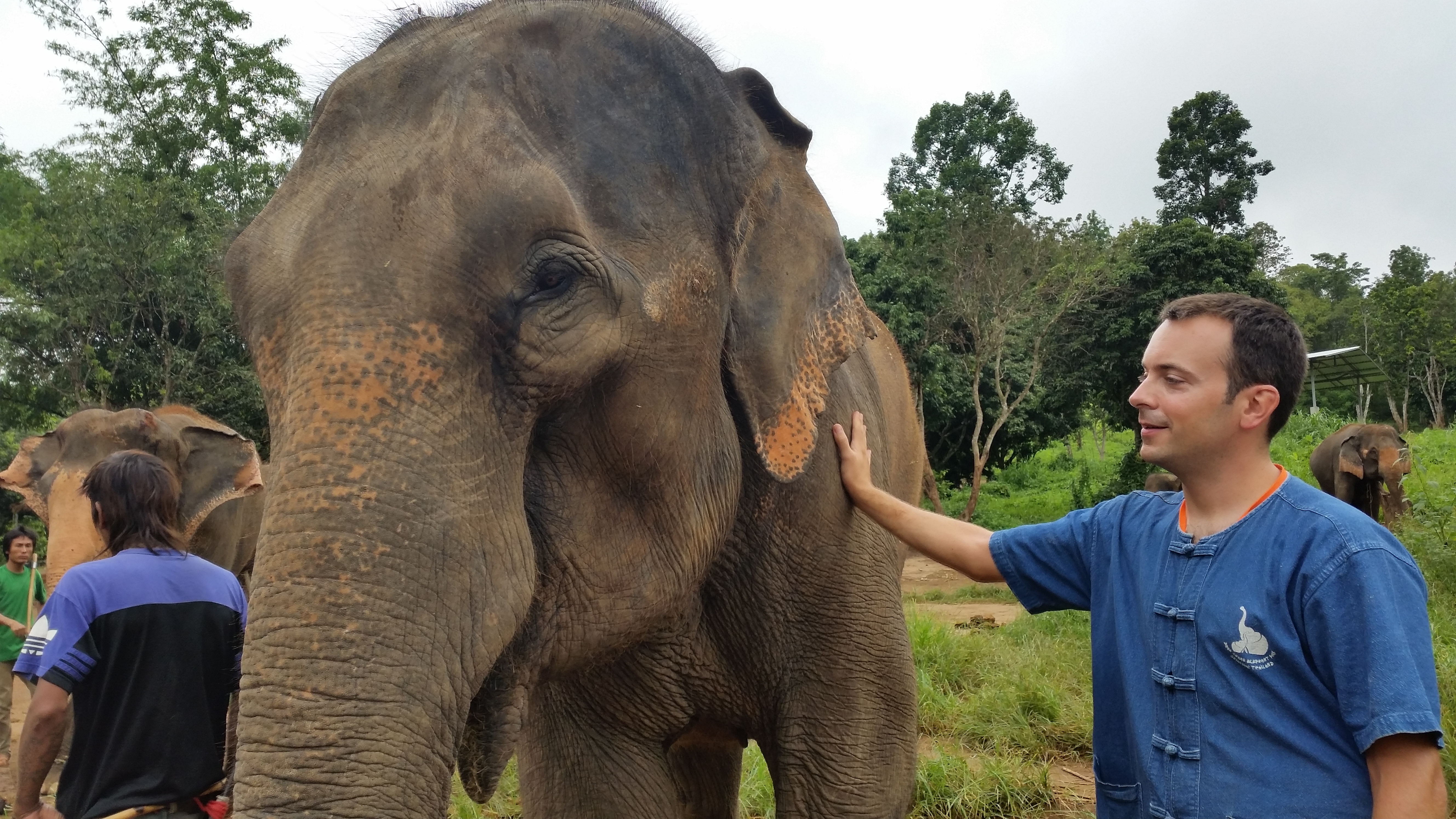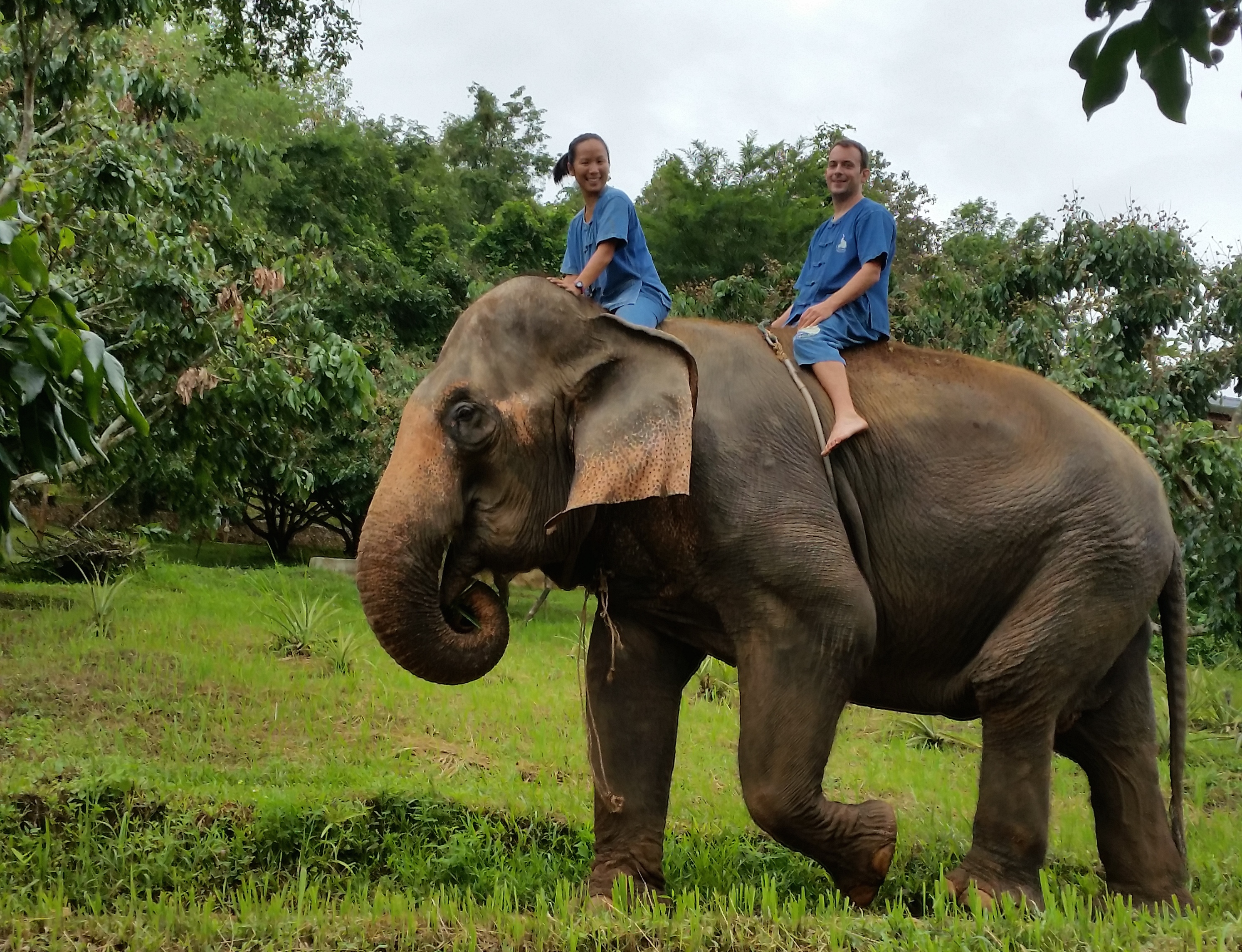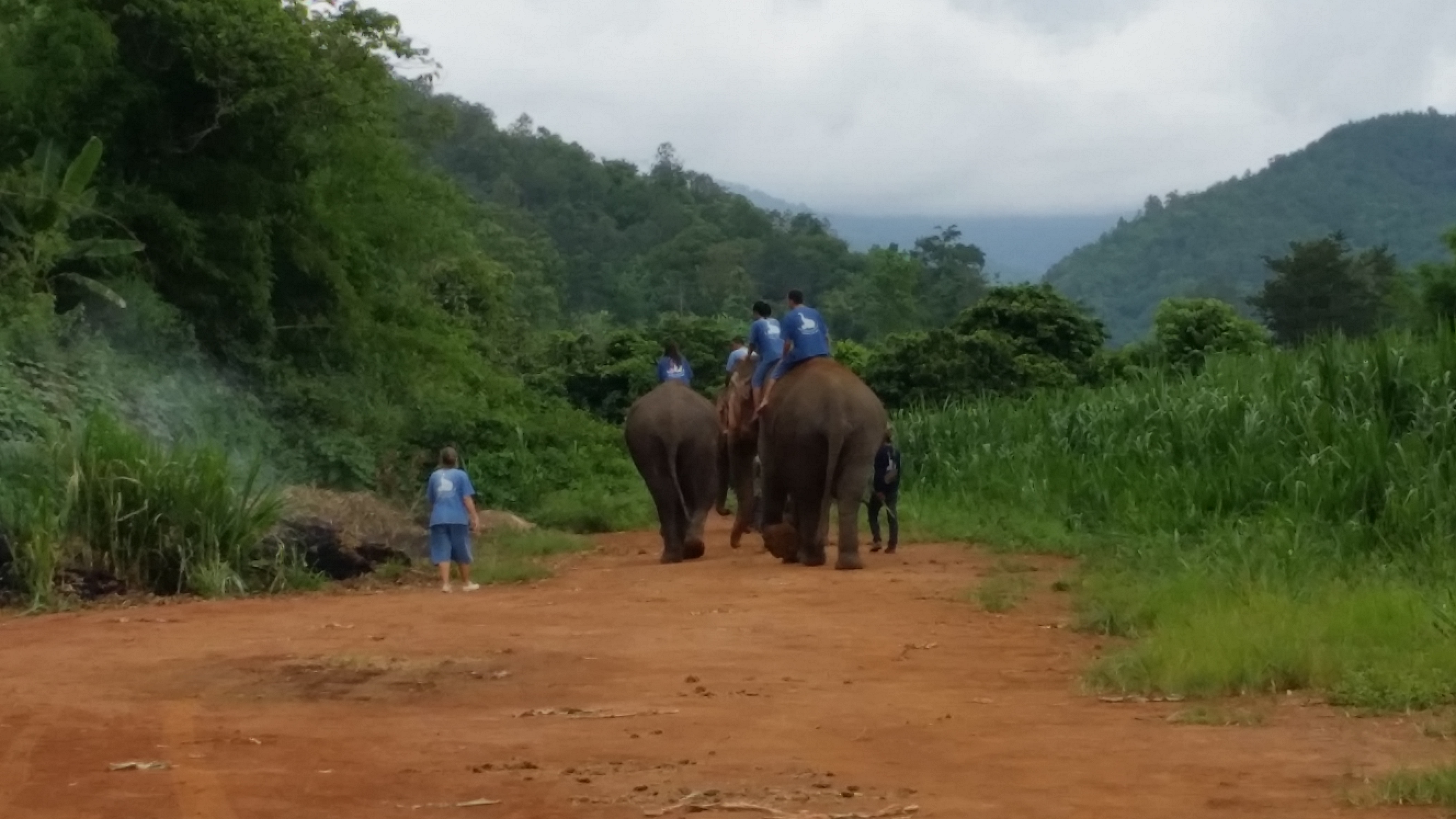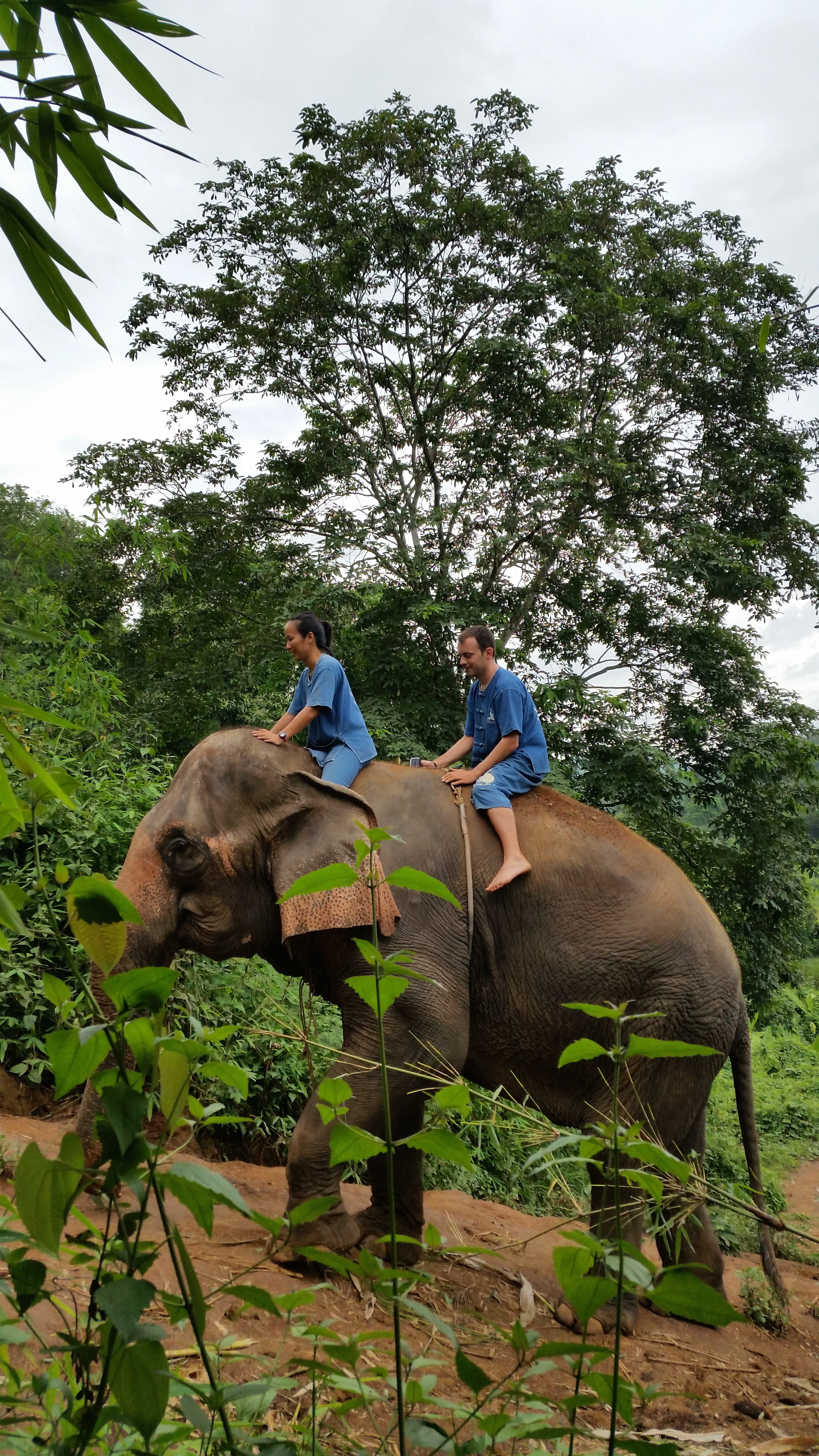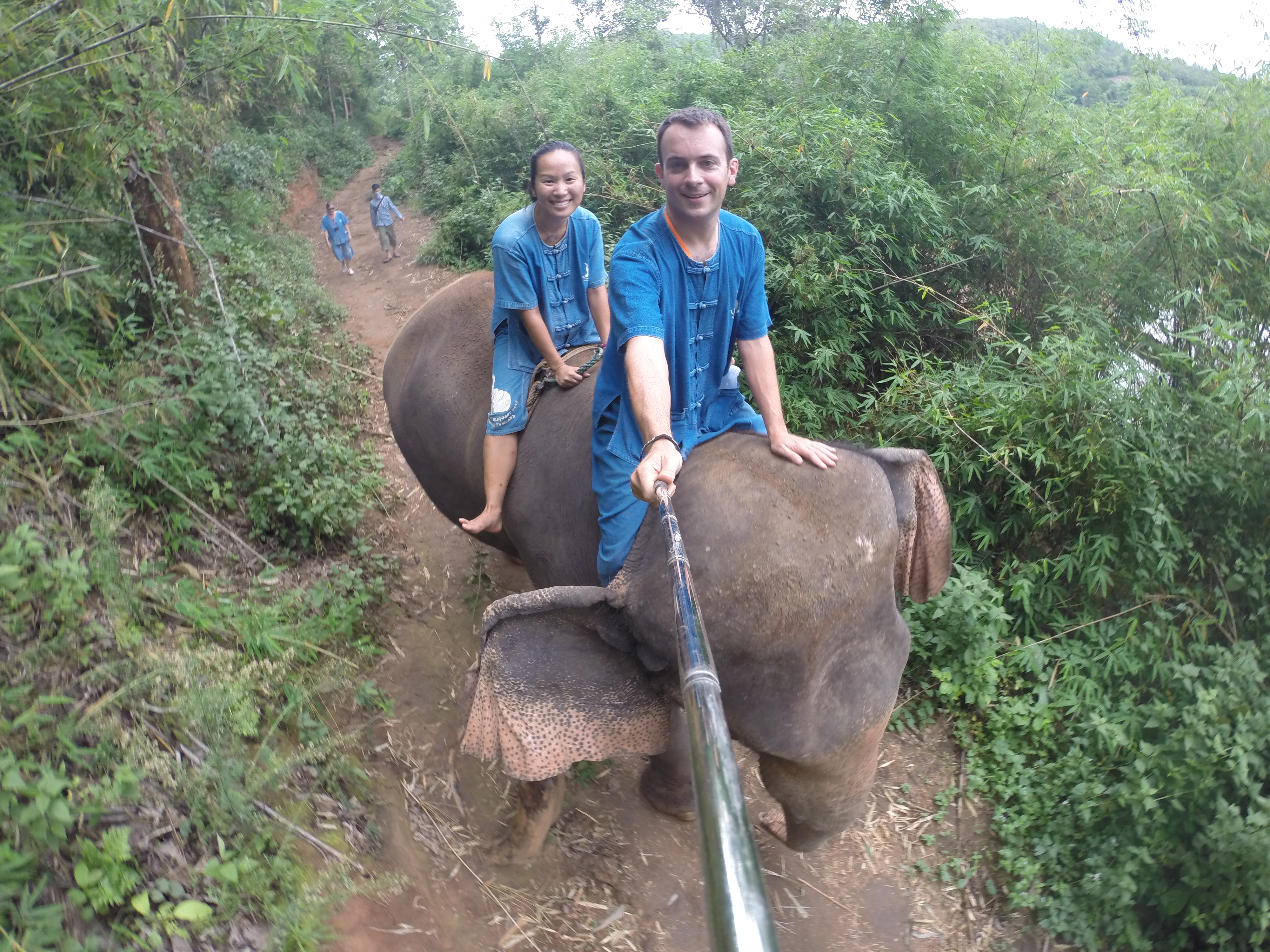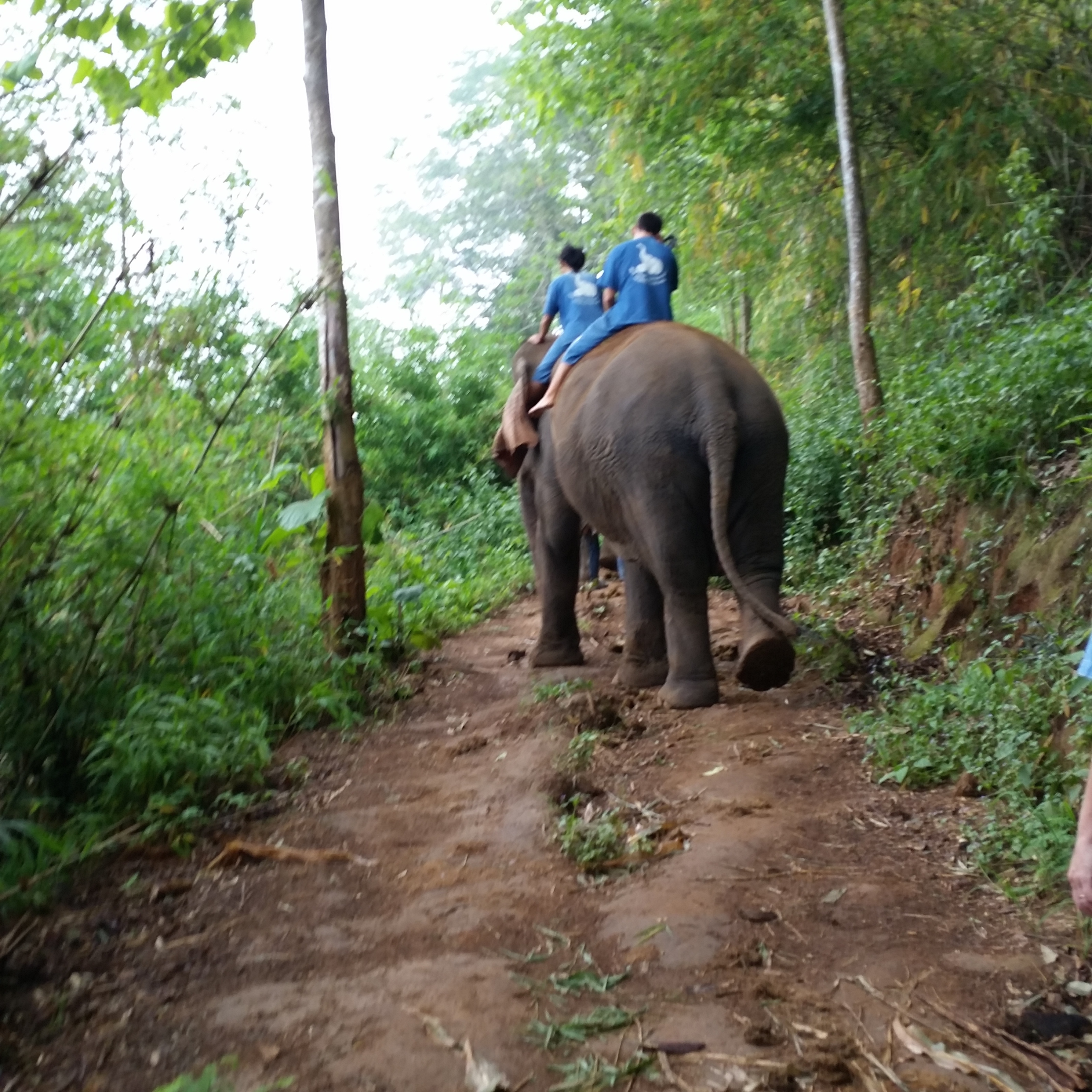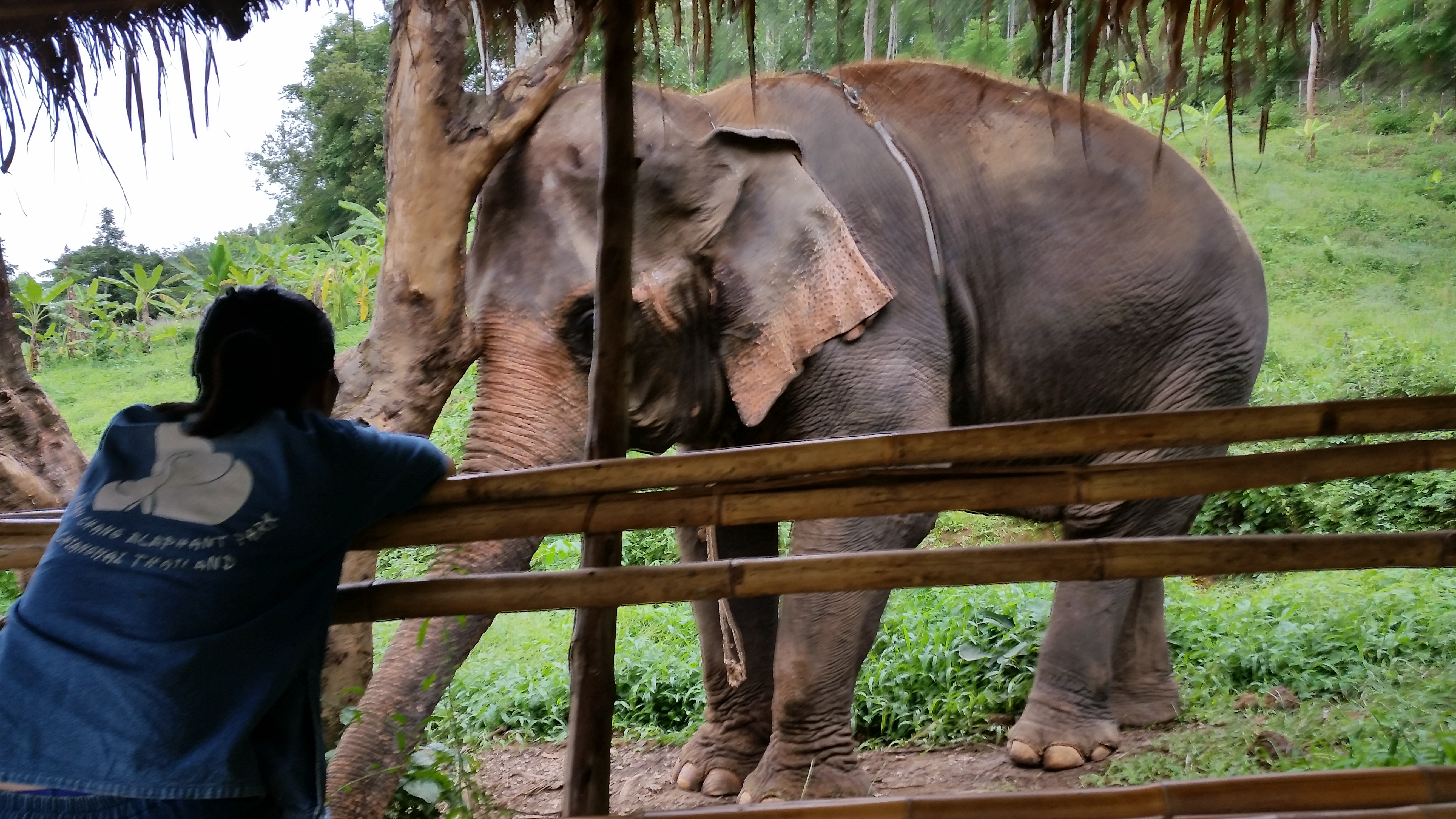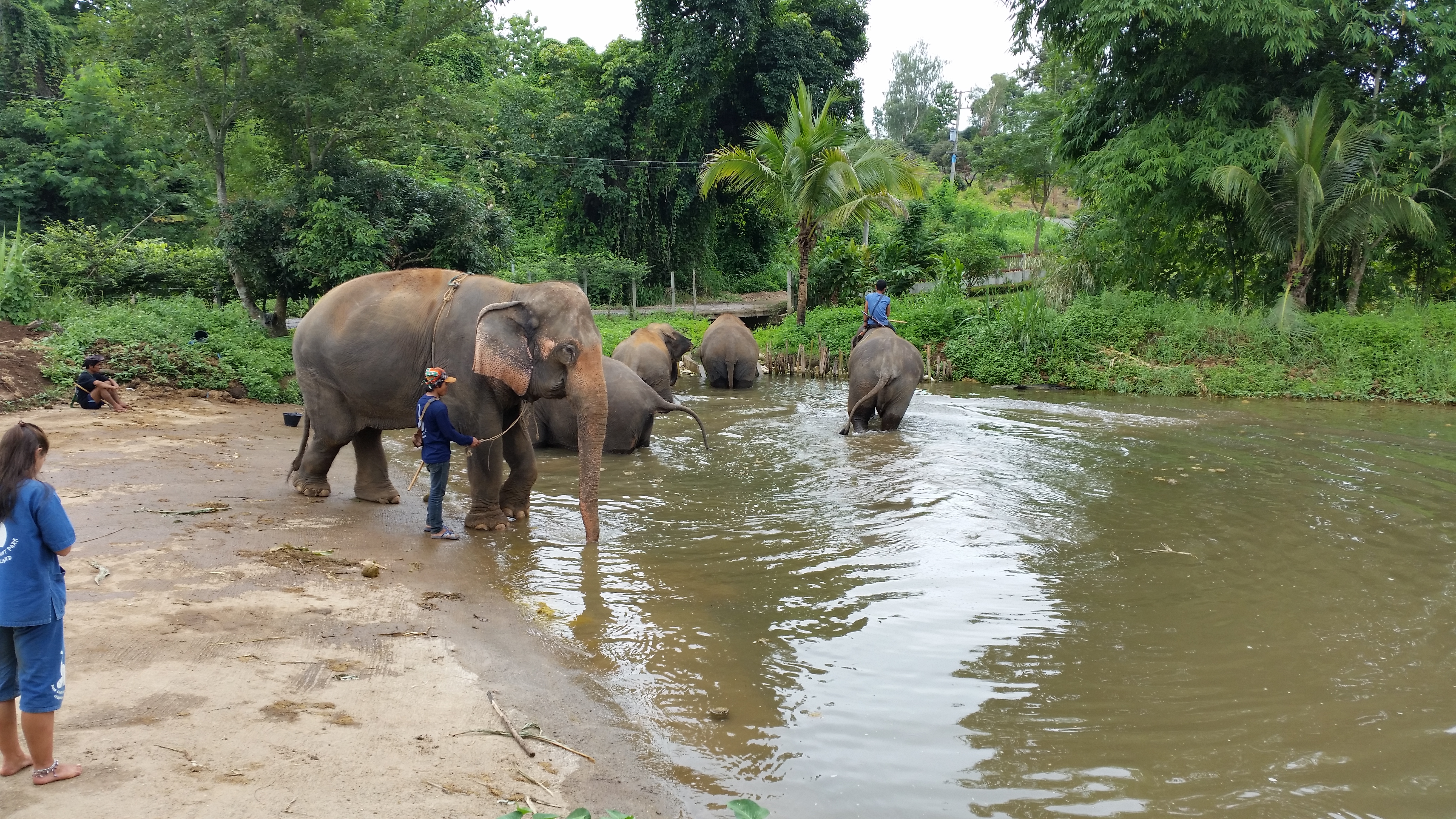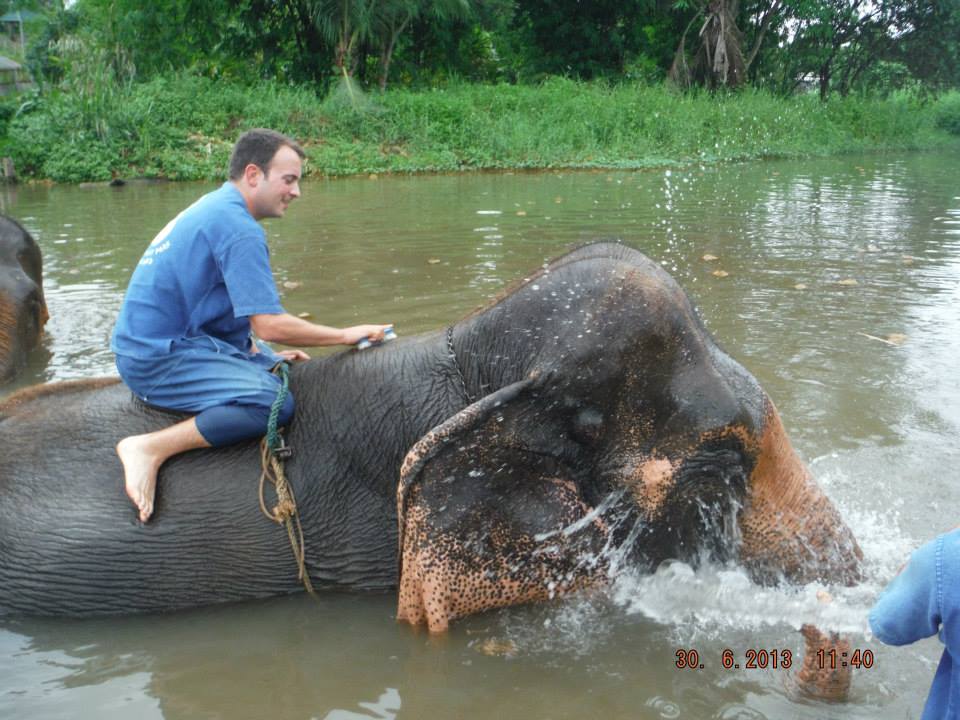Little did we know how much our morning would suck the next day, only to find ourselves slowly sinking deeper into a miserable undesired test of patience.
Our train for Hsipaw departed at 5:45am, which meant we had to be up an hour before. Unsurprisingly, the platforms and trains were not labeled in the Mandalay station. We showed a couple of people our tickets, they pointed us to the “correct” car, and we comfortably sat down with fifteen minutes to spare. The car was completely empty except for one passenger, whom we asked if the train was heading to Hsipaw. He stuttered in broken English, “Yes, Hsipaw!” After spotting another train sitting on a different platform, we were hesitant to trust the stranger, so Chris left the train to ask an actual attendant. At 5:39, the man for some reason changed his mind and exclaimed, “Yangon! No Hsipaw!”
Fuck. We had five minutes to grab our bags and run to the other platform to catch the train. As I gathered our gear, Chris frantically hurried in and cried out, “We’re on the wrong train!” With Chris’s 15 kg bag on his back and a 12 kg bag on mine, we bolted out the train, up the stairs, over to the other side, down the stairs, and into the train that was preparing to depart.
We breathlessly sank into our chairs in the foreigner-filled car, perspiration wildly dripping down our faces (remember, it’s humid here!), and within three minutes at exactly 5:45am, the train set out to Hsipaw. Whew, we thought as the train rolled out, but the train did not even completely exit the station when it stopped abruptly and sat on the tracks for a full half hour before leaving again.
During that time, we scanned the car and I stuck my head out the window to observe the train. There were only three passenger cars, two of which were “ordinary class” with wooden benches, and one which was an “upper class” with soft seats (our car). None of the ordinary cars had air conditioning but the upper class car had fans; however our section was the only section of the upper class car that did not have a working fan! We groaned and planned for a sticky day.
The only reason why I opted to travel by train to Hsipaw was because another traveler we met had recommended it, claiming it was a beautiful and authentic experience. Traveling by train in Myanmar was definitely one of the most authentic journeys I’ve experienced, but because it was neither comfortable nor faster than traveling by bus, we indisputably agreed to return via bus.
Yes, the scenery in the mountains was beautiful. Yes, we got to observe locals. Yes, we made it to Hsipaw. However, it was not worth the countless number of intermittent stops, random breaks for snacks, and cargo pick ups and drop offs for the uncomfortable twelve-hour journey in the damned heat.
Some scenic views/interesting stops: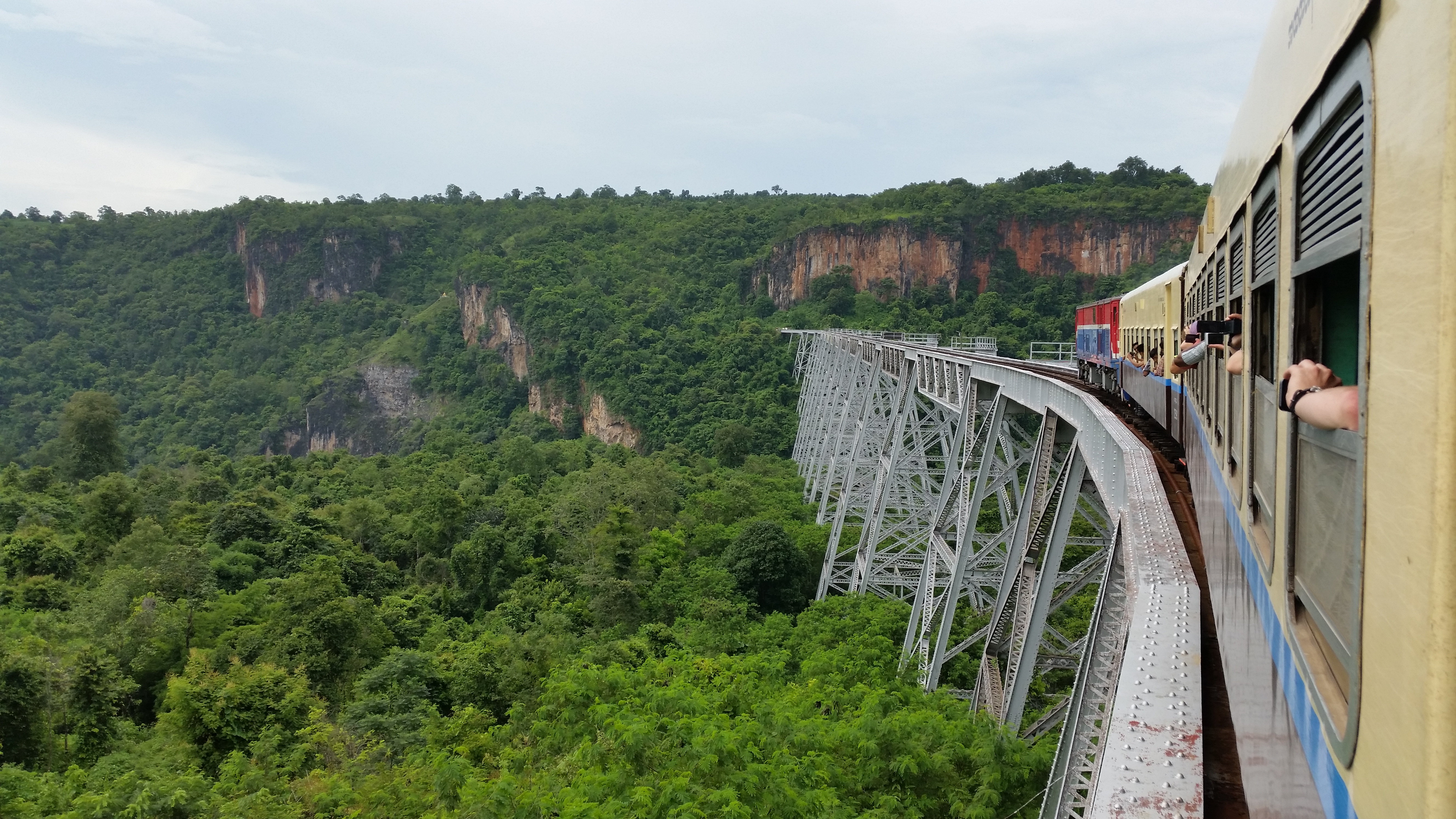
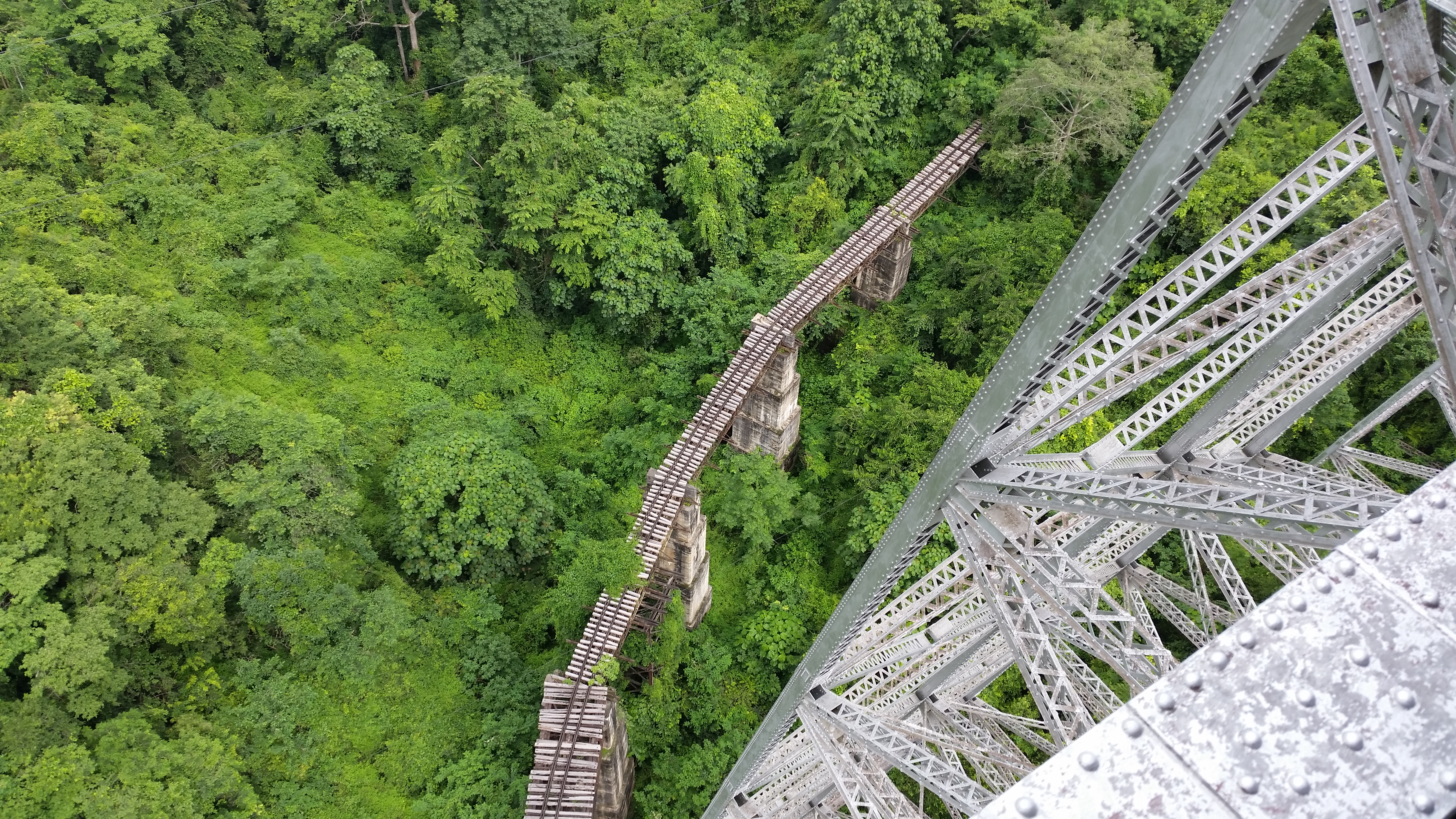


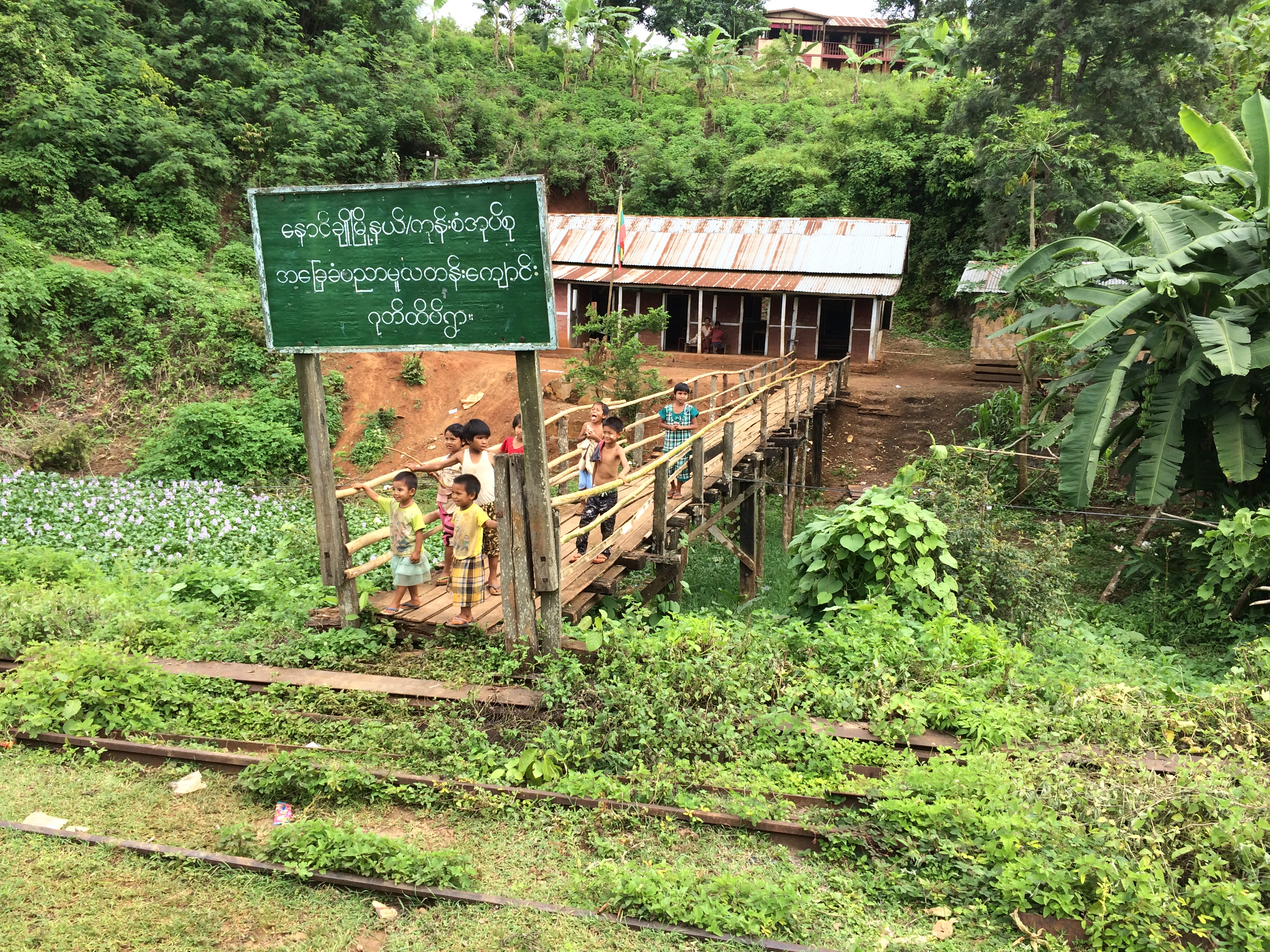
Locals selling snacks at random stops: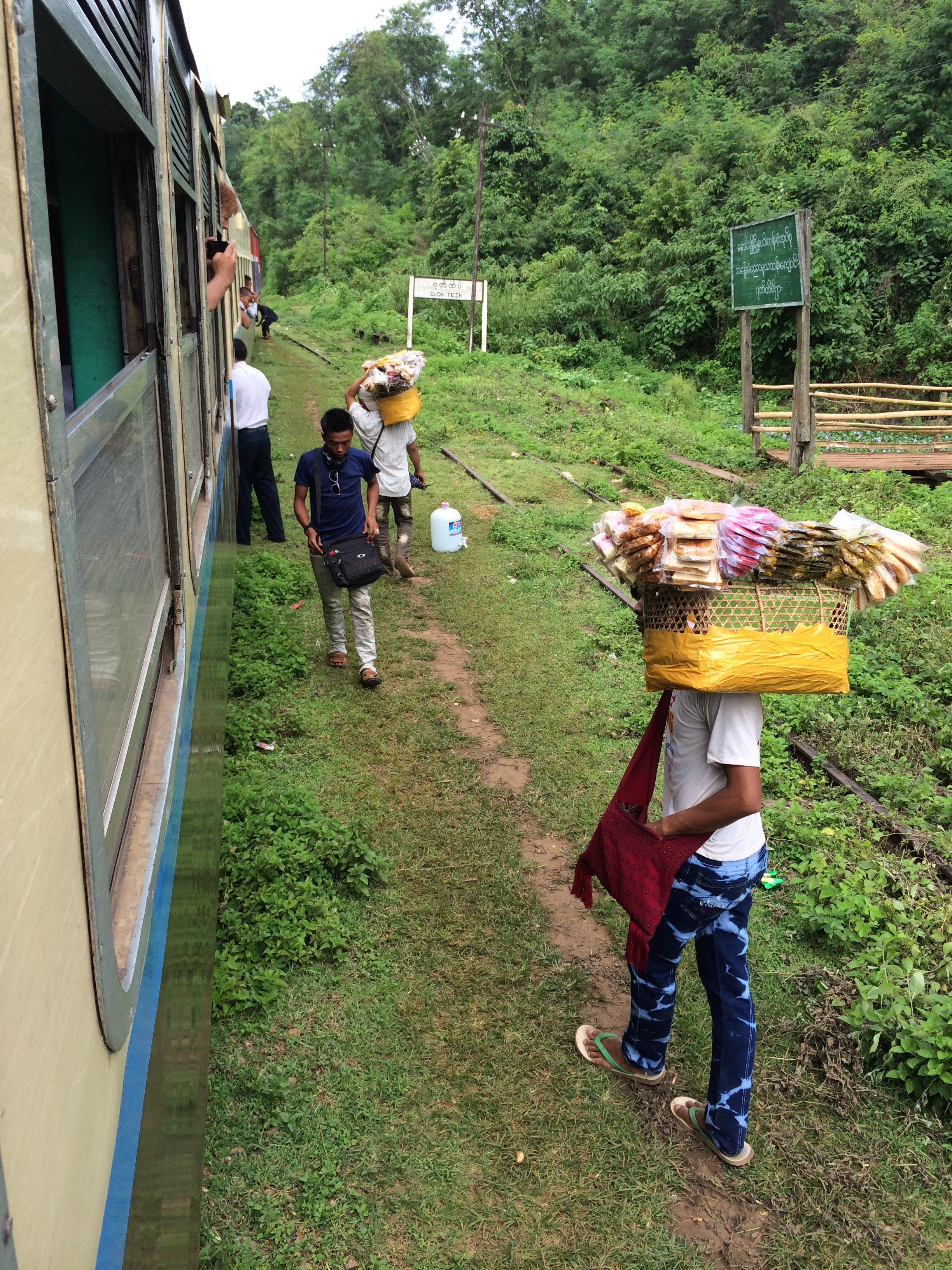
By the time we checked into our hotel, we had only enough time to secure our 2-day 1-night trek for the next morning, eat dinner, and pack.
Upon returning from dinner, Lily, our kind guesthouse keeper, found us and asked, “Tomorrow for trekking, wake up earlier. Leave at 6:30 instead. Is okay?”
“No problem. Why are we going earlier?”
Without any hesitation, she replied with a large smile, “Earlier I receive call from people in village. They say don’t come. Army is there. Fighting. No good for tourists. So you trek somewhere else, Kyaukme, about 1 hour from here. Is okay?”
The fuck?
“They’re fighting in the villages?” I asked slowly, uncertain about what to think.
“Yes. No good. Trek somewhere else. Better.”
Well, no shit. That’s a damn good reason to avoid Hsipaw. I’ll gladly trek elsewhere.
“More beautiful!” Lily claimed, but my guess was she was just using her sales tactics.
***
Early the next morning our small group of three (me, Chris, and Ophelia from France) met with our guide, Sawmying and took a minivan to Kyaukme.
The day was everything you’d expect in a trek through the Myanmar hill tribes: lush green mountains and mud paths, fields of produce, herds of cows, pleasant farmers, several tea breaks in locals’ homes, and learning a different word for “hello” in every village. 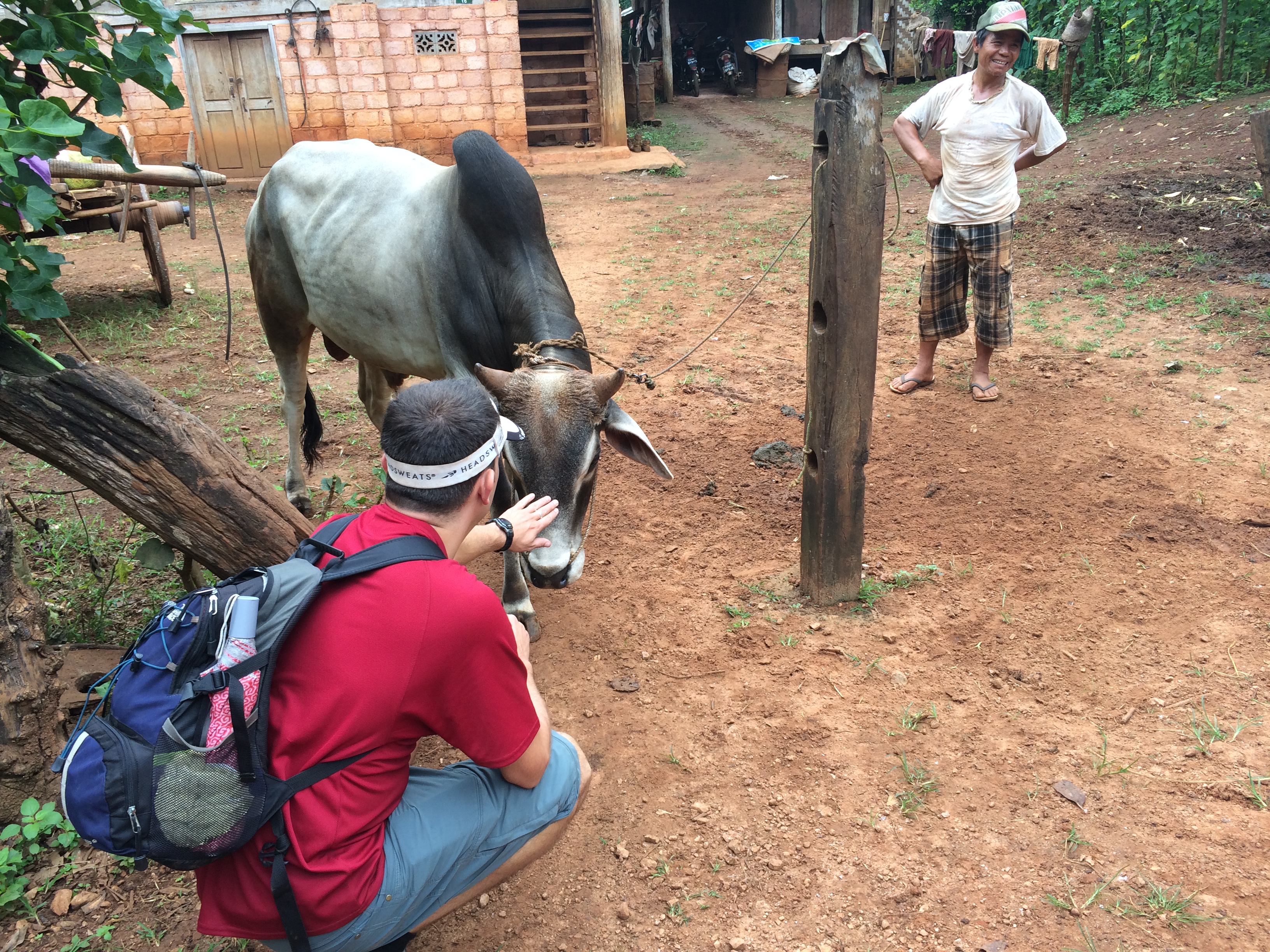

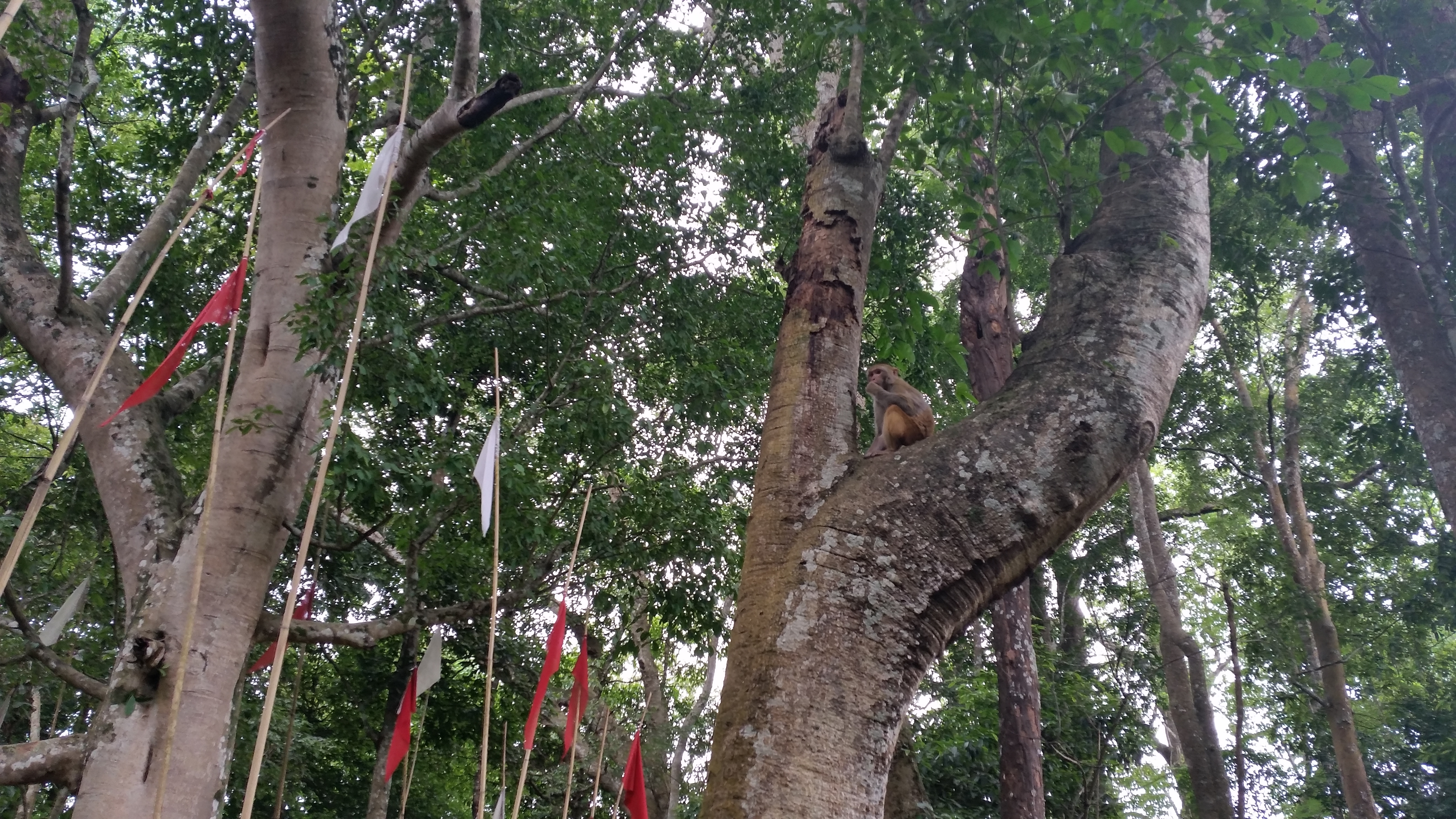
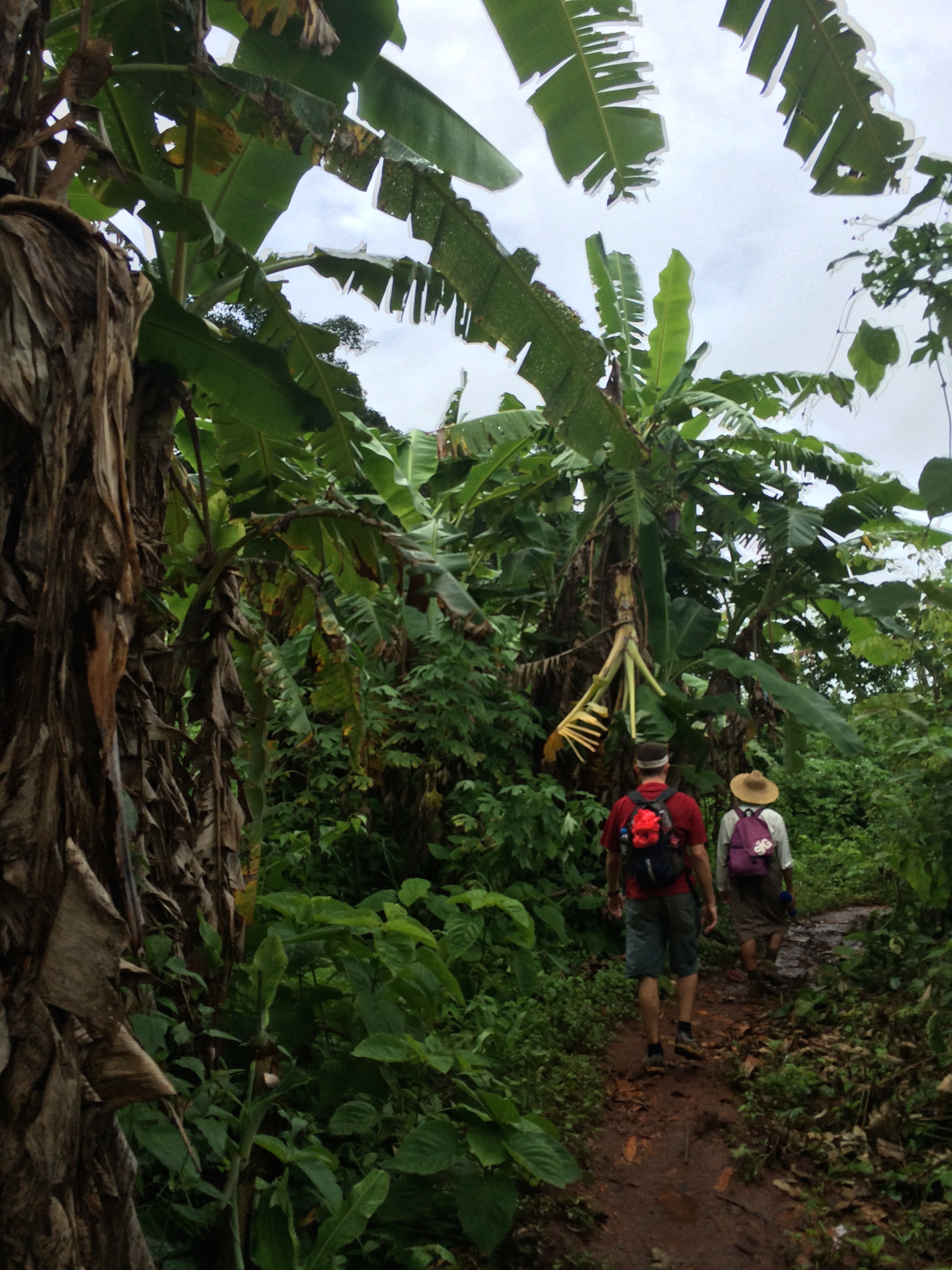
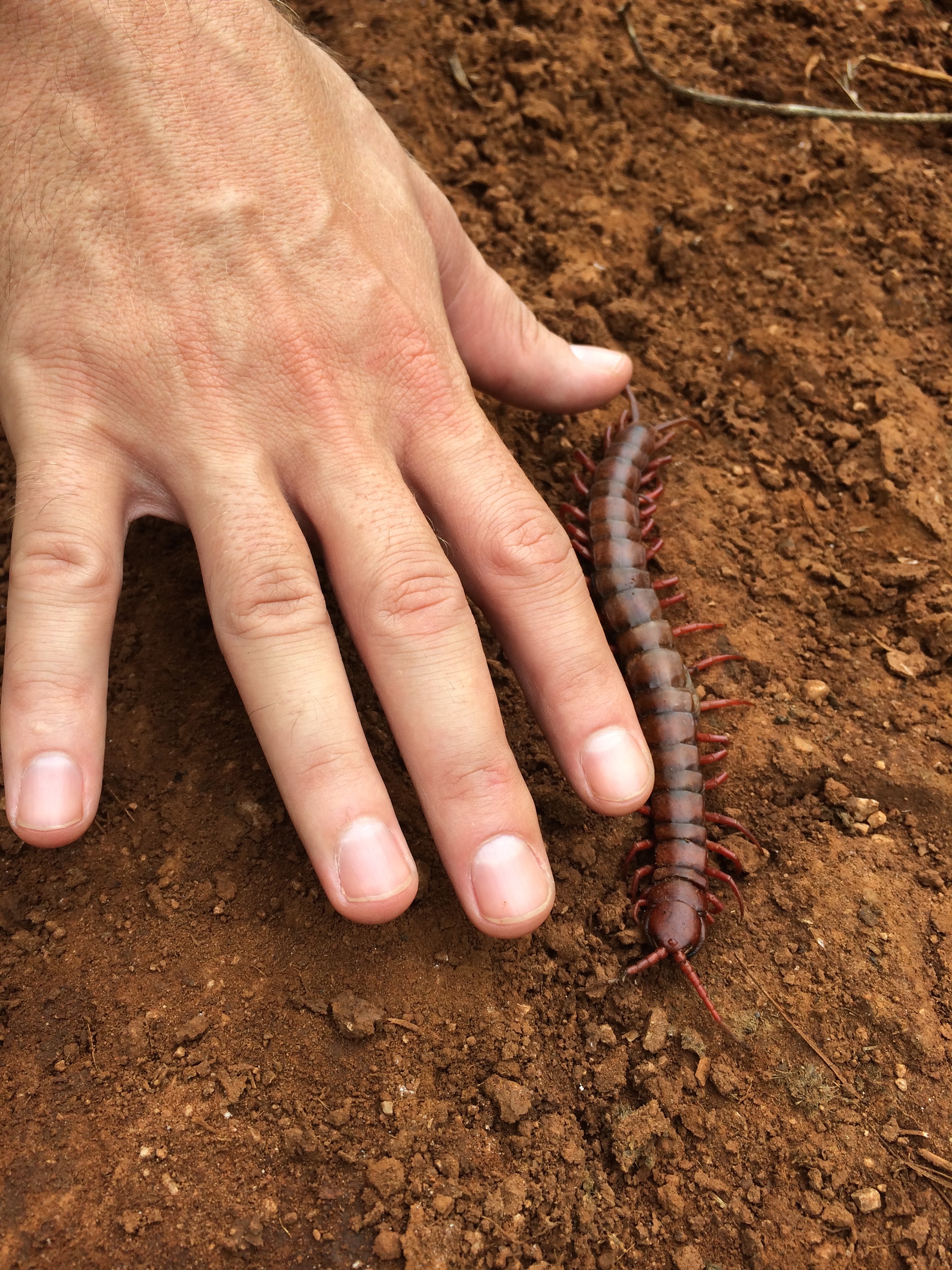
To our delightful surprise, it was only Sawmying’s second time taking tourists through the hill tribes beyond Kyaukme; his first time was only five days prior. He had taken this route to avoid Hsipaw as well; apparently a couple weeks ago when he trekked through Hsipaw with tourists, mortars could be heard on the other side of the hills. He told us that only he and his friend are the only guides familiar with the route from Kyaukme. This meant no tourists and more eager locals! Yay! (We assumed other guides had either canceled their 2-day 1-night trek through the Hsipaw villages, or took tourists on a local 1-day trek around Hsipaw instead.)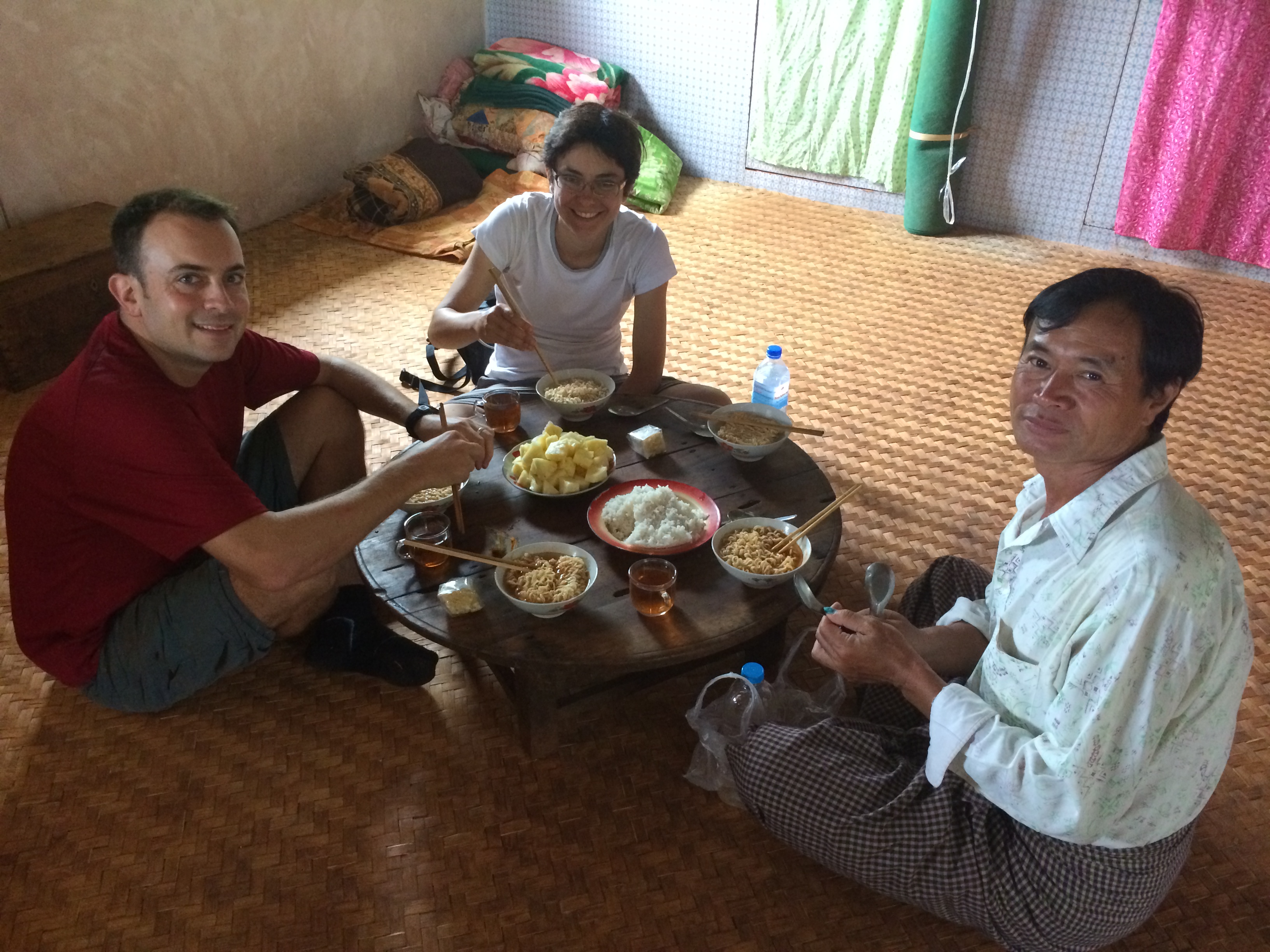
The weather was overcast (perfect!) with few drizzles.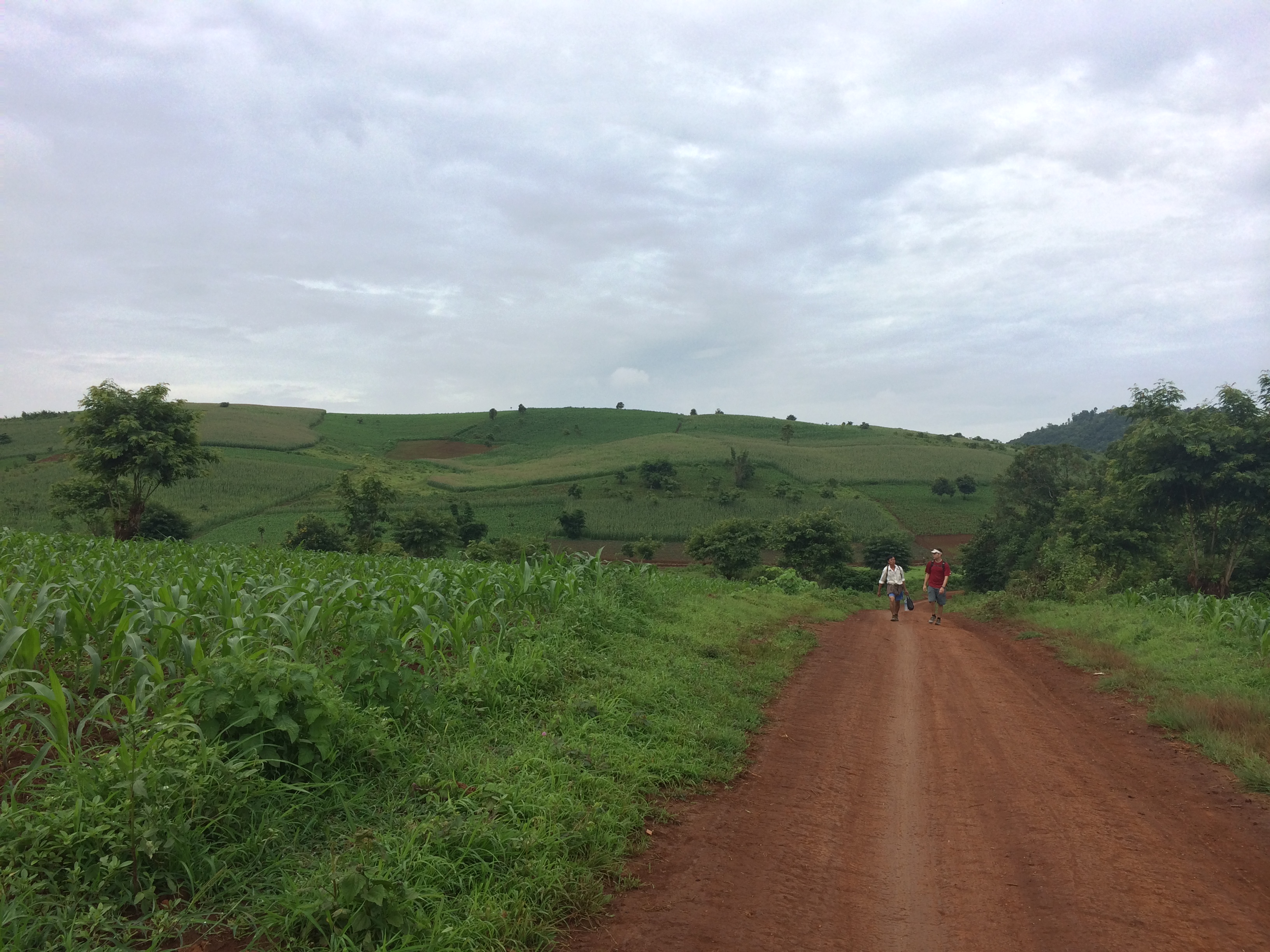
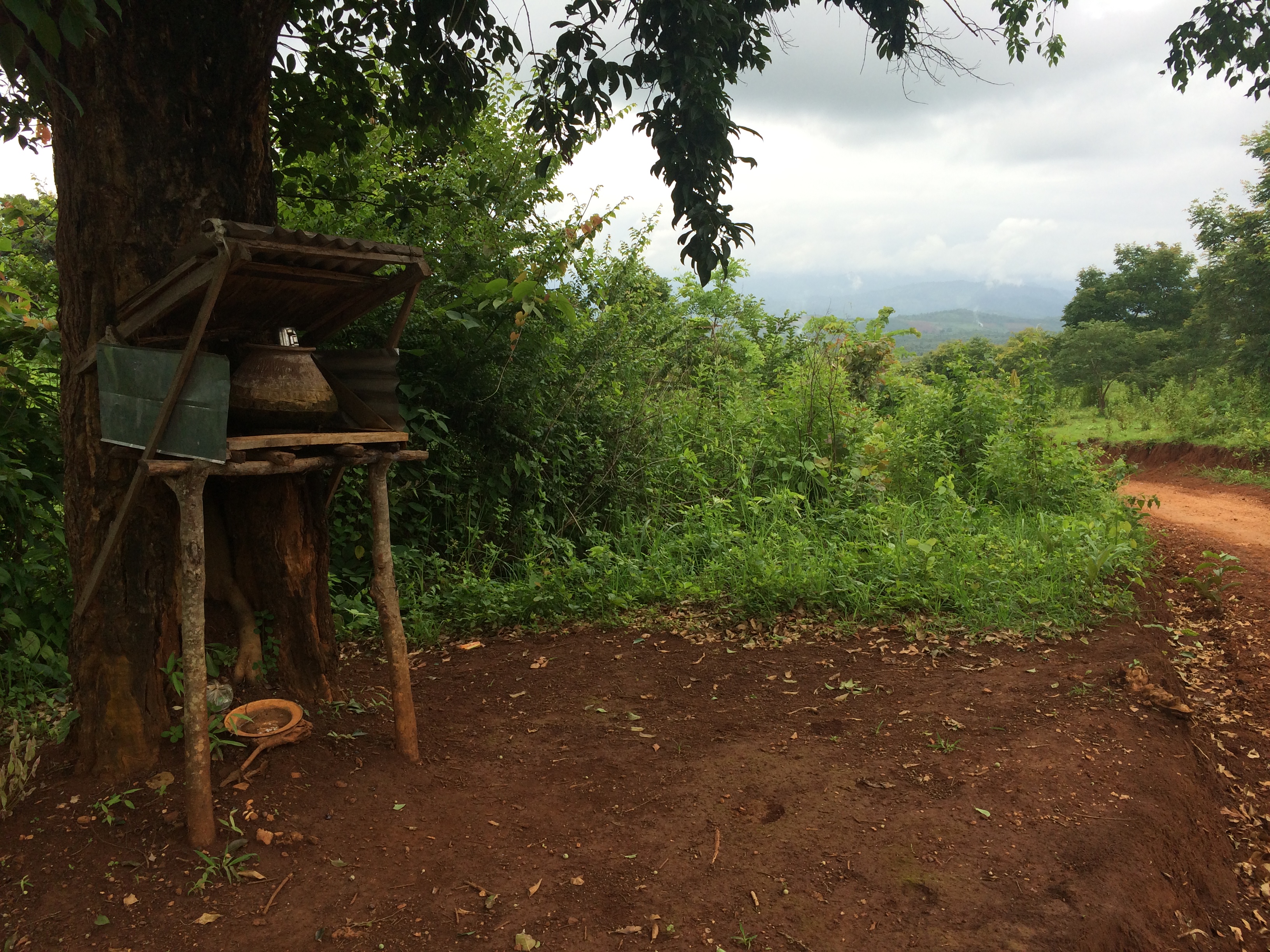
We took our last break late afternoon in this beautiful village. It showcased lovely views of the hills and offered sounds of a nearby gushing stream.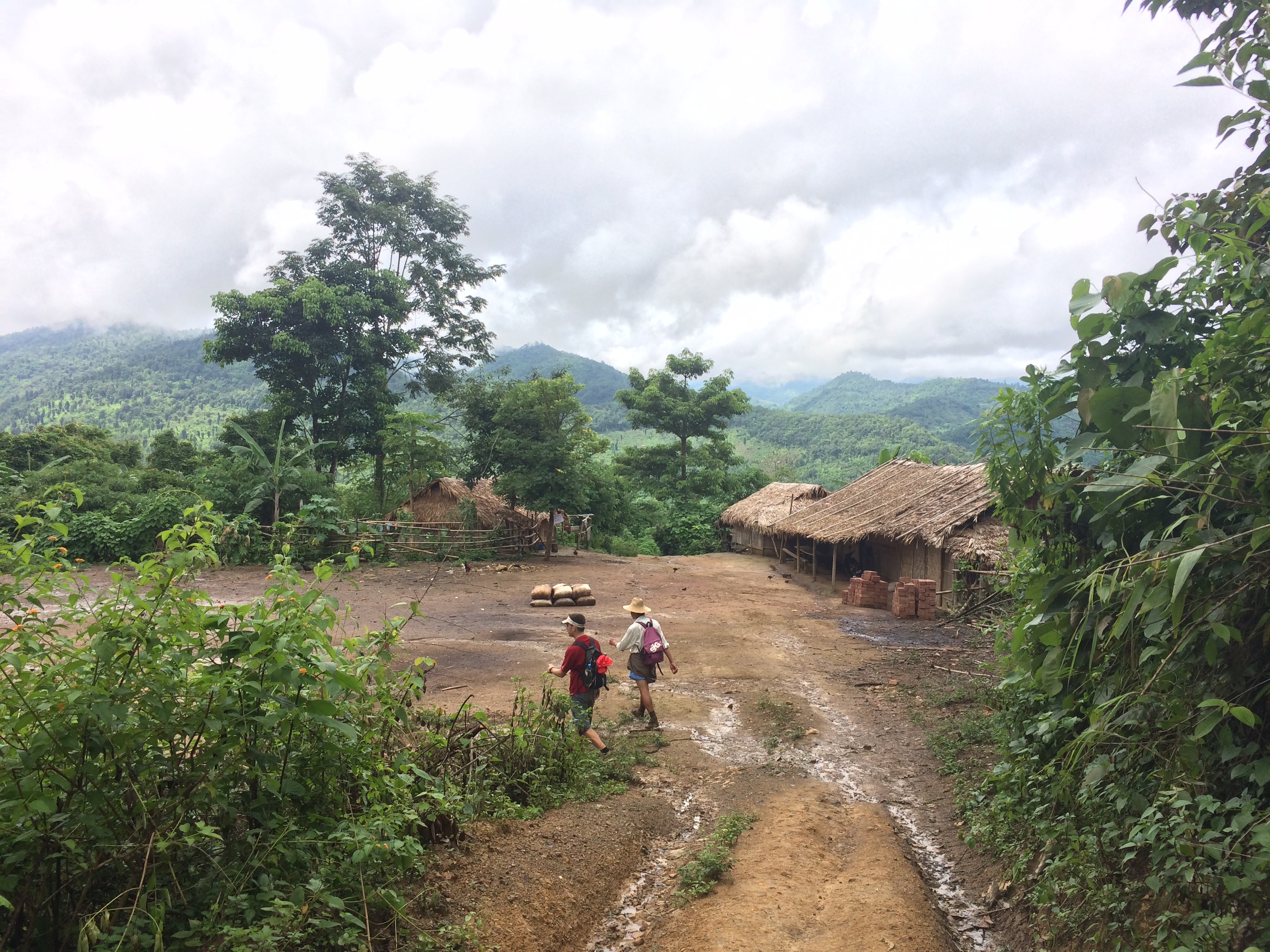
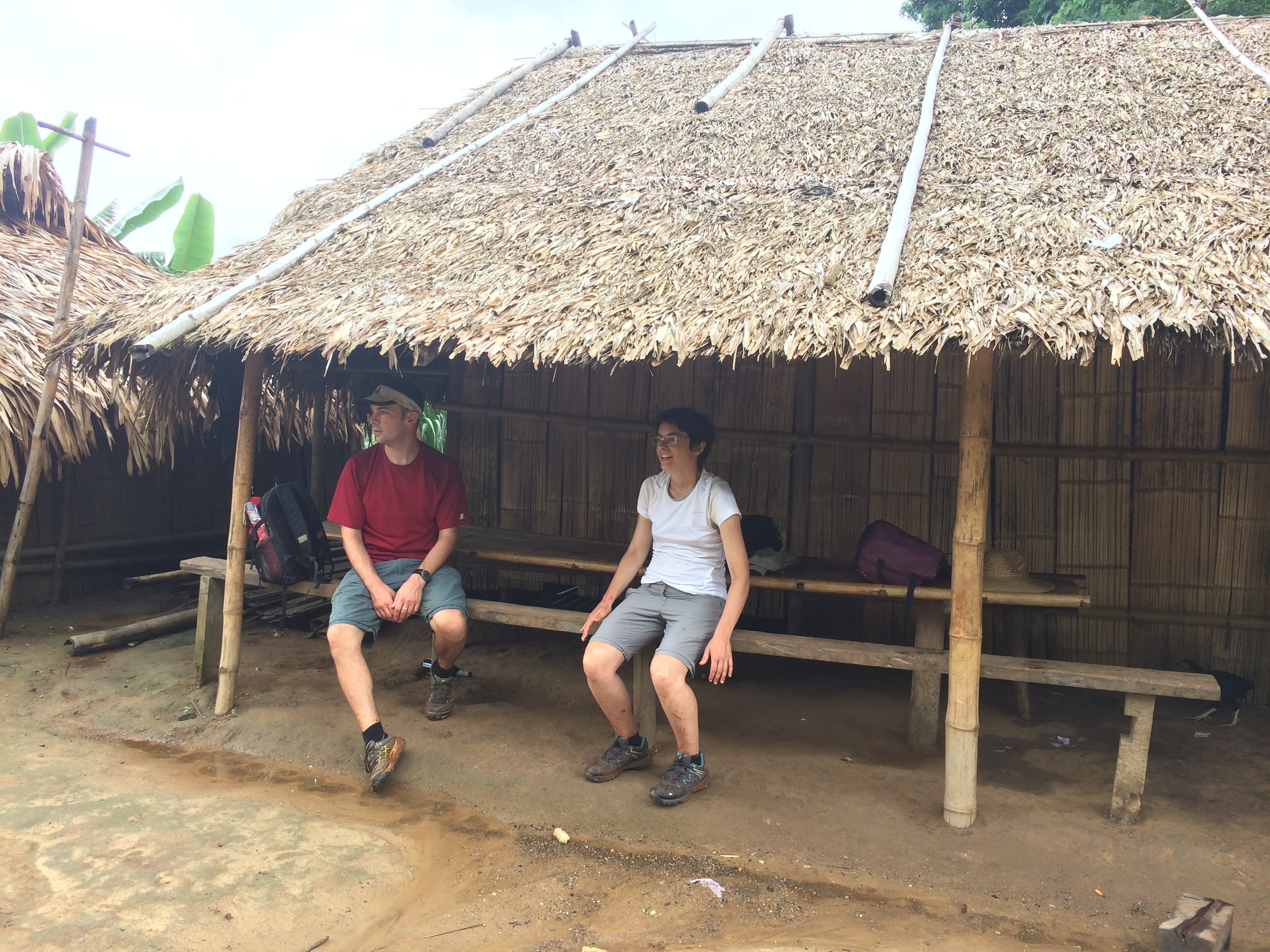
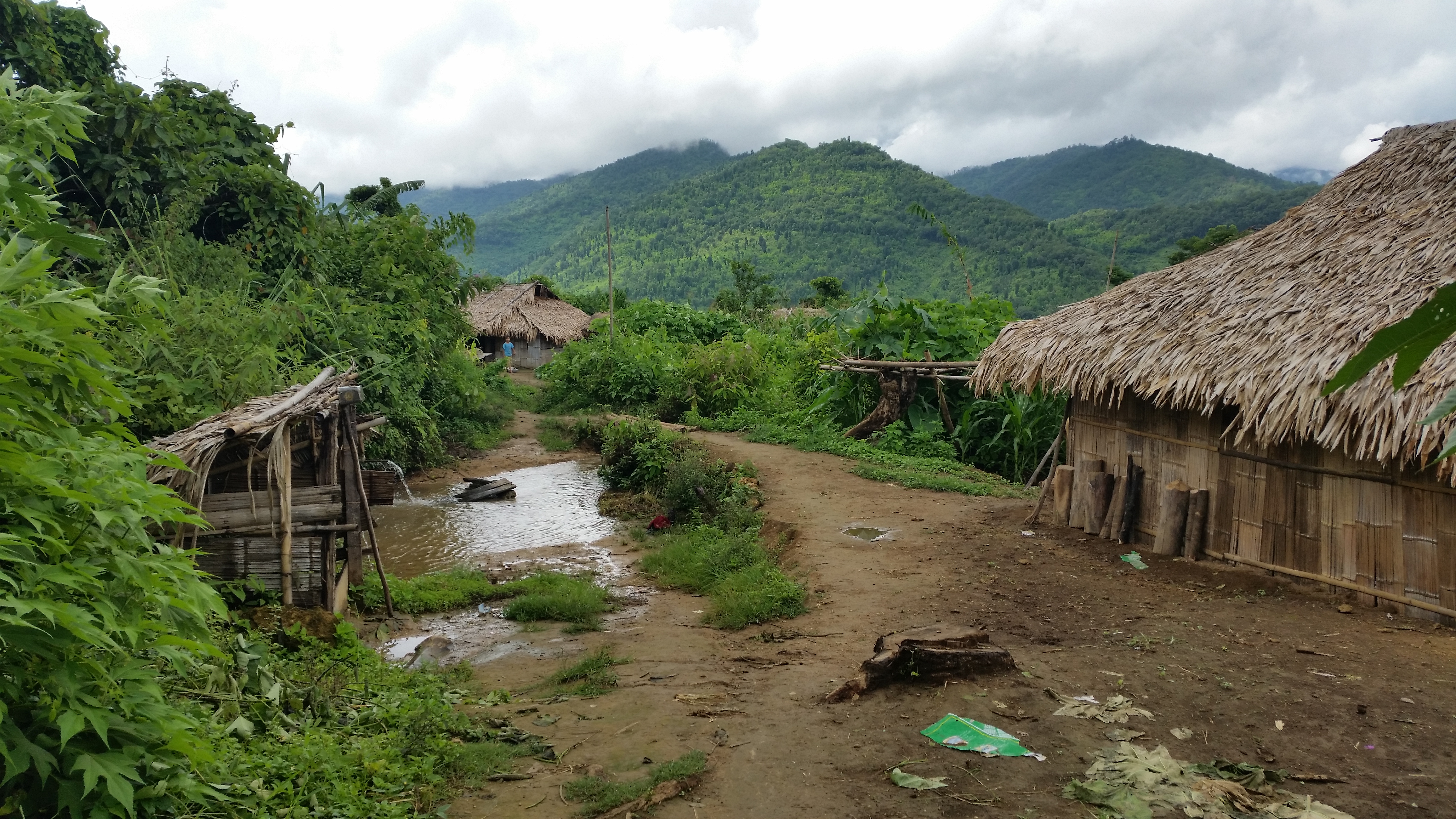
Up until the hut, the route was relatively easy with subtle inclines and declines through farms and villages. After we left the hut, we were faced with a steep, muddy decline filled with switchbacks.
I hope we don’t return the same way tomorrow, I thought to myself.
The decline ended with this adorable, green mini Golden Gate Bridge across the river. 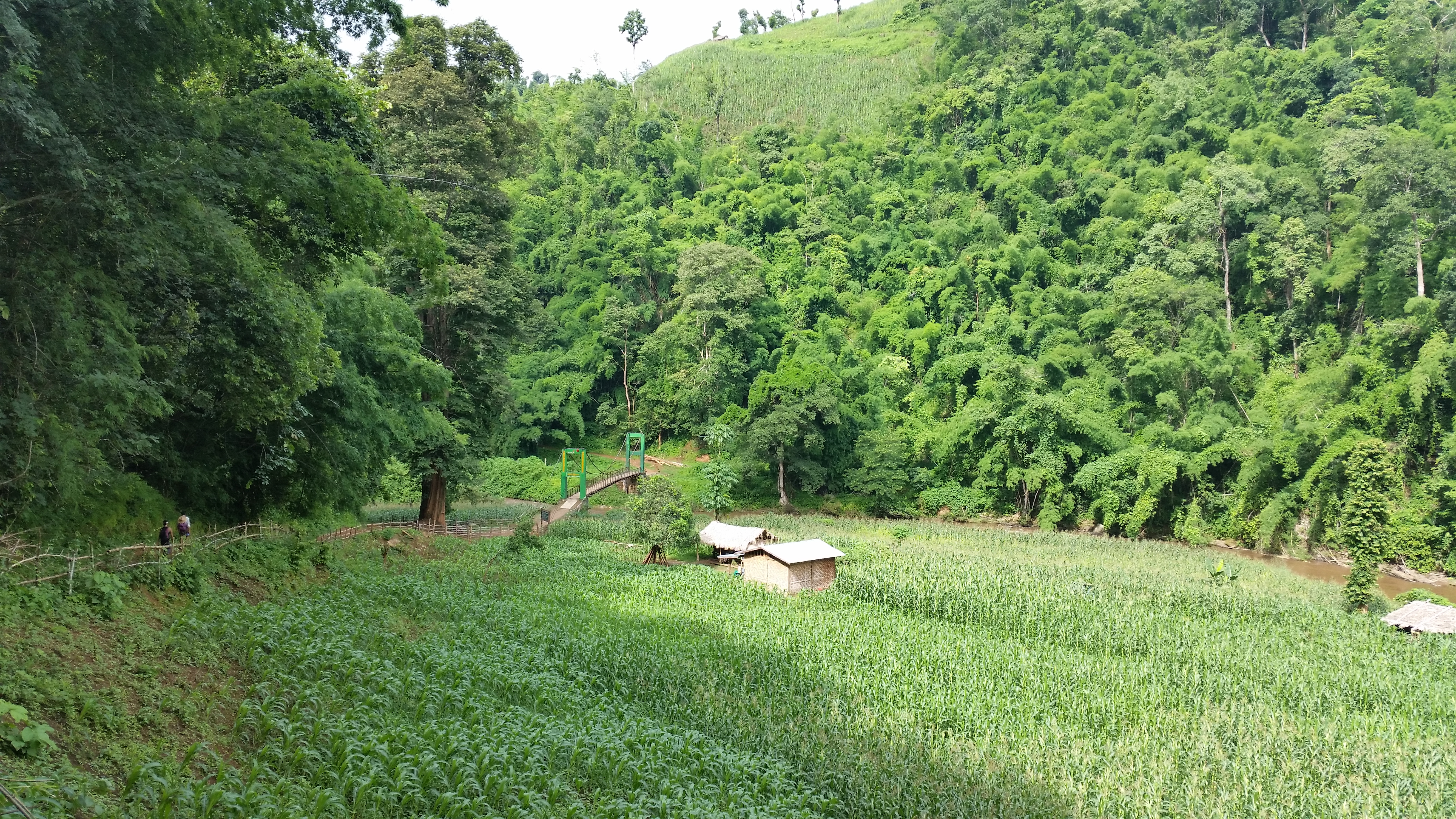
Immediately upon crossing the bridge, the dirt path shot upwards, disappearing into sharp left and right turns. For two painfully sweaty hours, we trekked up and up, hoping each switchback would be our last. Finally a small village could be spotted in the distance, and Sawmying told us that would be our shelter for the night.
As we sauntered through the village, I felt like Belle from Beauty in the Beast, strolling through the neighborhood as locals keenly rushed to their windows to get a glimpse of our foreign faces. Like Sawmying said, this was only his second time taking foreigners through this village. Excited but modest chatter could be heard regarding our arrival; shutters opened as we passed, and windows filled with wide-eyed children and toothless old ladies like a domino affect through the street as we trudged up the hill. Doors opened and people stepped out just to greet us with a smile and wave.
“Comme sa!” was the greeting in this village, and these words rang throughout the streets until we finally reached our destination, which was surrounded by donkeys and horses.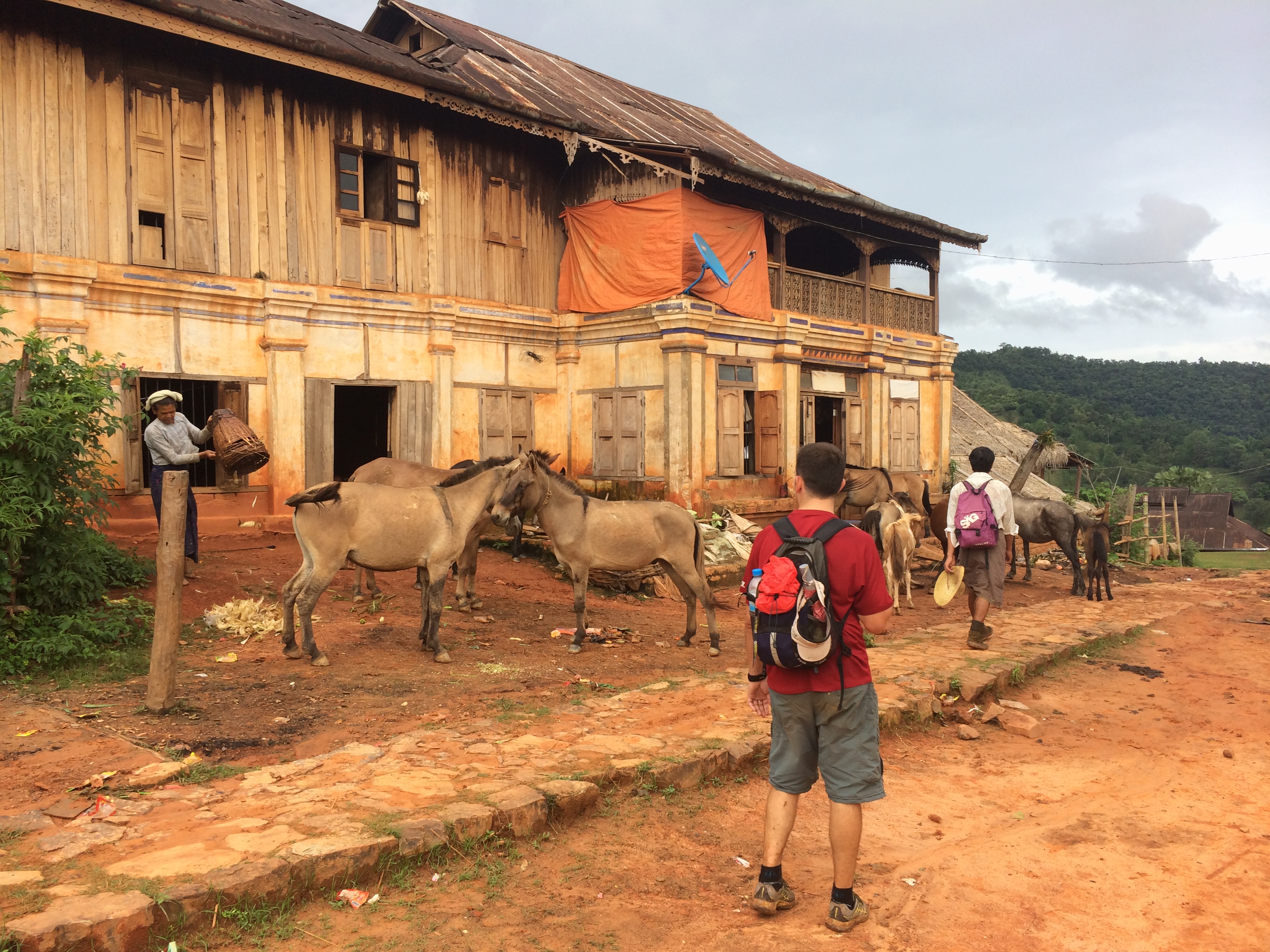
Exhausted from our journey, we plopped down onto a wooden platform where we proceeded to remove our damp socks and shoes. After the two hours of hard uphill trekking, we looked forward to a bath, dinner, and sleep. As we settled in, Sawmying and the lady of the house engaged in a deep conversation. His eyes had a hint of concern, but we chose to think nothing of it.
For the next thirty minutes Sawmying sat in silence, staring off into distance, clearly contemplating troubled thoughts. I assumed he was tired, as I recalled his 45-year old body ambling up the hill behind the rest of us. Ophelia went for a quick wash and the lady of the house began preparing our meal. Chris and I happily wiggled our toes and stretched our legs.
“What time are we getting up tomorrow?” I asked Sawmying when Ophelia returned from her bath.
“Earlier than yesterday,” he responded slowly. “Maybe 7:30. Is that okay?”
“Not a problem. We can leave earlier if you want. Whatever you think is right,” Chris replied.
“Well…earlier will be better. Maybe 7…” Sawmying trailed off.
“Why earlier?” I asked curiously.
He paused. “Everyone, can you come together? I have to tell you something.”
Slightly concerned, we huddled around him.
“The lady here told me that the Shan army is thirty minutes away, and the Myanmar army is an hour away. They were further away before, but now they have come closer. They were fighting two hours before. Other villagers said that they could be fighting more…maybe they’ll come here. It might be okay to stay here, but we should leave really early tomorrow…it will be better. Or maybe we can leave now and stay in another village tonight.”
We were slightly shocked.
“What do you think is better?” Chris broke the silence.
“I think we should go back to the other village.”
It was 6:05pm. Sunset was less than an hour away.
“Then we should hurry.”
We quickly packed our belongings and disgustingly put our wet socks and shoes back on. Sawmying told the lady of the house our decision, and in response she packed up the vegetables she was preparing for us and handed him a large bag with mosquito nets. We stocked up on water (it was the only place in the remote area where bottled water could be purchased), wished the lady and her village safety, put on our headlamps, and set out into dusk. 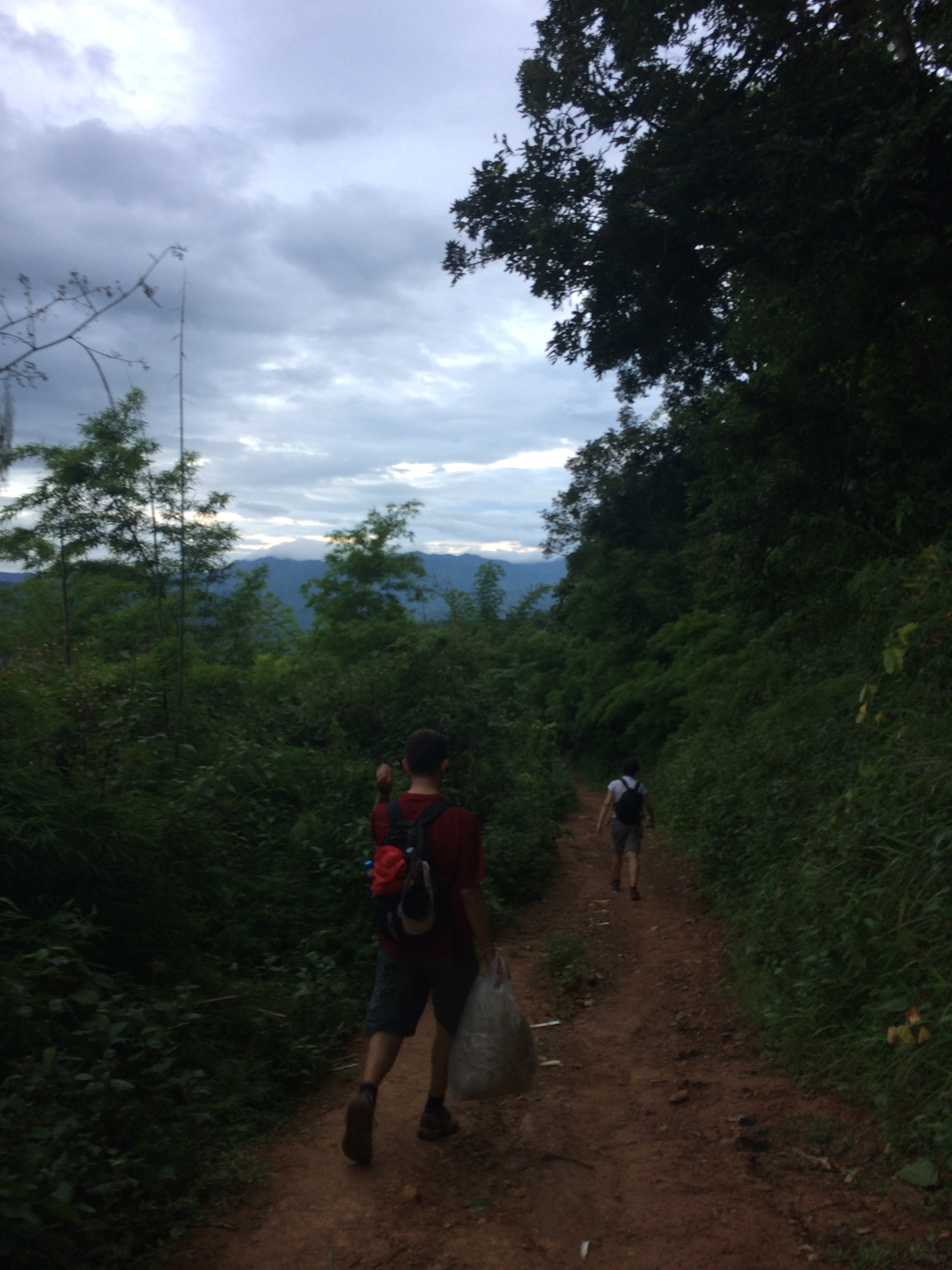
“Which village are we returning to?” I asked. As it turned out, we had to backtrack down the treacherous hill and go up the one I had hoped not to climb the following day. Instead, we were going to climb it today, tonight, right now.
Already drained from that day’s trek, we hastened down the hill. My knees and feet were shot, but we had to hurry. Light was fading fast. What took two hours to trek up took one hour to trek down, and by the time we crossed the bridge, the only distinguishable light came from the flickering fireflies.
That hill was a nightmare. The pitch-blackness did not allow us to anticipate the upcoming steep switchback, and every once in a while my shoes would lose grip on the slippery surface. With feet and calves burning, I followed the single file line up the hill. Each step brought more pain, and as I dawdled behind, the distance between the leader and I grew. Chris was supportive and stayed behind with me.
“Are you ready for Hong Kong?!” Chris playfully asked me.
“Hell. Yes.” We both missed having Internet and useful smart phones.
Finally, we heard the familiar rushing water of the stream. The same dogs that barked at us when we left began to yap again. We arrived unannounced at the doorstep of the familiar hut exactly 1 hour and 45 minutes after our departure.
The man of the hut turned out to be a Christian priest who held community prayers in his home. When we arrived, almost the entire village (25-30 people) sat in the common area, reading and singing in unison as the priest strummed his guitar-like instrument beneath the single light bulb dangling from the center of the thatched hut. Half the people were children, who watched us curiously as they sang.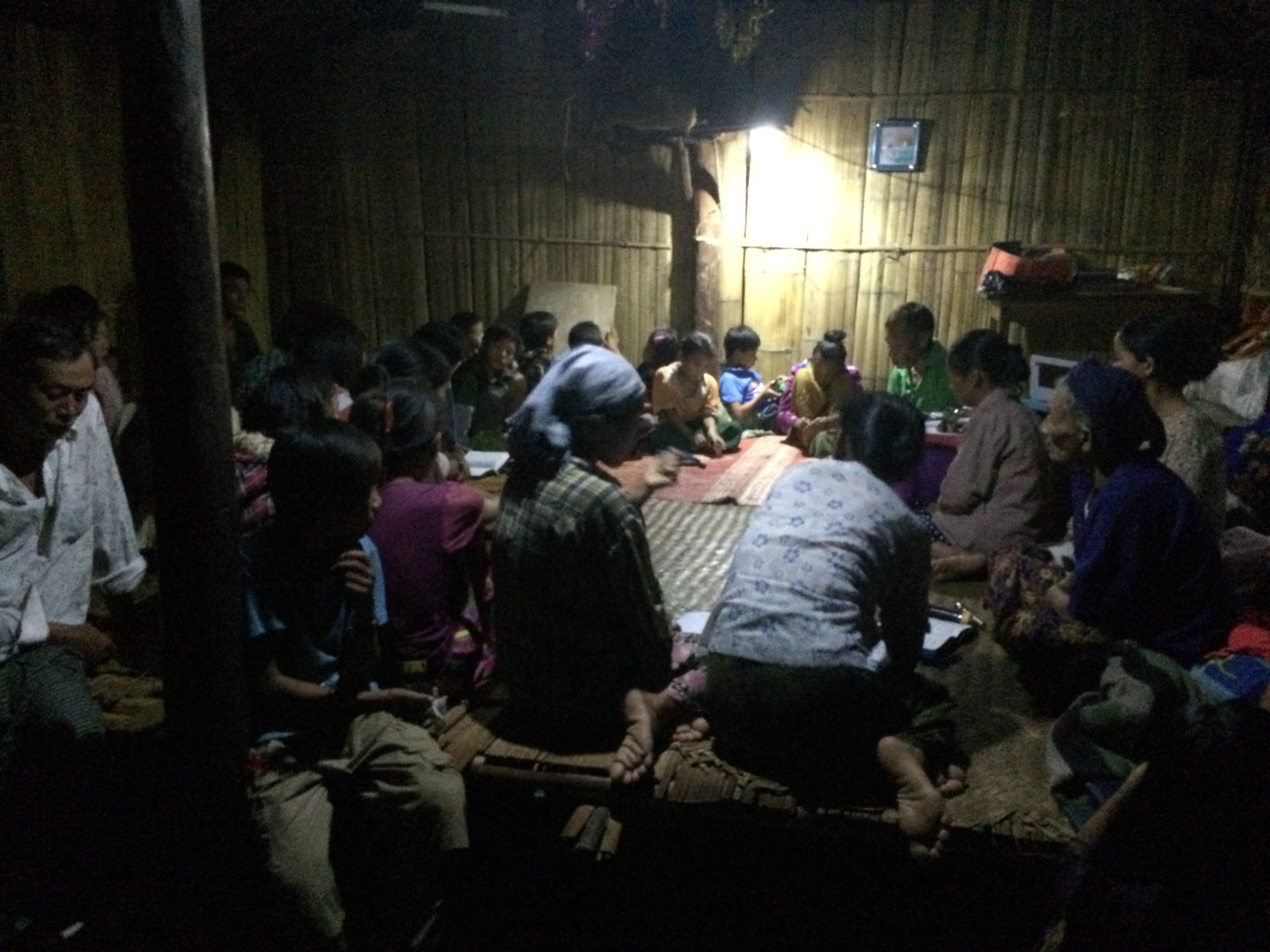
All four of us soaked our sweat-drenched bodies in the refreshing stream for a quick bath. We were just barely able to make out the bar of soap and shampoo with the two headlamps resting on some stones. It was one of the more authentic bathing experiences I’ve had, and I looked forward to being dry in clean clothes.
After our stream bath, Ophelia, Sawmying, and I joined the sermon. Everyone had a few more words to read from the book, and then all the adults moved aside for the children. The children gathered around the priest and happily sang a song in unison as he strummed his instrument, playfully rocking his body to the song. We marveled at the locals practicing their faith, and Ophelia and I discussed how much happier we were to be spending the night with this tiny community.
When they finished, our simple dinner of rice and boiled vegetables was served at around 9:30pm. I was quite famished, since our lunch of instant noodles and rice was nine and a half hours ago at noon.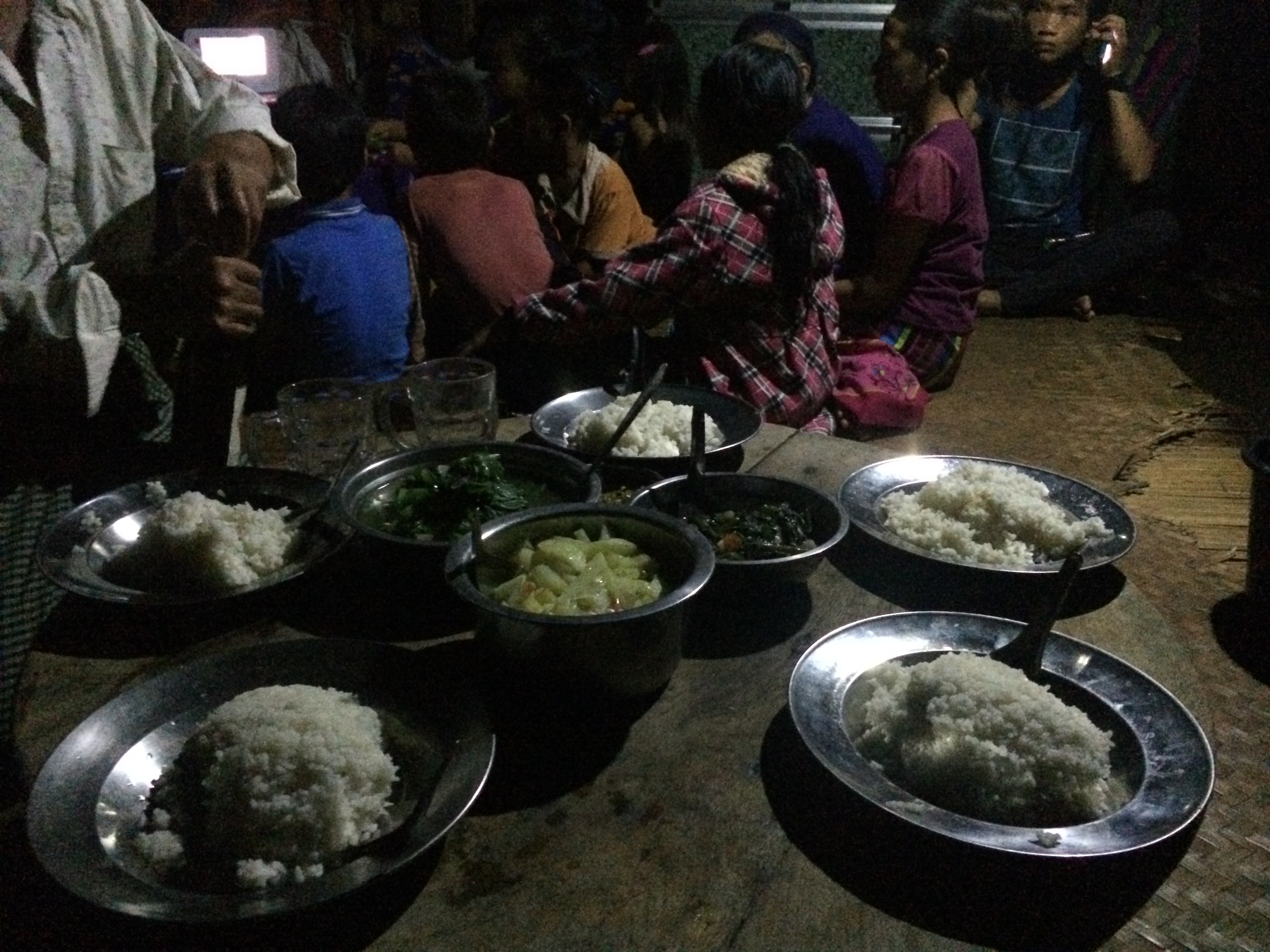
After dinner, our “beds” were set up—basically two blankets over a straw mat on the wooden floor with the pillows pushed up against the back wall. My pillow reeked of a peculiar stench (their laundry machine was the stream), but at least the mosquito net did its job. The priest and his wife gathered all seven of their young children and went to bed in their “room” across from the common area where we would be sleeping. Chris and I fell asleep anywhere between 10:30-11pm to the sound of the stream in the distance.
Little did we know that on the other side of the thin wood-plank wall where our heads rested was a broken alarm clock. It would go off at 4:50am and repeatedly again and again as the sun climbed over the hills. Its name was Mr. Rooster. When Mr. Rooster was awake, he wanted to make sure everyone else was awake too.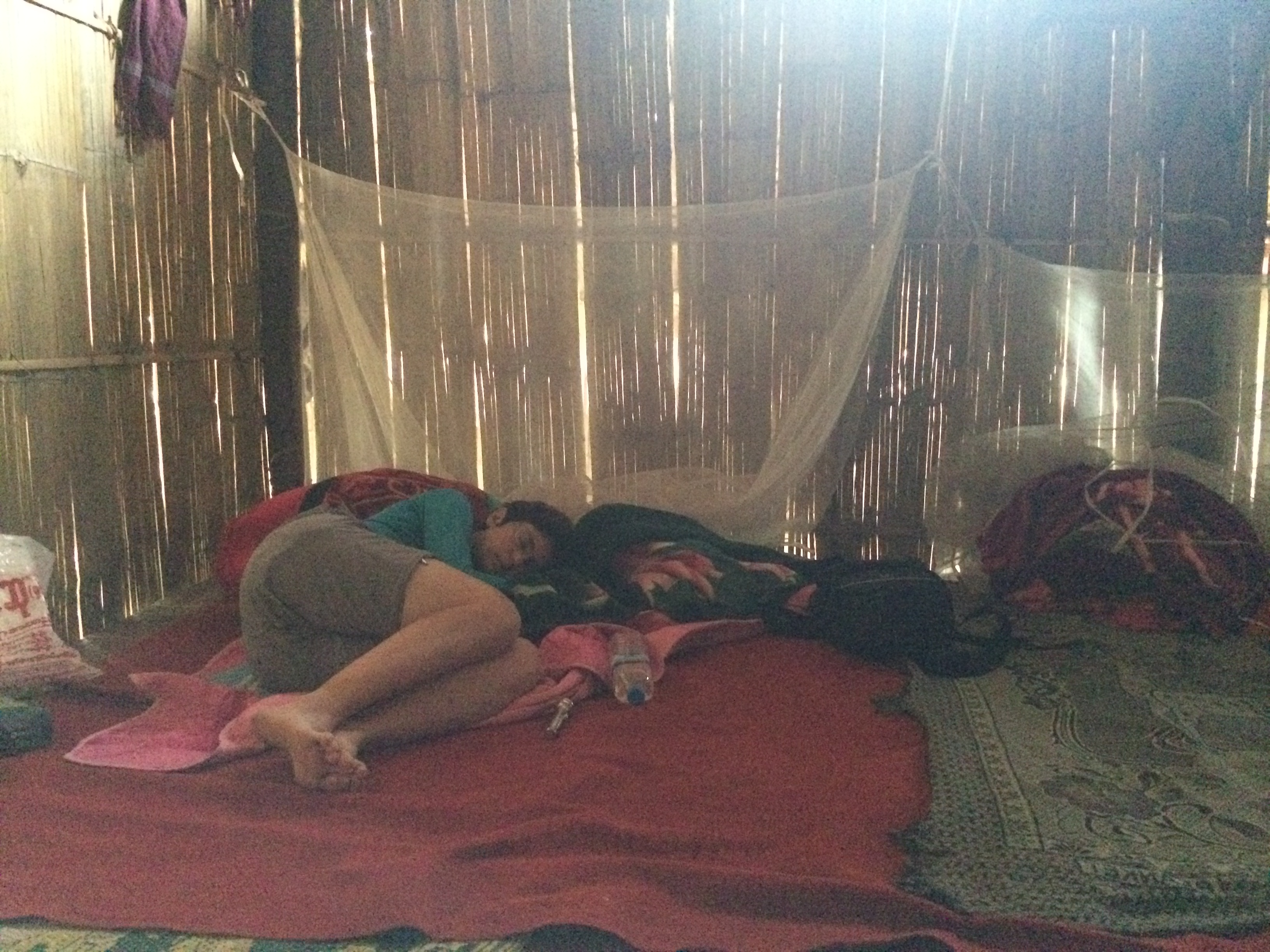
Chris and I lied awake in our blankets for an hour and a half, and I finally got up at 6:30am when I couldn’t take the screeching any longer. The entire family was already up and about. Hooray for authentic experiences!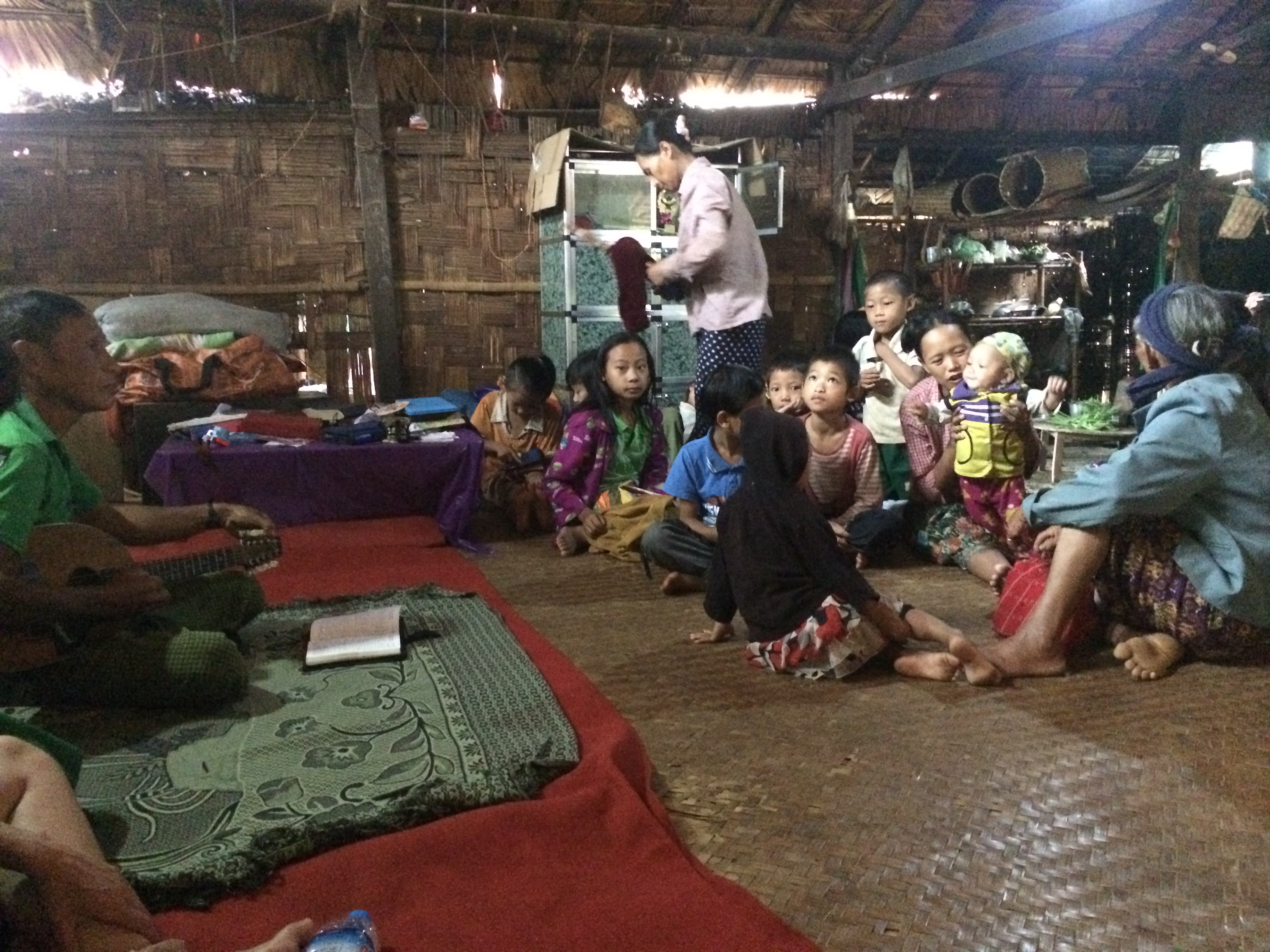
Over breakfast we learned that we were the first foreign guests that the priest had hosted in his home. Sawmying knew that he and his family were not expecting us to return and stay that night, but because he was a priest, Sawmying knew he would not turn down the offer to help us.
We left around 8:20am and had an uneventful yet miserably wet trek back to Kyaukme. Unfortunately it rained almost the entire way back, making us uncomfortably wet and muddy. At around 11, we completed our trek.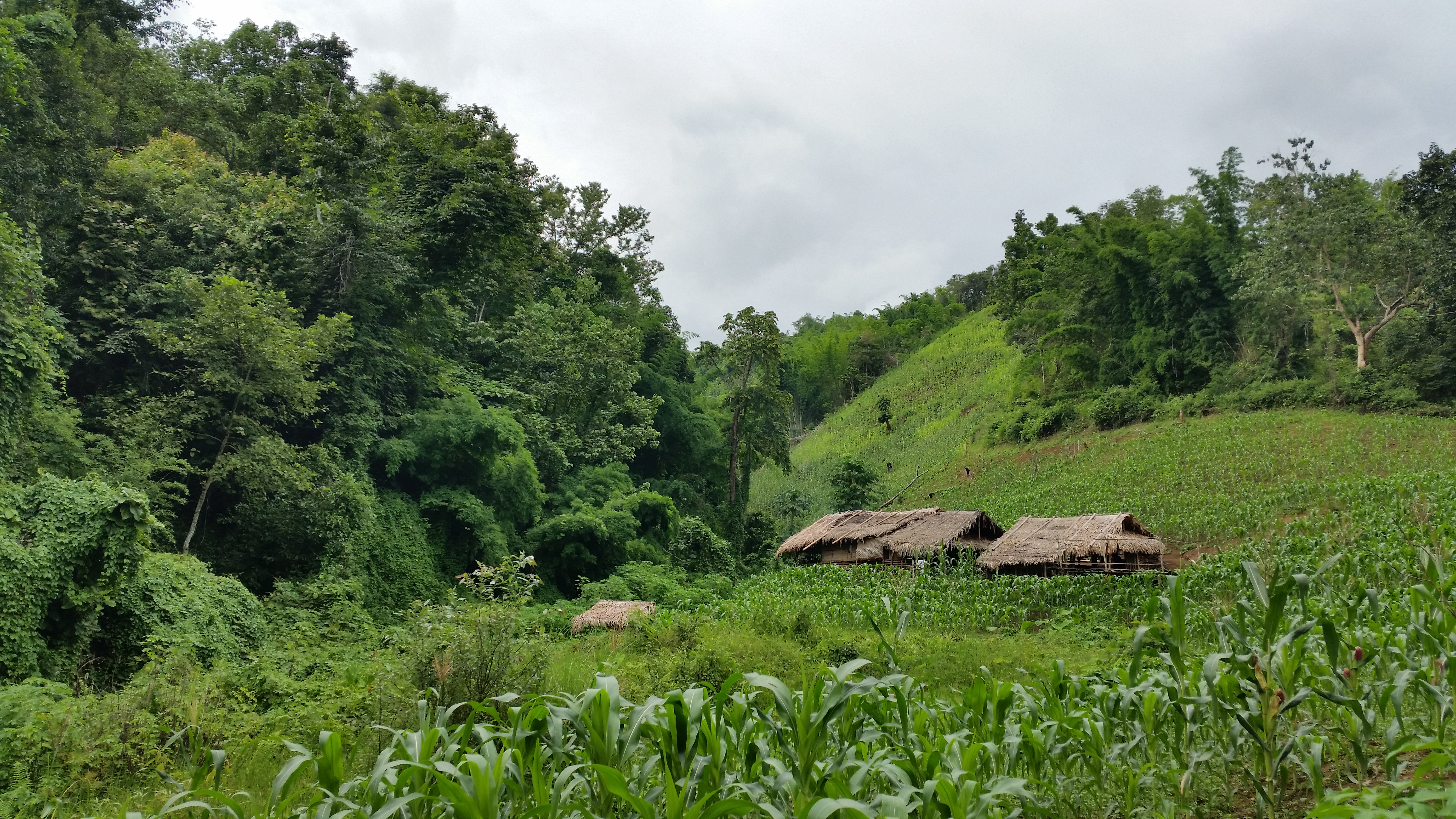
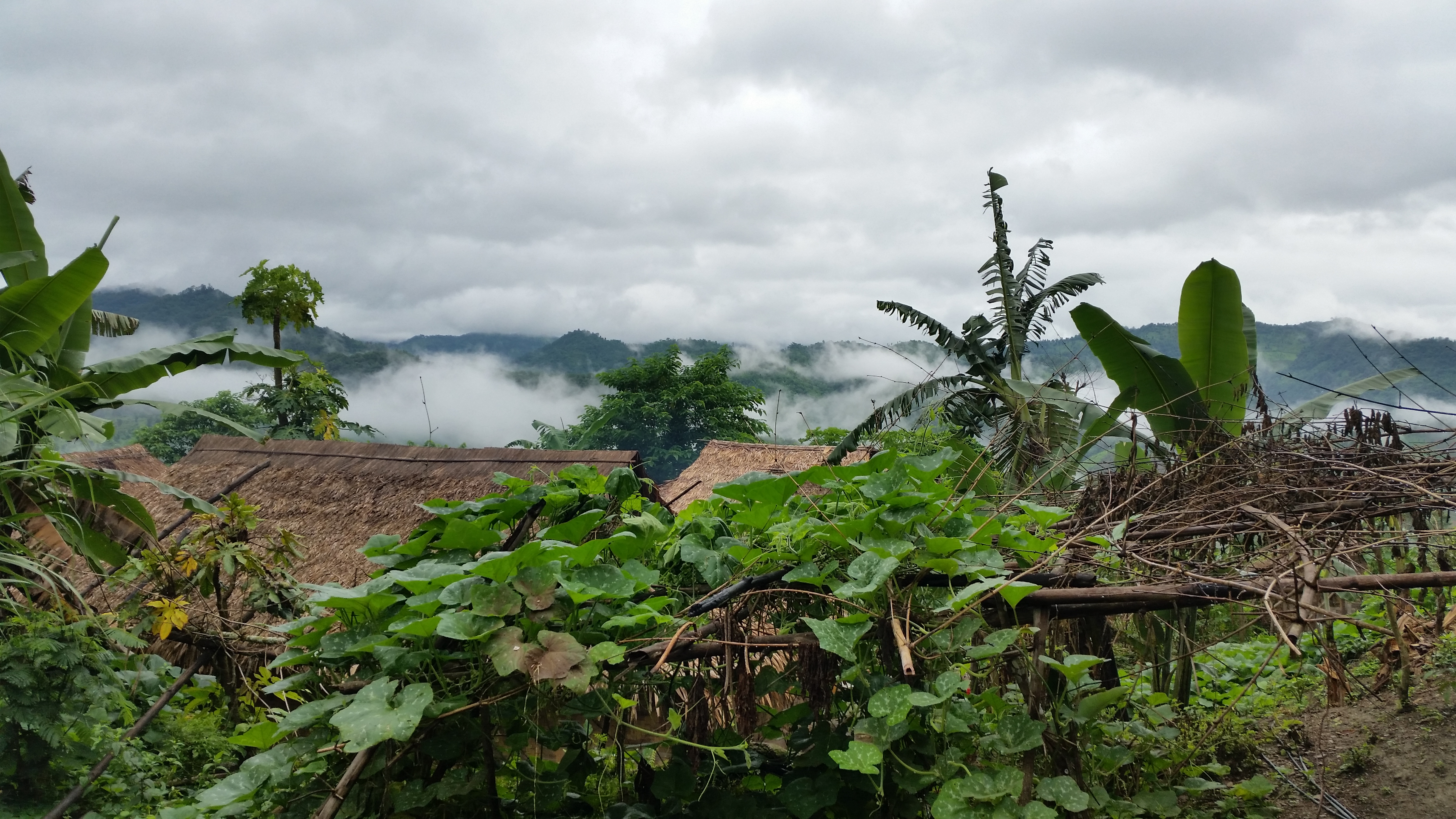
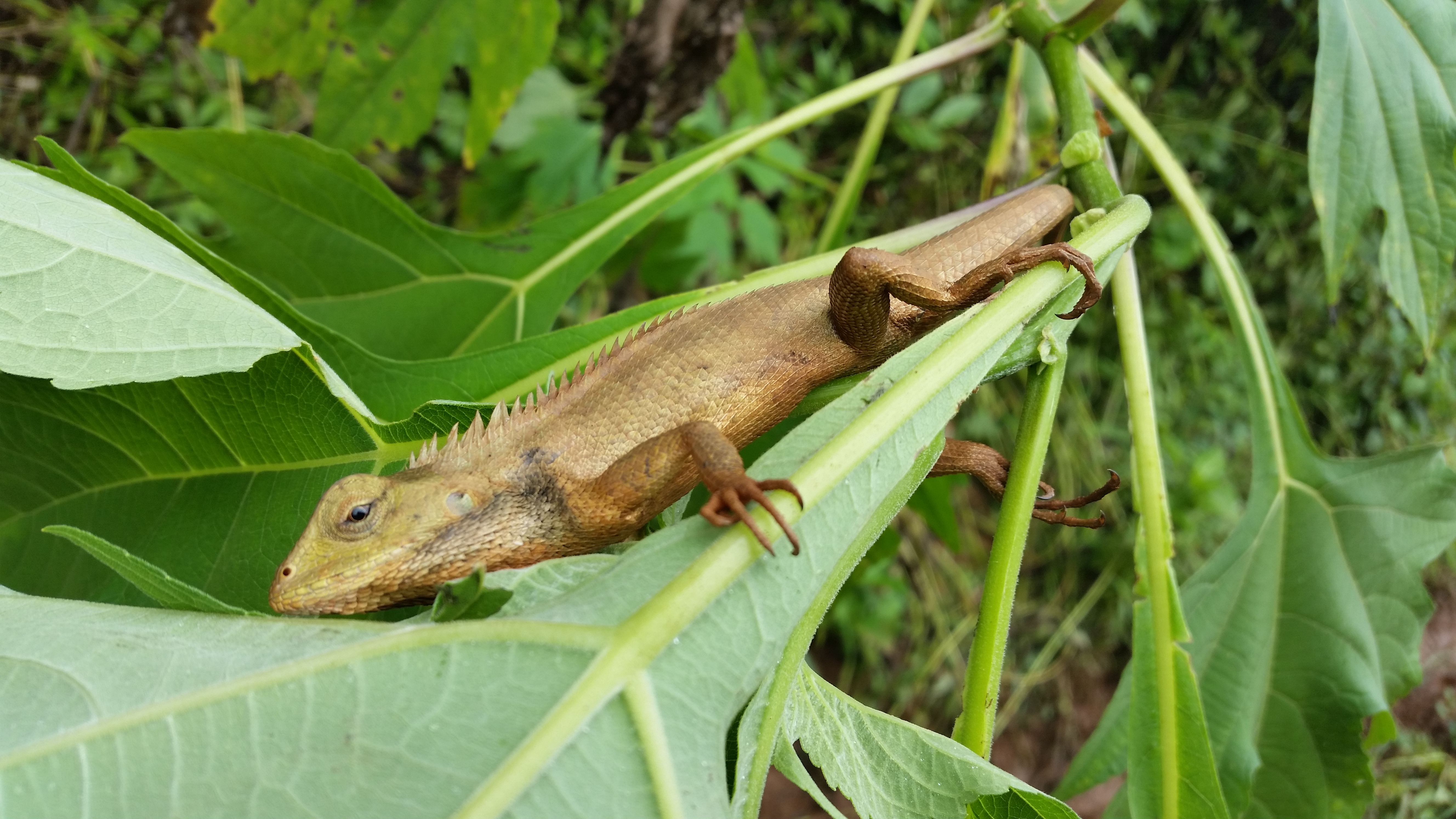
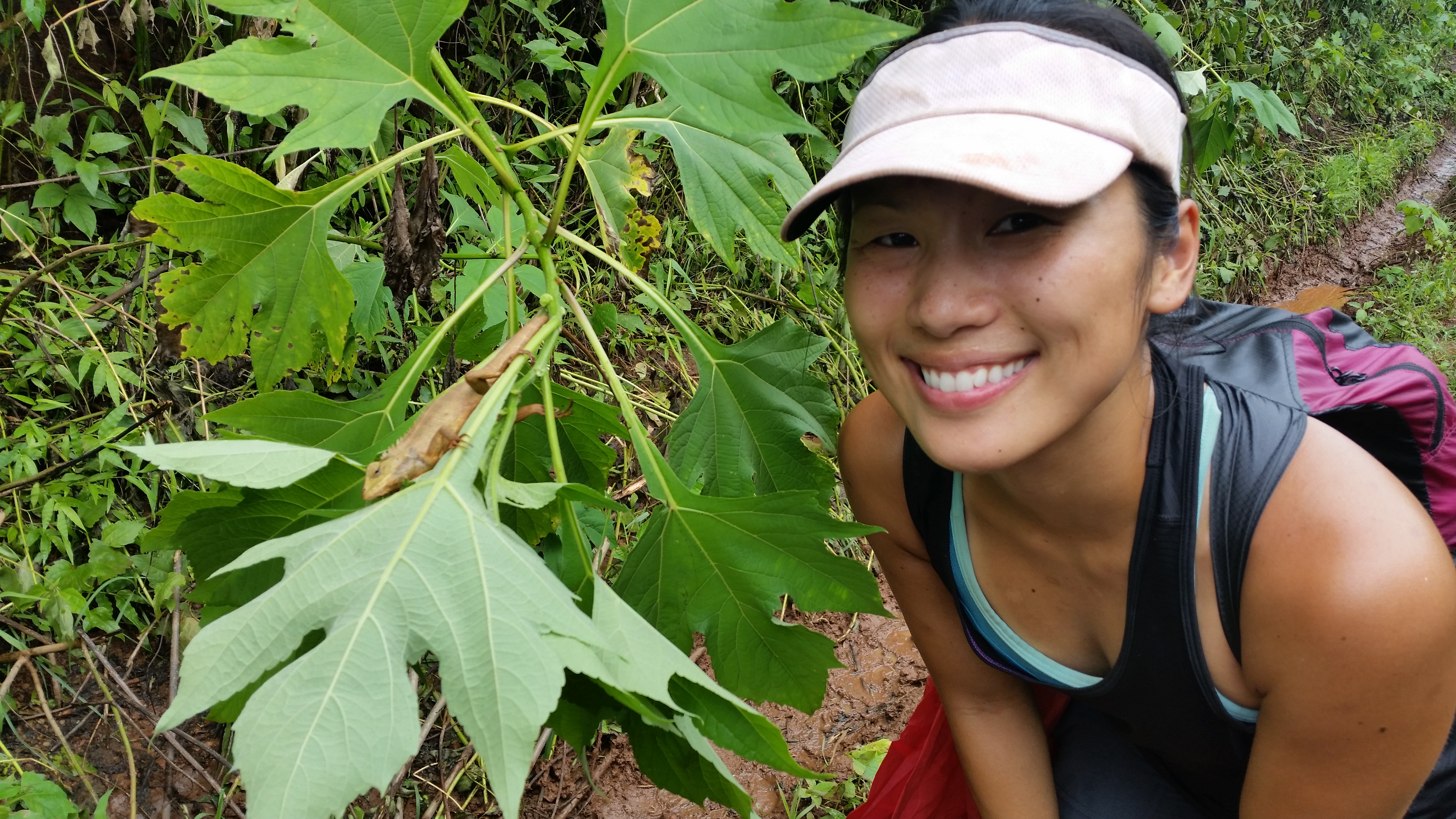
Despite the past couple days being some of the most authentic experiences I have ever had, I never want to face that type of adventure that again. Getting a glimpse into everyday life by sauna-train was interesting. Trekking through villages that hardly ever see foreigners was gratifying. Dredging up and down hills in the complete darkness to potentially avoid one of the longest ongoing civil wars in modern history was formidably adventurous. Seeking shelter in the welcoming home of a priest and his family in the middle of the Myanmar hills was priceless. The trek from Kyaukme (instead of Hsipaw) was our final excursion in Myanmar prior to heading to Hong Kong, and it will definitely have a lasting impression.
***
We returned to Hsipaw around 1:30pm and boarded a VIP sleeper bus en route to Yangon that same night at 9:30pm. After looking at flights out of Mandalay, we had decided last minute to fly out of Yangon on July 22nd because there were better options.
The bus ride took longer than the 12 hours they claimed it would take. Our bus ride took 16 hours, including the 2-hour wait from 3-5am outside of Mandalay due to that damned 9pm-5am curfew. Fortunately our VIP bus was incredibly comfortable; apparently VIP buses are each equipped with a young, attractive Myanmar woman dressed in a form-fitting uniform. After the miserable 12-hour train ride and the 16- hour bus ride, we both felt that we were thoroughly prepared for our flight home next month.
I realized that since we were returning to Yangon, we could have potentially visited Mrauk U by flight and slow boat. However, my patience for travel in Myanmar had just simmered down to dissipating droplets on a hot pan. The excruciatingly slow train ride and the whopping three hours it took for us to book our flights to Hong Kong after multiple attempts online wore me down to the bone. The U.S. sanction on Myanmar also made it cumbersome for online banking and credit card usage. We had the worst sleep for five consecutive nights during our last week in Myanmar; we had a 5:45am departure from Mandalay to Hsipaw by train, we had a 6:30am departure for trekking the day after that, we were woken up at 4:50am to a rooster after that, we spent the night on a sleeper bus to Yangon after that, and we were up again at 5:15am on our final day to catch a flight out. We didn’t even have time to wash our sweat and mud-soaked clothes from the trek; our disgusting clothes were bagged, packed, and flew all the way to Hong Kong in that condition. After 19 somewhat painfully authentic days in Myanmar, our Silicon Valley American souls were ready for reliable Internet, strong and hot showers, a freaking pizza or burger, and some damn efficiency. We knew Hong Kong had all of those.
It was only three years ago when people dubbed Myanmar as “a land lost in time.” ATMs and mobile phones were unheard of, and travel by horse carriage was common. Now thanks to rapid change and growth, newer cars have arrived (I saw a number of Honda Fits and Toyota RAV-4s), ATMs are increasingly common, and almost everyone has a mobile phone. (There is even a saying for people whose attention is diverted to their phones: “Look, the monkey found a coconut!”) Once the internet is truly reliable and data can actually be purchased for mobile phones (by volume instead of per minute), travel in Myanmar will be slightly more painless like the rest of Southeast Asia (and even that is a low bar!). Some might prefer Myanmar to be a “land lost in time” but with its strides toward modernity, it will not be this way much longer. I see it as a good thing—room for improvement, opportunity, growth, and education—and I look forward to returning when Myanmar is in its next stage of progress.


